Plant Descriptions – Macadamia integrifolia – Melaleuca decora
Macadamia integrifolia
Macadamia tetraphylla
Macaranga involucrate
Macaranga tanarius
Machaerina acuta
Machaerina arthrophylla
Machaerina articulata
Machaerina gunnii
Machaerina juncea
Machaerina muelleri
Machaerina nuda
Machaerina rubiginosa
Machaerina teretifolia
Mackinlaya macrosciadea
Maclura cochinchinensis
Macrozamia communis
Macrozamia fawcettii
Macrozamia johnsonii
Macrozamia lucida
Macrozamia macdonnellii
Macrozamia miquelii
Macrozamia moorei
Macrozamia pauli-guilielmi
Maireana brevifolia
Mallotus claoxyloides
Mallotus discolor
Mallotus philippensis
Mallotus polyadenos
Manilkara kauki
Maniltoa lenticellata
Marsdenia flavescens
Marsdenia fraseri
Marsdenia hemiptera
Marsdenia liisae
Marsdenia lloydii
Marsdenia longiloba
Marsdenia rostrata
Marsilea drummondii
Marsilea hirsuta
Marsilea mutica
Maundia triglochinoides
Maytenus bilocularis
Maytenus sylvestris
Mazus pumilio
Megahertzia amplexicaulis
Meiogyne stenopetala
Melaleuca acuminata
Melaleuca alsophila
Melaleuca alternifolia
Melaleuca argentea
Melaleuca armillaris
Melaleuca bracteata
Melaleuca citrina
Melaleuca Comboynensis
Melaleuca decora
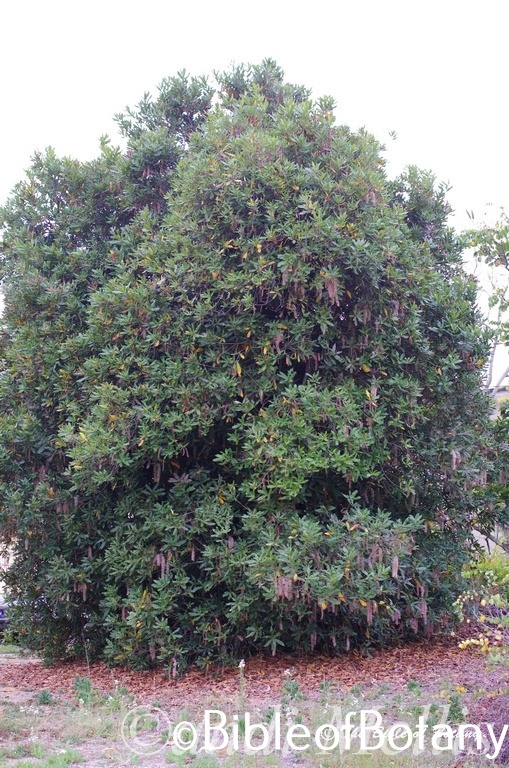
Grange Qld.
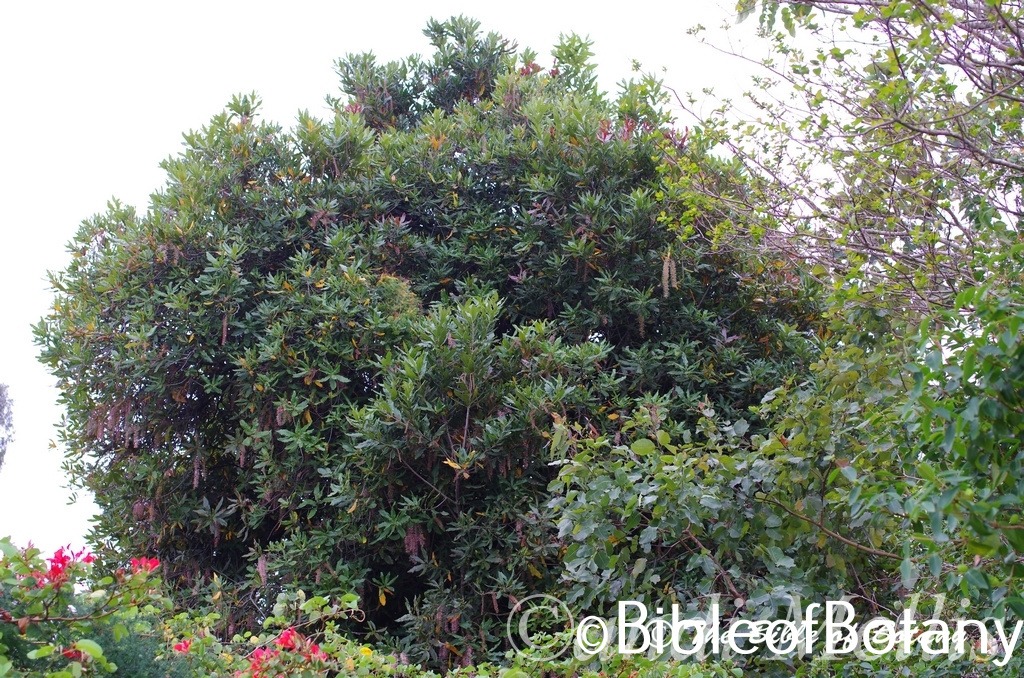
Cooparoo Qld.
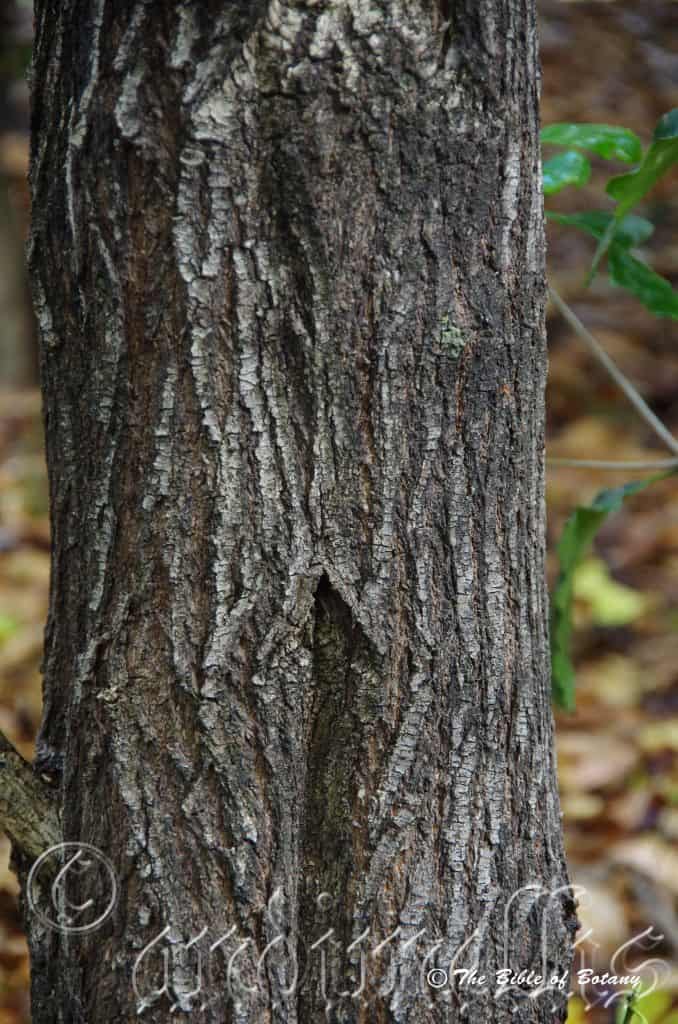
Cooparoo Qld.

Grafton NSW
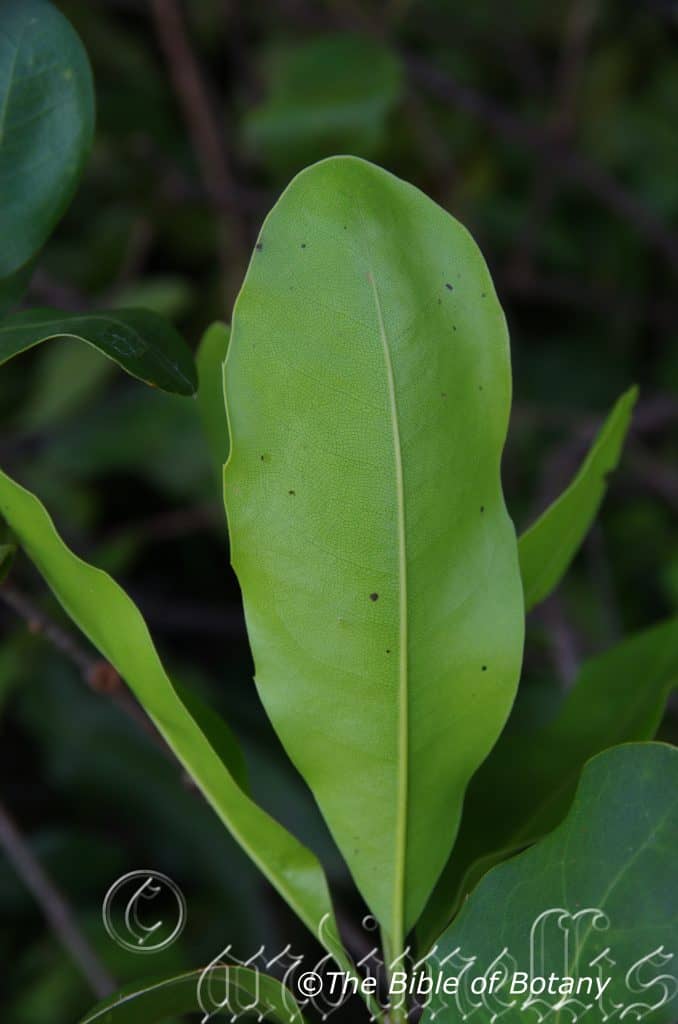
Grafton NSW
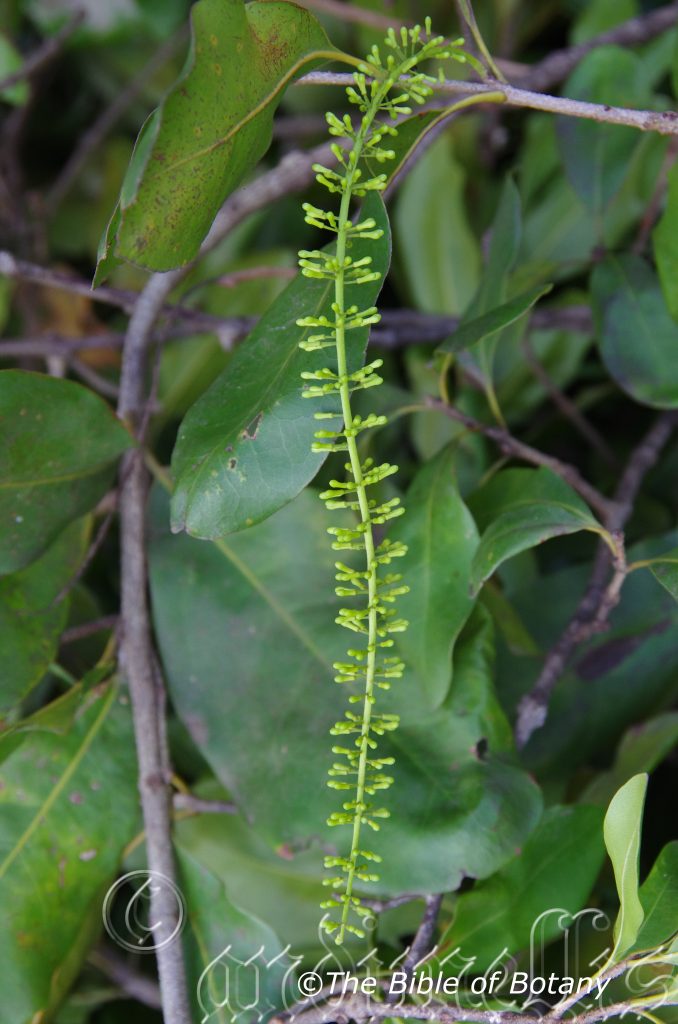
Grafton NSW

Grafton NSW
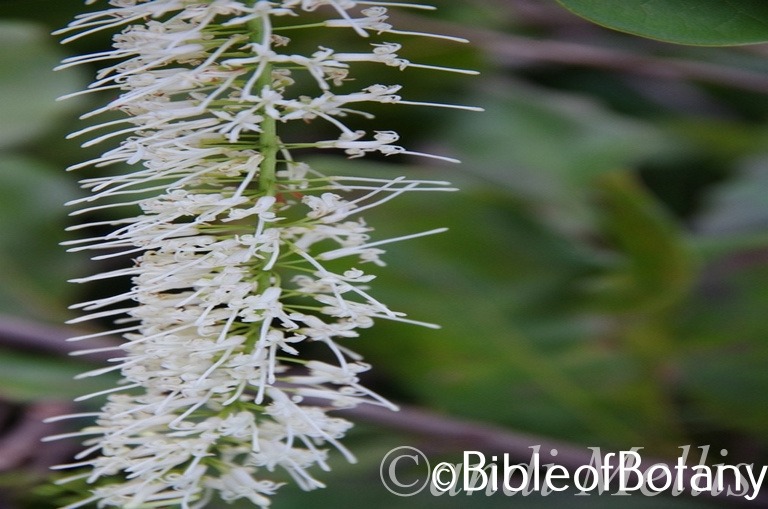
Grafton NSW
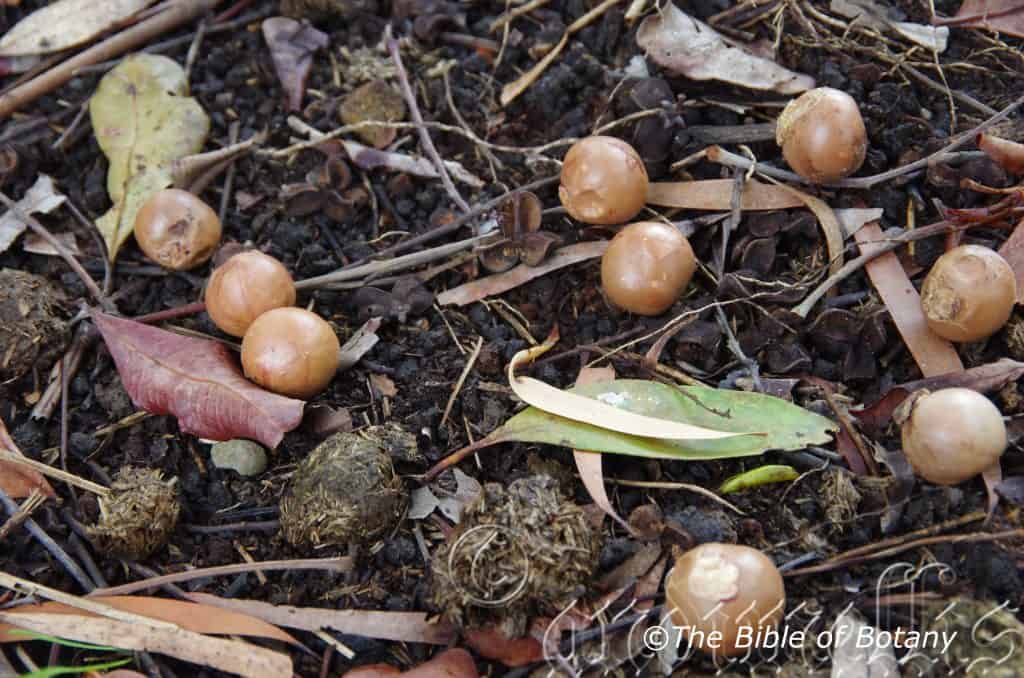
Grafton NSW
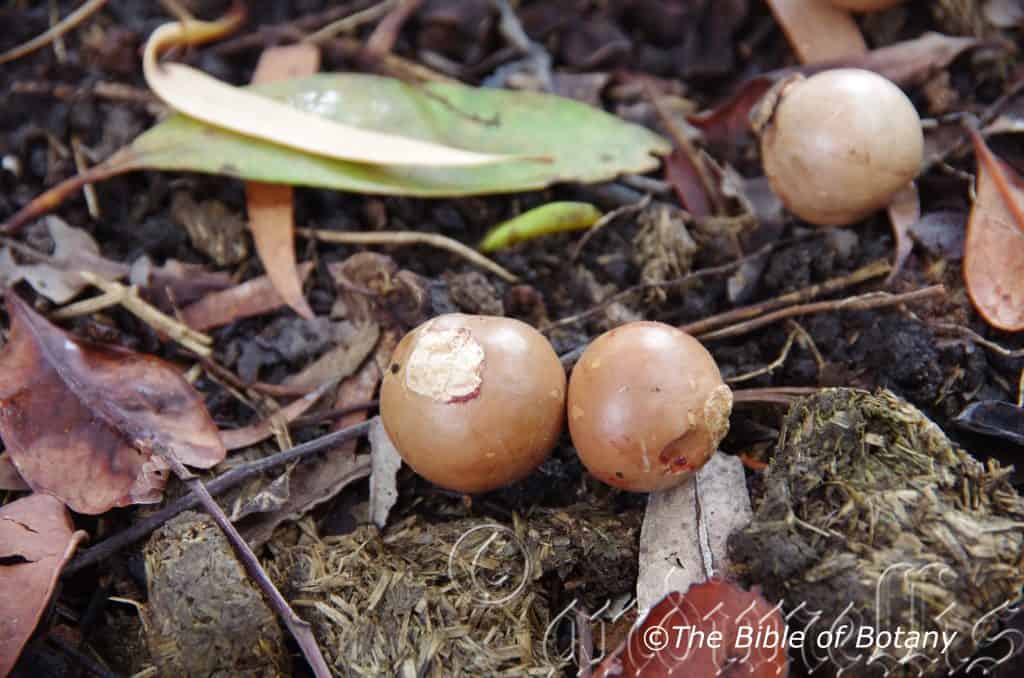
Grafton NSW
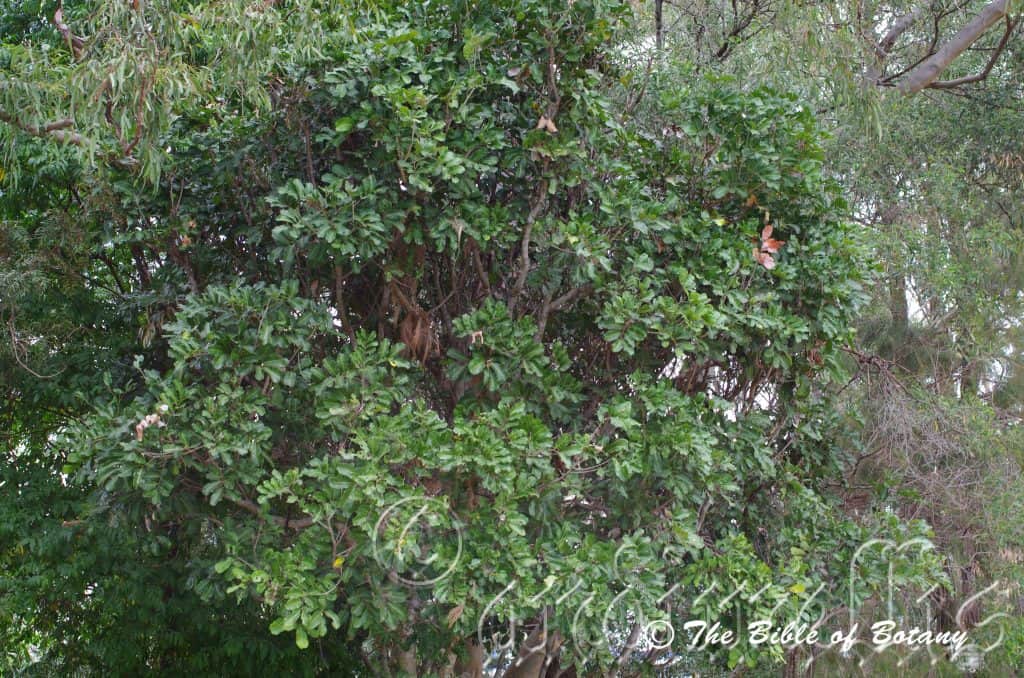
Cooparoo Qld.

Grange Qld.
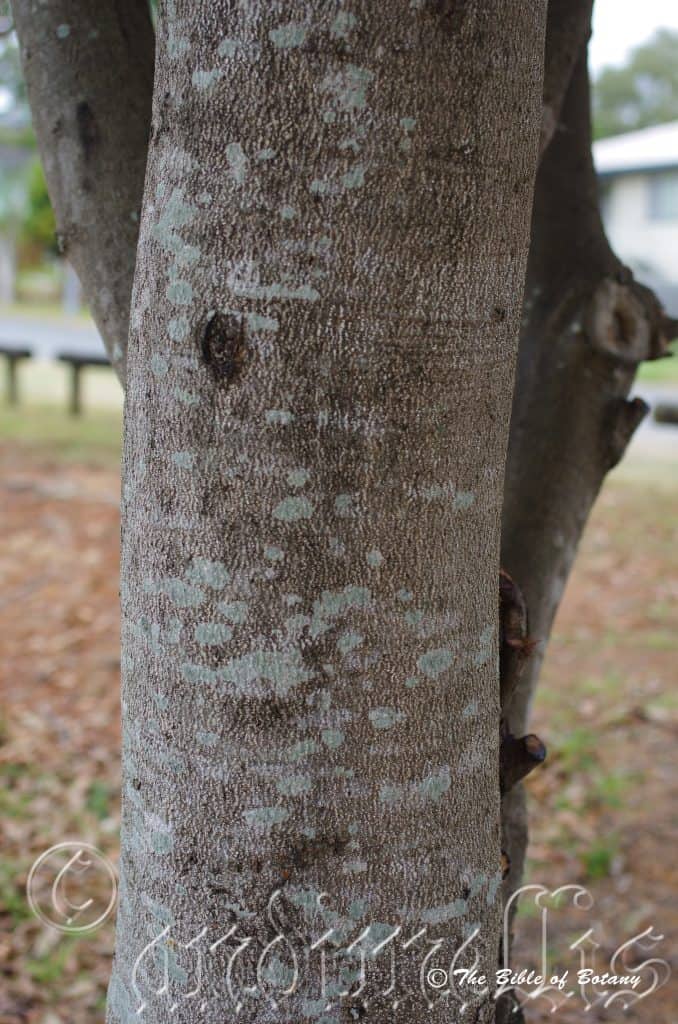
Grange Qld.

Cooparoo Qld.

Norman Park Qld.
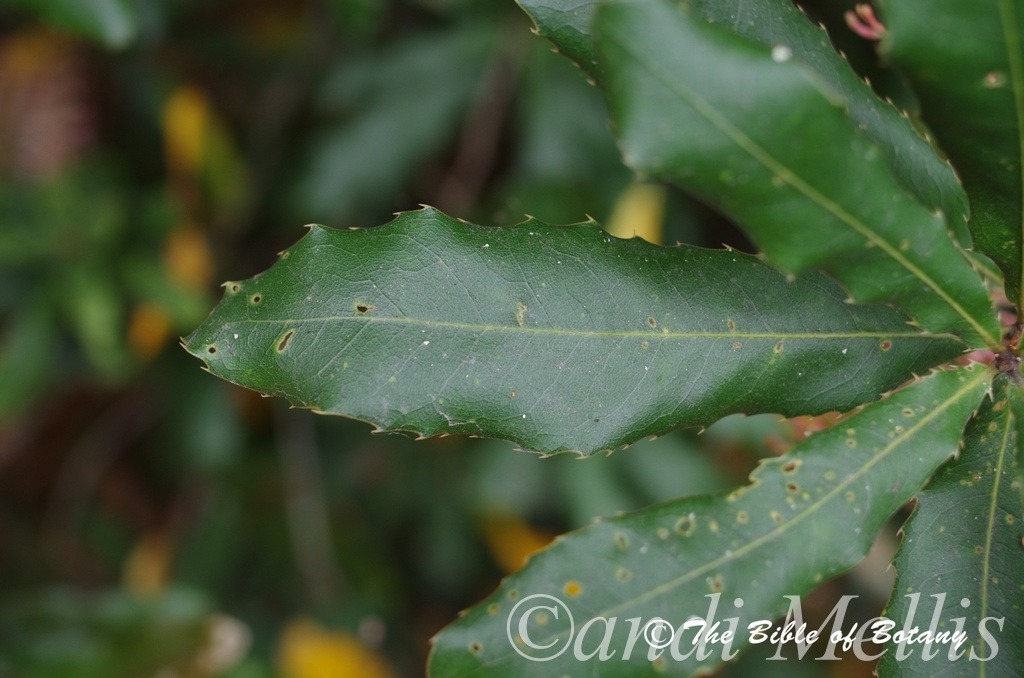
Norman Park Qld.
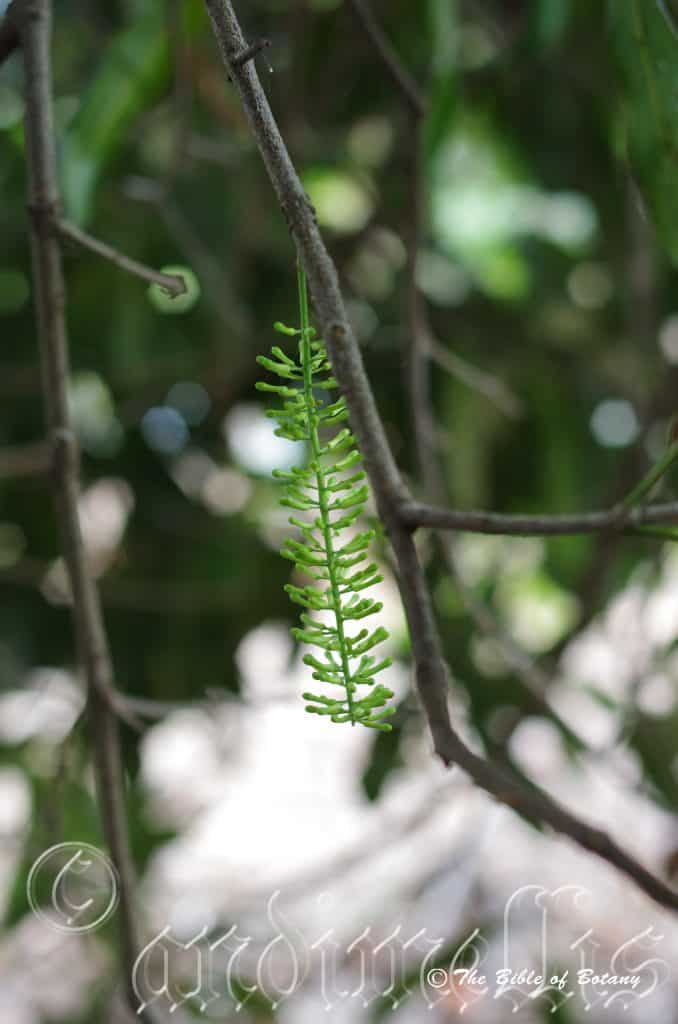
Grange Qld.
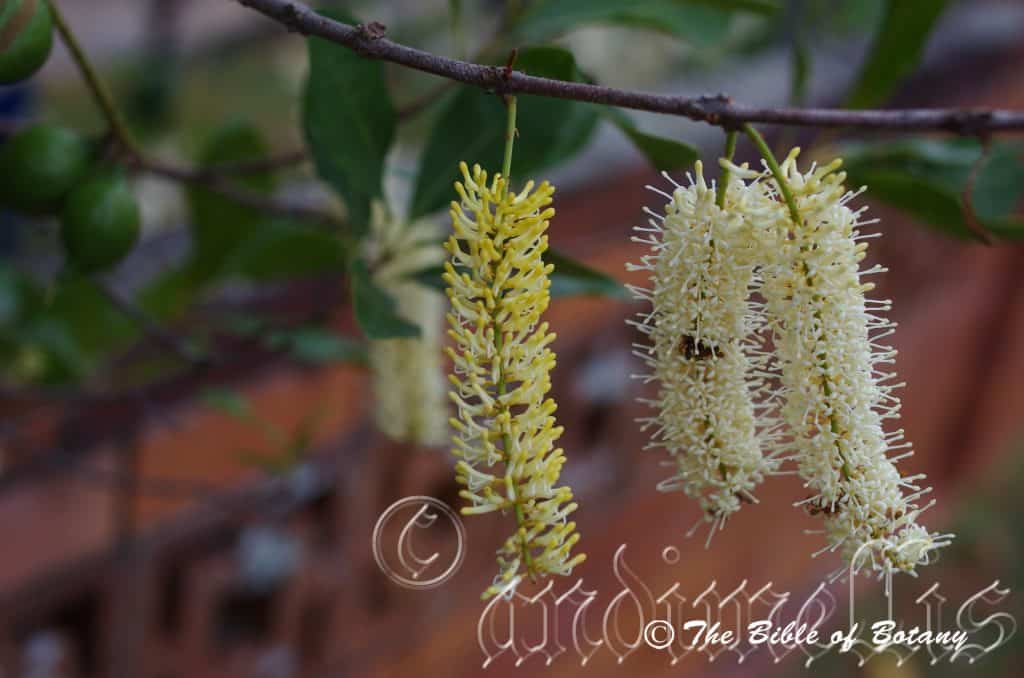
Grange Qld.
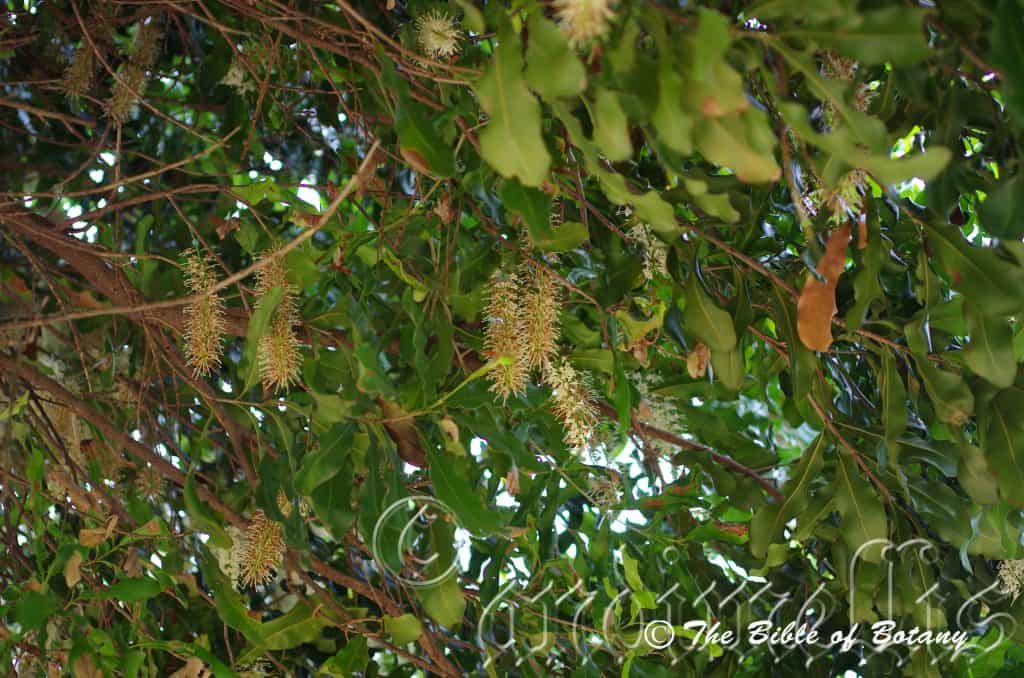
Grange Qld.
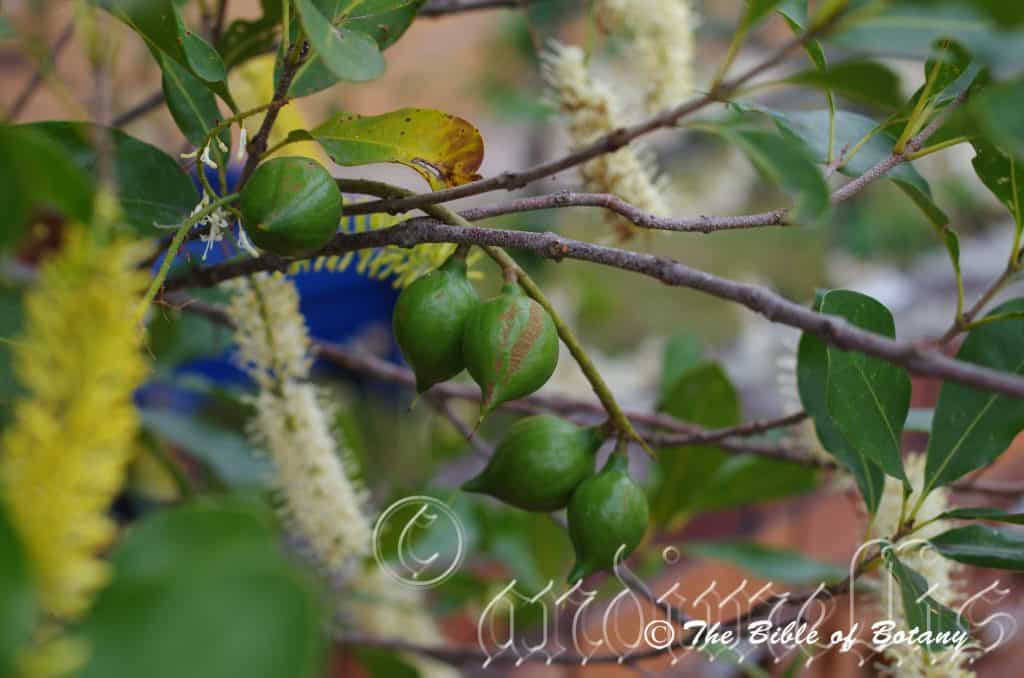
Grange Qld.

Grange Qld.
Macadamia integrifolia
Classification:
Unranked: Tracheophytes
Unranked: Eudicots
Order: Proteales
Family: Protaceae
Genus: Is named in honour of John Macadam; 1800-1882, who was an Australian chemist and lecturer.
Specie: From Integrere, which is Latin for untouched or whole and Folium, which is Latin for foliage. It refers to leaves, which are entire without teeth compared to other species in the genre that all have teeth on the leaf margins.
Sub species:
Common Name: Bush Nut, Macadamia Nut or Queensland Nut.
In the Aboriginal language it is known as Wanduin.
Distribution:
Macadamia integrifolia is restricted to a small area south from Mount Bauple west of Maryborough in Queensland while all of the New South Wales populations maybe planted and not natural. I am staggered and surprised that around 1980 the Redland Shire Council or the owners of our old property were allowed to cut down possibly the last remaining tree in the Brisbane, Redland’s area. This tree at Wellington Point was over 12 meters tall by 8 meters wide with a trunk diameter of around 600 to 650mm in diameter. I have still marked it on the map as a reminder of ignorance or stupidity of people when it comes to rare and endangered plants.
https://avh.ala.org.au/occurrences/search?taxa=Macadamia+integrifolia#tab_mapView
Habitat Aspect Climate:
Macadamia integrifolia prefers light dappled shade to full shade. It grows along creeks alluvial plains in warm dry sub tropical rainforests. The altitude ranges from 200 meters ASL to 600 meters ASL.
The temperatures range from 3 degrees in August to 36 degrees in January.
The rainfalls range from lows of 900mm to an average of 2000mm.
Soil Requirements:
Macadamia integrifolia prefers growing on better quality soils derived from decomposed black basalts. The soils are dark reds or black, light clays to medium clays often with copious quantities of leaf litter. The soils are usually very deep however shallow loams are also acceptable. The soils pH. ranges from 6pH to 7pH. It does not tolerate waterlogged soils. Non saline soils to moderately saline soils are tolerated.
Height & Spread:
Wild Plants: 12m to 18m by 6m to 8m.
Talking to neighbours the tree in photograph 2.1 & 2.2 was well established at its present height in 1950 when the owners next door built their home making the tree over 80 years old.
Characteristics:
Macadamia integrifolia’s grows as a medium tree with a scabrous, grey trunk and branches. The new shoots are pale green or pale green with a pink tinge, glabrous and slightly terete. The trees have a dense canopy.
Macadamia integrifolia’s leaves are in whorls of 3 or rarely 4. On even rarer occasions they may be paired or even alternate. The obovate to narrow elliptical leaves measure 75mm to 150mm in length by 20mm to 40mm in width. The base is cuneata or narrow round while the apex is obtuse. The laminas are discolourous with the upper lamina being deep sea green dull and glabrous while the lower lamina is slightly paler. Immature leaves are pale-lime green to pale lime-green with a pink tinge and glossy. The margins are entire or with small lobes ending in a short prickle. The coriaceous laminas are slightly undulating. The mid vein is strongly prominent on the lower lamina and distinctly visible from the upper lamina and has 8 to 12 prominent lateral veins. The petiole measures 5mm to 10mm in length.
The inflorescence of Macadamia integrifolia is a conflorescence born from the upper leaf axils. They measure 120mm to 200mm in length by 20mm to 28mm in diameter. The perianth and style are the most prominent parts of the flower. The individual perianths are a white, cream or very pale pink from the base through to the lobes which are very irregular. The perianth is glabrous and is covered in white pubescent hairs internally and externally. The perianth and lobes measure 8mm to 11mm in length. The lobes are strongly recurved and are free. The style is white, cream or pale pink at the base turning a paler pink or cream as it approaches the stigma. The stigma is pale cream. The pistil measure 10mm to 12mm long. The lateral style is glabrous and measures 16mm to 17mm in length while the 1.5mm to 2mm ovary is also glabrous. The perianth’s peduncle is 3.5mm to 4mm long. The sweetly scented flowers appear from August to October.
Macadamia integrifolia’s fruit is a large, glabrous round nut. The nuts measure 20mm to 35mm in diameter. The nuts are surrounded by a thick deep green husk which turns grey-brown before splitting when ripe. The single locule nut is pale fawn to pale brown semi glossy and woody. The nut measures 20mm to 30mm in diameter while the creamy seed measures 16mm to 25mm in diameter. The nuts ripen from late June to early August.
Wildlife:
Macadamia integrifolia supports the borers from Cryptophlebia ombrodelta and Amblypelta nitida. They first burrow into the seeds of immature fruit before the shells harden causing the fruit to be hollow or full of sawdust when they finish ripening. The later borer burrows into the soft shells of the nuts as they form and cause premature fruit drop. Ulonemia sp. bugs can be particularly problematic as they suck the nutrients from the new growth and flowers. These bugs appear cyclic every 6 or 7 years and don’t usually cause any significant problems.
Native rats like the eastern bush rat, Rattus fuscipes also relish the nuts and surprisingly can gnaw through the kernels. I have witnessed native rats carry a cache up a tree and drop them with surprisingly good accuracy on rocks below until the inner shell cracks. I have also seen crows take the seeds. How they open them is still a puzzle unless they too take a similar approach to the rats.
Another problem which may be met in the garden is Pseudocercosporus macadamiae. Looks like a big problem and sounds mean but really this little fungus is easily controlled even using organic methods. Remove all the husks and dead wood from the tree and below the tree immediately after the harvest. Mulch the lot using animal manures and return them as mulch. This fungus is more prevalent in very wet seasons and diminishes where the season is drier. If good aeration is maintained the fungus will never be a problem in home gardens.
The trees are covered in many insects including butterflies, native wasps, native bees like Tetragonula carbonaria, and the Blue banded bee Amegilla cingulata, and pollen flies when in flower.
Cultivation:
Macadamia integrifolia is one of the best known bush tuckers from Australia. It makes an excellent medium size tree for a park like scene or specimen tree in the garden. It always look green and fresh especially where adequate ground moisture is retained whether it is grown in light shade or full sun. It is very suitable on sandy clay soils. It is most suitable for small, medium and large gardens close to the coast in temperate, subtropical, tropical or even semi-arid gardens. As garden subjects it will grow from 8m to 10m in height by 6m to 7m in diameter. It is cold tolerant to temperatures at least as low as minus 3 degrees once established. It should be protected from frosts until it reaches at least 2.5 meters in height.
It is best used adjacent to small areas of bush close to paths or the house so their perfumed scented flowers can be appreciated regularly. It can be planted in small groups of 2 or 3 as a standalone plant to create a dense shade for other shade loving plants.
It can be used as shade trees in semi protected areas. Strong winds can cause limbs to break but planting in groups or with other trees can alleviate this problem. It is an excellent tree for starting a dry rainforest garden. When planting the trees in a rainforest try to place it near the edge so the proliferation of flowers can be fully enjoyed and their natural bushy shape is not interfered with.
If mild native fertilizers are used they will develop deep sea green leaves.
In native gardens it can be used for attracting smaller honeyeaters and less aggressive nectar feeding birds. Smaller birds like silver eyes which will seek the protection offered by the dense canopy and use the plants as a regular feed source. Butterflies, native bees, native flies or native beetles will also be attracted during flowering and are necessary for fertilization of the flowers.
It is useful as a backdrop small tree contrasting with smaller finer leaf shrubs that are planted in the foreground. This gives the impression that they like being the center of attention which they deserve.
For mass plantings in an orchard space the trees at 8 meter centers or if you are using them as a park trees plant them using 10 meter spacing. Rainforest trees where the nuts are not important plant them at 6 meter centers.
Compared to other common edible seeds such as Almonds and Cashews, Macadamia species are high in fat and low in protein. It has the highest amount of monounsaturated fats of any known seed and contain approximately 22% of omega 7, palmitoleic acid, which has biological effects similar to saturated fat. It also contain 9mm protein, 9% carbohydrate, and 2% dietary fiber, as well as calcium, phosphorus, potassium, sodium, selenium, iron, thiamine, riboflavin and niacin.
Confusing Species:
Macadamia integrifolia has shorter petiole leaves. Leaf margins usually entire. Fruit shells smooth.
Macadamia tetraphylla has longer sessile leaves. Leaf margins have teeth. Fruit shells crinkled.

Propagation:
Seeds: Macadamia integrifolia seeds can be sown directly into 75mm native tubes using a good quality seed raising mix, after the inner shell has been filed down. Cover the seeds with 5mm to 10mm of fine weed free mulch and keep moist. Place the tubes in a warm sunny position. When the seedlings are 90mm to 120mm tall, repot them into 250mm deep pots using a good organic mix.
Once the seedlings reach 100mm to 150mm in height they can be planted out into their permanent position or potted on so that they can be used as grafting stock later on.
Non grafted trees will take 7 years to 12 years to flower and bear nuts. Seedling trees are fairly uniform in quality and quantity of nuts produced. Grafting of Macadamia integrifolia is best using the Wedge graft or approach graft techniques. Select the form which best suits your locality.
Wedge graft:
The stock plant is cut off at 50mm to 100mm above the collar making sure that there are a few leaves left in tack but not within 20mm of the cut.
The scion is selected so that it is 60mm to 90mm long and the base is the same diameter as the stock.
The stock plant now has a 5mm to 15mm VEE notch cut into it with the knife after the blade has been sterilized. DO NOT TOUCH THE NEW CUT WITH THE FINGERS. Contaminants and oil may affect the bond.
Cut the base of the scion back 5mm to 15mm to the same shape as the notch on the stock so that it fits tight. DO NOT TOUCH THE NEW CUT WITH THE FINGERS. Contaminants and oil may affect the bond.
Insert the scion into notch in the stock.
Wrap the grafting tape around the stock and scion starting from the bottom and moving to the top of the graft and back down again. Tie the tape off. Start about 10mm to 15mm below the graft and finish 10mm to 15mm above the graft.
Apply grafting mastic, plasticine over the tape to ensure water does not enter the site.
The graft if successful will see the scion shoot new growth in 4 to 6 weeks. There is no need to remove the tape if a good quality one is used as it will expand as the union takes and will eventually split
Approach Grafting:
The stock plant is allowed to grow normally in a pot to 300mm to 350mm tall. Trim leaves off at the area where the union will take place.
The scion is also allowed to grow in a pot to 300mm to 350mm tall. Trim leaves off at the area where the union will take place.
Remove the top of the stock plant about 50mm above the area of where the union will take place.
The stock plant now has a 10mm to 15mm slice removed from one side of the stem or trunk with the knife after the blade has been sterilized. DO NOT TOUCH THE NEW CUT WITH THE FINGERS. Contaminants and oil may affect the bond.
The scion plant now has a 10mm to 15mm slice removed from one side of the stem or trunk with the knife after the blade has been sterilized. Make sure the cuts align before you cut the scion. DO NOT TOUCH THE NEW CUT WITH THE FINGERS. Contaminants and oil may affect the bond.
5.Bring the scion and stock together so that they touch and can be taped together tightly. If this is done outdoors make sure the two sections are stable and won’t get blown about and kill the union.
Wrap the grafting tape around the stock and scion starting from the bottom and moving to the top of the graft and back down again. Tie the tape off. Start about 10mm to 15mm below the graft and finish 10mm to 15mm above the graft.
Apply grafting mastic, plasticine over the tape to ensure water does not enter the site.
The graft if successful will see the scion shoot new growth in 4 to 6 weeks. There is no need to remove the tape if a good quality one is used as it will expand as the union takes and will eventually split.
Make a cut below the graft on the scion so that it is no longer reliant upon its own roots. Make this cut as close as possible to the union using a sterile sharp pair of secateurs. Seal the wound with grafting wax. Be careful not to damage the union.
Remove by trimming the stock plant back as close as possible to the union with a sterilized pair of sharp secateurs. Seal the wound with grafting wax. Be careful not to damage the union.
Fertilize using seaweed, fish emulsion or organic chicken pellets soaked in water on an alternate basis. Fertilize every two months until the plants are established then annually in early September to October to maintain health, vitality and better flowering.
Further Comments from Readers:
Hi reader, it seems you use The Bible of Botany a lot. That’s great as we have great pleasure in bringing it to you! It’s a little awkward for us to ask, but our first aim is to purchase land approximately 1,600 hectares to link several parcels of N.P. into one at The Pinnacles NSW Australia, but we need your help. We’re not salespeople. We’re amateur botanists who have dedicated over 30 years to saving the environment in a practical way. We depend on donations to reach our goal. If you donate just $5, the price of your coffee this Sunday, We can help to keep the planet alive in a real way and continue to bring you regular updates and features on Australian plants all in one Botanical Bible. Any support is greatly appreciated. Thank you.
In the spirit of reconciliation we acknowledge the Bundjalung, Gumbaynggirr and Yaegl and all aboriginal nations throughout Australia and their connections to land, sea and community. We pay our respect to their Elders past, present and future for the pleasures we have gained.

Mount Cootha Botanic Gardens Qld.
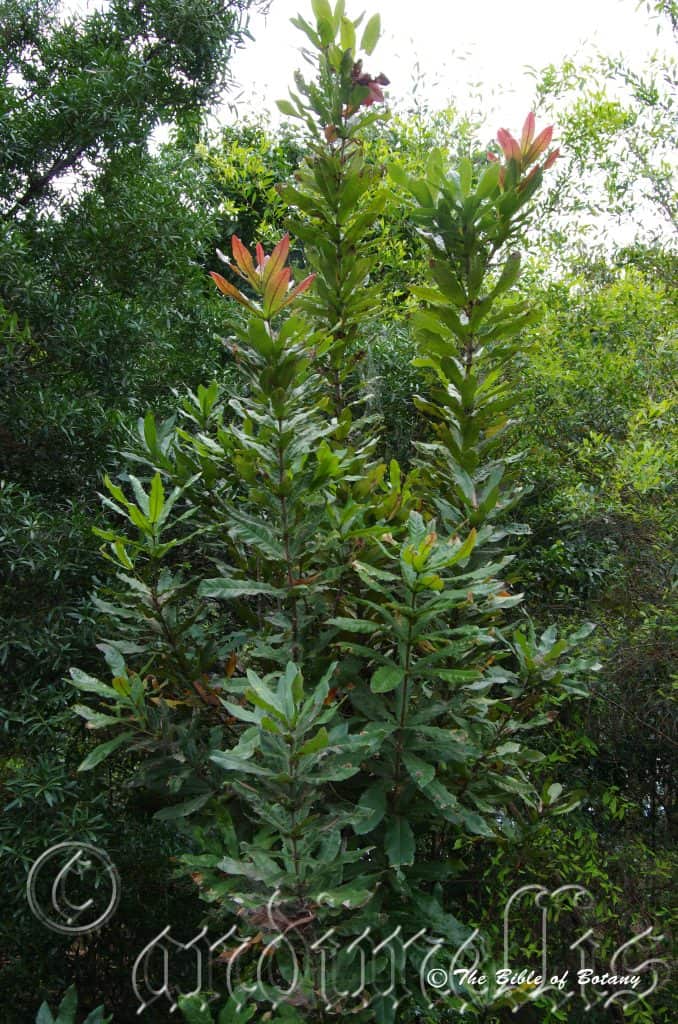
Mount Cootha Botanic Gardens Qld.

Mount Cootha Botanic Gardens Qld.

Mount Cootha Botanic Gardens Qld.

Mount Cootha Botanic Gardens Qld.
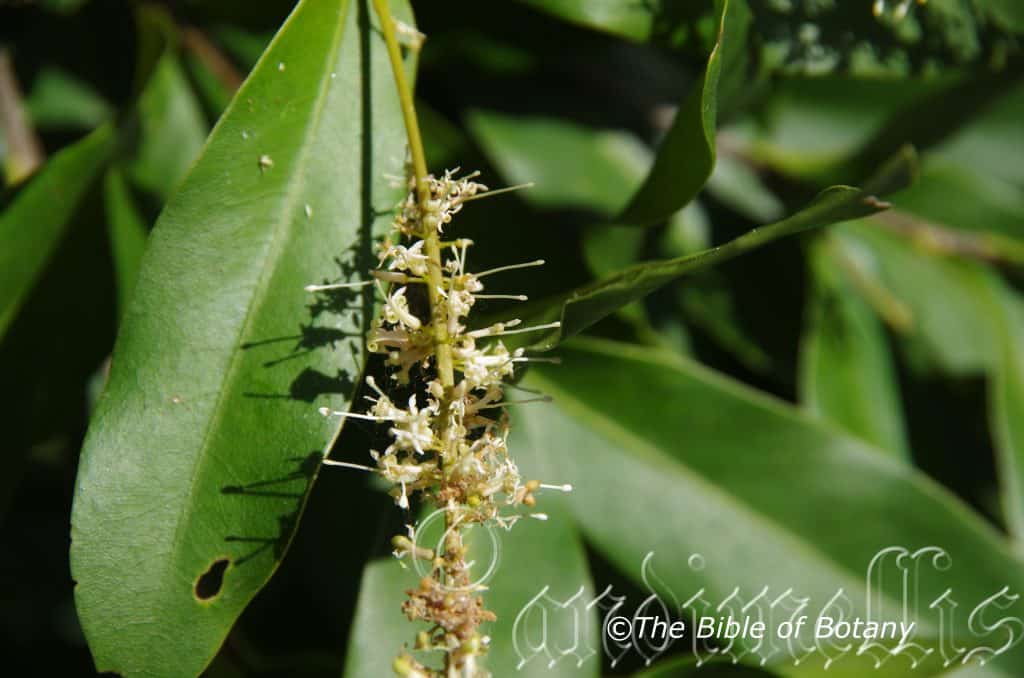
Mount Cootha Botanic Gardens Qld.
Macadamia jansenii
Classification:
Unranked: Eudicots
Order: Proteales
Family: Protaceae
Genus: Is named in honour of John Macadam; 1800-1882, who was an Australian chemist and lecturer.
Specie: Is named in honour of R. C. Jansen, who is the Australian who collected the type specimen.
Sub species:
Common Name: Poison Queensland Nut.
Distribution:
Macadamia jansenii is restricted to 2 small disjunct populations. The northern population is found south west of Cairns, while the southern population is found between Gladstone and Bundaberg in central coastal Queensland.
https://avh.ala.org.au/occurrences/search?taxa=Macadamia+jansenii#tab_mapView
Habitat Aspect Climate:
Macadamia jansenii prefers light dappled shade to full shade. It grows along creeks alluvial plains in warm moist sub tropical dry rainforests. The altitude ranges from 200 meters ASL to 250 meters ASL.
The temperatures range from 5 degrees in August to 36 degrees in January.
The rainfalls range from lows of 750mm to an average of 1000mm.
Soil Requirements:
Macadamia jansenii prefers better quality soils derived from decomposed basalts. The soils are dark reds or black, light sandy clays to medium clays often with copious quantities of leaf litter. The soils are deep and moisture retentive. The soils are usually very deep however shallow loams are also acceptable. The soils pH. ranges from 5pH to 5.5pH. It does not tolerate waterlogged soils. Non saline soils to moderately saline soils are tolerated.
Height & Spread:
Wild Plants: 6m to 9m by 6m to 8m.
Characteristics:
Notes taken from notes taken from a single plants growing at Mount Cootha Botanic Gardens and
https://apps.des.qld.gov.au/species-search/details/?id=8185
Macadamia jansenii grows as a single or multitrunked tree with a smooth bark, which is moderately covered in prominent lenticels. The terete, glabrous branchlets are deep brown and sparsely covered in white lenticels. The alternate, elliptical seedling leaves are opposite for at least seven nodes or occasionally one or two at the base of the lateral shoots. The margins on the juvenile leaves are usually entire or at times have 1 to 10 teeth.
The oblanceolate leaves, measure 100mm to 175mm in length by 25mm to 50mm in width. The terete petiole measures 2mm to 14mm in length. The base is attenuate to cuneate, while the apex is acute to attenuate with a short mucronate tip. The discolourous leaves are deep green, glabrous and sub semi glossy on the upper lamina, while the lower laminas are paler, glabrous and semi glossy. The margins are entire and somewhat undulating. The midrib is prominent on the lower lamia while the main lateral veins are set at approximately 60 degrees and curve well away from the margins.
The inflorescences are a simple conflorescence. The terete rachis measures 100mm to 175mm in length while the terete petiolules measure 1.5mm to 2mm in length. The oblong bracts measure 6mm to 8mm in length. The cream to fawn tepals measure 7mm to 9mm in length. The cream to fawn filaments measure 6mm to 6.5mm in length, while the narrow spathulate basifixed anthers at anthesis measure 1mm to 1.8mm in length. The 1.8mm ovary supports the erect style that measures 10mm to 11mm in length. The flowers appear from late August to October.
The fruit is tardily dehiscent and measures 15mm to 25mm in length by 20mm to 24mm in width, while the pericarp is 2mm thick. The globose to broadly ovoid seeds measure 14mm to 18mm in length by 11mm to 16mm in diameter, while the testa is 0.8mm to 1.5mm thick. Fruit ripens from March to April. (Gross and Weston, 1992).
Specie differences:
Macadamia jansenii has leaf margins that are entire and its flowers are cream to fawn.
Macadamia ternifolia has leaf margins with teeth and its flowers are white, pale pink or white and pink.
Macadamia integrifolia leaf margins are spinose and its flowers are pink to lilac.
Wildlife:
Macadamia jansenii is almost certainly the same as the other Macadamia species. Then it would support the borers from Cryptophlebia ombrodelta and Amblypelta nitida. The first burrows into the seeds of immature fruit before they harden causing the fruit to be hollow or full of sawdust when they finish ripening. The later borer burrows into the soft shells of the nuts as they form and cause premature fruit drop. Ulonemia bugs can be particularly problematic as they suck the nutrients from the new growth and flowers. These bugs appear cyclic every 6 or 7 years and don’t usually cause any significant problems. Native rats also relish the nuts and surprisingly can gnaw through the kernels. I have witnessed native rats carry a cache up a tree and drop them with surprisingly good accuracy on rocks below until the inner shell cracks. I have also seen crows take the seeds. How they open them is still a puzzle unless they too take a similar approach to the rats. Another problem which may be met in the garden is Pseudocercosporus macadamiae. Looks like a big problem and sounds mean but really this little fungus is easily controlled even using organic methods. Remove all the husks and dead wood from on the tree and below the tree immediately after the harvest. Mulch the lot using animal manures and return them as mulch. This fungus is more prevalent in very wet seasons and diminishes where the season is drier and good ventilation is maintained. The trees are covered in many insects including butterflies, native wasps, bees and flies when in flower.
Cultivation:
Macadamia jansenii makes an excellent medium size tree for a park like scene or specimen tree in the garden. It always looks green and fresh especially where adequate ground moisture is retained whether it is grown in light shade or full sun. It is very suitable on light sandy clays to medium clays. It is most suitable for small, medium and large gardens close to the coast in temperate, sub tropical, tropical or even semi-arid gardens. As a garden subject it will grow from 6m to 8m in height by 6m to 7m in diameter when grown in the open. It should be protected from all frosts until it reaches at least 2.5 meters in height.
It is best used adjacent to small areas of bush close to paths or the house so their perfumed scented flowers can be appreciated regularly. It can be planted in small groups of 2 or 3 as a standalone plant to create a dense shade for other shade loving plants.
It can be used as shade trees in semi protected areas. If native fertilizers are used they will develop deep sea green leaves.
In Native gardens it can be used for attracting smaller honeyeaters and less aggressive insect feeding birds. Smaller birds like silver eyes which will seek the protection offered by the dense canopy and use the plants as a regular feed source. Butterflies, native bees, native flies and native beetles will also be attracted during flowering and are necessary for fertilization of the flowers.
If it is useful as a backdrop small tree it will contrast well with smaller finer leaf shrubs that are planted in the foreground. This gives the impression that it likes being the center of attention which it deserves.
For mass plantings place the trees at 5 meter centers for a rainforest or if you are using them as a park trees plant them using 12 meter spacing.
The nuts should not be eaten as they are toxic.
Propagation:
Seeds: Macadamia jansenii seeds can be sown directly into a seed raising mix after the inner shell has been filed down. Cover the seeds with 5mm to 10mm of fine weed free mulch and keep moist. Place the tray in a warm sunny position. When the seedlings are 50mm to 70mm tall, prick them out and plant them into 50mm native tubes using a good organic mix.
Alternatively place the seeds directly into 50mm native tubes.
Once the seedlings reach 100mm to 150mm in height they can be planted out into their permanent position or potted on so that they can be used as grafting stock later on.
Grafting of Macadamia jansenii is best using the Wedge graft or approach graft techniques. Select the form which best suits your locality.
Fertilize using seaweed, fish emulsion or organic chicken pellets soaked in water on an alternate basis. Fertilize every two months until the plants are established then annually in early September to October to maintain health, vitality and better flowering.
Further Comments from Readers:
Hi reader, it seems you use The Bible of Botany a lot. That’s great as we have great pleasure in bringing it to you! It’s a little awkward for us to ask, but our first aim is to purchase land approximately 1,600 hectares to link several parcels of N.P. into one at The Pinnacles NSW Australia, but we need your help. We’re not salespeople. We’re amateur botanists who have dedicated over 30 years to saving the environment in a practical way. We depend on donations to reach our goal. If you donate just $5, the price of your coffee this Sunday, We can help to keep the planet alive in a real way and continue to bring you regular updates and features on Australian plants all in one Botanical Bible. Any support is greatly appreciated. Thank you.
In the spirit of reconciliation we acknowledge the Bundjalung, Gumbaynggirr and Yaegl and all aboriginal nations throughout Australia and their connections to land, sea and community. We pay our respect to their Elders past, present and future for the pleasures we have gained.
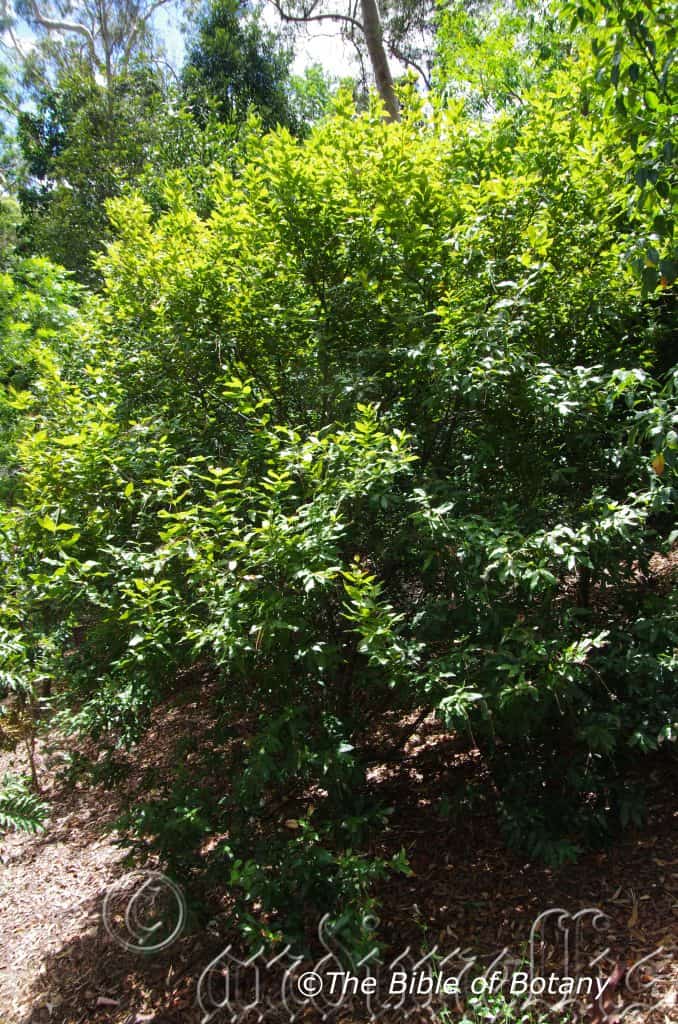
Mount Cootha Botanic Gardens Qld.
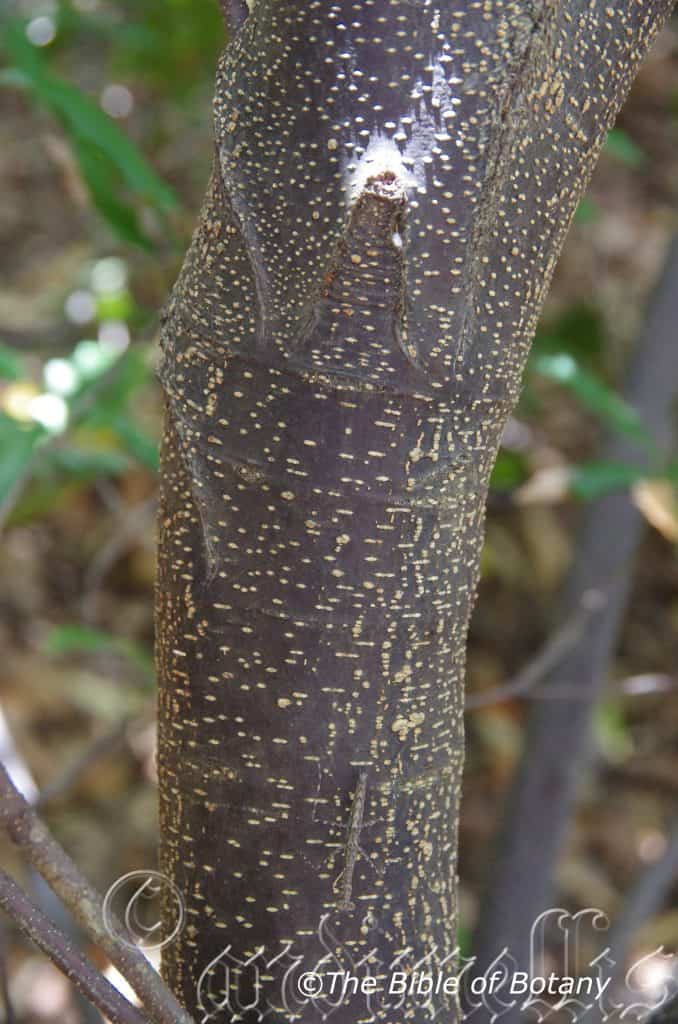
Mount Cootha Botanic Gardens Qld.

Mount Cootha Botanic Gardens Qld.
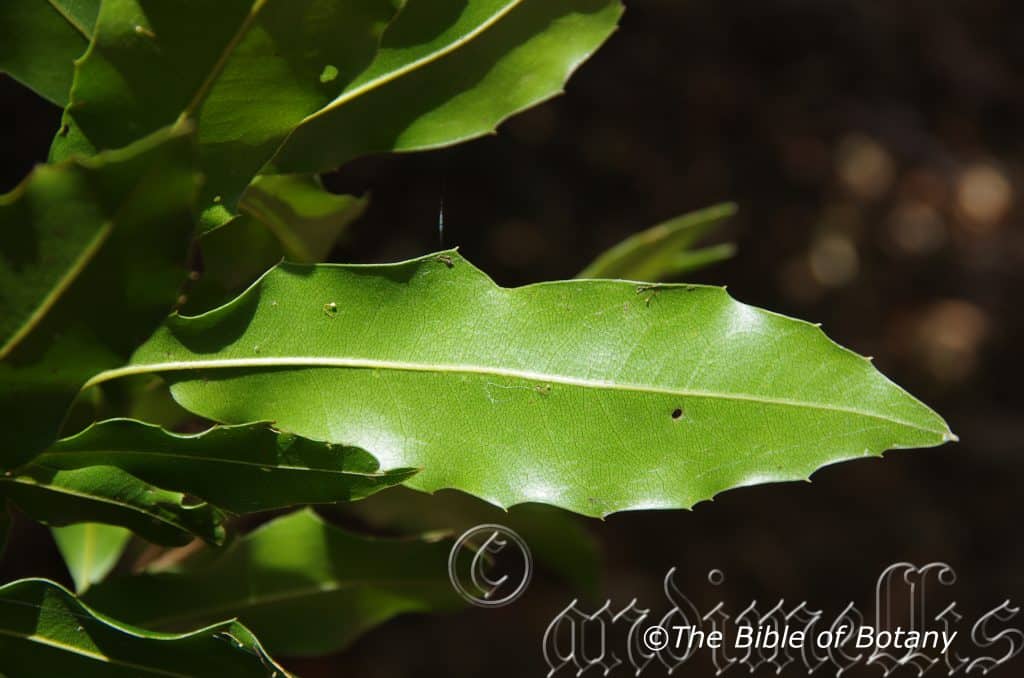
Mount Cootha Botanic Gardens Qld.
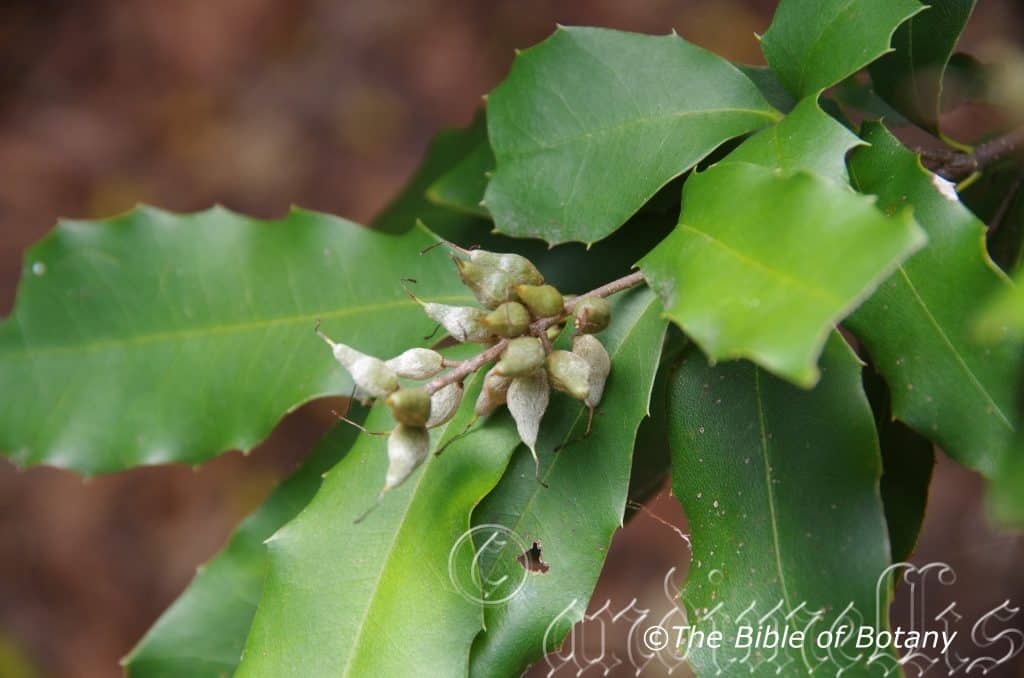
Mount Cootha Botanic Gardens Qld.
Macadamia ternifolia
Classification:
Unranked: Tracheophytes
Unranked: Eudicots
Order: Proteales
Family: Protaceae
Genus: Is named in honour of John Macadam; 1800-1882, who was an Australian chemist and lecturer.
Specie: From Intéramna, which is Ancient Greek for between and Folium, which is Latin for foliage. It refers to leaves, which have characteristics between two species of the same genus.
Sub species:
Common Name: Small Fruited Macadamia Nut or Small Fruited Queensland Nut.
Distribution:
Macadamia ternifolia is restricted to a small area south from Wide bay to Guanaba Creek in south eastern Queensland
https://avh.ala.org.au/occurrences/search?taxa=Macadamia+ternifolia#tab_mapView
Habitat Aspect Climate:
Macadamia ternifolia prefers light dappled shade to full shade. It grows in sub tropical lowland rainforests. The altitude ranges from 30 meters ASL to 550 meters ASL.
The temperatures range from 3 degrees in August to 36 degrees in January.
The rainfalls range from lows of 900mm to an average of 1600mm.
Soil Requirements:
Macadamia ternifolia prefers growing on better quality soils derived from decomposed black basalts. The soils are dark reds or black, light clays to medium clays often with copious quantities of leaf litter. The soils are usually deep however shallow loams are also acceptable. The soils pH. ranges from 6pH to 7.5pH. It does not tolerate waterlogged soils. Non saline soils to moderately saline soils are tolerated.
Height & Spread:
Wild Plants: 6m to 10m by 3m to 4m.
Characteristics:
Macadamia ternifolia’s grows as a multi- stemmed small tree with a deep grey-brown trunk and branches with white to cream lenticels. The new shoots are pale green or pale green with a pink tinge, glabrous and slightly terete. The trees have a dense canopy.
The glabrous, pink, juvenile leaves are longer than adult leaves. The leaves are in whorls of 3 or rarely 4. The obovate to elliptic or narrowly elliptical leaves measure 90mm to 125mm in length by 20mm to 35mm in width. The petiole measures 3mm to 13mm in length. The base is wedge-shaped to attenuate, while the apex tapers gradually to a sharp point. The discolourous laminas are deep green semi glossy and glabrous on the upper lamina, while the lower lamina is slightly paler. The margins are coarsely and irregularly serrated. The coriaceous laminas are undulating. The mid vein is level or slightly sunken on the upper lamina and strongly prominent on the lower lamina. The lateral veins are slightly raised on both laminas, while the reticulated veins are faintly visible on the upper lamina and clearly visible on the lower lamina.
The pendulous inflorescences are spikes born from the upper leaf axils and measure 140mm to 200mm in length. The perianth and style are the most prominent parts of the flower. The individual perianths are pink from the base through to the lobes. The tepals measure 6mm to 9mm in length, while the exerted filaments measure 4mm to 7mm in length and are joined to tepals. The oblong, cream anthers measure 1mm to 2mm in length. The ovary measures 0.5mm to 1mm in length, while the style measures 5mm to 10mm in length. The sweetly scented flowers appear from August to October.
The fruit is a small, glabrous round nut. The nuts measure 15mm to 22mm in length by 15mm to 22mm in diameter. The nuts are surrounded by a thick deep green husk which turns grey-brown before splitting when ripe. The single locule nut is glabrous, fawn to pale brown semi glossy and woody. The nuts ripen from late June to early August.
Wildlife:
Macadamia ternifolia supports the borers from Cryptophlebia ombrodelta and Amblypelta nitida. They first burrow into the seeds of immature fruit before the shells harden causing the fruit to be hollow or full of sawdust when they finish ripening. Ulonemia sp. bugs can be particularly problematic as they suck the nutrients from the new growth and flowers. These bugs appear cyclic every 6 or 7 years usually in seasons with good rainfall and don’t usually cause any significant problems.
Native rats like the eastern bush rat, Rattus fuscipes also relish the nuts and surprisingly can gnaw through the kernels. I have witnessed native rats carry a cache up a tree and drop them with surprisingly good accuracy on rocks below until the inner shell cracks. I have also seen crows take the seeds. How they open them is still a puzzle unless they too take a similar approach to the rats.
Another problem which may be met in the garden is Pseudocercosporus macadamiae. Looks like a big problem and sounds mean but really this little fungus is easily controlled even using organic methods. Remove all the husks and dead wood from the tree and below the tree immediately after the harvest. Mulch the lot using animal manures and return them as mulch. This fungus is more prevalent in very wet seasons and diminishes in drier seasons. If good aeration is maintained the fungus will never be a problem in home gardens.
The trees are covered in many insects including butterflies, native wasps, native bees Tetragonula carbonaria and the Blue banded bee Amegilla cingulata and pollen flies when in flower.
Cultivation:
Macadamia ternifolia makes an excellent medium size tree for a park like scene or specimen tree in the garden. It always looks green and fresh especially where adequate ground moisture is retained whether it is grown in light shade or full sun. It is very suitable on sandy clay soils. It is most suitable for small, medium and large gardens close to the coast in temperate, sub tropical, tropical or even semi-arid gardens. As garden subjects it will grow from 6m to 8m in height by 4m to 5m in diameter. It is cold tolerant to temperatures at least as low as minus 2 degrees once established. It should be protected until it reaches at least 2.5 meters in height.
It is best used adjacent to small areas of bush close to paths or the house so their perfumed scented flowers can be appreciated regularly. It particularly attractive where planted in small groups of 2 or 3 plants to create a dense shade for other shade loving plants.
It can be used as shade tree in semi protected areas against strong winds. It is an excellent tree for starting a dry rainforest in smaller gardens. When planting the trees in a rainforest try to place them near the edge so the proliferation of flowers can be fully enjoyed and their natural bushy shape is not interfered with.
If mild native fertilizers are used it will develop deep sea green leaves.
For mass plantings in an orchard space the trees in 6 meter rows and at 5 meter centers.
Compared to other common edible seeds such as Almonds and Cashews, Macadamia species are high in fat and low in protein. It has the highest amount of monounsaturated fats of any known seed and contain approximately 22% of omega 7, palmitoleic acid, which has biological effects similar to saturated fat. It also contain 9mm protein, 9% carbohydrate, and 2% dietary fiber, as well as calcium, phosphorus, potassium, sodium, selenium, iron, thiamine, riboflavin and niacin.
Propagation:
Seeds: Macadamia ternifolia seeds can be sown directly into 75mm native tubes using a good quality seed raising mix, after the inner shell has been filed down. Cover the seeds with 5mm to 10mm of fine weed free mulch and keep moist. Place the tubes in a warm sunny position. When the seedlings are 90mm to 120mm tall, repot them into 250mm deep pots using a good organic mix.
Once the seedlings reach 100mm to 150mm in height they can be planted out into their permanent position or potted on so that they can be used as grafting stock later on.
Non grafted trees will take 7 years to 12 years to flower and bear nuts. Seedling trees are fairly uniform in quality and quantity of nuts produced. Grafting of Macadamia ternifolia is best using the Wedge graft or approach graft techniques. Select the form which best suits your locality.
Wedge graft:
The stock plant is cut off at 50mm to 100mm above the collar making sure that there are a few leaves left in tack but not within 20mm of the cut.
The scion is selected so that it is 60mm to 90mm long and the base is the same diameter as the stock.
The stock plant now has a 5mm to 15mm VEE notch cut into it with the knife after the blade has been sterilized. DO NOT TOUCH THE NEW CUT WITH THE FINGERS. Contaminants and oil may affect the bond.
Cut the base of the scion back 5mm to 15mm to the same shape as the notch on the stock so that it fits tight. DO NOT TOUCH THE NEW CUT WITH THE FINGERS. Contaminants and oil may affect the bond.
Insert the scion into notch in the stock.
Wrap the grafting tape around the stock and scion starting from the bottom and moving to the top of the graft and back down again. Tie the tape off. Start about 10mm to 15mm below the graft and finish 10mm to 15mm above the graft.
Apply grafting mastic, plasticine over the tape to ensure water does not enter the site.
The graft if successful will see the scion shoot new growth in 4 to 6 weeks. There is no need to remove the tape if a good quality one is used as it will expand as the union takes and will eventually split
Approach Grafting:
The stock plant is allowed to grow normally in a pot to 300mm to 350mm tall. Trim leaves off at the area where the union will take place.
The scion is also allowed to grow in a pot to 300mm to 350mm tall. Trim leaves off at the area where the union will take place.
Remove the top of the stock plant about 50mm above the area of where the union will take place.
The stock plant now has a 10mm to 15mm slice removed from one side of the stem or trunk with the knife after the blade has been sterilized. DO NOT TOUCH THE NEW CUT WITH THE FINGERS. Contaminants and oil may affect the bond.
The scion plant now has a 10mm to 15mm slice removed from one side of the stem or trunk with the knife after the blade has been sterilized. Make sure the cuts align before you cut the scion. DO NOT TOUCH THE NEW CUT WITH THE FINGERS. Contaminants and oil may affect the bond.
5. Bring the scion and stock together so that they touch and can be taped together tightly. If this is done outdoors make sure the two sections are stable and won’t get blown about and kill the union.
Wrap the grafting tape around the stock and scion starting from the bottom and moving to the top of the graft and back down again. Tie the tape off. Start about 10mm to 15mm below the graft and finish 10mm to 15mm above the graft.
Apply grafting mastic, plasticine over the tape to ensure water does not enter the site.
The graft if successful will see the scion shoot new growth in 4 to 6 weeks. There is no need to remove the tape if a good quality one is used as it will expand as the union takes and will eventually split.
Make a cut below the graft on the scion so that it is no longer reliant upon its own roots. Make this cut as close as possible to the union using a sterile sharp pair of secateurs. Seal the wound with grafting wax. Be careful not to damage the union.
Remove by trimming the stock plant back as close as possible to the union with a sterilized pair of sharp secateurs. Seal the wound with grafting wax. Be careful not to damage the union.
Fertilize using seaweed, fish emulsion or organic chicken pellets soaked in water on an alternate basis. Fertilize every two months until the plants are established then annually in early September to October to maintain health, vitality and better flowering.
Further Comments from Readers:
Hi reader, it seems you use The Bible of Botany a lot. That’s great as we have great pleasure in bringing it to you! It’s a little awkward for us to ask, but our first aim is to purchase land approximately 1,600 hectares to link several parcels of N.P. into one at The Pinnacles NSW Australia, but we need your help. We’re not salespeople. We’re amateur botanists who have dedicated over 30 years to saving the environment in a practical way. We depend on donations to reach our goal. If you donate just $5, the price of your coffee this Sunday, We can help to keep the planet alive in a real way and continue to bring you regular updates and features on Australian plants all in one Botanical Bible. Any support is greatly appreciated. Thank you.
In the spirit of reconciliation we acknowledge the Bundjalung, Gumbaynggirr and Yaegl and all aboriginal nations throughout Australia and their connections to land, sea and community. We pay our respect to their Elders past, present and future for the pleasures we have gained.

Grafton NSW
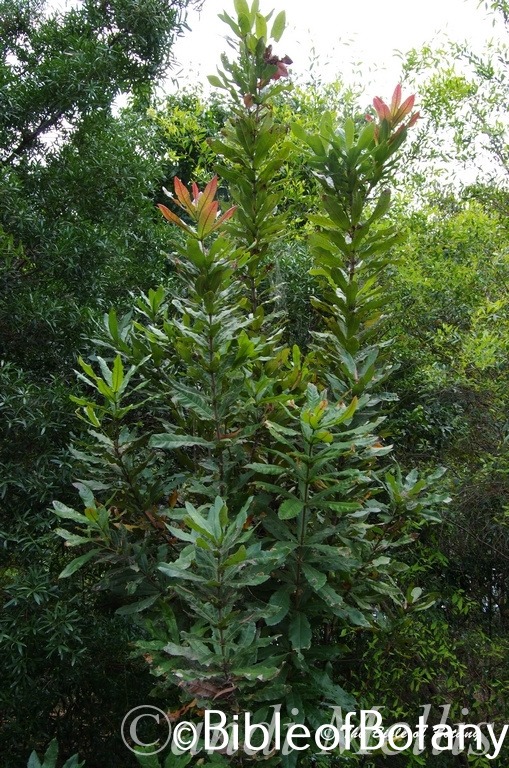
Mount Cootha Botanical Gardens Qld.

Mount Cootha Botanical Gardens Qld.
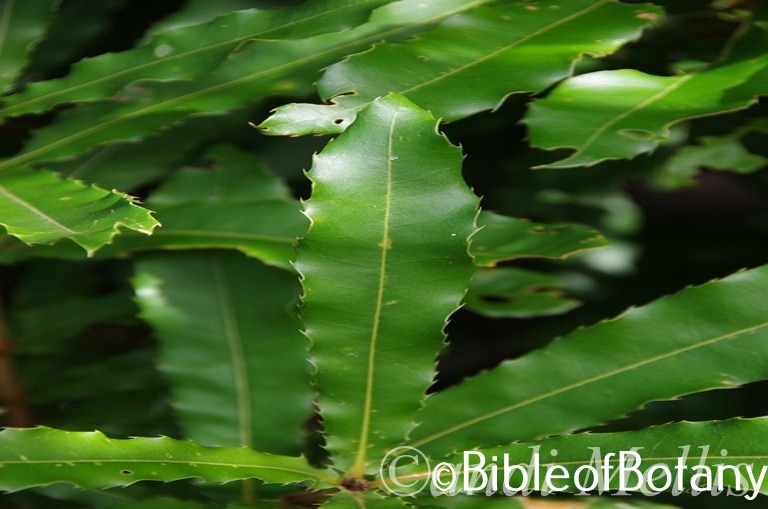
Mount Cootha Botanical Gardens Qld.
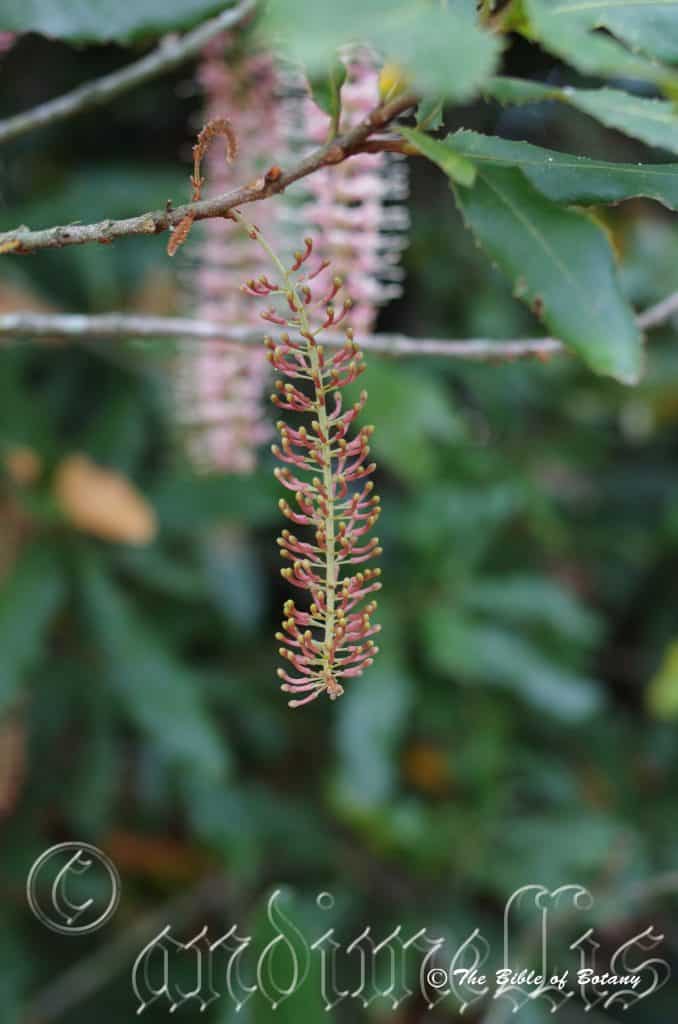
Cooparoo Qld.
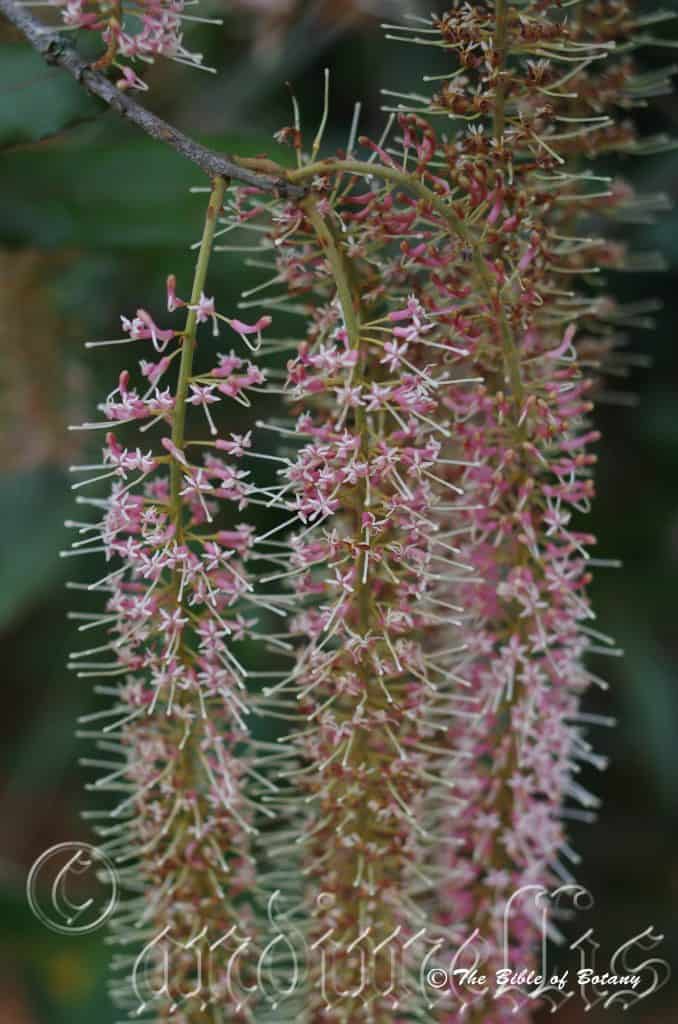
Norman Park Qld.
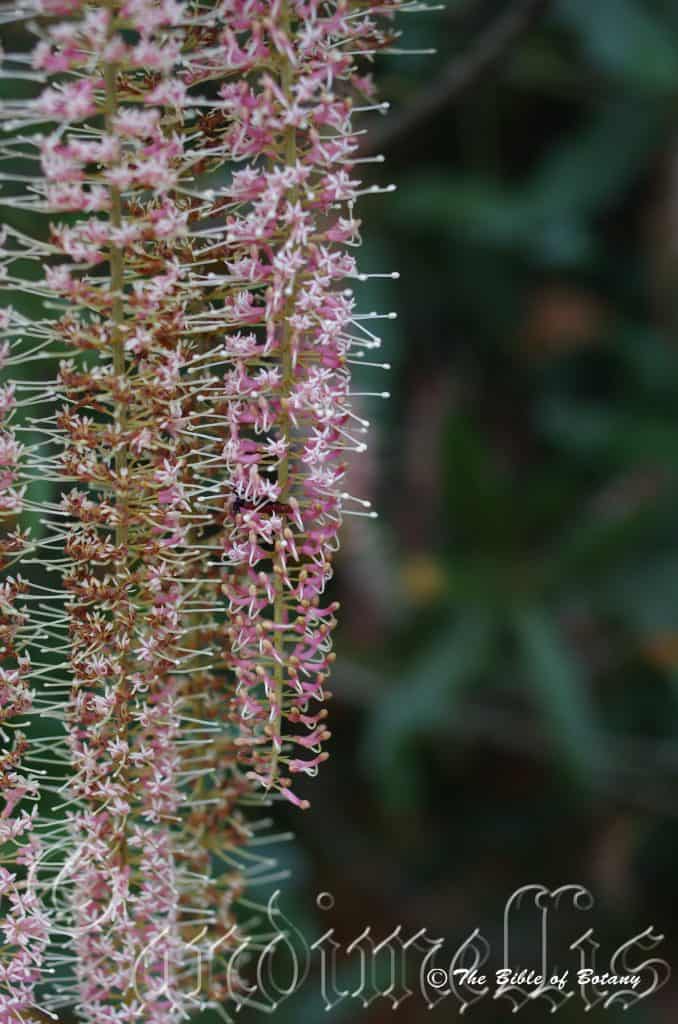
Norman Park Qld.
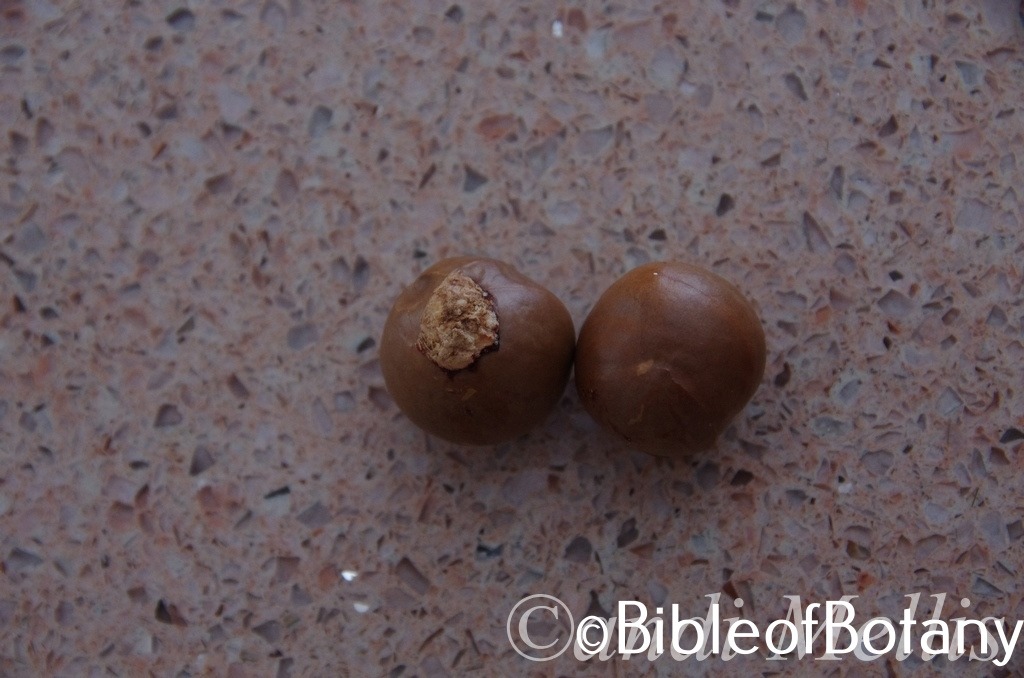
Grafton NSW

Cooparoo Qld.
Macadamia tetraphylla
Classification:
Unranked: Eudicots
Order: Proteales
Family: Protaceae
Genus: Is named in honour of John Macadam; 1800-1882, who was an Australian chemist and lecturer.
Specie: From Tetra, which is Ancient Greek for four and Phullon/Phýllon, which are Ancient Greek for a leaf. It refers to leaves, which have a rhomoidic shape.
Sub species:
Common Name: Rough Shelled Nut or Queensland Nut.
In the Aboriginal language it is known as Wanduin.
Distribution:
Macadamia tetraphylla is restricted to a small area west of Coolangatta in the Macpherson ranges, and possible the Brisbane Valley in southern Queensland, south to the Clarence River in northern New South Wales.
https://avh.ala.org.au/occurrences/search?taxa=Macadamia+tetraphylla#tab_mapView
Habitat Aspect Climate:
Macadamia tetraphylla prefers light dappled shade to full shade. It grows along creeks alluvial plains in warm moist sub tropical dry rainforests. The altitude ranges from 100 meters ASL to 450 meters ASL.
The temperatures range from 3 degrees in August to 36 degrees in January.
The rainfalls range from lows of 800mm to an average of 2000mm.
Soil Requirements:
Macadamia tetraphylla prefers better quality soils derived from decomposed basalts. The soils are dark reds or black, light sandy clays to medium clays often with copious quantities of leaf litter. The soils are deep and moisture retentive. The soils are usually very deep however shallow loams are also acceptable. The soils pH. ranges from 5.5pH to 6.5pH. It does not tolerate waterlogged soils. Non saline soils to moderately saline soils are tolerated.
Height & Spread:
Wild Plants: 10m to 15m by 6m to 8m.
Characteristics:
Macadamia tetraphylla’s scabrous trunk is grey as are branches and main stems. The new shoots are deep rusty-brown, glabrous and slightly terete. The trees have a dense canopy.
Macadamia tetraphylla’s leaves are in whorls of 4 or rarely 3 or 5.The obovate to narrow elliptical to oblanceolate leaves measure 180mm to 250mm in length by 20mm to 50mm in width. The base is narrow round and slightly oblique while the apex is acuminate. The discolourous laminas are deep sea-green dull and glabrous on the upper lamina while the lower lamina is slightly paler. Immature leaves are deep rusty-brown and glossy. The margins have a row of regular prickly to pungent teeth. The coriaceous laminas are flat to undulating. The mid vein is strongly prominent below and distinctly visible from above and has 13 to 20 prominent lateral veins. The petiole measures 0.2mm to 3mm in length.
The inflorescence of Macadamia tetraphylla is an auxiliary conflorescence or ramiflorusly born from the upper leaf axils. They measure 120mm to 250mm in length by 25mm to 30mm in diameter. The perianth and style are the most prominent parts of the flower. The individual perianths are a creamy pale pink to mauve from the base through to the lobes which are very irregular. The perianth is densely covered in white pulverulent hairs internally and externally. The perianth and lobes measure 8mm to 11mm in length by 2.5 to 3.5mm in diameter. The lobes are strongly recurved and are free. The style is white, cream or pale pink at the base turning a paler pink or cream as it approaches the stigma. The stigma is pale cream. The style and ovary measure 16mm to 18mm in length. The lateral style is glabrous while the 1.5mm to 2mm ovary is also glabrous. The flowers are sweetly scented. The perianth’s peduncle measures 6mm to 8mm in long. The flowers appear from August to October.
Macadamia tetraphylla’s fruit is a large globose nut. The nuts measure 20mm to 35mm in diameter. The nuts are surrounded by a thick deep green husk which turns grey-brown before splitting when ripe. The single locule nut is pale fawn, resinous, semi glossy and woody. The nut measures 15mm to 30mm in diameter while the creamy seed measures 12mm to 25mm in diameter. The nuts ripen from late June to early August.
Macadamia integrifolia has shorter petiole leaves. Fruit shells smooth.
Macadamia tetraphylla has longer sessile leaves. Fruit shells crinkled.

Wildlife:
Macadamia tetraphylla supports the borers from Cryptophlebia ombrodelta and Amblypelta nitida. The first burrows into the seeds of immature fruit before they harden causing the fruit to be hollow or full of sawdust when they finish ripening. The later borer burrows into the soft shells of the nuts as they form and cause premature fruit drop. Ulonemia bugs can be particularly problematic as they suck the nutrients from the new growth and flowers. These bugs appear cyclic every 6 or 7 years and don’t usually cause any significant problems. Native rats also relish the nuts and surprisingly can gnaw through the kernels. I have witnessed native rats carry a cache up a tree and drop them with surprisingly good accuracy on rocks below until the inner shell cracks. I have also seen crows take the seeds. How they open them is still a puzzle unless they too take a similar approach to the rats. Another problem which may be met in the garden is Pseudocercosporus macadamiae. Looks like a big problem and sounds mean but really this little fungus is easily controlled even using organic methods. Remove all the husks and dead wood from on the tree and below the tree immediately after the harvest. Mulch the lot using animal manures and return them as mulch. This fungus is more prevalent in very wet seasons and diminishes where the season is drier and good ventilation is maintained. The trees are covered in many insects including butterflies, native wasps, bees and flies when in flower.
Cultivation:
Macadamia tetraphylla is one of the best known bush tuckers from Australia. It often forms the root stock when grafting Macadamia integrifolia as the scion. It makes an excellent medium size tree for a park like scene or specimen tree in the garden. It always look green and fresh especially where adequate ground moisture is retained whether it is grown in light shade or full sun. It is very suitable on light sandy clays to medium clays. It is most suitable for small, medium and large gardens close to the coast in temperate, subtropical, tropical or even semi-arid gardens. As garden subjects they will grow from 8m to 10m in height by 6m to 7m in diameter when grown in the open. It is cold tolerant to temperatures at least as low as minus 2 degrees once established. They should be protected until they reach at least 2.5 meters in height.
It is best used adjacent to small areas of bush close to paths or the house so their perfumed scented flowers can be appreciated regularly. It can be planted in small groups of 2 or 3 as a standalone plant to create a dense shade for other shade loving plants.
It can be used as shade trees in semi protected areas. Strong winds can cause limbs to break but planting in groups or with other trees can alleviate this problem. It is an excellent tree for starting a dry rainforest garden. When planting the trees in a rainforest try to place it near the edge so the proliferation of flowers can be fully enjoyed and their natural bushy shape is not interfered with.
If native fertilizers are used they will develop deep sea green leaves.
In Native gardens it can be used for attracting smaller honeyeaters and less aggressive nectar feeding birds. Smaller birds like silver eyes which will seek the protection offered by the dense canopy and use the plants as a regular feed source. Butterflies, native bees, native flies and native beetles will also be attracted during flowering and are necessary for fertilization of the flowers.
It is useful as a backdrop small tree contrasting well with smaller finer leaf shrubs that are planted in the foreground. This gives the impression that they like being the center of attention which they deserve.
For mass plantings in an orchard space the trees at 8 meter centers or if you are using them as a park trees plant them using 10 meter spacing. Rainforest trees where the nuts are not important plant can be planted at 6 meter centers.
Compared to other common edible seeds such as Almonds and Cashews, Macadamias are high in fat and low in protein. They have the highest amount of monounsaturated fats of any known seed and contain approximately 22% of omega 7, palmitoleic acid, which has biological effects similar to saturated fat. It also contains 9% protein, 9% carbohydrate, and 2mm dietary fiber, as well as calcium, phosphorus, potassium, sodium, selenium, iron, thiamine, riboflavin and niacin.
Propagation:
Seeds: Macadamia tetraphylla seeds can be sown directly into a seed raising mix after the inner shell has been filed down. Cover the seeds with 5mm to 10mm of fine weed free mulch and keep moist. Place the tray in a warm sunny position. When the seedlings are 50mm to 70mm tall, prick them out and plant them into 50mm native tubes using a good organic mix.
Alternatively place the seeds directly into 50mm native tubes.
Once the seedlings reach 100mm to 150mm in height they can be planted out into their permanent position or potted on so that they can be used as grafting stock later on.
Grafting of Macadamia tetraphylla are best using the Wedge graft or approach graft techniques. Select the form which best suits your locality.
Wedge graft:
The stock plant is cut off at 50mm to 100mm above the collar making sure that there are a few leaves left in tack but not within 20mm of the cut.
The scion is selected so that it is 60mm to 90mm long and the base is the same diameter as the stock.
The stock plant now has a 5mm to 15mm VEE notch cut into it with the knife after the blade has been sterilized. DO NOT TOUCH THE NEW CUT WITH THE FINGERS. Contaminants and oil may affect the bond.
Cut the base of the scion back 5mm to 15mm to the same shape as the notch on the stock so that it fits tight. DO NOT TOUCH THE NEW CUT WITH THE FINGERS. Contaminants and oil may affect the bond.
Insert the scion into notch in the stock.
Wrap the grafting tape around the stock and scion starting from the bottom and moving to the top of the graft and back down again. Tie the tape off. Start about 10mm to 15mm below the graft and finish 10mm to 15mm above the graft.
Apply grafting mastic, plasticine over the tape to ensure water does not enter the site.
The graft if successful will see the scion shoot new growth in 4 to 6 weeks. There is no need to remove the tape if a good quality one is used as it will expand as the union takes and will eventually split
Approach Grafting:
The stock plant is allowed to grow normally in a pot to 300mm to 350mm tall. Trim leaves off at the area where the union will take place.
The scion is also allowed to grow in a pot to 300mm to 350mm tall. Trim leaves off at the area where the union will take place.
Remove the top of the stock plant about 50mm above the area of where the union will take place.
The stock plant now has a 10mm to 15mm slice removed from one side of the stem or trunk with the knife after the blade has been sterilized. DO NOT TOUCH THE NEW CUT WITH THE FINGERS. Contaminants and oil may affect the bond.
The scion plant now has a 10mm to 15mm slice removed from one side of the stem or trunk with the knife after the blade has been sterilized. Make sure the cuts align before you cut the scion. DO NOT TOUCH THE NEW CUT WITH THE FINGERS. Contaminants and oil may affect the bond.
5.Bring the scion and stock together so that they touch and can be taped together tightly. If this is done outdoors make sure the two sections are stable and won’t get blown about and kill the union.
Wrap the grafting tape around the stock and scion starting from the bottom and moving to the top of the graft and back down again. Tie the tape off. Start about 10mm to 15mm below the graft and finish 10mm to 15mm above the graft.
Apply grafting mastic, plasticine over the tape to ensure water does not enter the site.
The graft if successful will see the scion shoot new growth in 4 to 6 weeks. There is no need to remove the tape if a good quality one is used as it will expand as the union takes and will eventually split.
Make a cut below the graft on the scion so that it is no longer reliant upon its own roots. Make this cut as close as possible to the union using a sterile sharp pair of secateurs. Seal the wound with grafting wax. Be careful not to damage the union.
Remove by trimming the stock plant back as close as possible to the union with a sterilized pair of sharp secateurs. Seal the wound with grafting wax. Be careful not to damage the union.
Fertilize using seaweed, fish emulsion or organic chicken pellets soaked in water on an alternate basis. Fertilize every two months until the plants are established then annually in early September to October to maintain health, vitality and better flowering.
Further Comments from Readers:
Hi reader, it seems you use The Bible of Botany a lot. That’s great as we have great pleasure in bringing it to you! It’s a little awkward for us to ask, but our first aim is to purchase land approximately 1,600 hectares to link several parcels of N.P. into one at The Pinnacles NSW Australia, but we need your help. We’re not salespeople. We’re amateur botanists who have dedicated over 30 years to saving the environment in a practical way. We depend on donations to reach our goal. If you donate just $5, the price of your coffee this Sunday, We can help to keep the planet alive in a real way and continue to bring you regular updates and features on Australian plants all in one Botanical Bible. Any support is greatly appreciated. Thank you.
In the spirit of reconciliation we acknowledge the Bundjalung, Gumbaynggirr and Yaegl and all aboriginal nations throughout Australia and their connections to land, sea and community. We pay our respect to their Elders past, present and future for the pleasures we have gained.
Macaranga involucrata
Macaranga involucrata
Unranked: Eudicots
Unranked: Rosids
Order: Malpigphiales
Family: Euphorbiaceae
Subfamily: Acalyphouideae
Tribe: Acalypheae
Genus: From Macaranga, which is Latinized from the Pilippino vernacular for the trees found in the Philippines.
Specie: From Involūcrum, which is Latin for a wrapper or to wrap around. It refers to the ring of bracts at the base of the florets of a compound umbel.
Sub species: From Mallós, which is Ancient Greek for a lock of wool. I’m not too sure but maybe it refers to the hairs which surround the new growth, flowers and fruits being more dense when compared to the other subspecies. It is the only sub specie found in Australia.
Common Name: Nasturtum Tree.
Distribution:
Macaranga involucrata is widespread specie found east from Darwin along the coastal strip to near Marchinbar Island in the Northern Territory.
On the east coast it is found south from Cape York Peninsula and the Torres Strait Islands to Rockhampton. It is found east of the Great Dividing Range.
https://avh.ala.org.au/occurrences/search?taxa=Macaranga+involucrata#tab_mapView
Habitat Aspect Climate:
Macaranga involucrata prefer light dappled shade to full shade. They grow equally well in full sun. It grows along creeks alluvial plains in warm moist well developed sub tropical and tropical rainforests and littoral rainforests. It is quick to recolonize disturbed land or breaks in the rainforest canopy. The altitude ranges from 5 meters ASL to 700 meters ASL.
The temperatures range from 5 degrees in August to 38 degrees in January.
The rainfalls range from lows of 800mm to an average of 4000mm.
Soil Requirements:
Macaranga involucrata prefers better quality light sandy loams to medium clays often with copious quantities of leaf litter. The soils are usually derived from decomposed basalts. The soils pH ranges from 5.5pH to 7pH. It does not tolerate waterlogged soils however periodic flooding is often experienced for short periods. Non saline to very saline soils are tolerated.
Height & Spread:
Wild Plants: 5m to 6m by 5m to 6m.
Characteristics:
Macaranga involucrate’s grows as a small wide spreading tree with a glabrous, grey-brown trunk. The branches are glaucous blue-green and retain the scars of the old leaves as are the small branchlets. The new shoots are lime-green and covered in pale grey hirtellous hairs. The trees have a dense canopy.
Macaranga involucrate’s alternate, deltoid to cordate leaves are closely spaced along the branchlets apexes. They measure 60mm to 140mm in length by 60mm to 95mm in width. The base is broadly rounded to slightly peltate while the apex is obtuse with an abruptly acuminate to caudate tip. The discolourous laminas are deep grass-green to blue green semi glossy and glabrous or sparsely covered in fawn hirtellous hairs more densely on the main and lateral veins on the upper lamina. The lower lamina is paler, dull, blue-green, and glabrous and has very small yellow glands at the intersections with the lateral veins and smaller veins. There are 6 to 12 lateral veins. It is prominent below and distinctly visible from above being a paler green. The margins are finely serrate. The glaucous blue petioles measure 40mm to 50mm in length. Immature leaves are lime-green and glossy.
The inflorescence of Macaranga involucrata is a loose panicle born from the upper leaf axils. They measure 15mm to 20mm in length by 20mm to 25mm in diameter. The bracts are the most prominent parts of the flower. The individual deltoid bracts are a creamy green to pale yellow-green and measure 12mm to 14mm in length by 12mm to 14mm in diameter. The bracts are toothed or sinuate. The bracts are covered in pale yellow trichome hairs. The tepals are densely covered in pale yellow hairs and yellow glands. The single locule ovary is covered in white trichome hairs or bristles. The flowers appear from September to early November.
Macaranga involucrate’s fruits are small ovate capsules. The capsules measure 5.5mm to 6.5mm in diameter. The capsules are sparsely covered in pale brown bristles and yellowish glands. The glossy black seeds measure 4mm to 5mm in diameter.
Wildlife:
Macaranga involucrata supports a number of butterfly specie including Endoclita malaricus. Many northern trees have a symbiotic relationship with the acrobatic ants, Crematogaster. These ants live in the hollow stems of the plants and in return protect the plant form caterpillars, and other insects which may come in contact with the trees.
Cultivation:
Macaranga involucrata is not as well known as Macaranga tanarius. It makes an excellent medium size tree for a park like scene or specimen tree in the garden. It always look green and fresh especially where adequate ground moisture is retained whether it is grown in light shade or full sun. It is very suitable on sandy clay soils and for small, medium or large gardens close to the coast in warm subtropical or tropical gardens. As garden subjects it is fast growing and will grow from 6 meters to 8 meters in height by 6 meters to 8 meters in diameter when grown in the open. It is cold tolerant to temperatures at least as low as 1 degrees once established. They should be protected from frosts.
It can be used as shade trees in semi protected areas. Strong winds will cause limbs to break so should be avoided in exposed windy situations. It is best planted in small groups or with other trees so this aspect can be alleviated. It is an excellent tree for starting a rainforest garden. When planting the trees in a rainforest scatter them throughout the area so that they can help protect other more tender plants.
If mild native fertilizers are used they will develop deep sea green leaves.
It is useful as a backdrop small tree contrasting with smaller finer leaf shrubs that are planted in the foreground. This gives the impression that they like being the center of attention which they deserve.
For mass plantings space the trees at 8 meter centers or if you are using them as a park trees plant them using 10 meter centers.
Propagation:
Seeds: Macaranga involucrate’s fresh seeds can be sown directly into a seed raising mix. Cover the seeds with 5mm to 10mm of fine weed free mulch and keep moist. Place the tray in a warm sunny position.
When the seedlings are 40mm to 60mm tall, prick them out and plant them into 50mm native tubes using a good organic mix or plant them out into their permanent positions.
Once the seedlings reach 150mm to 200mm in height they can be planted out into their permanent position.
Fertilize using seaweed, fish emulsion or organic chicken pellets soaked in water on an alternate basis. Fertilize every two months until the plants are established then annually in early September to October to maintain health, vitality and better flowering.
Further Comments from Readers:
Hi reader, it seems you use The Bible of Botany a lot. That’s great as we have great pleasure in bringing it to you! It’s a little awkward for us to ask, but our first aim is to purchase land approximately 1,600 hectares to link several parcels of N.P. into one at The Pinnacles NSW Australia, but we need your help. We’re not salespeople. We’re amateur botanists who have dedicated over 30 years to saving the environment in a practical way. We depend on donations to reach our goal. If you donate just $5, the price of your coffee this Sunday, We can help to keep the planet alive in a real way and continue to bring you regular updates and features on Australian plants all in one Botanical Bible. Any support is greatly appreciated. Thank you.
In the spirit of reconciliation we acknowledge the Bundjalung, Gumbaynggirr and Yaegl and all aboriginal nations throughout Australia and their connections to land, sea and community. We pay our respect to their Elders past, present and future for the pleasures we have gained.
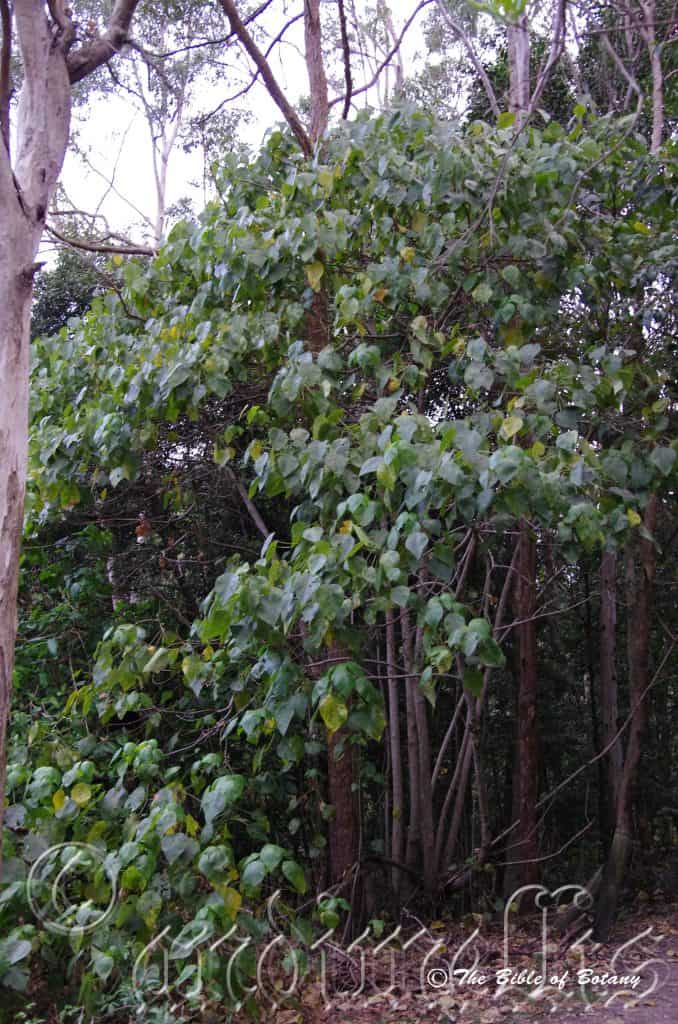
Kedron Brook Qld
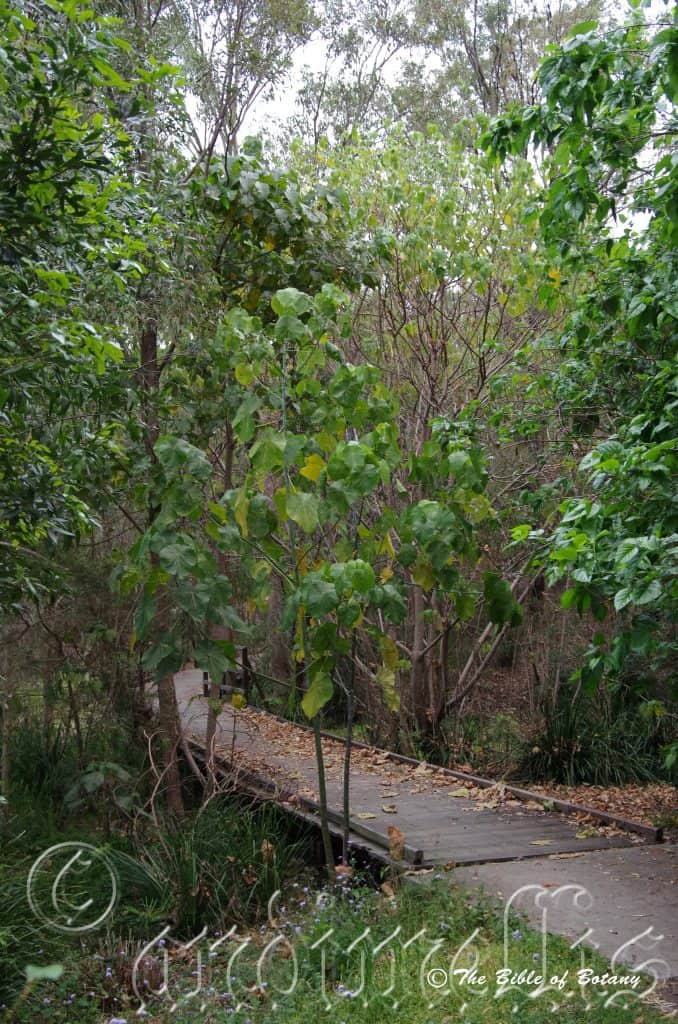
Kedron Brook Qld

Kedron Brook Qld
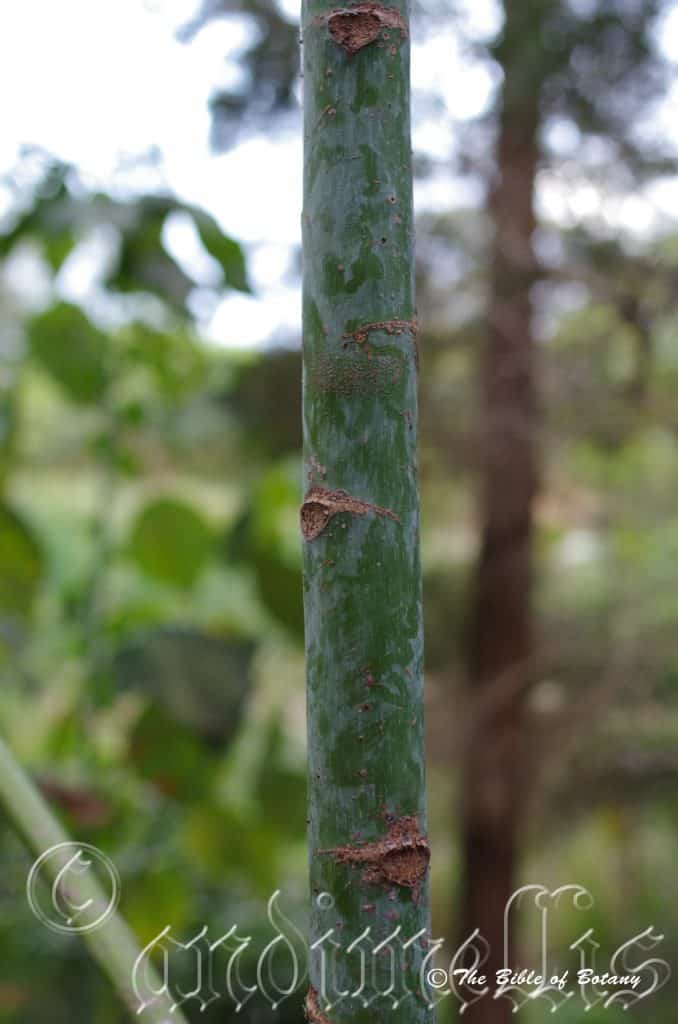
Kedron Brook Qld

Kedron Brook Qld

Kedron Brook Qld

Kedron Brook Qld
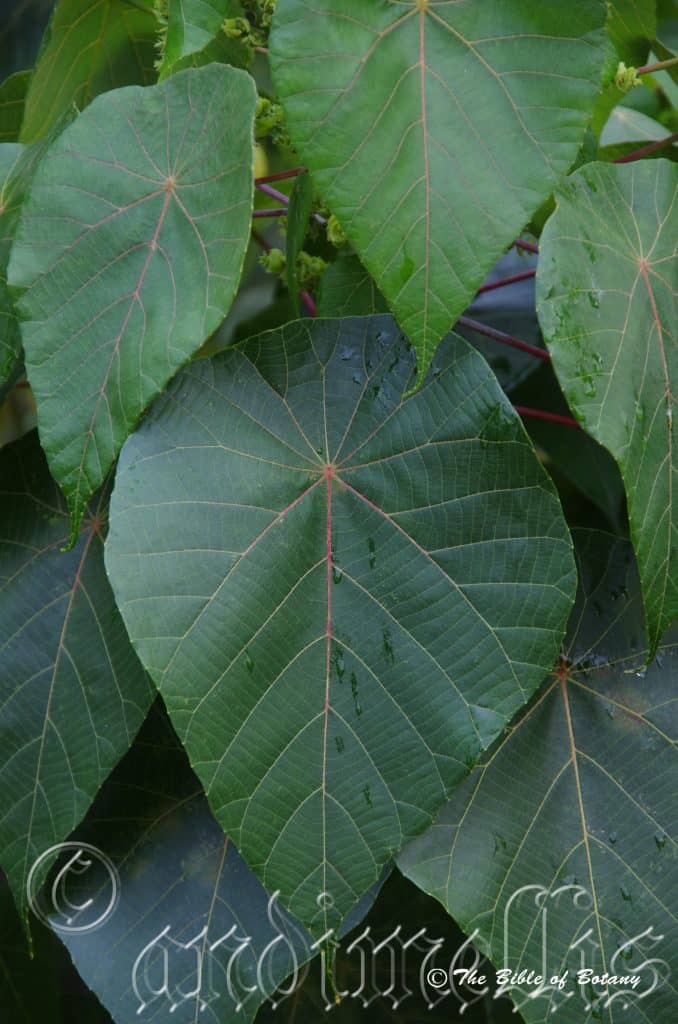
Kedron Brook Qld
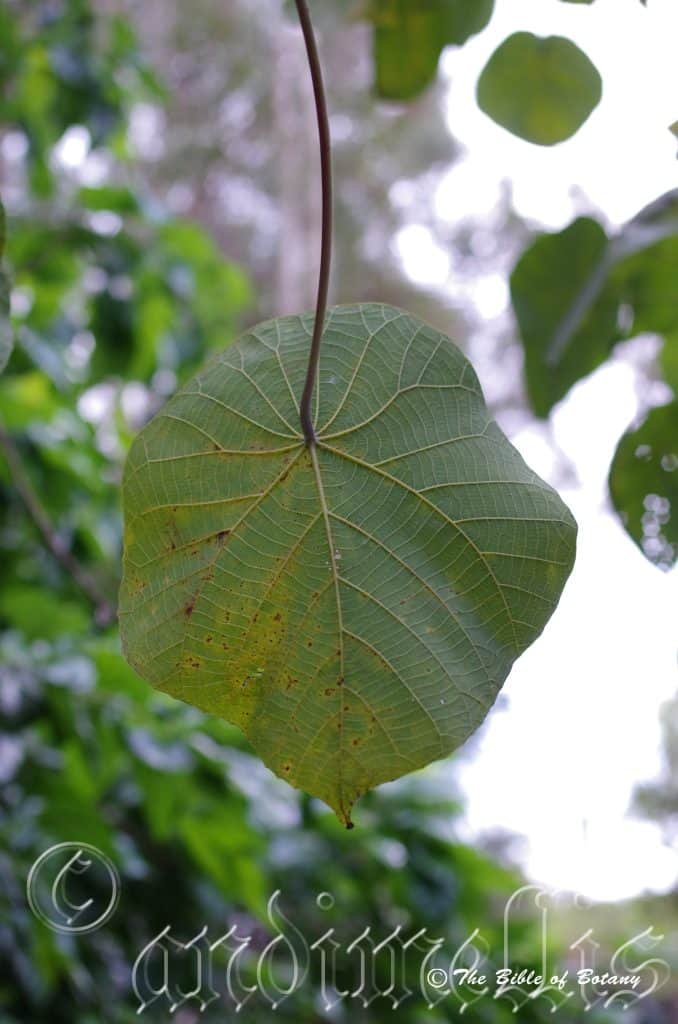
Kedron Brook Qld
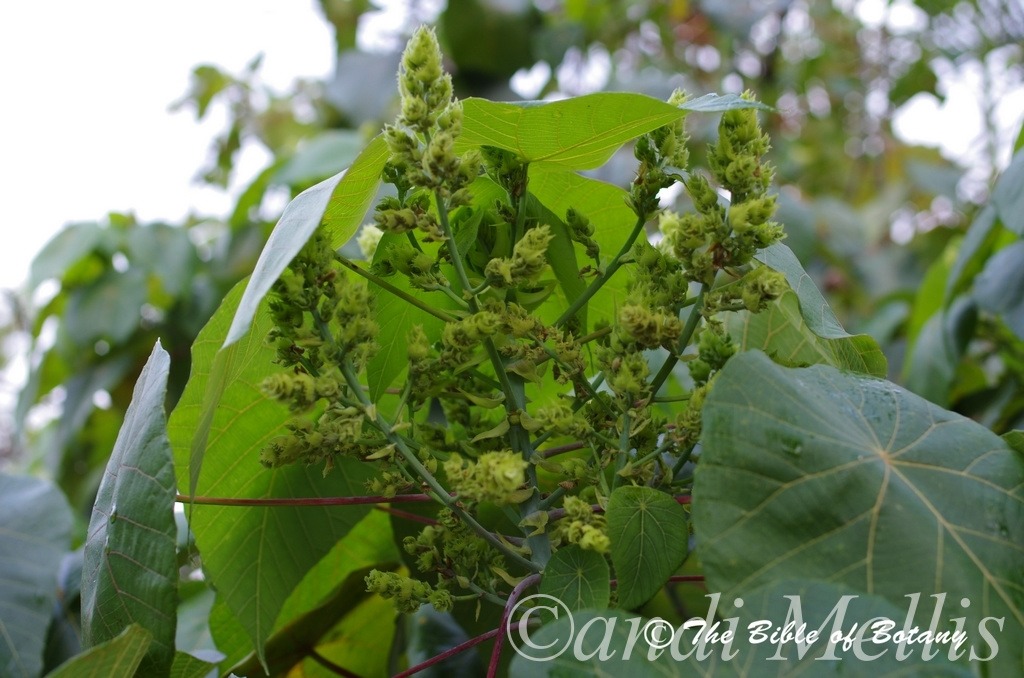
Kedron Brook Qld
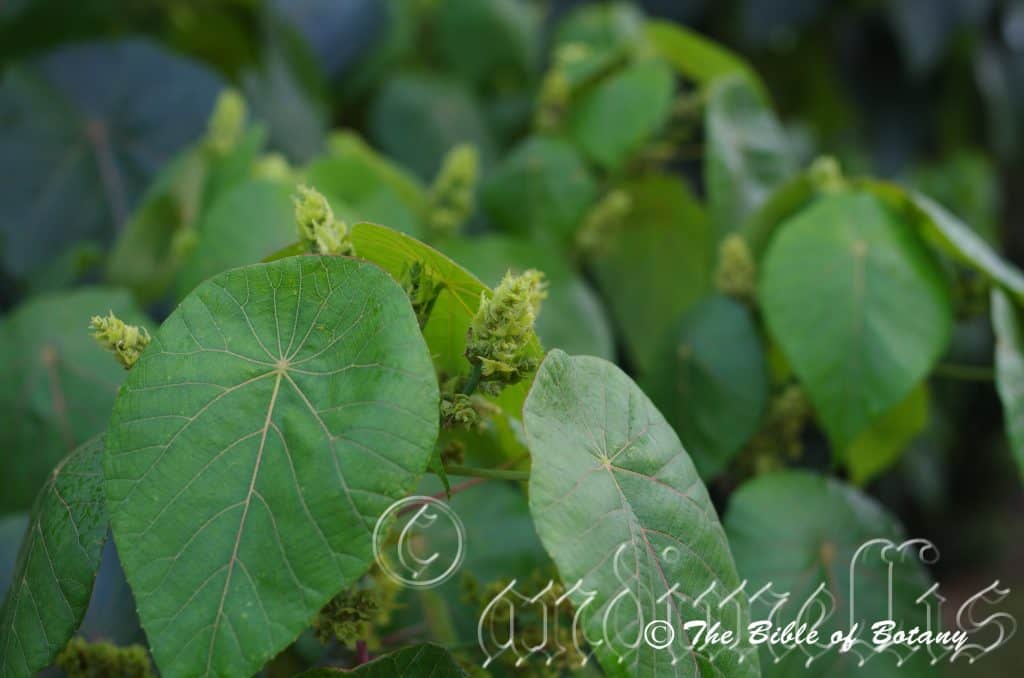
Kedron Brook Qld
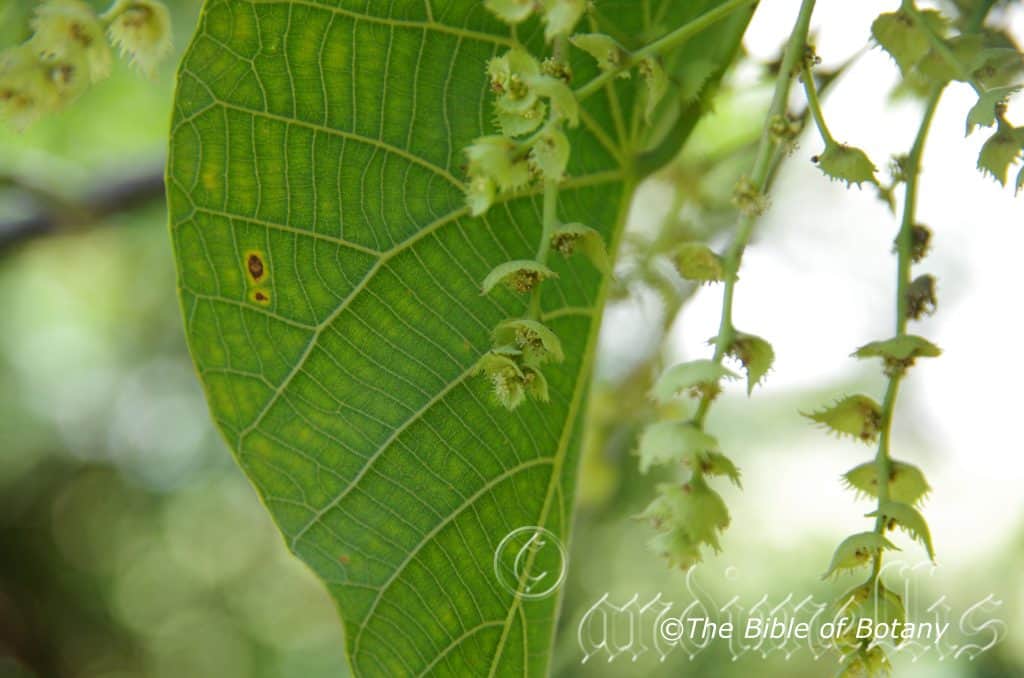
South Bank Brisbane River Qld
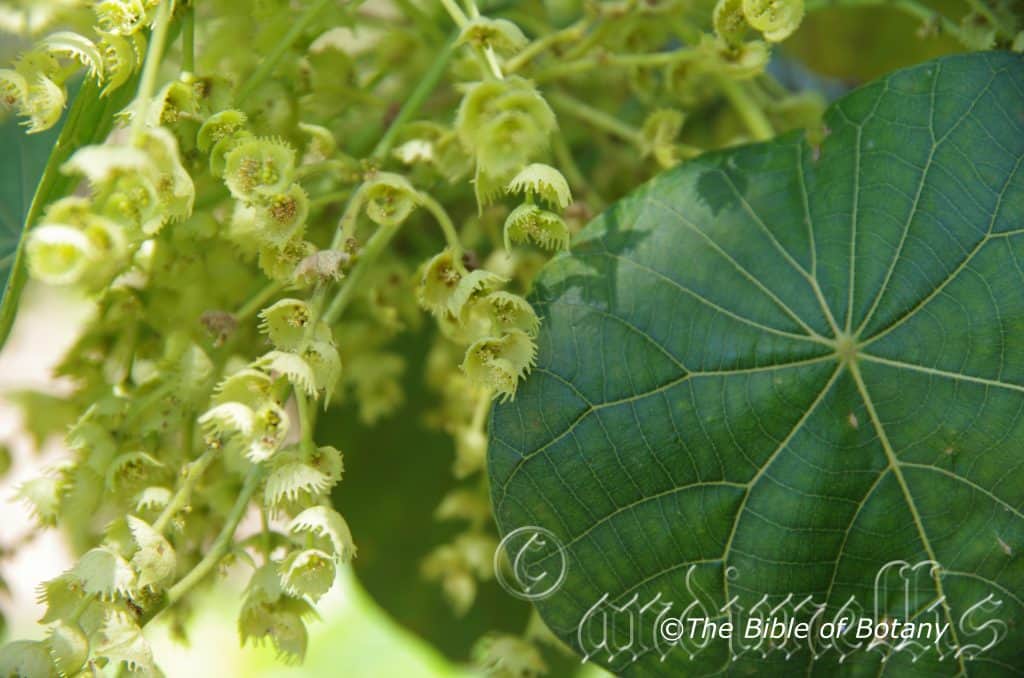
South Bank Brisbane River Qld

South Bank Brisbane River Qld
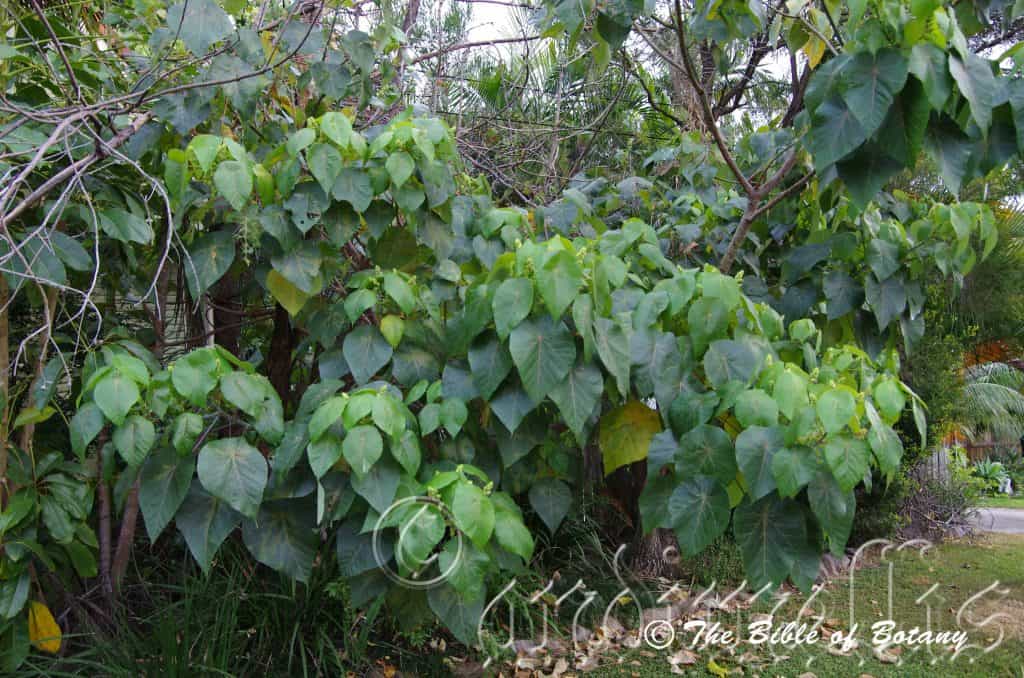
Kedron Brook Qld
Macaranga tanarius
Classification:
Unranked: Eudicots
Unranked: Rosids
Order: Malpigphiales
Family: Euphorbiaceae
Subfamily: Acalyphouideae
Tribe: Acalypheae
Genus: From Macaranga, which is Latinized from the Pilippino vernacular for the trees in found in the Philippines.
Specie: From Arena, which is Latin for sand. It refers to habitats, which are found behind the frontal dunes and comprise of accumulated sands.
Sub species:
Common Name: Blue Heart Tree or David’s Heart or Nasturtium Tree.
Distribution:
Macaranga tanarius is found in the Northern Territory east from south of Darwin to Groote Eyelandt in the east, Marchinbar Island in the north and Kakadu National Park in the south.
In the east it is found south from Cape York Peninsula and the Torres Strait Islands in far north eastern Queensland to Lismore in far north eastern New South Wales.
https://avh.ala.org.au/occurrences/search?taxa=Macaranga+tanarius#tab_mapView
Habitat Aspect Climate:
Macaranga tanarius prefers light dappled shade to full shade. It grows equally well in moderate shade to full sunlight. It grows along creeks on alluvial plains in warm moist sub tropical and tropical rainforests. The altitude ranges from 5 meters ASL to 750 meters ASL.
The temperatures range from 3 degrees in August to 38 degrees in January.
The rainfalls range from lows of 800mm to an average of 3000mm.
Soil Requirements:
Macaranga tanarius prefers growing on better quality soils derived from decomposed sandstone, granites and accumulated sands or alluvial deposits. The soils are deeper reds or black, course sands to light fatty sands often with copious quantities of leaf litter. The soils are usually very deep however shallow loams are also acceptable. The soils pH. ranges from 5pH to 7.5pH. It does not tolerate waterlogged soils. Non saline soils to very saline soils are tolerated as are salt laden breezes.
Height & Spread:
Wild Plants: 7m to 10m by 5m to 8m.
Characteristics:
Macaranga tanarius’s glabrous trunk is grey-brown. The branches are glaucous blue-green and retain the raised scars of the old leaves. Branchlets similar to the branches except the leaf bases are swollen on the branchlets. The new shoots are lime-green, glabrous and round. Broken twigs or damaged bark exude a clear exudates which turns deep pink to red once exposed to the air. The trees have a very dense canopy.
Macaranga tanarius’s alternate leaves are closely spaced along the branchlets. The peltate lamina is ovate to orbicular and measure 80mm to 210mm in length by 80mm to 200mm in width. The apex is broadly obtuse to acuminate. The discolourous laminas are deep grass-green semi glossy and glabrous on the upper lamina while the lower lamina is paler, dull and blue-green. The lower lamina has very small yellow glands at the intersections with the lateral veins and smaller veins. These glands are covered in small yellowish hirtellous to hirsute hairs. Immature leaves are lime-green and glossy. The margins are entire, flat or curve slightly downwards from the petiole especially when the trees are under stress. There are 9 veins radiating from either side of the petiole to the margins. It is prominent below and distinctly visible from above being a yellow green. The pale blue-green, pink to purple-pink petioles measure 80mm to 210mm in length. There are two erect lanceolate stipules at the base of the petiole which measure 12mm to 14mm in length.
The inflorescence of Macaranga tanarius is a short panicle born from the upper leaf axils. They measure 120mm to 250mm in length by 35mm to 50mm in diameter. The creamy green to pale yellow bracts is the most prominent parts of the flower and measure 4.5mm to 6mmin length. The bracts are covered in white trichomus hirsute hairs and have a course fimbriate margin. The outer tepals are covered in white puberulent hairs while the inner tepals are glabrous. The perianth is glabrous and measures 1mm to 1.2mm in length. The lobes are strongly recurved and are free. The perianth is white to cream while the stigma is pale cream. The single locule ovary is covered in white trichomes hairs or bristles which are arranged in 5 to 7 rows. The perianth’s peduncle is 3.5mm to 4mm long. The flowers appear from August to October.
Macaranga tanarius’s fruit is a small coriaceous globose capsule. The capsules measure 8mm to 10mm in diameter. The capsules are covered yellowish glands and soft muricate spines. The deep brown-black rugose seeds measure 4mm to 5mm in diameter by 3.5mm to 4.5mm in depth.
Wildlife:
Macaranga tanarius supports a number of butterfly specie including Endoclita malaricus. Many northern trees have a symbiotic relationship with the acrobatic ants, Crematogaster. These ants live in the hollow stems of the plants and in return protect the plant form caterpillars, and other insects which may come in contact with the trees.
Cultivation:
Macaranga tanarius is one of the best known bush trees from tropical Australia. It makes an excellent medium size tree for a park like scene, specimen trees in the garden or excellent starter tree for the home rain forest. Whether it is grown in light shade or full sun it always look green and fresh especially where adequate ground moisture is retained. It is suitable on sandy soils, light sandy clay soils or medium clays in small. It is very suitable for small, medium or large gardens close to the coast in warm temperate, subtropical or tropical gardens. As garden subjects it is fast growing and will grow from 8 meters to 10 meters by 8 meters to 8 meters in diameter. It is cold tolerant to temperatures at least as low as 1 degrees once established. It should be protected from all frosts.
It can be used as shade trees in semi protected areas. Strong winds will cause limbs to break but planting in groups or with other trees can alleviate this problem. It is an excellent tree for starting a rainforest garden. When planting the trees in a rainforest scatter them throughout the area so that they can help protect other more tender plants.
If mild native fertilizers are used they will develop deep sea green leaves of a large size. Smaller eaves are usually associated with poor sandy soils in littoral rainforests or beach scenes.
It is useful as a backdrop small tree contrasting with smaller finer leaf shrubs that are planted in the foreground. This gives the impression that they like being the center of attention which they deserve.
For mass plantings in rainforests space the trees at 6 meter centers or if you are using them as park or shade trees plant them using 10 meter centers.
Propagation:
Seeds: Macaranga tanarius fresh seeds can be sown directly into a seed raising mix. Cover the seeds with 5mm to 10mm of fine weed free mulch and keep moist. Place the tray in a warm sunny position. When the seedlings are 30mm to 50mm tall, prick them out and plant them into 50mm native tubes using a good organic mix.
When the seedlings are 40mm to 60mm tall, prick them out and plant them into 50mm native tubes using a good organic mix or plant them out into their permanent positions.
Once the seedlings reach 150mm to 200mm in height they can be planted out into their permanent position.
Fertilize using seaweed, fish emulsion or organic chicken pellets soaked in water on an alternate basis. Fertilize every two months until the plants are established then annually in early September to October to maintain health, vitality and better flowering.
Further Comments from Readers:
Hi reader, it seems you use The Bible of Botany a lot. That’s great as we have great pleasure in bringing it to you! It’s a little awkward for us to ask, but our first aim is to purchase land approximately 1,600 hectares to link several parcels of N.P. into one at The Pinnacles NSW Australia, but we need your help. We’re not salespeople. We’re amateur botanists who have dedicated over 30 years to saving the environment in a practical way. We depend on donations to reach our goal. If you donate just $5, the price of your coffee this Sunday, We can help to keep the planet alive in a real way and continue to bring you regular updates and features on Australian plants all in one Botanical Bible. Any support is greatly appreciated. Thank you.
In the spirit of reconciliation we acknowledge the Bundjalung, Gumbaynggirr and Yaegl and all aboriginal nations throughout Australia and their connections to land, sea and community. We pay our respect to their Elders past, present and future for the pleasures we have gained.
Macarthuria neocambrica
Classification:
Phylum: Charophyta
Class: Equisetopsida
Subclass: Magnoliidae
Superorder: Caryophyllanae
Order: Caryphyllales
Family: Limeaceae
Genus: Is named in honour of William Macarthur; 1800-1882, who was an Australian botanist, horticulturalist and agriculturalist.
Specie: From Neoa, which is Ancient Greek for new or recent and Cambrica, which is Latinized for Wales. It refers to plants, which were first discovered in New South Wales.
Common Name:
Distribution:
Macarthuria neocambrica is found south from Bamaga to the Starke Coastal Lowlands on Cape York Peninsula and then from the Whitsunday Islands in central coastal Queensland to Wyong in central coastal New South Wales. It is also found at Torrens Creek, Carnarvon Gorge, Lake Broadwater in the Stretchworth State Forest near Inglewood and Yetma on the McIntyre River west of the Great Dividing Range.
https://avh.ala.org.au/occurrences/search?taxa=Macarthuria+neocambrica#tab_mapView
Habitat Aspect Climate:
Macarthuria neocambrica prefers light dappled shade to full sun. It usually grows on stabilized sand dunes and dry wallums behind the frontal dunes. The altitude usually ranges from 5 meters ASL to 50 meters ASL. The Carnarvon National Park plants are found at altitudes range ASL to 230 meters ASL to 257 meters ASL.
The temperatures range from minus 1 degree in August to 38 degrees in January.
The rainfalls range from lows of 800mm to an average of 3000mm.
Soil Requirements:
Macarthuria neocambrica prefers coarse sands, fine sands to light fatty clays. The soils are usually derived from accumulated beach sands or at times decomposed sandstones or granites. The soils pH. ranges from 5pH to 7pH. It does not tolerate waterlogged soils. Non saline soils to very saline soils are tolerated.
Height & Spread:
Wild Plants: 0.1m to 0.2m by 0.2m to 0.35m.
Characteristics:
Macarthuria neocambrica grows as a small perennial herb with mid green, glabrous stems.
The basal leaves are spathulate to elliptical and measure 10mm to 50mm in length by 4.5mm to 5.5mm in width. The bases taper to the short petioles while the apexes are obtuse. The concolourous laminas are deep glossy green and glabrous. The laminas are flat while the margins are entire. There are 9 veins radiating from either side of the petiole to the margins. The veins are obscure. The petioles measure 0.5 to 1mm in length. The stem leaves are reduced to scales.
The inflorescences are panicles born from the leaf axils. They measure 10mm to 80mm in length. The individual flowers measure 10mm to 13mm in diameter. The outer perianth is in a whorl and measures 2mm to 2.5mm in length. The 5 ovate to oblong pale green lobes measure 2mm to 4mm in length. The inner perianth is deeply into 5 petaloid lobes and measure 1mm to 2mm in length when present. The white or pastel pink spathulate lobes measure 4mm to 5mm in length.
The 5 white stamens measure 2mm to 2.5mm in length while the orbicular anthers are white. The greenish –yellow to lime –green ovary measures 1.5mm to 2mm in length by 2mm to 2.5mm in diameter. The flowers appear throughout the year.
The fruits are small globose capsules. The capsules measure 2mm to 2.2mm in in length by 1.8mm to 2mm in diameter. The minute black seeds have a white aril.
Wildlife:
Macarthuria neocambrica’s wildlife is unknown to the author.
Cultivation:
Macarthuria neocambrica is spectacular small herb for sunny, coarse sandy gardens especially those that are close to the ocean. In cultivation it will grow 200mm to 250mm in height by 300mm to 450mm in diameter.
It is an ideal subject for small rockeries, driveways or against the northern walls of homes and sheds. In the right position it would be an excellent border plant especially if red, orange or deep purple flowering annuals were used as the back drop.
Propagation:
Seeds: Sow fresh seed directly into a seed raising mix. Cover the seeds with 5mm to 10mm of fine weed free mulch and keep moist. Place the tray in a warm sunny position. When the seedlings are 30mm to 50mm tall, prick them out and plant them into 50mm native tubes using a good organic mix.
When the seedlings are 40mm to 60mm tall, prick them out and plant them into 50mm native tubes using a good organic mix or plant them out into their permanent positions.
Fertilize using seaweed, fish emulsion or organic chicken pellets soaked in water on an alternate basis. Fertilize every two months until the plants are established then annually in early September to October to maintain health, vitality and better flowering.
Further Comments from Readers:
Hi reader, it seems you use The Bible of Botany a lot. That’s great as we have great pleasure in bringing it to you! It’s a little awkward for us to ask, but our first aim is to purchase land approximately 1,600 hectares to link several parcels of N.P. into one at The Pinnacles NSW Australia, but we need your help. We’re not salespeople. We’re amateur botanists who have dedicated over 30 years to saving the environment in a practical way. We depend on donations to reach our goal. If you donate just $5, the price of your coffee this Sunday, We can help to keep the planet alive in a real way and continue to bring you regular updates and features on Australian plants all in one Botanical Bible. Any support is greatly appreciated. Thank you.
In the spirit of reconciliation we acknowledge the Bundjalung, Gumbaynggirr and Yaegl and all aboriginal nations throughout Australia and their connections to land, sea and community. We pay our respect to their Elders past, present and future for the pleasures we have gained.

Mount Cootha Botanical Gardens Qld.
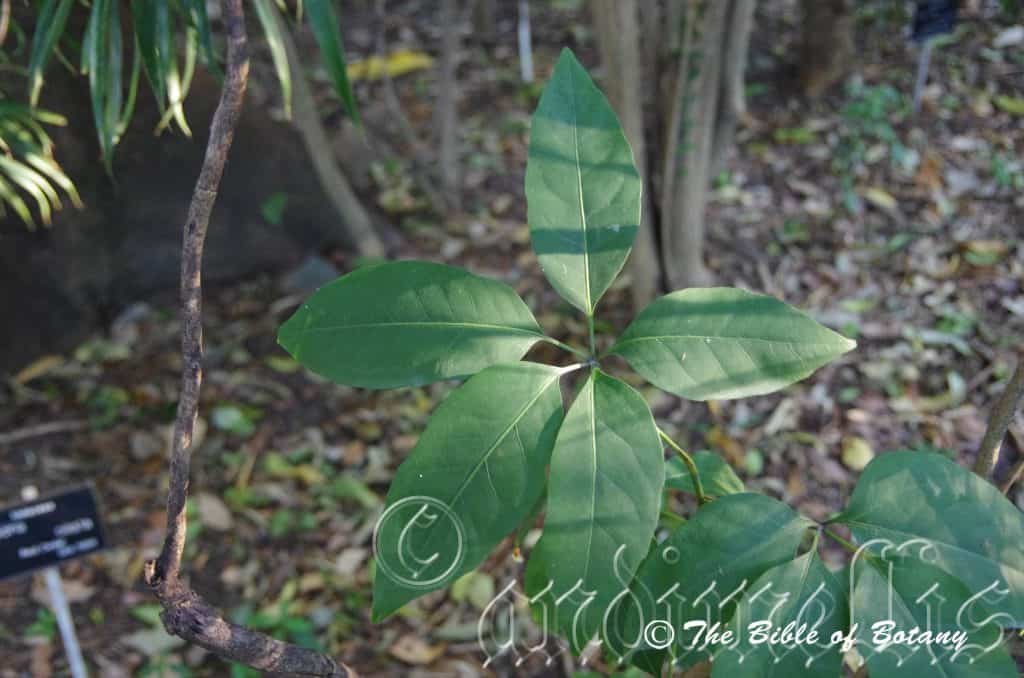
Mount Cootha Botanical Gardens Qld.
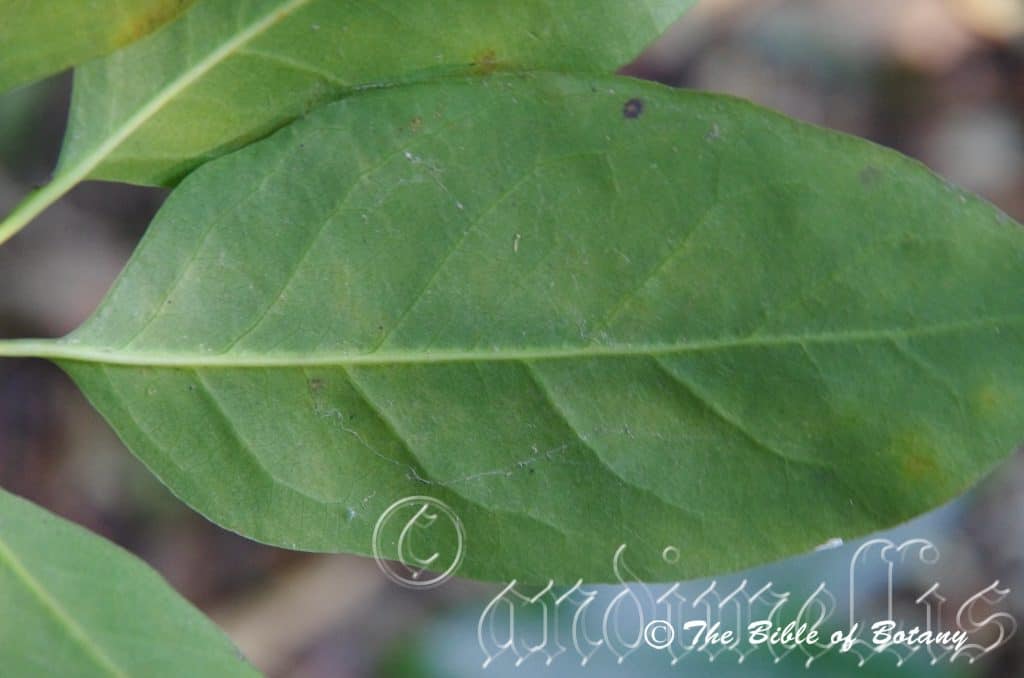
Mount Cootha Botanical Gardens Qld.
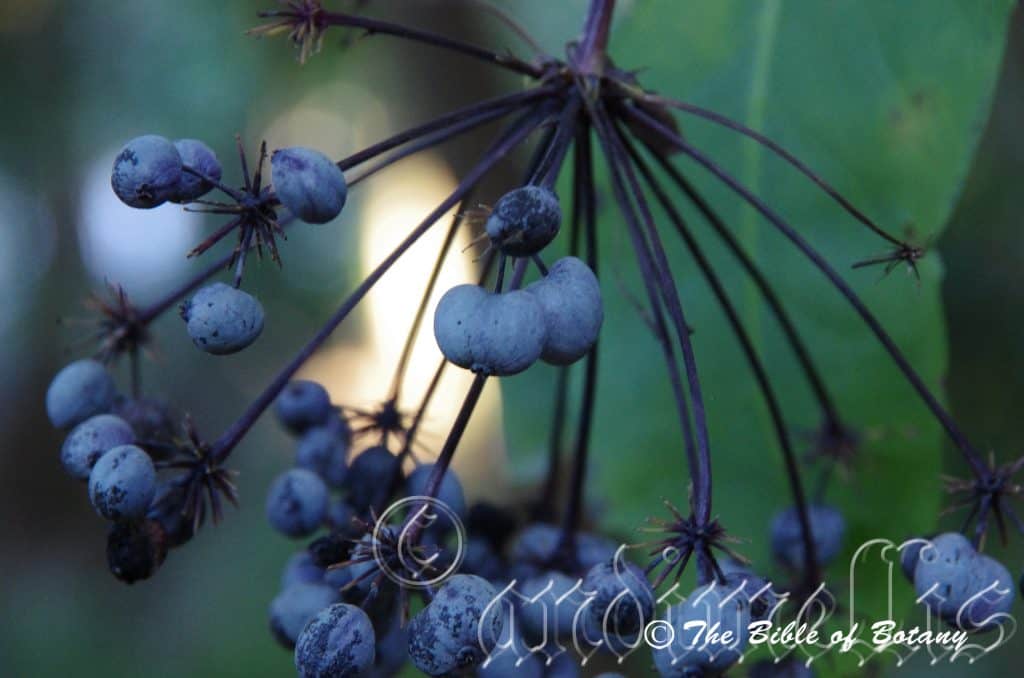
Mount Cootha Botanical Gardens Qld.

Mount Cootha Botanical Gardens Qld.
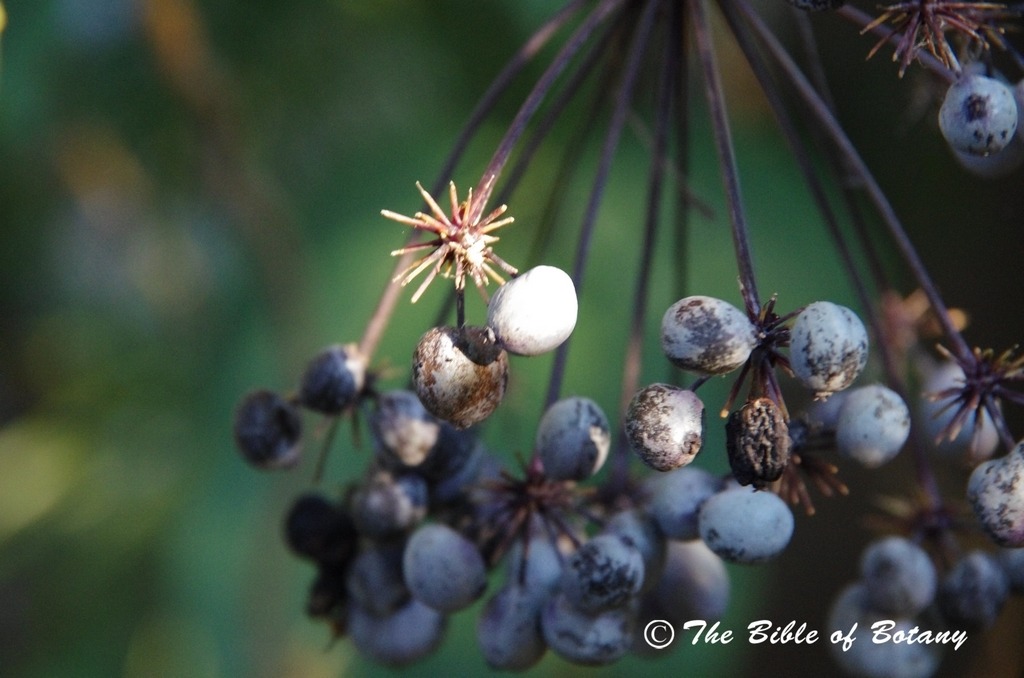
Mount Cootha Botanical Gardens Qld.
Mackinlaya macrosciadea
Classification:
Unranked: Eudicots
Unranked: Asterids
Order: Apiales
Family: Apiaceae
Genus: Is named in honour of John MacKinlay; 1819–1872, who was an Australian explorer in the Northern Territory and Western Australia.
Specie: From Makros, which is Ancient Greek for large and Scias, which is Ancient Greek for an umbrella or umbel. It refers to the large flowering umbels, which resemble an umbrella.
Sub species:
Common Name: Dwarf Umbrella Tree or Parasol Bush.
Distribution:
Mackinlaya macrosciadea is a widespread species which is found in at least 5 disjunct locations in Queensland and the Northern Territory.
In the Northern Territory it is found in the north western parts of Kakadu National Park.
In Queensland it is found from just north of Rockhampton in the south, north to east of Cohen on Cape York Peninsula. Mackinlaya macrosciadea is probably more widespread than the map indicates.
https://avh.ala.org.au/occurrences/search?taxa=Mackinlaya+macrosciadea#tab_mapView
Habitat Aspect Climate:
Mackinlaya macrosciadea prefers light dappled shade to full shade. It grows on creek meander alluvial plains in coastal ranges rainforests, littoral rainforests and monsoonal rainforests. It is found where there is a break in the canopy. The altitude ranges from 10 meters ASL to 1100 meters ASL.
The temperatures range from 5 degrees in August to 40 degrees in January.
The rainfall ranges from lows of 800mm to an average of 4000mm.
Soil Requirements:
Mackinlaya macrosciadea prefers to grow on sandy loams to medium clays with copious quantities of forest litter. The soils are usually derived from black basalts, brown basalts, sandstones or alluvial deposits. The soils pH. ranges from 6pH to 7pH. It does not tolerate waterlogged soils. Non saline soils to moderately saline soils are tolerated.
Height & Spread:
Wild Plants: 1m to 6m by 0.5m to 1m.
Characteristics:
Mackinlaya macrosciadea grow as a large shrub or small tree with mid to deep green, glabrous stems. The plants are easily distinguished by the slender single stems from the base.
Mackinlaya macrosciadea’s compound leaves have petioles that vary greatly in length even on the one plant and even on the one rachis. The rachis on the individual leaflets also vary considerably even on the one compound leaf from 35mm to 90mm in length. The petioles measure 12mm to 40mm in length. The 5 to 7 ovate to elliptical simple leaflets measure 85mm to 160mm by 35mm to 60mm in width. The base is broad cuneate while the apex is broad acuminate. The discolourous laminas are dull olive green to deep sea green and glabrous. The margins are widely serrate to almost entire. The margins curve slightly upwards from the mid vein. The mid vein is prominent on the lower lamina and is visible on the upper lamina.
The inflorescence of Mackinlaya macrosciadea are a compound umbel born on an umbel which is born from the upper leaf axils or terminal. The rachis measures 60 to 110 mm in length while the radiating pedicels off the rachis measure 60mm to 90mm in length. The peduncules measure 5mm to 6mm in length. There are 30 to 60 umbellatus to an umbel. The umbellate measure 12mm to 18mm in diameter.
The 4 or 5 green triangular calyx lobes are glabrous while the 4 obcordate petals are glabrous, white with an marginated apex. The calyx lobes measure 0.2mm in diameter while the petals measure 1mm in length. The 2 to 3 or rarely single locular ovary is lime green, glabrous and semi glossy. The 5 white stamens measure 1.5mm in length while the lime green style measures less than 0.2mm in length. The pollen is white and quite profuse. The flowers appear from August to November.
Mackinlaya macrosciadea’s fruit is a small drupe. The drupes are laterally compressed. It is glaucous blue, blue-grey or a glaucous purple-blue and measure 9mm to 10mm in length by 11mm to 14mm in width. The calyx lobes and style are persistent at the apex of the drupes. The flesh surrounding the seeds is white. The pale fawn ovoid seeds measure 0.6mm to 0.9mm in length by 0.6mm to 0.8mm diameter.
Wildlife:
Mackinlaya macrosciadea relies upon Bower Birds, Cat Birds and Fig Birds to spread its seeds. The trees leaves are frequently damaged by an unknown butterfly larvae.
Cultivation:
Mackinlaya macrosciadea makes an excellent plant for very shady areas and as an addition to the understory of rainforests. It always look green and fresh especially where adequate ground moisture is retained whether it is grown in light shade or dense shade. It is very suitable on sandy to heavy clay soils and are most suitable for small, medium and large gardens close to the coast in warm temperate, subtropical, tropical or semi-arid gardens. As garden subjects it will grow from 1 meter to 2 meters in height by 1m to 2m in diameter. It is cold tolerant to temperatures at least as low as 1 degree once established.
It is most suitable for use around semi shaded swimming pools, courtyards, besides pathways, shady rockeries, along sandy clay banks or along driveways or adjacent to natural bush gardens. Mass plantings of 5 or more plants even in small areas; really do the plants justification especially when it is in flower and pruned to keep them short and bushy. If it is not pruned it will develop the single stem of its wild parents. Medium frog ponds will benefit from Mackinlaya macrosciadea to give protection to frogs and add that tropical look on a small scale. Plants can be pruned and encouraged to lean out over the edge of such features. When mass planted the blue fruits are very attractive and will hang for a long time if not stolen by small native birds.
If it is placed around a pool, courtyards or other confined spaces then plant them in small groups or scatter plant them for a more informal natural look against walls to help soften them. Using rocks and small boulders can make the pool or any water feature appear like an oasis. The leaves and flowers can make a great start for the larger heath or wallum setting. When making a wallum scene using Mackinlaya macrosciadea use either large rocks with few plants so plant them sparingly with them becoming more densely planted adjacent to the water. Be careful not to over plant as they will look out of place, distract from the other static features and weedy.
If companion plants are sought then the choice of plants to use either side is limited by size of the area to be landscaped and the size of the other plants as they should be no more than 150mm in height to emphasise the Mackinlaya. Try mass plantings of Viola betonicifolia Viola sieberiana, Viola fuscoviolacea or Wahlenbergia stricta if there is a little more sunlight.
Propagation:
Seeds: Mackinlaya macrosciadea seeds can be sown directly into a seed raising mix. Cover the seeds with 5mm to 10mm of fine weed free mulch and keep moist. Place the tray in a warm sunny position and keep moist. When the seedlings are 30mm to 50mm tall, prick them out and plant them into 50mm native tubes using a good organic mix.
Once the seedlings reach 100mm to 150mm in height they can be planted out into their permanent position.
Fertilize using seaweed, fish emulsion or organic chicken pellets soaked in water on an alternate basis. Fertilize every two months until the plants are established then annually in early September to October to maintain health, vitality and better flowering.
Further Comments from Readers:
Hi reader, it seems you use The Bible of Botany a lot. That’s great as we have great pleasure in bringing it to you! It’s a little awkward for us to ask, but our first aim is to purchase land approximately 1,600 hectares to link several parcels of N.P. into one at The Pinnacles NSW Australia, but we need your help. We’re not salespeople. We’re amateur botanists who have dedicated over 30 years to saving the environment in a practical way. We depend on donations to reach our goal. If you donate just $5, the price of your coffee this Sunday, We can help to keep the planet alive in a real way and continue to bring you regular updates and features on Australian plants all in one Botanical Bible. Any support is greatly appreciated. Thank you.
In the spirit of reconciliation we acknowledge the Bundjalung, Gumbaynggirr and Yaegl and all aboriginal nations throughout Australia and their connections to land, sea and community. We pay our respect to their Elders past, present and future for the pleasures we have gained.
Machaerina acuta
Classification:
Unranked: Monocots
Class: Commelinids
Order: Poales
Family: Cyperaceae
Genus: From Machaira, which is Ancient Greek for a large knife. It refers to the shape of the leaves in the type species, which resemble a knife.
Specie: From acuta is Greek for acute. It refers to the flat reed like stems that have a distinct acute apex.
Sub specie:
Common Name:
Distribution:
Machaerina acuta is found close to the coast, south from Geraldton to Esperance in south western, Western Australia.
In South Australia it is found from the Adelaide Hills south to Kangaroo Island.
In the east it is mainly found east of the Great Dividing Range south from the Brisbane River to Wilson’s Promontory and central Victoria, west to Mount Gambier in South Australia.
It is found on Flinders Island in Bass Strait and on the coastal perimeter of Tasmania.
https://avh.ala.org.au/occurrences/search?taxa=machaerina+acuta+#tab_mapView
Habitat Aspect Climate:
Machaerina acuta prefer dappled shade to full sun. It usually grows in wet heaths, around billabongs and along creeks and streams or in ephemeral pools exist in open forests, open woodlands. The altitude ranges from 5 meters ASL to 550 meters ASL.
The temperatures range from minus 4 degrees in August to 40 degrees in January.
The rainfall ranges from lows of 550mm to 3200mm average per annum.
Soil Requirements:
Machaerina acuta prefers better quality skeletal to deep, loams, light fatty clays to medium clays. The soils are usually derived from decomposed sandstones, granites, brown basalts, black basalts, shales, metamorphic rocks or alluvial deposits. The soil’s pH ranges from 5pH to 7.5pH. It tolerates seasonal waterlogged soils. None saline soils to moderately saline soils are tolerated.
Height & Spread:
Wild Plants: 0.9m to 1.5m by 0.6m to 1m.
Characteristics:
Machaerina acuta is an erect slender clumped perennial bamboo grass. The fawn, cream or rusty-brown rhizomes are long and sparsely branched.
The flat to biconvex culms are erect, nodeless, faintly to moderately striated and glabrous. The culms measure 150mm to 350mm in height by 0.8mm to 1.8mm in width.
The pale straw to pale reddish-brown leaf sheaths of Machaerina acuta of are glabrous and dull. The long linear laminas are flat to biconvex and measure 140mm to 360mm in length by 0.7mm to 2.5mm in width. The basal, concolourous laminas are grass-green to deep green and glabrous. The margins are entire.
The compound inflorescences of Machaerina acuta are erect, oblong narrow panicles. The panicles measure 20mm to 140mm in length by 10mm to 14mm in diameter. The lowest involucral bract is shorter than to exceeding inflorescence.
The few spikelets contain a single flowered comprising of a single fertile floret. The linear floret measures 4.5mm to 6mm in length.
The 3 or 4 reddish-brown glumes are similar and glabrous or with ciliate margins. The glumes measure 4mm to 5mm in length.
The inflorescences have 3 anthers. The anthers measure 1.5mm to 2.5mm overall including the 0.2mm to 0.5mm appendage. The flowers appear from late September to late February under ideal conditions.
The fruits are irregularly wrinkled to smooth or minutely reticulate or colliculate, obovoidea to ellipsoidal nuts. The reddish-brown to deep brown almost black nuts are minutely hispid at apex. The nuts measure 1.5mm to 2.2mm in length by 1mm to 1.3mm in diameter.
Wildlife:
Machaerina acuta’s is unknown to the author.
Cultivation:
Machaerina acuta is a magnificent small perennial bamboo type grass for almost every garden. It could be more widely grown in temperate, semi-arid and arid gardens in ornamental gardens where water is a feature. It is ideal at the edge of a forest to add a vertical dimension to the scene. It also makes great moist rockery displays as the main feature in hot open spaces or confined sunny or semi shady positions. In cultivation it will grow from 0.15 meter to 0.4 meters in height by 0.15 meters to 0.2 meters in diameter when grown in the open.
Small groups planted around swimming pools or in enclosed courtyards are surprisingly beautiful despite being open. The plants create a soft look against hard walls and fences but must be used correctly as not to look weedy.
It grows exceptionally well on all wet soil types except pure sand and thrive on pindan soils provided deep watering are given on a regular basis to prevent excess cracking. 2 or 3 deep watering during the growing season will suffice. It can cope with temperatures as low as minus 4 degrees and up to 44 degrees. It is drought resistant once established but prefer periodic flooding and wet feet to keep them at their best.
Add to the above, if it is given a little native fertilizer on being planted out as a seedling will respond with good flowering and good seed set over a long period.
Large mass plantings look weedy so should be avoided. Scattered around fish or frog ponds where it adds a vertical dimension and colour throughout the year. It can be rotated or used in heath settings where vertical lines are required. It should also have a clear area surrounding each plant to allow for good form otherwise it become spindly and will succumb to the competition.
Place them near old stumps and roots to make the stumps or roots look more gnarled, twisted or bolder while making 1, 2 or even 3 Machaerina acuta plants look more delicate. Select an area of ground and let your hair down and be imaginative and this is the plant that may just change your life. Remember this plant is rather large for this type of garden so use it sparingly with the other plants when planting and remember that deserts are rolling flat plains not steep hills so it is best to use a gentle slope or a basin with a small pool at the bottom. A billabong affect is the go, not a waterfall or cascades.
Machaerina acuta would make outstanding contribution to a dwarf moist heath garden. Here they can be used as the taller growing plant scattered throughout the heath scene. When you design a flat heath garden which Machaerina acuta is well suited don’t use contours to display the plants as heath lands are almost always flat or have a slight rise. Plants must be planted close together and be short so you can see over the tallest ones with the exception of one or two plants at the most. Remember it can be crowded out so leave a little room around it so it can develop to its full potential. The idea is to achieve a feeling of expansive flatness. This can be achieved with using the Machaerina acuta’s grass-green linear foliage and having them contrasting with finer pale green or fine grey to glaucous coloured foliage. Use a lot of procumbent plants like Grevillea masonii, Grevillea thelemanniana or Hibbertia species. Mix them with other smaller shrubs so none of them dominate the scene but blend in to give a mosaic of foliage colours that you oversee.
Spent flowers should be removed to promote longer flowering and better quality flowers next time.
Propagation:
Seeds:
Seeds of Machaerina acuta can be collected from the panicles as the majority of the seeds ripen. Once the flowers have died and the first seeds have appeared remove the panicle and place it in a brown paper bag. Seeds will remain viable for several years if kept cool and dry.
Sow the seeds directly into a seed raising mix, keeping them moist. When the seedlings are 40mm to 50mm tall, prick them out and plant them into 50mm native tubes using a good organic mix.
As the seedlings roots reach the bottom of the tubes plant them out into their permanent position. Do not delay as they will develop a large root system quickly and will be difficult to remove without some set back to the vigour or health of the plants.
Division: Machaerina acuta can also be divided, although getting large numbers is more successful from seed. Machaerina acuta can be divided by digging up a clump and cutting the fibrous root clumps into two to four equal parts with a spade. Cut all the leaves and stems back to within 50mm to 70mm of the ground level and replant them in a reprepared hole. I usually do this by making sure the old ground level is 10mm to 20mm below that of the new ground level where you want them to be at the same level when everything settles down or plant them at the same level if a small depression is required. Water in thoroughly with a weak solution of one of our fertilizer recommendations.
Fertilize using seaweed, fish emulsion or organic chicken pellets soaked in water on an alternate basis. Fertilize every two months until the plants are established then annually in early September to October to maintain health, vitality and better flowering.
Further Comments from Readers:
Hi reader, it seems you use The Bible of Botany a lot. That’s great as we have great pleasure in bringing it to you! It’s a little awkward for us to ask, but our first aim is to purchase land approximately 1,600 hectares to link several parcels of N.P. into one at The Pinnacles NSW Australia, but we need your help. We’re not salespeople. We’re amateur botanists who have dedicated over 30 years to saving the environment in a practical way. We depend on donations to reach our goal. If you donate just $5, the price of your coffee this Sunday, We can help to keep the planet alive in a real way and continue to bring you regular updates and features on Australian plants all in one Botanical Bible. Any support is greatly appreciated. Thank you.
In the spirit of reconciliation we acknowledge the Bundjalung, Gumbaynggirr and Yaegl and all aboriginal nations throughout Australia and their connections to land, sea and community. We pay our respect to their Elders past, present and future for the pleasures we have gained.
Machaerina arthrophylla
Classification:
Unranked: Monocots
Class: Commelinids
Order: Poales
Family: Cyperaceae
Genus: From Machaira, which is Ancient Greek for a large knife. It refers to the shape of the leaves in the type species, which resemble a knife.
Specie: From Anthron, which is Ancient Greek for a joint, and Phullon/Phýllon, which are Ancient Greek for a leaf. It refers to stipule like leaves, which have a swelling at the base.
Sub specie:
Common Name:
Distribution:
Machaerina arthrophylla is found south from Nine Mile Beach north of Yeppoon around the coast to The Fountain, West of Port Lincoln in South Australia. There are several disjunct populations in areas that hold water between Port Augusta and Dalhousie Springs near Mount Dare in northern South Australia and Pettermen in the MacDonald Ranges in the Northern Territory.
In Western Australia it is found south from Gingin on the west coast around the coastline to Esperance on the south west coast. There is an isolated population further north near Geraldton.
There is an isolated population in far north Queensland on the Wild River near Herberton.
It is found on most of the Bass Strait Islands and throughout Tasmania except for the highest peaks.
https://avh.ala.org.au/occurrences/search?taxa=machaerina+arthrophylla+#tab_mapView
Habitat Aspect Climate:
Machaerina arthrophylla prefer dappled shade to full sun. It usually grows in wet heaths, in open forests, open woodland or ephemeral pools. The altitude ranges from 10 meters ASL to 1100 meters ASL
The temperatures range from minus 4 degrees in August to 40 degrees in January.
The rainfall ranges from lows of 180mm to 3200mm average per annum.
Soil Requirements:
Machaerina arthrophylla prefers deep, coarse sands, fine sands, sandy loams, light stony fatty clays to medium gravely clays usually with a high proportion of gravel. The soils are usually derived from partially decomposed sandstones, granites, brown basalts, black basalts, shales, and metashales. The soil’s pH ranges from 5pH to 7.5pH. It tolerates waterlogged soils. None saline soils to moderately saline soils are tolerated.
Height & Spread:
Wild Plants: 0.7m to 1m by 0.3m to 0.6m.
Characteristics:
It is an erect clumped perennial bamboo grass. The fawn, cream or pale reddish-brown rhizomes are long and sparsely branched.
The single nodded, terete or compressed culms are erect are striated or compressed. The culms measure 300mm to 1000mm in height by 0.8mm to 5mm diameter. The mid culms internodes and mid-culm nodes are smooth and glabrous.
The pale straw to pale reddish-brown leaf sheaths of Machaerina arthrophylla is glabrous and dull. The long, linear, basal, cauline laminas are flat to biconvex and measure 280mm to 950mm in length by 1.5mm to 3.5mm in width or rarely to 8mm in width. The concolourous laminas are grass-green to deep green and glabrous. The margins are entire. The bases are septate but not obvious when the leaves first emerge.
The compound interrupted oblong inflorescences of Machaerina arthrophyllaare narrow erect panicles. The linear panicles measure 80mm to 550mm in length by 15mm to 30mm in diameter. The lowest involucral bract is much shorter than individual inflorescence.
The numerous spikelets are 2 to 4 flowered comprising of 2 to 4 fertile florets. The linear, terete florets measure 3.5mm to 5.5mm in length.
The 4 or 5 acute glumes have a curved, mucronate apex and are mid reddish-brown to deep reddish-brown with ciliate margins. The glumes measure 3mm to 4.5mm in length.
The inflorescences have 3 anthers. The anthers measure 1.1mm to 1.8mm in length overall including the 0.2mm to 0.5mm appendage. The flowers appear from late September to late February under ideal conditions.
The fruits of Machaerina arthrophylla are smooth or reticulate and covered in white hispid hairs at the apex. The obovoidea to ellipsoidal nuts are glossy straw to pale cream. The nuts that measure 2mm to 2.5mm in length by 1mm to 1.3mm in diameter.
Wildlife:
Machaerina arthrophylla’s does not appear to have any predators though the leaf blades are chewed by unknown beetles from time to time. The plants are very popular with several unknown specie of Hover flies or pollen flies.
The seeds are edible but little else is known. The plants are low nutritional value for stock probably because of the tough hard fibrous culms and low volume of leaf material.
Cultivation:
Machaerina arthrophylla is a small perennial bamboo type grass for almost every bog garden. It could be more widely grown in temperate, semi-arid and arid gardens as ornamental gardens. It is ideal at the edge of a forest to add a vertical dimension to the scene. It also makes good rockery display as the main feature in hot open spaces or confined sunny or semi shady positions. In cultivation It will grow from 0.6 meter to 0.9 meters in height by 0.4 meters to 0.6 meters in diameter when grown in the open.
Small groups planted around swimming pools or in enclosed courtyards are surprisingly beautiful despite being open and flimsy looking. The plants create very strong vertical lines and soften hard surfaces and fences but must be used correctly as not to look weedy.
It grows exceptionally well on all soil types except pure sand and thrives on pindan soils provided deep watering is given on a regular basis to prevent excess cracking. 2 or 3 deep waterings during the growing season will suffice. It can cope with temperatures as low as minus 4 degrees and up to 44 degrees. It is drought resistant once established while at the same time can cope with periodic flooding and wet feet.
Add to the above, if it is given a little native fertilizer on being planted out as a seedling will respond with good flowering and good seed set over a long period.
Large mass plantings look weedy so should be avoided. Scattered through the bush it adds a vertical dimension and colour throughout the year. It can be rotated or used in heath settings where vertical lines are required. It can be used in desert scenes or heath scenes equally as well where a small oasis is required. It should also have a clear area surrounding each plant to allow for good form otherwise it can become spindly and may succumb to the competition.
Place them near old stumps and roots to make the stumps or roots look more gnarled, twisted or bolder while making 1, 2 or even 3 Machaerina arthrophylla plants look more delicate when positioned correctly. Select an area of ground and let your hair down and be imaginative and this is the plant that may just change your life. Remember this plant is rather large for this type of garden so use it sparingly with the other plants when planting and remember that deserts are rolling flat plains not steep hills so it is best to use a gentle slope or a basin with a small pool at the bottom. A billabong affect is the go, not a waterfall or cascades.
Machaerina arthrophylla would make a good contribution to a moist heath garden. Here it can be used as the taller growing plant scattered throughout the heath scene. When you design a flat heath garden which Machaerina arthrophyllais well suited, use contours to display the plants as heath lands are almost always flat or have a slight rise. Plants must be planted close together and be short so you can see over the tallest ones with the exception of one or two plants at the most. The idea is to achieve a feeling of expansive flatness. This can be achieved with using the Machaerina arthrophylla’s grass-green linear foliage and having them contrasting with finer pale green or fine grey to glaucous coloured foliage in the foreground. Use a lot of procumbent plants like Patersonnia specie or Hibbertia specie to add some yellow or Actinotus helianthi for a strong white touch and a softening when not if flower. Mix them with other smaller shrubs so none of them dominate the scene but blend in to give a mosaic of foliage colours that you oversee.
Propagation:
Seeds: Seeds of Machaerina arthrophylla can be collected from the panicles as the majority of the seeds ripen. Once the flowers have died and the first seeds have appeared remove the panicle and place it in a brown paper bag. Seeds will remain viable for several years if kept cool and dry.
Sow the seeds directly into a seed raising mix, keeping them moist. When the seedlings are 40mm to 50mm tall, prick them out and plant them into 50mm native tubes using a good organic mix.
As the seedlings roots reach the bottom of the tubes plant them out into their permanent position. Do not delay as they will develop a large root system quickly and will be difficult to remove without some set back to the vigour or health of the plants.
Division: Machaerina arthrophylla can also be divided, although getting large numbers is more successful from seed. It can be divided by digging up a clump and cutting the fibrous root clumps into two to four equal parts with a spade. Cut all the leaves and stems back to within 50mm to 70mm of the ground level and replant them in a reprepared hole. I usually do this by making sure the old ground level is 10mm to 20mm below that of the new ground level where you want them to be at the same level when everything settles down or plant them at the same level if a small depression is required. Water in thoroughly with a weak solution of one of our fertilizer recommendations.
Fertilize using seaweed, fish emulsion or organic chicken pellets soaked in water on an alternate basis. Fertilize every two months until the plants are established then annually in early September to October to maintain health, vitality and better flowering.
Further Comments from Readers:
Hi reader, it seems you use The Bible of Botany a lot. That’s great as we have great pleasure in bringing it to you! It’s a little awkward for us to ask, but our first aim is to purchase land approximately 1,600 hectares to link several parcels of N.P. into one at The Pinnacles NSW Australia, but we need your help. We’re not salespeople. We’re amateur botanists who have dedicated over 30 years to saving the environment in a practical way. We depend on donations to reach our goal. If you donate just $5, the price of your coffee this Sunday, We can help to keep the planet alive in a real way and continue to bring you regular updates and features on Australian plants all in one Botanical Bible. Any support is greatly appreciated. Thank you.
In the spirit of reconciliation we acknowledge the Bundjalung, Gumbaynggirr and Yaegl and all aboriginal nations throughout Australia and their connections to land, sea and community. We pay our respect to their Elders past, present and future for the pleasures we have gained.

The Pinnacles NSW
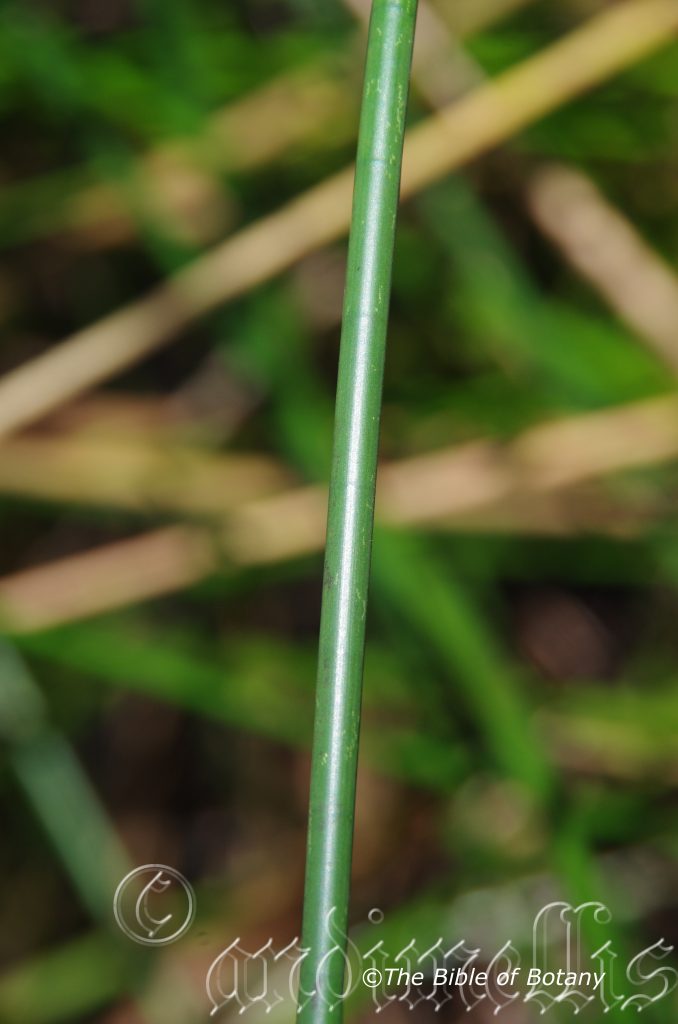
The Pinnacles NSW

The Pinnacles NSW
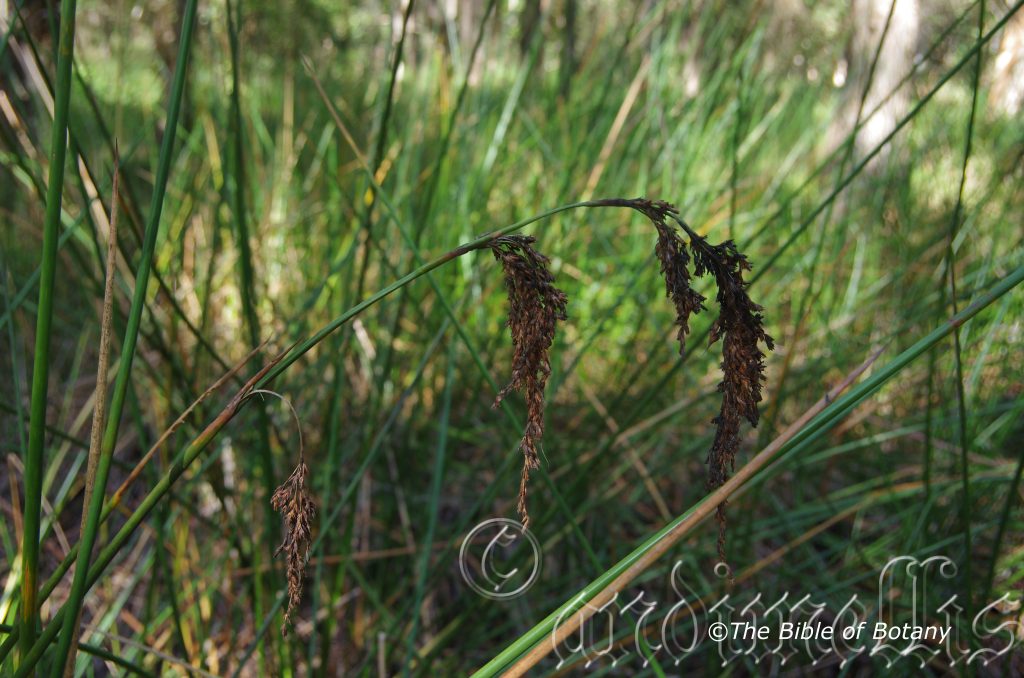
The Pinnacles NSW
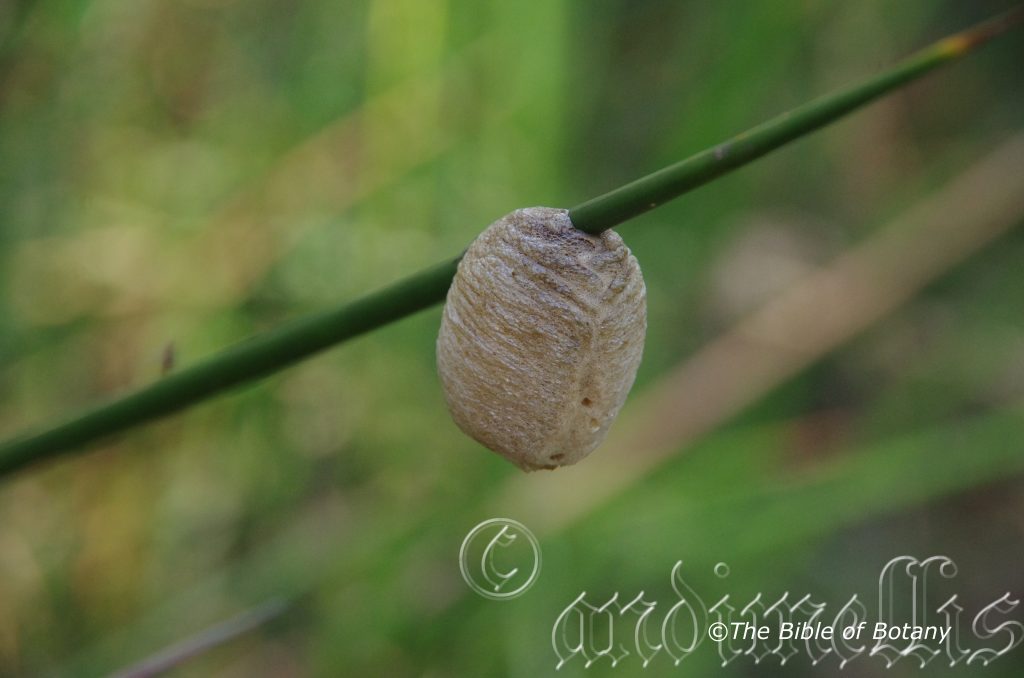
Preying Mantis egg sack. The Pinnacles NSW
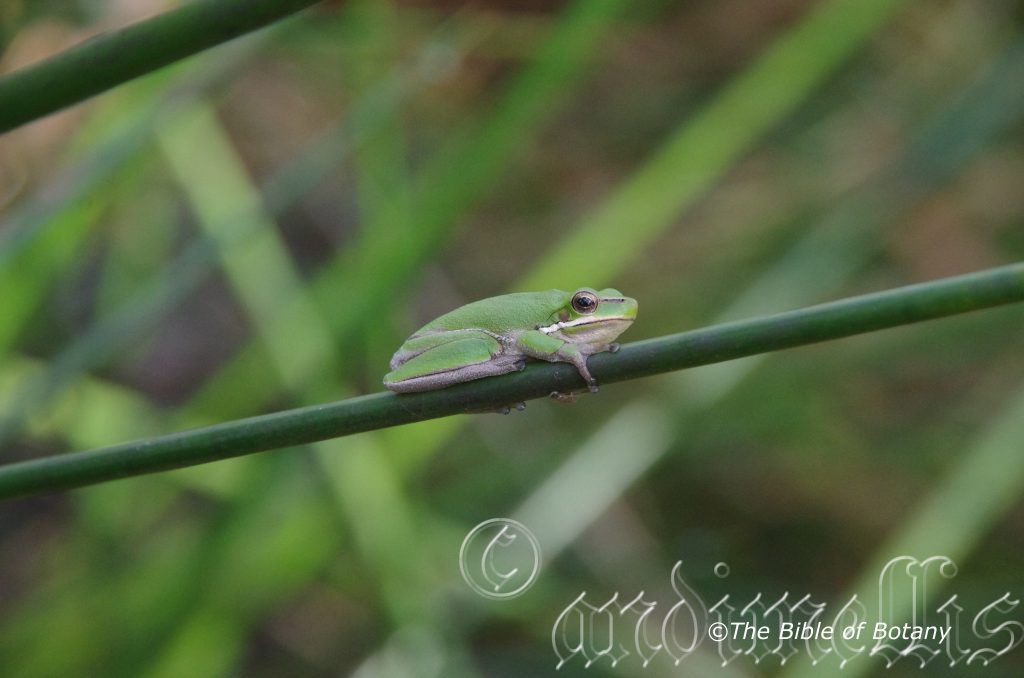
Litoria fallax on Machaerina articulata culm The Pinnacles NSW
Machaerina articulata
Classification:
Unranked: Monocots
Class: Commelinids
Order: Poales
Family: Cyperaceae
Genus: From Machaira, which is Ancient Greek for a large knife. It refers to the shape of the leaves in the type species, which resemble a knife.
Specie: From Articulatus, which is Latin for to be divided into distinct sections. It refers to scales, which surround the flowers and fruits.
Sub specie:
Common Name: Jointed Twig Rush.
Distribution:
Machaerina articulata is found south from Geraldton to Perth along the coast then in a line from Perth to Esperance in south western Western Australia. There is also an isolated population in Dragon Tree Soak in the Great Sandy Desert south west of Broome.
In South Australia it is found between the Adelaide Hills, Murray Bridge and Deep Creek Conservation Park with a disjunct population in the north in the Flinders Ranges National Park.
There are several disjunct populations on and east of the Great Dividing Range south from Cairns in far north Queensland to Wilson’s promontory in southern Victoria. It is found in a block from Seaford to Euroa, Dimboola in Victoria and to Mount Gambier and the Narracoorte Coastal Plain in south eastern South Australia.
There are 2 known populations in Tasmania near Low Head and Jock’s Lagoon near St Helens.
it is also found on the North Island of New Zealand.
https://avh.ala.org.au/occurrences/search?taxa=machaerina+articulata+#tab_mapView
Habitat Aspect Climate:
Machaerina articulata prefer light dappled shade to full sun. It grows in wet heaths, swamps and wallums in ephemeral pools and shallow depressions in open forests margins along rivers, streams and creeks close to the coast and in deeper lagoons. The altitude ranges from 5 meters ASL to 1000 meters ASL
The temperatures range from minus 2 degrees in August to 42 degrees in January.
The rainfall ranges from lows of 50mm to 3100mm average per annum but this is not usually as important as the moisture holding ability of ground water or available surface water.
Soil Requirements:
Machaerina articulata prefers loams, light fatty clays to medium clays. The soils are usually derived from decomposed sandstones, granites, brown basalts, black basalts, shales, metamorphic rocks or alluvial deposits. The soil’s pH ranges from 5pH to 7.5pH. It does not tolerate waterlogged soils. None saline soils to moderately saline soils are tolerated.
Height & Spread:
Wild Plants: 0.9m to 1m by several square meters.
Characteristics:
Machaerina articulata is an erect open clumped perennial bamboo grass with stout fawn to reddish-brown long rhizomes which are sparsely branched.
The terete, rigid, nodeless culms are erect and measure 900mm to 1000mm in height by 4mm to 10mm diameter. The deep green culms are faintly striated, smooth or slightly scabrous.
The straw coloured leaf sheaths are glabrous and dull. The long, linear, basal, cauline laminas are flat to biconvex and measure 900mm to 1000mm in length by 8mm to 10mm in width. The concolourous laminas are grass-green to deep green and glabrous. The margins are entire. The bases are septate but not obvious when the leaves first emerge.
The disjunct compound inflorescences are loose oblong, nodding panicles. The panicles measure 150mm to 450mm in length by 70mm to 100mm in diameter. The lowest involucral bract is shorter than inflorescence. The numerous spikelets are 2 to 5 flowered comprising of a 1 to 5 fertile florets. The linear, terete florets measure 3.5mm to 5mm in length.
The 4 to 7 glumes are similar and measure 3.5mm to 5mm in length. The reddish-brown glumes are glabrous with an acute apex which has a mucronate tip.
The inflorescences have 3 anthers. The anthers measure 1.5 to 2.1mm in length including the 0.2mm to 0.3mm appendage. The flowers appear from late September to February under ideal conditions.
The fruits of Machaerina articulata are strongly and irregularly wrinkled but are smooth at the bases and near the apexes. The apexes are covered in white hispid hairs. The trigonous ellipsoidal to ovoidal nuts are dull, pale reddish-brown to deep reddish-brown. The nuts measure 1.8mm to 2.3mm in length by 1.2mm to 1.4mm in diameter.
Wildlife:
Machaerina articulata’s provides a good habitat for frogs.
The seeds are edible but little else is known. The plants are low nutritional value for stock probably because of the tough hard fibrous culms and low volume of leaf material.
Cultivation:
Machaerina articulata is a small perennial bamboo type grass for almost every bog garden. It should be more widely grown in temperate, semi-arid and arid gardens as ornamental gardens. It is ideal at the edge of a forest to add a vertical dimension to the scene. It also makes good rockery display as the main feature in hot open spaces or confined sunny or semi shady positions. In cultivation it will grow from 0.6 meter to 0.9 meters in height by 0.4 meters to 0.6 meters in diameter when grown in the open.
Small groups planted around swimming pools or in enclosed courtyards are surprisingly beautiful despite being open and flimsy looking. The plants create very strong vertical lines and soften hard surfaces and fences but must be used correctly as not to look weedy.
It grows well on all wet soil types provided adequate moisture is sustained. It can cope with temperatures as low as minus 4 degrees and up to 44 degrees. It is drought resistant once established while at the same time can cope with periodic flooding and wet feet.
Add to the above, if it is given a little native fertilizer on being planted out as a seedling will respond with good flowering and good seed set over a long period.
Large mass plantings look weedy so should be avoided. Scattered through the bush it adds a vertical dimension and colour throughout the year. It can be rotated or used in heath settings where vertical lines are required. It can be used in desert scenes or heath scenes equally as well where a small oasis is required. It should also have a clear area surrounding each plant to allow for good form otherwise it can become spindly and may succumb to the competition.
Place them near old stumps and roots to make the stumps or roots look more gnarled, twisted or bolder while making 1, 2 or even 3 Machaerina articulata plants look more delicate, when properly positioned. Select an area of ground and let your hair down and be imaginative and this is the plant that may just change your life. Remember this plant is rather large for this type of garden so use it sparingly with the other plants when planting and remember that deserts are rolling flat plains not steep hills so it is best to use a gentle slope or a basin with a small pool at the bottom. A billabong affect is the go, not a waterfall or cascades.
Machaerina articulata would make a good contribution to a moist heath garden. Here it can be used as the taller growing plant scattered throughout the heath scene. When you design a flat heath garden which itis well suited, use contours to display the plants as heath lands are almost always flat or have a slight rise. Plants must be planted close together and be short so you can see over the tallest ones with the exception of one or two plants at the most. The idea is to achieve a feeling of expansive flatness. This can be achieved with using the Machaerina arthrophylla’s grass-green linear foliage and having them contrasting with finer pale green or fine grey to glaucous coloured foliage in the foreground. Use a lot of procumbent plants like Patersonnia specie or Hibbertia specie to add some yellow or Actinotus helianthi for a strong white touch and a softening when not if flower. Mix them with other smaller shrubs so none of them dominate the scene but blend in to give a mosaic of foliage colours that you oversee.
Propagation:
Seeds:Seeds of Machaerina articulata can be collected from the panicles as the majority of the seeds ripen. Once the flowers have died and the first seeds have appeared remove the panicle and place it in a brown paper bag. Seeds will remain viable for several years if kept cool and dry.
Sow the seeds directly into a seed raising mix, keeping them moist. When the seedlings are 40mm to 50mm tall, prick them out and plant them into 50mm native tubes using a good organic mix.
As the seedlings roots reach the bottom of the tubes plant them out into their permanent position. Do not delay as it will develop a large root system quickly and will be difficult to remove without some set back to the vigour or health of the plants.
Division: Machaerina articulata can also be divided, although getting large numbers is more successful from seed. Machaerina articulata can be divided by digging up a clump and cutting the fibrous root clumps into two to four equal parts with a spade. Cut all the leaves and stems back to within 50mm to 70mm of the ground level and replant them in a reprepared hole. I usually do this by making sure the old ground level is 10mm to 20mm below that of the new ground level where you want them to be at the same level when everything settles down or plant them at the same level if a small depression is required. Water in thoroughly with a weak solution of one of our fertilizer recommendations.
Fertilize using seaweed, fish emulsion or organic chicken pellets soaked in water on an alternate basis. Fertilize every two months until the plants are established then annually in early September to October to maintain health, vitality and better flowering.
Further Comments from Readers:
Hi reader, it seems you use The Bible of Botany a lot. That’s great as we have great pleasure in bringing it to you! It’s a little awkward for us to ask, but our first aim is to purchase land approximately 1,600 hectares to link several parcels of N.P. into one at The Pinnacles NSW Australia, but we need your help. We’re not salespeople. We’re amateur botanists who have dedicated over 30 years to saving the environment in a practical way. We depend on donations to reach our goal. If you donate just $5, the price of your coffee this Sunday, We can help to keep the planet alive in a real way and continue to bring you regular updates and features on Australian plants all in one Botanical Bible. Any support is greatly appreciated. Thank you.
In the spirit of reconciliation we acknowledge the Bundjalung, Gumbaynggirr and Yaegl and all aboriginal nations throughout Australia and their connections to land, sea and community. We pay our respect to their Elders past, present and future for the pleasures we have gained.
Machaerina gunnii
Classification:
Unranked: Monocots
Class: Commelinids
Order: Poales
Family: Cyperaceae
Genus: From Machaira, which is Ancient Greek for a large knife. It refers to the shape of the leaves in the type species, which resemble a knife.
Specie: Is named in honour of Ronald Campbell Gunn; 1808-1881, who was a South African born Australian botanist and politician. He was passionate about horticulture and collected thousands of specimens of Tasmanian plants, which he meticulously, labelled accurately described the locations and forwarded to the Kew Gardens.
Sub specie:
Common Name: Jointed small Twig Rush.
Distribution:
Machaerina gunnii is found south from Noosa National Park in coastal south eastern Queensland through New South Wales to Wilsons Promontory in far southern victoria and around to Kangaroo Island in South Australia. It is found on and east of the Great Dividing Range to the coast.
It is also found on Flinders Island and most of Tasmania.
it is also found in Papua New Guinea and Noumea.
https://avh.ala.org.au/occurrences/search?taxa=machaerina+gunnii+#tab_mapView
Habitat Aspect Climate:
Machaerina gunnii prefer light dappled shade to full sun. It prefers to grow in wet heaths, swamps, wallums, swampy woodlands and montane swamps in sub alpine regions. The altitude ranges from 5 meters ASL to 1200 meters ASL
The temperatures range from minus 7 degrees in August to 34 degrees in January.
The rainfall ranges from lows of 450mm to 1200mm average per annum but this is not usually as important as the moisture holding capacity of ground water or available surface water.
Soil Requirements:
Machaerina gunnii prefers loams, light fatty clays to medium clays. The soils are usually derived from decomposed sandstones, granites, brown basalts, black basalts, shales, metamorphic rocks, alluvial deposits or accumulated sands behind the frontal dunes. The soil’s pH ranges from 4.5pH to 7.5pH. It tolerates waterlogged soils. None saline soils to moderately saline soils are tolerated.
Height & Spread:
Wild Plants: 0.2m to 1m by several square meters.
Characteristics:
Machaerina gunnii is a slender, tufted perennial with very short rhizomes. The slender, upright, deep green culms are terete, nodeless, striated, glabrous to slightly scaberulous. They measure 200mm to 1000mm in height by 0.8mm to 1.5mm in diameter.
The basal leaf blades are culm like and are slightly longer than the culms and measure 0.7mm to 1.5mm diameter. The reddish or straw-coloured sheaths are dull and have a reddish tinge.
The erect inflorescences are interrupted-oblong in outline and measure 40mm to 600mm in length by 15mm in diameter. The lowest involucral bract is much shorter than inflorescence. The few spikelets have a single flower, which measures 4.5mm to 8 mm length. The 2 to 4, reddish-brown to grey-brown glumes have acute apexes, while the margins are glabrous. The fertile glumes measure 4.5mm to 7mm in length. The anthers 2mm in length, while the appendage measures 0.5mm.
The fruits of Machaerina gunnii are ovoidal to globose nuts, which measure 2.5mm to 3.6mm in length by 1.3mm to 1.8mm in diameter. They are smooth, while the apexes are sparsely covered in minute white hispid or papillose hairs. The nuts are glossy yellow-brown to black.
Wildlife:
Machaerina gunnii provides a good habitat for frogs.
The seeds are edible but little else is known. The plants have low nutritional value for stock probably because of the tough hard fibrous culms and low volume of leaf material.
Cultivation:
Machaerina gunniii s a small perennial bamboo type grass for almost every bog garden. It should be more widely grown in temperate and sub alpine gardens for its ornamental look. It is ideal at the edge of a woodland to add a vertical dimension and depth to the scene. It also makes good rockery display as the main feature in cold open spaces or confined sunny. In cultivation it will grow from 0.6 meter to 0.8 meters in height by 0.4 meters to 0.6 meters in diameter when grown in the open.
Small groups planted in enclosed courtyards are surprisingly beautiful with its rigid culms. The plants create very strong vertical lines and soften hard surfaces and fences but must be used correctly as not to look weedy.
It grows exceptionally well on all soil types provided deep watering is given on a regular basis and will accept drying out for short periods. It can cope with temperatures as low as minus 10 degrees in winter and up to 36 degrees in summer.
Add to the above, if it is given a little native fertilizer on being planted out as a seedling will respond with good flowering and good seed set over a long period.
Large mass plantings look weedy in the garden so should be avoided. Scattered through the bush it adds a vertical dimension and colour throughout the year. It can be rotated or used in heath settings where vertical lines are required. It can be used in desert scenes or heath scenes equally as well where a small oasis is required. It should also have a clear area surrounding each plant to allow for good form otherwise it can become spindly and may succumb to the competition.
Place them near old stumps and roots to make the stumps or roots look more gnarled, twisted or bolder while making 1, 2 or even 3 Machaerina gunnii plants look more delicate, when properly planted out. Select an area of ground and let your hair down and be imaginative and this is the plant that may just change your life. Remember this plant is rather large for this type of garden so use it sparingly with the other plants when planting and remember that deserts are rolling flat plains not steep hills so it is best to use a gentle slope or a basin with a small pool at the bottom. A billabong affect is the go, not a waterfall or cascades.
Machaerina gunnii would make a good contribution to a moist heath garden. Here it can be used as the taller growing plant scattered throughout the heath scene. When you design a flat heath garden which itis well suited, use contours to display the plants as heath lands are almost always flat or have a slight rise. Plants must be planted close together and be short so you can see over the tallest ones with the exception of one or two plants at the most. The idea is to achieve a feeling of expansive flatness. This can be achieved with using the Machaerina arthrophylla’s grass-green linear foliage and having them contrasting with finer pale green or fine grey to glaucous coloured foliage in the foreground. Use a lot of procumbent plants like Patersonnia specie or Hibbertia specie to add some yellow or Actinotus helianthi for a strong white touch and a softening when not if flower. Mix them with other smaller shrubs so none of them dominate the scene but blend in to give a mosaic of foliage colours that you oversee.
Propagation:
Seeds: Seeds of Machaerina gunnii can be collected from the panicles as the majority of the seeds ripen. Once the flowers have died and the first seeds have appeared remove the panicle and place it in a brown paper bag. Seeds will remain viable for several years if kept cool and dry.
Sow the seeds directly into a seed raising mix, keeping them moist. When the seedlings are 40mm to 50mm tall, prick them out and plant them into 50mm native tubes using a good organic mix.
As the seedlings roots reach the bottom of the tubes plant them out into their permanent position. Do not delay as it will develop a large root system quickly and will be difficult to remove without some set back to the vigour or health of the plants.
Division: Machaerina gunnii can also be divided, although getting large numbers is more successful from seed. Machaerina gunnii can be divided by digging up a clump and cutting the fibrous root clumps into two to four equal parts with a spade. Cut all the leaves and stems back to within 50mm to 70mm of the ground level and replant them in a reprepared hole. I usually do this by making sure the old ground level is 10mm to 20mm below that of the new ground level where you want them to be at the same level when everything settles down or plant them at the same level if a small depression is required. Water in thoroughly with a weak solution of one of our fertilizer recommendations.
Fertilize using seaweed, fish emulsion or organic chicken pellets soaked in water on an alternate basis. Fertilize every two months until the plants are established then annually in early September to October to maintain health, vitality and better flowering.
Further Comments from Readers:
Hi reader, it seems you use The Bible of Botany a lot. That’s great as we have great pleasure in bringing it to you! It’s a little awkward for us to ask, but our first aim is to purchase land approximately 1,600 hectares to link several parcels of N.P. into one at The Pinnacles NSW Australia, but we need your help. We’re not salespeople. We’re amateur botanists who have dedicated over 30 years to saving the environment in a practical way. We depend on donations to reach our goal. If you donate just $5, the price of your coffee this Sunday, We can help to keep the planet alive in a real way and continue to bring you regular updates and features on Australian plants all in one Botanical Bible. Any support is greatly appreciated. Thank you.
In the spirit of reconciliation we acknowledge the Bundjalung, Gumbaynggirr and Yaegl and all aboriginal nations throughout Australia and their connections to land, sea and community. We pay our respect to their Elders past, present and future for the pleasures we have gained.
Machaerina juncea
Classification:
Unranked: Monocots
Class: Commelinids
Order: Poales
Family: Cyperaceae
Genus: From Machaira, which is Ancient Greek for a large knife. It refers to the shape of the leaves in the type species, which resemble a knife.
Specie: From Pūbēscēns, which is Latin for short, very soft hairs. It refers to structures or organs, which are covered in soft, white or pale grey hairs.
Sub specie:
Common Name:
Distribution:
Machaerina juncea is found circumnavigating Australia close to the coast and some inland lakes. It is found south from Kalbarri to Esperance in Western Australia. There are also 2 isolated populations near Karatha and Karjini in the central coastal areas of Western Australia.
In South Australia it is found in a line south from Elliston in the west to Port Augusta and to Wilson’s promontory in Victoria. It is also found around Francis Swamp, Hermit Hill and around Lake Eyre in South Australia.
In the east it is found south from Cardwell in far north eastern Queensland to East Gippsland in eastern Victoria.
It is found on all the Bass Strait Islands and circumnavigates Tasmania.
It is also found on Lord Howe Island, Noumea and New Zealand.
https://avh.ala.org.au/occurrences/search?taxa=machaerina+juncea+#tab_mapView
Habitat Aspect Climate:
Machaerina juncea prefer light dappled shade to full sun. It usually grows in wet swamps and wallums, ephemeral pools or shallow depressions in open forests or at times along rivers, streams and creeks close to the coast. The altitude ranges from 5 meters ASL to 800 meters ASL
The temperatures range from minus 2 degrees in August to 42 degrees in January.
The rainfall ranges from lows of 500mm to 3100mm average per annum but this is not as important as the moisture holding ability of the ground or available surface water.
Soil Requirements:
Machaerina juncea prefers better quality deep, loams, light fatty clays to medium clays or light silts to heavy silts. The soils are usually derived from decomposed sandstones, granites, brown basalts, black basalts, shales, metamorphic rocks, alluvial deposits or at times accumulated peaty beach sands. The soil’s pH ranges from 4.5pH to 7pH. It tolerates waterlogged soils with the water often being stagnant, brackish or periodically flooded with King tides. None saline soils to extremely saline soils are tolerated.
Height & Spread:
Wild Plants: 0.25m to 0.9m by several square meters.
Characteristics:
Machaerina juncea is an erect spreading or tufted perennial bamboo grass. The reddish-brown rhizomes are long and branched.
The 1 to 3 node culms are erect, rigid and terete. The culms measure 250mm to 900mm in height by 1mm to 2mm diameter. The mid culms internodes and mid-culm nodes are striated, glabrous and smooth.
The leaf sheaths are straw coloured to rusty-brown, glabrous and dull. The basal leaves are cauline while the laminas are reduced to a short erect mucronate apex. The leaf blades measure 250mm to 500mm in length. The concolourous laminas are pale blue green and are sparsely to moderately covered in white pubescent hairs. The margins are flat, involute or convolute.
The compound inflorescences are erect, narrow oblong to narrow ovate panicles. The panicles measure 10mm to 80mm in length by 10mm to 20mm in diameter. The lowest involucral bract is shorter than inflorescence.
Nut obovoid to globose, 2.3–3.0 mm long, 1.5–2.0 mm diam., smooth with scattered pits, hispid at apex, shining, dark red-brown to black.
The few spikelets are single flowered comprising of a single fertile floret. The floret measures 3mm to 6mm in length.
The 4 or 5 acute to long acute similar glumes are reddish-brown to grey-brown. The glumes measures 3mm to 5mm in length. The membranous glumes are without keels and have 5 nerves. The glume’s midvein is scabrous.
The inflorescences have 3 anthers. The anthers measure 1.8mm to 2.2mm in length overall including the 0.3mm to 0.5mm appendage. The flowers appear from late September to February under ideal conditions.
The fruits of Baumea juncea are smooth and covered in irregular scattered pits. The ovoidal to globose nuts are deep reddish-brown to black and covered in white hispid hairs at the apex. The nuts measure 2.3mm to 3mm in length by 1.5mm to 2mm in diameter.
Wildlife:
Machaerina juncea’s is an important habitat specie for many small birds, supplying seeds and nesting material for many water fowl. It also provides an excellent habitat for frogs.
The seeds are edible but little else is known. The plants are low nutritional value for stock probably because of the tough hard fibrous culms and low volume of leaf material.
Cultivation:
Machaerina junceais a small perennial bamboo type grass for almost every bog garden. It could be more widely grown in temperate, semi-arid and arid gardens as ornamental gardens. It is ideal at the edge of a forest to add a vertical dimension to the scene. It also makes good rockery display as the main feature in hot open spaces or confined sunny or semi shady positions. In cultivation it will grow from 0.6 meter to 0.9 meters in height by 0.4 meters to 0.6 meters in diameter when grown in the open.
Small groups planted around swimming pools or in enclosed courtyards are surprisingly beautiful despite being open and flimsy looking. The plants create very strong vertical lines and soften hard surfaces and fences but must be used correctly as not to look weedy.
It grows exceptionally well on all soil types except pure sand and thrives on pindan soils provided deep watering is given on a regular basis to prevent excess cracking. 2 or 3 deep waterings during the growing season will suffice. It can cope with temperatures as low as minus 4 degrees and up to 44 degrees. It is drought resistant once established while at the same time can cope with periodic flooding and wet feet.
Add to the above, if it is given a little native fertilizer on being planted out as a seedling will respond with good flowering and good seed set over a long period.
Large mass plantings look weedy so should be avoided. Scattered through the bush it adds a vertical dimension and colour throughout the year. It can be rotated or used in heath settings where vertical lines are required. It can be used in desert scenes or heath scenes equally as well where a small oasis is required. It should also have a clear area surrounding each plant to allow for good form otherwise it can become spindly and may succumb to the competition.
Place them near old stumps and roots to make the stumps or roots look more gnarled, twisted or bolder while making 1, 2 or even 3 Machaerina juncea plants look more delicate. Select an area of ground and let your hair down and be imaginative and this is the plant that may just change your life. Remember this plant is rather large for this type of garden so use it sparingly with the other plants when planting and remember that deserts are rolling flat plains not steep hills so it is best to use a gentle slope or a basin with a small pool at the bottom. A billabong affect is the go, not a waterfall or cascades.
Machaerina juncea would make a good contribution to a moist heath garden. Here it can be used as the taller growing plant scattered throughout the heath scene. When you design a flat heath garden which itis well suited, use contours to display the plants as heath lands are almost always flat or have a slight rise. Plants must be planted close together and be short so you can see over the tallest ones with the exception of one or two plants at the most. The idea is to achieve a feeling of expansive flatness. This can be achieved with using the Machaerina arthrophylla’s grass-green linear foliage and having them contrasting with finer pale green or fine grey to glaucous coloured foliage in the foreground. Use a lot of procumbent plants like Patersonnia specie or Hibbertia specie to add some yellow or Actinotus helianthi for a strong white touch and a softening when not if flower. Mix them with other smaller shrubs so none of them dominate the scene but blend in to give a mosaic of foliage colours that you oversee.
Propagation:
Seeds: Machaerina juncea’s seeds can be collected from the panicles as the majority of the seeds ripen. Once the flowers have died and the first seeds have appeared remove the panicle and place it in a brown paper bag. Seeds will remain viable for several years if kept cool and dry.
Sow the seeds directly into a seed raising mix, keeping them moist. When the seedlings are 40mm to 50mm tall, prick them out and plant them into 50mm native tubes using a good organic mix.
As the seedlings roots reach the bottom of the tubes plant them out into their permanent position. Do not delay as they will develop a large root system quickly and will be difficult to remove without some set back to the vigour or health of the plants.
Division: Machaerina juncea can also be divided, although getting large numbers is more successful from seed. It can be divided by digging up a clump and cutting the fibrous root clumps into two to four equal parts with a spade. Cut all the leaves and stems back to within 50mm to 70mm of the ground level and replant them in a reprepared hole. I usually do this by making sure the old ground level is 10mm to 20mm below that of the new ground level where you want them to be at the same level when everything settles down or plant them at the same level if a small depression is required. Water in thoroughly with a weak solution of one of our fertilizer recommendations.
Fertilize using seaweed, fish emulsion or organic chicken pellets soaked in water on an alternate basis. Fertilize every two months until the plants are established then annually in early September to October to maintain health, vitality and better flowering.
Further Comments from Readers:
Hi reader, it seems you use The Bible of Botany a lot. That’s great as we have great pleasure in bringing it to you! It’s a little awkward for us to ask, but our first aim is to purchase land approximately 1,600 hectares to link several parcels of N.P. into one at The Pinnacles NSW Australia, but we need your help. We’re not salespeople. We’re amateur botanists who have dedicated over 30 years to saving the environment in a practical way. We depend on donations to reach our goal. If you donate just $5, the price of your coffee this Sunday, We can help to keep the planet alive in a real way and continue to bring you regular updates and features on Australian plants all in one Botanical Bible. Any support is greatly appreciated. Thank you.
In the spirit of reconciliation we acknowledge the Bundjalung, Gumbaynggirr and Yaegl and all aboriginal nations throughout Australia and their connections to land, sea and community. We pay our respect to their Elders past, present and future for the pleasures we have gained.
Machaerina muelleri
Classification:
Unranked: Monocots
Class: Commelinids
Order: Poales
Family: Cyperaceae
Genus: From Machaira, which is Ancient Greek for a large knife. It refers to the shape of the leaves in the type species, which resemble a knife.
Specie: Is named in honour of Ferdinand Von Mueller; 1825-1896, who was a German born Australian Botanist who named over 2000 new species and was director of the Melbourne Botanic Gardens.
Sub specie:
Common Name:
Distribution:
Machaerina muelleri is found south from Fraser Island in coastal southern Queensland to Salamander Bay in central coastal New South Wales. There are 3 disjunct populations further north near Miriam Vale, Shoalwater Bay and on the Blackdown Tablelands National Park.
https://avh.ala.org.au/occurrences/search?taxa=machaerina+muelleri+#tab_mapView
Habitat Aspect Climate:
Machaerina muelleri prefer light dappled shade to full sun. It usually grows in wet swamps and wallums, ephemeral pools or shallow depressions in open forests or along rivers, streams and creeks close to the coast. The altitude ranges from 5 meters ASL to 800 meters ASL
The temperatures range from 2 degrees in August to 40 degrees in January.
The rainfall ranges from lows of 900mm to 2100mm average per annum.
Soil Requirements:
Machaerina muelleri prefers skeletal to deep, loams to light fatty clays. The soils are usually derived from accumulated peaty beach sands or decomposed or partially decomposed sandstones. The soil’s pH ranges from 5pH to 6pH. It tolerates seasonal waterlogged soils. None saline soils to moderately saline soils are tolerated.
Height & Spread:
Wild Plants: 0.1m to 0.6m by 0.2m to 0.5m.
Characteristics:
Machaerina muelleri is a slender, tufted erect to spreading perennial bamboo grass. The orange-brown to reddish-brown rhizomes are short and sparsely branched.
The nodeless culms are erect to spreading and measure 100mm to 600mm in height by 0.5mm to 1.3mm diameter. The culms are striate glabrous and smooth.
The leaf sheaths are straw coloured to pale orange-brown, glabrous and dull. The leaves are basal and measure 80mm to 450mm in length by 2mm to 3mm in width. The concolourous laminas are deep grass-green to blue green, glabrous and smooth. The margins are entire.
The interrupted compound inflorescences are panicles. The narrow oblong panicles often have drooping branchlets towards the apexes. They measure 50mm to 320mm in length by 12mm to 22mm in diameter. The lowest involucral bract is much shorter than inflorescence.
The few spikelets are usually single flowered comprising of a single fertile floret. The linear, terete floret measures 6mm to 8mm in length.
The 3 or 4 similar long, acute glumes are straw and reddish–brown in colour. The margins are glabrous or covered in white ciliate hairs. The glumes measure 5mm to 8mm in length. The lower glume surface is covered in white puberulent hairs. The upper glume is linear and measures 15mm to 20mm in length. The membranous glumes are without keels and have 5 nerves. The upper glume surface is covered in white puberulent hairs.
The inflorescences have 3 anthers. The anthers measure 2.7mm to 3mm in length overall including the 0.5mm to 0.6mm appendages. The flowers appear from late September to February under ideal conditions.
The fruits of Machaerina muelleri are smooth and covered in small colliculate lumps. The apexes are covered in minute, white hispid hairs. The ellipsoidal to obovoidea nuts are deep brown to black and glossy. The nuts measure 3mm to 3.5mm in length by 1.5mm to 1.8mm in diameter.
Wildlife:
Machaerina muelleri’s is a good habitat plants for frogs and small fresh water creek fish.
The seeds are edible but little else is known. The plants are low nutritional value for stock probably because of the tough hard fibrous culms and low volume of leaf material.
Cultivation:
Machaerina muelleri is a smaller perennial tufted bamboo type grass reed. It should be more widely grown in temperate, semi-arid and, arid gardens tropical and subtropical ornamental gardens. It is ideal at the edge of small dams and fish ponds to add a vertical dimension and a natural scene. It also has a place in small wet rockeries as the main feature in hot open spaces or confined sunny positions. In cultivation it will grow from 0.4 meter to 0.6 meters in height by 0.2 meters to 0.4 meters in diameter when grown in the open.
A single plant or in small clumps planted around swimming pools or in enclosed courtyards are surprisingly beautiful. The plants create a very strong contrast against hard walls and fences but must be used correctly so they do not look weedy.
It grows exceptionally well on sandier type soil types including pure sand and thrives where high water tables are a problem. It can cope with temperatures as low as minus 4 degrees and up to 44 degrees.
Add to the above, if it is given a little native fertilizer annually it will always have an aura around its deep green culms.
Large mass plantings look weedy so should be avoided. Scattered through the garden with spaces between it adds a vertical dimension and colour throughout the year. Use a lot of procumbent plants like Xerochrysum bracteatum and Xerochrysum viscosum give a great choice of pinks and reds, while Hibbertia species contrast with a range of different foliages and growth habits and bright yellows flowers or for a more subdued but cheerful arrangement of brilliant white flowers and pale grey foliage can be incorporated using Actinotus helianth. Using these plants will give a mosaic of foliage and flower colours that will rival any exotic garden design.
It can be used in heath scenes equally as well if not crowded. It should always have a cleared area surrounding each plant to allow for good form otherwise they become spindly and may succumb to the competition. Machaerina muelleri would make outstanding contribution to a moist heath garden. Here it can be used as the taller vertical growing plant scattered throughout the heath scene. When you design a flat heath garden which it is well suited don’t use contours to display the plants as heath lands are almost always flat or have a slight rise. Plants must be planted close together and be short so you can see over the tallest ones with the exception of one or two plants at the most.
Place it near old stumps and roots to make the stumps or roots look more gnarled, twisted or bolder while making 1, 2 or even 3 plants look more delicate. Select an area of ground and let your hair down and be imaginative and this is the plant that may just change your life. Remember this plant is rather large for this type of garden so use it sparingly with the other plants when planting and remember that deserts are rolling flat plains not steep hills so it is best to use a gentle slope or a basin with a small pool at the bottom. A billabong affect is the go, not a waterfall or cascades.
Propagation:
Seeds:
Seeds of Machaerina muelleri can be collected from the panicles as the majority of the seeds ripen. Once the flowers have died and the first seeds have appeared remove the panicle and place it in a brown paper bag. Seeds will remain viable for several years if kept cool and dry.
Sow the seeds directly into a seed raising mix, keeping them moist. When the seedlings are 40mm to 50mm tall, prick them out and plant them into 50mm native tubes using a good organic mix.
As the seedlings roots reach the bottom of the tubes plant them out into their permanent position. Do not delay as they will develop a large root system quickly and will be difficult to remove without some set back to the vigour or health of the plants.
Division: Machaerina muelleri can also be divided, although getting large numbers is more successful from seed. It can be divided by digging up a clump and cutting the fibrous root clumps into two to four equal parts with a spade. Cut all the leaves and stems back to within 50mm to 70mm of the ground level and replant them in a reprepared hole. I usually do this by making sure the old ground level is 10mm to 20mm below that of the new ground level where you want them to be at the same level when everything settles down or plant them at the same level if a small depression is required. Water in thoroughly with a weak solution of one of our fertilizer recommendations.
Fertilize using Seaweed, fish emulsion or organic chicken pellets soaked in water on an alternate basis. Fertilize every two months until the plants are established then twice annually in early September or March to maintain better health, vitality and flowering.
Further Comments from Readers:
Hi reader, it seems you use The Bible of Botany a lot. That’s great as we have great pleasure in bringing it to you! It’s a little awkward for us to ask, but our first aim is to purchase land approximately 1,600 hectares to link several parcels of N.P. into one at The Pinnacles NSW Australia, but we need your help. We’re not salespeople. We’re amateur botanists who have dedicated over 30 years to saving the environment in a practical way. We depend on donations to reach our goal. If you donate just $5, the price of your coffee this Sunday, We can help to keep the planet alive in a real way and continue to bring you regular updates and features on Australian plants all in one Botanical Bible. Any support is greatly appreciated. Thank you.
In the spirit of reconciliation we acknowledge the Bundjalung, Gumbaynggirr and Yaegl and all aboriginal nations throughout Australia and their connections to land, sea and community. We pay our respect to their Elders past, present and future for the pleasures we have gained.
Machaerina nuda
Classification:
Unranked: Monocots
Class: Commelinids
Order: Poales
Family: Cyperaceae
Genus: From Machaira, which is Ancient Greek for a large knife. It refers to the shape of the leaves in the type species, which resemble a knife.
Specie: From Nūda, which is Latin for being naked. It refers to fruits, which lack a pericarp as in certain conifers or lacking scales around a bud or spores.
Sub specie:
Common Name:
Distribution:
Machaerina nuda is found south from Tewantin in southern coastal Queensland to the Sydney Basin in central coastal New South Wales. There is an isolated population in far north Queensland on Hinchinbrook Island and around Ingham.
It is found on and east of the Great Dividing Range.
https://avh.ala.org.au/occurrences/search?taxa=machaerina+nuda+#tab_mapView
Habitat Aspect Climate:
Machaerina nuda prefer light dappled shade to full sun. It usually grows in wet swamps and wallums, ephemeral pools or shallow depressions in open forests or at times along rivers, streams and creeks close to the coast or at times coastal wallums. The altitude ranges from 5 meters ASL to 1050 meters ASL.
The temperatures range from minus 3 degrees in August to 40 degrees in January.
The rainfall ranges from lows of 900mm to 2000mm average per annum.
Soil Requirements:
Machaerina nuda prefers better quality deep, loams, light fatty clays to medium clays with high percentage of coarse sand. The soils are usually derived from decomposed sandstones, granites, or at times heavier accumulated peaty beach sands. The soil’s pH ranges from 5pH to 7pH. It tolerates waterlogged soils. None saline soils to moderately saline soils are tolerated.
Height & Spread:
Wild Plants: 0.25m to 0.4m by 0.2m to 0.3m.
Characteristics:
Machaerina nuda is a compact tufted perennial bamboo reed. The fawn to orange-brown rhizomes are short and sparsely branched.
The nodeless culms are erect rigid, and compressed or terete. The culms are glabrous, smooth and measure 100mm to 400mm in height by 0.5mm to 0.8mm diameter.
The leaf sheaths are glabrous, pale straw coloured often with a pale reddish or orange tinge. The linear leaves are basal with a terete, sulcate lamina. The long linear laminas are scarious with a truncate or obtuse apex. The leaf blades measure 350mm to 750mm in length by 0.4mm to 0.7mm in diameter. The concolourous laminas are grass-green and glabrous. The margins are entire.
The narrow oblong compound inflorescences are erect panicles. The panicles measure 20mm to 70mm in length by 8mm to 12mm in diameter. The lowest involucral bract is much shorter than inflorescence.
The few spikelets are single flowered comprising of a single fertile floret. The linear, terete floret measures 5mm to 7mm in length.
The 3 acute similar glumes are pale reddish-brown to mid reddish-brown. The glumes margins are translucent and glabrous. The glumes measure 4mm to 7mm in length.
The inflorescences have 3 anthers. The anthers measure 1.4mm to 1.7mm in length overall including the 0.2mm to 0.3mm appendage. The flowers appear from late September to February under ideal conditions.
The fruits are smooth and reticulate or covered in small colliculate lumps. The apexes are covered in minute, white hispid hairs. The ellipsoidal to ovoid nuts are reddish-brown to black and glossy. The nuts measure 2mm to 2.3mm in length by 1mm to 1.3mm in diameter.
Wildlife:
Machaerina nuda provides an excellent habitat for many frog species.
The seeds are edible but little else is known. The plants are low nutritional value for stock probably because of the tough hard fibrous culms and low volume of leaf material.
Cultivation:
Machaerina nuda is a smaller perennial tufted bamboo type reed than other native reeds. It should be more widely grown in temperate, sub tropical and subtropical ornamental gardens. It is ideal at the edge of fish ponds to add a vertical dimension and a natural scene. It has a place in miniature wet rockeries as the main feature in hot open spaces or confined sunny positions. In cultivation it will grow from 0.4 meter to 0.6 meters in height by 0.2 meters to 0.4 meters in diameter when grown in the open.
A single plant or in small clumps planted around swimming pools or in enclosed courtyards are surprisingly beautiful. The plants create a very strong contrast against hard walls and fences but must be used correctly so they do not look weedy.
It grows exceptionally well on sandier type soil types including pure sand and thrives where high water tables are a problem. It can cope with temperatures as low as minus 4 degrees and up to 44 degrees.
Add to the above, if it is given a little native fertilizer annually it will always have an aura around its deep green culms.
Large mass plantings look weedy so should be avoided. Scattered through small gardens with spaces between it adds a vertical dimension and colour throughout the year. Use a dwarf forms of procumbent plants like dwarf forms of Xerochrysum bracteatum and Xerochrysum viscosum to give a great choice of pinks and reds. Hibbertia species contrast with a range of foliages and bright yellows flowers or for a more subdued but cheerful arrangement of brilliant white flowers and pale grey foliage can be incorporated using Actinotus helianth. Using these plants will give a mosaic of foliage and flower colours that will rival any exotic garden design.
It can be used very affectively in small scaled heath scenes equally as well if not crowded. It should always have a cleared area surrounding each plant to allow for good form otherwise they become spindly and may succumb to the competition and look weedy. Machaerina muelleri would make outstanding contribution to a moist heath garden. Here it can be used as the taller vertical growing plant scattered throughout the heath scene. When you design a flat heath garden which it is well suited don’t use contours to display the plants as heath lands are almost always flat or have a slight rise. Plants must be planted close together and be short so you can see over the tallest ones with the exception of one or two plants at the most.
Place it near old stumps and roots to make the stumps or roots look more gnarled, twisted or bolder while making 1, 2 or even 3 plants look more delicate. Select an area of ground and let your hair down and be imaginative and this is the plant that may just change your life. Remember this plant is rather large for this type of garden so use it sparingly with the other plants when planting and remember that deserts are rolling flat plains not steep hills so it is best to use a gentle slope or a basin with a small pool at the bottom. A billabong affect is the go, not a waterfall or cascades.
Propagation:
Seeds:
The seeds can be collected from the panicles as the majority of the seeds ripen. Once the flowers have died and the first seeds have appeared remove the panicle and place it in a brown paper bag. Seeds will remain viable for several years if kept cool and dry.
Sow the seeds directly into a seed raising mix, keeping them moist. When the seedlings are 40mm to 50mm tall, prick them out and plant them into 50mm native tubes using a good organic mix.
As the seedlings roots reach the bottom of the tubes plant them out into their permanent position. Do not delay as they will develop a large root system quickly and will be difficult to remove without some set back to the vigour or health of the plants.
Division: Machaerina nuda can also be divided, although getting large numbers is more successful from seed. It can be divided by digging up a clump and cutting the fibrous root clumps into two to four equal parts with a spade. Cut all the leaves and stems back to within 50mm to 70mm of the ground level and replant them in a reprepared hole. I usually do this by making sure the old ground level is 10mm to 20mm below that of the new ground level where you want them to be at the same level when everything settles down or plant them at the same level if a small depression is required. Water in thoroughly with a weak solution of one of our fertilizer recommendations.
Fertilize using Seaweed, fish emulsion or organic chicken pellets soaked in water on an alternate basis. Fertilize every two months until the plants are established then twice annually in early September or March to maintain better health, vitality and flowering.
Further Comments from Readers:
Hi reader, it seems you use The Bible of Botany a lot. That’s great as we have great pleasure in bringing it to you! It’s a little awkward for us to ask, but our first aim is to purchase land approximately 1,600 hectares to link several parcels of N.P. into one at The Pinnacles NSW Australia, but we need your help. We’re not salespeople. We’re amateur botanists who have dedicated over 30 years to saving the environment in a practical way. We depend on donations to reach our goal. If you donate just $5, the price of your coffee this Sunday, We can help to keep the planet alive in a real way and continue to bring you regular updates and features on Australian plants all in one Botanical Bible. Any support is greatly appreciated. Thank you.
In the spirit of reconciliation we acknowledge the Bundjalung, Gumbaynggirr and Yaegl and all aboriginal nations throughout Australia and their connections to land, sea and community. We pay our respect to their Elders past, present and future for the pleasures we have gained.
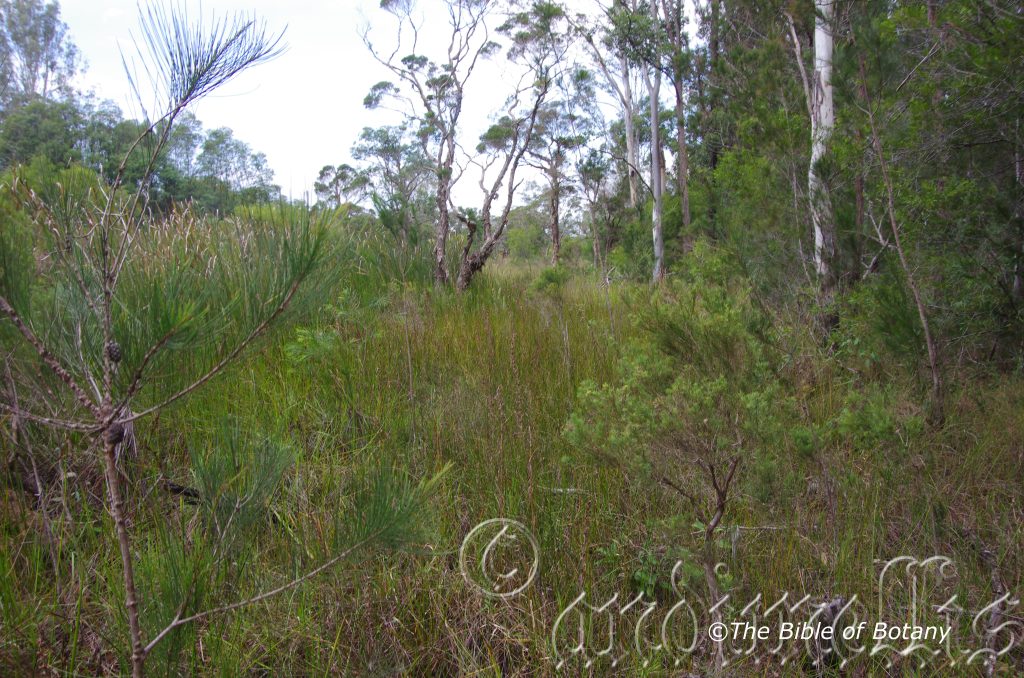
The Pinnacles NSW
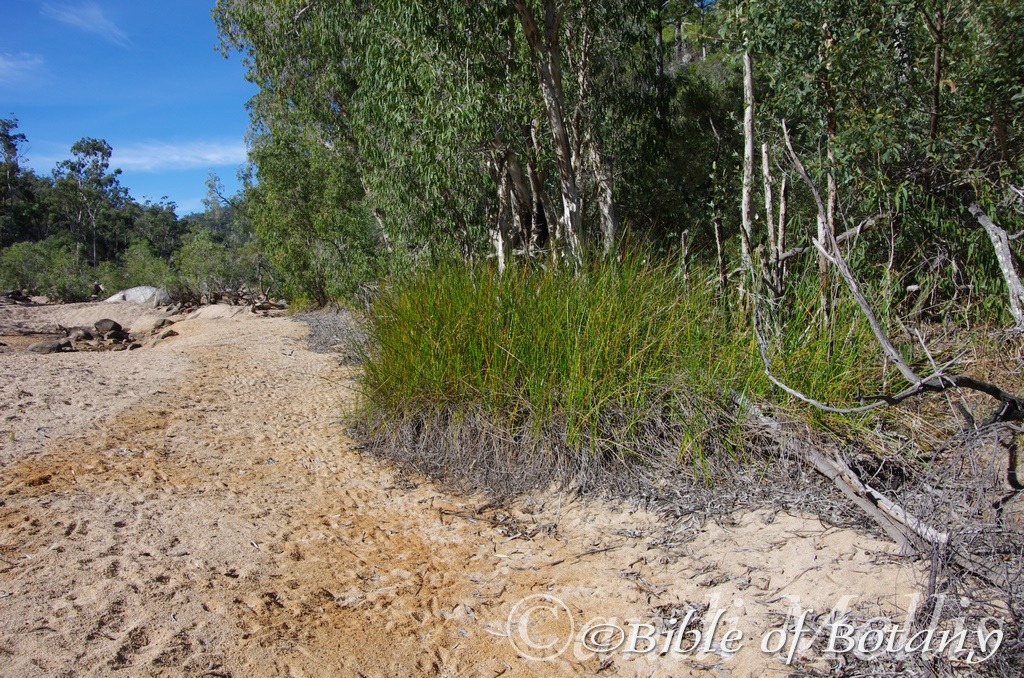
Hidden Valley, Paluma Range Qld.
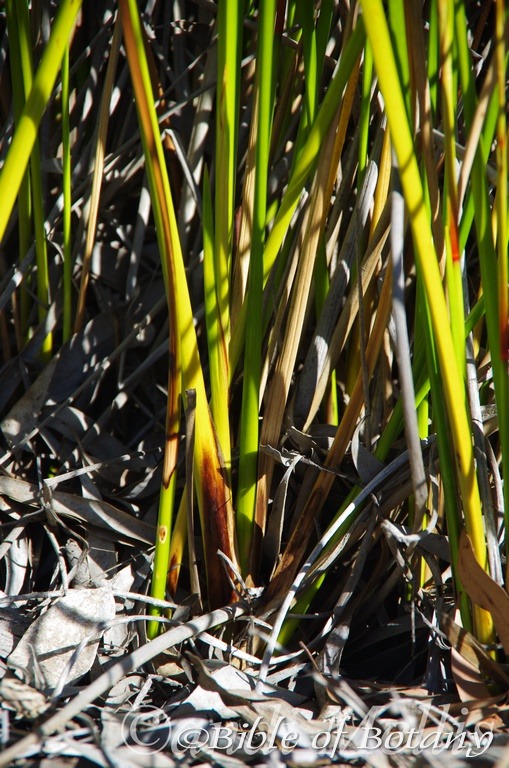
Hidden Valley, Paluma Range Qld.

Hidden Valley, Paluma Range Qld.
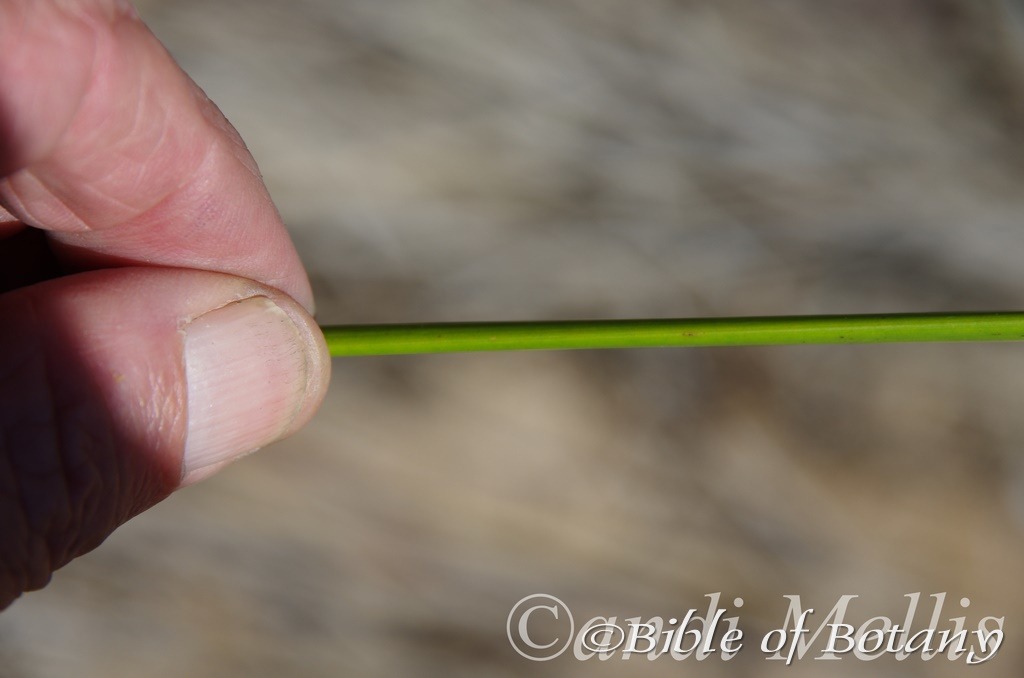
Hidden Valley, Paluma Range Qld.
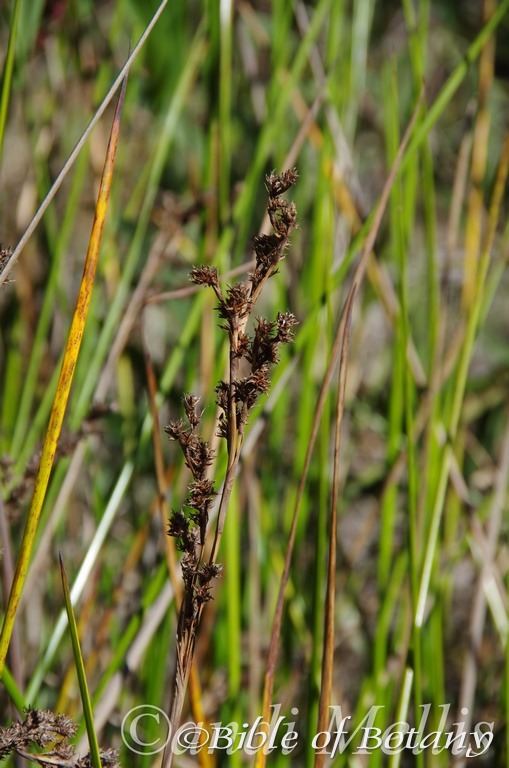
Hidden Valley, Paluma Range Qld.
Machaerina rubiginosa
Classification:
Unranked: Monocots
Class: Commelinids
Order: Poales
Family: Cyperaceae
Genus: From Machaira, which is Ancient Greek for a large knife. It refers to the shape of the leaves in the type species, which resemble a knife.
Specie: From Rubiginosus, which is Latin for rusty-red. It refers to an organ usually the leaves, stems or fruits which have a rusty-red colour.
Sub specie:
Common Name:
Distribution:
Machaerina rubiginosa is found in the south west of Western Australia it can be found within 100 kilometres of the coast south from Yerina Springs Nature Reserve to Cape Le Grand National Park and the off shore Islands. There is an isolated population north of Tom Price in Karjini National Park.
It is found south east from Melville and Bathurst Islands to Groote Eylandt and George Creek west of Lawn Hill in the east of the Northern Territory and far north western Queensland.
It is found in the eastern third of Queensland and New South Wales and the southern two thirds of Victoria to through to the Glenelg River and Naracoorte Coastal Plains in south Eastern South Australia.
In South Australia it is found from Adelaide south to Kangaroo Flat and Kangaroo Island.
It is found in the low land warmer areas of Tasmania.
https://avh.ala.org.au/occurrences/search?taxa=machaerina+rubiginosa+#tab_mapView
Habitat Aspect Climate:
Machaerina rubiginosa prefer light dappled shade to full sun. It usually grows in wet swamps, coastal wallums, ephemeral pools or shallow depressions in open forests or along rivers, streams and creeks close to the coast or at times coastal wallums. The altitude ranges from 5 meters ASL to 1350 meters ASL
The temperatures range from minus 2 degrees in August to 40 degrees in January.
The rainfall ranges from lows of 410mm to 2500mm average per annum except for the population found at Karjini National park where the average rainfall is 269mm per annum. (Based on the city of Tom Price.)
Soil Requirements:
Machaerina rubiginosa prefers better quality deep, gravely loams, light stony fatty clays to medium gravely clays. The soils are usually derived from decomposed sandstones, granites, creek meander alluvial deposits or accumulated peaty beach sands. The soil’s pH ranges from 4.5pH to 7pH. It does not tolerate waterlogged soils. None saline soils to moderately saline soils are tolerated.
Height & Spread:
Wild Plants: 0.7m to 1.1m by 0.4m to 0.6m.
Characteristics:
Machaerina rubiginosa is an erect densely tufted perennial bamboo grass. The rusty-orange rhizomes are short, stout and branched.
The 1 to 2 nodes rarely nodeless culms are erect and measure 200mm to 1100mm in height by 1mm to 5mm diameter. The mid culms internodes and mid-culm nodes are glabrous and smooth while the culms themselves are terete to biconvex and striated.
The leaf sheaths are glabrous, smooth, dull and straw coloured and at times have an orange tinge. The leaves are basal, cauline, flattened near the apex and subteres below. They measure 200mm to 1150mm in length by 1.6mm to 7mm in width. The concolourous laminas are grass-green. The margins are entire.
The interrupted compound inflorescences are in dense clusters. The oblong panicles measure 70mm to 400mm in length by 12mm to 25mm in diameter. The lowest involucral bract is much shorter than inflorescence.
The spikelets are 2 or 3 flowered and measures 4mm to 7mm in length.
The 5 acute to long acute similar glumes are reddish-brown to orange-brown with ciliate margins. The glumes measures 3.7mm to 6mm in length. The lower glume surface is covered in white puberulent hairs. The upper glume is linear and measures 15mm to 20mm in length. The membranous glumes are keels with 5 nerves. The upper glume surface is covered in white puberulent hairs.
The inflorescences have 3 anthers. The anthers measure 1.7mm to 2.9mm in length overall including the 0.2mm to 0.3mm appendages. The flowers appear from late September to February under ideal conditions.
The fruits are smooth, glabrous and yellow-orange to pale orange-brown. The apexes are covered in minute, white hispid hairs. The ellipsoidal to obovoidea nuts measure 2.2mm to 4mm in length by 1.2mm to 2mm in diameter.
Wildlife:
Machaerina rubiginosa’s do not appear to have any predators though the leaf blades are chewed by unknown beetles from time to time. The plants are very popular with several unknown specie of Hover flies or pollen flies.
The seeds are edible but little else is known. The plants are low nutritional value for stock probably because of the tough hard fibrous culms and low volume of leaf material.
Cultivation:
Machaerina rubiginosa is a tall perennial tufted bamboo type reed than other native reeds in the genus. It should be more widely grown in temperate, sub tropical and subtropical ornamental gardens. It is ideal at the edge of fish ponds to add a vertical dimension and a natural scene. It has a place in miniature wet rockeries as the main feature in hot open spaces or confined sunny positions. In cultivation it will grow from 0.4 meter to 0.6 meters in height by 0.2 meters to 0.4 meters in diameter when grown in the open.
A single plant or in small clumps planted around swimming pools or in enclosed courtyards are surprisingly beautiful. The plants create a very strong contrast against hard walls and fences but must be used correctly so they do not look weedy.
It grows exceptionally well on sandier type soil types including pure sand and thrives where high water tables are a problem. It can cope with temperatures as low as minus 4 degrees and up to 44 degrees.
Add to the above, if it is given a little native fertilizer annually it will always have an aura around its deep green culms.
Large mass plantings look weedy so should be avoided. Scattered through small gardens with spaces between it adds a vertical dimension and colour throughout the year. Use a dwarf forms of procumbent plants like dwarf forms of Xerochrysum bracteatum and Xerochrysum viscosum to give a great choice of pinks and reds. Hibbertia species contrast with a range of foliages and bright yellows flowers or for a more subdued but cheerful arrangement of brilliant white flowers and pale grey foliage can be incorporated using Actinotus helianth. Using these plants will give a mosaic of foliage and flower colours that will rival any exotic garden design.
It can be used very affectively in small scaled heath scenes equally as well if not crowded. It should always have a cleared area surrounding each plant to allow for good form otherwise they become spindly and may succumb to the competition and look weedy. Machaerina muelleri would make outstanding contribution to a moist heath garden. Here it can be used as the taller vertical growing plant scattered throughout the heath scene. When you design a flat heath garden which it is well suited don’t use contours to display the plants as heath lands are almost always flat or have a slight rise. Plants must be planted close together and be short so you can see over the tallest ones with the exception of one or two plants at the most.
Place it near old stumps and roots to make the stumps or roots look more gnarled, twisted or bolder while making 1, 2 or even 3 plants look more delicate. Select an area of ground and let your hair down and be imaginative and this is the plant that may just change your life. Remember this plant is rather large for this type of garden so use it sparingly with the other plants when planting and remember that deserts are rolling flat plains not steep hills so it is best to use a gentle slope or a basin with a small pool at the bottom. A billabong affect is the go, not a waterfall or cascades.
Propagation:
Seeds:
The seeds can be collected from the panicles as the majority of the seeds ripen. Once the flowers have died and the first seeds have appeared remove the panicle and place it in a brown paper bag. Seeds will remain viable for several years if kept cool and dry.
Sow the seeds directly into a seed raising mix, keeping them moist. When the seedlings are 40mm to 50mm tall, prick them out and plant them into 50mm native tubes using a good organic mix.
As the seedlings roots reach the bottom of the tubes plant them out into their permanent position. Do not delay as they will develop a large root system quickly and will be difficult to remove without some set back to the vigour or health of the plants.
Division: Machaerina rubiginosa can also be divided, although getting large numbers is more successful from seed. It can be divided by digging up a clump and cutting the fibrous root clumps into two to four equal parts with a spade. Cut all the leaves and stems back to within 50mm to 70mm of the ground level and replant them in a reprepared hole. I usually do this by making sure the old ground level is 10mm to 20mm below that of the new ground level where you want them to be at the same level when everything settles down or plant them at the same level if a small depression is required. Water in thoroughly with a weak solution of one of our fertilizer recommendations.
Fertilize using Seaweed, fish emulsion or organic chicken pellets soaked in water on an alternate basis. Fertilize every two months until the plants are established then twice annually in early September or March to maintain better health, vitality and flowering.
Further Comments from Readers:
Hi reader, it seems you use The Bible of Botany a lot. That’s great as we have great pleasure in bringing it to you! It’s a little awkward for us to ask, but our first aim is to purchase land approximately 1,600 hectares to link several parcels of N.P. into one at The Pinnacles NSW Australia, but we need your help. We’re not salespeople. We’re amateur botanists who have dedicated over 30 years to saving the environment in a practical way. We depend on donations to reach our goal. If you donate just $5, the price of your coffee this Sunday, We can help to keep the planet alive in a real way and continue to bring you regular updates and features on Australian plants all in one Botanical Bible. Any support is greatly appreciated. Thank you.
In the spirit of reconciliation we acknowledge the Bundjalung, Gumbaynggirr and Yaegl and all aboriginal nations throughout Australia and their connections to land, sea and community. We pay our respect to their Elders past, present and future for the pleasures we have gained.
Machaerina teretifolia
Classification:
Unranked: Monocots
Class: Commelinids
Order: Poales
Family: Cyperaceae
Genus: From Machaira, which is Ancient Greek for a large knife. It refers to the shape of the leaves in the type species, which resemble a knife.
Specie: From Teres, which is Latin for smooth or Terer, which is Latin for to rub and make smooth hence Terete, which is Latin for an imperfectly smooth cylinder and Folium, which is Latin for foliage. It refers to leaves which are aciculate, long and cylindrical like.
Sub specie:
Common Name:
Distribution:
Machaerina teretifolia is found in two distinctly disjunct populations south from Harmer Creek on Cape York Peninsula to Cardwell and from Shoalwater Bay near Port Cutis in central coastal Queensland to Wonbouyn Lake in far southern coastal New South Wales. It is mainly found east of the Great Dividing Range.
https://avh.ala.org.au/occurrences/search?taxa=machaerina+teretifolia+#tab_mapView
Habitat Aspect Climate:
Machaerina teretifolia prefer light dappled shade to full sun. It usually grows in moist, swampy ground close to the coast in open woodlands, coastal wallums, and Melaleuca swamps or along creeks and streams. The altitude ranges from 5 meters ASL to 160 meters ASL
The temperatures range from 2 degrees in August to 36 degrees in January.
The rainfall ranges from lows of 950mm to 3000mm average per annum.
Soil Requirements:
Machaerina teretifolia prefers deep, coarse sands, fine sands, gravely loams and light stony fatty clays. The soils are usually derived from decomposed sandstones, granites or accumulated peaty beach sands. The soil’s pH ranges from 4.5pH to 6pH. It tolerates seasonal waterlogged soils or soils with high water tables. None saline soils to moderately saline soils are tolerated.
Height & Spread:
Wild Plants: 0.6m to 1m by several square meters.
Characteristics:
Machaerina teretifolia is an erect open spreading perennial bamboo grass. The pale brown to rusty-brown rhizomes are long and sparsely branched.
The nodeless culms are erect, rigid, terete, subterete or compressed and are smooth, glabrous and striated. The culms measure 300mm to 1000mm in height by 1mm to 2.6mm diameter. The mid culms internodes and mid-culm nodes are covered in white puberulent hairs. The lateral branches are simple.
The leaf sheaths are glabrous or sparsely covered in white puberulent hairs. The leaves are basal and terete or at times sub angular near the apexes and measures 250mm to 900mm in length. The concolourous laminas are grass-green to mid blue-green. The margins are entire.
The narrow oblong compound inflorescences are erect panicles. The panicles measure 80mm to 240mm in length by 15mm to 35mm in diameter. The lowest involucral bract much shorter than inflorescence.
The spikelets are 1 or 2 or at times 3 flowered comprising of 1 to 3 fertile florets. The florets measure 3mm to 4.5mm in length.
The 4 to 6 acute similar glumes are deep reddish-brown to deep orange-brown with ciliate margins. The glumes measure 3mm to 3.5mm in length.
The inflorescences have 3 anthers. The anthers measure 1.5mm to 2mm in length overall including the 0.2mm to 0.3mm appendages. The flowers appear from late September to February under ideal conditions.
The fruits are strongly rugose, dull, pale yellow to mid yellow-brown. The bases are paler with cream papillose hairs while the apex is covered in short white hispid hairs. The obovoidea to globose nuts measure 1.3mm to 2.2mm in length by 0.9mm to 1.5mm in diameter.
Wildlife:
Machaerina teretifolia’s habitat provides shelter and breeding opportunities for many frog species.
The seeds are edible but little else is known. The plants are low nutritional value for stock probably because of the tough hard fibrous culms and low volume of leaf material.
Cultivation:
Machaerina teretifolia is a tall perennial tufted bamboo type reed than other native reeds in the genus. It should be more widely grown in temperate, sub tropical and subtropical ornamental gardens. It is ideal at the edge of fish ponds to add a vertical dimension and a natural scene. It has a place in miniature wet rockeries as the main feature in hot open spaces or confined sunny positions. In cultivation it will grow from 0.4 meter to 0.6 meters in height by 0.2 meters to 0.4 meters in diameter when grown in the open.
A single plant or in small clumps planted around swimming pools or in enclosed courtyards are surprisingly beautiful. The plants create a very strong contrast against hard walls and fences but must be used correctly so they do not look weedy.
It grows exceptionally well on sandier type soil types including pure sand and thrives where high water tables are a problem. It can cope with temperatures as low as minus 4 degrees and up to 44 degrees.
Add to the above, if it is given a little native fertilizer annually it will always have an aura around its deep green culms.
Large mass plantings look weedy so should be avoided. Scattered through small gardens with spaces between it adds a vertical dimension and colour throughout the year. Use a dwarf forms of procumbent plants like dwarf forms of Xerochrysum bracteatum and Xerochrysum viscosum to give a great choice of pinks and reds. Hibbertia species contrast with a range of foliages and bright yellows flowers or for a more subdued but cheerful arrangement of brilliant white flowers and pale grey foliage can be incorporated using Actinotus helianth. Using these plants will give a mosaic of foliage and flower colours that will rival any exotic garden design.
It can be used very affectively in small scaled heath scenes equally as well if not crowded. It should always have a cleared area surrounding each plant to allow for good form otherwise they become spindly and may succumb to the competition and look weedy. Machaerina muelleri would make outstanding contribution to a moist heath garden. Here it can be used as the taller vertical growing plant scattered throughout the heath scene. When you design a flat heath garden which it is well suited don’t use contours to display the plants as heath lands are almost always flat or have a slight rise. Plants must be planted close together and be short so you can see over the tallest ones with the exception of one or two plants at the most.
Place it near old stumps and roots to make the stumps or roots look more gnarled, twisted or bolder while making 1, 2 or even 3 plants look more delicate. Select an area of ground and let your hair down and be imaginative and this is the plant that may just change your life. Remember this plant is rather large for this type of garden so use it sparingly with the other plants when planting and remember that deserts are rolling flat plains not steep hills so it is best to use a gentle slope or a basin with a small pool at the bottom. A billabong affect is the go, not a waterfall or cascades.
Propagation:
Seeds:
The seeds can be collected from the panicles as the majority of the seeds ripen. Once the flowers have died and the first seeds have appeared remove the panicle and place it in a brown paper bag. Seeds will remain viable for several years if kept cool and dry.
Sow the seeds directly into a seed raising mix, keeping them moist. When the seedlings are 40mm to 50mm tall, prick them out and plant them into 50mm native tubes using a good organic mix.
As the seedlings roots reach the bottom of the tubes plant them out into their permanent position. Do not delay as they will develop a large root system quickly and will be difficult to remove without some set back to the vigour or health of the plants.
Division: Machaerina teretifolia can also be divided, although getting large numbers is more successful from seed. It can be divided by digging up a clump and cutting the fibrous root clumps into two to four equal parts with a spade. Cut all the leaves and stems back to within 50mm to 70mm of the ground level and replant them in a reprepared hole. I usually do this by making sure the old ground level is 10mm to 20mm below that of the new ground level where you want them to be at the same level when everything settles down or plant them at the same level if a small depression is required. Water in thoroughly with a weak solution of one of our fertilizer recommendations.
Fertilize using Seaweed, fish emulsion or organic chicken pellets soaked in water on an alternate basis. Fertilize every two months until the plants are established then twice annually in early September or March to maintain better health, vitality and flowering.
Further Comments from Readers:
Hi reader, it seems you use The Bible of Botany a lot. That’s great as we have great pleasure in bringing it to you! It’s a little awkward for us to ask, but our first aim is to purchase land approximately 1,600 hectares to link several parcels of N.P. into one at The Pinnacles NSW Australia, but we need your help. We’re not salespeople. We’re amateur botanists who have dedicated over 30 years to saving the environment in a practical way. We depend on donations to reach our goal. If you donate just $5, the price of your coffee this Sunday, We can help to keep the planet alive in a real way and continue to bring you regular updates and features on Australian plants all in one Botanical Bible. Any support is greatly appreciated. Thank you.
In the spirit of reconciliation we acknowledge the Bundjalung, Gumbaynggirr and Yaegl and all aboriginal nations throughout Australia and their connections to land, sea and community. We pay our respect to their Elders past, present and future for the pleasures we have gained.
Mackinlaya macrosciadea
Classification:
Unranked: Eudicots
Unranked: Asterids
Order: Apiales
Family: Apiaceae
Genus: Is named in honour of John MacKinlay; 1819–1872, who was an Australian explorer in the Northern Territory and Western Australia.
Specie: From Makros, which is Ancient Greek for large and Scias, which is Ancient Greek for an umbrella or umbel. It refers to the large flowering umbels, which resemble an umbrella.
Sub species:
Common Name: Dwarf Umbrella Tree or Parasol Bush.
Distribution:
Mackinlaya macrosciadea is a widespread species which is found in at least 5 disjunct locations in Queensland and the Northern Territory.
In the Northern Territory it is found in the north western parts of Kakadu National Park.
In Queensland it is found from just north of Rockhampton in the south, north to east of Cohen on Cape York Peninsula. Mackinlaya macrosciadea is probably more widespread than the map indicates.
https://avh.ala.org.au/occurrences/search?taxa=Mackinlaya+macrosciadea#tab_mapView
Habitat Aspect Climate:
Mackinlaya macrosciadea prefers light dappled shade to full shade. It grows on creek meander alluvial plains in coastal ranges rainforests, littoral rainforests and monsoonal rainforests. It is found where there is a break in the canopy. The altitude ranges from 10 meters ASL to 1100 meters ASL.
The temperatures range from 5 degrees in August to 40 degrees in January.
The rainfall ranges from lows of 800mm to an average of 4000mm.
Soil Requirements:
Mackinlaya macrosciadea prefers to grow on sandy loams to medium clays with copious quantities of forest litter. The soils are usually derived from black basalts, brown basalts, sandstones or alluvial deposits. The soils pH. ranges from 6pH to 7pH. It does not tolerate waterlogged soils. Non saline soils to moderately saline soils are tolerated.
Height & Spread:
Wild Plants: 1m to 6m by 0.5m to 1m.
Characteristics:
Mackinlaya macrosciadea grow as a large shrub or small tree with mid to deep green, glabrous stems. The plants are easily distinguished by the slender single stems from the base.
Mackinlaya macrosciadea’s compound leaves have petioles that vary greatly in length even on the one plant and even on the one rachis. The rachis on the individual leaflets also vary considerably even on the one compound leaf from 35mm to 90mm in length. The petioles measure 12mm to 40mm in length. The 5 to 7 ovate to elliptical simple leaflets measure 85mm to 160mm by 35mm to 60mm in width. The base is broad cuneate while the apex is broad acuminate. The discolourous laminas are dull olive green to deep sea green and glabrous. The margins are widely serrate to almost entire. The margins curve slightly upwards from the mid vein. The mid vein is prominent on the lower lamina and is visible on the upper lamina.
The inflorescence of Mackinlaya macrosciadea are a compound umbel born on an umbel which is born from the upper leaf axils or terminal. The rachis measures 60 to 110 mm in length while the radiating pedicels off the rachis measure 60mm to 90mm in length. The peduncules measure 5mm to 6mm in length. There are 30 to 60 umbellatus to an umbel. The umbellate measure 12mm to 18mm in diameter.
The 4 or 5 green triangular calyx lobes are glabrous while the 4 obcordate petals are glabrous, white with an emarginated apex. The calyx lobes measure 0.2mm in diameter while the petals measure 1mm in length. The 2 to 3 or rarely single locular ovary is lime green, glabrous and semi glossy. The 5 white stamens measure 1.5mm in length while the lime green style measures less than 0.2mm in length. The pollen is white and quite profuse. The flowers appear from August to November.
Mackinlaya macrosciadea’s fruit is a small drupe. The drupes are laterally compressed. It is glaucous blue, blue-grey or a glaucous purple-blue and measure 9mm to 10mm in length by 11mm to 14mm in width. The calyx lobes and style are persistent at the apex of the drupes. The flesh surrounding the seeds is white. The pale fawn ovoid seeds measure 0.6mm to 0.9mm in length by 0.6mm to 0.8mm diameter.
Wildlife:
Mackinlaya macrosciadea relies upon Bower Birds, Cat Birds and Fig Birds to spread its seeds. The trees leaves are frequently damaged by an unknown butterfly larvae.
Cultivation:
Mackinlaya macrosciadea makes an excellent plant for very shady areas and as an addition to the understory of rainforests. They always look green and fresh especially where adequate ground moisture is retained whether it is grown in light shade or dense shade. It is very suitable on sandy to heavy clay soils and are most suitable for small, medium and large gardens close to the coast in warm temperate, sub-tropical, tropical or semi-arid gardens. As garden subjects they will grow from 1 meter to 2 meters in height by 1m to 2m in diameter. It is cold tolerant to temperatures at least as low as 1 degree once established.
It is most suitable for use around semi shaded swimming pools, courtyards, besides pathways, shady rockeries, along sandy clay banks or along drive ways or adjacent to natural bush gardens. Mass plantings of 5 or more plants even in small areas; really do the plants justification especially when it is in flower and pruned to keep them short and bushy. If it is not pruned they will develop the single stem of their wild parents. Medium frog ponds will benefit from Mackinlaya macrosciadea to give protection to frogs and add that tropical look on a small scale. Plants can be pruned and encouraged to lean out over the edge of such features. When mass planted the blue fruits are very attractive and will hang for a long time if not stolen by small native birds.
If it is placed around a pool, courtyards or other confined spaces then plant them in small groups or scatter plant them for a more informal natural look against walls to help soften them. Using rocks and small boulders can make the pool or any water feature appear like an oasis. The leaves and flowers can make a great start for the larger heath or wallum setting. When making a wallum scene using Mackinlaya macrosciadea use either large rocks with few plants so plant them sparingly with them becoming more densely planted adjacent to the water. Be careful not to over plant as they will look out of place, distract from the other static features and weedy.
If companion plants are sought then the choice of plants to use either side is limited by size of the area to be landscaped and the size of the other plants as they should be no more than 150mm in height to emphasise the Mackinlaya. Try mass plantings of Viola betonicifolia Viola sieberiana, Viola fuscoviolacea or Wahlenbergia stricta if there is a little more sunlight.
Propagation:
Seeds: Mackinlaya macrosciadea seeds can be sown directly into a seed raising mix. Cover the seeds with 5mm to 10mm of fine weed free mulch and keep moist. Place the tray in a warm sunny position and keep moist. When the seedlings are 30mm to 50mm tall, prick them out and plant them into 50mm native tubes using a good organic mix.
Once the seedlings reach 100mm to 150mm in height they can be planted out into their permanent position.
Fertilize using seaweed, fish emulsion or organic chicken pellets soaked in water on an alternate basis. Fertilize every two months until the plants are established then twice annually in early September or March to maintain health, vitality and better flowering.
Further Comments from Readers:
Hi reader, it seems you use The Bible of Botany a lot. That’s great as we have great pleasure in bringing it to you! It’s a little awkward for us to ask, but our first aim is to purchase land approximately 1,600 hectares to link several parcels of N.P. into one at The Pinnacles NSW Australia, but we need your help. We’re not salespeople. We’re amateur botanists who have dedicated over 30 years to saving the environment in a practical way. We depend on donations to reach our goal. If you donate just $5, the price of your coffee this Sunday, We can help to keep the planet alive in a real way and continue to bring you regular updates and features on Australian plants all in one Botanical Bible. Any support is greatly appreciated. Thank you.
In the spirit of reconciliation we acknowledge the Bundjalung, Gumbaynggirr and Yaegl and all aboriginal nations throughout Australia and their connections to land, sea and community. We pay our respect to their Elders past, present and future for the pleasures we have gained.
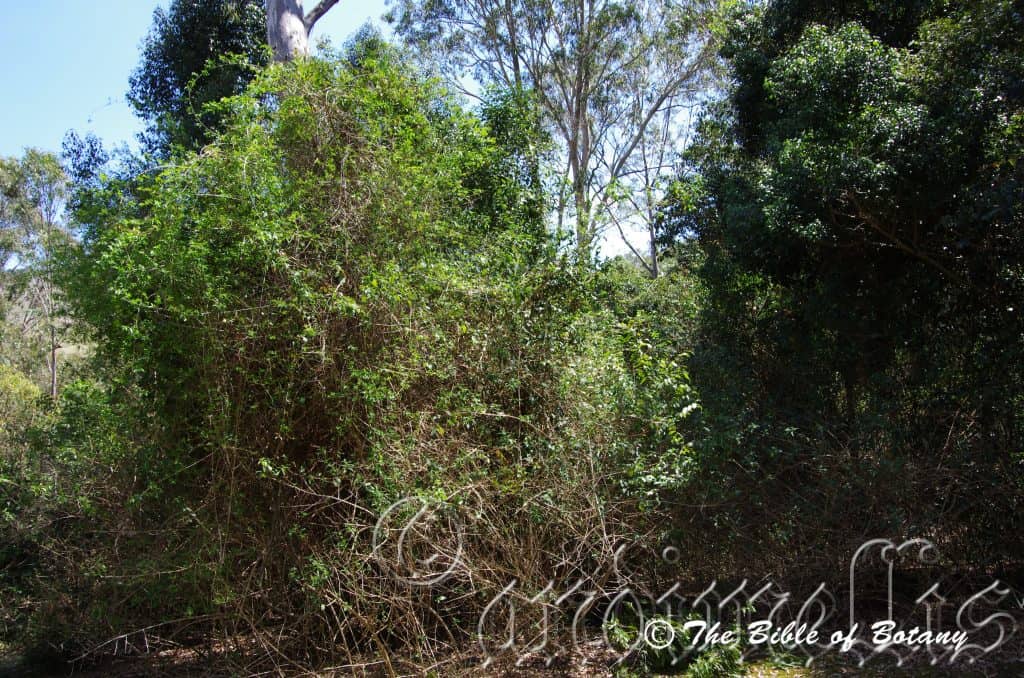
Chinghee National Park Qld.
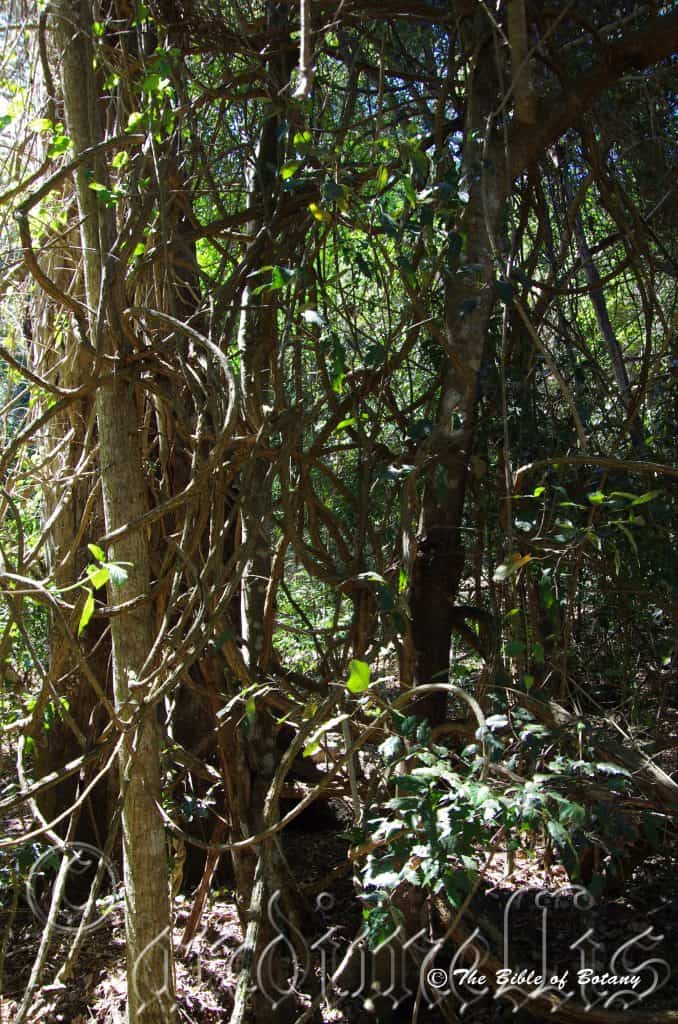
Chinghee National Park Qld.
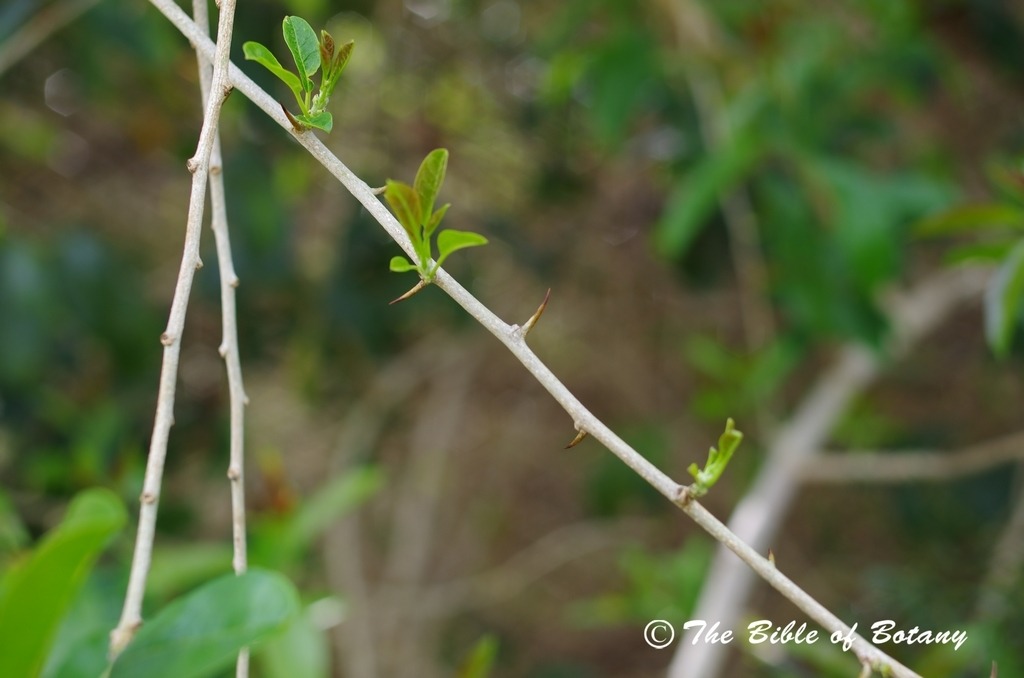
Chinghee National Park Qld.
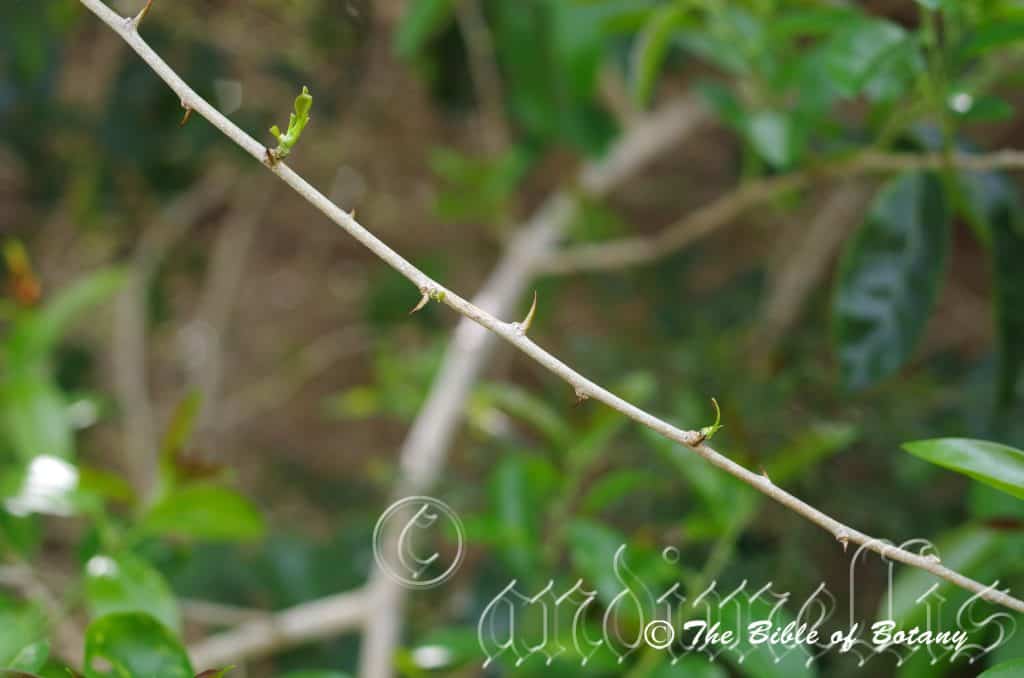
Kedron Brook Qld.
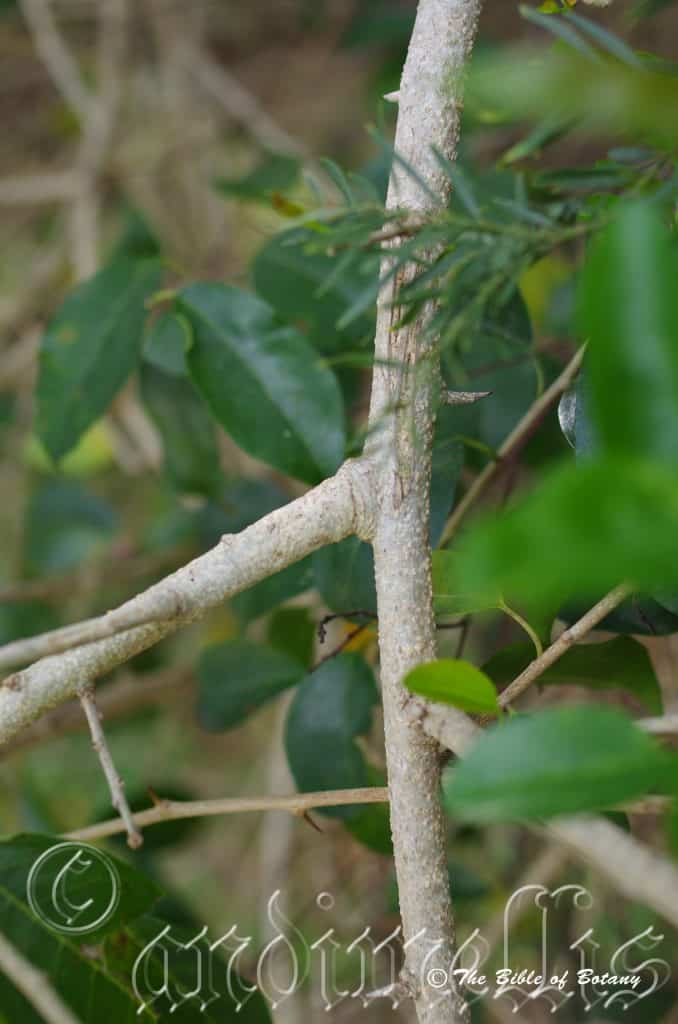
Chinghee National Park Qld.
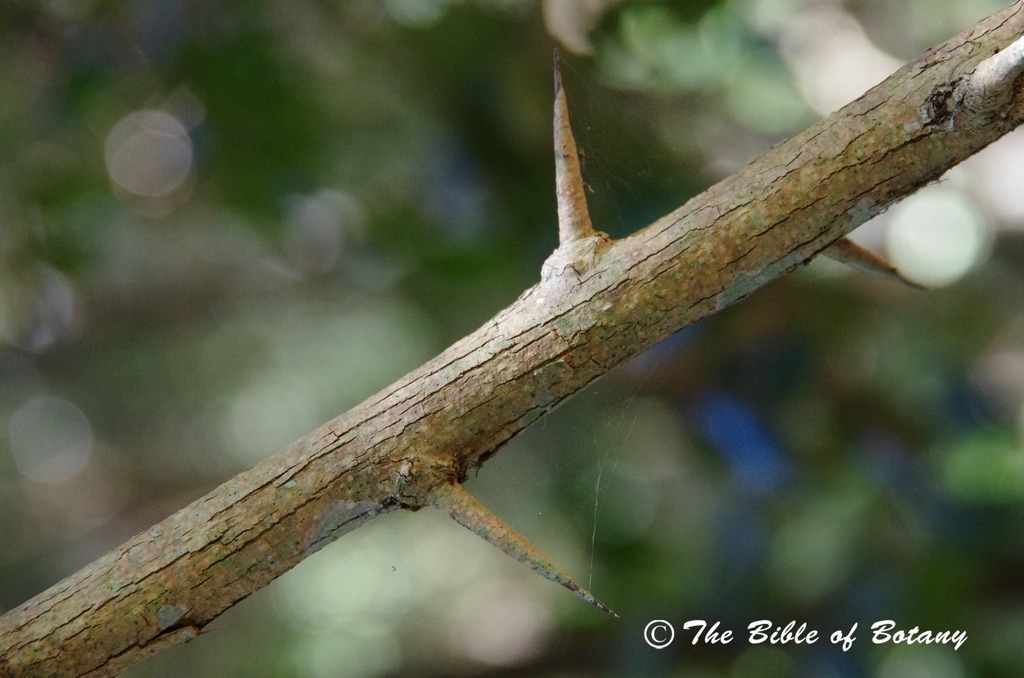
Chinghee National Park Qld.
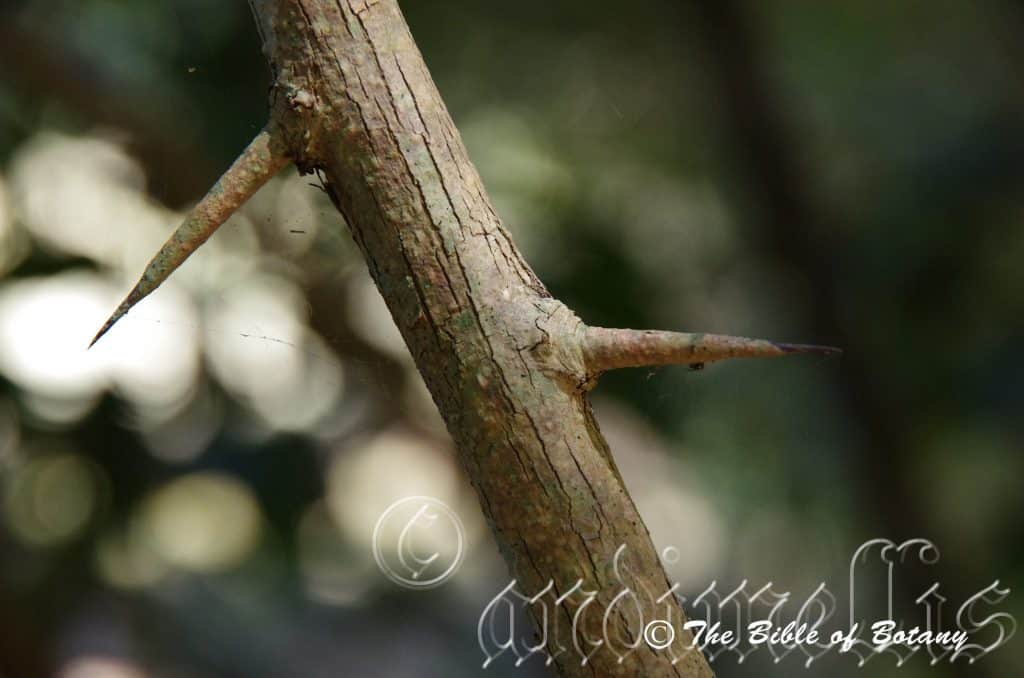
Chinghee National Park Qld.
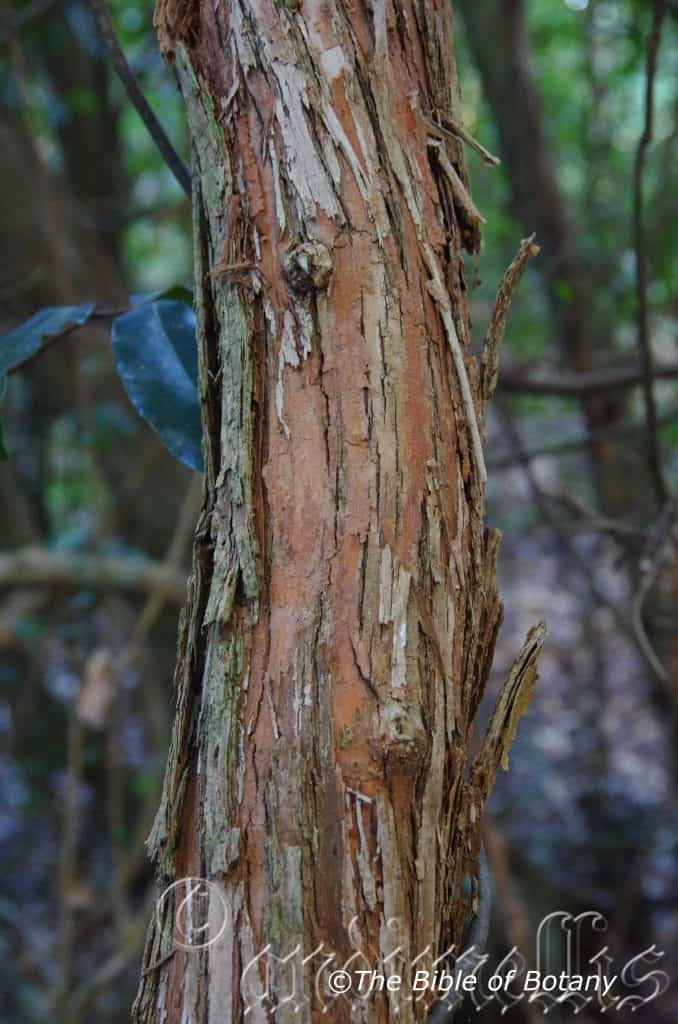
Chinghee National Park Qld.

Chinghee National Park Qld.

Kedron Brook Qld.
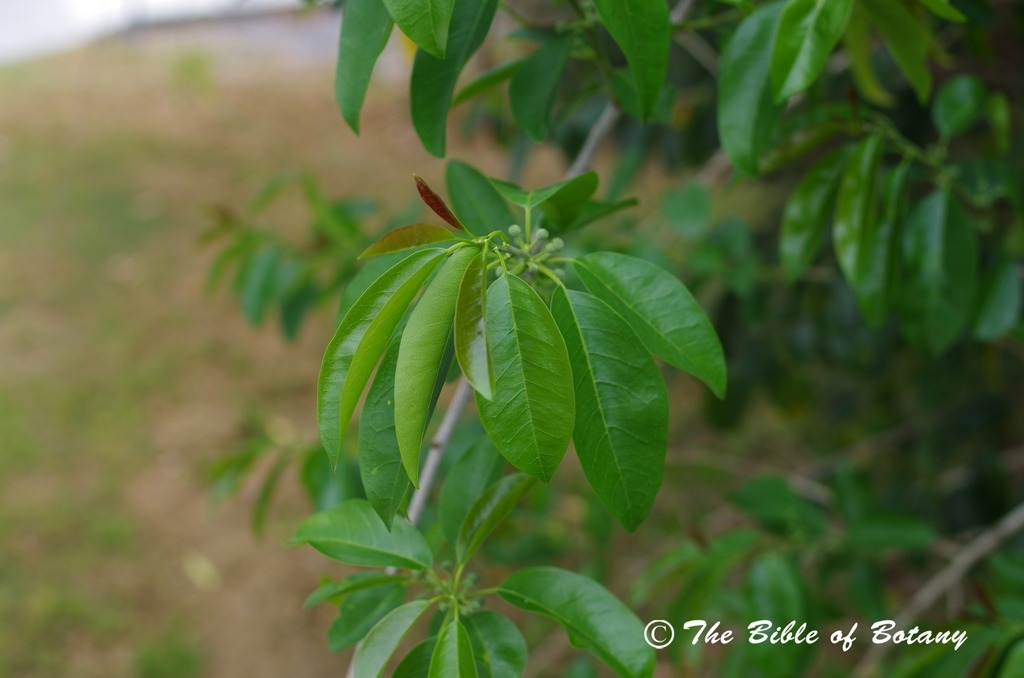
Kedron Brook Qld.
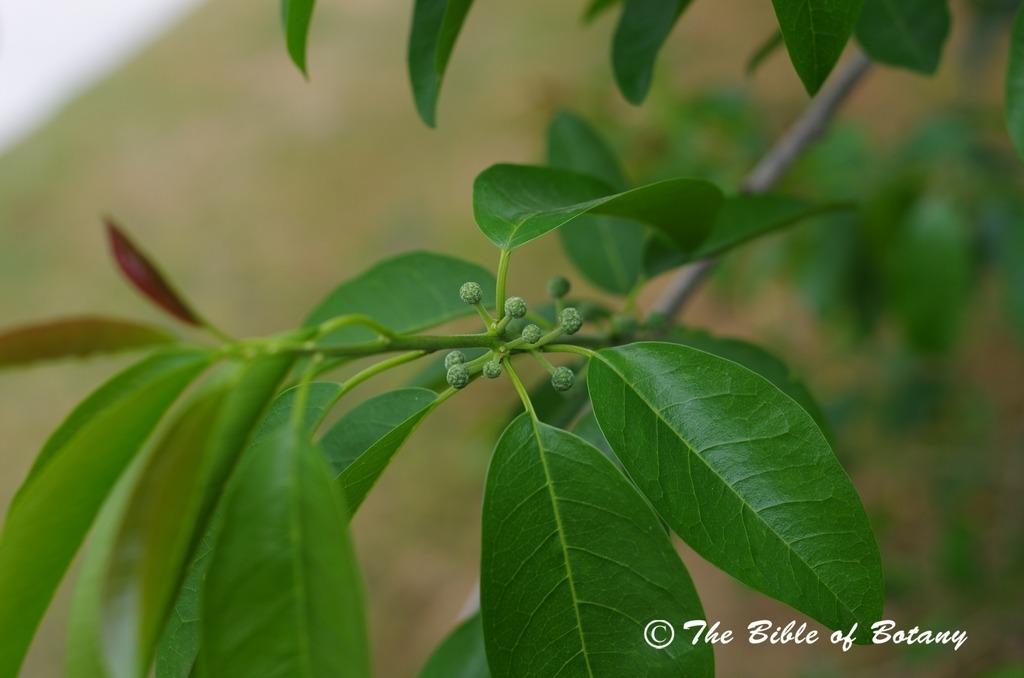
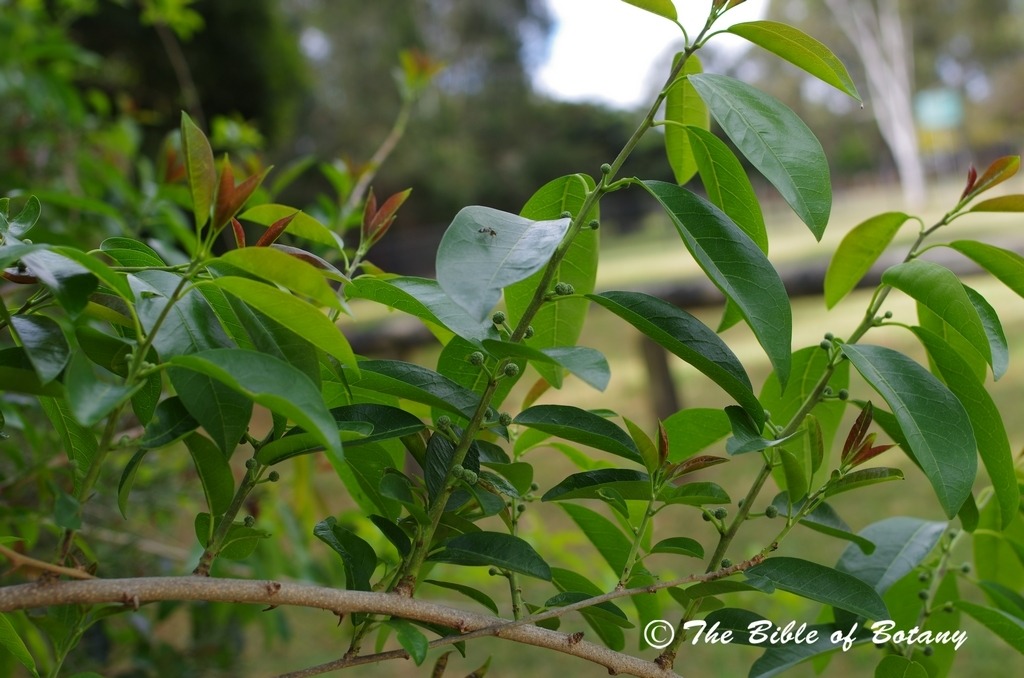
Kedron Brook Qld.
Maclura cochinchinensis
Maclura cochinchinensis
Unranked: Eudicots
Unranked: Rosids
Order: Rosales
Family: Moreaceae
Subfamily: Moreaceae
Tribe: Moreae
Genus: Is named in honour of William Maclur; 1763–1840, who first collected the seeds in which the type specimen was grown.
Specie: From Koccin, which is Latin for the area known now as Vietnam, Chin, which is Latin for China and Anum/Ensis, which are Latin for originating from. It refers to the original plants, which were first discovered along the northern Vietnam and southern China border in Asia.
Sub species:
Common Name: Cockspur or Orange Bark.
Distribution:
Maclura cochinchinensis is a widespread species which is found south from Cape York Peninsula in Queensland to Milton in central coastal New South Wales. It is mainly found on and east of the Great Dividing Range to the coast.
It is found east from Sri Lanka, Thailand, Vietnam, Malaysia, Burma, China, Philipines, Indonesia, Timor and New Guinee.
https://avh.ala.org.au/occurrences/search?taxa=Maclura+cochinchinensis#tab_mapView
Habitat Aspect Climate:
Maclura cochinchinensis prefers light dappled shade to full shade. It grows along creeks meander alluvial flats in coastal rainforests, littoral rainforests, adjacent dry rainforests or moist sclerophyll forests on and adjacent to the coastal ranges. The altitude ranges from 10 meters ASL to 1000 meters ASL.
The temperatures range from minus 3 degrees in August to 38 degrees in January.
The rainfall ranges from lows of 800mm to an average of 4000mm.
Soil Requirements:
Maclura cochinchinensis prefers light sandy clays to medium clays with copious quantities of forest litter. The soils are derived from decomposed basalts, better quality fatty sandstones, shale or alluvial silts. The soils pH. ranges from 4.5pH to 6pH. It does not tolerate waterlogged soils. Non saline soils to very saline soils are tolerated.
Height & Spread:
Wild Plants: 4m to 10m by 5m to 10m.
Characteristics:
Maclura cochinchinensis’s canes are pale grey-brown to fawn with elongated flaky patches and deep furrows on older trunks and canes. The one photographed measured 140mm to 150mm in diameter at 500mm above the ground. Stems and canes are pale grey-brown and are covered in paler coloured lenticels. Young canes and stems are green and glabrous. When the bark, stems or leaves are damaged it exudes a white to creamy coloured watery latex. The blaze is bright orange thus one of its two common names in Australia. The canes or branches are pendulous and are armed with strong rigid spines. The smaller stems are armed with longer recurved spines. The recurved spines measure 8mm to 25mm in length.
Maclura cochinchinensis’s simple asymmetrical to symmetrical elliptical or rarely obovate to ovate leaves measure 35mm to 80mm in length by 15mm to 35mm in width. The base is cuneate while the apex is acuminate. The discolourous laminas are olive green when young turning to deep sea green on maturing, semi glossy and glabrous on the upper laminas while the lower laminas are paler. The margins are entire, flat or curve slightly upwards from the mid vein. The mid vein is prominent on the lower lamina and is distinctly visible on the upper lamina while the lateral veins form a distinct loop near the margin. The narrow triangular caduceus stipules measure 1mm to 2mm in length. The petioles measure 3mm to 10mm in length.
The inflorescence of Maclura cochinchinensis are monoecious and are a very compact umbel born from the leaf axils. The pedicels measure 2mm to 6mm in length while the individual flowers are sessile. The umbels measure 6mm to 11mm in diameter. The 4 white tepals measure 3mm to 3.5mm in length. The 4 white stamens are attached to the tepals and measure 2mm in length. The tepals are slightly covered in white pubescent hairs while the stamens are covered in white pubescent hairs. The pollen is white. The female flowers are similar to the male flowers but have a single style and coil like a cork screw. The flowers appear from August to December.
Maclura cochinchinensis’s fruit is a globose aggregate. The green aggregates (Mulberry or raspberry like fruits) turn yellow orange or red when ripe. The style turns black and is persistent on the aggregates. The aggregates measure 10mm to 20mm in length by 10mm to 20mm in diameter. The pale fawn ovoid seeds measure 4.5mm to 5.5mm in length by 3mm to 4mm wide.
Wildlife:
Maclura cochinchinensis relies upon Bower Birds, Cat Birds and Fig Birds to spread its seeds. The brambles leaves are frequently damaged by the Citrus Blue butterfly. The fruits are edible despite many reports to the contrary however I find there are a lot more palatable fruits available in the bush and these rank very low on my personal scale of pleasure. The young leaves and shoots are also edible and offer a better meal if you are really craving for a bush tucker feast. Lightly boiling does remove some of the dissatisfaction. Thickets are colonized by Double Bar Finches and Red Headed Finches as nesting sites. I have seen various Wrens and Thornbills also nesting within thickets close to the ground.
Cultivation:
Maclura cochinchinensis makes an excellent plant for shady areas or as an addition to the understory of rainforests. Whether it is grown in light shade or dense shade they always look green and fresh especially where adequate ground moisture is retained. It is very suitable on sandy to heavy clay soils and are most suitable for medium and large gardens close to the coast in warm temperate, sub-tropical, tropical and would be worthwhile growing in semi-arid gardens. As garden subjects they will grow from 4m to 10m by 4m to 10m wide but are smaller when grown in the open. It is very fast growing especially when a fertilizing plan is implemented. It is cold tolerant to temperatures at least as low as minus 3 degrees once established.
It needs to be planted away from paths as the recurved spines can be very painful for unsuspecting children running past. If it is pruned and they accept hard pruning once established, they can look very attractive with their trunk and canes arching out from the top. I had one in Nan Glen that looked great just like an open umbrella until I overlooked it a couple of times and it went rampant on me and now looks like a large bramble. Fortunately it is well out of harm’s way.
This plant lend themselves topiary work and I have seen them used in Thailand to great effect.
Propagation:
Seeds: Maclura cochinchinensis seeds can be sown directly into a seed raising mix. Cover the seeds with 5mm of fine weed free mulch and keep moist. Place the tray in a warm sunny position. When the seedlings are 30mm to 50mm tall, prick them out and plant them into 50mm native tubes using a good organic mix.
Once the seedlings reach 100mm to 150mm in height they can be planted out into their permanent position.
Fertilize using seaweed, fish emulsion or organic chicken pellets soaked in water on an alternate basis. Fertilize every two months until the plants are established then twice annually in early September or March to maintain health, vitality and better flowering.
Further Comments from Readers:
Hi reader, it seems you use The Bible of Botany a lot. That’s great as we have great pleasure in bringing it to you! It’s a little awkward for us to ask, but our first aim is to purchase land approximately 1,600 hectares to link several parcels of N.P. into one at The Pinnacles NSW Australia, but we need your help. We’re not salespeople. We’re amateur botanists who have dedicated over 30 years to saving the environment in a practical way. We depend on donations to reach our goal. If you donate just $5, the price of your coffee this Sunday, We can help to keep the planet alive in a real way and continue to bring you regular updates and features on Australian plants all in one Botanical Bible. Any support is greatly appreciated. Thank you.
In the spirit of reconciliation we acknowledge the Bundjalung, Gumbaynggirr and Yaegl and all aboriginal nations throughout Australia and their connections to land, sea and community. We pay our respect to their Elders past, present and future for the pleasures we have gained.
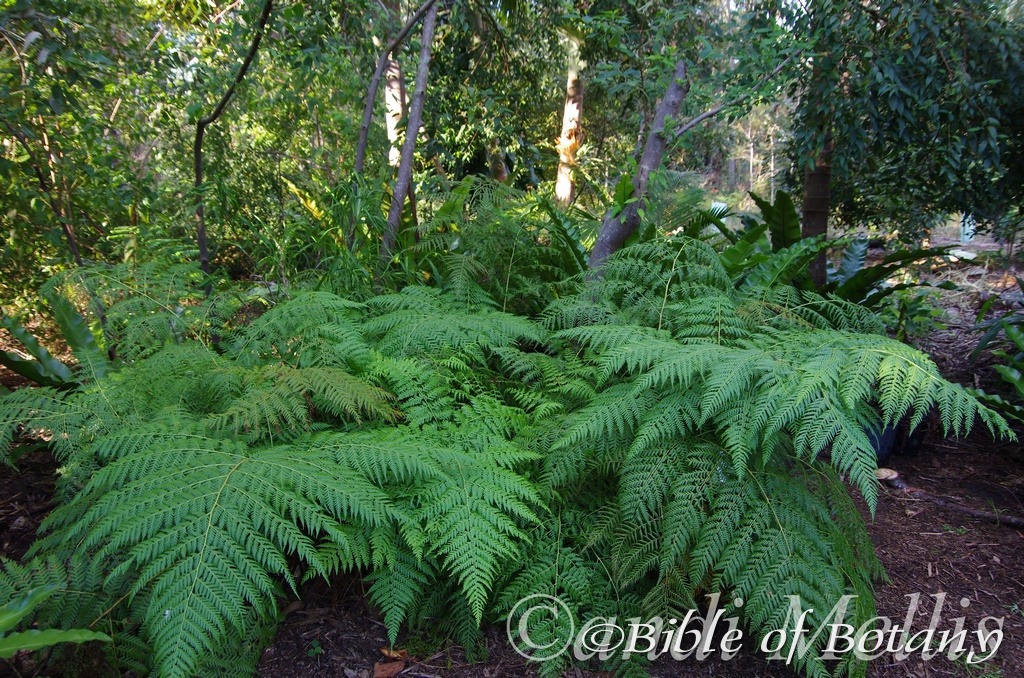
Author’s Garden The Pinnacles NSW
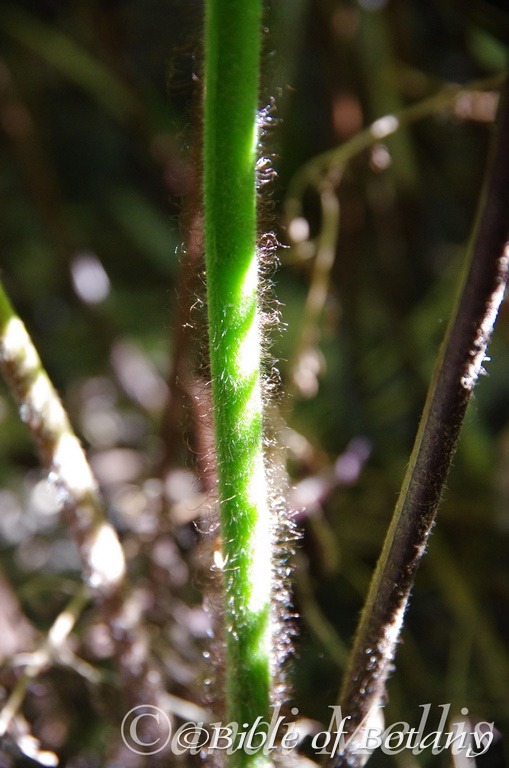
Author’s Garden The Pinnacles NSW
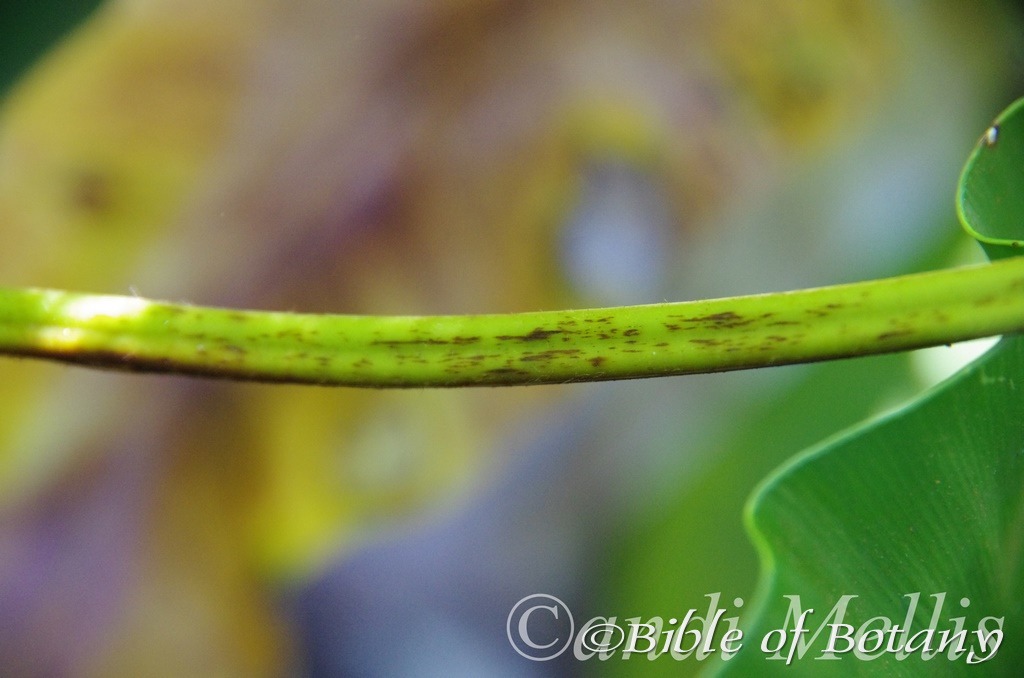
Author’s Garden The Pinnacles NSW
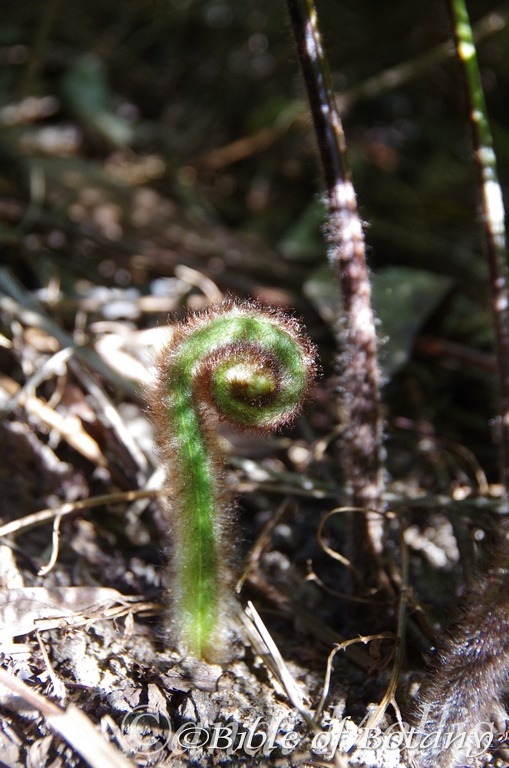
Author’s Garden The Pinnacles NSW
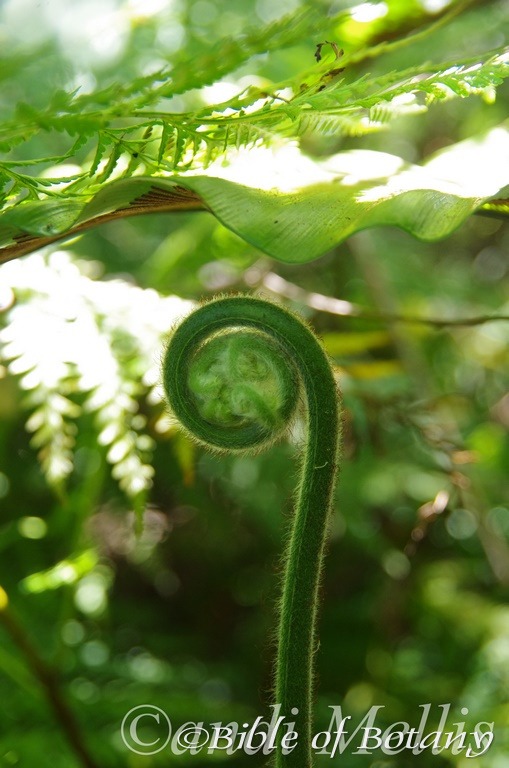
Author’s Garden The Pinnacles NSW

Author’s Garden The Pinnacles NSW
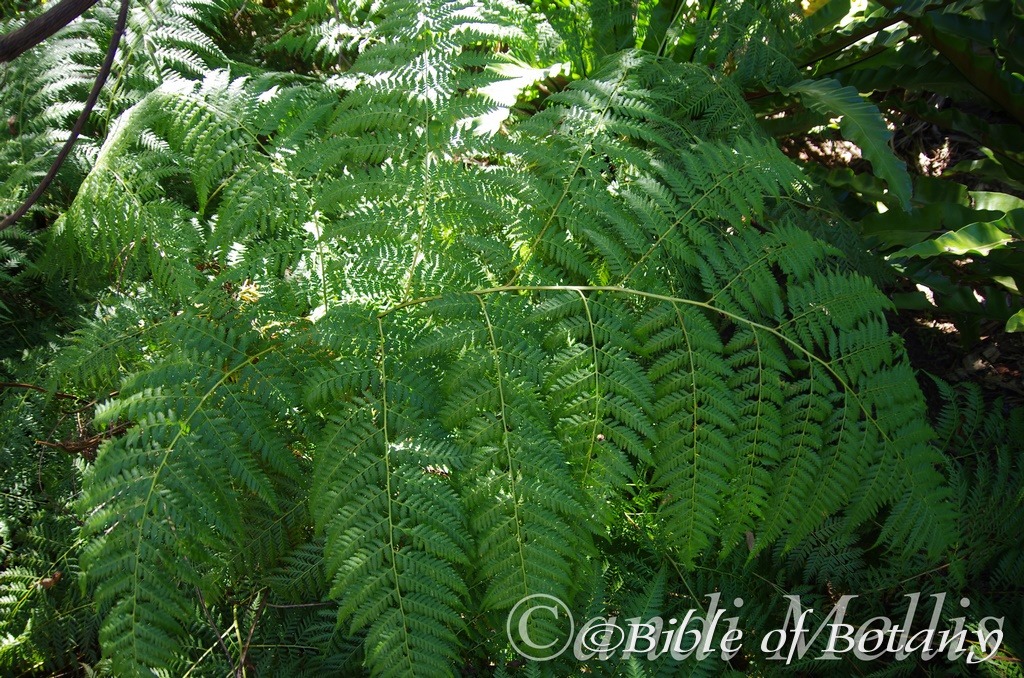
Author’s Garden The Pinnacles NSW
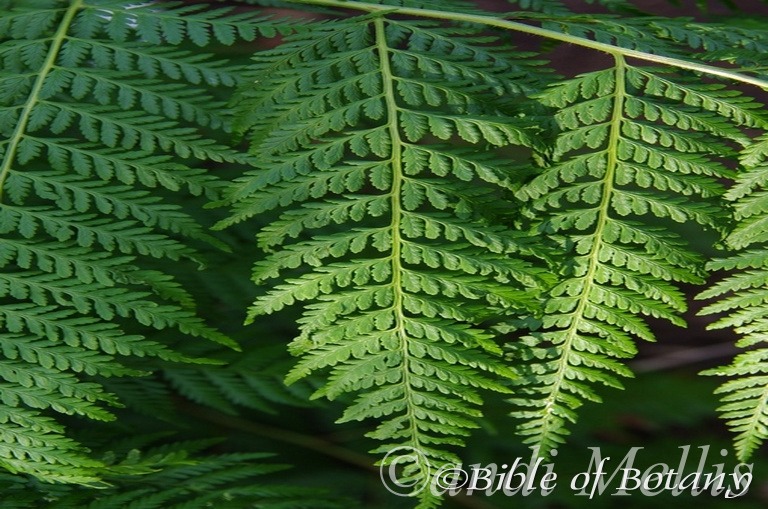
Author’s Garden The Pinnacles NSW
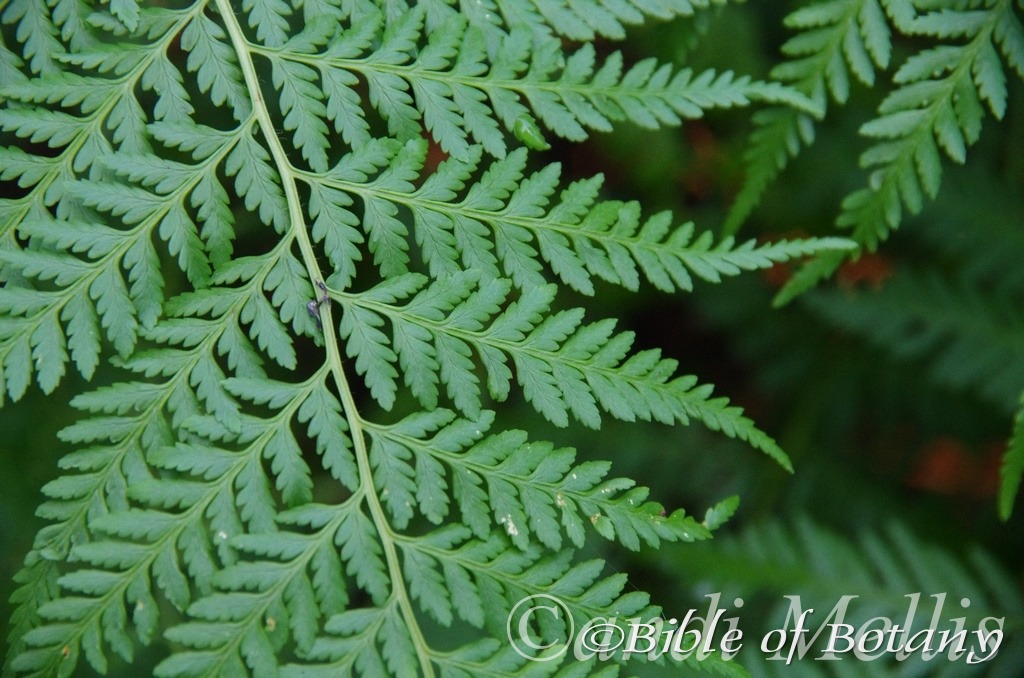
Author’s Garden The Pinnacles NSW

Author’s Garden The Pinnacles NSW

Author’s Garden The Pinnacles NSW
Macrothelypteris torresiana
Classification:
Division: Pteriodophyta
Class: Pteridospida
Order: Blechnales
Family: Thelypteridaceae
Genus: From Makros which is Ancient Greek for large, Thely, which is Ancient Greek for a female or feminine and Pteris, which is Ancient Greek for a fern. It refers to the rather large fronds of this fern which still look very delicate or feminine.
Specie: Maybe from Torosus, which is Latin for a bulge or swelling. It refers to structures or organs, which have a swelling or bulge.
Sub specie:
Common Name: Sword Fern
Distribution
Macrothelypteris torresiana is found in several isolated and disjunct populations in the northern half of Australia. In Western Australia it is found along the Ord River while in the Northern Territory it is found along Camel Creek to Moonlight Gorge near Wollogorang.
In the east it is found south from Capsize Creek near Mount Carter in far north Queensland to Kyogle in far north eastern New South Wales. It is found on and east of the Great Dividing Range except for those populations found in Carnarvon Gorge.
https://avh.ala.org.au/occurrences/search?taxa=Macrothelypteris+torresiana#tab_mapView
Habitat Aspect Climate:
Macrothelypteris torresiana prefers medium shade to dappled sunlight. It is most commonly found growing along creeks, streams, moist drainage lines or moist areas adjacent to coastal wallums or well developed rainforests close to the coast. The altitude ranges from 50 meters ASL to 850 meters ASL
The temperatures range from 0 degrees in August to 38 degrees in January.
The rainfalls range from lows of 1000mm to an average of 3200mm for those populations found on and east of the Great Dividing Range and range from lows of 550mm to 850mm average for those populations found west of the Range.
Soil Requirements:
Macrothelypteris torresiana prefers better quality sandy loams or light sandy clays to medium clays. The soils are usually derived from decomposed sandstones, granites, brown basalts, black basalts, shales, metamorphic rocks or accumulated beach sands. The soils pH. ranges from 4.5pH to 8pH. It tolerates seasonal waterlogged soils however moisture retentive soils which are usually close to a permanent water supply or have prolonged seepage are favoured. Non saline soils to moderately saline soils are tolerated.
Height & Spread:
Wild Plants: 1m to 1.2m by 3m to 5m.
Characteristics:
The rhizomes are thick, tufted, erect and fleshy. It is densely covered with short pale brown appressed scales and sparsely covered in straight to slightly twisted, mid brown to deep brown long, linear scales which have long tapering apexes.
The fronds are mainly bipinnate with pinnatifid pinnae. The stipes are tuberculate at the base and glaucous on the apical half and measure 500mm to 1200mm in height. The fronds measure by 500mm to 700mm in length by 350mm to 500mm in width.
The concolourous laminas are pale blue-green to mid green, dull, glabrous or very sparsely covered in soft white hirsute hairs near the base. The margins are crenate to bluntly poorly formed teeth.
The orbicular sori have very small indusia which are sparsely covered in short white hirsute hairs.
Wildlife:
Macrothelypteris torresiana are often denuded of foliage on an annual basis by an unknown butterfly larvae. The plants recover very quickly especially in cultivation.
Cultivation:
Macrothelypteris torresiana is a beautiful large fern for a wet areas in semi shade in small to large gardens in warm temperate, sub tropical and tropical zones. It is suitable for bright courtyards or in the garden where moist bright conditions prevail. They can handle temperatures down to at least minus 4 degrees with very little burning
Macrothelypteris torresiana is an excellent basket plant when planted in a good mix where consistent watering is not a problem. Drip fed plants on a timer respond very well.
Macrothelypteris torresiana will establish itself from small plants and will reach itself full potential in around 2 to 3 years. There only requirement is a humid microclimate. In the garden in cool spots it will handle full sun without burning provided they do not dry out though some burning of the fronds will occur. Plants that do dry out can be fully rejuvenated very quickly by cutting back hard and soaking the ground with our recommended fertilizing program.
They make ideal plants in gardens that have drainage lines and gullies.
Propagation:
Spores: All ferns that are declared rare, vulnerable or endangered are protected by Federal and State Laws and must not be removed from the wild unless you are a land developer, mining company or main Roads department etc. This includes bulbs, roots, leaves and flowers. No part of any plant can be removed from Federal, State or Local Government land without the prior permission of the authority and this includes the spore.
Most people are put off at the thought of growing ferns from spore. Like all plants that produce their offspring from seed or spore the methods are basically the same. Remember nature has been doing this for millions of years and has been very successful. I have had excellent results growing over 200 different species of Australian ferns so don’t be afraid. Give it a go. Macrothelypteris torresiana is one of the easier and quicker ferns to grow from spore. A great starter fern.
Step 1. Select spore from the fern fronds. Wait until the fern is just starting to release its spore. Rinse the fronds under clean running water and dry. This is to wash off any other spores from rogue ferns that may have settled onto the fronds. (There is nothing worse than having common brake or common soft bracken contaminating a prized tree fern or epiphyte.)
Step 2. Place the dry fronds in a clean brown paper bag and keep them in a cool dark place like the linen closet for about a week to ten days before you are ready to sow the spore. The exception to this rule applies to ferns, which produce green spores. These must be sown immediately that they are released. Todea Barbara is a good example of a fern, which produces green spore.
Step 3. Take a large ice cream container, a small ice cream container and a clean clear plastic bag large enough to seal the large ice cream container and three or four milk bottle tops.
Step 4. Punch or drill 6 to 10 5mm holes in the bottom of the small ice cream container.
Step 5. Wash both containers, tops and plastic bag so that they are very clean and sterile.
Step 6. Use a clean fine seed raising mi. We used 30mm fine sand, 30mm peat and 30mm perlite and 10mm vermiculite. We used crushed basalt, crusher dust and peat in a 50:50 ratio for epiphytes. Moisten the mix enough that water does not run out when the mix is squeezed between the fingers.
Step 7. Place the moisten mix (Enough to half fill the small ice cream container) in the microwave oven with a large glass of water for 7 or 8 minutes, until the water is boiling. Allow them to cool in the oven. You will need the water later so do not tip it out.
Step 8. Take the brown paper bag out of the linen closet. Shake the bag and remove the fronds. You should have a yellow, brown, black or rarely greenish brown or ochre powder or very fine, small round pin head size spore depending on the specie involved.
Step 9. Remove the mixture from the oven once it has cooled and place it in the small ice cream container and level.
Step 10. Sprinkle the spore sparsely over the mixture in the small ice cream container.
Step 11. Place the milk bottle tops in the large ice cream container with the flat surface facing down. Place the small ice cream container in the large ice cream container so that it is sitting on the milk bottle tops.
Step 12. Remove the water from the microwave and pour it into the larger ice cream container so there is 25mm to 30mm of water in the bottom.
Step 13. Place the ice cream containers in the plastic bag and seal. Step 14. Place the contents and bag in a warm shady place preferably 50mm to 70mm shade depending on the specie. Shade houses and some window sills are ideal.
Step 15. The surface should turn green within a week to two weeks. The prothallus will then develop. From the prthalus the first true fronds will appear. Wait until the ferns are 20mm to 35mm in height before you attempt to transplant them. Once they are ready open the bag up slightly and allow the air to flow around the little ferns. Every 3 to 5 days open the bag a little further so the ferns get use to their new environment. Allow them a week to two weeks to harden off before you transplant them following the removal of the plastic bag. Carefully prick them out into 50mm standard squat tubes as you would any seedling.
Do not try to transplant them as single plants as they are still a little delicate still.
Once the smaller ones again reach 50mm to 70mm you may wish to divide the stronger and hardier individual plants into smaller clumps in 100mm squat pots.
Step 16. We fertilized with seaweed, fish emulsion or organic chicken pellets soaked in water on an alternate basis until established. Fertilize every two months for one year even when in the ground.
Further Comments from Readers:
Hi reader, it seems you use The Bible of Botany a lot. That’s great as we have great pleasure in bringing it to you! It’s a little awkward for us to ask, but our first aim is to purchase land approximately 1,600 hectares to link several parcels of N.P. into one at The Pinnacles NSW Australia, but we need your help. We’re not salespeople. We’re amateur botanists who have dedicated over 30 years to saving the environment in a practical way. We depend on donations to reach our goal. If you donate just $5, the price of your coffee this Sunday, We can help to keep the planet alive in a real way and continue to bring you regular updates and features on Australian plants all in one Botanical Bible. Any support is greatly appreciated. Thank you.
In the spirit of reconciliation we acknowledge the Bundjalung, Gumbaynggirr and Yaegl and all aboriginal nations throughout Australia and their connections to land, sea and community. We pay our respect to their Elders past, present and future for the pleasures we have gained.
Macrozamia communis
Classification:
Unranked: Cycadophyta
Class: Cycadopsida
Order: Cycadales
Family: Zamiaceae
Genus: From Makros, which is Ancient Greek for large and Zamia, which is Ancient Greek for a pine cone. It refers to fruits, which resemble a large pine cone typical of the Zamia genus.
Specie: From Comunis which is Latin for gregarious or of a community. It refers to plants, which can form dense thickets or grow in groups as in a community.
Sub species:
Common Name: Burrawang.
In the Aboriginal language it is known as Burrawang.
Distribution:
Macrozamia communis is found south from Foster to Bega in the in eastern New South Wales. It is usually found from near the coast to the higher peaks of the Great Dividing Range in the northern parts of its range.
https://avh.ala.org.au/occurrences/search?taxa=Macrozamia+communis#tab_mapView
Habitat Aspect Climate:
Macrozamia communis prefers light dappled shade to dense shade. It grows open Eucalyptus forests, closed Eucalyptus forests or dry rainforests. This is a large stiff leaf palm like plant with large crimson red fruits. The altitude ranges from 10 meters ASL to 700 meters ASL.
The temperatures range from minus 4 degrees in August to 38 degrees in January.
The rainfall ranges from lows of 800mm to an average of 1200mm.
Soil Requirements:
Macrozamia communis prefers sandy loams to medium gritty clays often with copious quantities of leaf litter. The soils are usually derived from black basalts, granites, sandstones or accumulated beach sands. The soils pH. ranges from 4.5pH to 6pH. It does not tolerate waterlogged soils. Non saline soils to moderately saline soils are tolerated.
Height & Spread:
Wild Plants: 1.5m to 3m by 3m to 4.5m.
Characteristics:
Macrozamia communis trunk is mostly subterranean when growing on deep friable loams. They form a rough black trunk where the old leaf petioles have been burnt. On very old plants where the soils are shallow the trunk measures up to 2 meters in length by 300mm to 600mm in diameter.
Macrozamia communis leaves grow in flushes and measure 1800mm to 2000mm in length by 600mm to 700mm in width. There are 50 to 100 leaves in the crown which form a rosette. The rachis is not twisted on this specie. The individual linear pinnae number 70 to 130.The longest placed towards the middle of the rachis and measure 160mm to 350mm in length by 4mm to 12mm wide. The base is truncate and sessile while the apex is narrowly acute. The laminas are deep sea green. It is rigid, Coriaceous, glossy when young turning dull as they mature and glabrous. The laminas are concolourous while the margins are entire. There are 7 to 13 slightly mid prominent veins on the lower lamina and it is scarcely visible on the upper lamina. The margins are entire. The pinnae near the base are reduced to spines. The petioles measure 120mm to 600mm in length before the first spines appear.
The inflorescence of Macrozamia communis is a compact cone born from the terminal point. The plants are dioecious, that is male and female cones appear on different plants. The male cones measure 200mm to 450mm by 80mm to 120mm in diameter. The longest spines measure 20mm to 50mm in length by 6mm to 8mm in width. The female cones measure 200mm to 450mm by 80mm to 120mm in diameter. The longest spines measure 40mm to 100mm in length by 10mm to 20mm in width. The flowers appear after fire, drought or in older plants more regularly at the end of the drier season.
Macrozamia communis fruit is a very large globose cone. The cones are glaucous blue-green with the seeds turning bright crimson-red when ripe. The seeds are a tapered square roughly conical shape which measure 35mm to 50mm in length by 20mm in diameter near the base and 40mm in diameter near the apex.
Wildlife:
Macrozamia communis predators are unknown to the author.
Seeds toxic unless properly prepared.
Cultivation:
Macrozamia communis makes an excellent showy plant for dappled shady areas as an understory plant in open dry woodlands where the soils are sandy loams. They always look green and fresh especially where some ground moisture is retained. It is very suitable for small, medium and large gardens close to the coast in warm temperate, sub-tropical, tropical gardens and would be worthwhile growing in semi-arid gardens. As garden subjects they will grow from 1 meter to 2 meters in height by 3 meters to 4 meters in diameter. It is very slow growing even where a fertilizing plan is being implemented. It is cold tolerant to temperatures at least as low as 5 degrees once established.
It must be planted away from paths so the spines cannot come into contact with young children. It is particularly handsome placed beneath Eucalyptus trees in a park like setting of in an open woodland garden on shallow soils where they will eventually form a trunk. Again it looks great when mass planted or mixed with other Cycads. Used on banks in mass they can deliver a very strong regimented look even though it is scattered around in an informal look. Hibbertia planted below look very striking, especially Hibbertia scandens when it is used as a ground cover.
Propagation:
Seeds: Macrozamia communis seeds can be sown directly into a seed raising mix after the seeds have been nicked. Cover the seeds with 15mm to 20mm of fine weed free mulch and keep moist. Place them in a deep tray and place the tray in a warm sunny position. When the seedlings are 60mm to 100mm tall and at the 2 leaf stage, prick them out and plant them into 50mm native tubes using a good organic mix.
Once the seedlings reach 150mm to 250mm and are at the 5 to 7 leaf stage they can be planted out into their permanent position.
Growth is very slow so patience is required.
The soils pH. ranges from 6pH to 7pH. It does not tolerate waterlogged soils. Non saline soils to moderately saline soils are tolerated.
Fertilize using seaweed, fish emulsion or organic chicken pellets soaked in water on an alternate basis. Fertilize every two months until the plants are established then twice annually in early September or March to maintain health, vitality and better flowering.
Further Comments from Readers:
Hi reader, it seems you use The Bible of Botany a lot. That’s great as we have great pleasure in bringing it to you! It’s a little awkward for us to ask, but our first aim is to purchase land approximately 1,600 hectares to link several parcels of N.P. into one at The Pinnacles NSW Australia, but we need your help. We’re not salespeople. We’re amateur botanists who have dedicated over 30 years to saving the environment in a practical way. We depend on donations to reach our goal. If you donate just $5, the price of your coffee this Sunday, We can help to keep the planet alive in a real way and continue to bring you regular updates and features on Australian plants all in one Botanical Bible. Any support is greatly appreciated. Thank you.
In the spirit of reconciliation we acknowledge the Bundjalung, Gumbaynggirr and Yaegl and all aboriginal nations throughout Australia and their connections to land, sea and community. We pay our respect to their Elders past, present and future for the pleasures we have gained.
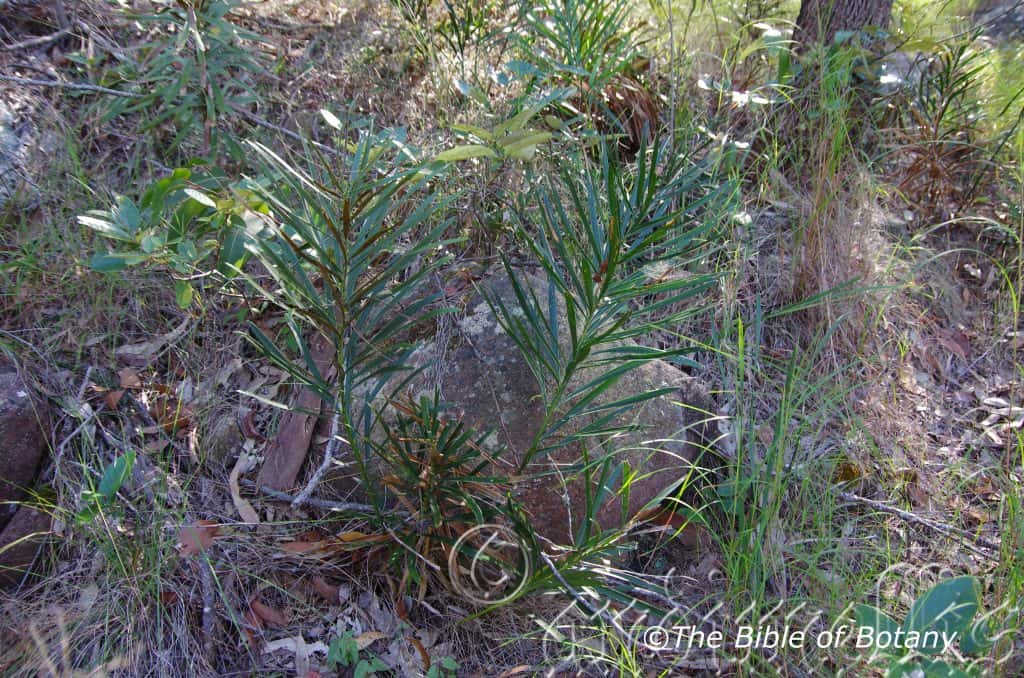
Wooli NSW

Wooli NSW
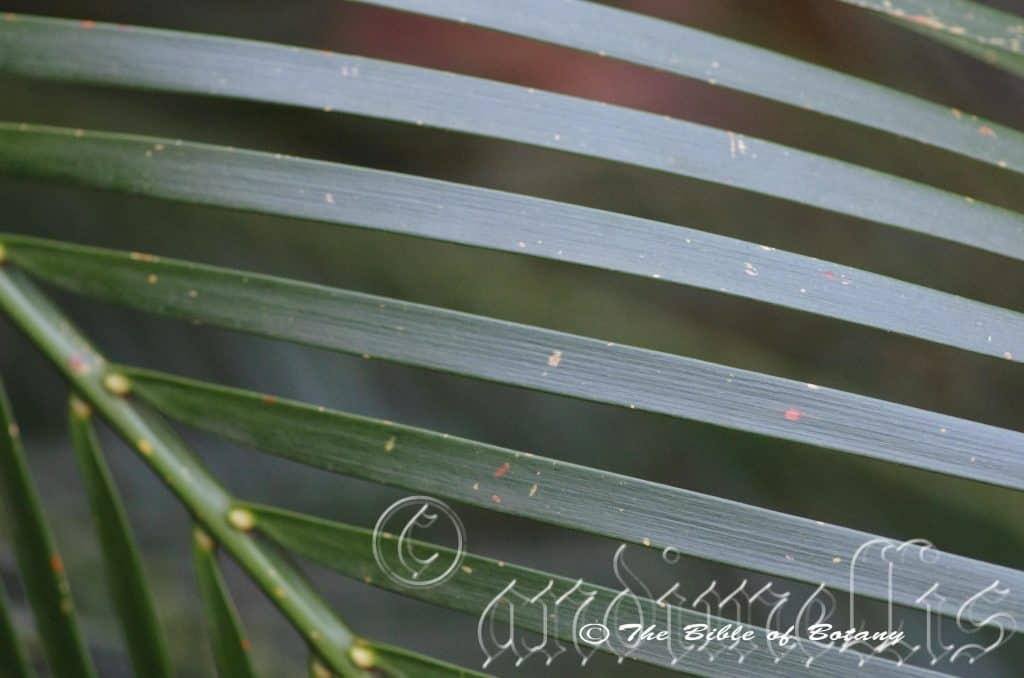
NCBG Coffs Harbour NSW

NCBG Coffs Harbour NSW
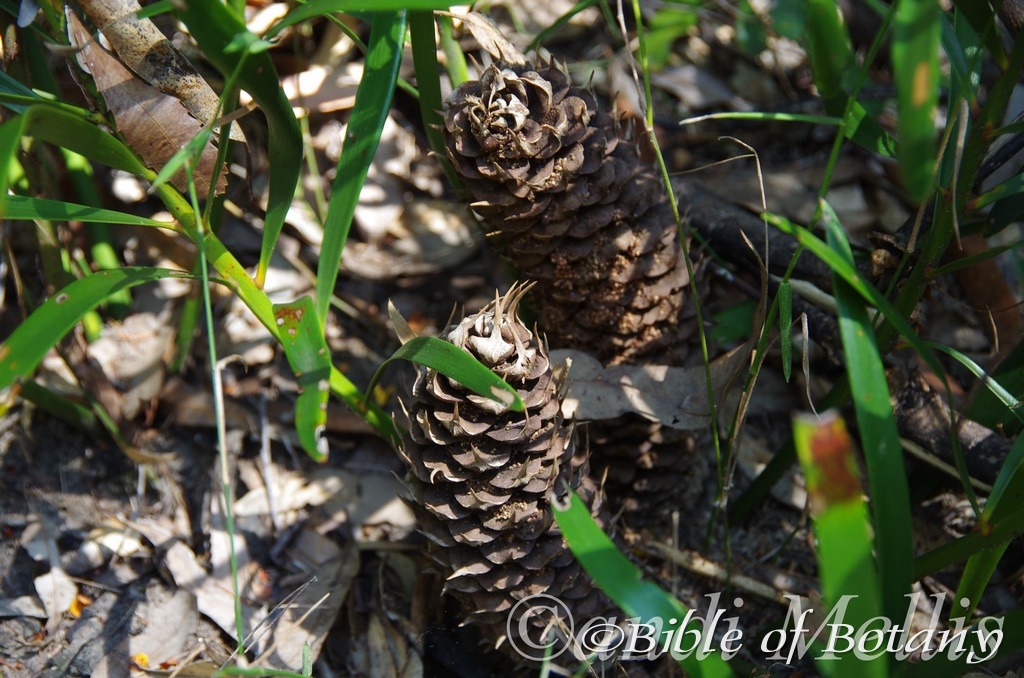
Male Flowers Morgan’s Camp Trail Fortis Creek National Park NSW

NCBG Coffs Harbour NSW
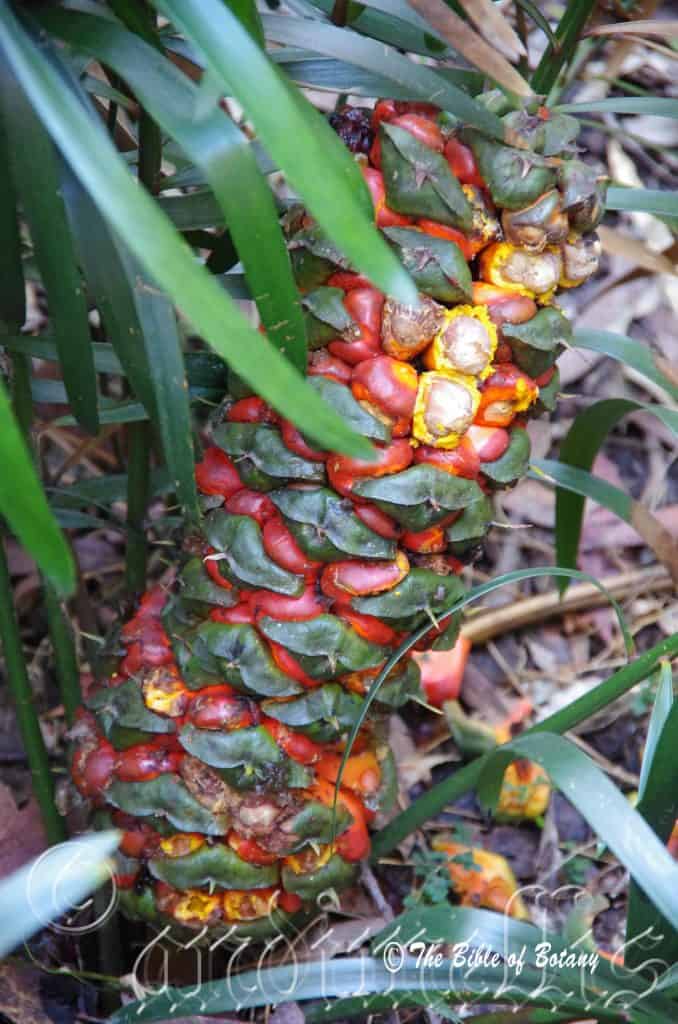
NCBG Coffs Harbour NSW

Wooli NSW
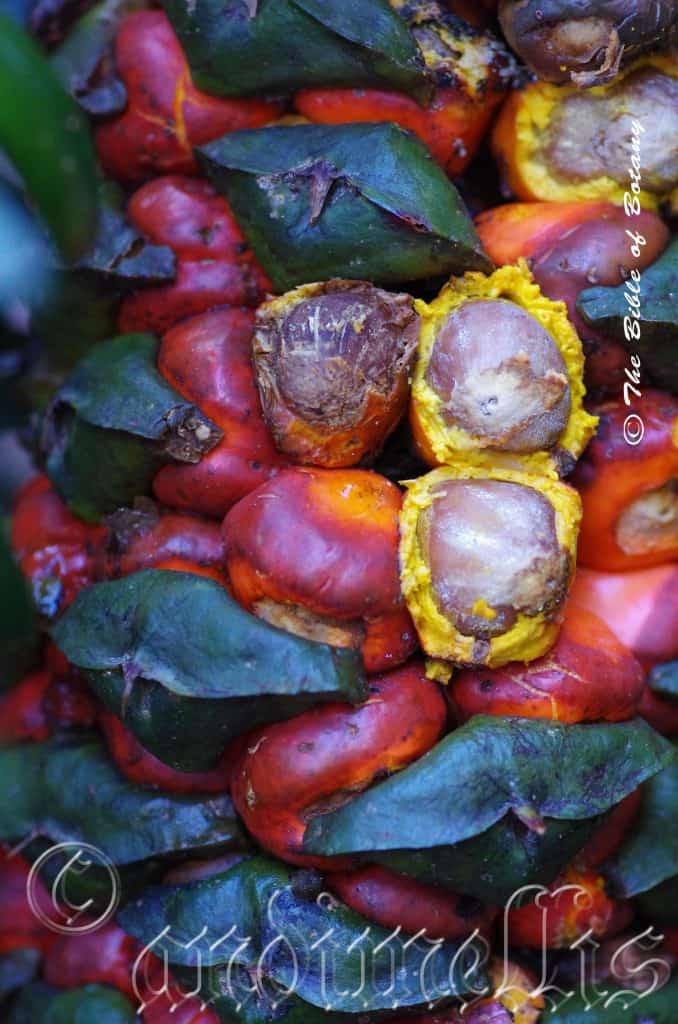
NCBG Coffs Harbour NSW
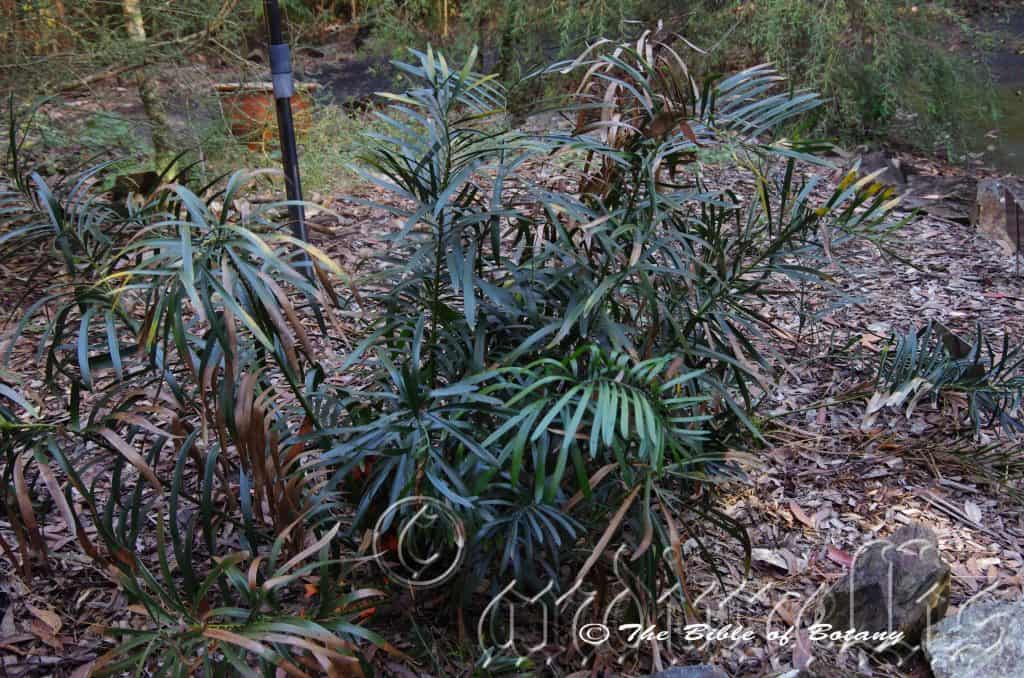
NCBG Coffs Harbour NSW
Macrozamia fawcettii
Classification:
Unranked: Cycadophyta
Class: Cycadopsida
Order: Cycadales
Family: Zamiaceae
Genus: From Makros, which is Ancient Greek for large and Zamia, which is Ancient Greek for a pine cone. It refers to fruits, which resemble a large pine cone typical of the Zamia genus.
Specie: Is named in honour of Hugh Charles Fawcett; 1812-1890, who was an Australian policeman who collected specimens for Ferdinand Von Mueller in the Richmond River District in northern New South Wales.
Sub species:
Common Name:
Distribution:
Macrozamia fawcettii is restricted to an area on the far north coast of New South Wales bounded by Tenterfield, the upper Richmond River catchment, Woolgoolga and Bucca Bucca Creek between Bucca and Nana Glen. It is mainly found on of the Great Dividing Range and coastal ranges.
https://avh.ala.org.au/occurrences/search?taxa=Macrozamia+fawcettii#tab_mapView
Habitat Aspect Climate:
Macrozamia fawcettii prefers light dappled shade to dense shade. It grows dry sclerophyll forests, moist sclerophyll forests and adjacent to dry rainforests. This is a small stiff leaf palm like plant with large crimson red fruits. The altitude ranges from 70 meters ASL to 700 meters ASL.
The temperatures range from minus 3 degrees in August to 38 degrees in January.
The rainfall ranges from lows of 700mm to an average of 1600mm.
Soil Requirements:
Macrozamia fawcettii prefers to grow on sands, poor quality sandy loams to medium clays with copious quantities of leaf litter. The soils are derived from decomposed sandstones or granites. The soils pH. ranges from 5pH to 6.5pH. It does not tolerate waterlogged soils. Non saline soils to moderately saline soils are tolerated.
Height & Spread:
Wild Plants: 1.5m to 3m by 3m to 4.5m.
Characteristics:
Macrozamia fawcettii’s trunk is mostly subterranean when growing on deep friable loams. They form a rough black trunk where the old leaf petioles have been burnt. The trunk measures 210mm to 300mm in length by 100mm to 200mm in diameter.
Macrozamia fawcettii’s leaves grow in flushes and measure 600mm to 1100mm in length by 600mm to 700mm in width. There are 2 to 12 leaves in the crown which form a rosette on larger plants. The rachis is spirally twisted on this specie. The individual linear pinnae number 40 to 64.The longest, linear, twisting leaflets are basally proximal on the rachis. The leaflets measure 50mm to 315mm in length by 9mm to 17mm wide. The bases taper to the rachis and are sessile while the apexes are acute with 2 to 7 small teeth. The concolourous laminas are deep sea green, rigid, thickly coriaceous, glossy and glabrous. The laminas are flat and moderately twisted while the margins are entire. There are 10 to 13 slightly prominent veins on the lower lamina which are scarcely visible on the upper lamina.
The dioecious inflorescence of Macrozamia fawcettii are compact cones born from the center of the subterranean trunks.
The male cones measure 150mm to 250mm by 40mm to 60mm in diameter. The longest spines measure 12mm to 18mm in length. The pedicels measure 50mm to 85mm in length.
The female cones measure 120mm to 180mm by 70mm to 90mm in diameter. The longest spines measure 12mm to 25mm in length. The pedicels measure 40mm to 70mm in length. The flowers appear after fire, drought or in older plants more regularly at the end of the drier season.
Macrozamia fawcettii’s fruit is a very large globose cone. The cones are deep green to sea-green with the seeds turning bright orange-red to scarlet-red when ripe. The seeds are a tapered square to rhomboidal and conical in shape. They measure 25mm to 30mm in length by 20mm to 25mm in width and 12mm to 16mm in height near the apex.
Wildlife:
Macrozamia fawcettii predators are unknown to the author.
The seeds are toxic unless properly prepared.
Cultivation:
Macrozamia fawcettii makes an excellent showy plant for dappled shady areas as an understory plant in open dry woodlands on sandy loams. It always look green and fresh especially where a little ground moisture is retained. It is very suitable for small, medium and large gardens close to the coast in warm temperate, sub-tropical, tropical gardens and would be worthwhile growing in semi-arid gardens. As garden subjects they will grow from 0.7 meters to 1 meter in height by 1 meter to 1.5 meters in diameter. It is very slow growing even where a fertilizing plan is being implemented. It is cold tolerant to temperatures at least as low as 5 degrees once established.
It is best planted close to paths with small native annuals so the deep green strap like leaves can be fully appreciated. It is particularly handsome placed beneath Eucalyptus trees in a park like setting of in an open woodland garden. Again it looks at its best when mass planted with colour between each plant. Used on banks in mass they can deliver a very strong regimented look even though it is scattered around in an informal look. Hibbertia planted below look very striking especially Hibbertia obtusifolia, Hibbertia linearis or Hibbertia villosa when used to cover the ground.
Propagation:
Seeds: Macrozamia fawcettii seeds can be sown directly into a seed raising mix after the seeds have been nicked. Cover the seeds with 15mm to 20mm of fine weed free mulch and keep moist. Place them in a deep tray and place the tray in a warm sunny position. When the seedlings are 60mm to 100mm tall and at the 1 or 2 leaf stage, prick them out and plant them into 50mm native tubes using a good organic mix.
Once the seedlings reach 150mm to 250mm and at the 5 to 7 leaf stage they can be planted out into their permanent position.
Growth is very slow so patience is required.
Fertilize using seaweed, fish emulsion or organic chicken pellets soaked in water on an alternate basis. Fertilize every two months until the plants are established then twice annually in early September or March to maintain health, vitality and better flowering.
Further Comments from Readers:
Hi reader, it seems you use The Bible of Botany a lot. That’s great as we have great pleasure in bringing it to you! It’s a little awkward for us to ask, but our first aim is to purchase land approximately 1,600 hectares to link several parcels of N.P. into one at The Pinnacles NSW Australia, but we need your help. We’re not salespeople. We’re amateur botanists who have dedicated over 30 years to saving the environment in a practical way. We depend on donations to reach our goal. If you donate just $5, the price of your coffee this Sunday, We can help to keep the planet alive in a real way and continue to bring you regular updates and features on Australian plants all in one Botanical Bible. Any support is greatly appreciated. Thank you.
In the spirit of reconciliation we acknowledge the Bundjalung, Gumbaynggirr and Yaegl and all aboriginal nations throughout Australia and their connections to land, sea and community. We pay our respect to their Elders past, present and future for the pleasures we have gained.

Grafton NSW

NCBG Coffs Harbour NSW
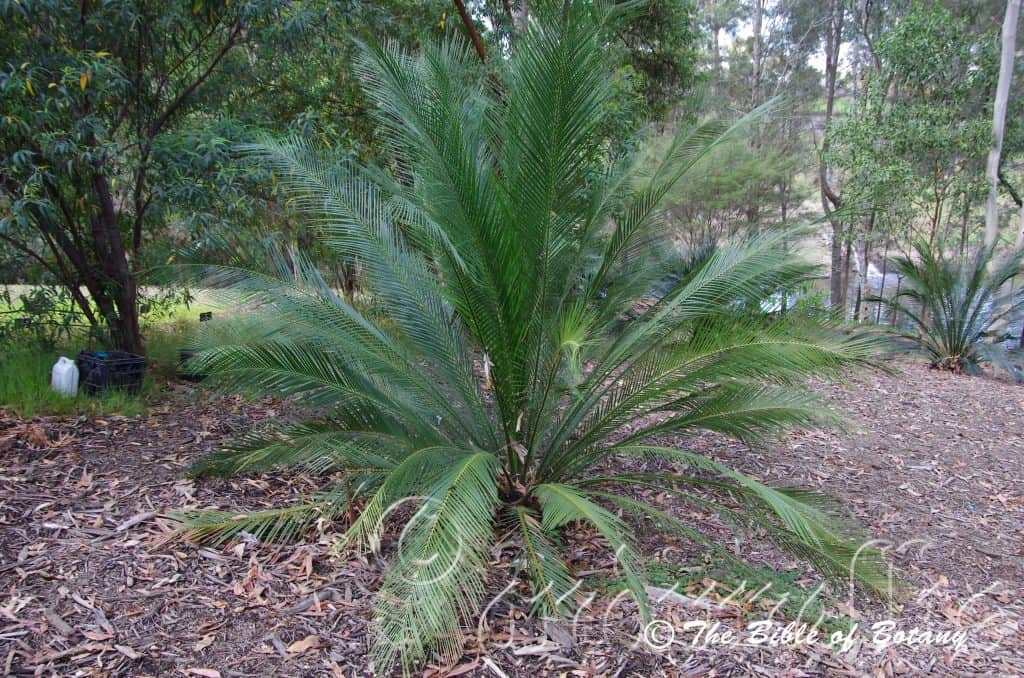
NCBG Coffs Harbour NSW

Mount Cootha Botanic Gardens Qld.

Mount Cootha Botanic Gardens Qld.
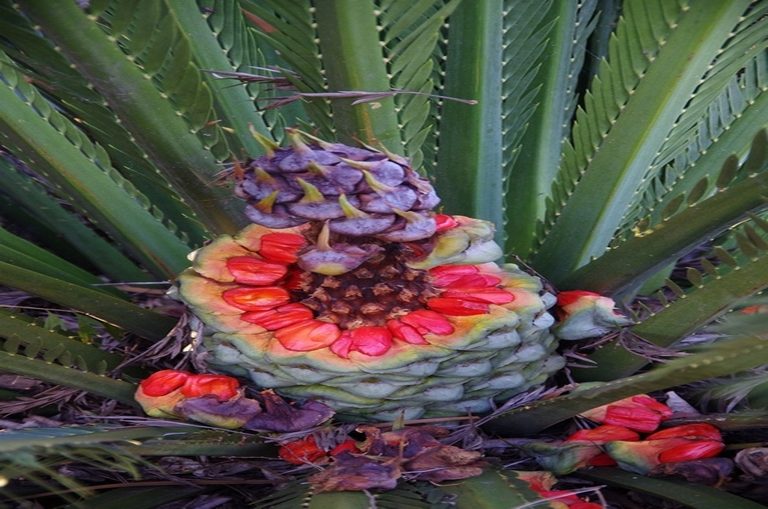
Grafton NSW
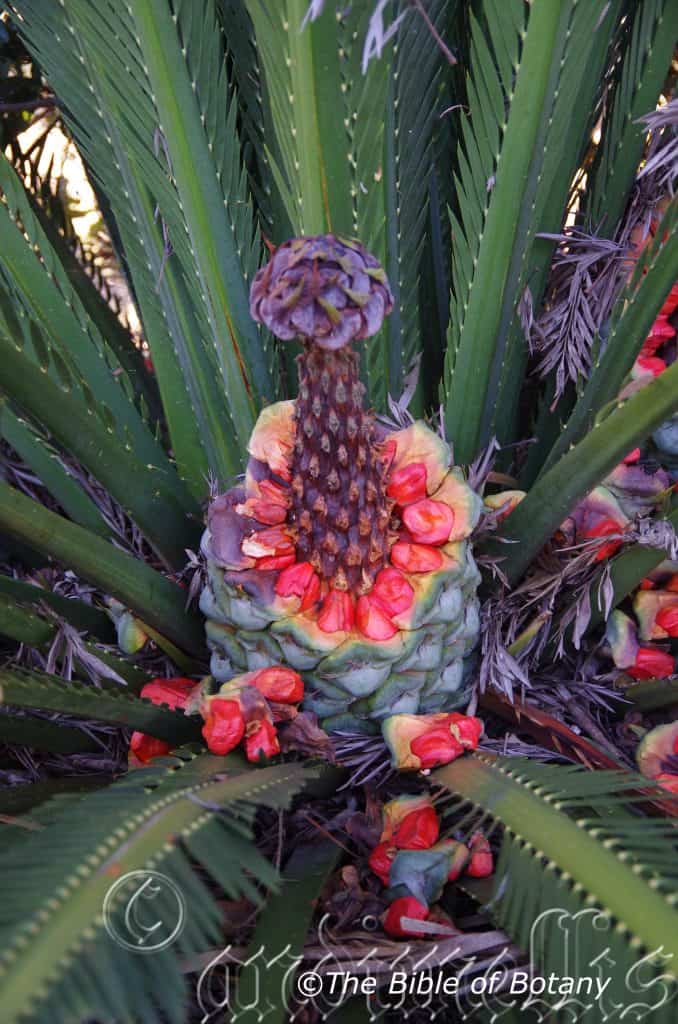
Grafton NSW
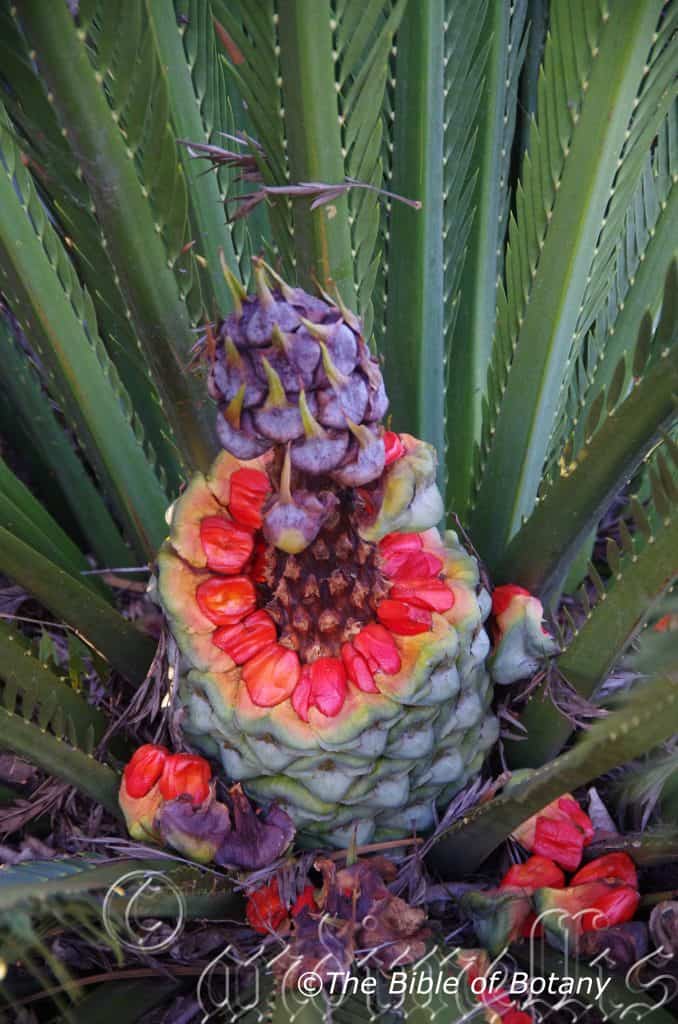
Grafton NSW
Macrozamia johnsonii
Classification:
Unranked: Cycadophyta
Class: Cycadopsida
Order: Cycadales
Family: Zamiaceae
Genus: Ancient Greek for large and Zamia, which is Ancient Greek for a pine cone. It refers to fruits, which resemble a large pine cone typical of the Zamia genus.
Specie: Is named in honour of Johnson but which Johnson cannot be substantiated.
Sub species:
Common Name: Giant Burrawang.
Distribution:
Macrozamia johnsonii has a restricted distribution within the Clarence River valley and the Nymboida River west and south west of Grafton.
https://avh.ala.org.au/occurrences/search?taxa=Macrozamia+johnsonii#tab_mapView
Habitat and habit:
Macrozamia johnsonii prefers light dappled shade. It grows on steeper slopes in moist open woodlands and adjacent to rainforests. The altitude ranges from 45 meters ASL to 150 meters ASL.
The temperatures range from minus 2 degrees in August to 36 degrees in January.
The rainfall ranges from lows of 800mm to an average of 1400mm.
Soil Requirements:
Macrozamia johnsonii prefers deep sandy loams to light gritty clays with copious quantities of forest litter. The soils pH. ranges from 6pH to 7pH. It does not tolerate waterlogged soils. Non saline soils to moderately saline soils are tolerated.
Height & Spread:
Wild Plants: 6m to 8mm by 5m to 6m.
Characteristics:
Macrozamia johnsonii’s has s a large aerial trunk to 5 meters in height by 300mm to 700mm in diameter. The reddish brown leaf scars are often blackened form fire.
Macrozamia johnsonii’s oblong leaves grow in small flushes. There are 120 to 150 leaves in a mature crown which form a very dense upright growth habit. The rachis is not twisted on this specie. There 150 to 200 individual pinnae are of equal length along the rachis. The 40 to 46 pinnae closest to the base gradually reduce in size to long, rigid spines. The spineless section of the rachis measures 20mm to 100mm in length. The pinnae measure 1500mm to 3000mm in length by 5mm to 11mm wide. The concolourous laminas are deep olive green and glabrous. The rigid, coriaceous, glossy young pinnae turn lustrous as they mature. The margins are entire. The petioles measure 25mm to 50mm in length before the first pinnae appear.
The inflorescence of Macrozamia johnsonii is a compact cone born from the crown. The plants are dioecious, that is male and female cones appear on different plants.
The male cones measure 300mm to 450mm by 80mm to 100mm in diameter. The longest spines measure 10mm to 20mm in length.
The female cones measure 400mm to 900mm by 120mm to 190mm in diameter. The longest spines measure 3mm to 7mm in length.
Macrozamia johnsonii’s fruit is a very large globose cone. The cones are deep sea-green with the seeds turning bright crimson-orange when ripe. The seeds are a tapered square roughly conical shape which measure 40mm to 50mm in length by 30mm in diameter near the base and 20mm in diameter near the apex.
Wildlife:
Macrozamia johnsonii predators are unknown to the author.
Cultivation:
Macrozamia johnsonii make excellent showy plants for dappled shady to full sun areas as an understory plant in open dry woodlands where the soils are sandy loams to light clays. They always look green and fresh especially where some ground moisture is retained. It is very suitable for medium and large gardens close to the coast to high in the mountains in warm temperate, sub-tropical, tropical gardens and would be worthwhile growing in semi-arid gardens. As garden subjects they will grow from 6 meters to 8 meters in height by 5 meters to 6 meters in diameter. It is very slow growing even where a fertilizing plan is being implemented. It is cold tolerant to temperatures at least as low as minus 5 degrees once established.
They must be planted away from paths so the spines cannot make contact with the skin. It is particularly handsome placed beneath Eucalyptus trees in a park like setting of in an open woodland garden on shallow soils where they will eventually form a trunk. Again they look at their best when mass planted or mixed with other Cycads. Used on banks in mass they can deliver a very strong regimented look even though it is scattered around in an informal look. Most Hibbertia planted below look very striking especially Hibbertia scandens when it is mass planted as a ground cover.
Propagation:
Seeds: Macrozamia johnsonii seeds can be sown directly into a seed raising mix after the seeds have been nicked. Cover the seeds with 15mm to 20mm of fine weed free mulch and keep moist. Place the tray in a warm sunny position. When the seedlings are 60mm to 100mm tall and at the 2 leaf stage, prick them out and plant them into 50mm native tubes using a good organic mix.
Once the seedlings reach 150mm to 250mm and at the 5 to 7 leaf stage they can be planted out into their permanent position.
Growth is very slow so patience is required.
Fertilize using seaweed, fish emulsion or organic chicken pellets soaked in water on an alternate basis. Fertilize every two months until the plants are established then twice annually in early September or March to maintain health, vitality and better flowering.
Further Comments from Readers:
Hi reader, it seems you use The Bible of Botany a lot. That’s great as we have great pleasure in bringing it to you! It’s a little awkward for us to ask, but our first aim is to purchase land approximately 1,600 hectares to link several parcels of N.P. into one at The Pinnacles NSW Australia, but we need your help. We’re not salespeople. We’re amateur botanists who have dedicated over 30 years to saving the environment in a practical way. We depend on donations to reach our goal. If you donate just $5, the price of your coffee this Sunday, We can help to keep the planet alive in a real way and continue to bring you regular updates and features on Australian plants all in one Botanical Bible. Any support is greatly appreciated. Thank you.
In the spirit of reconciliation we acknowledge the Bundjalung, Gumbaynggirr and Yaegl and all aboriginal nations throughout Australia and their connections to land, sea and community. We pay our respect to their Elders past, present and future for the pleasures we have gained.
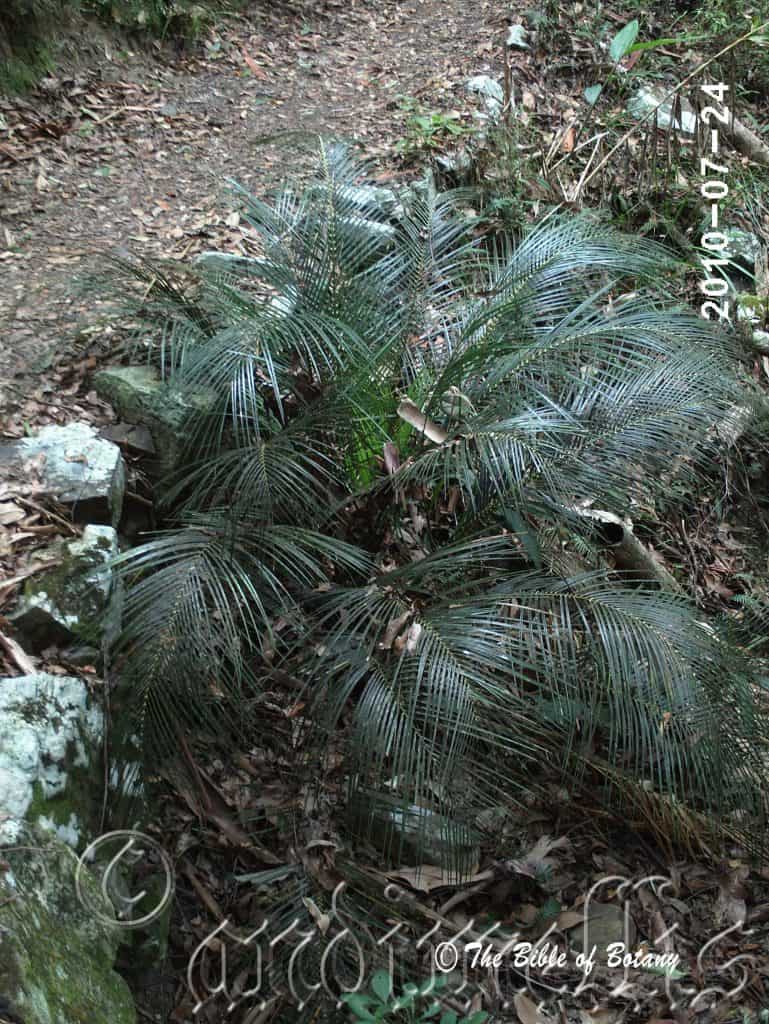
Mount Nebo Qld.
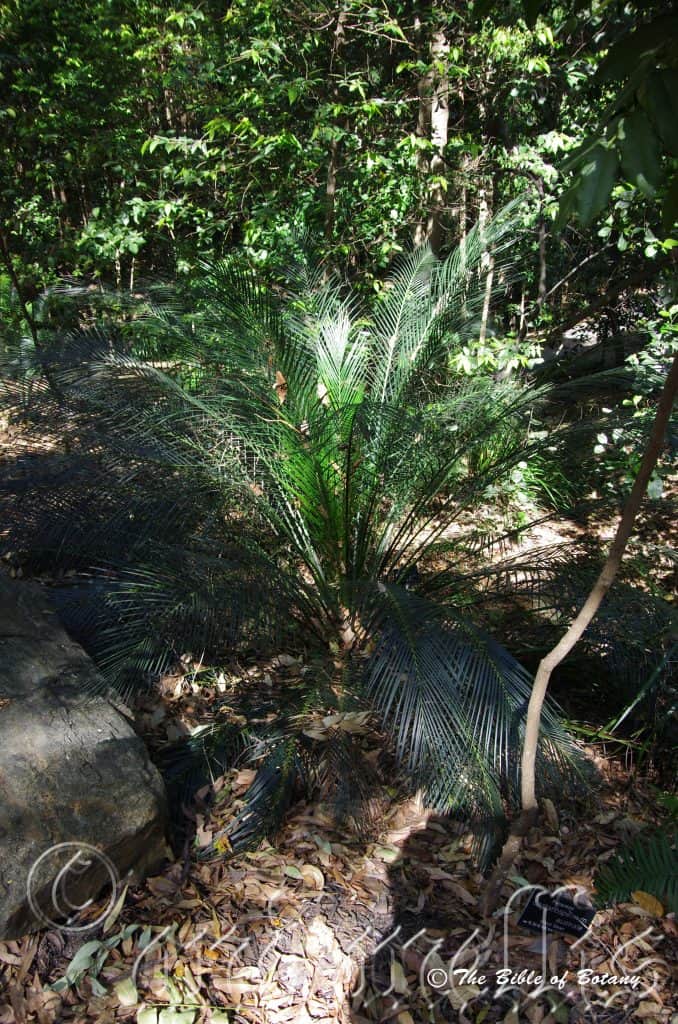
Mount Cootha Botanical Gardens Qld.
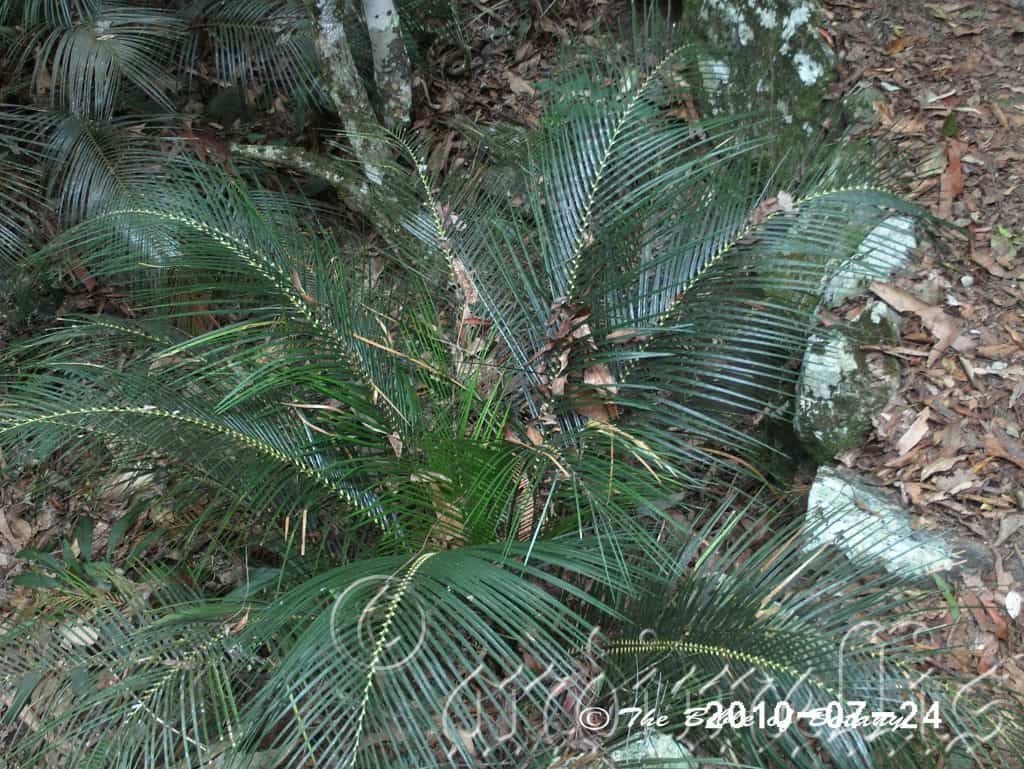
Mount Nebo Qld.
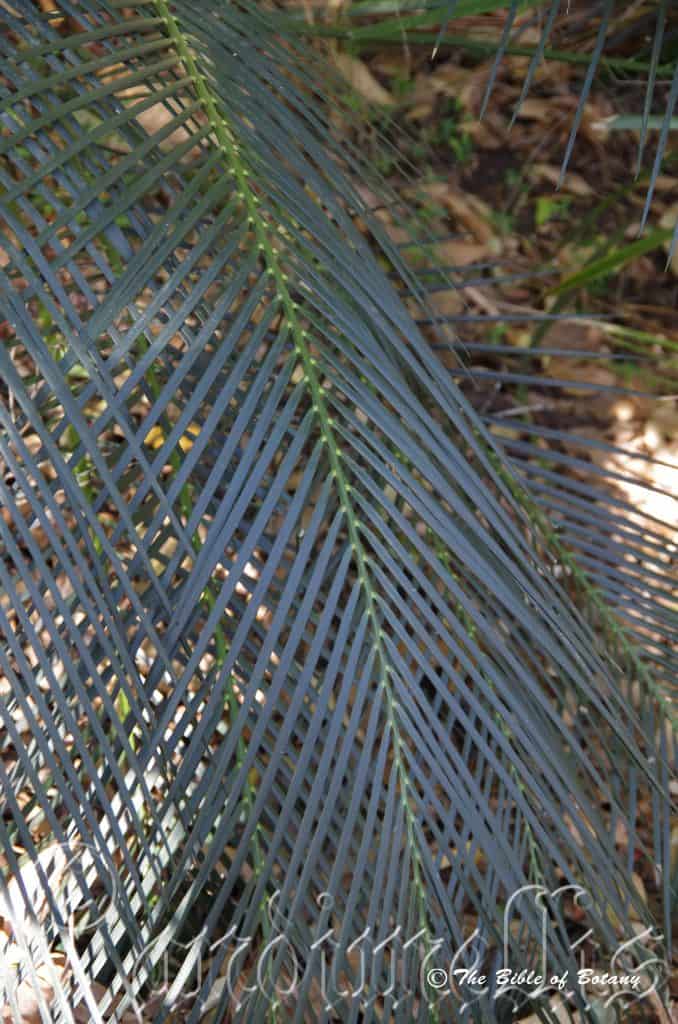
Mount Cootha Botanical Gardens Qld.

Mount Cootha Botanical Gardens Qld.
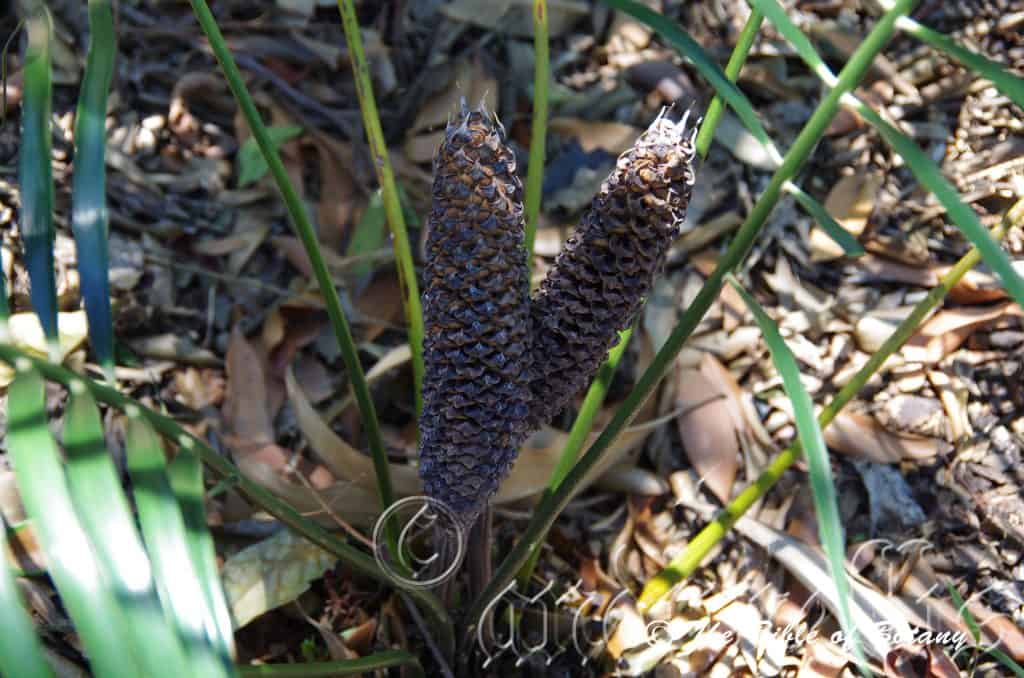
Mount Cootha Botanical Gardens Qld.

Mount Cootha Botanical Gardens Qld.
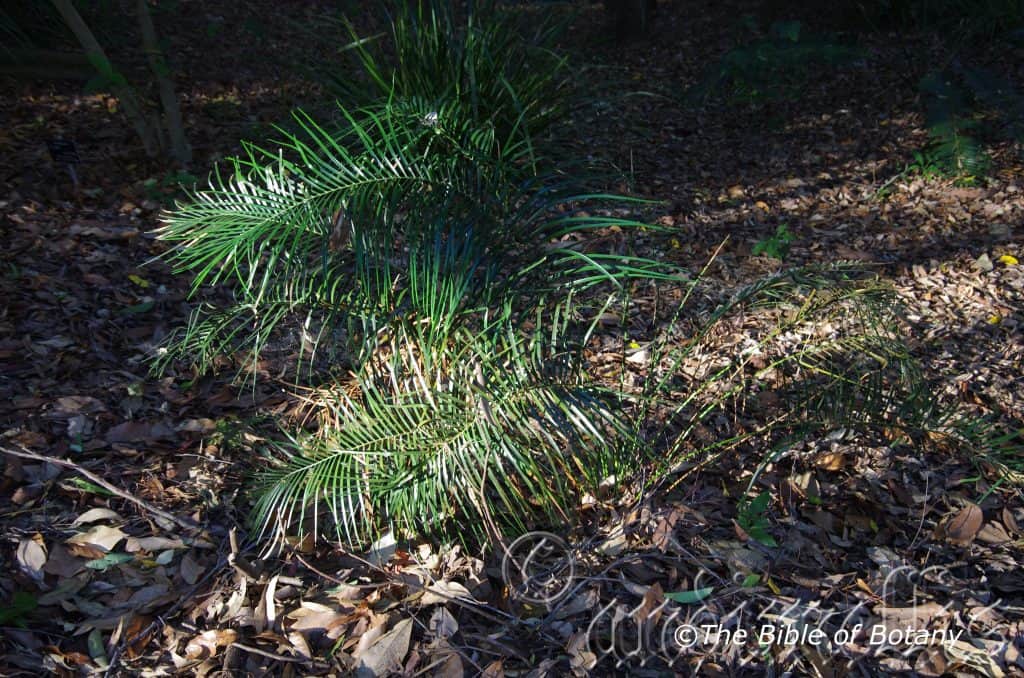
Mount Cootha Botanical Gardens Qld.
Macrozamia lucida
Classification:
Unranked: Cycadophyta
Class: Cycadopsida
Order: Cycadales
Family: Zamiaceae
Genus: From Makros, which is Ancient Greek for large and Zamia, which is Ancient Greek for a pine cone. It refers to fruits, which resemble a large pine cone typical of the Zamia genus.
Specie: From Lūcī, which is Latin for bright and shiny. It refers to the leaves, fruits or honey, which are bright clear and/or glossy.
Sub species:
Common Name: Small Burrawang.
Distribution:
Macrozamia lucida has a restricted distribution south from the Conondale Range north west of Brisbane to the Macpherson Ranges on the Queensland, New South Wales border. There is an outlying population south west of Maryborough.
https://avh.ala.org.au/occurrences/search?taxa=Macrozamia+lucida#tab_mapView
Habitat and habit:
Macrozamia lucida prefers light dappled shade to dense shade. It grows on steeper slopes in moist open woodlands or dry rainforests. The altitude ranges from 10 meters ASL to 700 meters ASL.
The temperatures range from 1 degree in August to 36 degrees in January.
The rainfall ranges from lows of 800mm to an average of 1400mm.
Soil Requirements:
Macrozamia lucida prefers deep, sandy loams to medium gritty clays with copious quantities of leaf litter. The soils are usually derived from black basalts or metamorphic rocks. The soils pH. ranges from 6pH to 7pH. It does not tolerate waterlogged soils. Non saline soils to moderately saline soils are tolerated.
Height & Spread:
Wild Plants: 100mm to 250mm by 2m to 2.5m.
Characteristics:
Macrozamia lucida’s trunk is mostly subterranean when growing on deep friable loams. They form a short, rough, black trunk where the old leaf petioles on very old plants remain. Where the soils are shallow the trunk measures up to 120mm to 250mm in length by 100mm to 250mm in diameter.
Macrozamia lucida’s oblong leaves grow in small flushes of 2 or 3 leaves. The leaves measure 800mm to 1100mm in length by 400mm to 600mm in width. There are 5 to 16 leaves in the crown form a very loose or untidy rosette. The rachis is slightly twisted to straight on this specie. The individual awl to strongly falcate linear pinnae number 50 to 100.The longest are placed near to the base of the rachis and measure 150mm to 350mm in length by 8mm to 12mm in width. There is a large bright yellow gland at the base of each pinna. The base is truncate and sessile while the apex is narrowly acute. The concolourous laminas are deep sea-green and glabrous. It is rigid, coriaceous and glossy when young, turning lustrous as they mature. The margins are entire, flat and curve upwards near the base. There are 5 to 11 slightly prominent veins on the lower lamina which are scarcely visible on the upper lamina. The petioles measure 250mm to 500mm in length before the first pinnae appear.
The inflorescence of Macrozamia lucida is a compact cone born from the crown. The plants are dioecious, that is male and female cones appear on different plants.
The male cones measure 150mm to 190mm by 40mm to 60mm in diameter. The longest spines measure 6mm to 12mm in length.
The female cones measure 150mm to 200mm by 75mm to 92mm in diameter. The longest spines measure 10mm to 25mm in length. The flowers appear after fire, drought or in older plants more regularly at the end of the drier season.
Macrozamia lucida’s fruit is a very large globose cone. The cones are glaucous blue-green with the seeds turning bright, dull crimson-orange when ripe. The seeds are a tapered, square roughly ovoidal shape which measure 25mm to 30mm in length by 20mm in diameter near the base and 26mm in diameter near the apex.
Wildlife:
Macrozamia lucida predators are unknown to the author.
Cultivation:
Macrozamia lucida makes an excellent showy plant for dappled shady areas as an understory plant in open dry woodlands or that small rainforest garden where the soils are sandy loams to light clays. They always look green and fresh especially where some ground moisture is retained. It is very suitable for small, medium and large gardens on slopes close to the coast in warm temperate, sub-tropical, tropical gardens. As garden subjects they will grow from 120m to 200m by 2000mm to 2500mm wide. It is very slow growing even where a fertilizing plan is being implemented. It is cold tolerant to temperatures at least as low as minus 2 degrees once established.
It is particularly handsome placed beneath Eucalyptus trees in a park like setting of in an open woodland garden on shallow soils where they will eventually form a trunk. Again they look at their best when mass planted or mixed with other Cycads. Used on banks in mass they can deliver a very strong regimented look even though it is scattered around in an informal look. Most Hibbertia and small native annuals planted below look very striking especially Hibbertia obtusifolia when it is mass planted as a ground cover.
Propagation:
Seeds: Macrozamia lucida seeds can be sown directly into a seed raising mix after the seeds have been nicked. Cover the seeds with 15mm to 20mm of fine weed free mulch and keep moist. Place the tray in a warm sunny position. When the seedlings are 60mm to 100mm tall and at the 2 leaf stage, prick them out and plant them into 50mm native tubes using a good organic mix.
Once the seedlings reach 150mm to 250mm and at the 5 to 7 leaf stage they can be planted out into their permanent position.
Growth is very slow so patience is required.
Fertilize using Seaweed, fish emulsion or a half strength solution of organic chicken pellets soaked in water on an alternate basis. Fertilize every month until the plants are established then once a year in early spring or late autumn for continual health and vitality.
Further Comments from Readers:
Hi reader, it seems you use The Bible of Botany a lot. That’s great as we have great pleasure in bringing it to you! It’s a little awkward for us to ask, but our first aim is to purchase land approximately 1,600 hectares to link several parcels of N.P. into one at The Pinnacles NSW Australia, but we need your help. We’re not salespeople. We’re amateur botanists who have dedicated over 30 years to saving the environment in a practical way. We depend on donations to reach our goal. If you donate just $5, the price of your coffee this Sunday, We can help to keep the planet alive in a real way and continue to bring you regular updates and features on Australian plants all in one Botanical Bible. Any support is greatly appreciated. Thank you.
In the spirit of reconciliation we acknowledge the Bundjalung, Gumbaynggirr and Yaegl and all aboriginal nations throughout Australia and their connections to land, sea and community. We pay our respect to their Elders past, present and future for the pleasures we have gained.

Anderson Gardens Townsville Qld.
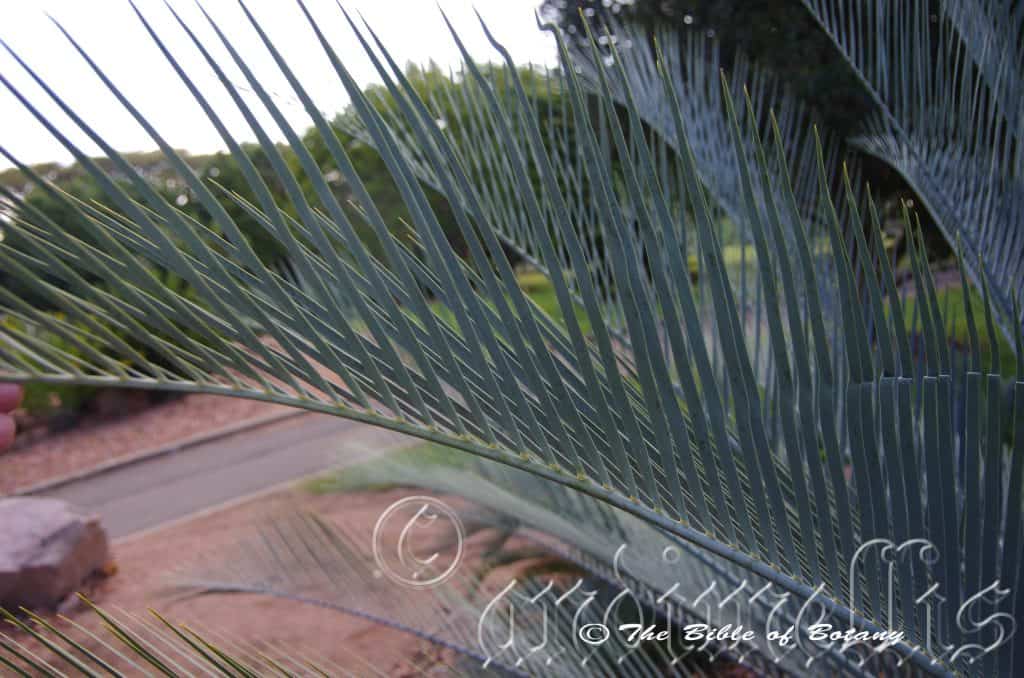
Anderson Gardens Townsville Qld.

Anderson Gardens Townsville Qld.

Anderson Gardens Townsville Qld.
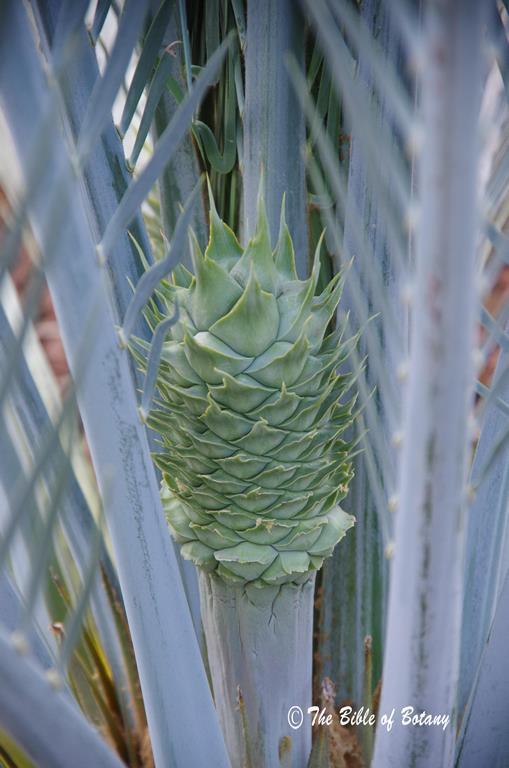
Anderson Gardens Townsville Qld.
Macrozamia macdonnellii
Classification:
Unranked: Cycadophyta
Class: Cycadopsida
Order: Cycadales
Family: Zamiaceae
Genus: From Makros, which is Ancient Greek for large and Zamia, which is Ancient Greek for a pine cone. It refers to fruits, which resemble a large pine cone typical of the Zamia genus.
Specie: Is named in honour of MacDonnell but which MacDonnell cannot be substantiated. However as plants which have this specific name all come from the MacDonnell Ranges it is rather safe to conclude that it is named in honour of Sir Richard Graves MacDonnell KCMG CB; 1814-1881, who was an Anglo-Irish lawyer, judge and colonial governor of South Australia.
Sub species:
Common Name:
Distribution:
Macrozamia macdonnellii is restricted to central Australia in the Northern Territory. It is mainly found in the MacDonnell Ranges and Finke Gorge bounded by Mount Lionel, the south eastern portion of the Tanami Desert, George Gill Range and Lady Charlotte’s Waters.
https://avh.ala.org.au/occurrences/search?taxa=Macrozamia+macdonnellii#tab_mapView
Habitat Aspect Climate:
Macrozamia macdonnellii prefers light dappled shade to full sun. It grows in dry open scrub country on slopes in sheltered positions often in dips or between boulders that channel water towards the plants. The altitude ranges from 300 meters ASL to 650 meters ASL.
The temperatures range from 1 degree in August to 40 degrees in January.
The rainfall ranges from lows of 250mm to an average of 500mm.
Soil Requirements:
Macrozamia macdonnellii prefers skeletal red sands to light fatty gritty clays often with copious quantities of gravel and rock. The soils are usually derived from sandstones. The soils pH. ranges from 5pH to 7pH. It does not tolerate waterlogged soils. Non saline soils to moderately saline soils are tolerated.
Height & Spread:
Wild Plants: 3m to 5m by 3m to 5m.
Characteristics: Description taken from photographs and of a single species in the Townsville Anderson Botanic Gardens and an old photo taken at the Finke River Gorge nearly 50 years ago.
Macrozamia macdonnellii’s trunk is rough black trunk where the old leaf petiole stubs have been burnt. On very old plants where the soils are shallow the trunk measures up to 3 meters in length by 300mm to 450mm in diameter.
Macrozamia macdonnellii’s leaves grow in flushes and measure 2600mm to 3600mm in length by 400mm to 500mm in width. There are 60 to 100 leaves in the crown which form a rosette. The rachis is not twisted on this specie. The individual alternate linear pinnae number 130 to 140.The longest placed towards the end of the rachis with the shortest near the base that are rigid but not spinose. The pinnae measure 60mm to 320mm in length by 6mm to 12mm wide. The base is truncate and sessile upon a pulvinus like appendage. The appendage is lime green and measures about 4mm to 6mm in length and as wide as the leaflet while the apex is narrow acute. It is rigid, Coriaceous, dull and glabrous near the base while the apexes are apex coriaceous. The concolourous laminas are mid blue-green to deep bluish-green. The margins are entire. The petioles measure 120mm to 350mm in length before the first leaflets appear.
The inflorescence of female cones of macdonnellii is a compact vertical cone born from the terminal point. The plants are dioecious, that is male and female cones appear on different plants.
The male cones have not been seen by the author.
The obconical mid blue-green female cones measure 120mm to 160mm by 70mm to 80mm in diameter including the spines. The longest caudate spines wrap along the sides of the mega sporophytes and measure 20mm to 28mm in length. The flowers appear from late August to September in Townsville under cultivated conditions.
Macrozamia communis’s mature fruits and seeds have not been seen by the author
Wildlife:
Macrozamia macdonnellii’s wildlife are unknown to the author.
Seeds toxic unless properly prepared and due to the arid conditions of its natural habitat were not consumed by the local indigenous people of the Arunta Tribe.
Cultivation:
Macrozamia macdonnellii makes an excellent large showy plant for hot dry sunny positions on sand or sandy loams. They always look green and fresh especially where some ground moisture is retained. It is very suitable for small, medium and large gardens close to the coast in warm temperate, sub-tropical, tropical gardens and would be worthwhile growing in semi-arid gardens. As garden subjects they will grow from 1 meter to 2 meters in height by 3 meters to 4 meters in diameter. It is very slow growing even where a fertilizing plan is being implemented. It is cold tolerant to temperatures at least as low as 5 degrees once established.
It must be planted away from paths so the spines cannot come into contact with young children. It is particularly handsome placed beneath Eucalyptus trees in a park like setting of in an open woodland garden on shallow soils where they will eventually form a trunk. Again it looks great when mass planted or mixed with other Cycad specie. Used on banks in mass they can deliver a very strong regimented look even though it is scattered around in an informal look. Hibbertia specie planted below look very striking, especially Hibbertia scandens when it is used as a ground cover.
Propagation:
Seeds: Macrozamia macdonnellii seeds can be sown directly into a seed raising mix after the seeds have been nicked. Cover the seeds with 15mm to 20mm of fine weed free mulch and keep moist. Place them in a deep tray and place the tray in a warm sunny position. When the seedlings are 60mm to 100mm tall and at the 2 leaf stage, prick them out and plant them into 50mm native tubes using a good organic mix.
Once the seedlings reach 150mm to 250mm and are at the 5 to 7 leaf stage they can be planted out into their permanent position.
Growth is very slow so patience is required.
Fertilize using seaweed, fish emulsion or organic chicken pellets soaked in water on an alternate basis. Fertilize every two months until the plants are established then twice annually in early September or March to maintain health, vitality and better flowering.
Further Comments from Readers:
Hi reader, it seems you use The Bible of Botany a lot. That’s great as we have great pleasure in bringing it to you! It’s a little awkward for us to ask, but our first aim is to purchase land approximately 1,600 hectares to link several parcels of N.P. into one at The Pinnacles NSW Australia, but we need your help. We’re not salespeople. We’re amateur botanists who have dedicated over 30 years to saving the environment in a practical way. We depend on donations to reach our goal. If you donate just $5, the price of your coffee this Sunday, We can help to keep the planet alive in a real way and continue to bring you regular updates and features on Australian plants all in one Botanical Bible. Any support is greatly appreciated. Thank you.
In the spirit of reconciliation we acknowledge the Bundjalung, Gumbaynggirr and Yaegl and all aboriginal nations throughout Australia and their connections to land, sea and community. We pay our respect to their Elders past, present and future for the pleasures we have gained.
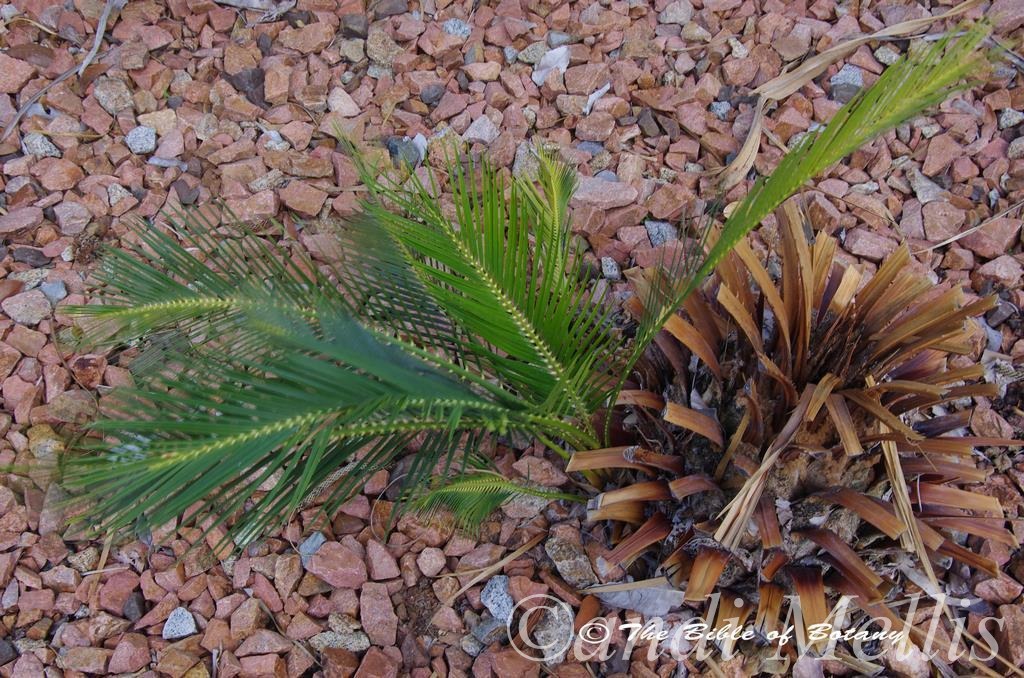
Townsville Botanic Gardens Qld.
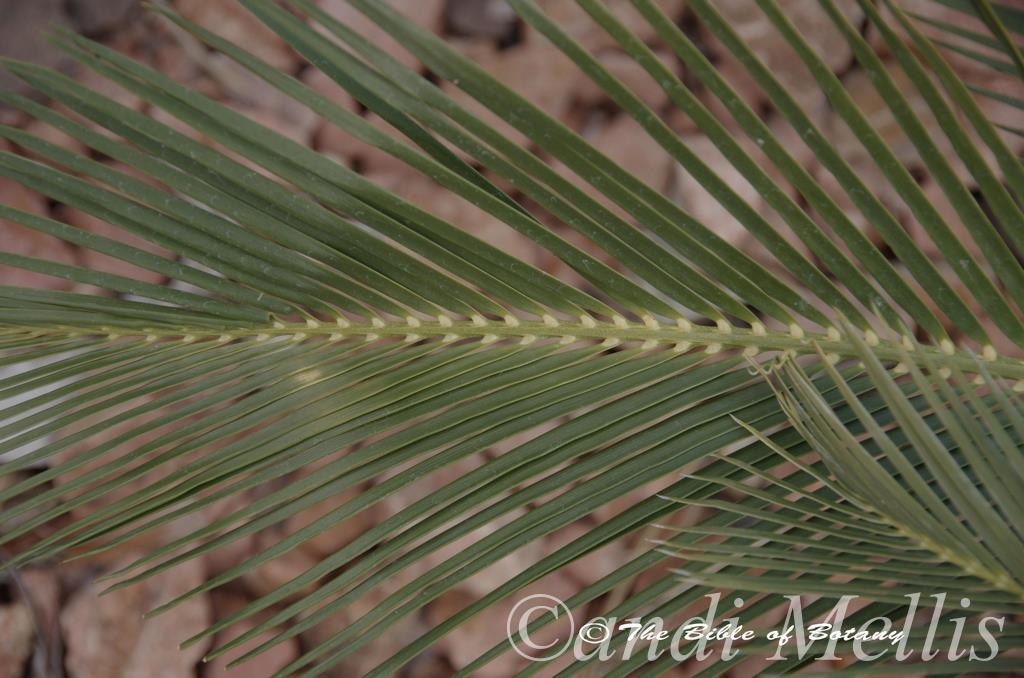
Townsville Botanic Gardens Qld.

Townsville Botanic Gardens Qld.
Macrozamia miquelii
Classification:
Unranked: Cycadophyta
Class: Cycadopsida
Order: Cycadales
Family: Zamiaceae
Genus: From Makros, which is Ancient Greek for large and Zamia, which is Ancient Greek for a pine cone. It refers to fruits, which resemble a large pine cone typical of the Zamia genus.
Specie: Is named in honour of Dr. Friedrich Anton Wilhelm Miquel; 1811-1871 who was a Dutch botanist and plant collector who specialized in plants from the Dutch colonies including Indonesia and parts of Australia. From his estate, the Miquel fund was established, which provides financial support to young botanists at the University of Utrecht.
Sub species:
Common Name: Small Burrawang.
Distribution:
Macrozamia miquelii has a disjunct distribution south from the Byfield National Park north east of Rockhampton to the Conondale Range north west of Brisbane with a small population further south on the Macpherson Range on the New South Wales border. There is a large colony of plants growing in the Mount Archer National Park in Rockhampton.
https://avh.ala.org.au/occurrences/search?taxa=Macrozamia+miquelii#tab_mapView
Habitat Aspect Climate:
Macrozamia miquelii prefers light dappled shade to dense shade. It grows on steeper slopes in moist dry woodlands and adjacent to wet rainforests. The altitude ranges from 40 meters ASL to 650 meters ASL.
The temperatures range from 3 degree in August to 36 degrees in January.
The rainfall ranges from lows of 750mm to an average of 1200mm.
Soil Requirements:
Macrozamia miquelii prefers better quality fertile loams to medium clay with copious quantities of forest litter and grass mulch. The soils are usually derived from black basalts or heavier grey clay based soils derived from rhyolite or dactile. The soils pH. ranges from 5pH to 6pH. It does not tolerate waterlogged soils. Non saline soils to moderately saline soils are tolerated.
Height & Spread:
Wild Plants: 1m to 2m by 3m to 4m.
Characteristics:
Macrozamia miquelii’s trunk is mostly subterranean when growing on deep friable loams. They form a short, rough, black trunk where the old leaf petioles on very old plants remain. The trunks measure up to 1m in length by 200mm to 500mm in diameter where the soil is shallow over parent bedrock,
Macrozamia miquelii’s leaves grow in small flushes of 2 or 3 leaves which measure 600mm to 2000mm in length by 380mm to 700mm in width. There are 50 to 100 leaves in the crown which form a very beautiful rosette. The rachis is slightly twisted on this specie. The individual linear pinnae number 70 to 160.The longest are placed midway along the rachis and measure 170mm to 350mm in length by 4mm to 10mm in width. There is a large pale yellow to cream gland at the base. The base is truncate and sessile while the apex is narrowly acute. The lower 4 or 6 rarely up to 14 pinnae are reduced to spines. The concolourous laminas are deep sea-green, glabrous and glossy on the upper lamina while the lower lamina is dull. It is rigid, coriaceous and glossy when young, turning lustrous as they mature. The margins are entire. There are 5 to 11 slightly prominent veins on the lower lamina which are scarcely visible on the upper lamina. The petioles measure 12mm to 60mm in length before the first pinnae appear.
The inflorescence of Macrozamia miquelii is a compact cone born from the terminal point. The plants are dioecious, that is male and female cones appear on different plants.
The male cones measure 150mm to 350mm by 40mm to 70mm in diameter. The spines measure 10mm to 25mm in length.
The female cones measure 200mm to 400mm by 75mm to 130mm in diameter. The spines measure 20mm to 35mm in length. The flowers appear after fire, drought or in older plants more regularly at the end of the drier season. Flowers do not occur regularly on an annual basis.
Macrozamia miquelii’s fruit is a very large globose cone. The cones are glaucous blue-green to pale glaucous olive green with the seeds turning bright crimson-orange at the apex and yellow near the base when ripe. The seeds are a tapered square roughly ovoidal shape which measure 23mm to 35mm in length by 25mm to 30mm in diameter near the apex and 18mm to 22mm in diameter near the base. The base is broadly conical.
Wildlife:
Macrozamia miquelii predators are unknown to the author.
Cultivation:
Macrozamia miquelii makes an excellent showy plant for dappled shady areas as an understory plant in open dry woodlands where the soils are sandy loams to light clays. They always look green and fresh especially where some ground moisture is retained. It is very suitable for small, medium and large gardens close to the coast in warm temperate, sub-tropical, tropical gardens and would be worthwhile growing in semi-arid gardens. It is a good substitute for Macrozamia moorei as they look similar but do not grow as large. As garden subjects they will grow from 1.2 meters to 2 meters in height by 2 meters to 2.5 meters in diameter. It is very slow growing even where a fertilizing plan is being implemented. It is cold tolerant to temperatures at least as low as 5 degrees once established.
It is particularly handsome placed beneath Eucalyptus trees in a park like setting of in an open woodland garden on shallow soils where they will eventually form a trunk. Again they look at their best when mass planted or scatter planted with other Cycads. Used on banks in mass they can deliver a very strong regimented look even though it is scattered around in an informal look. Most Hibbertia and small native annuals planted below look very striking especially Hibbertia obtusifolia and Hibertia scandens when it is mass planted as a ground cover.
Propagation:
Seeds: Macrozamia miquelii seeds can be sown directly into a seed raising mix after the seeds have been nicked. Cover the seeds with 15mm to 20mm of fine weed free mulch and keep moist. Place the tray in a warm sunny position. When the seedlings are 60mm to 100mm tall and at the 2 leaf stage, prick them out and plant them into 50mm native tubes using a good organic mix.
Once the seedlings reach 150mm to 250mm and at the 5 to 7 leaf stage they can be planted out into their permanent position.
Growth is very slow so patience is required.
Fertilize using seaweed, fish emulsion or organic chicken pellets soaked in water on an alternate basis. Fertilize every two months until the plants are established then twice annually in early September or March to maintain health, vitality and better flowering.
Further Comments from Readers:
Hi reader, it seems you use The Bible of Botany a lot. That’s great as we have great pleasure in bringing it to you! It’s a little awkward for us to ask, but our first aim is to purchase land approximately 1,600 hectares to link several parcels of N.P. into one at The Pinnacles NSW Australia, but we need your help. We’re not salespeople. We’re amateur botanists who have dedicated over 30 years to saving the environment in a practical way. We depend on donations to reach our goal. If you donate just $5, the price of your coffee this Sunday, We can help to keep the planet alive in a real way and continue to bring you regular updates and features on Australian plants all in one Botanical Bible. Any support is greatly appreciated. Thank you.
In the spirit of reconciliation we acknowledge the Bundjalung, Gumbaynggirr and Yaegl and all aboriginal nations throughout Australia and their connections to land, sea and community. We pay our respect to their Elders past, present and future for the pleasures we have gained.
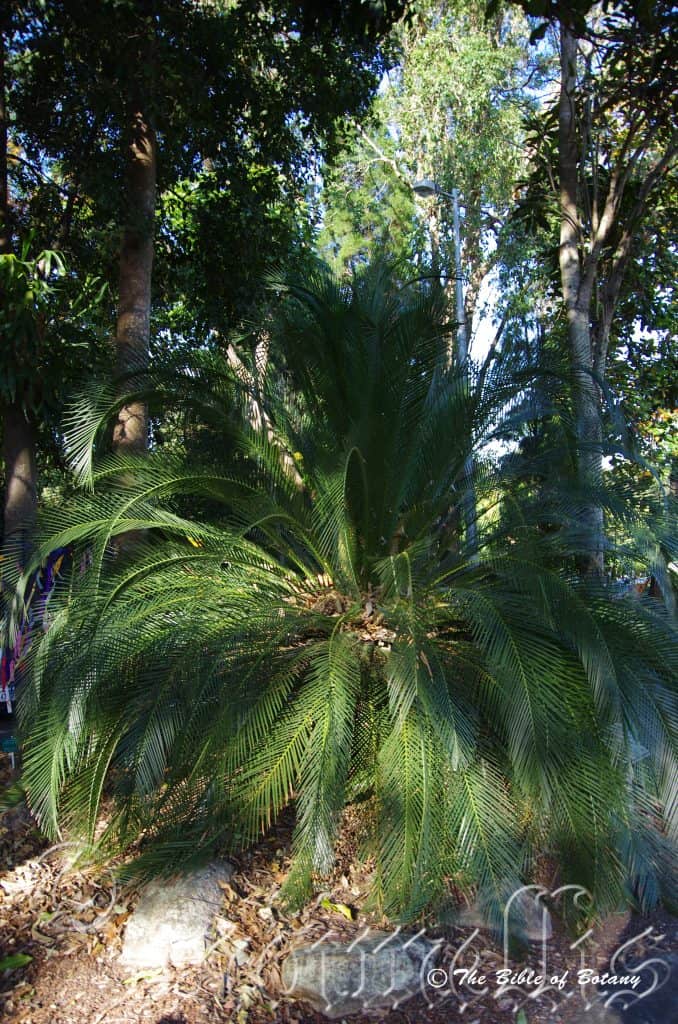
Mount Cootha Botanical Gardens Qld.

Townsville Botanic gardens Qld.
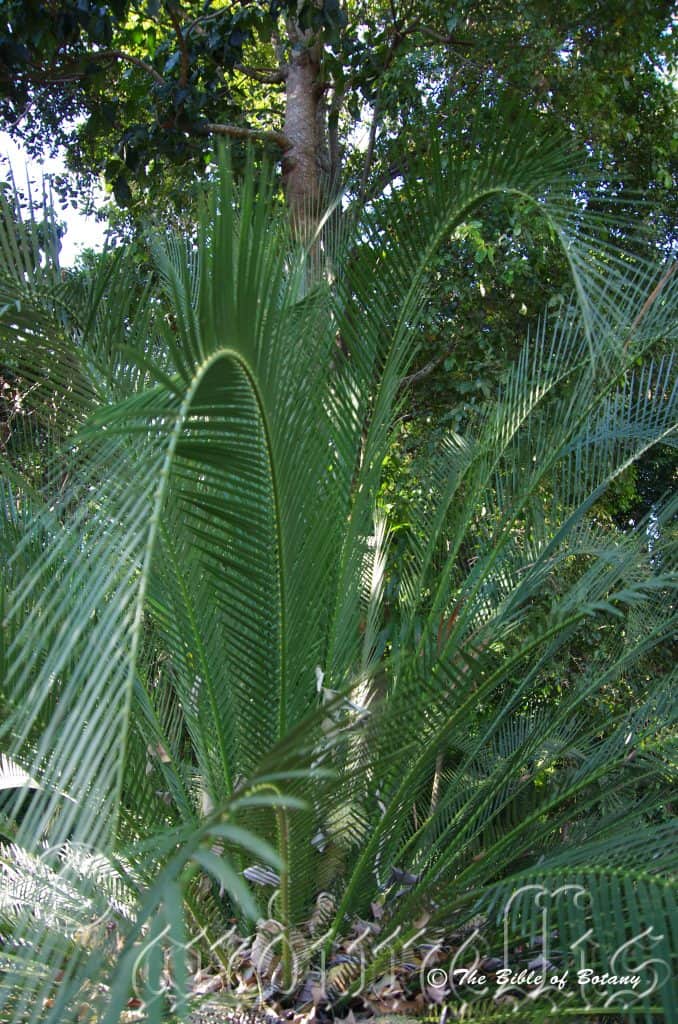
Mount Cootha Botanical Gardens Qld.

Mount Cootha Botanical Gardens Qld.
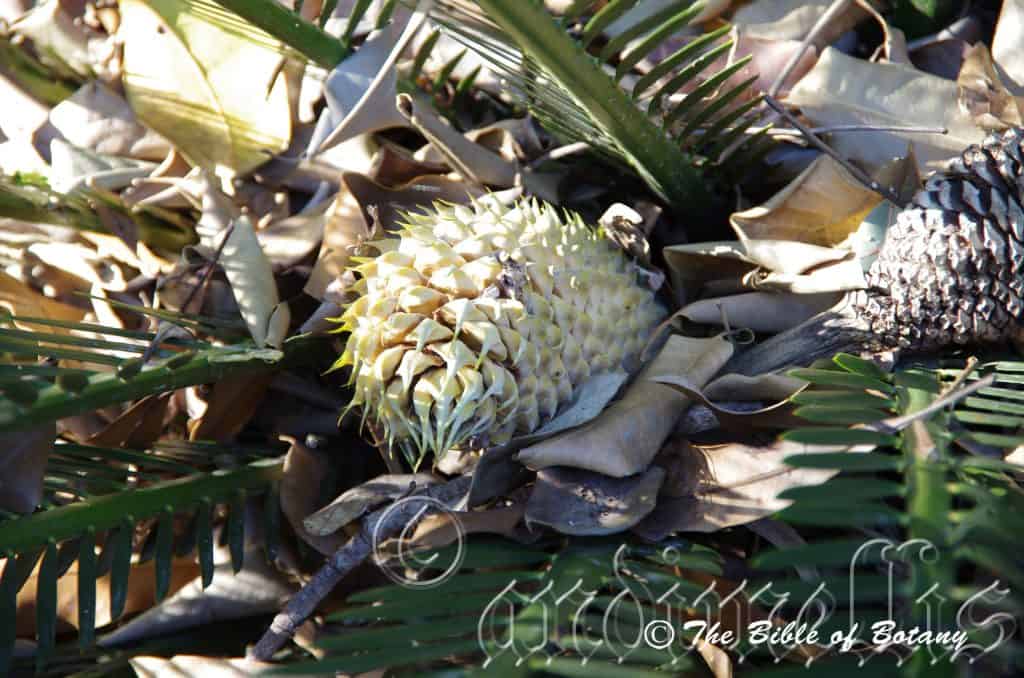
Mount Cootha Botanical Gardens Qld.
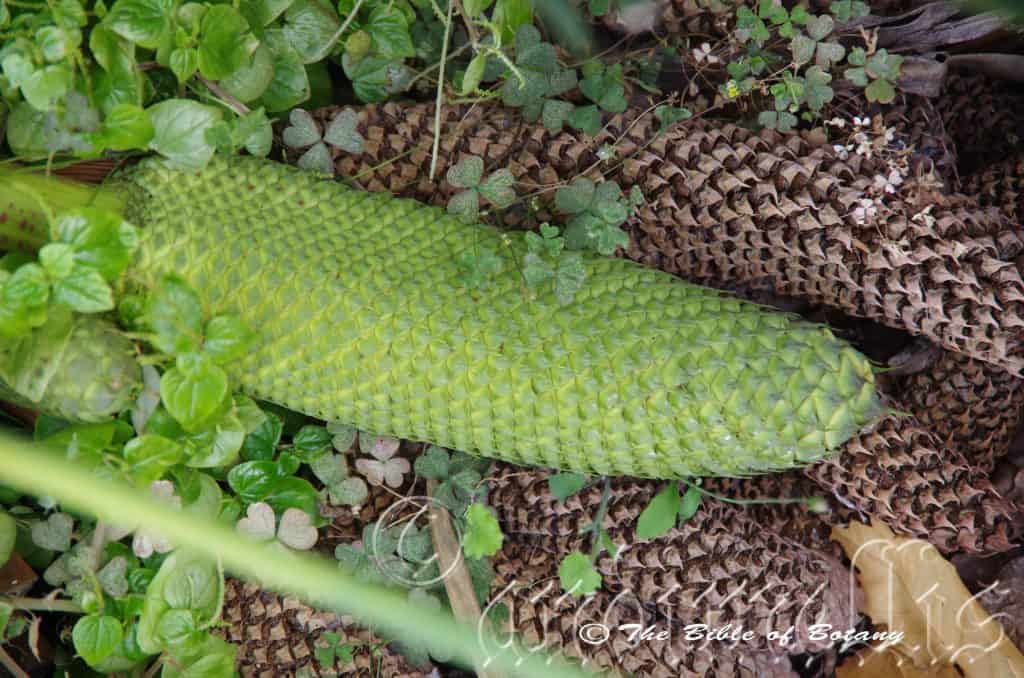
Townsville Botanic gardens Qld.
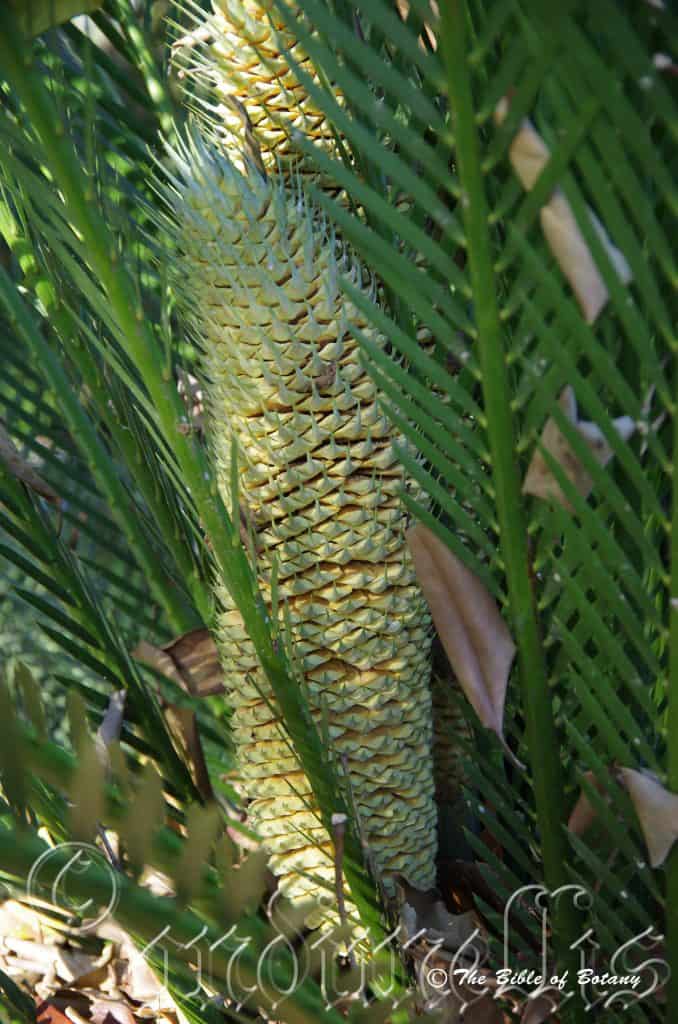
Mount Cootha Botanical Gardens Qld.

Townsville Botanic gardens Qld.

Townsville Botanic gardens Qld.
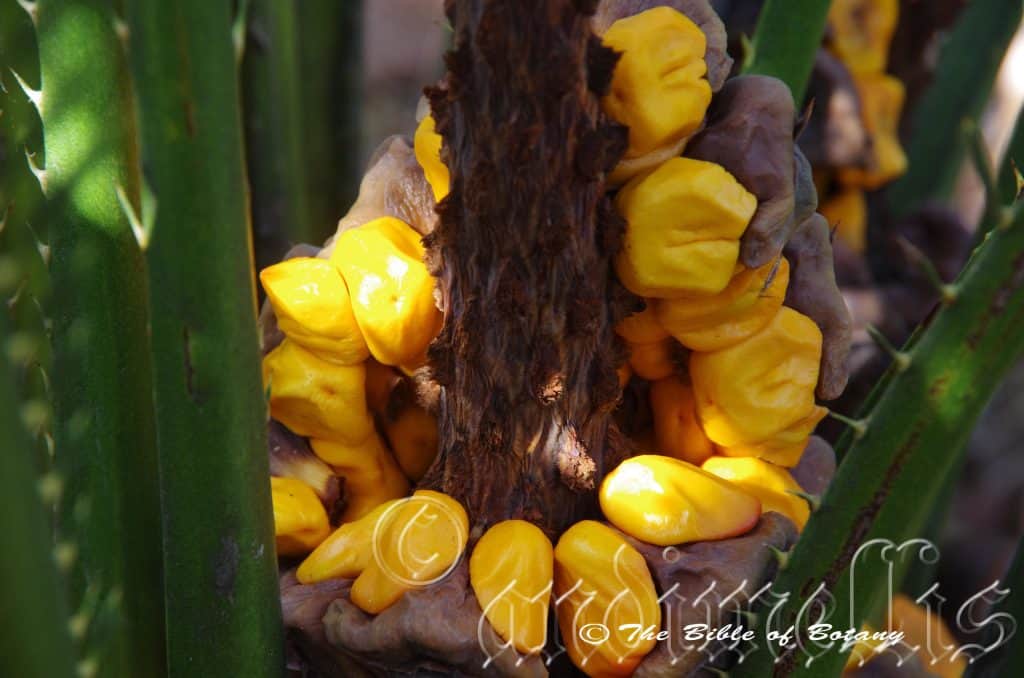
Townsville Botanic gardens Qld.

Townsville Botanic gardens Qld.
Macrozamia moorei
Classification:
Unranked: Cycadophyta
Class: Cycadopsida
Order: Cycadales
Family: Zamiaceae
Genus: From Makros, which is Ancient Greek for large and Zamia, which is Ancient Greek for a pine cone. It refers to fruits, which resemble a large pine cone typical of the Zamia genus.
Specie: Is named in honour of Charles William Edwin Moore (Ted); 1908-2003, who was an Australian born New Zealander. He completed a Science Degree at Christchurch in New Zealand before coming to Australia in 1935 and taught at Canberra Grammar School before joining the CSIRO Plant Industry in 1943. He participated in ecological surveys mostly in western NSW, collecting over 9,000 specimens, now housed at the Australian National Herbarium. Retired in 1973 and continued to work at the Australian National Herbarium till the late 1990s.
Sub species:
Common Name: Burrawang.
Distribution:
Macrozamia moorei is a restricted species which is found around the Emerald and Springsure district in the north, south to the Rolleston and Injune district and west to the Carnarvon Gorge in central southern Queensland.
https://avh.ala.org.au/occurrences/search?taxa=Macrozamia+moorei#tab_mapView
Habitat Aspect Climate:
Macrozamia moorei prefers light dappled shade to full sun. It grows on slopes and in gorges in most types of dry open woodlands. The altitude ranges from 280 meters ASL to 450 meters ASL.
The temperatures range from minus 2 degrees in August to 40 degrees in January.
The rainfall ranges from lows of 400mm to an average of 600mm.
Soil Requirements:
Macrozamia moorei prefers sandy loams to light fatty clays often with copious quantities of forest litter. The soils are deep overlying sandstone. The soils pH. ranges from 6pH to 7pH. It does not tolerate waterlogged soils. Non saline soils to moderately saline soils are tolerated.
Height & Spread:
Wild Plants: 6m to 7m by 3m to 4.5m.
Characteristics:
Macrozamia moorei’s trunk is a massive rough deep brown trunk but is more often black where the old leaf petioles have been burnt by fires. On very old plants where the soils are shallow the trunk measures up to 5 meters in length by 600mm to 800mm in diameter.
Macrozamia moorei’s leaves grow in flushes and measure 2000mm to 2500mm in length by 500mm to 600mm in width. There are 125 to 150 leaves in the crown which form a rosette at the apex of the trunk. The rachis is not twisted on this specie. The individual linear pinnae number 150 to 200.The longest are placed along the middle of the rachis and taper evenly at both the base and apex. They measure 200mm to 400mm in length by 6mm to 11mm wide. The base is truncate and sessile while the apex is narrowly acute. The concolourous laminas are deep grass-green to a deep sea-green glabrous and semi glossy. It is rigid, glossy when young turning semi glossy as they mature. The laminas are slightly discolourous with the lower lamina being slightly paler than the upper lamina. The margins are entire and flat. There are 7 to 13 slightly mid prominent veins on the lower lamina and it is scarcely visible on the upper lamina. The margins are entire. The rachis is triangular in cross section with a strong convex keel on the lower section. The pinnae are reduced to rigid spines near the base. The petioles measure 50mm to 100mm in length before the first spines appear.
The inflorescence of Macrozamia moorei is a compact cone born from the terminal point. The plants are dioecious, that is male and female cones appear on different plants.
The male cones measure 300mm to 450mm by 80mm to 110mm in diameter. The longest spines measure 10mm to 20mm in length.
The female cones measure 400mm to 900mm by 120mm to 190mm in diameter. The longest spines measure 25mm to 70mm in length. The flowers appear after fire, drought or in older plants more regularly at the end of the drier season.
Macrozamia moorei’s fruits are very large globose cones. The cones are glaucous blue-green with the seeds turning a dull orange-brown when ripe. The seeds are a tapered square roughly conical shape and are slightly compressed where the adjacent seed sits. They measure 40mm to 50mm in length by 26mm in diameter near the base and 48mm in diameter near the apex.
Wildlife:
Macrozamia moorei predators are unknown to the author.
Cultivation:
Macrozamia moorei makes an excellent showy plant for dappled shady areas as an understory plant in open dry woodlands where the soils are sandy loams. They always look green and fresh especially where some ground moisture is retained. It is very suitable on sandy to medium clay soils and are most suitable for small, medium and large gardens close to the coast in warm temperate, sub-tropical, tropical gardens and would be worthwhile growing in semi-arid gardens. As garden subjects they will grow from 4m to 5m by 4m to 4.5m wide. It is very slow growing even where a fertilizing plan is being implemented. It is cold tolerant to temperatures at least as low as 5 degrees once established.
They must be planted away from paths so the spines cannot make contact with the skin. It is particularly handsome plants placed beneath Eucalyptus trees in a park like setting of in an open woodland garden on shallow soils where they will eventually form a trunk. Again they look at their best when mass planted but not to the extent where they come in contact with each other. When it is mixed with other smaller cycads beneath tall growing Eucalyptus trees they can give a spectacular display especially when mixed with smaller Cycads. Used in open woodland scenes with short cropped lawns they make a very interesting strong statement. Used on banks in mass they can deliver a very strong regimented look even though it is scattered around in an informal look. Most Hibbertia planted below look very striking especially Hibbertia scandens when it is used as a ground cover.
Propagation:
Seeds: Macrozamia moorei seeds can be sown directly into a seed raising mix after the testa has been nicked with a knife. Cover the seeds with 15mm to 20mm of fine weed free mulch and keep moist. Place the tray in a warm sunny position. When the seedlings are 60mm to 100mm tall and at the 2 leaf stage, prick them out and plant them into 50mm native tubes using a good organic mix.
Once the seedlings reach 150mm to 250mm and at the 5 to 7 leaf stage they can be planted out into their permanent position.
Growth is very slow so patience is required.
Fertilize using Seaweed, fish emulsion or a half strength solution of organic chicken pellets soaked in water on an alternate basis. Fertilize every month until the plants are established then once a year in early spring or late autumn for continual health and vitality.
Further Comments from Readers:
Hi reader, it seems you use The Bible of Botany a lot. That’s great as we have great pleasure in bringing it to you! It’s a little awkward for us to ask, but our first aim is to purchase land approximately 1,600 hectares to link several parcels of N.P. into one at The Pinnacles NSW Australia, but we need your help. We’re not salespeople. We’re amateur botanists who have dedicated over 30 years to saving the environment in a practical way. We depend on donations to reach our goal. If you donate just $5, the price of your coffee this Sunday, We can help to keep the planet alive in a real way and continue to bring you regular updates and features on Australian plants all in one Botanical Bible. Any support is greatly appreciated. Thank you.
In the spirit of reconciliation we acknowledge the Bundjalung, Gumbaynggirr and Yaegl and all aboriginal nations throughout Australia and their connections to land, sea and community. We pay our respect to their Elders past, present and future for the pleasures we have gained.

NCBG Coffs Harbour NSW

NCBG Coffs Harbour NSW

NCBG Coffs Harbour NSW
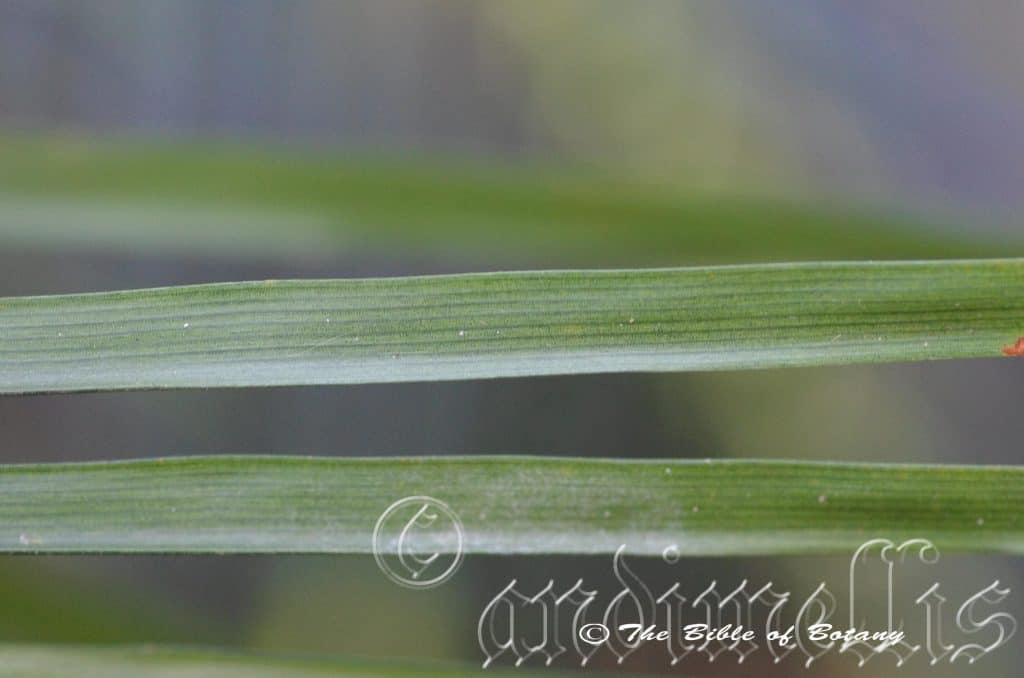
NCBG Coffs Harbour NSW
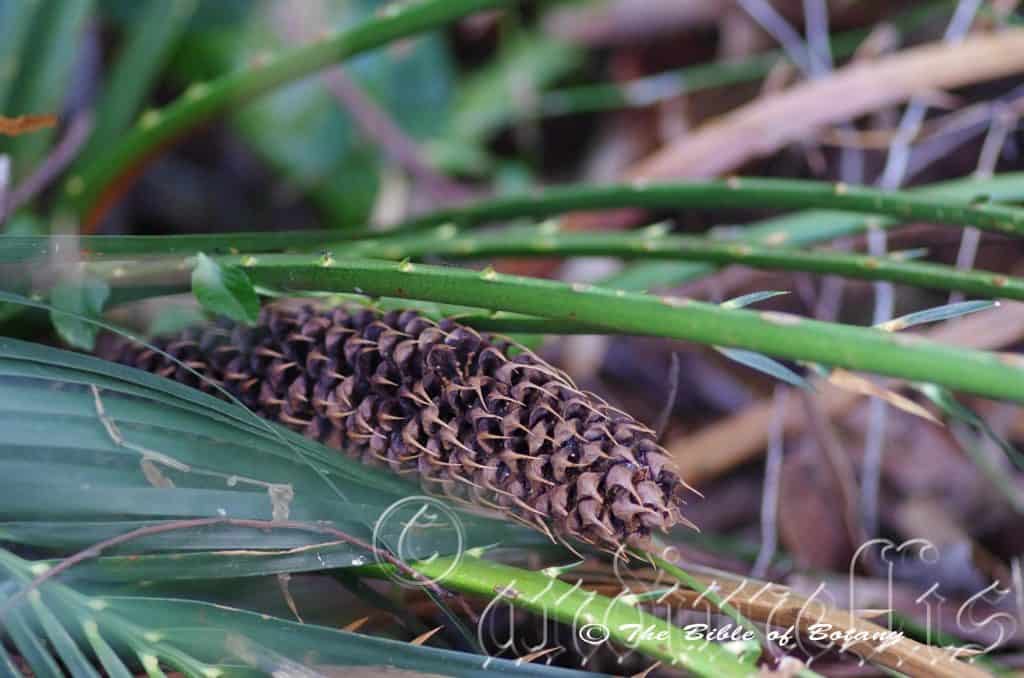
NCBG Coffs Harbour NSW
Macrozamia pauli-guilielmi
Classification:
Unranked: Cycadophyta
Class: Cycadopsida
Order: Cycadales
Family: Zamiaceae
Genus: From Makros, which is Ancient Greek for large and Zamia, which is Ancient Greek for a pine cone. It refers to fruits, which resemble a large pine cone typical of the Zamia genus.
Specie: Is named in honour of Pauli-Guilielm.
Sub species:
Common Name:
Distribution:
Macrozamia pauli-guilielmi is found south from near Woodgate to near Wolvi in south eastern Queensland and the off shore Island of Fraser Island. It is found on and east of the Great Dividing Range to the coast.
https://avh.ala.org.au/occurrences/search?taxa=Macrozamia+pauli-guilielmi#tab_mapView
Habitat Aspect Climate:
Macrozamia pauli-guilielmi prefers light dappled shade. It mainly grows on flat terrain in drier open woodlands and drier closed woodland forests. The altitude ranges from 20 meters ASL to 200 meters ASL.
The temperatures range from 3 degree in August to 36 degrees in January.
The rainfall ranges from lows of 1000mm to an average of 2000mm.
Soil Requirements:
Macrozamia pauli-guilielmi prefers better quality fertile loams to light fatty clay with copious quantities of forest litter and grass mulch. The soils are usually derived from accumulated peaty sands or black gritty basalts usually on deep, well drained flats. The soils pH. ranges from 5pH to 6pH. It does not tolerate waterlogged soils. Non saline soils to moderately saline soils are tolerated.
Height & Spread:
Wild Plants: 1m to 2m by 3m to 4m.
Characteristics:
Macrozamia pauli-guilielmi’s trunk is mostly subterranean when growing on deep friable loams. The above ground portion of the trunk measures 200mm to 250mm in length by 150mm to 200mm in diameter. The species produces coralloid roots above the ground surface. Back in the late 1970’s I never realized; nor did my customers realize, the rarity of this species as we grew them from wild seeds purchased from farmers who were encouraged to rip the plants out by government assisting the decline of the species.
Macrozamia pauli-guilielmi’s leaves grow in small flushes of 2 to 3 leaves which measure 500mm to 1000mm in length by 380mm to 700mm in width. There are 5 to 10 leaves in a mature crown. The rachis is strongly spirally twisted on this specie. The linear to narrow linear leaflets are deeply concaved and number 130 to 200 to a leaf. The longest are placed midway along the rachis and measure 150mm to 250mm in length by 2.3mm to 4.5mm in width. There is a large pale yellow to lemon-yellow gland at the base on the apical side of the leaflet while the apexes are narrowly acute. The lower 4 or 6 rarely up to 14 pinnae are reduced to spines. The concolourous laminas are deep sea-green, glabrous and semi glossy to glossy on the upper lamina while the lower lamina is semi glossy to dull. It is rigid, coriaceous and glossy when young, turning lustrous as they mature. The margins are entire. There are 8 to 9 slightly prominent veins on the lower lamina which are scarcely visible on the upper lamina.
The inflorescence of Macrozamia pauli-guilielmi is a compact cone born from the terminal point. The plants are dioecious, that is male and female cones appear on different plants.
The oblong conical male cones measure 80mm to 140mm by 35mm to 50mm in diameter. The cuspidate apexes have a relatively coriaceous spine.
The ovoidal female cones measure 90mm to 140mm by 40mm to 65mm in diameter. The spines measure 20mm to 35mm in length. The mature plants reproduce every 3 or 4 years and usually have 1 to 3 cones on each plant.
Macrozamia pauli-guilielmi’s fruit is a large obloidal cone. The cones are glaucous lime-green to mid glaucous green with the seeds turning bright crimson-orange when ripe. The seeds measure 17mm to 25mm in length by 13mm to 20mm in diameter near the apex.
Wildlife:
Macrozamia pauli-guilielmi predators are unknown to the author.
Cultivation:
Macrozamia pauli-guilielmi makes an excellent showy plant for dappled shady areas as an understory plant in open dry woodlands where the soils are sandy loams to light clays. They always look green and fresh especially where some ground moisture is retained. It is very suitable for small, medium and large gardens close to the coast in warm temperate, sub tropical, tropical gardens and would be worthwhile growing in semi-arid gardens. It is a good substitute for Macrozamia moorei as they look similar but do not grow as large. As garden subjects they will grow from 1.2 meters to 2 meters in height by 2 meters to 2.5 meters in diameter. It is very slow growing even where a fertilizing plan is being implemented. It is cold tolerant to temperatures at least as low as 5 degrees once established.
It is particularly handsome placed beneath Eucalyptus trees in a park like setting of in an open woodland garden on shallow soils where they will eventually form a trunk. Again they look at their best when mass planted or scatter planted with other Cycad specie. Used on banks in mass they can deliver a very strong regimented look even though it is scattered around in an informal look. Most Hibbertia specie and small native annuals planted below look very striking especially Hibbertia obtusifolia and Hibertia difusa when they are mass planted as a ground cover.
Propagation:
Seeds: Macrozamia pauli-guilielmi seeds can be sown directly into a seed raising mix after the seeds have been nicked. Cover the seeds with 15mm to 20mm of fine weed free mulch and keep moist. Place the tray in a warm semi shaded position preferably under 30mm shade cloth position. When the seedlings are 60mm to 100mm tall and at the 2 leaf stage, prick them out and plant them into 50mm native tubes using a good organic mix.
Once the seedlings reach 150mm to 250mm and at the 3 to 4 leaf stage they can be planted out into their permanent position.
Growth is very slow so patience is required.
Fertilize using seaweed, fish emulsion or organic chicken pellets soaked in water on an alternate basis. Fertilize every two months until the plants are established then twice annually in early September or March to maintain health, vitality and better flowering.
Further Comments from Readers:
Hi reader, it seems you use The Bible of Botany a lot. That’s great as we have great pleasure in bringing it to you! It’s a little awkward for us to ask, but our first aim is to purchase land approximately 1,600 hectares to link several parcels of N.P. into one at The Pinnacles NSW Australia, but we need your help. We’re not salespeople. We’re amateur botanists who have dedicated over 30 years to saving the environment in a practical way. We depend on donations to reach our goal. If you donate just $5, the price of your coffee this Sunday, We can help to keep the planet alive in a real way and continue to bring you regular updates and features on Australian plants all in one Botanical Bible. Any support is greatly appreciated. Thank you.
In the spirit of reconciliation we acknowledge the Bundjalung, Gumbaynggirr and Yaegl and all aboriginal nations throughout Australia and their connections to land, sea and community. We pay our respect to their Elders past, present and future for the pleasures we have gained.
Maireana brevifolia
Classification:
Unranked: Eudicots
Unranked: Core Eudicots
Order: Caryphyllales
Family: Chenopodiaceae
Genus: Is named in honour of Joseph François Maire. 1780-1867, who was a French amateur botanist who befriended Moquin-Tandon during the author’s first visit to Paris in 1834. The genus was described in 1840 by the botanist, Moquin-Tandon.
Specie From Brakhús, which is Ancient Greek, or later Brevis, which is Latin for short and Folia, which is Latin for a leaf or foliage. It refers to leaves, which are much smaller than other species in the genus.
Sub species:
Common Name: Small Leaf Blue Bush.
Distribution:
Maireana brevifolia is widespread in the southern half of mainland Australia. In Western Australia it is found in an area bounded by Kalgoorlie, the Esperance Plains, Gnowangerup, Dongarra Flats and the Greenough River. There are 2 disjunct Populations at Shark Bay and Nannina.
In the Northern Territory it has been found at Cape Crawford and the MacDonald ranges.
In the east it is found in an area bounded by Augethalla in southern central Queensland to Dunnedoo, Cowra in central New South Wales to Geelong in Victoria to Loxton, Cooke Plains, Cape Jervis, Fowlers Bay, Immarna Siding and Yardea Station in South Australia.
It is also found in the north west of the state and north western New South Wales and Eromanga with an outlying population at Longreach in Queensland.
https://avh.ala.org.au/occurrences/search?taxa=Maireana+brevifolia#tab_mapView
Habitat Aspect Climate:
Maireana brevifolia prefers light dappled shade to full shade. It grows in semi-arid to arid areas in the open in open woodlands, grasslands, along seasonal creek riparian zones and salt pans. It is one of the first plants to recolonise disturbed saline soils. The altitude ranges from 10 meters ASL to 780 meters ASL.
The temperatures range from minus 3 degrees in August to 42 degrees in January.
The rainfalls range from lows of 100mm to an average of 550mm.
Soil Requirements:
Maireana brevifolia prefers sand to medium gravelly clays or stone rocky skeletal soils. The soils are usually derived from decomposed sandstone or granitic sands. The soils pH. ranges from 5.5pH to 8.5pH. It does not tolerate waterlogged soils. Non saline soils to extremely saline soils are tolerated as are inland salt laden winds.
Height & Spread:
Wild Plants: 0.5m to 1.m by 0.6m to 1.2m.
Characteristics:
Maireana brevifolia is an erect or spreading small perennial shrub. The stems are grey while the new shoots are pale bluish-green to pale grey-green and glabrous or sparsely covered in short, white puberulent hairs. The shrubs have an open habit when stressed or are rather bushy when weather conditions are favourable.
Maireana brevifolia’s crowded, orbicular, ovate to oblong leaves are semi terete and succulent. They measure 5mm to 12mm in length by 5mm to 10mm in width. The base is round while the apexes are obtuse. The concolourous laminas are pale bluish to pale blueish-green or at times pale grey-green and glabrous. The margins are entire. The mid vein and lateral veins are obscure. The petioles are glabrous or sparsely covered in short white puberulent hairs often with longer hirsute hairs at the base of the leaf. The petioles measure 0.2mm to 1mm in length.
The inflorescences of Maireana brevifolia are born solitary from the leaf axils. The individual flowers are minute in the center of a fruiting perianth. The flattish, 5 lobed, glabrous ovary is pale greenish-blue and measures 1.8mm to 2.1mm in diameter. The 5 glabrous, chartaceous broad triangular wings are horizontal. The bases are cuneate while the apexes are broad obtuse. The wings measure 2.5mm to 3mm in length by 2.5mm to 3mm in width near the apex. The pale translucent green wings turn pale pink, pink, deep pink, carmine red, scarlet red or crimson before turning a fawn and dry when ripe. The flowers appear opportunistically following good rain but is generally from November to July with fruits being dispersed from February to March.
Wildlife:
Maireana brevifolia supports many herbaceous animals in periods of drought as a good back up feed. The leaves however contain high level of oxalic acid and are an accumulator of salt so should be eaten in moderation or fed to livestock with low oxalic feeds.
Cultivation:
Maireana brevifolia is a useful small rockery plant for well drained sunny positions. We have grown Maireana brevifolia on the northern side of sheds on reddish sands where they do exceptionally well for one season. The plants will set viable seed on the east coast and are easy to propagate. All our plants in cultivation grew from 0.7 meters to 0.8 meters in height by 1 meter to 1.2 meters in diameter. In the following wet season all our plants died.
Propagation:
Seeds: Maireana brevifolia seeds can be sown directly into a seed raising mix. Cover the seeds with 2mm to 6mm of fine weed free mulch and keep moist. Place the tray in a warm sunny position. When the seedlings are 30mm to 50mm tall, prick them out and plant them into 50mm native tubes using a good organic mix.
Once the seedlings reach 100mm to 150mm in height they can be planted out into their permanent position.
Fertilize using seaweed, fish emulsion or organic chicken pellets soaked in water on an alternate basis. Fertilize every two months until the plants are established then twice annually in early September or March to maintain health, vitality and better flowering.
Cuttings: Use 80mm to 100mm long half ripened material when growing from cuttings from the present season’s growth. Take them in warmer months of the year. Remove half the leaves from the bottom section being careful not to tear the bark.
1 Prepare the cutting mix by adding one third sharp clean river sand, one third peat and one third perlite. These ingredients are sterilize,
2 Select good material from non diseased plants,
3 Select semi green stems for cuttings. Look for a stem with two or three nodes,
4 Place the cutting on a flat, hard surface, and make a clean cut down one side of the cutting at the base for 10mm with a sharp sterile knife or razor blade. – This scarification of the node will increase the chances of roots emerging from this spot. Now remove all but one or two the leaves, leaving the apex leaves in tact. If the leaves are very large in proportion to the stem, cut off the apical halves.
5 Hormones are not required for Maireana brevifolia,
6 Use a small dipple stick or old pencil to poke a hole into the soilless potting mix. Ensure the hole is slightly larger than the stem diameter and be careful not to wipe the rooting hormone off the cuttings base, place the cuttings in a pattern ensuring the cuttings are not touching each other,
7 I like to place the pots in Plastic bags to help maintain temperature and moisture. Place in a semi shaded place like under 50mm shade cloth.
8 When the cuttings have struck, open the bag to allow air circulation for a few days to a week,
9 Once hardened off remove the cuttings from the bag and allow to further hardening for a few more days,
10 Transplant into a good potting mix to grow on.
Fertilize using seaweed, fish emulsion or organic chicken pellets soaked in water on an alternate basis. Fertilize every two months until the plants are established then twice annually in early September or March to maintain health, vitality and better flowering.
Further Comments from Readers:
Hi reader, it seems you use The Bible of Botany a lot. That’s great as we have great pleasure in bringing it to you! It’s a little awkward for us to ask, but our first aim is to purchase land approximately 1,600 hectares to link several parcels of N.P. into one at The Pinnacles NSW Australia, but we need your help. We’re not salespeople. We’re amateur botanists who have dedicated over 30 years to saving the environment in a practical way. We depend on donations to reach our goal. If you donate just $5, the price of your coffee this Sunday, We can help to keep the planet alive in a real way and continue to bring you regular updates and features on Australian plants all in one Botanical Bible. Any support is greatly appreciated. Thank you.
In the spirit of reconciliation we acknowledge the Bundjalung, Gumbaynggirr and Yaegl and all aboriginal nations throughout Australia and their connections to land, sea and community. We pay our respect to their Elders past, present and future for the pleasures we have gained.
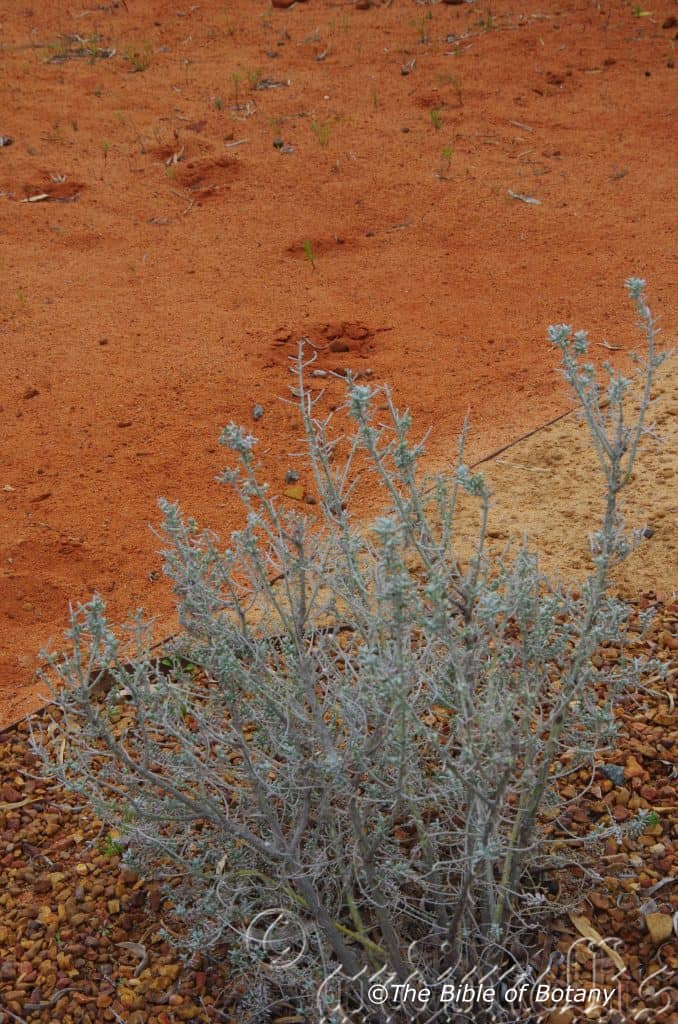
National Botanic Gardens ACT
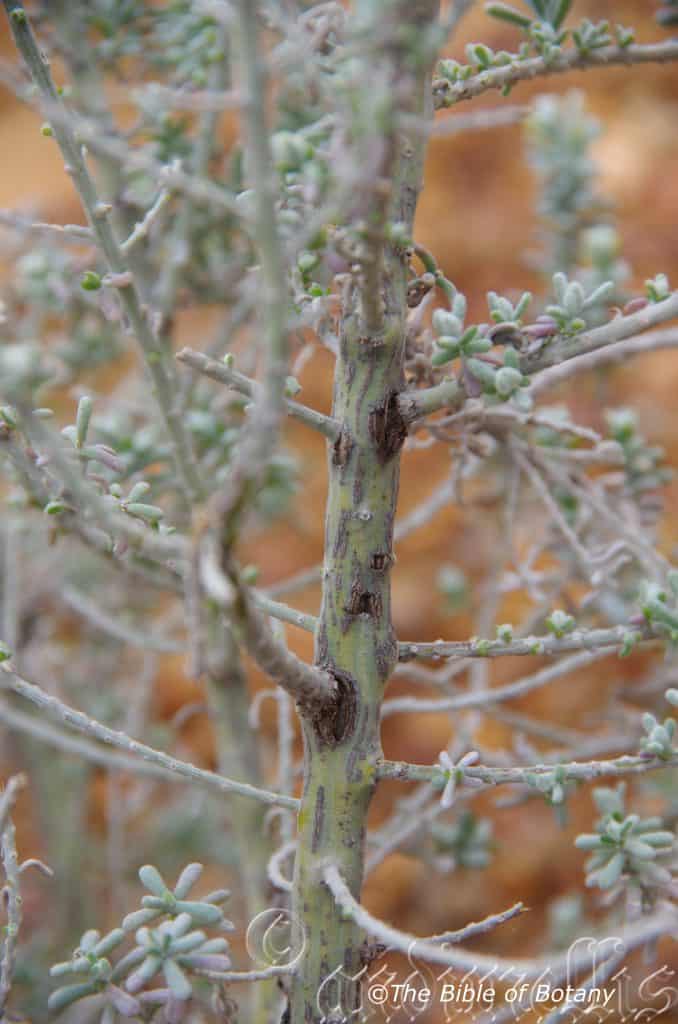
National Botanic Gardens ACT

National Botanic Gardens ACT
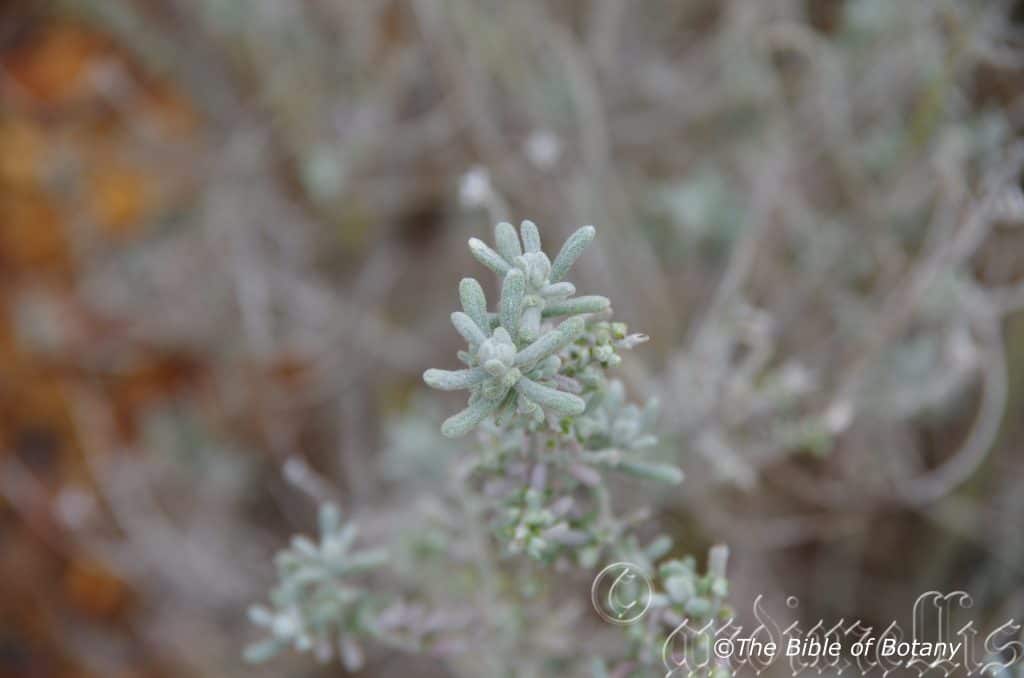
National Botanic Gardens ACT

National Botanic Gardens ACT
Maireana sedifolia
Classification:
Unranked: Eudicots
Unranked: Core Eudicots
Order: Caryphyllales
Family: Chenopodiaceae
Genus: Is named in honour of Joseph François Maire. 1780-1867, who was a French amateur botanist who befriended Moquin-Tandon during the author’s first visit to Paris in 1834. The genus was described in 1840 by the botanist, Moquin-Tandon.
Specie: There seems to be some confusion as to the meanining of the name. Some say it is from sedile, which is Latin for three stones for priests in the south wall of a chancel, often canopied and decorated and Folia, which is Latin for a leaf or foliage, while others say it is from Sedum in reference to the succulent leaves resembling those of the Sedum genus. Either way it refers to plants, which have extremely decorative foliage like the three priests ornate garb or the beautiful Sedums.
Sub species:
Common Name: Decorative Leaf Blue Bush.
Distribution:
Maireana sedifolia is widespread in the southern third of central mainland Australia from central Western Australia to the South Australian Victorian border.
https://avh.ala.org.au/occurrences/search?taxa=Maireana+sedifolia#tab_mapView
Habitat Aspect Climate:
Maireana sedifolia prefers light dappled shade to full sun. It grows in semi-arid to arid areas in open woodlands, grasslands, along seasonal creek riparian zones and adjacent to salt pans. It is one of the first plants to recolonise disturbed flats and limestone ridges. The altitude ranges from minus 2 meters ASL to 780 meters ASL.
The temperatures range from minus 3 degrees in August to 46 degrees in January.
The rainfalls range from lows of 100mm to an average of 1050mm.
Soil Requirements:
Maireana sedifolia prefers red sand and calcareous soils. The soils are usually derived from decomposed sandstone or limestones and accumulated beach sands. The soils pH. ranges from 5.5pH to 8.5pH. It does not tolerate waterlogged soils. Non saline soils to extremely saline soils are tolerated as are inland salt laden winds.
Height & Spread:
Wild Plants: 0.5m to 1m by 0.6m to 1.2m.
Characteristics:
Maireana sedifolia is an erect, small perennial shrub. The stems are grey while the juvenile stems are pale bluish-green to pale greyish-blue and densely covered in white floccose hairs.
Maireana sedifolia’s crowded, thick, terete leaves are somewhat succulent and measure 7mm to 10mm in length by 3.5mm to 4.5mm in diameter at the apex. The leaves taper slightly to the stam, while the apexes are obtuse. The leaves are densely covered in white floccose hairs.
The moniecious inflorescences of Maireana sedifolia are born in pairs from the leaf axils with only one reaching maturity. The perianth tube is hemispherical to turbinate, and measures 2mm to 2.5mm in height by 2mm to 3mm width at the apex. It is firm despite being chartacea except for the thick base. They are sparsely covered in white, floccose hairs. The simple, horizontal, glabrous, chartacea wings measure 10mm in diameter. It has a line radial venation and a single radial slit. The upper perianth more or less flat, and moderately covered in white, floccose hairs. The stout style moderately covered in white, floccose hairs. The flowers appear opportunistically following good rain but is generally from November to January.
The turbinate tube is sparsely covered in white floccose hairs and measures t1.5mm to 2mm in height while the horizontal wings measure 10mm in diameter. The fruiting perianth of Maireana sedifolia is straw-coloured or pale-brown when dry.
Wildlife:
Maireana sedifolia supports many herbaceous animals in periods of drought as a good back up feed. The leaves however contain high level of oxalic acid and are an accumulator of salt so should be eaten in moderation or fed to livestock with low oxalic feeds.
Cultivation:
Maireana sedifolia is an extremely beautiful small shrub for semi arid rockeries where well drained sunny positions occur. Plants in cultivation will grow from 1 meter to 1.2 meters in height by 1 meter to 1.2 meters in diameter.
It is best grown for its blue foliage with the small berries and bright pale yellow to pale pink bracts surrounding the berries being an added attraction as the flowers are fairy insignificant. The blue grey foliage and compact habit makes it an attractive space filler amongst rocks or as a specimen plant around swimming pools or niche positions in the sun. It has been grown as a low hedge. It is very hardy and adaptable in semi arid areas.
Propagation:
Seeds: Maireana sedifolia seeds can be sown directly into a seed raising mix. Cover the seeds with 2mm to 6mm of fine weed free mulch and keep moist. Place the tray in a warm sunny position. When the seedlings are 30mm to 50mm tall, prick them out and plant them into 50mm native tubes using a good organic mix.
Once the seedlings reach 100mm to 150mm in height they can be planted out into their permanent position.
Fertilize using seaweed, fish emulsion or organic chicken pellets soaked in water on an alternate basis. Fertilize every two months until the plants are established then twice annually in early September or March to maintain health, vitality and better flowering.
Cuttings: Use 80mm to 100mm long half ripened material when growing from cuttings from the present season’s growth. Take them in warmer months of the year. Remove half the leaves from the bottom section being careful not to tear the bark.
1 Prepare the cutting mix by adding one third sharp clean river sand, one third peat and one third perlite. These ingredients are sterilize,
2 Select good material from non diseased plants,
3 Select semi green stems for cuttings. Look for a stem with two or three nodes,
4 Place the cutting on a flat, hard surface, and make a clean cut down one side of the cutting at the base for 10mm with a sharp sterile knife or razor blade. – This scarification of the node will increase the chances of roots emerging from this spot. Now remove all but one or two the leaves, leaving the apex leaves in tact. If the leaves are very large in proportion to the stem, cut off the apical halves.
5 Hormones are not required for Maireana sedifolia,
6 Use a small dipple stick or old pencil to poke a hole into the soilless potting mix. Ensure the hole is slightly larger than the stem diameter and be careful not to wipe the rooting hormone off the cuttings base, place the cuttings in a pattern ensuring the cuttings are not touching each other,
7 I like to place the pots in Plastic bags to help maintain temperature and moisture. Place in a semi shaded place like under 50mm shade cloth.
8 When the cuttings have struck, open the bag to allow air circulation for a few days to a week,
9 Once hardened off remove the cuttings from the bag and allow to further hardening for a few more days,
10 Transplant into a good potting mix to grow on.
Fertilize using seaweed, fish emulsion or organic chicken pellets soaked in water on an alternate basis. Fertilize every two months until the plants are established then twice annually in early September or March to maintain health, vitality and better flowering.
Further Comments from Readers:
Hi reader, it seems you use The Bible of Botany a lot. That’s great as we have great pleasure in bringing it to you! It’s a little awkward for us to ask, but our first aim is to purchase land approximately 1,600 hectares to link several parcels of N.P. into one at The Pinnacles NSW Australia, but we need your help. We’re not salespeople. We’re amateur botanists who have dedicated over 30 years to saving the environment in a practical way. We depend on donations to reach our goal. If you donate just $5, the price of your coffee this Sunday, We can help to keep the planet alive in a real way and continue to bring you regular updates and features on Australian plants all in one Botanical Bible. Any support is greatly appreciated. Thank you.
In the spirit of reconciliation we acknowledge the Bundjalung, Gumbaynggirr and Yaegl and all aboriginal nations throughout Australia and their connections to land, sea and community. We pay our respect to their Elders past, present and future for the pleasures we have gained.
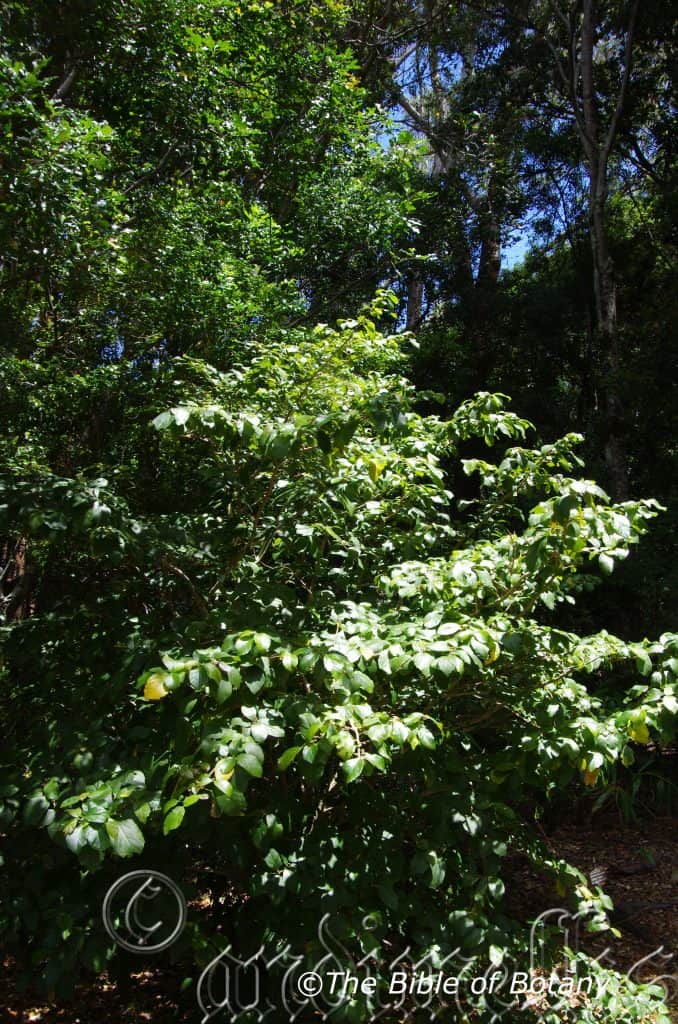
Richmond River NSW
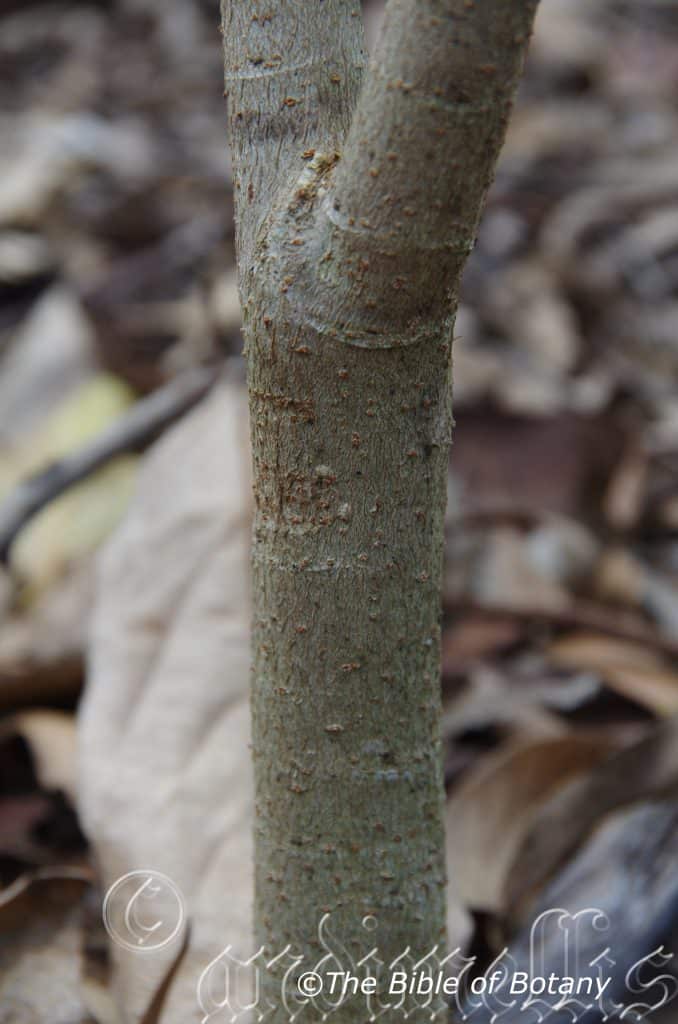
Richmond River NSW
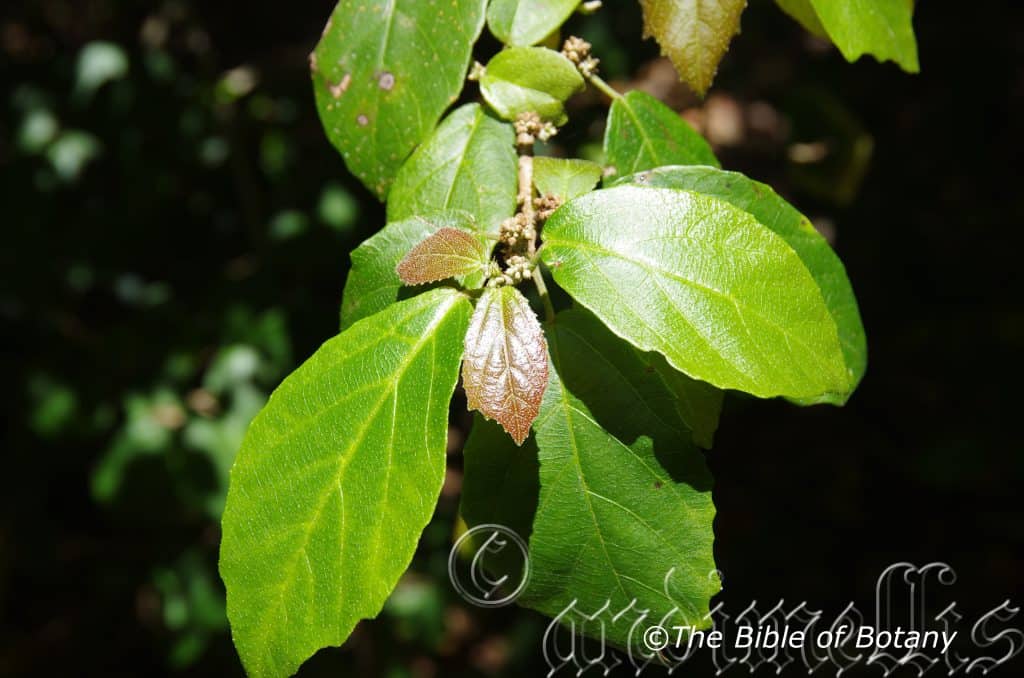
Richmond River NSW
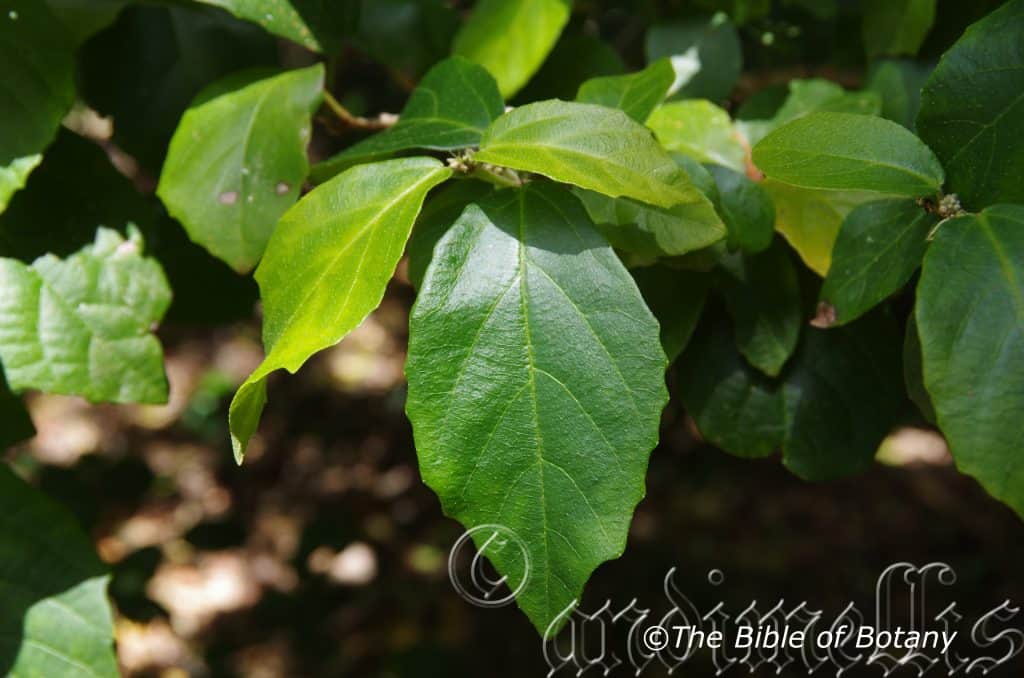
Richmond River NSW
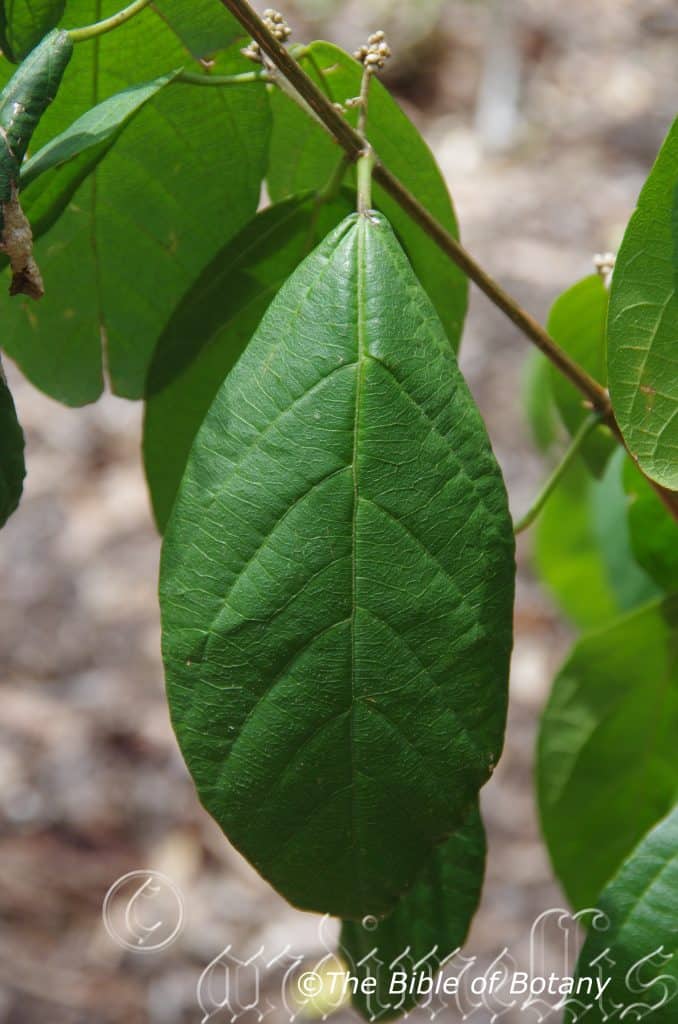
Richmond River NSW

Richmond River NSW
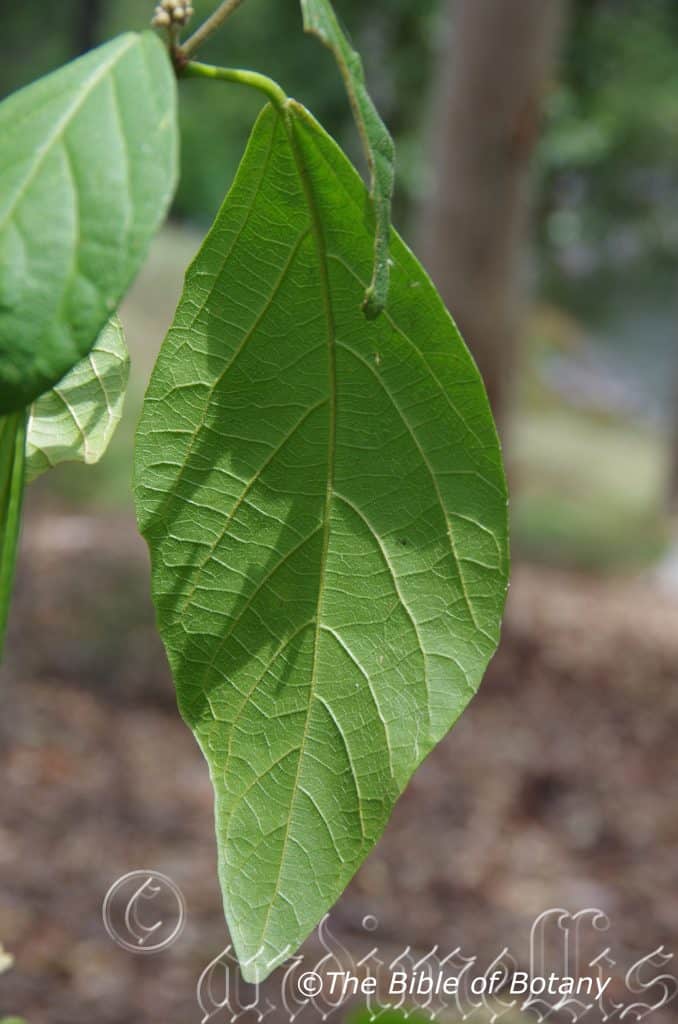
Richmond River NSW
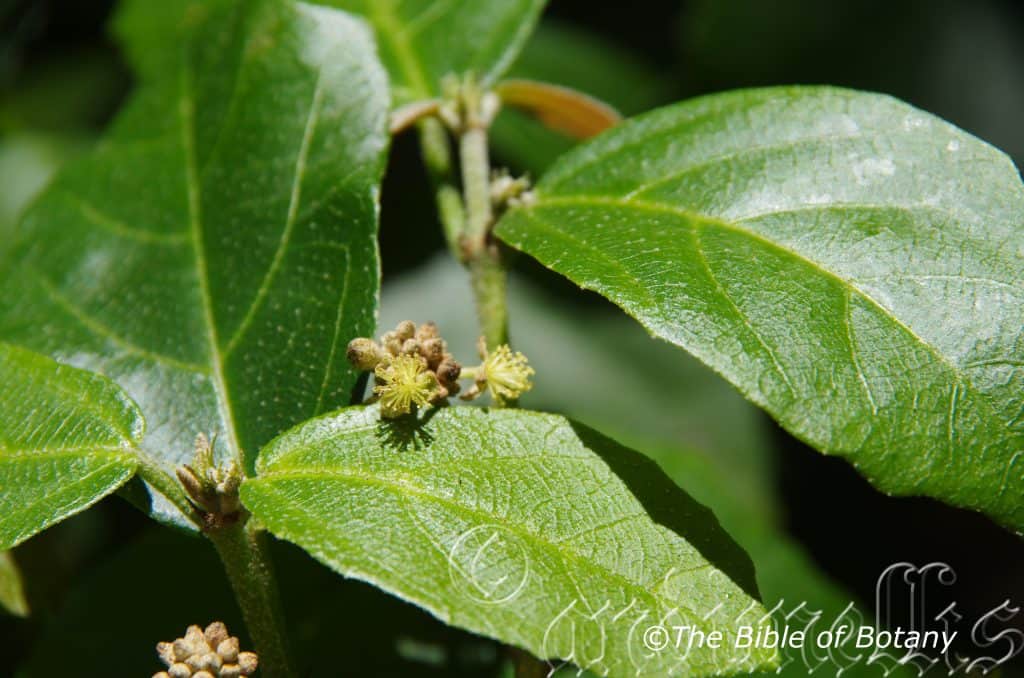
Richmond River NSW
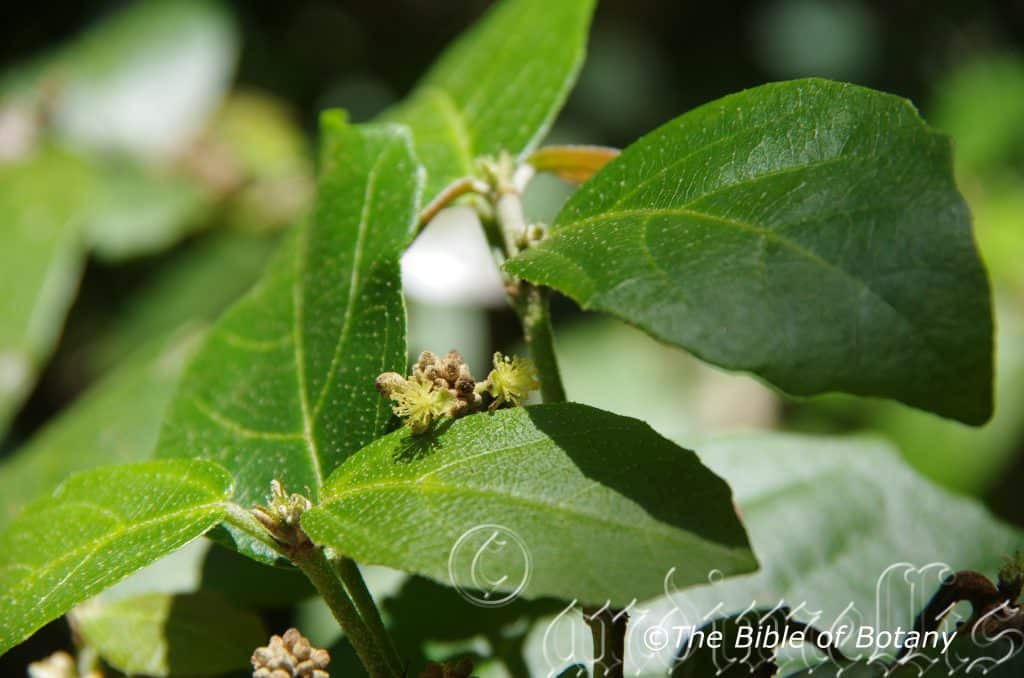
Richmond River NSW
Mallotus claoxyloides
Classification:
Unranked: Magnoliophyta
Unranked: Magnoliopsida
Order: Malpighiales
Family: Euphorbaceae
Genus: From Mallotos, which is Ancient Greek for to be lined with wool. It refers to plants, which have woolly stems and leaves.
Specie From Klao, which is Ancient Greek for to break off, Xylon, which is Greek wood and Eîdos/Oides, which is Ancient Greek for alike or similar to. It refers to woody stems, which are easy to break similar to the Claoxylon genus. From Klao, which is Ancient Greek for to break off, Xylon, which is Greek wood and Eîdos/Oides, which is Ancient Greek for alike or similar to. It refers to woody stems, which are easy to break similar to the Claoxylon genus.
Variety: Mallotus claoxyloides var. angustifolia. From Angusta, which is Latin for narrow and Folium, which is Latin for foliage. It usually refers to leaves, which are narrower than other species in the genus.
Variety: Mallotus claoxyloides var. claoxyloides. From Klao, which is Ancient Greek for to break off, Xylon, which is Greek wood and Eîdos/Oides, which is Ancient Greek for alike or similar to. It refers to woody stems, which are easy to break similar to the Claoxylon genus. From Klao, which is Ancient Greek for to break off, Xylon, which is Greek wood and Eîdos/Oides, which is Ancient Greek for alike or similar to. It refers to woody stems, which are easy to break similar to the Claoxylon genus.
Variety: Mallotus claoxyloides var. cordatus. From Kordātum, which is Ancient Greek or Cordātus, which is Latin for a heart shape. It refers to leaves, which have a heart shape.
Variety: Mallotus claoxyloides var. ficifolia. From Fici, which is Latin for a fig and Folia which is Latin for foliage. It refers to leaves, which resemble those of the Ficus genus.
Variety: Mallotus claoxyloides var. glabratus. From Glabrum, which is Latin for glabrous or smooth. It refers to structures or organs, which have no hairs or scales. This is presently an unresolved name awaiting further research to determine which genus, species or sub species or variety it should be allocated to.
Variety: Mallotus claoxyloides var. macrophylla. From Makros which is Ancient Greek for large and Phullon/Phýllon, which is Ancient Greek for a leaf. It refers to leaves, which are a lot larger than other species in the genus.
Common Name: Green Kamala or Smell of the Bush.
Distribution:
There appears to be some confusion still in sorting the variety names out and the exact locations of some of the varieties as studies are still being carried out on the specie. The variety ficifolia is known as both ficifolia with ficifolius, angustifolia with angustifolius and macrophylla with macrophyllus.
Mallotus claoxyloides var. angustifolia is found in two disjunct populations on and east of the Great Dividing Range, south from Gympie to Caloundra and south of Brisbane to the Gold Coast in south east Queensland.
Mallotus claoxyloides var. claoxyloides is found in two disjunct Populations. One in far north Queensland south from the Torres Strait Islands in scattered populations to west south west of cairns. The second population is found south from the Scawfell Islands east of Mackay in central Queensland to the upper Clarence Valley in far north eastern New South Wales.
Mallotus claoxyloides var. cordatus is found south from the Torres Strait islands to Gladstone on and east of the Great Dividing Range and some off shore islands in coastal Queensland.
Mallotus claoxyloides var. ficifolia is found south from the Torres Strait islands to Gladstone on and east of the Great Dividing Range some off shore islands in coastal Queensland.
Mallotus claoxyloides var. glabratus is found in two disjunct Populations. One in far north Queensland south from the Torres Strait Islands in scattered populations to west south west of cairns. The second population is found south from the Scawfell Islands east of Mackay in central Queensland to the upper Clarence Valley in far north eastern New South Wales.
Mallotus claoxyloides var. macrophylla is found south from the Torres Strait islands to Gladstone on and east of the Great Dividing Range and some off shore Islands in coastal Queensland.
https://avh.ala.org.au/occurrences/search?taxa=Mallotus+claoxyloides#tab_mapView
Habitat Aspect Climate:
Mallotus claoxyloides prefers light dappled shade to full shade. It grows along the coastal ranges in warm dry sub tropical rainforests or littoral rainforests. The altitude ranges from 10 meters ASL to 350 meters ASL.
The temperatures range from 3 degrees in August to 36 degrees in January.
The rainfalls range from lows of 800mm to an average of 2000mm.
Soil Requirements:
Mallotus claoxyloides prefers deep red or black loams to medium gravelly clays often with copious quantities of forest litter. The soils are usually derived from decomposed black basalts, metamorphic rocks or shales. The soils pH. ranges from 6pH to 7pH. It does not tolerate waterlogged soils. Non saline soils to moderately saline soils are tolerated.
Height & Spread:
Wild Plants: 5m to 9m by 4m to 8m.
Characteristics:
Mallotus claoxyloides’s scabrous trunk is grey as are the branches and main stems. The new shoots are pale olive green to green with a faint pink ting. The branchlets and terminal shoots are covered in golden-brown stellate hairs. The trees have an open canopy.
Mallotus claoxyloides’s opposite leaves are oblong to elliptical. It is of equal size on the male trees and are unequal in length and breadth on the female trees. They measure 50mm to 125mm in length by 30mm to 75mm in width with the northern species having broader leaves. The base is round while the apexes are acuminate to broadly acuminate. The concolourous laminas are olive-green dull and covered in golden-brown stellate hairs. Immature leaves are pale-lime green to pale lime-green while new flushes are fawn-pink to mushroom pink. The margins are regularly finely toothed on the apical half. The mid vein is strongly prominent on the lower lamina and is distinctly visible from above as are the 2 main lateral veins which extend from the base most of the way to the apex. There are two distinct glands on the upper lamina near the junction with the 2 lateral veins. The petioles measure 10mm to 40mm in length and are covered in golden-brown stellate hairs.
The inflorescence of Mallotus claoxyloides are dioecious with the female flowers being an umbellata and the male flowers being born on a short spike. Both the male and female flowers are born from the upper leaf axils. The individual flowers measure 4mm to 6mm in diameter.
The 3 creamy green lanceolate reflexed tepals on the male trees are densely covered in golden-brown stellate hairs on the outer surface and are covered in white stellate hairs on the inner surface. They measure 3mm to 4mm in length by 1.5mm to 2.5mm in width at the base. The numerous; 20 to 30, creamy white stamens measure 4mm to 5mm in length.
The 3 creamy green narrow triangular reflexed tepals on the female trees have an obtuse apex. It is densely covered in creamy green stellate hairs on the outer surface and are glabrous on the inner surface. They measure 3mm to 4mm in length by 1mm to 2mm in width at the base. The tepals become strongly reflexed following anthesis. The ovaries are pale creamy green and densely covered in creamy green stellate hairs and trichomes hairs. The 3 locule stigmas are fimbriate and covered in creamy green villose hairs and measures 6mm to 7mm long. The flowers appear from October to March.
Mallotus claoxyloides’s fruits are globose, glabrous capsules which are covered in muricate bristles. The capsules measure 8mm to 12mm in diameter with northern plants having smaller capsules than the southern plants. The capsules turn red-brown before splitting when ripe. The 3 locule capsules split to reveal a single, oval, black seed in each locule. The style is persistent on the ripe capsules. The capsules ripen from February to June.
Wildlife:
Mallotus claoxyloides supports the beautiful Jewel bug Cantao parentum. This particular insect is very unusual that it stays with its eggs until they hatch and will protect them from predators thus its Latin name refers to being a parent. The bugs are 12mm long and are bright orange with large black spots. Beware especially if they have eggs as you may get a dose of spiroketals which is difficult to remove and smells worse than the trees, thus their common name is a stink bug. (Spiroketals are being studied extensively as they defy thermos dynamics, have been found to combat cancer cells including Lung cancers, used in chelating iron and a number of other uses too complicated to explain or understand for this mere mortal.)
Cultivation:
Mallotus claoxyloides is one of the best known scents in the Australian bush. It makes an excellent medium size tree for a park like scene or specimen tree in the garden though it can be a little straggly when planted amongst other trees and shrubs. They always look green and fresh especially where adequate ground moisture is retained whether it is grown in light shade or full sun. It is very suitable on sandy clay soils. It is most suitable for small, medium and large gardens close to the coast in temperate, sub tropical or tropical gardens. As garden subjects they will grow from 5m to 7m by 4m to 5m wide when grown in the open. It is cold tolerant to temperatures at least as low as minus 2 degrees once established. They should be protected until they reach at least 2 meters in height.
It is best used adjacent to small areas of bush close to paths or the house so their bush scent can radiate out and can be appreciated regularly. They can be planted in small groups of 2 or 3 to enhance their appearance. It is semi deciduous to deciduous towards the end of the dry season for a short period.
They can be used as small shade trees in semi protected areas. It is an excellent tree for starting a dry rainforest garden. When planting the trees in a rainforest try to place them in the center with other smaller dry rainforest trees so their scent lingers within the forest.
If mild native fertilizers are used they will develop quickly after 3 or 4 years of stabilizing themselves.
In Native gardens they can be used for attracting butterflies, native bees, native flies or native beetles during flowering which are necessary for fertilization of the flowers.
It is useful as a backdrop small tree contrasting with smaller finer leaf shrubs that are planted in the foreground. This gives the impression that they like being the center of attention which they deserve.
Propagation:
Seeds: Mallotus claoxyloides seeds can be sown directly into a seed raising mix. Cover the seeds with 2mm to 6mm of fine weed free mulch and keep moist. Place the tray in a warm sunny position. When the seedlings are 30mm to 50mm tall, prick them out and plant them into 50mm native tubes using a good organic mix.
Once the seedlings reach 100mm to 150mm in height they can be planted out into their permanent position.
Fertilize using seaweed, fish emulsion or organic chicken pellets soaked in water on an alternate basis. Fertilize every two months until the plants are established then twice annually in early September or March to maintain health, vitality and better flowering.
Further Comments from Readers:
Hi reader, it seems you use The Bible of Botany a lot. That’s great as we have great pleasure in bringing it to you! It’s a little awkward for us to ask, but our first aim is to purchase land approximately 1,600 hectares to link several parcels of N.P. into one at The Pinnacles NSW Australia, but we need your help. We’re not salespeople. We’re amateur botanists who have dedicated over 30 years to saving the environment in a practical way. We depend on donations to reach our goal. If you donate just $5, the price of your coffee this Sunday, We can help to keep the planet alive in a real way and continue to bring you regular updates and features on Australian plants all in one Botanical Bible. Any support is greatly appreciated. Thank you.
In the spirit of reconciliation we acknowledge the Bundjalung, Gumbaynggirr and Yaegl and all aboriginal nations throughout Australia and their connections to land, sea and community. We pay our respect to their Elders past, present and future for the pleasures we have gained.
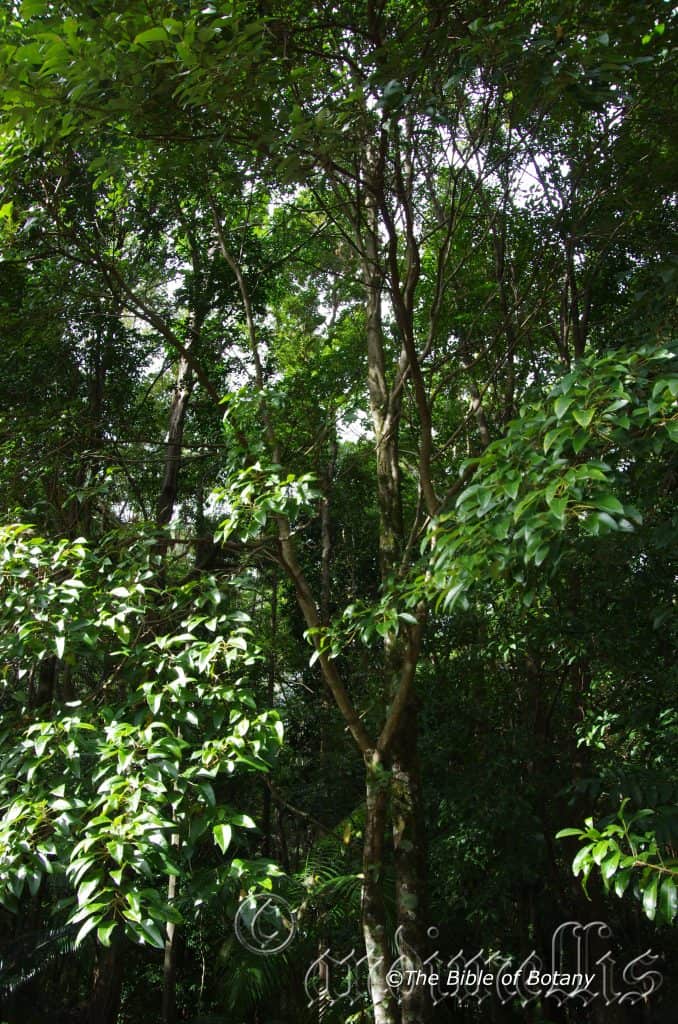
NCBG Coffs Harbour NSW
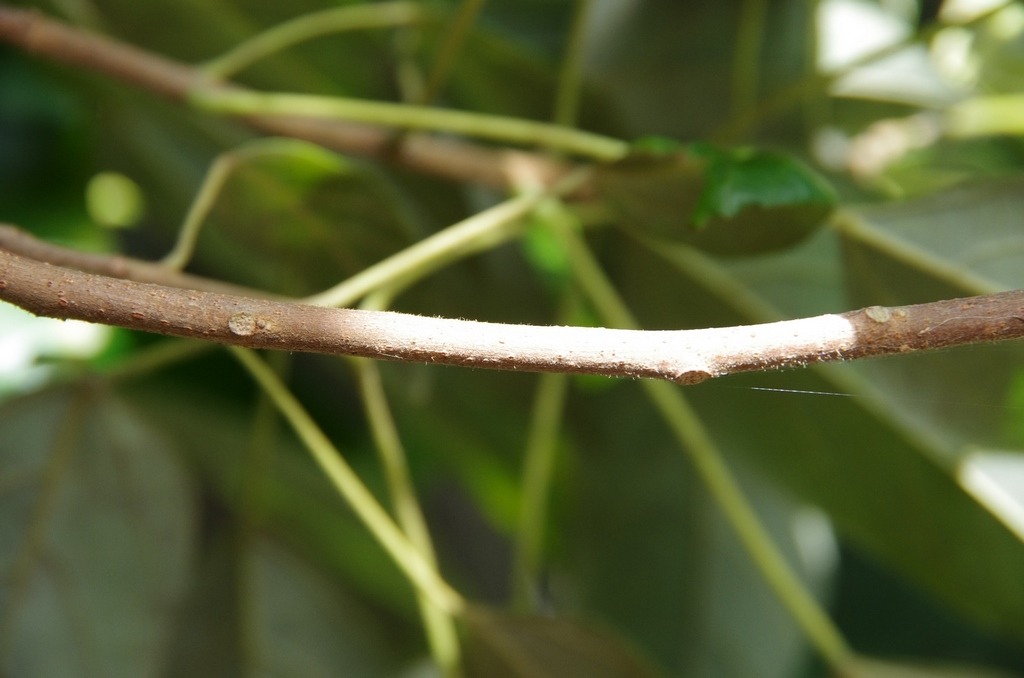
NCBG Coffs Harbour NSW

NCBG Coffs Harbour NSW
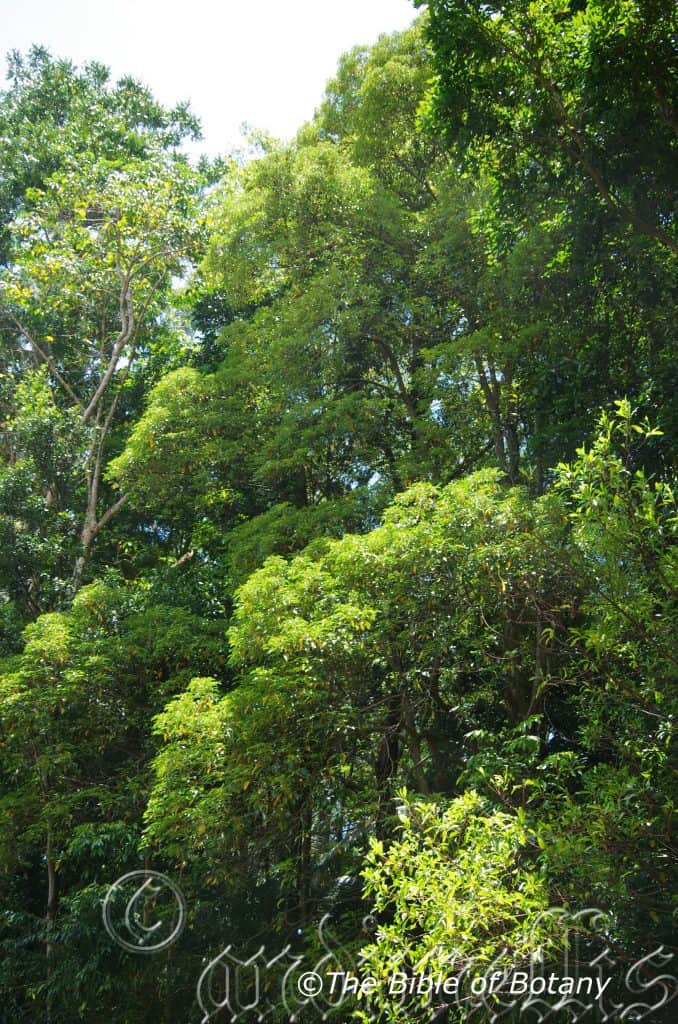
NCBG Coffs Harbour NSW
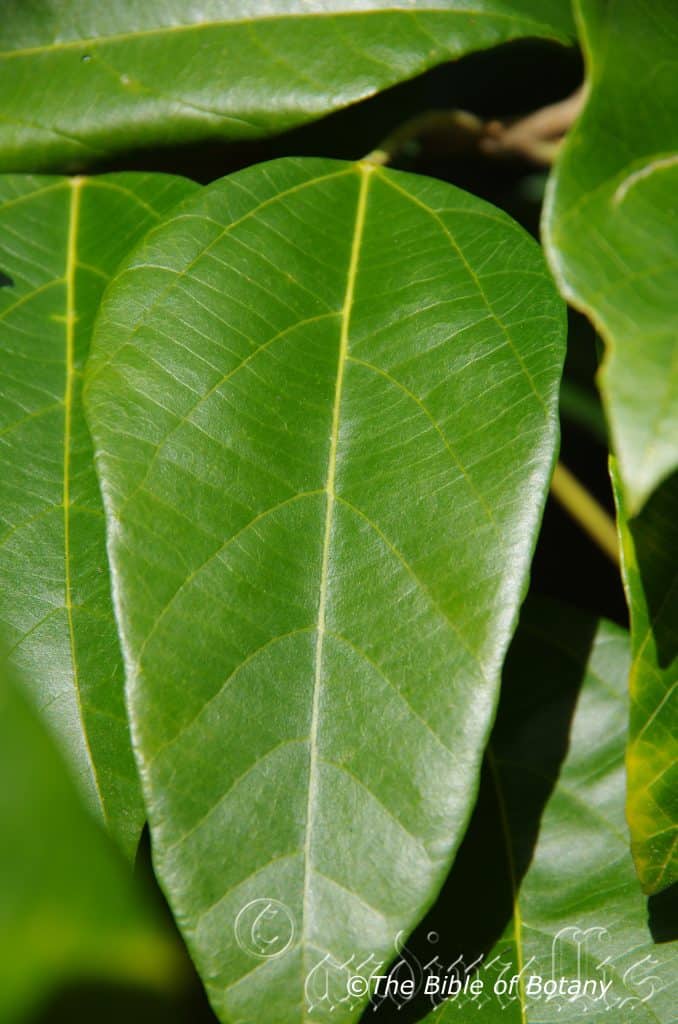
NCBG Coffs Harbour NSW
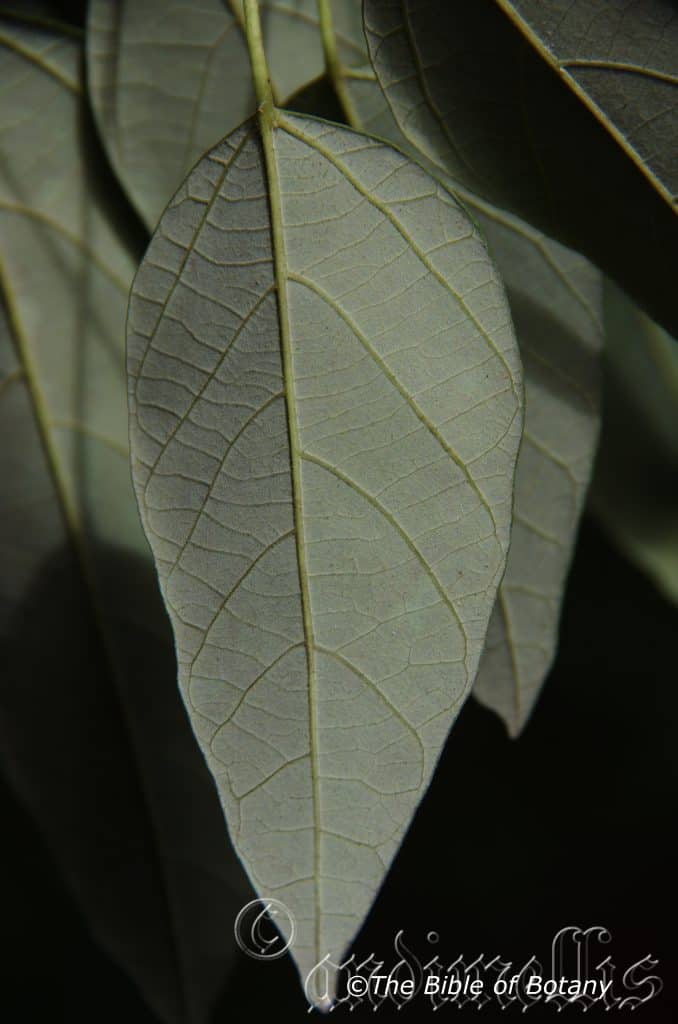
NCBG Coffs Harbour NSW
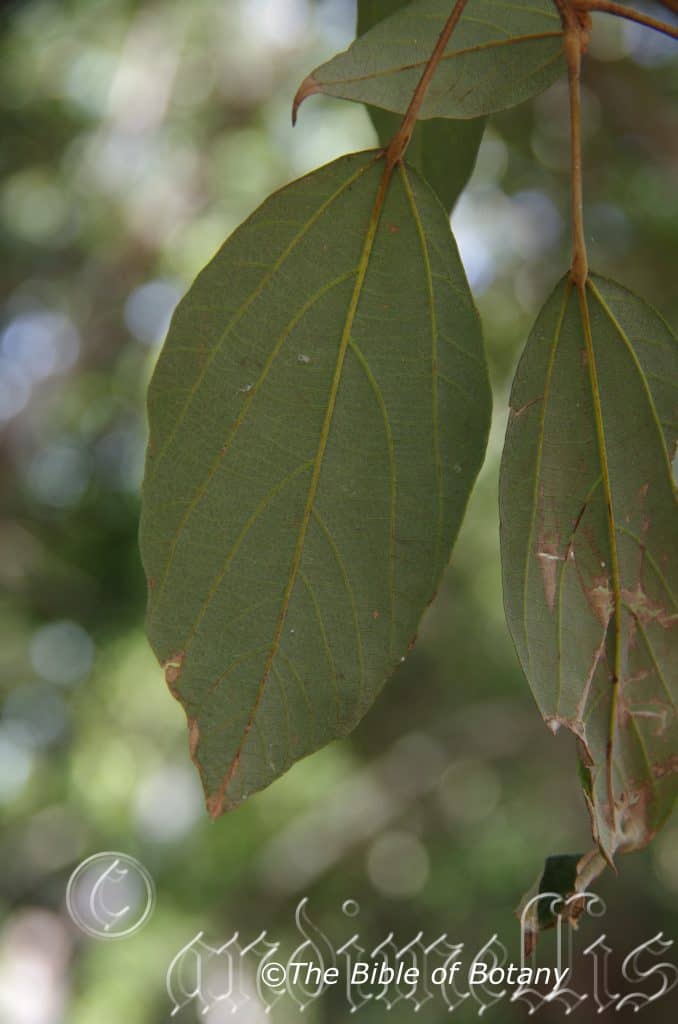
NCBG Coffs Harbour NSW
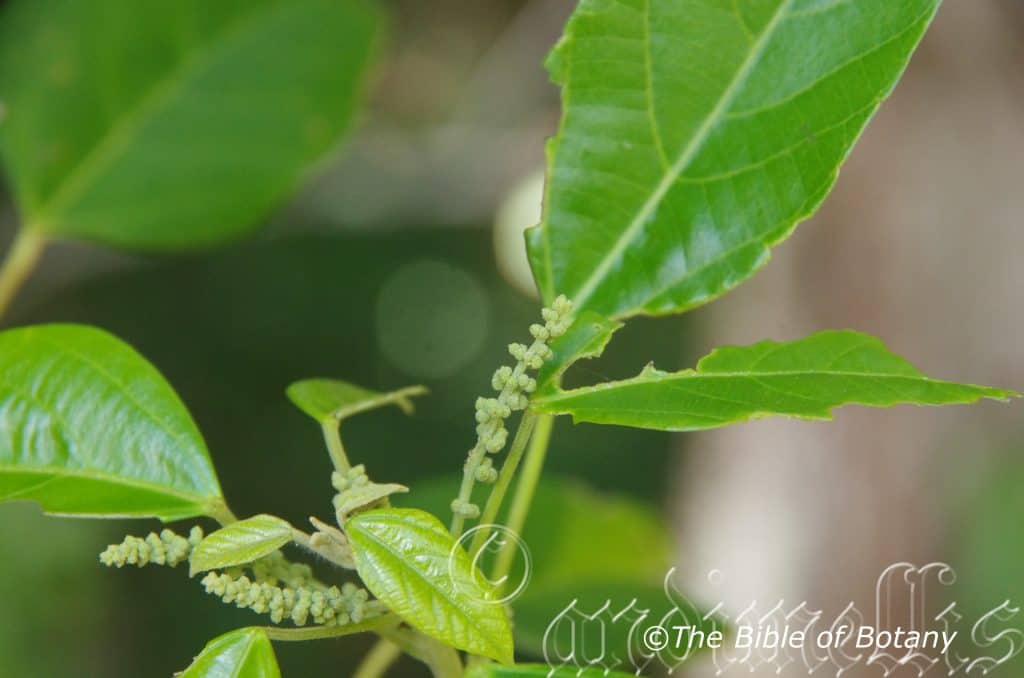
NCBG Coffs Harbour NSW
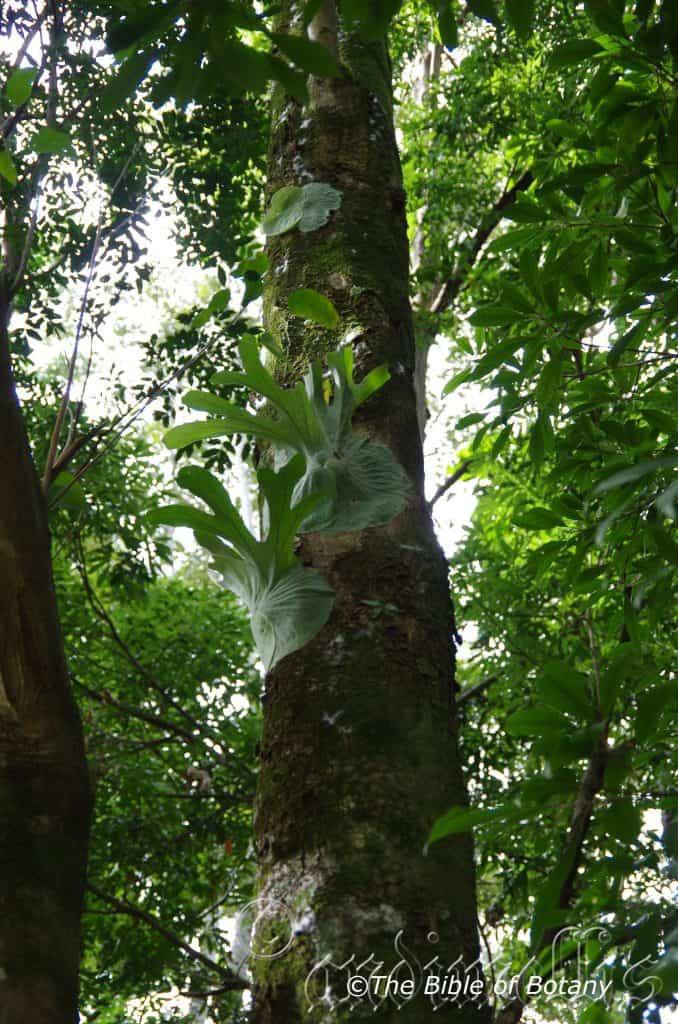
NCBG Coffs Harbour NSW
Mallotus discolor
Classification:
Unranked: Magnoliophyta
Unranked: Magnoliopsida
Order: Malpighiales
Family: Euphorbaceae
Genus: From Mallotos, which is Ancient Greek for to be lined with wool. It refers to plants, which have woolly stems and leaves.
Specie: From Di/Dis, which are Ancient Greek for two and Color, which is Latin for a tint or hue. It refers to structures or organs usually the leaves, which have a different colour on each surface.
Sub species:
Common Name: White Kamala or Yellow Kamala.
Distribution:
Mallotus discolor is found south from Magnetic Island in central coastal Queensland to Susan Island in central Grafton on the Clarence River in northern coastal New South Wales. There is a disjunct population in far north eastern Queensland on the MacIlwraith Range.
https://avh.ala.org.au/occurrences/search?taxa=Mallotus+discolor#tab_mapView
Habitat and Habit:
Mallotus discolor prefers light dappled shade to full shade. It is found close to the coast and on the off shore Islands. It grows along the coastal ranges in warm dry sub tropical rainforests or littoral rainforests. The altitude ranges from 5 meters ASL to 280 meters ASL.
The temperatures range from 3 degrees in August to 36 degrees in January.
The rainfalls range from lows of 800mm to an average of 2000mm.
Soil Requirements:
Mallotus discolor prefers sandy loams to medium gravelly clays often with copious quantities of leaf litter. The soils are usually derived from black basalt, sandstones, metamorphic rocks, shales or accumulated silts and accumulated coral sands. The soils pH. ranges from 6pH to 7pH. It does not tolerate waterlogged soils. Non saline soils to moderately saline soils are tolerated.
Height & Spread:
Wild Plants: 8m to 15m by 6m to 10m.
Characteristics:
Mallotus discolor’s scabrous trunk is grey as are the larger branches and main stems. The new shoots are pale olive green to green with a faint pink ting. The branchlets and terminal shoots are moderately to densely covered in golden-brown pulverulent and stellate hairs. The trees have an open canopy.
Mallotus discolor’s alternate leaves are lanceolate to ovate or triangular. They measure 40mm to 105mm in length by 25mm to 40mm in width. The bases are broadly rounded to round-truncate or broad cuneate while the apexes are acuminate, broadly accuminata to acute. The discolourous laminas are deep green to sea-green semi glossy and glabrous on the upper laminas while the lower laminas are densely covered in off white stellate hairs. The laminas recurve slightly upwards from the mid vein to the margins while the margins are entire and straight or slightly undulating. The mid vein is strongly prominent on the lower lamina and is distinctly visible from above while the basal lateral veins are slightly prominent on the basal half. There are two distinct glands on the upper lamina near the junction with the first 2 lateral veins. The petioles measure 2mm to 10mm in length and are covered in golden-brown stellate hairs.
The immature leaves are pale-lime green to lime-green while new flushes are fawn-pink to mushroom pink.
The inflorescences of Mallotus discolor are racemes born from the terminals or leaf axils. The racemes measure 70mm to 120mm in length. The individual flowers measure 4mm to 6mm in diameter.
The outer surfaces of the 3 tepals are densely clothed in pale golden-yellow stellate hairs. The cupular, golden-yellow tepals are strongly reflexed and curl back on themselves at anthesis. The ovary is densely covered in pale golden-yellow stellate hairs and pale golden-yellow trichomes
The stigmas are fimbriate and covered in pale golden-yellow short floccose hairs. The flowers appear from September to November.
Mallotus discolor’s fruits are 3 to 4 lobed flattened orbicular capsules. The capsules measure 5mm to 6mm in length by 6mm to 8mm in diameter. The green capsules turn yellow to yellowish-orange when ripe and splitting to reveal brown seeds. The style is persistent on the ripe capsules. The capsules ripen from late December to February.
Wildlife:
Mallotus discolor supports the beautiful jewel bug Cantao parentum. This particular insect is very unusual that it stays with its eggs until they hatch and will protect them from predators thus its Latin name refers to being a parent. The bugs are 12mm long and are bright orange with large black spots. Beware especially if they have eggs as you may get a dose of spiroketals which is difficult to remove and smells worse than the trees, thus their common name is a stink bug. (Spiroketals are being studied extensively as they defy thermos dynamics, have been found to combat cancer cells including Lung cancers, used in chelating iron and a number of other uses too complicated to explain or understand for this mere mortal.)
Cultivation:
Mallotus discolor is one of the best known scents in the Australian bush. It makes an excellent medium size tree for a park like scene or specimen tree in the garden though it can be a little straggly when planted amongst other trees and shrubs. They always look green and fresh especially where adequate ground moisture is guaranteed throughout the year. It is very suitable in small, medium and large gardens close to the coast in warm temperate, sub tropical or tropical gardens. As garden subjects they will grow from 10 meters to 12 meters in height by 6 meters to 8 meters in diameter when grown in the open. It is cold tolerant to temperatures at least as low as minus 2 degrees once established. They should be protected until they reach at least 2 meters in height.
It is best used adjacent to small areas of bush close to paths or the house so their bush scent can radiate out and can be appreciated regularly. Three trees planted in close proximity always look inspiring especially when in fruit. It is semi deciduous towards the end of the dry season for a short period.
They can be used as small shade trees in semi protected areas. It is an excellent tree for starting a dry rainforest garden. When planting the trees in a rainforest try to place them in the center with other smaller dry rainforest trees so their scent lingers within the forest.
If mild native fertilizers are used they will develop quickly after 3 or 4 years of establishing themselves.
In Native gardens they can be used for attracting butterflies, native bees, native flies or native beetles during flowering which are necessary for fertilization of the flowers.
They can play a useful role as a backdrop small tree contrasting with smaller finer leaf shrubs that are planted in the foreground. This gives the impression that they like being the center of attention which they deserve.
Propagation:
Seeds: Mallotus discolor seeds can be sown directly into a seed raising mix. Cover the seeds with 2mm to 6mm of fine weed free mulch and keep moist. Place the tray in a warm sunny position. When the seedlings are 30mm to 50mm tall, prick them out and plant them into 50mm native tubes using a good organic mix.
Once the seedlings reach 100mm to 150mm in height they can be planted out into their permanent position.
Fertilize using seaweed, fish emulsion or organic chicken pellets soaked in water on an alternate basis. Fertilize every two months until the plants are established then twice annually in early September or March to maintain health, vitality and better flowering.
Further Comments from Readers:
Hi reader, it seems you use The Bible of Botany a lot. That’s great as we have great pleasure in bringing it to you! It’s a little awkward for us to ask, but our first aim is to purchase land approximately 1,600 hectares to link several parcels of N.P. into one at The Pinnacles NSW Australia, but we need your help. We’re not salespeople. We’re amateur botanists who have dedicated over 30 years to saving the environment in a practical way. We depend on donations to reach our goal. If you donate just $5, the price of your coffee this Sunday, We can help to keep the planet alive in a real way and continue to bring you regular updates and features on Australian plants all in one Botanical Bible. Any support is greatly appreciated. Thank you.
In the spirit of reconciliation we acknowledge the Bundjalung, Gumbaynggirr and Yaegl and all aboriginal nations throughout Australia and their connections to land, sea and community. We pay our respect to their Elders past, present and future for the pleasures we have gained.
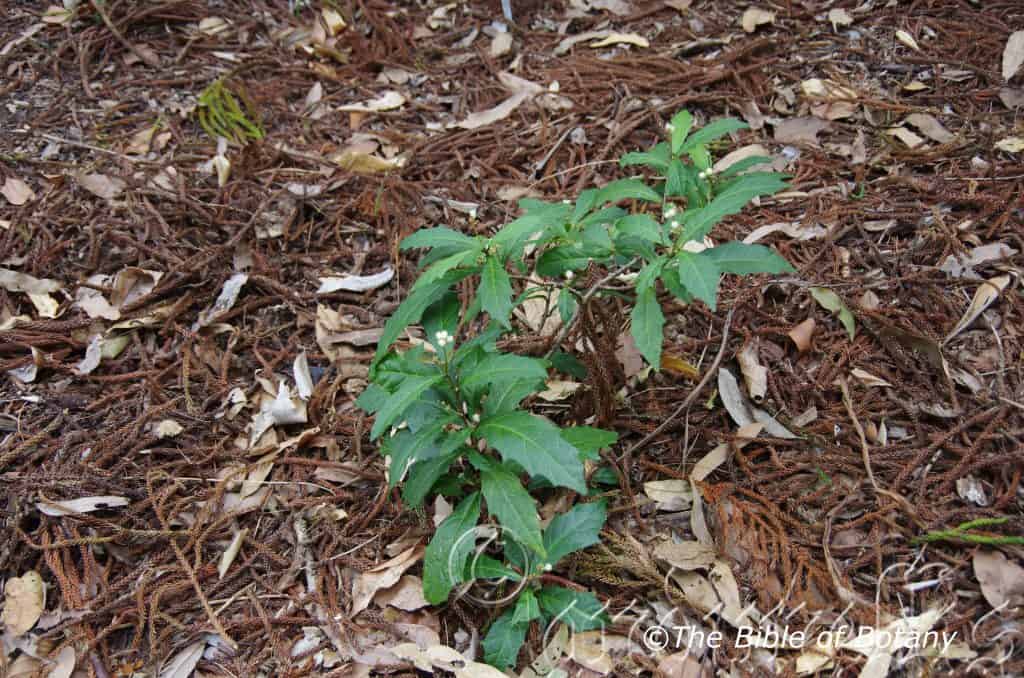
NCBG Coffs Harbour NSW

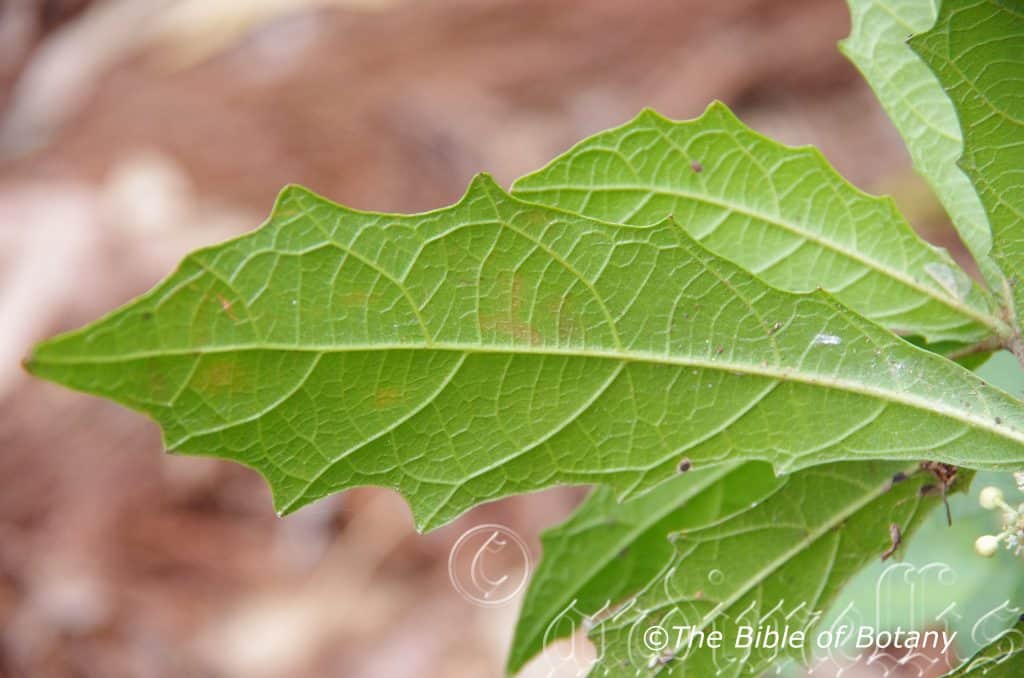
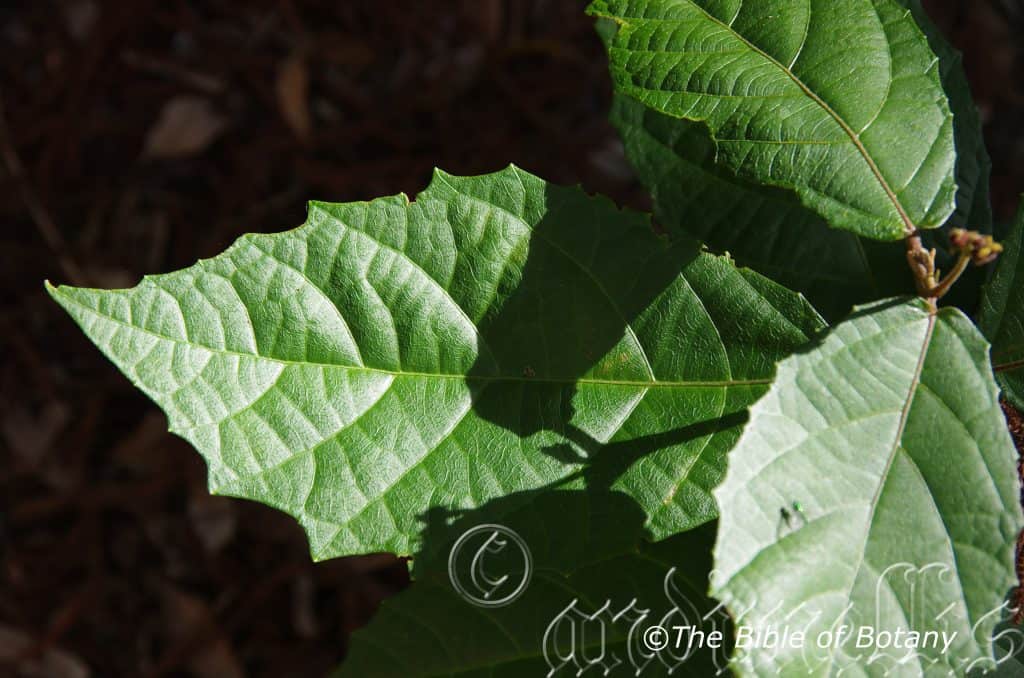


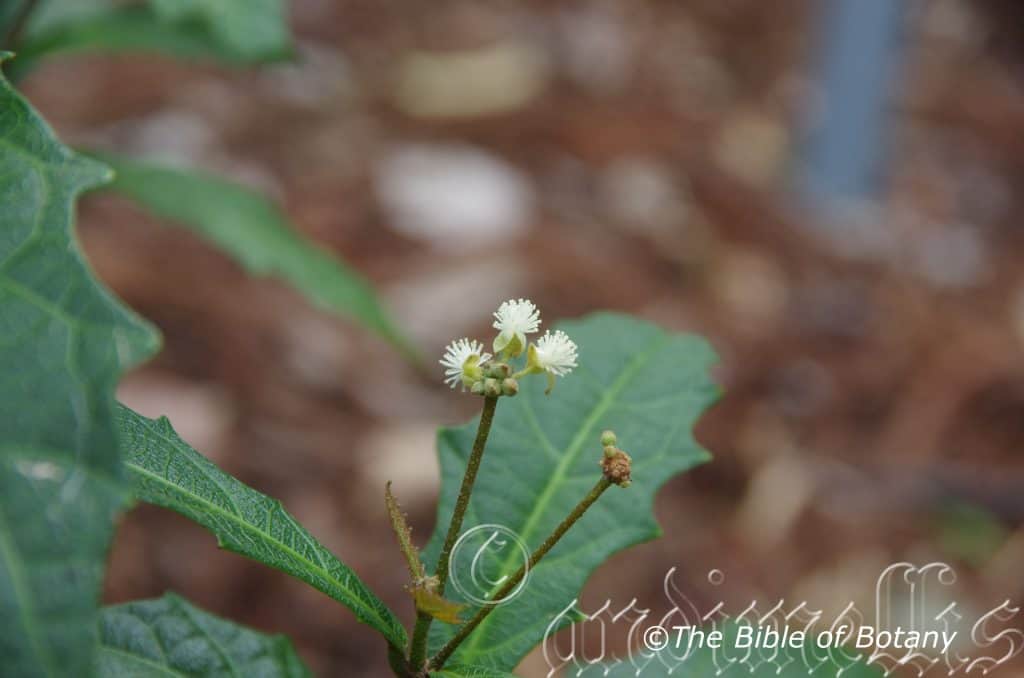
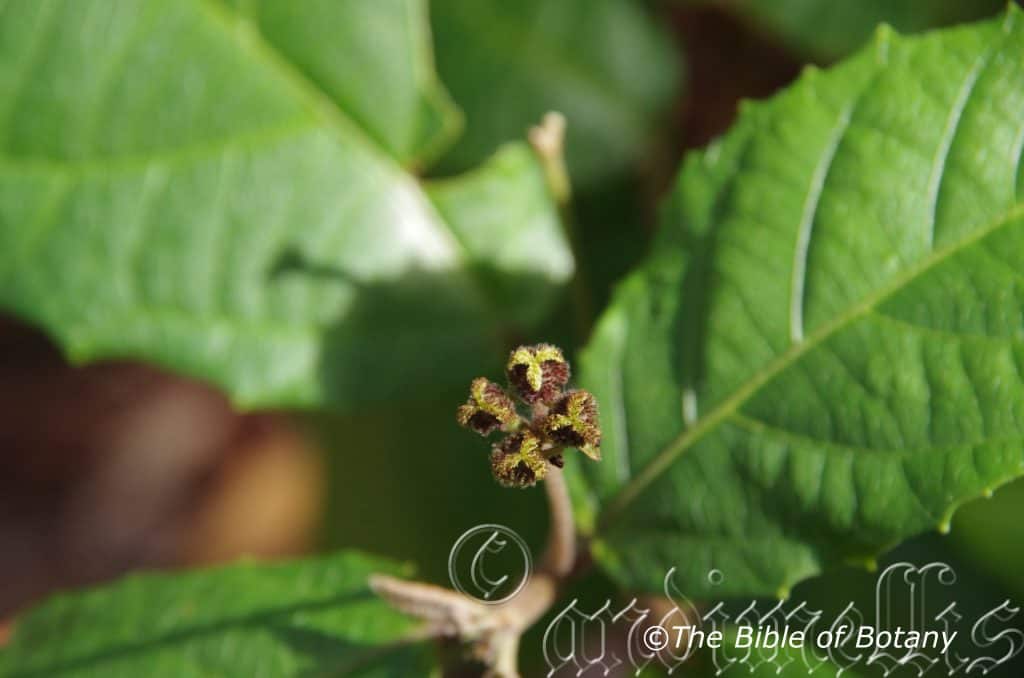

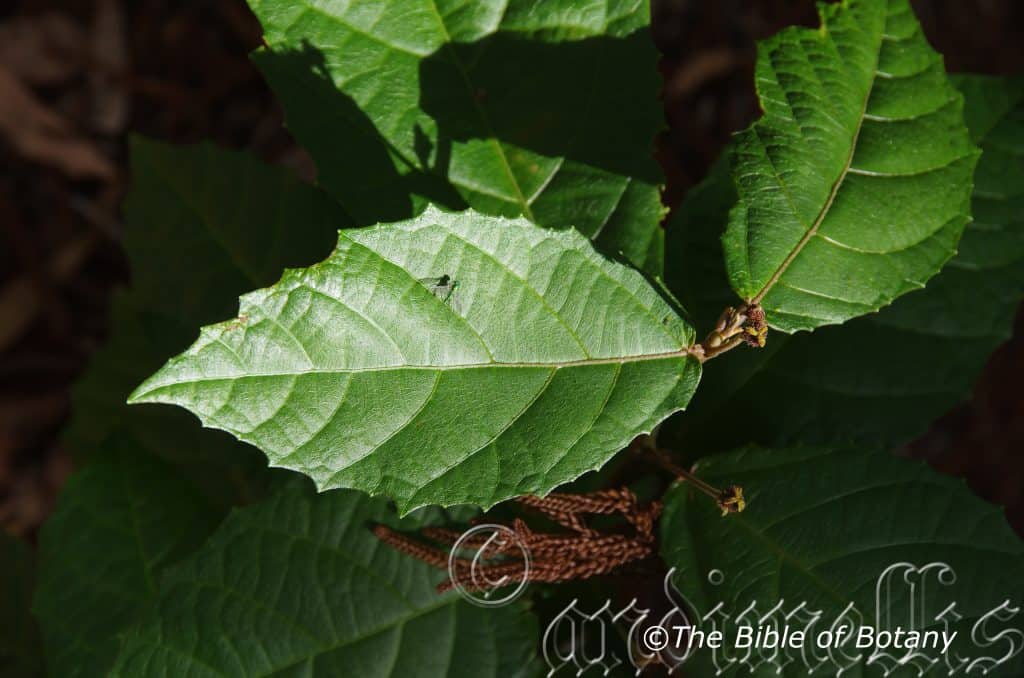
NCBG Coffs Harbour NSW
Mallotus megadontus
Classification:
Unranked: Magnoliophyta
Unranked: Magnoliopsida
Order: Malpighiales
Family: Euphorbaceae
Genus: From Mallotos, which is Ancient Greek for to be lined with wool. It refers to plants, which have woolly stems and leaves.
Specie: From Mégas, which is Ancient Greek for great, large or mighty and Odoús, which is Ancient Greek or later Dēns/Dentēs, which are Latin for a tooth or to destroy. It refers to structures or organs usually the leaves, which have noticeable teeth along the margins.
Sub species:
Common Name: Toothed Mallotus.
Distribution:
Mallotus megadontus is found in two isolated populations. The northern population is south from Cooroy to the North coast hinterland and the second population is between Yatala and Oxenford in south eastern Queensland.
https://avh.ala.org.au/occurrences/search?taxa=Mallotus+megadontus#tab_mapView
Habitat and Habit:
Mallotus megadontus prefers light dappled shade to full shade. It grows dry rainforests and transitional zones between dry and wet rainforests. The altitude ranges from 10 meters ASL to 285 meters ASL.
The temperatures range from 3 degrees in August to 36 degrees in January.
The rainfalls range from lows of 950mm to an average of 1500mm.
Soil Requirements:
Mallotus megadontus prefers sandy loams to medium gravelly clays often with copious quantities of leaf litter. The soils are usually derived from black basalt, sandstones, metamorphic rocks, shales or accumulated silts. (Soils taken from my memory of the soils around Woombye and Yatala.) The soils pH. ranges from 6pH to 7.5pH. It does not tolerate waterlogged soils. Non saline soils to moderately saline soils are tolerated.
Height & Spread:
Wild Plants: 0.3m – 0.6m x 0.3m – 0.5m.
Characteristics:
NOTE: All measurements taken off a single male and single female juvenile plant.
The stems are smooth, glabrous and greyish-brown. The new shoots are pale olive green to green with a faint pink ting. The branchlets and terminal shoots are deep green and sparsely covered in golden-brown stellate hairs.
Male: The immature leaves are green deeply tinged brown and sparsely to moderately covered in rusty-brown stellate hairs.
The opposite, elliptical to broad elliptical leaves measure 80mm to 110mm in length by 40mm to 55mm in width. The bases are cuneate with a rounded at the petiole, while the apexes are broad acute. The discolourous laminas are deep glossy green and glabrous on the upper laminas, while the lower laminas are paler. The laminas curve upwards from the base before decurving strongly downwards on the apical half to the apex. The mid vein is strongly prominent on both laminas and contrasts on the upper lamina being much paler than the lamina. The lateral and reticulated venation is strongly prominent on the lower lamina. The petioles measure 2mm to 5mm in length.
Female: The immature leaves are green deeply tinged brown and sparsely to moderately covered in rusty brown floccose and stellate hairs.
The opposite, elliptical to broad elliptical leaves measure 90mm to 130mm in length by 50mm to 65mm in width. The bases are rounded being cordate at the petiole, while the apexes are broad acuminate. The discolourous laminas are deep glossy green and glabrous on the upper laminas, while the lower laminas are paler. The laminas curve upwards from the base before they decurve strongly downwards on the apical half to the apex but not as strong as the male foliage. The mid vein is strongly prominent on both laminas and contrasts on the upper lamina being much paler than the lamina. The lateral and reticulated venation is strongly prominent on the lower lamina. The mid vein and lateral veins and sparsely to moderately covered in rusty-brown floccose and stellate hairs. There are several, small glands on the upper lamina reticulated venation. The petioles measure 2mm to 5mm in length.
Male: The inflorescences are glomerules born from the terminal leaf axils. The glomerules measure 25mm to 35mm in length. The individual flowers measure 7mm to 8mm in diameter. The peduncles are moderately covered in pale rusty-brown floccose hairs.
The outer surfaces of the 3 tepals are moderately to densely clothe in pale rusty-brown floccose hairs. The white filaments and anthers measure 3mm t0 3.5mm in length.
Female: The inflorescences are glomerules born from the terminal leaf axils. The glomerules measure 25mm to 35mm in length. The individual ovary measure 10mm to 12mm in diameter including the staminodes?. The hair like staminodes are densely covered in long white hirsute hairs. The peduncles are moderately covered in pale rusty-brown floccose hairs. The trilobed stigma are yellowish-green. The flowers appear from February.
The fruits are 3 or 4 lobed globose capsules measure 6mm to 8mm in length by 8mm to 10mm in diameter. The green capsules turn brown when ripe and split to reveal the seeds. The style is persistent on the ripe capsules.
Wildlife:
Mallotus megadontus is unknown to the author.
Cultivation:
Mallotus megadontus can be grown as an understorey sub shrub in rainforest or dry rainforest gardens.
Propagation:
Seeds: The seeds can be sown directly into a seed raising mix. Cover the seeds with 2mm to 6mm of fine weed free mulch and keep moist. Place the tray in a warm sunny position. When the seedlings are 30mm to 50mm tall, prick them out and plant them into 50mm native tubes using a good organic mix.
Once the seedlings reach 100mm to 150mm in height they can be planted out into their permanent position.
Fertilize using seaweed, fish emulsion or organic chicken pellets soaked in water on an alternate basis. Fertilize every two months until the plants are established then twice annually in early September or March to maintain health, vitality and better flowering.
Further Comments from Readers:
Hi reader, it seems you use The Bible of Botany a lot. That’s great as we have great pleasure in bringing it to you! It’s a little awkward for us to ask, but our first aim is to purchase land approximately 1,600 hectares to link several parcels of N.P. into one at The Pinnacles NSW Australia, but we need your help. We’re not salespeople. We’re amateur botanists who have dedicated over 30 years to saving the environment in a practical way. We depend on donations to reach our goal. If you donate just $5, the price of your coffee this Sunday, We can help to keep the planet alive in a real way and continue to bring you regular updates and features on Australian plants all in one Botanical Bible. Any support is greatly appreciated. Thank you.
In the spirit of reconciliation we acknowledge the Bundjalung, Gumbaynggirr and Yaegl and all aboriginal nations throughout Australia and their connections to land, sea and community. We pay our respect to their Elders past, present and future for the pleasures we have gained.
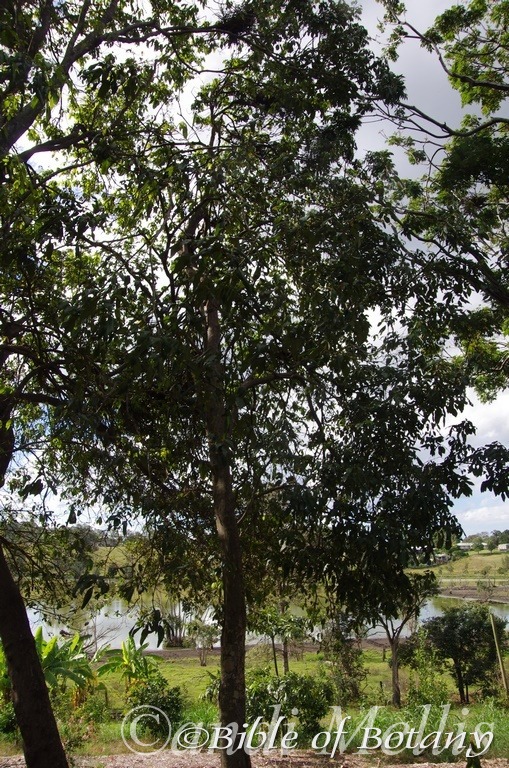
Lawrence NSW

Brookside Qld.

Brookside Qld.
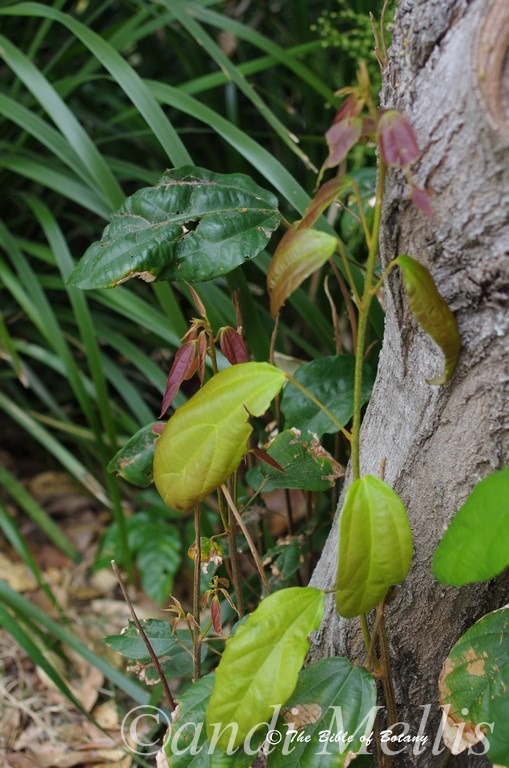
Brookside Qld.
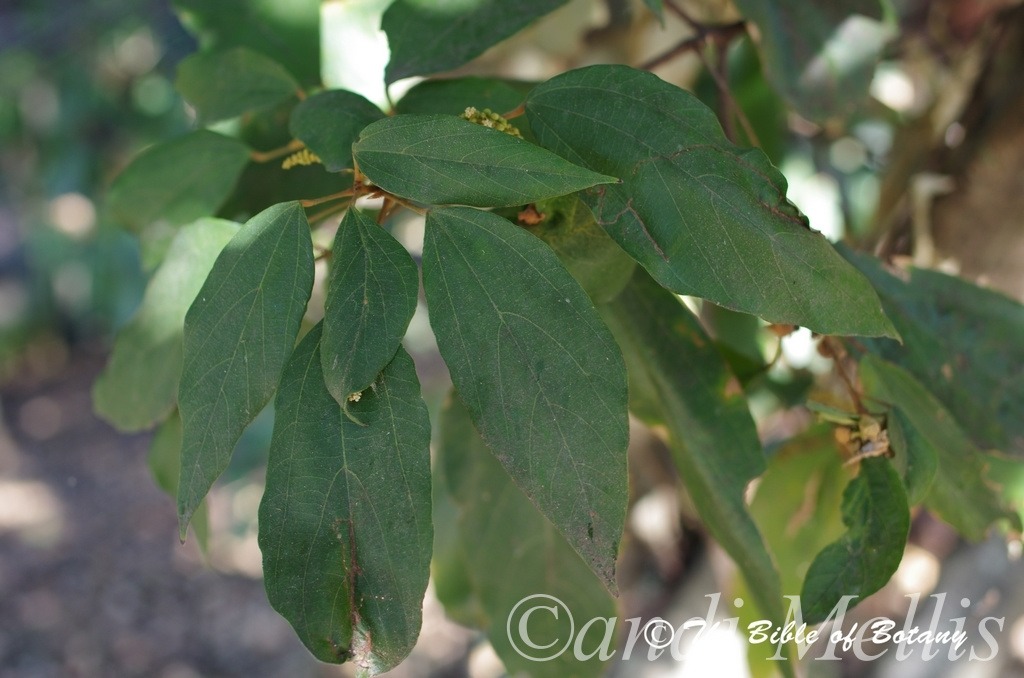
Mount Cootha Botanic Gardens Qld.
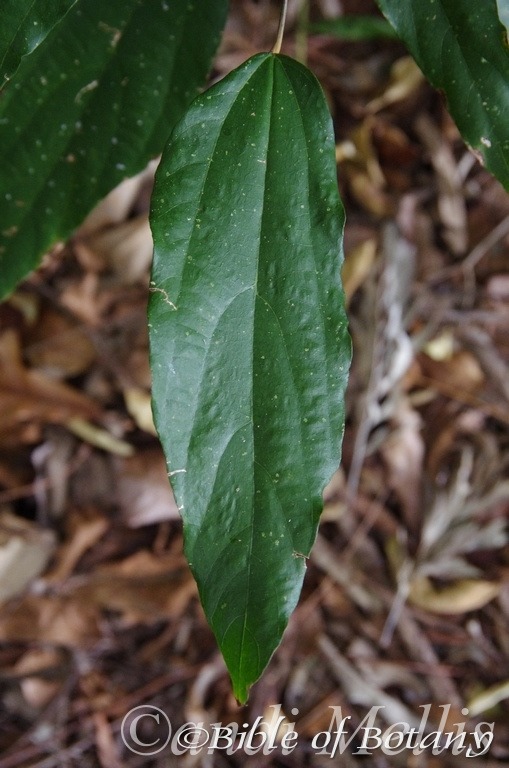
Mount Cootha Botanic Gardens Qld.
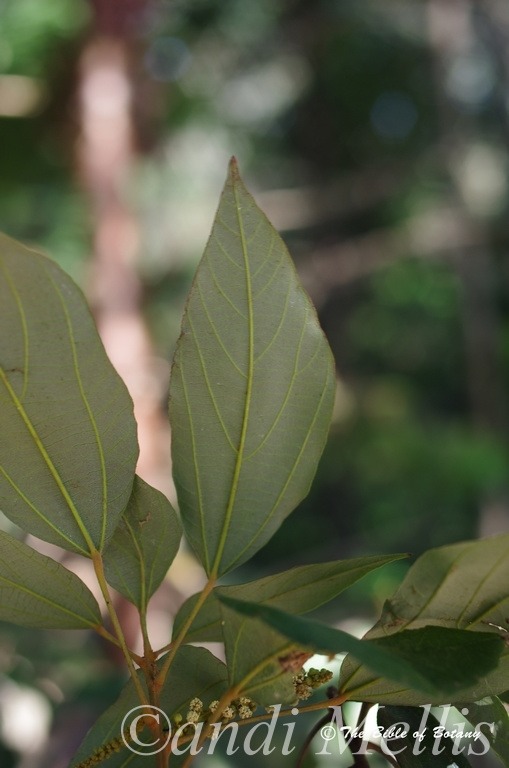
Mount Cootha Botanic Gardens Qld.

Rosser Gardens Benowa Qld.
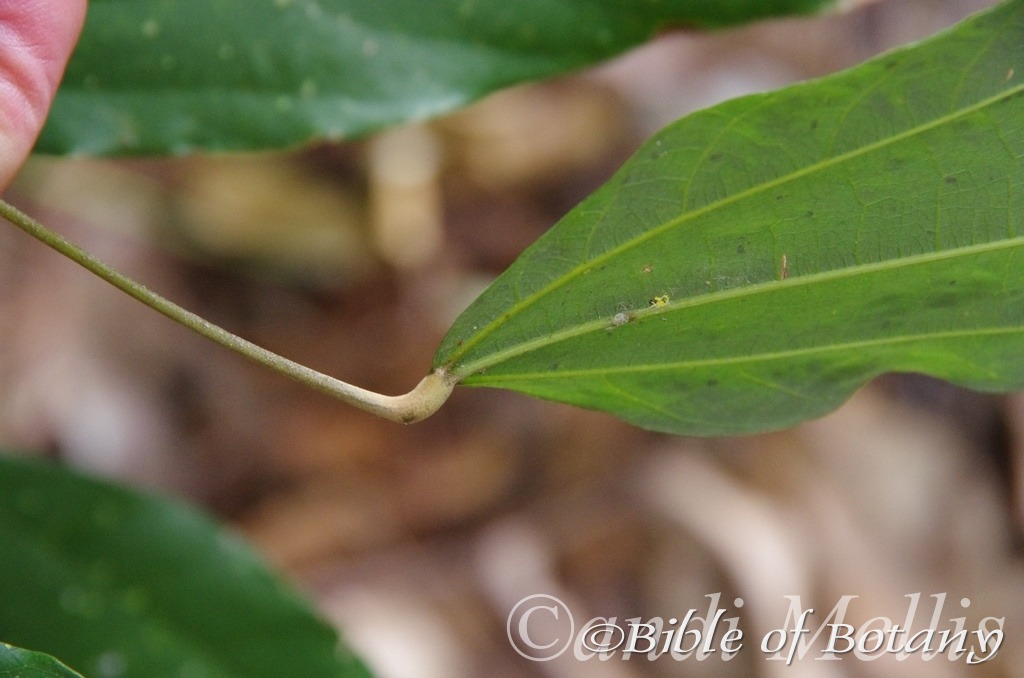
Mount Cootha Botanic Gardens Qld.
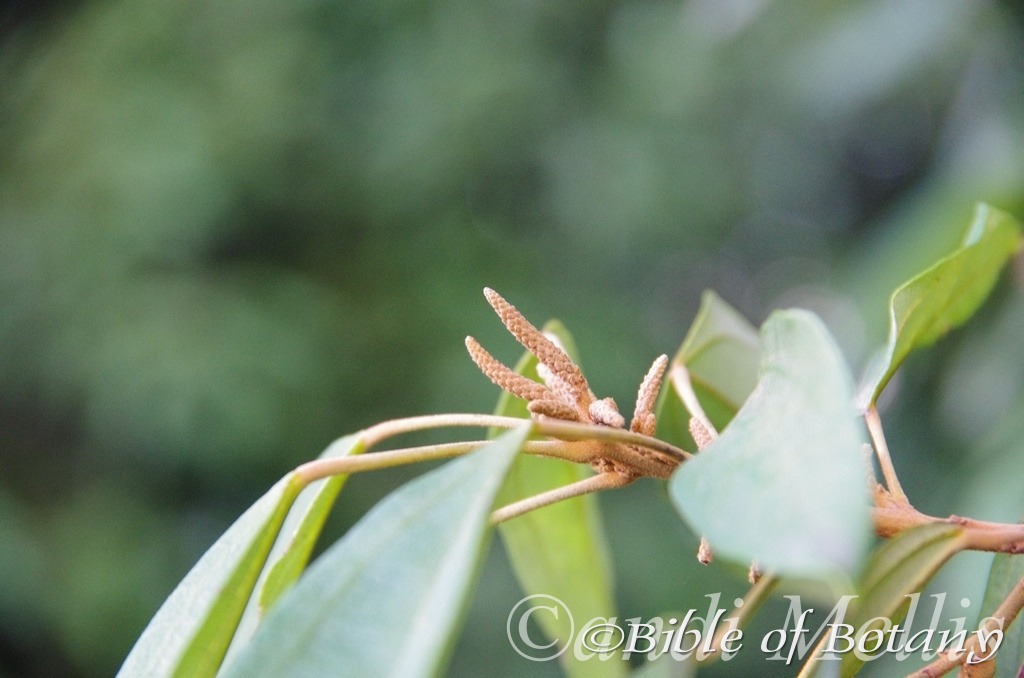
Mount Cootha Botanic Gardens Qld.
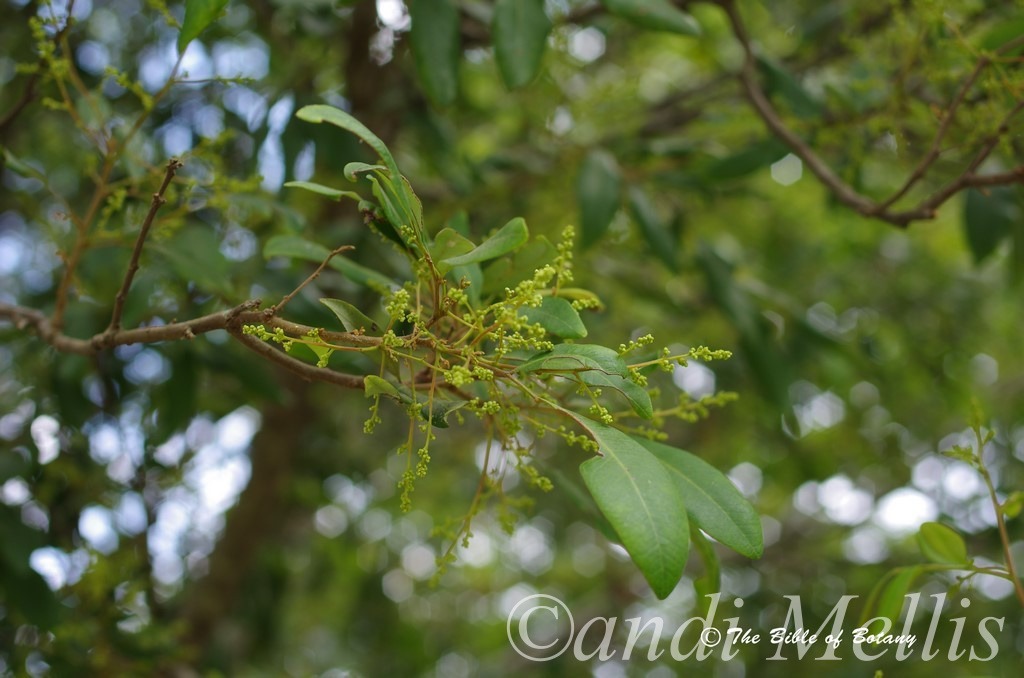
Brookside Qld.

Brookside Qld.
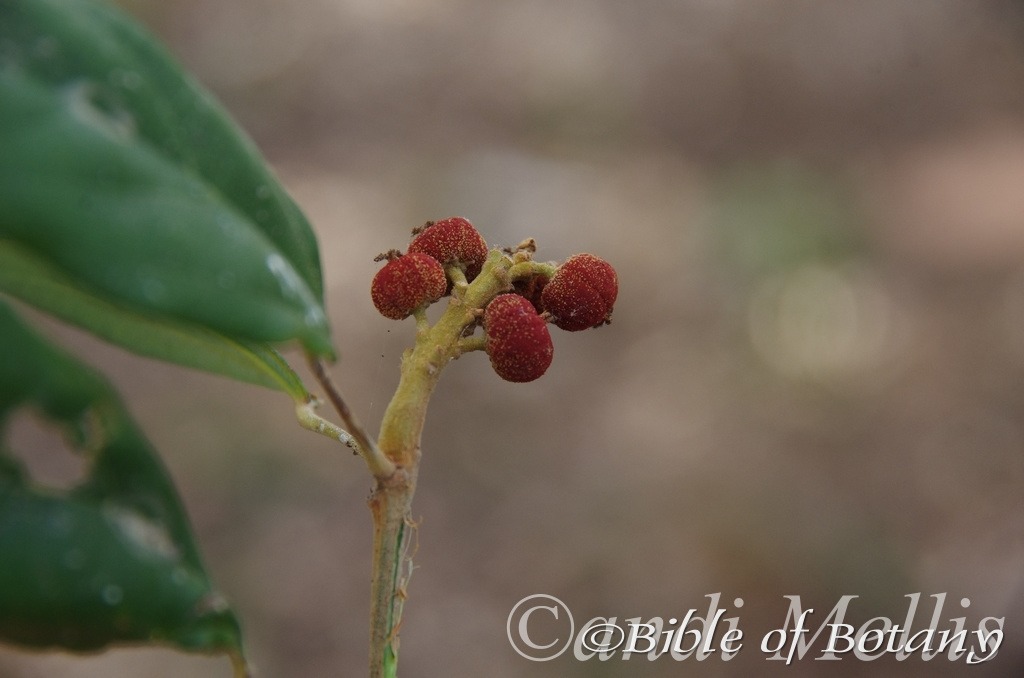
Lawrence NSW
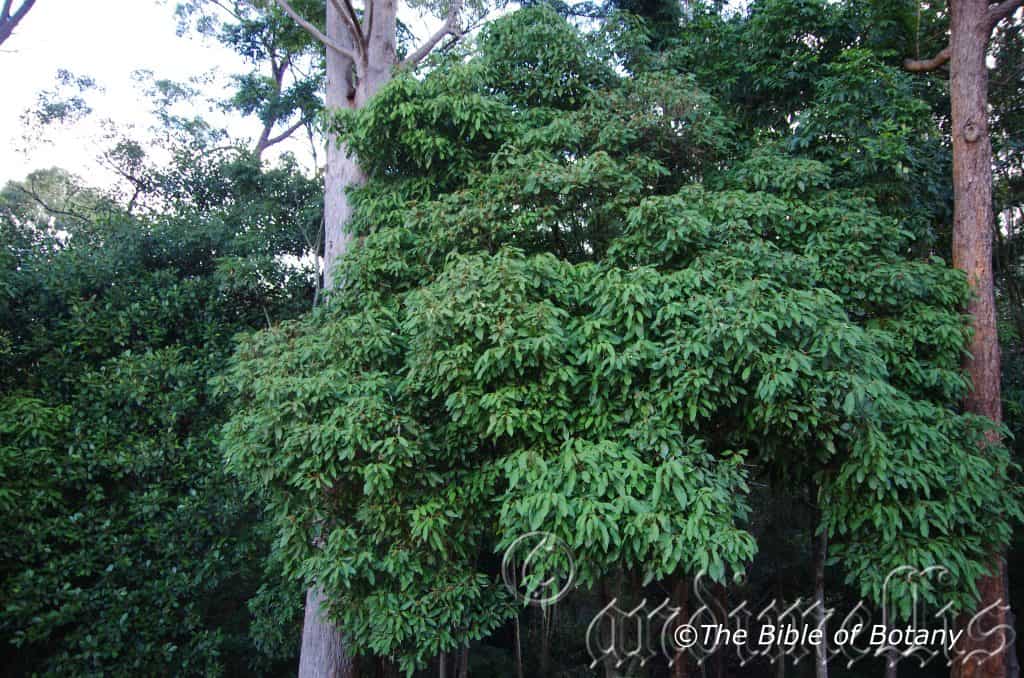
Mount Cootha Botanic Gardens Qld.
Mallotus philippensis
Classification:
Unranked: Magnoliophyta
Unranked: Magnoliopsida
Order: Malpighiales
Family: Euphorbaceae
Genus: From Mallotos, which is Ancient Greek for to be lined with wool. It refers to plants, which have woolly stems and leaves.
Specie From Philippines, which is Latin for the Philippine Islands and Anum/Ensis, which is Latin for to originate from. It refers to plants, which were first discovered from the Philippines.
Sub species:
Common Name: Red Kamala or Smell of the Bush.
Distribution:
Mallotus Philippoussis is found east from Melville Island and Bathurst Island to Arnhem Land in the Northern Territory. It is found west to southern China.
In the east it is found south from Cape York Peninsula and the Torres Strait Islands in far north eastern Queensland to Taree in New South Wales. There is an outlying population on Mount Keira in southern coastal New South Wales. It is mainly found on and east of the Great Dividing Range.
https://avh.ala.org.au/occurrences/search?taxa=Mallotus+philippensis#tab_mapView
Habitat Aspect Climate:
Mallotus Philippoussis prefers light dappled shade to full shade. It grows in dry sub tropical rainforests, dry tropical rainforests or monsoonal rainforests. The altitude ranges from 10 meters ASL to 900 meters ASL.
The temperatures range from minus 5 degrees in August to 36 degrees in January.
The rainfalls range from lows of 800mm to an average of 3200mm.
Soil Requirements:
Mallotus Philippoussis prefers sandy loams to medium gravelly clays often with copious quantities of leaf litter. The soils are usually derived from black basalt, sandstones, metamorphic rocks, shales, grey or reddish podzolic soils, accumulated silts or accumulated coral sands. The soils pH. ranges from 6pH to 7pH. It does not tolerate waterlogged soils. Non saline soils to moderately saline soils are tolerated.
Height & Spread:
Wild Plants: 15m to 20m by 6m to 10m.
Characteristics:
Mallotus philipensis’s glabrous trunk is grey-brown with patches of pink. The branches and main stems are similar to the trunk. The new shoots are pale brown and are densely covered in rusty brown to golden brown pulverulent and stellate hairs. The trees have an upright dense canopy.
Mallotus philipensis’s alternate leaves are elliptical-oblong to oblong and measure 40mm to 120mm in length by 20mm to 70mm in width. The bases are asymmetrical to symmetrical and round while the apexes are apiculate. The discolourous laminas are olive-green to deep green dull and glabrous and while the lower lamina is paler to pale grey-green and is covered in minute red glands. Immature leaves are pale rusty brown and glossy. The margins are entire to very sparsely and finely crenate and slightly undulating. The mid vein is strongly prominent on the lower lamina and is distinctly visible from above. There are 2 prominent lateral veins which extend from the base past halfway to the apex. There are 2 glands on the upper lamina near the junction of the 2 lateral veins. The petiole measures 20mm to 50mm in length and is covered in rusty-brown stellate hairs.
The inflorescences of Mallotus Philippoussis are long, narrow racemes which measure 20mm to 110mm in length. The individual flowers measure 2mm to 3mm in diameter.
The 3 creamy green, reflexed tepals are densely covered in reddish stellate hairs or reddish stellate lepidote scales on the outer surface and are glabrous on the inner surface. They measure 2mm to 3mm in length by 1.5mm to 2mm in width at the base. The stamens are covered in bright red glands.
The style is cream or pale pink. The fimbriate stigma measures 6mm to 7mm long. The 3 locule ovary is densely or entirely covered in reddish stellate hairs or lepidote scales and glands. The flowers appear from September to November.
Mallotus philipensis’s fruit is a globose glabrous capsule. The capsules measure 6mm to 9mm in diameter. The capsules turn rusty-crimson before splitting when ripe. It is densely covered reddish granular glands. The 3 locule capsule splits to reveal a single, globular, black seed in each locule. The seeds measure 5mm to 6mm in length by 4mm to 4.5mm in diameter. The style is persistent on the ripe capsules. The capsules ripen from December to February.
Wildlife:
Mallotus Philippoussis supports the beautiful jewel bug Cantao parentum. This particular insect is very unusual that it stays with its eggs until they hatch and will protect them from predators thus its Latin name refers to being a parent. The bugs are 12mm long and are bright orange with large black spots. Beware especially if they have eggs as you may get a dose of spiroketals which is difficult to remove and smells worse than the trees, thus their common name is a stink bug. (Spiroketals are being studied extensively as they defy thermos dynamics, have been found to combat cancer cells in Lung cancers, used in chelating iron and a number of other uses too complicated to explain or understand for this mere mortal.)
The outer covering of the capsules have been dried and the powder used to eliminate tapeworms and has been proved very effective. I have tasted the flesh from the fruit and found them to be very astringent and drying of the mouth so can understand why the tapeworms want to move on. The outer covering of the capsules has also been and is still used as a natural red or orange dye in the production of organic silk.
Cultivation:
Mallotus Philippoussis is one of the best known scents in the Australian bush. It makes an excellent medium size tree for a park like scene or specimen tree in the garden with an upright dense canopy when planted amongst other trees and shrubs. They always look green and fresh especially where adequate ground moisture is retained whether it is grown in light shade or full sun. It is very suitable on light sandy clays to heavy medium clays. It is most suitable for small, medium and large gardens close to the coast in temperate, sub tropical or tropical gardens. As garden subjects they will grow from 10m to 12m in height by 8m to 10m in diameter. It is cold tolerant to temperatures at least as low as minus 5 degrees once established. They should be protected until they reach at least 2 meters in height.
It is best used adjacent to small areas of bush close to paths or the house so their bush scent can radiate out and can be appreciated regularly. They can be planted in small groups of 2 or 3 to give a park like scenario. It is deciduous towards the end of the dry season for a short period.
They can be used as small shade trees in semi protected areas. These trees are an excellent tree for starting a moist rainforest garden. When planting the trees in a rainforest try to place them in the center with other smaller rainforest trees so their scent lingers within the forest.
If mild native fertilizers are used they will develop quickly after 3 or 4 years of stabilizing themselves.
In Native gardens they can be used for attracting butterflies, native bees, native flies or native beetles during flowering which are necessary for fertilization of the flowers.
It is useful as a backdrop small tree contrasting with smaller finer leaf shrubs that are planted in the foreground. This gives the impression that they like being the center of attention which they deserve.
Propagation:
Seeds: Mallotus Philippoussis seeds can be sown directly into a seed raising mix. Only fresh seed should be used and even then the germination rate is sporadic especially in dry seasons where fertility is very low. Cover the seeds with 2mm to 6mm of fine weed free mulch and keep moist. Place the tray in a warm sunny position. When the seedlings are 30mm to 50mm tall, prick them out and plant them into 50mm native tubes using a good organic mix.
Once the seedlings reach 100mm to 150mm in height they can be planted out into their permanent position.
The soils pH. ranges from 6pH to 7pH. It does not tolerate waterlogged soils. Non saline soils to moderately saline soils are tolerated.
Fertilize using seaweed, fish emulsion or organic chicken pellets soaked in water on an alternate basis. Fertilize every two months until the plants are established then twice annually in early September or March to maintain health, vitality and better flowering.
Further Comments from Readers:
Hi reader, it seems you use The Bible of Botany a lot. That’s great as we have great pleasure in bringing it to you! It’s a little awkward for us to ask, but our first aim is to purchase land approximately 1,600 hectares to link several parcels of N.P. into one at The Pinnacles NSW Australia, but we need your help. We’re not salespeople. We’re amateur botanists who have dedicated over 30 years to saving the environment in a practical way. We depend on donations to reach our goal. If you donate just $5, the price of your coffee this Sunday, We can help to keep the planet alive in a real way and continue to bring you regular updates and features on Australian plants all in one Botanical Bible. Any support is greatly appreciated. Thank you.
In the spirit of reconciliation we acknowledge the Bundjalung, Gumbaynggirr and Yaegl and all aboriginal nations throughout Australia and their connections to land, sea and community. We pay our respect to their Elders past, present and future for the pleasures we have gained.
Mallotus polyadenos
Classification:
Unranked: Magnoliophyta
Unranked: Magnoliopsida
Order: Malpighiales
Family: Euphorbaceae
Genus: From Mallotos, which is Ancient Greek for to be lined with wool. It refers to plants, which have woolly stems and leaves.
Specie: From Polús, which is Ancient Greek for many and Adena, which is Ancient Greek for a gland. It refers to the leaves and at times the petioles having many glands.
Sub species:
Common Name: Kamala.
Distribution:
Mallotus polyadenos is found south from the tip of Cape York Peninsula to Cardwell in far north eastern Queensland. It is also found on Hinchinbrook Island and the mainland adjacent to the Island with a small population near Bowen.
https://avh.ala.org.au/occurrences/search?taxa=Mallotus+polyadenos#tab_mapView
Habitat Aspect Climate:
Mallotus polyadenos prefers light dappled shade to full shade. It grows along drier creek meander alluvial flats in dry tropical rainforests, well developed tropical rainforests, gallery rainforests and monsoonal rainforests. The altitude ranges from 10 meters ASL to 800 meters ASL.
The temperatures range from 8 degrees in August to 38 degrees in January.
The rainfalls range from lows of 1600mm to an average of 3200mm.
Soil Requirements:
Mallotus polyadenos prefers light sandy clays to medium clays often with copious quantities of leaf litter. The soils are usually derived from black basalts, better quality sandstones, red and grey podsolic soils. The soils are deep. The soils pH. ranges from 4.5pH to 6.5pH. It does not tolerate waterlogged soils. Non saline soils to moderately saline soils are tolerated.
Height & Spread:
Wild Plants: 5m to 8m by 3m to 5m.
Characteristics: Mallotus polyadenos’s glabrous trunk is grey to deep grey and glabrous. The branches and main stems are similar to the trunk. Only the very new shoots are pale olive green to green. The trees have an upright dense canopy.
Mallotus polyadenos’s opposite leaves are elliptical to narrow elliptical. They measure 70mm to 130mm in length by 40mm to 55mm in width. The base is cuneate while the apex is bluntly broadly acuminate. The discolourous laminas are deep sea-green dull or semi glossy and glabrous on the upper lamina while the lower lamina is paler. There are a few scattered minute golden yellow glands on the lower lamina while the upper lamina has flat yellow glands near the junction of the lateral veins and 2 further along between the lateral vein and the margin. Immature leaves are a glossy deep sea green. The margins are entire to very slightly crenate. It is slightly undulating and curve upwards from the mid vein. The mid vein is strongly prominent below and is distinctly visible from above. The 2 minute stipules are caduceous. The petiole measures 8mm to 15mm in length.
The inflorescence of Mallotus polyadenos are dioecious with the female flowers and the male flowers being born on short spikes from the leaf axils or the terminal apexes. The female spikes measure 20mm to 26mm in length. The individual flowers measure 3mm to 3.2mm in diameter. The tepals are glabrous but covered in minute yellow glands and scales on the outer surfaces while the inner surfaces are glabrous.
The tepals are united and measure 2mm to 3mm in length by 1.5mm to 2mm in width at the base. The 25 to 30 filaments are cream with fawn anthers and measure 1.5mm to 2mm in length.
The tepals measure 2mm to 3mm in length by 1mm to 1.5mm in width at the base. The style is cream or pale creamy-white. The fimbriate stigma measures 4mm to 6mm long. The 3 locule ovary is densely covered in yellow glands. The flowers appear from September to November.
Mallotus polyadenos’s fruit is a globose triquetra capsule. The triquetra shape almost fills out by the time the capsules ripen. The style is persistent on the ripe capsules. The capsules measure 6mm to 7.5mm in diameter. The capsules turn fawn before splitting when ripe. It is densely covered yellow glands. The 3 locule capsule splits to reveal a single, globular, black seed in each locule. The seeds measure 2.5mm to 3.5mm in length by 2mm to 3mm in diameter. The capsules ripen from December to February.
Wildlife:
Mallotus polyadenos supports the beautiful jewel bug Cantao parentum. This particular insect is very unusual that it stays with its eggs until they hatch and will protect them from predators thus its Latin name refers to being a parent. The bugs are 12mm long and are bright orange with large black spots. Beware especially if they have eggs as you may get a dose of spiroketals which is difficult to remove and smells worse than the trees, thus their common name is a stink bug. (Spiroketals are being studied extensively as they defy thermos dynamics, have been found to combat cancer cells in Lung cancers, used in chelating iron and a number of other uses too complicated to explain or understand for this mere mortal.)
The inner bark of Mallotus polyadenos is a natural supplier of bergenin which is presently being used in the treatment HIV patients.
Cultivation:
Mallotus polyadenos is one of the best known scents in the Australian bush. It makes an excellent medium size tree for a park like scene or specimen tree in the garden with an upright dense canopy when planted amongst other trees and shrubs. They always look green and fresh especially where adequate ground moisture is retained whether it is grown in light shade or full sun. It is very suitable on sandy clay soils. It is most suitable for small, medium and large gardens close to the coast in temperate, sub tropical or tropical gardens. As garden subjects they will grow from 4m to 6m in height by 4m to 6m in diameter when grown in the open. It is cold tolerant to temperatures at least as low as 5 degrees once established. Not much is known about its growth habit outside the tropics.
It is best used adjacent to small areas of bush close to paths or the house so their bush scent can radiate out and can be appreciated regularly. They can be planted in small groups of 2 or 3 to give a park like scenario. It is deciduous or semi deciduous towards the end of the dry season for a short period.
They can be used as small shade trees in semi protected areas. It is an excellent tree for starting a dry rainforest garden. When planting the trees in a rainforest try to place them in the center with other smaller dry rainforest trees so their scent lingers within the forest.
If mild native fertilizers are used they will develop quickly after 3 or 4 years of stabilizing themselves.
In Native gardens they can be used for attracting butterflies, native bees, native flies or native beetles during flowering which are necessary for fertilization of the flowers.
It is useful as a backdrop small tree contrasting with smaller finer leaf shrubs that are planted in the foreground. This gives the impression that they like being the center of attention which they deserve.
Propagation:
Seeds: Mallotus polyadenos seeds can be sown directly into a seed raising mix. Only fresh seed should be used and even then the germination rate is sporadic especially in dry seasons where fertility is very low. Cover the seeds with 2mm to 6mm of fine weed free mulch and keep moist. Place the tray in a warm sunny position. When the seedlings are 30mm to 50mm tall, prick them out and plant them into 50mm native tubes using a good organic mix.
Once the seedlings reach 100mm to 150mm in height they can be planted out into their permanent position.
Fertilize using seaweed, fish emulsion or organic chicken pellets soaked in water on an alternate basis. Fertilize every two months until the plants are established then twice annually in early September or March to maintain health, vitality and better flowering.
Further Comments from Readers:
Hi reader, it seems you use The Bible of Botany a lot. That’s great as we have great pleasure in bringing it to you! It’s a little awkward for us to ask, but our first aim is to purchase land approximately 1,600 hectares to link several parcels of N.P. into one at The Pinnacles NSW Australia, but we need your help. We’re not salespeople. We’re amateur botanists who have dedicated over 30 years to saving the environment in a practical way. We depend on donations to reach our goal. If you donate just $5, the price of your coffee this Sunday, We can help to keep the planet alive in a real way and continue to bring you regular updates and features on Australian plants all in one Botanical Bible. Any support is greatly appreciated. Thank you.
In the spirit of reconciliation we acknowledge the Bundjalung, Gumbaynggirr and Yaegl and all aboriginal nations throughout Australia and their connections to land, sea and community. We pay our respect to their Elders past, present and future for the pleasures we have gained.
Manilkara kauki
Classification:
Unranked: Eudicots
Unranked: Asterids
Order: Ericales
Family: Sapotaceae
Genus: From Mannikara, which is Latinized from the local Malabar word for a plant found there. It refers to plants, which are similar in appearance to the Malabar plants.
Specie From Kauki, which is Latinized from a local Asian vernacular name for the tree.
Sub species:
Common Name: Palai or Wongi.
Distribution:
Manilkara kauki is found along a narrow strip along the beaches of the northern half of Cape York Peninsula and the Torres Strait Islands. There is also an outlying population on the northern section of Elcho Island and the adjacent islands in the Northern Territory.
https://avh.ala.org.au/occurrences/search?taxa=Manilkara+kauki#tab_mapView
Habitat Aspect Climate:
Manilkara kauki prefers full sun. It grows along the beaches close to the coast in littoral rainforests and in monsoonal rainforests. The altitude ranges from 1 meters ASL to 15 meters ASL.
The temperatures range from 10 degrees in August to 38 degrees in January.
The rainfalls range from lows of 1600mm to an average of 3200mm.
Soil Requirements:
Manilkara kauki prefers poor quality soils derived from decomposed sandstone and laterites, accumulated beach sands and accumulated coral sands. The soils are light sandy clays to medium clays. The soils are deep. The soils pH. ranges from 6pH to 7pH. It does not tolerate waterlogged soils. Non saline soils to very saline soils are tolerated.
Height & Spread:
Wild Plants: 15m to 20m by 6m to 10m.
Characteristics:
Manilkara kauki’s tessellated trunk is pale grey, pale brown and fawn with patches of pink, white and pale grey due to the presence of lichens and fungi. The branches and main stems have similar but finer markings as the trunk. The new shoots are grey and densely covered in white pubescent hairs. The bole is usually about 75mm of the tree when growing in coastal monsoonal rainforests. The branchlets are silvery-grey and covered in minute white scales. The leaves, twigs and smaller branches exude white watery latex when damaged. The trees have an upright shape and dense canopy.
Manilkara kauki’s alternate leaves are densely crowded near the terminals. The broad elliptical to ovate leaves measure 65mm to 125mm in length by 40mm to 60mm in width. The base is slightly unequal and round while the apex is broadly acuminate to obtuse. The discolourous laminas are deep sea-green and glabrous while the lower lamina is white. The margins are entire and curve upwards from the mid vein. The mid vein is strongly prominent below and is distinctly visible from above. There are 10 to 12 lateral veins either side of the mid vein which rejoins again to form an intramarginal vein. The petioles measure 10mm to 30mm in length and have a groove on the upper surface.
The inflorescence of Manilkara kauki is born singularly or up to 6 from the leaf axils. The pedicels measure 10mm to 20mm in length. The individual flowers measure 7mm to 8mm in diameter. The creamy yellow to yellow, sepals are glabrous on the inner surface and covered in fawn to pale brown hirtellous hairs on the outer surface. The 6 to 8 lanceolate sepals measure 3.5mm to 4.5mm in length by 2mm to 2.5mm in width at the base. The petals measure 1.5mm to 2mm in length by 0.6mm to 1mm in width. Each lobe has 2 appendage has 2 equal lobes attached near the base. The 6 stamens are pale yellow and are attached to the corolla and measure 1.5mm to 2mm in length. There are also 6 staminodes which are alternating with the 6 stamens measure 1.5mm to 2mm in length by 0.6mm to 1mm in width near the base. The glabrous style is cream or pale yellow and measures 1mm to 1.5mm in length and has a green stigma. The single locule ovary is born on a raised disc. The flowers appear from September to November.
Manilkara kauki’s fruit is an ovoidal, glabrous drupe. The drupes measure 24mm to 28mm in length by 20mm to 24 in diameter. The drupes smooth, glabrous skin turns pink to deep red or deep red-brown when it is ripe. The calyxes are persistent at the base of the drupes. The single locule drupe reveals a single globose, creamy fawn seed. The seeds measure 17mm to 20mm in length by 15mm to 19mm in diameter. The drupes ripen from December to February.
Wildlife:
Manilkara kauki’s fruits are eaten by Cassowaries. Native Queensland fruit fly maggots have been observed on the fruits.
Cultivation:
Manilkara kauki is one of Australia’s best tasting fruits. It is sweet and give a reasonable amount of flesh. It makes an excellent medium size tree for a park like scene or specimen tree in the garden with an upright dense canopy when planted amongst other trees and shrubs. It always look green and fresh especially where adequate ground moisture is retained but they must be grown in full sun. It is very suitable on sandy clay soils in small, medium and large gardens close to the coast in warm temperate, sub tropical or tropical frost free gardens. As garden subjects it grows from 8m to 10m by 8m to 10m wide. It is cold tolerant to temperatures at least as low as 3 degrees once established.
It can be planted in small groups of 2 or 3 to give a park like scenario.
It can be used as small shade trees in semi protected areas and are an excellent tree for starting a dry rainforest garden on very sandy soils provided additional water is supplied.
If mild native fertilizers are used it develops more quickly once they have established a reasonable root system after 3 or 4 years of.
It is useful as a backdrop small tree contrasting with smaller finer leaf shrubs that are planted in the foreground. As the short stout trunk develops it gives an impression that they like being the center of attention which they deserve.
Use plants with pale green fine simple or pinnatifid leaves in the foreground with prostrate plants with similar leaves below to really high lite the foliages. Ensure that the whole plant or at least most of it is on display from most sections of the garden as the green and white leaves contrast well. When mass planting Manilkara kauki for an orchard plant them at 12 meter centers so that good access is maintained. It is unknown whether the plants can be pruned to maintain smaller better fruiting yields.
I have seen some excellent displays in China where the plants were used as bonsai plants. They had the plants grow in an upright habit similar to dwarf gum trees with an upright straight bole. The leaves emerged from the top of the 5 or seven plants and looked like a miniature forest.
Propagation:
Seeds: Manilkara kauki seeds can be sown directly into a seed raising mix after the tetra has been filed down a little or it has been nicked with a knife. Only fresh seed should be used and even then the germination rate is sporadic especially in dry seasons where fertility is very low. Cover the seeds with 2mm to 6mm of fine weed free mulch and keep moist. Place the tray in a warm sunny position. When the seedlings are 30mm to 50mm tall, prick them out and plant them into 50mm native tubes using a good organic mix.
Once the seedlings reach 100mm to 150mm in height they can be planted out into their permanent position.
Fertilize using seaweed, fish emulsion or organic chicken pellets soaked in water on an alternate basis. Fertilize every two months until the plants are established then twice annually in early September or March to maintain health, vitality and better flowering.
Further Comments from Readers:
Hi reader, it seems you use The Bible of Botany a lot. That’s great as we have great pleasure in bringing it to you! It’s a little awkward for us to ask, but our first aim is to purchase land approximately 1,600 hectares to link several parcels of N.P. into one at The Pinnacles NSW Australia, but we need your help. We’re not salespeople. We’re amateur botanists who have dedicated over 30 years to saving the environment in a practical way. We depend on donations to reach our goal. If you donate just $5, the price of your coffee this Sunday, We can help to keep the planet alive in a real way and continue to bring you regular updates and features on Australian plants all in one Botanical Bible. Any support is greatly appreciated. Thank you.
In the spirit of reconciliation we acknowledge the Bundjalung, Gumbaynggirr and Yaegl and all aboriginal nations throughout Australia and their connections to land, sea and community. We pay our respect to their Elders past, present and future for the pleasures we have gained.
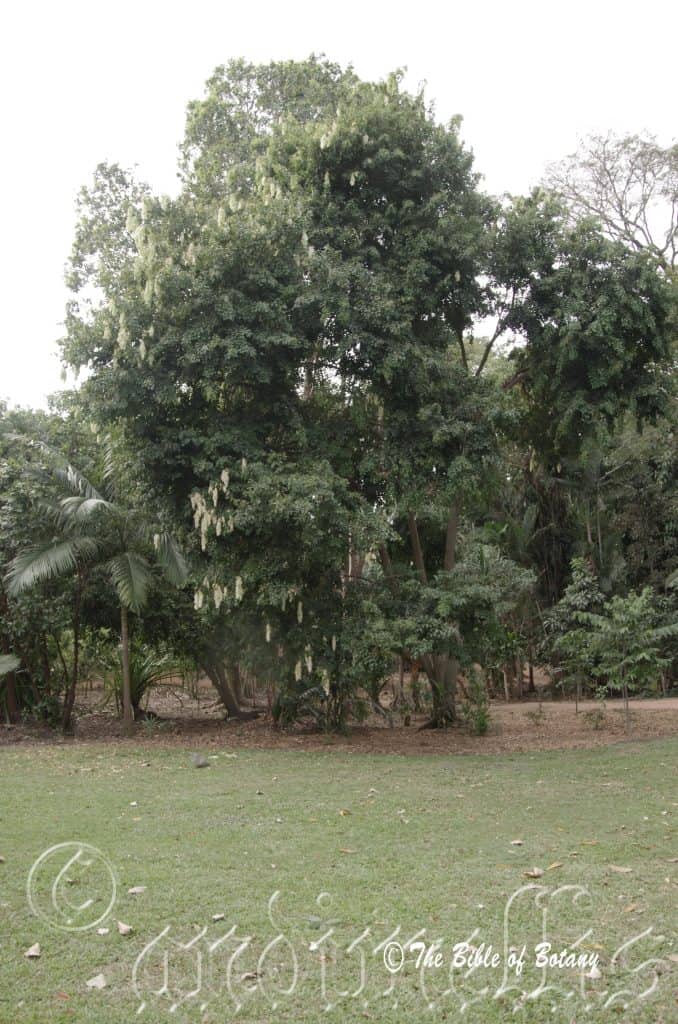
Townsville Botanic Gardens Qld.
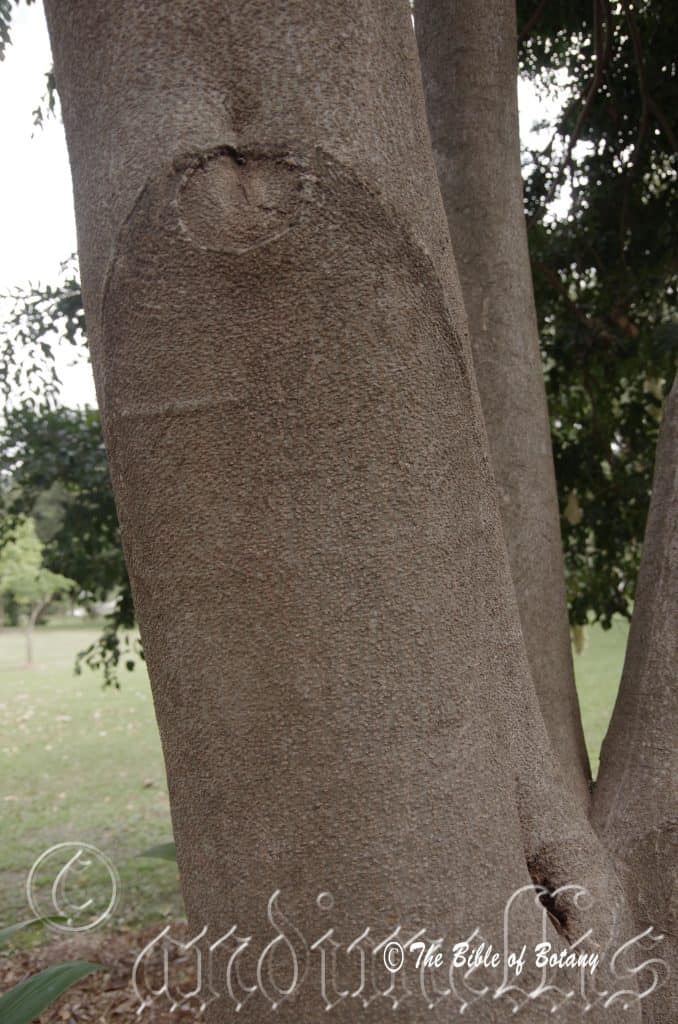
Townsville Botanic Gardens Qld.
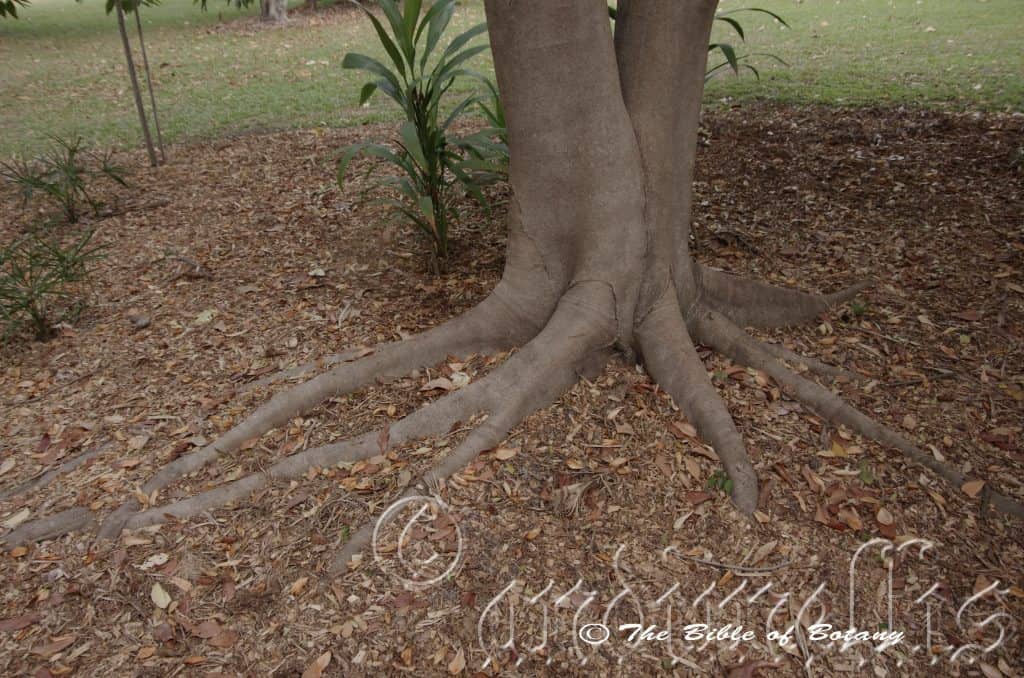
Townsville Botanic Gardens Qld.

Townsville Botanic Gardens Qld.
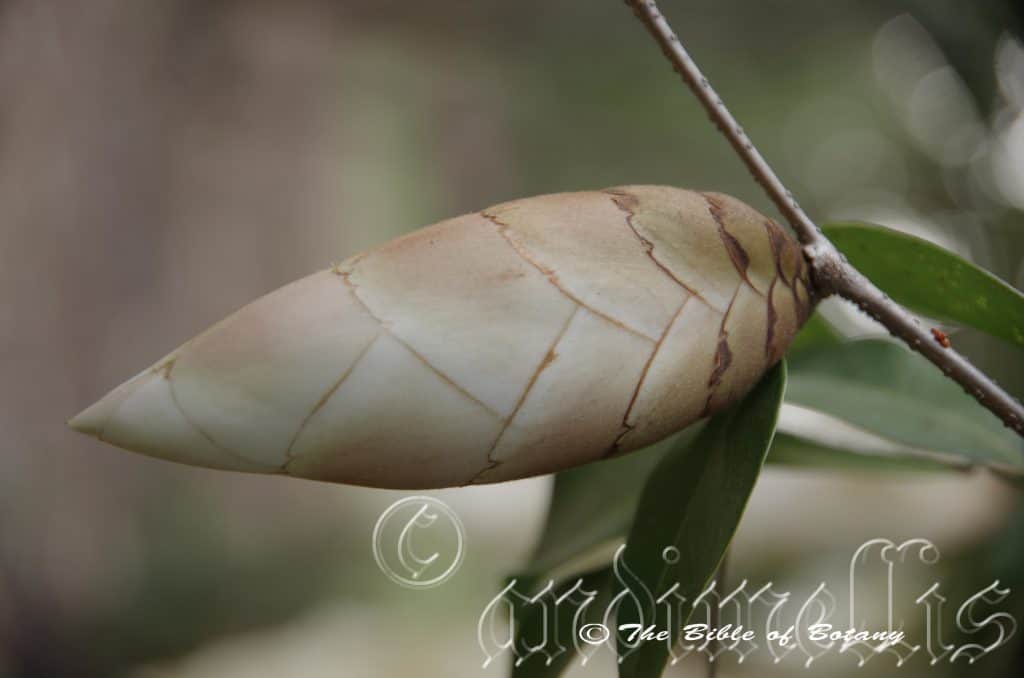
Townsville Botanic Gardens Qld.
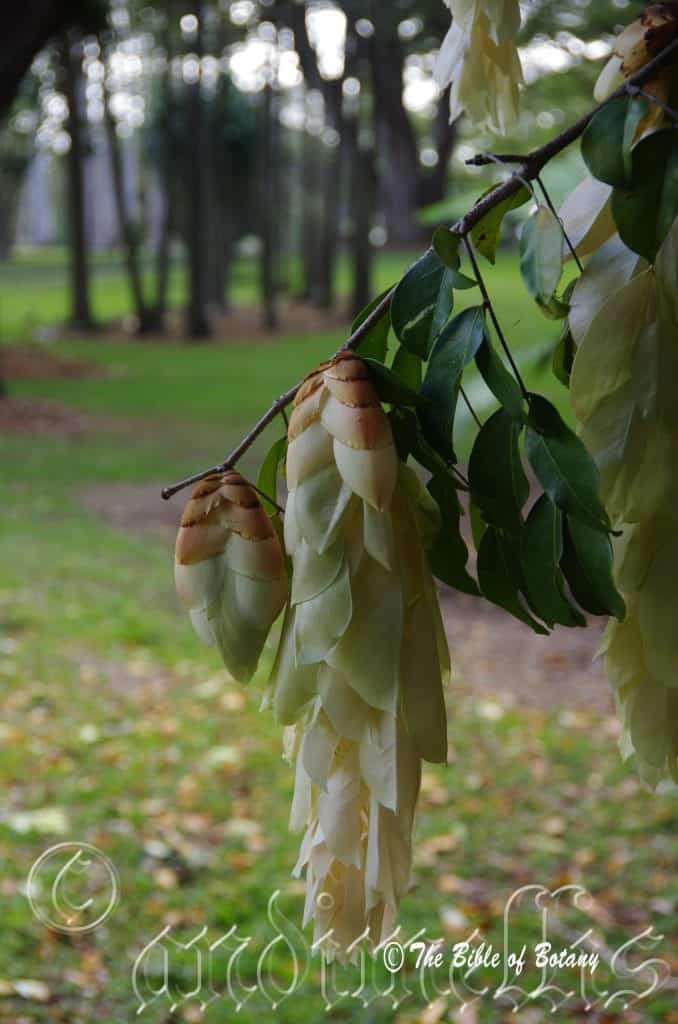
Townsville Botanic Gardens Qld.
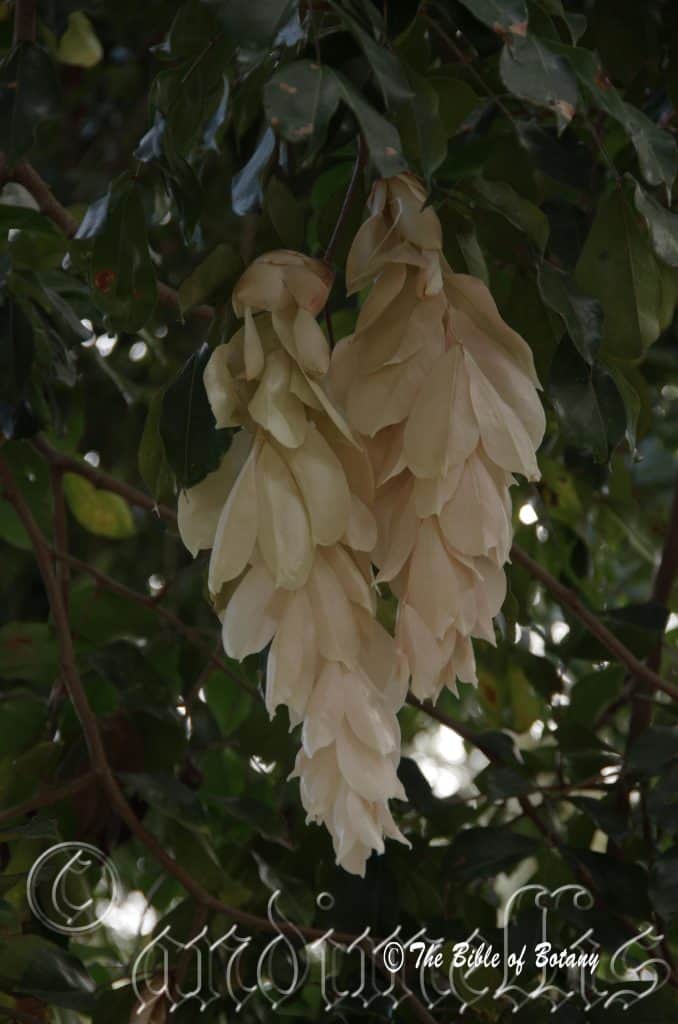
Townsville Botanic Gardens Qld.
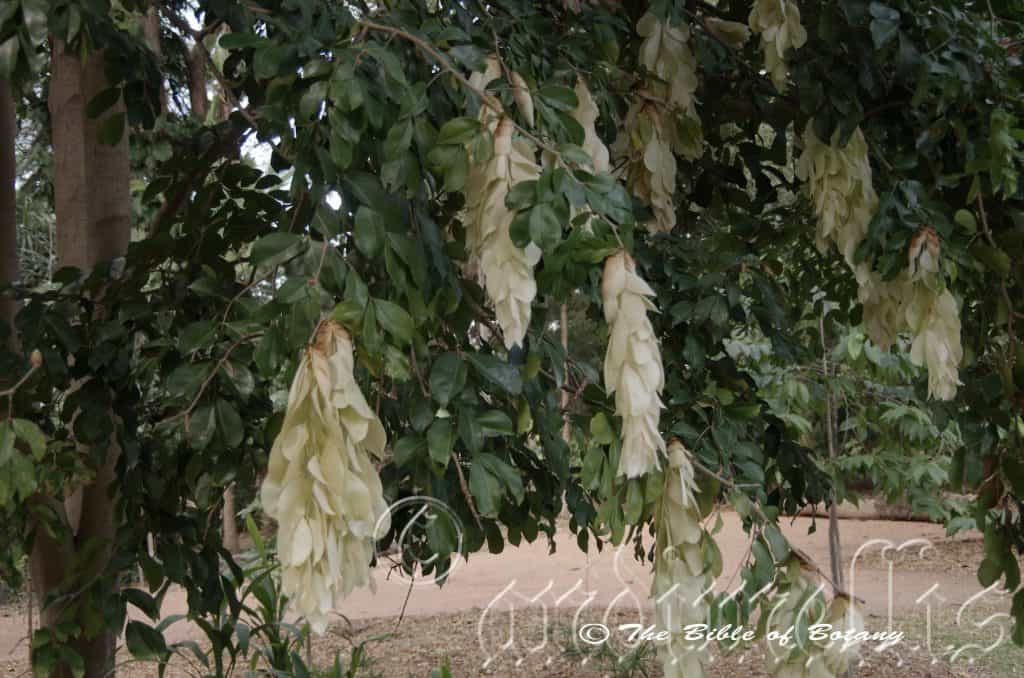
Townsville Botanic Gardens Qld.
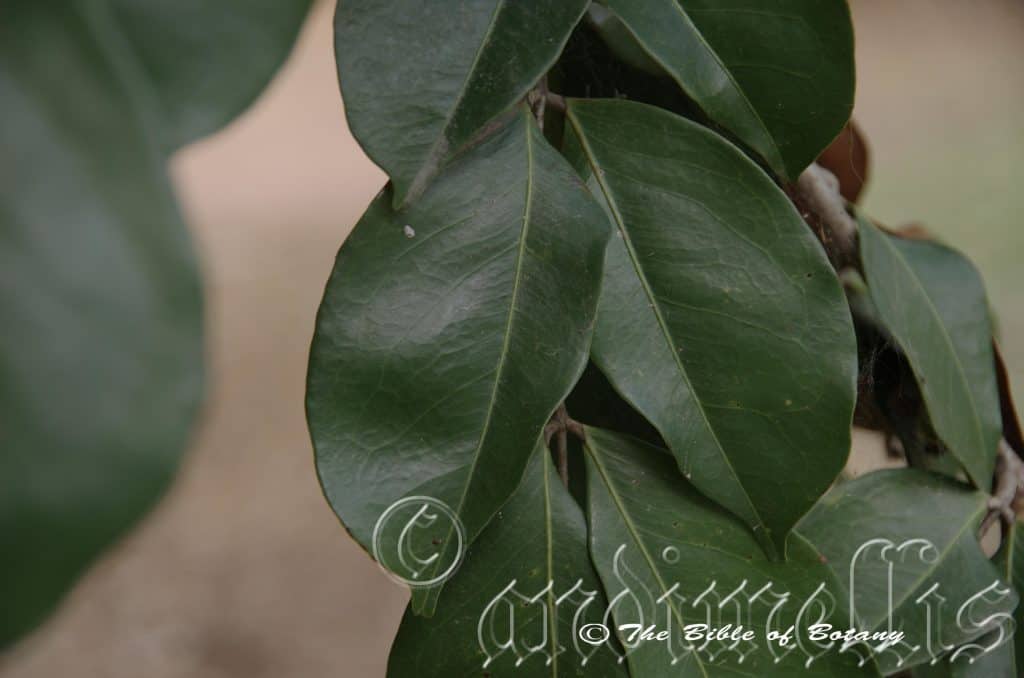
Townsville Botanic Gardens Qld.

Townsville Botanic Gardens Qld.
Maniltoa lenticellata
Classification:
Unranked: Eudicots
Unranked: Rosids
Order: Fabales
Family: Fabaceae
Subfamily: Caesalpiniodeeae
Genus: From Mannikara, which is Latinized from the local Malabar word for a plant found there. It refers to plants, which are similar in appearance to the Malabar plants.
Specie: From Láthuros, which is Ancient Greek, or later Lens, which is Latin and much later Lenticelle, which is French for for lens shape. It refers to small, lens-shaped glands usually on the lower lamina of some leaves or at times small lens shape lumps or bumps on the trunks.
Sub species:
Common Name: Cascading Bean or Cascading Maniltoa.
Distribution:
Maniltoa lenticellata is found in the top third of Cape York Peninsula south from the Torres Strait Islands to the McIlwraith Range.
https://avh.ala.org.au/occurrences/search?taxa=Maniltoa+lenticellata#tab_mapView
Habitat:
Maniltoa lenticellata prefers dappled light to moderate shade. It grows adjacent to and inside wet well developed rainforests. The altitude ranges from 5 meters ASL to 95 meters ASL.
The temperatures range from 10 degrees in August to 38 degrees in January.
The rainfalls range from lows of 1600mm to an average of 3200mm.
Soil Requirements:
Maniltoa lenticellata prefers poorer quality sands to light fatty clays. The soils are usually derived from decomposed basalts, sandstones, lateritic podsolics, accumulated beach sands or accumulated coral sands. The soils include red, yellow or grey massive earths. It is light sandy loams to sandy clays. The soils are deep with a poor water holding capacity. The soils pH. ranges from 6pH to 7pH. It does not tolerate waterlogged soils. Non saline soils to very saline soils are tolerated as are salt laden winds.
Height & Spread:
Wild Plants: 10m to 22m by 6m to 12m.
Characteristics: Maniltoa lenticellata’s glabrous trunk is creamy-grey, creamy-brown with patches of pink white and pale grey due to the presence of algae and fungi on the lower sections. The branches and main stems are creamy-brown to creamy-grey and covered in cream lenticels. The new shoots are lime green and covered in creamy coloured lenticels. The bole is usually about 50mm of the trees height.
Maniltoa lenticellata’s opposite leaves are compound with 2 to 4 pairs of opposite leaflets. The leaflets measure 50mm to 100mm in length by 25mm to 50mm in width. The leaves emerge from broad elliptical, dull, red-brown bracts which measure 20mm to 25mm in length by 15mm to 20mm in width. New growth is first creamy white turning to a deep pink. The lamina is strongly asymmetrical with a 1/3, 2/3 ratio on either side of the main vein. The base is broad cuneate while the apex is l broadly acuminate with an unusual mucronate tip. The discolourous laminas are bright green to deep sea-green, semi glossy and glabrous on the upper lamina while the lower lamina is paler. The margins are entire, flat or curve slightly upwards and have a slight undulation. The mid vein is prominent below and is distinctly visible from above. The narrow linear, caduceous stipules are only present on the very young shoots and measure 60mm to 100mm in length by 2.5mm in width. The petioles measure 6mm to 9mm in length.
The inflorescences of Maniltoa lenticellata are born as racemes from the older wood and branches. The petioles are sparsely covered in cream lenticels and measure 15mm to 20mm in length. The 4 oblong calyx lobes measure 17mm to 22mm in length by 2.5mm to 3mm in width. The individual flowers measure 15mm to 20mm in length by 2mm to 2.5mm in diameter. The 4 white to very pale pink awl shape standards are cuspidate, glabrous and measure 8mm to 10mm in length by 2.5mm to 6mm in width at the base.
The 20 to 30 filaments are white and measure 17mm to 23mm in length. The pale fawn, dorsifixed, apiculate anthers are obloidal. The glabrous style is r white and measures 12mm to 15mm in length. The singular locule ovary is born on a 5mm to 8mm long stipe. The fruity scented flowers appear from September to October.
Maniltoa lenticellata’s fruits are reniform glabrous legumes. The legumes measure 40mm to 60mm in length by 25mm to 30mm in diameter. The legumes glabrous shell is covered in white lenticels and turns pink to deep red before it is ripe. The legume reveals a single flat ovoidal, deep brown seed. The seeds measure 32mm to 39mm in length by 18mm to 28mm in diameter. The calyx, petals, stamens and style are all persistent on the legume. The legumes ripen from December to March.
Wildlife:
Maniltoa lenticellata is unknown to the author. The position of the flowers and nectarines would indicate that they may be visited by small nectar feeding nocturnal mammals.
Cultivation:
Maniltoa lenticellata is one of Australia’s most beautiful foliage trees. It makes an excellent medium size tree for a park like scene or specimen tree in the garden with a pendulous dense canopy when planted amongst other trees and shrubs. They always look green and fresh especially where adequate ground moisture is retained but they must be grown in dappled sun for best results in the tropics. It is very suitable on sandy soils or soils with very light clays in small, medium and large gardens close to the coast in warm temperate, sub tropical or tropical gardens. As garden subjects they will grow from 8m to 10m in height by 6m to 10m in diameter when grown in the open. It is cold tolerant to temperatures at least as low as 6 degrees once established but should be tried at least as far south as Coffs Harbour in frost free areas.
They can be planted in small groups of 2 or 3 to give a park like scenario.
They can be used as small shade trees in semi protected areas and are an excellent tree for starting a moist rainforest garden on very sandy soils.
If mild native fertilizers are used they will develop quickly. Once they have established a reasonable root system after 3 or 4 years of age they will power on.
Two, three or four planted back from a bend will become a very strong focal point when in there is a flush of growth. The attention whether you are coming or going will be focused on the dense pendulant branches. Place them in the back ground with fine leaf ground covers and very small shrubs or annuals in front and to the side. To the rear, use large deep sea green leaf plants with a stronger or narrower upright habit. Plants with pink, orange, red or purple flowers can be used in both the foreground and background. Plants with finer foliages in pale green will also compliment the scene during periods when there are few flowers in the garden.
Ensure that the whole plant or at least most of it is on display from most sections of the garden as the habit is a real bonus. When mass planting, be careful not to over plant as the effect of standalone trees with a beautiful habit can be lost very quickly
It is useful as a backdrop small tree contrasting with smaller finer leaf shrubs that are planted in the foreground. As the short stout trunk develops they will give an impression that they like being the center of attention which they deserve.
This tree makes an excellent small shade tree in tropical areas.
Propagation:
Seeds: Maniltoa lenticellata seeds can be sown directly into 100mm native tubes using a good organic mix.
Once the seedlings reach 100mm to 150mm in height they can be planted out into their permanent position.
Alternatively the seeds can be planted directly into permanent position after the ground has been prepared and mulched a week or two prior to planting.
Fertilize using seaweed, fish emulsion or organic chicken pellets soaked in water on an alternate basis. Fertilize every two months until the plants are established then twice annually in early September or March to maintain health, vitality and better flowering.
Further Comments from Readers:
Hi reader, it seems you use The Bible of Botany a lot. That’s great as we have great pleasure in bringing it to you! It’s a little awkward for us to ask, but our first aim is to purchase land approximately 1,600 hectares to link several parcels of N.P. into one at The Pinnacles NSW Australia, but we need your help. We’re not salespeople. We’re amateur botanists who have dedicated over 30 years to saving the environment in a practical way. We depend on donations to reach our goal. If you donate just $5, the price of your coffee this Sunday, We can help to keep the planet alive in a real way and continue to bring you regular updates and features on Australian plants all in one Botanical Bible. Any support is greatly appreciated. Thank you.
In the spirit of reconciliation we acknowledge the Bundjalung, Gumbaynggirr and Yaegl and all aboriginal nations throughout Australia and their connections to land, sea and community. We pay our respect to their Elders past, present and future for the pleasures we have gained.
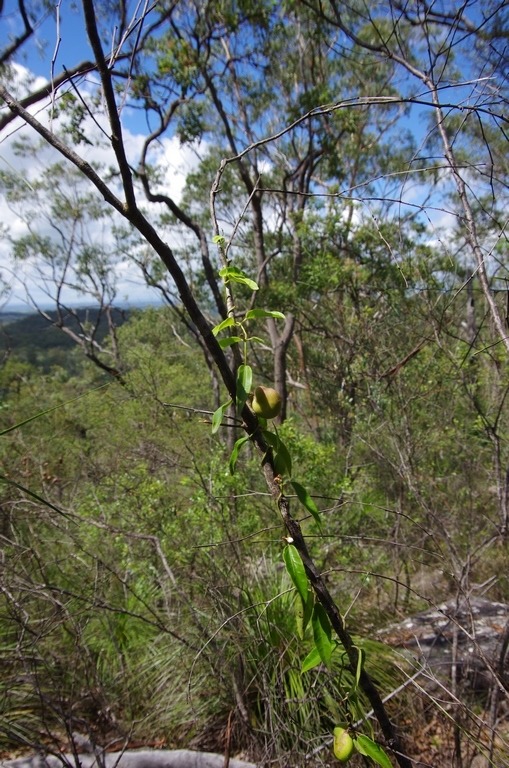

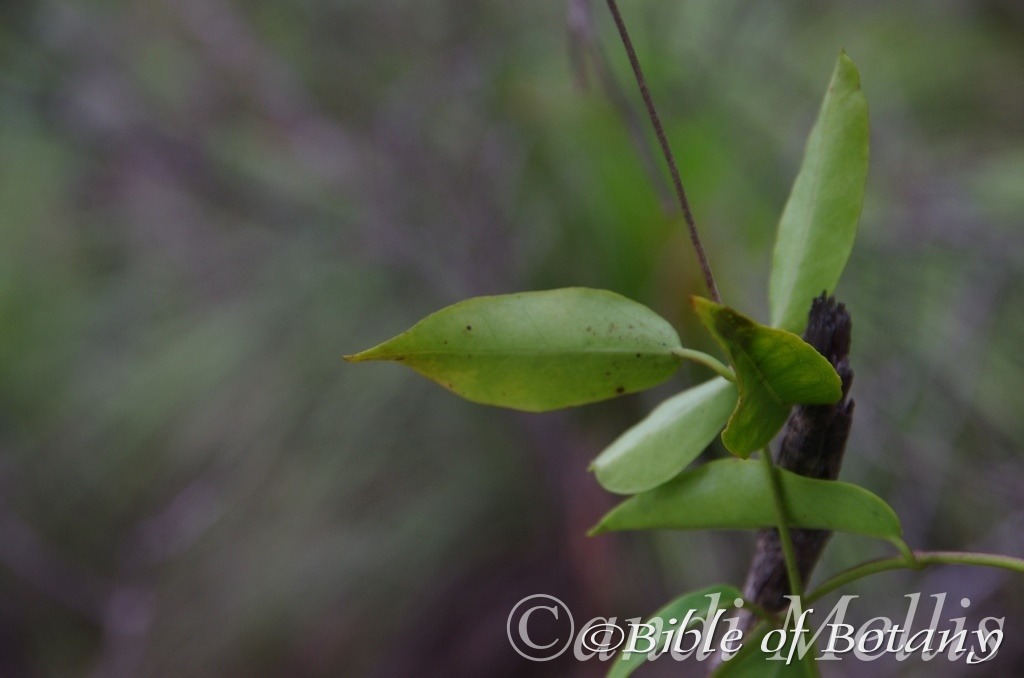
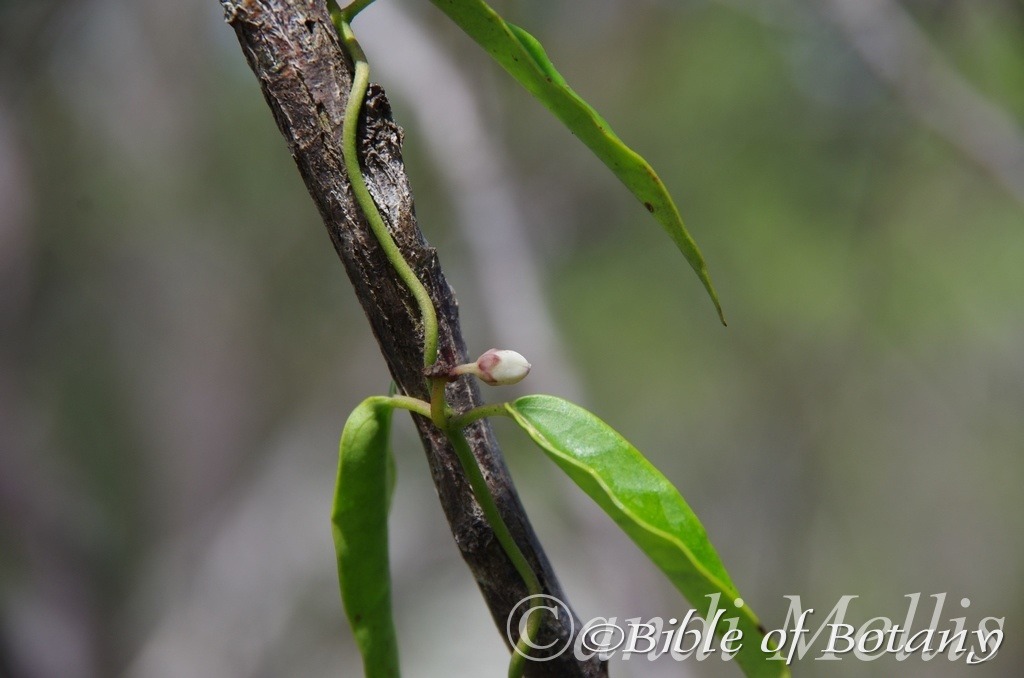
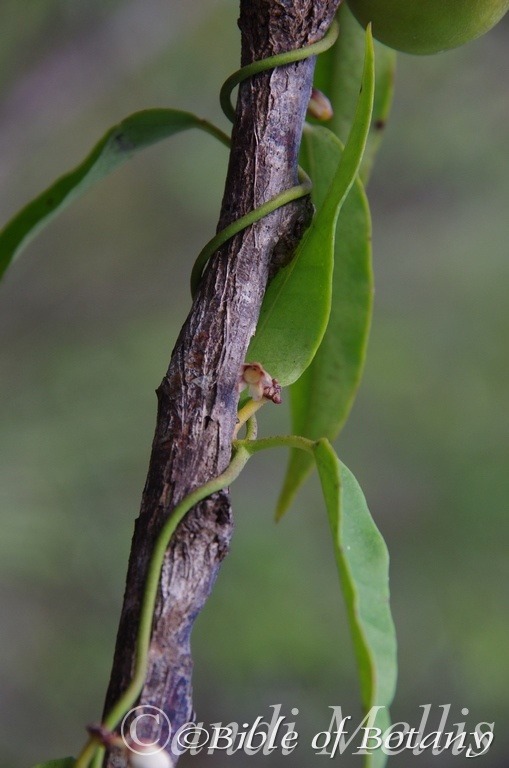
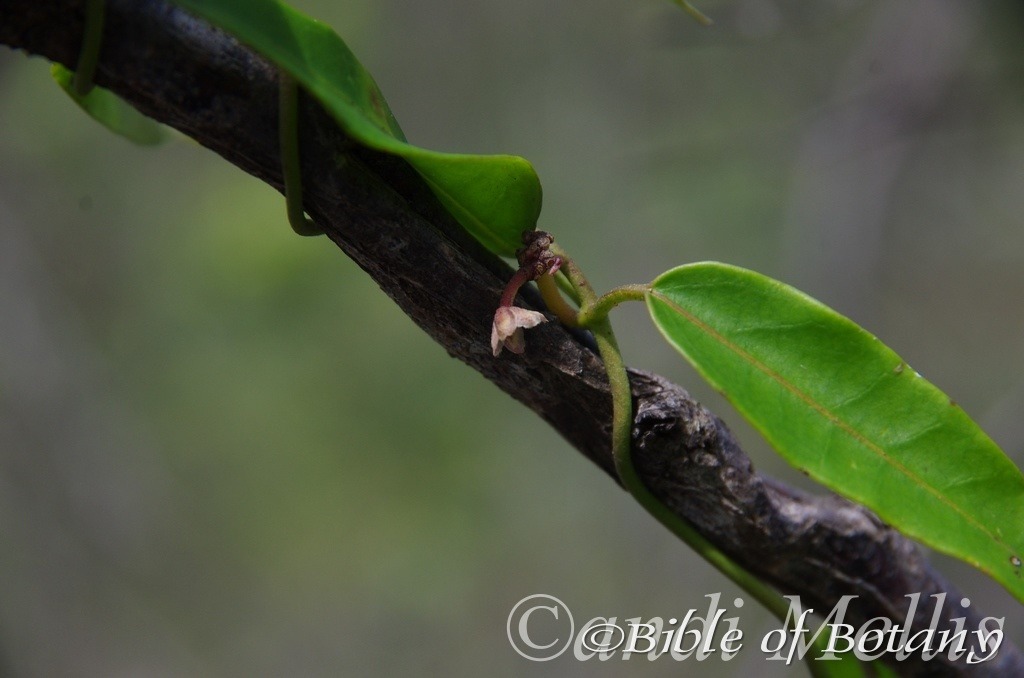



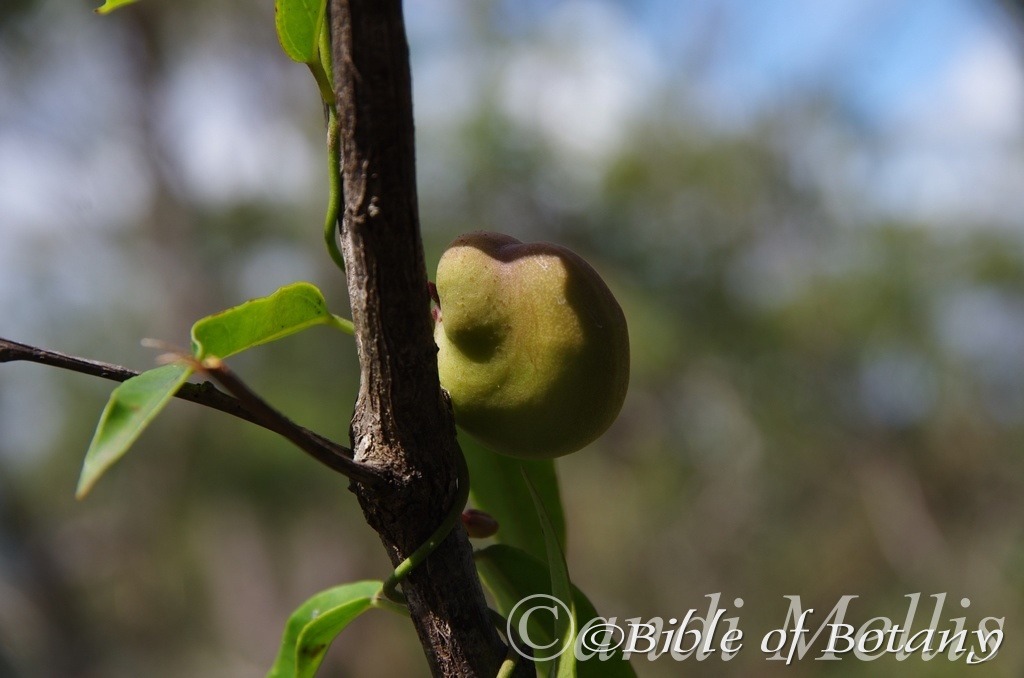
Marsdenia fraseri
Classification:
Phylum: Charophyta
Class: Equisetopsida
Subclass: Magnoliidae
Superorder: Asteranae
Order: Gentianales
Family: Apocyanaceae
Genus: Is named in honour of William Marsden; 1754-1836 who was an Irish traveller and author of plants especially those from Sumatra.
Specie Is named in honour of Charles Fraser; 1787-1831, who was an Australian botanist and horticulturalist who was sent to Brisbane to collect vegetable products of the land.
Sub species:
Common Name: Narrow leaved Milk Vine.
Distribution:
Marsdenia fraseri is found south from Peral Bay north of Yeppoon in central coastal Queensland to Seal Rocks in central coastal New South Wales.
https://avh.ala.org.au/occurrences/search?taxa=Marsdenia+fraseri#tab_mapView
Habitat Aspect Climate:
Marsdenia fraseri prefers dappled light to medium shade. It usually grows in dry sclerophyll forests or at times dry heaths. The altitude ranges from 5 meters ASL to 60 meters ASL.
The temperatures range from 2 degrees in August to 38 degrees in January.
The rainfalls range from lows of 1200mm to an average of 2000mm.
Soil Requirements:
Marsdenia fraseri prefers to grow on quality white or orange sands, peaty sands to light fatty clays. The soils are usually derived from accumulated peaty beach sands or decomposed sandstones. The soils are deep with a poor water holding capacity. The soils pH. ranges from 5.5pH to 7pH. It does not tolerate waterlogged soils. Non saline soils to very saline soils are tolerated as are salt laden winds.
Height & Spread:
Wild Plants: 3m to 4m by 3m to 4m.
Characteristics:
Marsdenia fraseri’s is a slender twinning climber. The main stems are creamy-grey with a corky appearance. The deep green twinning stems are glabrous. The stems exude milky white latex when damaged.
Marsdenia fraseri’s opposite, lanceolate to oblong-lanceolate leaves measure 20mm to 70mm in length by 6mm to 25mm in width. The bases are rounded while the apexes are tapering then bluntly acute. The concolourous laminas are deep green to sea-green, semi glossy and glabrous. The laminas are flat to recurve from the mid vein to the margins while the margins are entire and decurve strongly downwards. The mid vein is prominent below and is slightly prominent on the upper lamina while the 12 to 16 lateral veins are slightly prominent on both laminas. The glabrous petioles measure 4mm to 12mm in length.
The inflorescences of Marsdenia fraseri are 2 to 6 umbels born from the axils. The peduncules and pedicels are sparsely covered in white puberulent hairs. The pedicels measure 3mm to 6mm in length. The individual flowers measure 6mm to 8mm in diameter. The corolla and lobes are white, pastel yellow, pastel pink or white with pastel yellow or pastel pink tones externally and pale yellow to deep pink internally. The corolla tube measures 2mm to 2.5mm in length and is glabrous. The corona segment has a ring of hirsute hairs near the opening with 2 short, broad auricles at base. The 5 divaricate glabrous lobes are oblong with obtuse or broad acute apexes. The 5 lobes measure 2mm to 3mm in length and are longer than the corolla.
The pale creamy-yellow anthers measure 0.3mm in length. The faint fruity scented flowers appear from December to February.
Marsdenia fraseri’s fruits are broad compressed, orbicular follicles. The glabrous follicles measure 28mm to 35mm in length by 30mm to 35mm in diameter. The green follicles turn creamy yellow when ripe. The deep brown to black ovate seeds have long white plumes.
Wildlife:
Marsdenia fraseri’s wildlife is unknown to the author. The position of the flowers and nectarines and scent would indicate that they may be visited by small nectar feeding nocturnal insects.
While the plants are toxic to humans its leaves offer a regular all round food source for the Blue Tigers butterflies (Tirumala hamata) and the Common Crow butterfly (Euploea core) and many species of the Danaus genus of butterflies.
Cultivation:
Marsdenia fraseri’s along with other Marsdenia species are too often overlooked garden vines and are often treated as weeds by gardeners. As garden subjects it will grow from 3m to 5m in height by 3m to 5m in diameter when grown in the open on a trellis. It is cold tolerant to temperatures at least as low as minus 3 degrees once established. The vines are drought resistant.
It is best planted in a position where it goes unnoticed and won’t cause any problems climbing over your precious more valued plants. When it comes into flower the faint scent is quite divine.
Mass plantings of 4 or 5 close together make the plants more appealing to look at making the clump denser and increasing the number of summer flowers.
Propagation:
Seeds: Marsdenia fraseri seeds can be sown directly into a seed raising mix. Cover the seeds with 1mm to 2mm of fine weed free mulch and keep moist. Place the tray in a warm sunny position. When the seedlings are 15mm to 20mm tall, prick them out and plant them into 20mm native tubes using a good organic mix.
When the seedlings are 70mm to 90mm tall, prick them out and plant them into 50mm native tubes using a good organic mix or plant them out into their permanent positions.
Once the seedlings reach 150mm to 200mm in height they can be planted out into their permanent position.
Fertilize using seaweed, fish emulsion or organic chicken pellets soaked in water on an alternate basis. Fertilize every two months until the plants are established then twice annually in early September or March to maintain health, vitality and better flowering.
Further Comments from Readers:
Hi reader, it seems you use The Bible of Botany a lot. That’s great as we have great pleasure in bringing it to you! It’s a little awkward for us to ask, but our first aim is to purchase land approximately 1,600 hectares to link several parcels of N.P. into one at The Pinnacles NSW Australia, but we need your help. We’re not salespeople. We’re amateur botanists who have dedicated over 30 years to saving the environment in a practical way. We depend on donations to reach our goal. If you donate just $5, the price of your coffee this Sunday, We can help to keep the planet alive in a real way and continue to bring you regular updates and features on Australian plants all in one Botanical Bible. Any support is greatly appreciated. Thank you.
In the spirit of reconciliation we acknowledge the Bundjalung, Gumbaynggirr and Yaegl and all aboriginal nations throughout Australia and their connections to land, sea and community. We pay our respect to their Elders past, present and future for the pleasures we have gained.
Marsdenia hemiptera
Classification:
Phylum: Charophyta
Class: Equisetopsida
Subclass: Magnoliidae
Superorder: Asteranae
Order: Gentianales
Family: Apocyanaceae
Genus: Is named in honour of William Marsden; 1754-1836 who was an Irish traveller and author of plants especially those from Sumatra.
Specie: From Hemi, which is Ancient Greek for half and Ptera, which is Ancient Greek for a wing. It refers to seeds, which have a wing on one end or side only.
Sub species:
Common Name:
Distribution:
Marsdenia hemiptera is found on the upper Ord River in north eastern Western Australia and from Port Keates to Koolendong Valley.
In the center it is found in the Fitzmaurice River catchment, Katherine Gorge to Kungarrewarl or on the South Alligator River in the Northern Territory.
In the east it is found south from Punsand Bay on the tip of Cape York Peninsula, from Battle Camp Road McIlvor to Stoney Creek south of Cairns then south from Mount Pelion near Mackay in north eastern coastal Queensland to Pine Creek south of Coffs Harbour in coastal northern New South Wales.
https://avh.ala.org.au/occurrences/search?taxa=Marsdenia+hemiptera#tab_mapView
Habitat Aspect Climate:
Marsdenia hemiptera prefers dappled light to full sun. It usually grows in moist littoral rainforests or at times monsoonal rainforests or rarely adjacent to coastal subtropical rainforests. The altitude ranges from 10 meters ASL to 80 meters ASL.
The temperatures range from 2 degrees in August to 38 degrees in January.
The rainfalls range from lows of 1200mm to an average of 2800mm.
Soil Requirements:
Marsdenia hemiptera prefers peaty sands to light fatty clays. The soils are usually derived from accumulated peaty beach sands or decomposed sandstones. The soils are deep with a poor water holding capacity. The soils pH. ranges from 6pH to 7pH. It does not tolerate waterlogged soils. Non saline soils to very saline soils are tolerated as are salt laden winds.
Height & Spread:
Wild Plants: 3m to 4m by 3m to 4m.
Characteristics: Marsdenia hemiptera is a slender twinning climber. The main stems are creamy-grey with a corky appearance. The deep green twinning stems are sparsely to moderately covered in soft rusty to fawn pulverulent to hirsute hairs. The stems exude clear latex when damaged.
The opposite, ovate or oblong-ovate leaves measure 70mm to 180mm in length by 25mm to 60mm in width. The bases are cordate while the apexes are narrow accuminata to broad accuminata. The soft, thin discolourous laminas are grass-green to mid green, semi glossy and sparsely covered in soft rusty to fawn pulverulent to hirsute hairs on the upper laminas while the lower laminas are paler and moderately covered in soft rusty to fawn pulverulent to hirsute hairs. The laminas are convex between the mid vein and lateral veins on the upper laminas while the margins are entire. The grass-green to maroon mid vein is strongly prominent below and forms a furrow on the upper lamina while the 12 to 14 lateral veins are prominent on the lower lamina and is clearly visible on the upper lamina. The petioles are moderately covered in soft rusty to fawn pulverulent to hirsute hairs and measure 4mm to 12mm in length.
The inflorescences are born as umbiliform racemes from the leaf axils. The peduncules and pedicels are sparsely covered in soft rusty to fawn pulverulent to hirsute hairs. The peduncles measure 15mm to 20mm in length while the pedicels measure 5mm to 10mm in length. The individual flowers measure 20mm to 25mm in diameter. The 5 sepals measure 3.5mm to 4mm in length. The corolla tube measures 4mm to 5mm in length. The maroon to maroon-red lobes are strongly convex on the upper surface and have an accuminata apex. The 5 oblong lobes measure 8mm to 11mm in length by 4mm to 5mm in width.
The 5 pastel translucent filaments are bent over the pale yellow translucent semi-orbicular ovary. The anther expands on its abaxial surface to form a large shield like structure. The pollen is aggregated in the pollinia. The short style’s stigma is umbrella like with 5 shallow lobes adjacent to the anthers. The flowers appear from December to February.
The fruits are slender ovoidal-fusiform follicles. The glabrous follicles measure 100mm to 120mm in length by 8mm to 12mm in diameter. The green follicles turn pale grey when ripe. The seeds are unknown to the author.
Wildlife:
Marsdenia hemiptera wildlife is unknown to the author.
While the plants are toxic to humans its leaves offer a regular all round food source for the Blue Tigers butterflies (Tirumala hamata) and the Common Crow butterfly (Euploea core) and many species of the Danaus genus of butterflies.
Cultivation:
Marsdenia hemiptera is another Marsdenia that is often overlooked garden vines and are often treated as weeds by gardeners. As garden subjects they will grow from 3m to 4m in height by 3m to 4m in diameter when grown in the open on a trellis. It is cold tolerant to temperatures at least as low as minus 3 degrees once established. The vines are drought resistant.
It is best planted in a position where it goes unnoticed and won’t cause any problems climbing over your precious more valued plants. When it comes into flower the faint scent is quite divine.
Mass plantings of 2 or 3 close together make the plants more appealing to look at making the clump denser and increasing the number of summer flowers.
Propagation:
Seeds: The seeds can be sown directly into a seed raising mix. Cover the seeds with 1mm to 2mm of fine weed free mulch and keep moist. Place the tray in a warm sunny position.
When the seedlings are 15mm to 20mm tall, prick them out and plant them into 20mm native tubes using a good organic mix.
When the seedlings are 70mm to 90mm tall, prick them out and plant them into 50mm native tubes using a good organic mix or plant them out into their permanent positions.
Once the seedlings reach 150mm to 200mm in height they can be planted out into their permanent position.
Fertilize using seaweed, fish emulsion or organic chicken pellets soaked in water on an alternate basis. Fertilize every two months until the plants are established then twice annually in early September or March to maintain health, vitality and better flowering.
Further Comments from Readers:
Hi reader, it seems you use The Bible of Botany a lot. That’s great as we have great pleasure in bringing it to you! It’s a little awkward for us to ask, but our first aim is to purchase land approximately 1,600 hectares to link several parcels of N.P. into one at The Pinnacles NSW Australia, but we need your help. We’re not salespeople. We’re amateur botanists who have dedicated over 30 years to saving the environment in a practical way. We depend on donations to reach our goal. If you donate just $5, the price of your coffee this Sunday, We can help to keep the planet alive in a real way and continue to bring you regular updates and features on Australian plants all in one Botanical Bible. Any support is greatly appreciated. Thank you.
In the spirit of reconciliation we acknowledge the Bundjalung, Gumbaynggirr and Yaegl and all aboriginal nations throughout Australia and their connections to land, sea and community. We pay our respect to their Elders past, present and future for the pleasures we have gained.
Marsdenia liisae
Classification:
Phylum: Charophyta
Class: Equisetopsida
Subclass: Magnoliidae
Superorder: Asteranae
Order: Gentianales
Family: Apocyanaceae
Genus: Is named in honour of William Marsden; 1754-1836 who was an Irish traveller and author of plants especially those from Sumatra.
Specie: From Liisae which is unknown.
Sub species:
Common Name: Large Flowered Milk Vine.
Distribution:
Marsdenia liisae is found south from the Whian Whian State Forest near Lismore to Buladelah Mountain Park in north eastern to central coastal New South Wales.
https://avh.ala.org.au/occurrences/search?taxa=Marsdenia+liisae#tab_mapView
Habitat Aspect Climate:
Marsdenia liisae prefers dappled light to moderate shade. It grows in wet sclerophyll forests or on the margins of well-developed rainforests. The altitude ranges from 100 meters ASL to 750 meters ASL.
The temperatures range from minus 3 degrees in August to 38 degrees in January.
The rainfalls range from lows of 1000mm to an average of 2000mm.
Soil Requirements:
Marsdenia liisae prefers better quality fertile loams to medium clays. The soils are usually derived from decomposed basalts or basalt intrusions with granites. The soils include red, yellow or grey massive earths. The soils are deep with a poor water holding capacity. The soils pH. ranges from 6pH to 7pH. It does not tolerate waterlogged soils. Non saline soils to very saline soils are tolerated as.
Height & Spread:
Wild Plants: 3m to 5m by 3m to 5m.
Characteristics:
Marsdenia liisae’s is a slender twinning climber. The main stems are creamy-grey with a corky appearance. The deep green twinning stems are glabrous. The stems exude copious quantities of milky latex when damaged.
The opposite, oblong-ovate to oblong or roughly triangular leaves measure 40mm to 160mm in length by 20mm to 80mm in width. The bases are cordate while the apexes are accuminata. The soft, thin discolourous laminas are deep green, dull and glabrous on the upper laminas while the lower laminas are paler. The laminas are flat and gently decurve slightly downwards near the apex while the margins are entire. The mid green to pastel green mid vein is prominent on the lower lamina while the 12 to 18 lateral veins are slightly prominent on the lower lamina and are clearly visible on the upper lamina. The glabrous petioles measure 15mm to 50mm in length.
The inflorescences are born as small umbels from the leaf axils. The peduncules and pedicels are glabrous. The peduncles measure 20mm to 40mm in length while the pedicels measure 20mm to 40mm in length. The individual flowers measure 20mm to 40mm in diameter. The pastel yellow to pale creamy-yellow triangular sepals measure 3.5mm to 7mm in length. The corolla tube measures 4mm to 9mm in length. The pastel yellow to pale creamy-yellow linear lobes are twisted and have obtuse apexes. The 5 lobes measure 9mm to 17mm in length by 3mm to 4.5mm in width. The corona segments are free in the upper section, incurved and are fused at the basal section and have a hood-shaped wing.
The 5 pastel filaments surround the semi-orbicular ovary. The pollen is aggregated in the pollinia. The conical stigma is bifid and is much longer than stamens. The flowers appear from December to February.
The fruits are turgid, slim fusiform follicles. The glabrous follicles measure 100mm to 135mm in length by 2mm to 3mm in diameter. The green follicles turn pale grey when ripe. The seeds are unknown to the author.
Wildlife:
Marsdenia liisae wildlife is unknown to the author however the position of the flowers and nectarines would indicate that they may be visited by nocturnal insects.
While the plants are toxic to humans its leaves offer a regular all round food source for the Blue Tigers butterflies (Tirumala hamata) and the Common Crow butterfly (Euploea core) and many species of the Danaus genera of butterflies.
Cultivation:
Marsdenia liisae is too often overlooked garden vines and are often treated as weeds by gardeners. As garden subjects they will grow from 3m to 4m in height by 3m to 4m in diameter when grown in the open on a trellis. It is cold tolerant to temperatures at least as low as minus 3 degrees once established. The vines are drought resistant.
It is best planted in a position where it goes unnoticed and won’t cause any problems climbing over your precious more valued plants. When it comes into flower the faint scent is quite divine.
Mass plantings of 4 or 5 close together make the plants more appealing to look at making the clump denser and increasing the number of summer flowers.
Propagation:
Seeds: Marsdenia liisae seeds can be sown directly into a seed raising mix. Cover the seeds with 1mm to 2mm of fine weed free mulch and keep moist. Place the tray in a warm sunny position. When the seedlings are 15mm to 20mm tall, prick them out and plant them into 20mm native tubes using a good organic mix.
When the seedlings are 70mm to 90mm tall, prick them out and plant them into 50mm native tubes using a good organic mix or plant them out into their permanent positions.
Once the seedlings reach 150mm to 200mm in height they can be planted out into their permanent position.
Fertilize using seaweed, fish emulsion or organic chicken pellets soaked in water on an alternate basis. Fertilize every two months until the plants are established then twice annually in early September or March to maintain health, vitality and better flowering.
Further Comments from Readers:
Hi reader, it seems you use The Bible of Botany a lot. That’s great as we have great pleasure in bringing it to you! It’s a little awkward for us to ask, but our first aim is to purchase land approximately 1,600 hectares to link several parcels of N.P. into one at The Pinnacles NSW Australia, but we need your help. We’re not salespeople. We’re amateur botanists who have dedicated over 30 years to saving the environment in a practical way. We depend on donations to reach our goal. If you donate just $5, the price of your coffee this Sunday, We can help to keep the planet alive in a real way and continue to bring you regular updates and features on Australian plants all in one Botanical Bible. Any support is greatly appreciated. Thank you.
In the spirit of reconciliation we acknowledge the Bundjalung, Gumbaynggirr and Yaegl and all aboriginal nations throughout Australia and their connections to land, sea and community. We pay our respect to their Elders past, present and future for the pleasures we have gained.
Marsdenia lloydii
Classification:
Phylum: Charophyta
Class: Equisetopsida
Subclass: Magnoliidae
Superorder: Asteranae
Order: Gentianales
Family: Apocyanaceae
Genus: Is named in honour of William Marsden; 1754-1836 who was an Irish traveller and author of plants especially those from Sumatra.
Specie: Is named in honour of Lloyd.
Sub species:
Common Name: Lloyde’s Milk Vine or Corky Milk Vine.
Distribution:
Marsdenia lloydii is found in several disjunct populations south from Dalrymple west of Mackay to Campbelltown in Sydney. Except for the populations found in Carnarvon Gorge National Park it is found on and east of the Great Dividing Range to the coast.
https://avh.ala.org.au/occurrences/search?taxa=Marsdenia+lloydii#tab_mapView
Habitat Aspect Climate:
Marsdenia lloydii prefers dappled light to moderate shade. It usually grows dry rainforests or moist Eucalyptus forests adjacent to dry rainforests. The altitude ranges from 5 meters ASL to 95 meters ASL.
The temperatures range from minus 3 degrees in August to 38 degrees in January.
The rainfalls range from lows of 500mm to an average of 2000mm.
In the low rainfall areas additional moisture is derived through orographic precipitation.
Soil Requirements:
Marsdenia lloydii prefers to grow on sand loams to medium clays. The soils are usually derived from decomposed brown basalts, black basalts, sandstone or shale. The soils pH. ranges from 6pH to 7pH. It does not tolerate waterlogged soils. Non saline soils to very saline soils are tolerated.
Height & Spread:
Wild Plants: 3m to 4m by 3m to 4m.
Characteristics:
Marsdenia lloydii’s grows as a slender twinning climber. The main stems develop the creamy-grey corky bark a lot sooner than the other Marsdenia. The corky bark is soft and longitudinally fissured. The deep green twinning stems are glabrous. The stems exude milky latex when damaged.
The opposite, oblong-ovate to oblong leaves measure 50mm to 110mm in length by 20mm to 50mm in width. The bases are rounded-cordate while the apexes are accuminata. The soft, thin discolourous laminas are deep green to sea-green, dull and glabrous on the upper laminas while the lower laminas are pastel green to pale silvery-green. The laminas are flat and gently decurve slightly downwards near the apex while the margins are entire. The pastel to mid green mid vein is strongly prominent on the lower lamina and prominent on the upper lamina. The while the 15 to 17 pastel green to pale green lateral veins are slightly prominent on the lower lamina and are level or very slightly prominent are distinctly visible on the upper lamina. The glabrous petioles measure 15mm to 30mm in length.
The inflorescences are born as small umbels from the leaf axils. The grass-green to mid green peduncules and pedicels are glabrous. The peduncles measure 6mm to 8mm in length while the pedicels measure 5mm to 7mm in length. The individual flowers measure 3mm to 4mm in diameter. The 5 white ovate sepals measure 1.5mm to 1.8mm in length. The white corolla’s throat is densely covered in long white hirsute hairs obscuring the corona. The 5 short oblong corolla lobes measure 2mm to 3mm in length and have reflexed, obtuse apexes and are covered in long white hirsute hairs near base. The corona segments are short with the basal section without wings or lobes. The free upper section is thin, broad and obtuse.
The style’s umbonate stigma is a short, broad, pale fawn to cream and is mostly covered by the long appendages on the anthers. The flowers appear from September to February.
Marsdenia lloydii’s fruits are ovoidal, turgid follicles. The glabrous follicles measure 40mm to 60mm in length by 3mm to 4mm in diameter. The green follicles turn pale grey when ripe. The seeds are unknown to the author.
Wildlife:
Marsdenia lloydii is unknown to the author however the position of the flowers and nectarines would indicate that they may be visited by nocturnal insects. The beautifully coloured, 4 Coloured Milk Vine Bug (Oncopeltus sordidus) haunts this Marsdenia species and probably others as well.
While the plants are toxic to humans its leaves offer a regular all round food source for the Blue Tigers butterflies (Tirumala hamata) and the Common Crow butterfly (Euploea core) and many species of the Danaus genera of butterflies.
Cultivation:
Marsdenia lloydii is another Marsdenia that is often overlooked garden vines and are often treated as weeds by gardeners. As garden subjects they will grow from 3m to 4m in height by 3m to 4m in diameter when grown in the open on a trellis. It is cold tolerant to temperatures at least as low as minus 3 degrees once established. The vines are drought resistant.
It is best planted in a position where it goes unnoticed and won’t cause any problems climbing over your precious more valued plants. When it comes into flower the faint scent is quite divine.
Mass plantings of 4 or 5 close together make the plants more appealing to look at making the clump denser and increasing the number of summer flowers.
Propagation:
Seeds: The seeds can be sown directly into a seed raising mix. Cover the seeds with 1mm to 2mm of fine weed free mulch and keep moist. Place the tray in a warm sunny position. When the seedlings are 15mm to 20mm tall, prick them out and plant them into 20mm native tubes using a good organic mix.
When the seedlings are 70mm to 90mm tall, prick them out and plant them into 50mm native tubes using a good organic mix or plant them out into their permanent positions.
Once the seedlings reach 150mm to 200mm in height they can be planted out into their permanent position.
Fertilize using seaweed, fish emulsion or organic chicken pellets soaked in water on an alternate basis. Fertilize every two months until the plants are established then twice annually in early September or March to maintain health, vitality and better flowering.
Further Comments from Readers:
Hi reader, it seems you use The Bible of Botany a lot. That’s great as we have great pleasure in bringing it to you! It’s a little awkward for us to ask, but our first aim is to purchase land approximately 1,600 hectares to link several parcels of N.P. into one at The Pinnacles NSW Australia, but we need your help. We’re not salespeople. We’re amateur botanists who have dedicated over 30 years to saving the environment in a practical way. We depend on donations to reach our goal. If you donate just $5, the price of your coffee this Sunday, We can help to keep the planet alive in a real way and continue to bring you regular updates and features on Australian plants all in one Botanical Bible. Any support is greatly appreciated. Thank you.
In the spirit of reconciliation we acknowledge the Bundjalung, Gumbaynggirr and Yaegl and all aboriginal nations throughout Australia and their connections to land, sea and community. We pay our respect to their Elders past, present and future for the pleasures we have gained.
Marsdenia longiloba
Classification:
Phylum: Charophyta
Class: Equisetopsida
Subclass: Magnoliidae
Superorder: Asteranae
Order: Gentianales
Family: Apocyanaceae
Genus: Is named in honour of William Marsden; 1754-1836 who was an Irish traveller and author of plants especially those from Sumatra.
Specie: From Longitia/Longus, which is Latin for long in length and Lobós, which is Ancient Greek for an ear lobe. It refers to lobes on the corollas, which are much longer on this species when compared to other species in the genus.
Sub species:
Common Name:
Distribution:
Marsdenia longiloba is found south from Little Kobble Creek in the Pine Shire in south eastern Queensland to Combyne Road near Byabarra in central eastern New South Wales.
https://avh.ala.org.au/occurrences/search?taxa=Marsdenia+longiloba#tab_mapView
Habitat:
Marsdenia longiloba prefers dappled light to moderate shade. It grows in dry rainforests or well developed rainforests. The altitude ranges from 30 meters ASL to 450 meters ASL.
The temperatures range from minus 3 degrees in August to 38 degrees in January.
The rainfalls range from lows of 1000mm to an average of 2000mm.
Soil Requirements:
Marsdenia longiloba prefers to grow on better quality sandy loams to medium clays. The soils are usually derived from decomposed black basalts, shale, heavier sandstone or alluvial silts. The soils pH. ranges from 6pH to 7pH. It does not tolerate waterlogged soils. Non saline soils to very saline soils are tolerated as are salt laden winds.
Height & Spread:
Wild Plants: 4m to 6m by 4m to 6m.
Characteristics:
Marsdenia longiloba’s grows as a slender twinning climber with a creamy-grey, corky main stem particularly near the base. The deep green twinning stems are glabrous. The stems exude clear watery latex when damaged.
Marsdenia longiloba’s opposite, lanceolate to ovate leaves measure 30mm to 100mm in length by 10mm to 50mm in width. The bases are rounded, truncate or cuneate while the apexes are accuminata often with a longer tapering point. The soft, thin discolourous laminas are deep green, dull and glabrous on the upper laminas while the lower laminas are paler. The laminas are flat and gently decurve slightly downwards near the apex while the margins are entire. The mid green to pastel green mid vein is prominent on the lower lamina while the 12 to 18 lateral veins are slightly prominent on the lower lamina and are clearly visible on the upper lamina. The glabrous petioles measure 6mm to 20mm in length.
The inflorescences are born as small umbels from the leaf axils. The deep green peduncules and pedicels are glabrous. The peduncles measure 20mm to 28mm in length while the pedicels measure 10mm to 14mm in length. The individual flowers measure 10mm to 14mm in diameter. The green sepals measure 1mm to 1.5mm in length. The rotate, glabrous white corolla tube measures 1.5mm to 2mm in length. The 5 slightly twisted white linear lobes measure 4mm to 5mm in length by 1mm to 1.5mm in width. The falcate corona segments are free in the upper section, incurved and are fused at the basal section and have 2 basal lobes.
The 5 pastel filaments surround the semi-orbicular ovary. The pollen is aggregated in the pollinia. The conical stigma is bifid and is much shorter than stamens. The flowers appear from December to February.
The fruits are probably glabrous fusiform follicles. The seeds are also unsighted by the author.
Wildlife:
Marsdenia longiloba is unknown to the author however the position of the flowers and nectarines would indicate that they may be visited by nocturnal insects.
While the plants are toxic to humans its leaves offer a regular all round food source for the Blue Tigers butterflies (Tirumala hamata) and the Common Crow butterfly (Euploea core) and many species of the Danaus genera of butterflies.
Cultivation:
Marsdenia longiloba is another Marsdenia that is often overlooked garden vines and are often treated as weeds by gardeners. As garden subjects they will grow from 3m to 4m in height by 3m to 4m in diameter when grown in the open on a trellis. It is cold tolerant to temperatures at least as low as minus 3 degrees once established. The vines are drought resistant.
It is best planted in a position where it goes unnoticed and won’t cause any problems climbing over your precious more valued plants. When it comes into flower the faint scent is quite divine.
Mass plantings of 4 or 5 close together make the plants more appealing to look at making the clump denser and increasing the number of summer flowers.
Propagation:
Seeds: The seeds can be sown directly into a seed raising mix. Cover the seeds with 1mm to 2mm of fine weed free mulch and keep moist. Place the tray in a warm sunny position. When the seedlings are 15mm to 20mm tall, prick them out and plant them into 20mm native tubes using a good organic mix.
When the seedlings are 70mm to 90mm tall, prick them out and plant them into 50mm native tubes using a good organic mix or plant them out into their permanent positions.
Once the seedlings reach 150mm to 200mm in height they can be planted out into their permanent position.
Fertilize using seaweed, fish emulsion or organic chicken pellets soaked in water on an alternate basis. Fertilize every two months until the plants are established then twice annually in early September or March to maintain health, vitality and better flowering.
Further Comments from Readers:
Hi reader, it seems you use The Bible of Botany a lot. That’s great as we have great pleasure in bringing it to you! It’s a little awkward for us to ask, but our first aim is to purchase land approximately 1,600 hectares to link several parcels of N.P. into one at The Pinnacles NSW Australia, but we need your help. We’re not salespeople. We’re amateur botanists who have dedicated over 30 years to saving the environment in a practical way. We depend on donations to reach our goal. If you donate just $5, the price of your coffee this Sunday, We can help to keep the planet alive in a real way and continue to bring you regular updates and features on Australian plants all in one Botanical Bible. Any support is greatly appreciated. Thank you.
In the spirit of reconciliation we acknowledge the Bundjalung, Gumbaynggirr and Yaegl and all aboriginal nations throughout Australia and their connections to land, sea and community. We pay our respect to their Elders past, present and future for the pleasures we have gained.
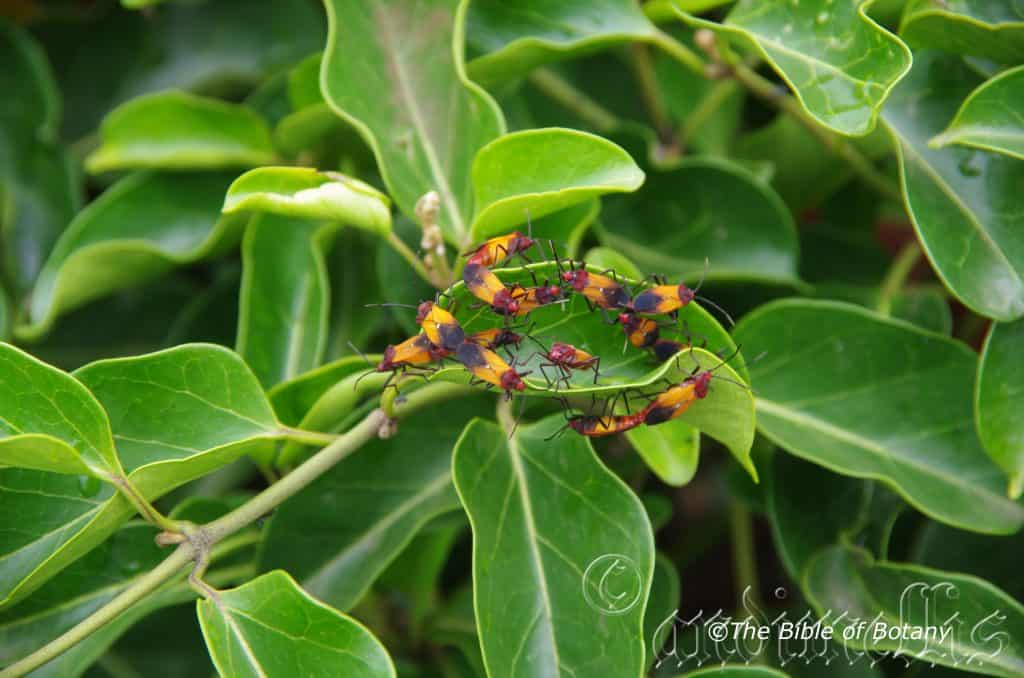
Marsdenia rostrata
Classification:
Phylum: Charophyta
Class: Equisetopsida
Subclass: Magnoliidae
Superorder: Asteranae
Order: Gentianales
Family: Apocyanaceae
Genus: Is named in honour of William Marsden; 1754-1836 who was an Irish traveller and author of plants especially those from Sumatra.
Specie: From Rostellum, which is Latin for a small beak. It refers to fruits, which bear a rostrate beaklike appendage at the apex.
Sub species:
Common Name: Common Milk Vine.
Distribution:
Marsdenia rostrata is found south from Tolga on Cape York Peninsula to the Thomson River in south eastern Victoria. It is mainly found on and east of the Great Dividing Range to the coast except for a disjunct populations in the Carnarvon National Park.
There is an isolated population in Kings Cascade in the Kymberley Range in far north western, Western Australia and one on Lord Howe Island.
https://avh.ala.org.au/occurrences/search?taxa=Marsdenia+rostrata#tab_mapView
Habitat Aspect Climate:
Marsdenia rostrata prefers dappled light to moderate shade. It grows adjacent to and inside wet well developed rainforests. The altitude ranges from 5 meters ASL to 1200 meters ASL.
The temperatures range from minus 3 degrees in August to 40 degrees in January.
The rainfalls range from lows of 700mm to an average of 3200mm.
Soil Requirements:
Marsdenia rostrata prefers poor to better quality fertile sands to medium clays. The soils are usually derived from decomposed brown basalt, black basalts, sandstones, lateritic podzolics, granites, metamorphic rocks, limestone rocks, accumulated beach sands or accumulated coral sands. The soils include red, yellow or grey massive earths. The soils are deep usually with good water holding capacity or those that have good capillary action. The soils pH. ranges from 4.5pH to 7.5pH. It does not tolerate waterlogged soils however seasonally wet soils are tolerated. Non saline soils to very saline soils are tolerated as are salt laden winds.
Height & Spread:
Wild Plants: 8m to 12m by 4m to 6m.
Characteristics:
It grows as a slender twinning climber with a creamy-grey, corky main stem. The deep green twinning stems are glabrous. The stems exude copious quantities of milky latex when damaged. It regenerates rapidly from the corky basal stems.
The opposite leaves are usually oblong-elliptic to broad oval or at times orbicular. The leaves measure 40mm to 130mm in length by 20mm to 70mm in width. The bases are rounded to slightly cordate while the apexes are accuminata. The discolourous laminas are deep green to sea-green, dull and glabrous on the upper laminas while the lower laminas are paler. The laminas recurve slightly upwards from the midvein to the margins and decurve gently downwards near the apex while the margins are entire. The mid vein is prominent on the lower lamina while the 10 to 12 lateral penniveins are distinctly visible but not prominent on the lower lamina. The mid vein is clearly visible on the upper lamina while the lateral veins are obscurely visible. The glabrous petioles measure 10mm to 40mm in length.
The inflorescences are born as small umbels from the leaf axils. The peduncules and pedicels are glabrous. The peduncles measure 10mm to 15mm in length while the pedicels measure 7mm to 12mm in length. The individual flowers measure 8mm to 15mm in diameter. The pastel yellow to pale creamy-yellow triangular calyxes and lobes measure 2.5mm to 5.5mm in length. The white corolla tube measures 2mm to 2.5mm in length. The white oblong, divaricate lobes have obtuse apexes. The lobes measure 3mm to 5mm in length by 1mm to 1.5mm in width. The corona segments are free in the upper section, incurved and are fused at the basal section and have a hood-shaped wing.
The 5 white filaments surround the semi-orbicular ovary forming a star pattern. The white pollen is aggregated in the pollinia. The conical pistil is bifid and is much longer than stamens. The free section of the corona is erect, incurved and almost as long as the anthers. The wings and auricles are absent in this species. The flowers appear from September to February.
The fruits are turgid, ovoidal follicles with obtuse apexes. The glabrous follicles measure 50mm to 80mm in length by 15mm to 18mm in diameter. The green follicles turn blue-green pale when ripe. The old follicles turn grey with black sooty like film shortly after dehiscing the seeds and remain attached to the plants until they disintegrate. The flat oval seeds are chocolate brown and faintly rugose. The seeds measure 7mm to 10mm in length by 4mm to 6mm in width. The white plumes measure 10mm to 30mm in length and are attached to the apex of the seed.
Wildlife:
Marsdenia rostrata is unknown to the author however the position of the flowers and nectarines would indicate that they may be visited by nocturnal insects.
While the plants are toxic to humans its leaves offer a regular all round food source for the Blue Tigers butterflies (Tirumala hamata) and the Common Crow butterfly (Euploea core) and many species of the Danaus genera of butterflies.
Cultivation:
Marsdenia rostrata is another Marsdenia that is often overlooked garden vines and are often treated as weeds by gardeners. As garden subjects they will grow from 3m to 4m in height by 3m to 4m in diameter when grown in the open on a trellis. It is cold tolerant to temperatures at least as low as minus 3 degrees once established. The vines are drought resistant.
It is best planted in a position where it goes unnoticed and won’t cause any problems climbing over your precious more valued plants. When it comes into flower the faint scent is quite divine.
Mass plantings of 4 or 5 close together make the plants more appealing to look at making the clump denser and increasing the number of summer flowers.
Propagation:
Seeds: The seeds can be sown directly into a seed raising mix. Cover the seeds with 1mm to 2mm of fine weed free mulch and keep moist. Place the tray in a warm sunny position. When the seedlings are 15mm to 20mm tall, prick them out and plant them into 20mm native tubes using a good organic mix.
When the seedlings are 70mm to 90mm tall, prick them out and plant them into 50mm native tubes using a good organic mix or plant them out into their permanent positions.
Once the seedlings reach 150mm to 200mm in height they can be planted out into their permanent position.
Fertilize using seaweed, fish emulsion or organic chicken pellets soaked in water on an alternate basis. Fertilize every two months until the plants are established then twice annually in early September or March to maintain health, vitality and better flowering.
Further Comments from Readers:
Hi reader, it seems you use The Bible of Botany a lot. That’s great as we have great pleasure in bringing it to you! It’s a little awkward for us to ask, but our first aim is to purchase land approximately 1,600 hectares to link several parcels of N.P. into one at The Pinnacles NSW Australia, but we need your help. We’re not salespeople. We’re amateur botanists who have dedicated over 30 years to saving the environment in a practical way. We depend on donations to reach our goal. If you donate just $5, the price of your coffee this Sunday, We can help to keep the planet alive in a real way and continue to bring you regular updates and features on Australian plants all in one Botanical Bible. Any support is greatly appreciated. Thank you.
In the spirit of reconciliation we acknowledge the Bundjalung, Gumbaynggirr and Yaegl and all aboriginal nations throughout Australia and their connections to land, sea and community. We pay our respect to their Elders past, present and future for the pleasures we have gained.

Mount Cootha Botanic Gardens Qld.
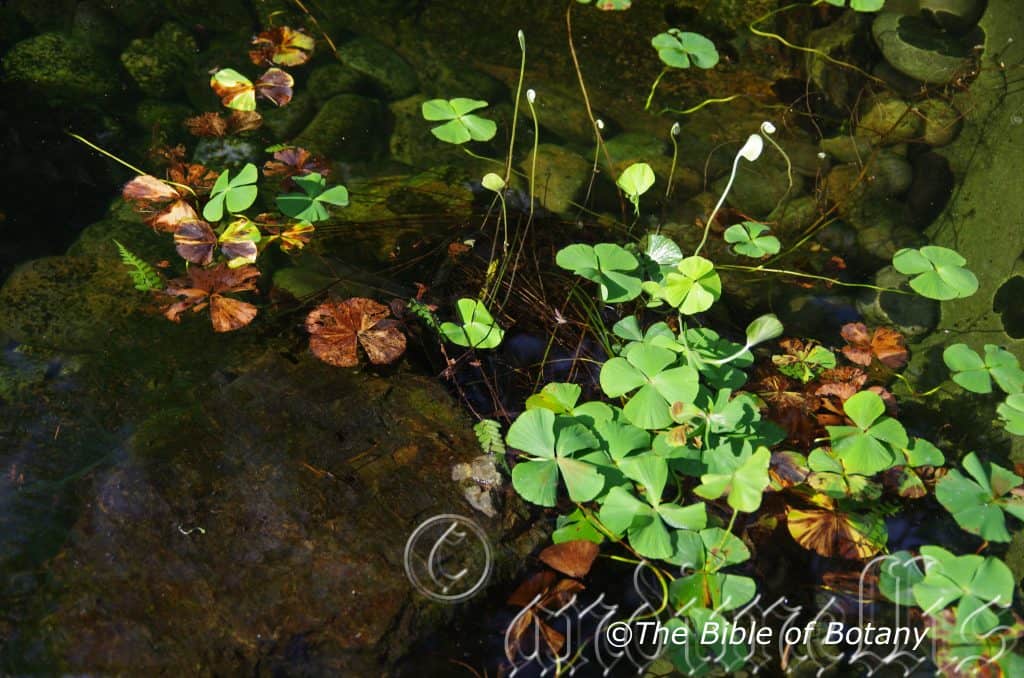
Mount Cootha Botanic Gardens Qld.
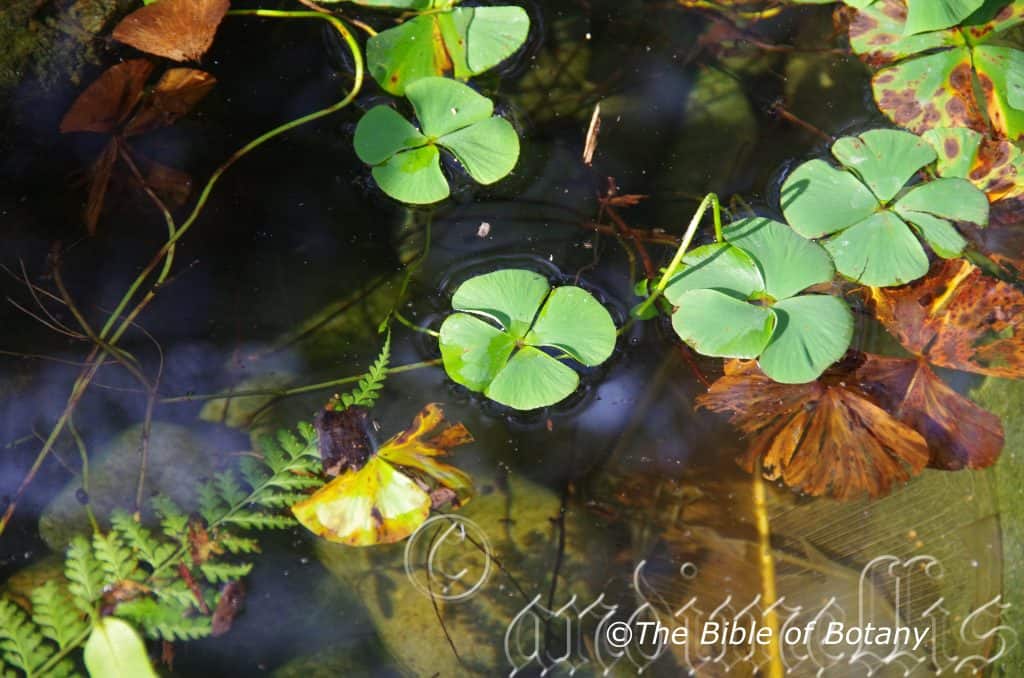
Mount Cootha Botanic Gardens Qld.
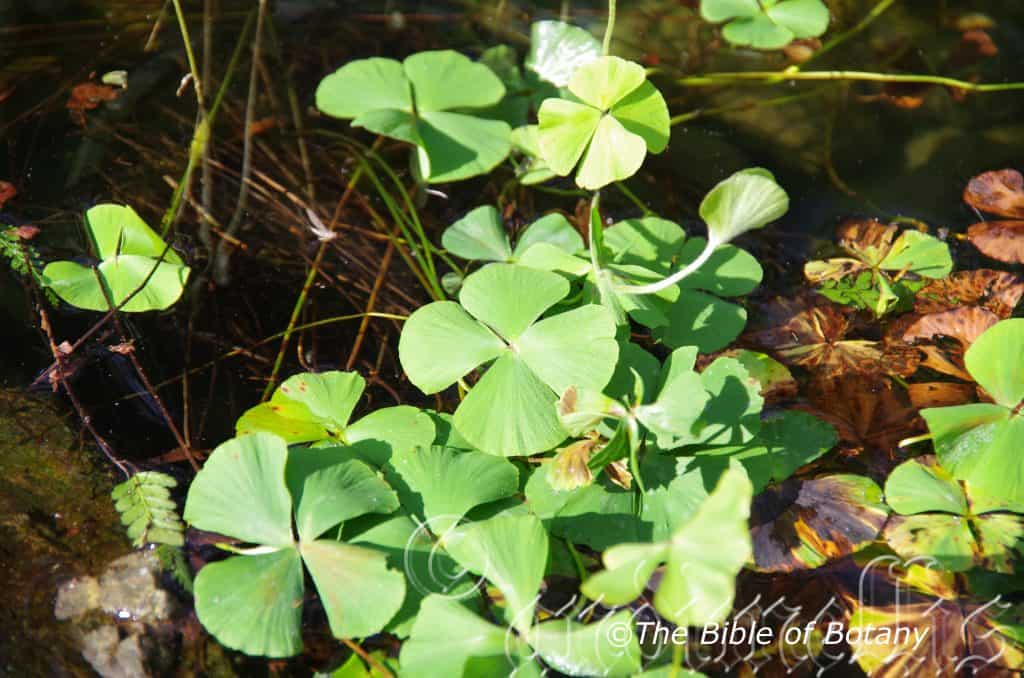
Mount Cootha Botanic Gardens Qld.
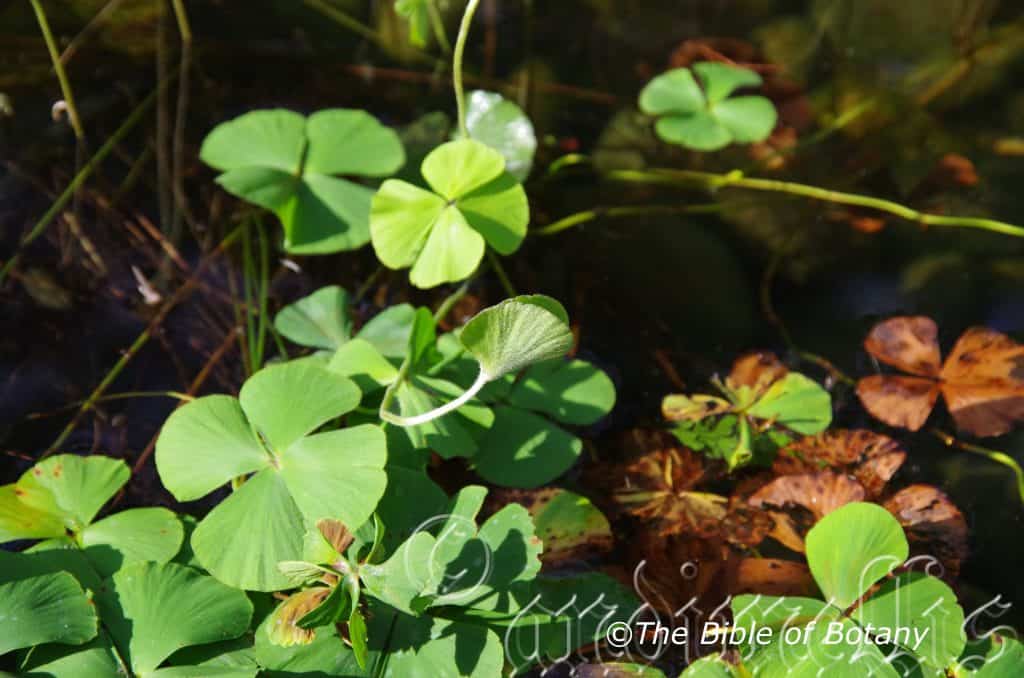
Mount Cootha Botanic Gardens Qld.
Marsilea drummondii
Classification:
Division: Pteridiophyta
Class: Pteridopsida
Order: Salviniales
Family: Marsileaceae
Genus: Is named in honour of Count Luigi Ferdinando de Marsigli; 1658-1730 who was an Italian naturalist.
Specie: Is probably named in honour of Thomas Drummond; 1780-1835, who was a Scottish botanist and curator of the Belfast Botanic Gardens.
Sub species:
Common Name: Common Nardoo.
Distribution:
Marsilea drummondii is a widespread fern scattered over most of the mainland west of the Great Dividing Range.
https://avh.ala.org.au/occurrences/search?taxa=Marsilea+drummondii#tab_mapView
Habitat Aspect Climate:
Marsilea drummondii prefers dappled light to full sun. It grows in still water or slow flowing water adjacent to rivers, creeks and billabongs in low moist depressions. This is an unusual fern that grows in bogs or shallow water and long term ephemeral pools. The altitude ranges from 10 meters ASL to 800 meters ASL.
The temperatures range from minus 2 degrees in August to 44 degrees in January.
The rainfalls range from lows of 150mm to an average of 800mm. The rainfall is of little importance to its distribution provided shallow permanent water in waterholes or billabongs is maintained throughout the year.
Soil Requirements:
Marsilea drummondii prefers poorer quality soils derived from decomposed sandstones or laterites which have been deposited as alluviums around waterholes in central Australia. The soils pH. ranges from 4pH to 6.5pH. It does not tolerate waterlogged soils. Non saline soils to moderately saline soils are tolerated.
Height & Spread:
Wild Plants: 100mm to 300m by 100mm to 600mm.
Characteristics:
Marsilea drummondii’s long creeping stoloniferous rhizome is covered in rusty-brown to rusty-orange hirsute hairs. The rhizomes are much branched and measure 1mm to 2mm in diameter.
Marsilea drummondii’s fronds are situated at the ends of long slender stipes. They measure 50mm to 300mm in length by 1mm to 2mm in diameter. The 3 to 10 fronds rise from the stolons in small clusters. The fronds have 4 equally broad ovate to broadly cuneate leaflets and measure 5mm to 30mm in length by 5mm to 28mm in width near the apex. The bases taper to the stipe while the apexes are obtuse with several emarginated notches or a single deeper notch. There is a yellow gland near the base of each of the fronds.
The discolourous laminas are bright lime-green to grass-green, semi glossy, glabrous or very covered in rusty-orange hirsute hairs on the fronds that are floating. The submerged fronds are covered in long rusty-orange hirsute hairs. The margins are entire. The lower lamina and stipes are densely covered in rusty brown hirsute hairs. The upper lamina is mainly glabrous especially on the floating fronds.
The fertile frond’s sporocarps are born singularly on 10mm to 100mm stipes. It is flat, elliptical to oblong, capsule like and measure 5mm to 8mm in length by 4mm to 8mm in width. The base is rounded while the apex is obtuse. It is slightly to strongly ribbed. There are 2 dissimilar lobes near the base with the lower one being longer than the upper lobe. The sporocarps appear all year.
Wildlife:
Marsilea drummondii is unknown to the author. Aborigines use to harvest the sporocarps and pound them into high quality protein flour.
Cultivation:
Marsilea drummondii is one of Australia’s more unusual ferns in that the fronds look more like a 4 leaf clover floating on the surface of the water. It is suitable for small to large ponds where the water doesn’t exceed 300mm or adjacent to bog gardens in small depressions between many of the carnivorous plants. They offer security to many small vertebrates and fish from the elements and predators.
It is a non-invasive small plants, which does well in shallow fish and frog ponds where the water doesn’t freeze over in winter.
Propagation:
Seeds: Marsilea drummondii spores can be sown directly onto a seed raising mix. Only fresh spore should be used. Do not cover the seeds with mix. Place the tray in a warm bright position into a larger container with water and keep the outer container topped up. Cover the inner tray with a sheet of glass or plastic to prevent weed infestation. When the seedlings are 10mm to 20mm tall, prick them out and plant them into 20mm native tubes using a good organic mix. Place the tubes into a container of water where the water has a depth of 40mm to 50mm above the tube rims. They will develop into small plants with floating fronds. Once a few floating fronds have developed from each tube transfer a number of them into larger containers for the pond or plant them directly into their permanent positions.
Fertilize use must take into consideration of the health of the fish and frogs as well as the ferns and must be done very sparingly if at all.
Further Comments from Readers:
Hi reader, it seems you use The Bible of Botany a lot. That’s great as we have great pleasure in bringing it to you! It’s a little awkward for us to ask, but our first aim is to purchase land approximately 1,600 hectares to link several parcels of N.P. into one at The Pinnacles NSW Australia, but we need your help. We’re not salespeople. We’re amateur botanists who have dedicated over 30 years to saving the environment in a practical way. We depend on donations to reach our goal. If you donate just $5, the price of your coffee this Sunday, We can help to keep the planet alive in a real way and continue to bring you regular updates and features on Australian plants all in one Botanical Bible. Any support is greatly appreciated. Thank you.
In the spirit of reconciliation we acknowledge the Bundjalung, Gumbaynggirr and Yaegl and all aboriginal nations throughout Australia and their connections to land, sea and community. We pay our respect to their Elders past, present and future for the pleasures we have gained.

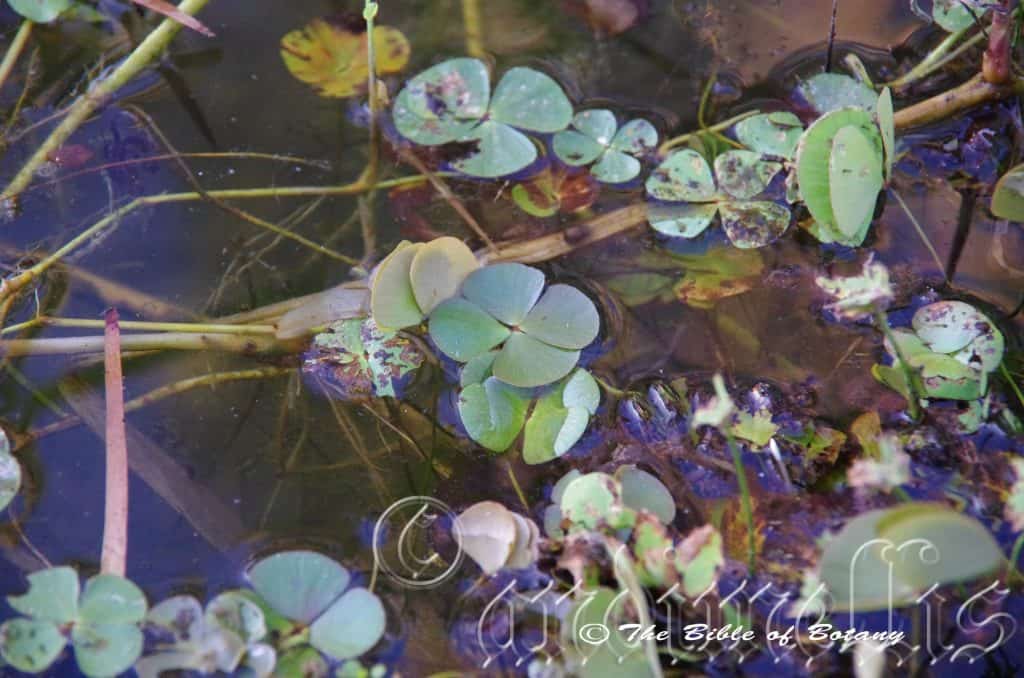
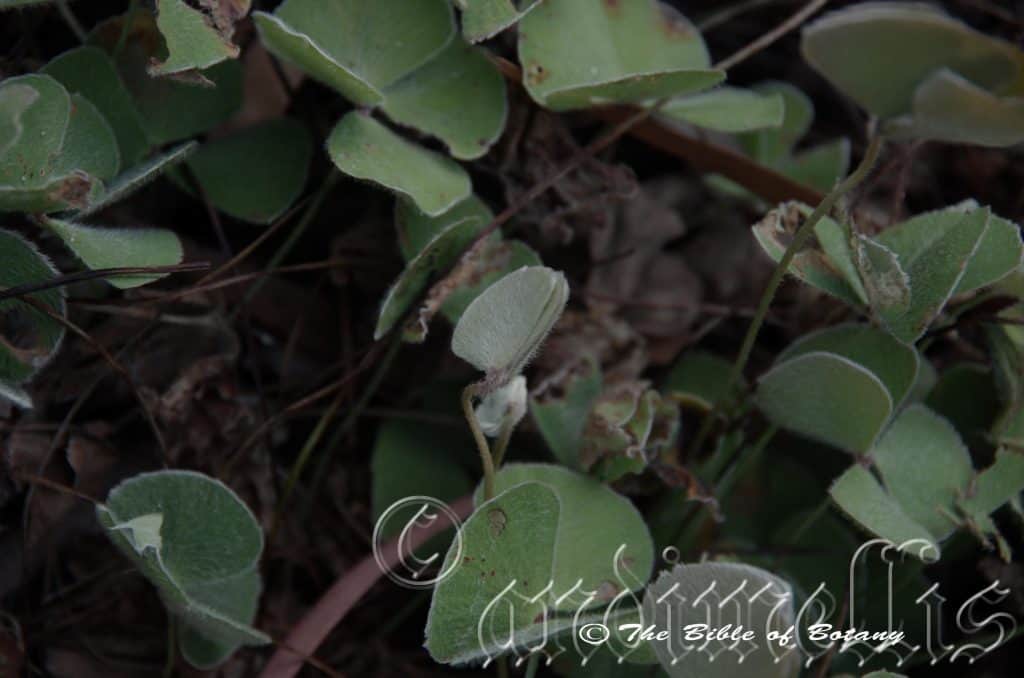
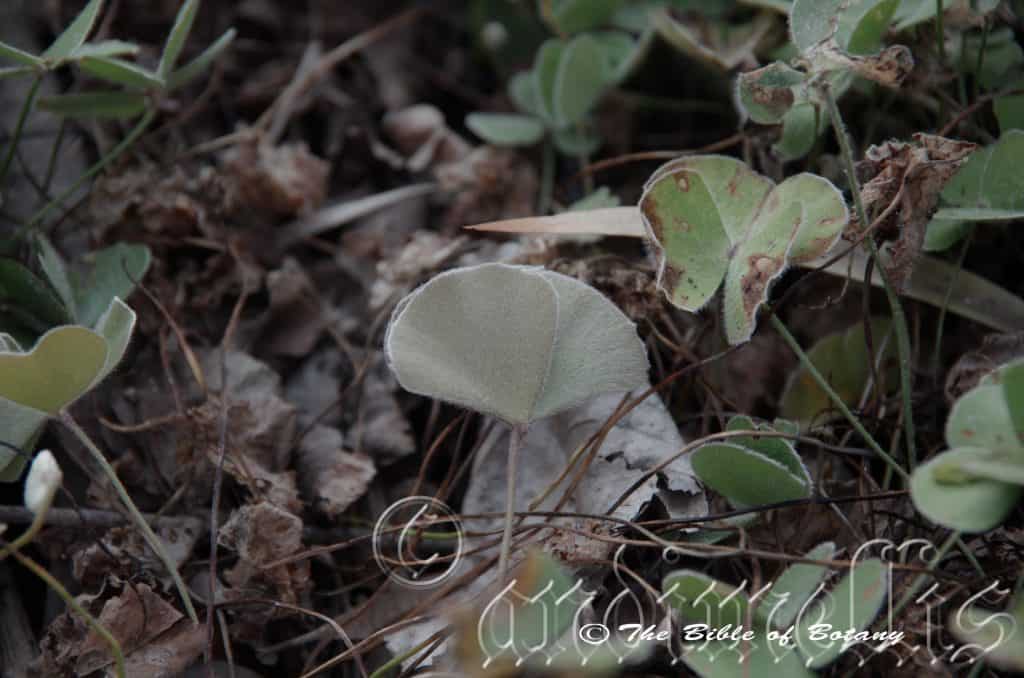
Marsilea hirsuta
Classification:
Division: Pteridiophyta
Class: Pteridopsida
Order: Salviniales
Family: Marsileaceae
Genus: Is named in honour of Count Luigi Ferdinando de Marsigli; 1658-1730 who was an Italian naturalist.
Specie: From Hirsutus, which is Latin for a hairy and shaggy. It refers to plants which have long, shaggy often rough hairs.
Sub species:
Common Name: Nardoo.
Distribution:
Marsilea hirsuta is the most widespread of the Marsilea ferns in Australia being found wherever there is permanent still or slow moving fresh water.
https://avh.ala.org.au/occurrences/search?taxa=Marsilea+hirsuta#tab_mapView
Habitat Aspect Climate:
Marsilea hirsuta prefers dappled light to full sun. It grows in still water or slow flowing water adjacent rivers, creeks, billabongs in low moist depressions or back waters on creeks and streams. This is an unusual fern that grows in bogs or shallow water and long term ephemeral pools. The altitude ranges from 10 meters ASL to 900 meters ASL.
The temperatures range from minus 2 degrees in August to 44 degrees in January.
The rainfalls range from lows of 150mm to an average of 800mm. The rainfall is of little importance to its distribution, as the fronds float on the surface of shallow permanent water in waterholes and billabongs.
Soil Requirements:
Marsilea hirsuta prefers poorer quality soils derived from decomposed sandstone or laterites which have been deposited as alluviums around waterholes in central Australia. The soils pH. ranges from 5pH to 7pH. It does not tolerate waterlogged soils. Non saline soils to moderately saline soils are tolerated.
Height & Spread:
Wild Plants: 100mm to 300m by 100mm to 600mm.
Characteristics:
Marsilea hirsuta’s long creeping stoloniferous rhizome is covered in pale brown hirsute hairs near the apexes.
Marsilea hirsuta’s fronds arise singularly along the rhizomes. The stipes measure 20mm to 180mm in length by 1mm to 2mm in diameter. The fronds have 4 equally lobes and measure 5mm to 20mm in length by 5mm to 13mm in width near the apex. The bases taper to the stipe while the apexes are obtuse, entire or irregularly crenate. It is sparsely to densely covered in fine, white, water repellent sericeous hairs or at times are glabrous.
The discolourous laminas of the floating fronds are bright lime-green to grass-green, semi glossy and glabrous. The submerged fronds are covered in long rusty-brown hirsute hairs. The lower lamina and stipes are densely covered in rusty brown hirsute hairs.
The fertile frond’s sporocarps are born singularly on 4mm to 15mm stipes. It is ellipsoidal to obloidal, capsule like and measure 4mm to 8mm in length by 3mm to 6mm in width. The sporocarps appear throughout the year under favourable conditions or during the wet season in marginal areas.
Wildlife:
Marsilea hirsuta is unknown to the author. Aborigines use to harvest the sporocarps and pound them into high quality protein flour.
Cultivation:
Marsilea hirsuta is one of Australia’s more unusual ferns in that the fronds look more like a 4 leaf clover floating on the surface of the water. It is suitable for small to large ponds where the water doesn’t exceed 300mm or adjacent to bog gardens in small depressions between many of the carnivorous plants. They offer security to many small vertebrates and fish from the elements and predators.
It is a non-invasive small plants, which does well in shallow fish and frog ponds where the water doesn’t freeze over in winter.
Propagation:
Seeds: Marsilea hirsuta spores can be sown directly onto a seed raising mix. Only fresh spore should be used. Do not cover the seeds with mix. Place the tray in a warm bright position into a larger container with water and keep the outer container topped up. Cover the inner tray with a sheet of glass or plastic to prevent weed infestation. When the seedlings are 10mm to 20mm tall, prick them out and plant them into 20mm native tubes using a good organic mix. Place the tubes into a container of water where the water has a depth of 40mm to 50mm above the tube rims. They will develop into small plants with floating fronds. Once a few floating fronds have developed from each tube transfer a number of them into larger containers for the pond or plant them directly into their permanent positions.
Fertilize use must take into consideration of the health of the fish and frogs as well as the ferns and must be done very sparingly if at all.
Further Comments from Readers:
Hi reader, it seems you use The Bible of Botany a lot. That’s great as we have great pleasure in bringing it to you! It’s a little awkward for us to ask, but our first aim is to purchase land approximately 1,600 hectares to link several parcels of N.P. into one at The Pinnacles NSW Australia, but we need your help. We’re not salespeople. We’re amateur botanists who have dedicated over 30 years to saving the environment in a practical way. We depend on donations to reach our goal. If you donate just $5, the price of your coffee this Sunday, We can help to keep the planet alive in a real way and continue to bring you regular updates and features on Australian plants all in one Botanical Bible. Any support is greatly appreciated. Thank you.
In the spirit of reconciliation we acknowledge the Bundjalung, Gumbaynggirr and Yaegl and all aboriginal nations throughout Australia and their connections to land, sea and community. We pay our respect to their Elders past, present and future for the pleasures we have gained.
Marsilea mutica
Classification:
Division: Pteridiophyta
Class: Pteridopsida
Order: Salviniales
Family: Marsileaceae
Genus: Is named in honour of Count Luigi Ferdinando de Marsigli; 1658-1730 who was an Italian naturalist.
Specie: From Mutica, which is Latin for blunt. It refers to structures or organs, which have an obtuse or thick round apex or edge that offers no apparent defence.
Sub species:
Common Name: Nardoo.
Distribution:
Marsilea mutica is a widespread fern which is found in all mainland states but only along the Murray River in South Australia.
https://avh.ala.org.au/occurrences/search?taxa=Marsilea+mutica#tab_mapView
Habitat:
Marsilea mutica prefers dappled light to full sun. It grows in still water or slow flowing water adjacent rivers, creeks and billabongs in low moist depressions. This is an unusual fern that grows in bogs or shallow water and long term ephemeral pools. The altitude ranges from 10 meters ASL to 800 meters ASL.
The temperatures range from minus 2 degrees in August to 44 degrees in January.
The rainfalls range from lows of 150mm to an average of 800mm. The rainfall is of little importance to its distribution, as the fronds float on the surface of shallow permanent water in waterholes and billabongs.
Soil Requirements:
Marsilea mutica prefers growing on poorer quality soils derived from decomposed sandstone and laterites which have been deposited as alluviums around waterholes in central Australia. The soils pH. ranges from 4pH to 6.5pH. It does not tolerate waterlogged soils. Non saline soils to moderately saline soils are tolerated.
Height & Spread:
Wild Plants: 100mm to 300m by 100mm to 600mm.
Characteristics:
Marsilea mutica’s long creeping stoloniferous rhizome is much branched and glabrous. The rhizomes are much branched and measure 1mm to 2mm in diameter.
Marsilea mutica’s fronds are situated at the ends of long slender stipes. The stipes usually measure 50mm to 300mm in length but can reach 500mm during the wet season under favourable conditions. The stipes measure 1mm to 2mm in diameter. The single 4 lobed fronds rise singularly from the rhizomes. The fronds lobes measure 5mm to 50mm in length by 20mm to 40mm in width near the apex, in submerged fronds and 5mm to 22mm in the floating fronds. The bases taper to the stipe while the apexes are obtuse with several emarginated notches or a single deep notch. The base is broadly cuneate while the apex is broadly round with or without a mucronate notch. There is a yellow gland near the base of each of the fronds.
The discolourous laminas are 2 different greens separated by a brown band and glabrous except for a few brown hirsute hairs at the base on the upper laminas while the lower laminas are paler with the same banding. The submerged fronds are covered in long brown hirsute hairs.
The fertile frond’s sporocarps are born singularly or up to 4 on branched 10mm to 20mm stipes. The sporocarps are globose and are entire around the opening. They measure 4mm to 7mm in length by 3mm to 6mm in diameter. The sporocarps appear throughout the year under favourable conditions or during the wet season in marginal areas.
Wildlife:
Marsilea mutica is unknown to the author. Aborigines use to harvest the sporocarps and pound them into high quality protein flour.
Cultivation:
Marsilea mutica is one of Australia’s more unusual ferns in that the fronds look more like a 4 leaf clover floating on the surface of the water. It is suitable for small to large ponds where the water doesn’t exceed 300mm or adjacent to bog gardens in small depressions between many of the carnivorous plants. They offer security to many small vertebrates and fish from the elements and predators.
It is a non-invasive small plants, which does well in shallow fish and frog ponds where the water doesn’t freeze over in winter.
Propagation:
Seeds: Marsilea mutica spores can be sown directly onto a seed raising mix. Only fresh spore should be used. Do not cover the spore with mix. Place the tray in a warm bright position into a larger container with water and keep the outer container topped up. Cover the inner tray with a sheet of glass or plastic to prevent weed infestation. When the seedlings are 10mm to 20mm tall, prick them out and plant them into 20mm native tubes using a good organic mix. Place the tubes into a container of water where the water has a depth of 40mm to 50mm above the tube rims. They will develop into small plants with floating fronds. Once a few floating fronds have developed from each tube transfer a number of them into larger containers for the pond or plant them directly into their permanent positions.
Fertilize use must take into consideration of the health of the fish and frogs as well as the ferns and must be done very sparingly if at all.
Further Comments from Readers:
Hi reader, it seems you use The Bible of Botany a lot. That’s great as we have great pleasure in bringing it to you! It’s a little awkward for us to ask, but our first aim is to purchase land approximately 1,600 hectares to link several parcels of N.P. into one at The Pinnacles NSW Australia, but we need your help. We’re not salespeople. We’re amateur botanists who have dedicated over 30 years to saving the environment in a practical way. We depend on donations to reach our goal. If you donate just $5, the price of your coffee this Sunday, We can help to keep the planet alive in a real way and continue to bring you regular updates and features on Australian plants all in one Botanical Bible. Any support is greatly appreciated. Thank you.
In the spirit of reconciliation we acknowledge the Bundjalung, Gumbaynggirr and Yaegl and all aboriginal nations throughout Australia and their connections to land, sea and community. We pay our respect to their Elders past, present and future for the pleasures we have gained.
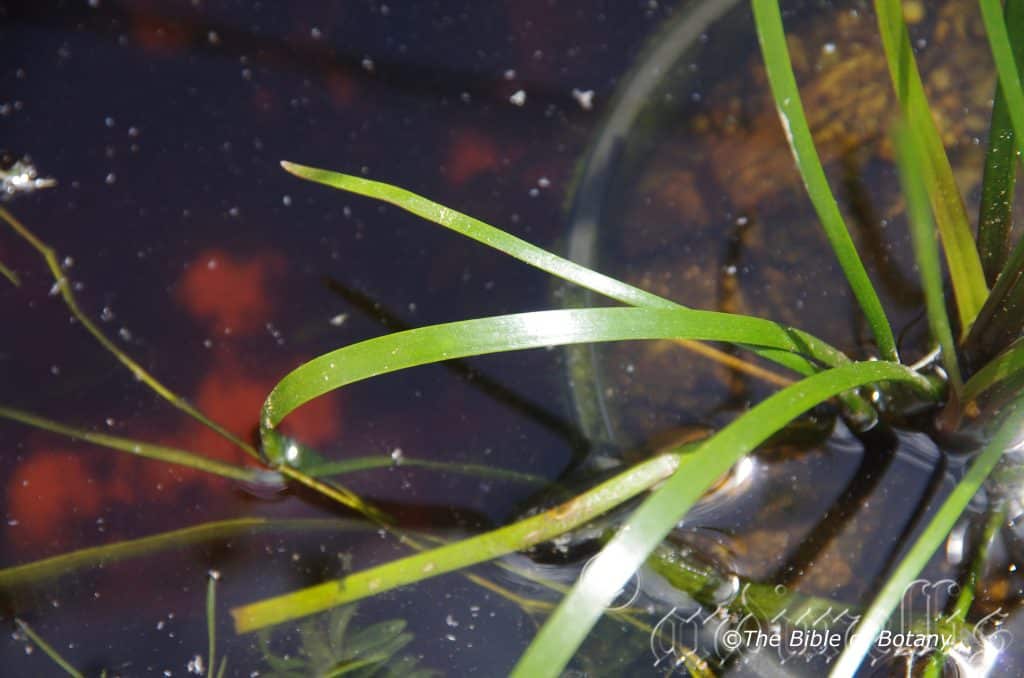
Author’s Garden The Pinnacles NSW
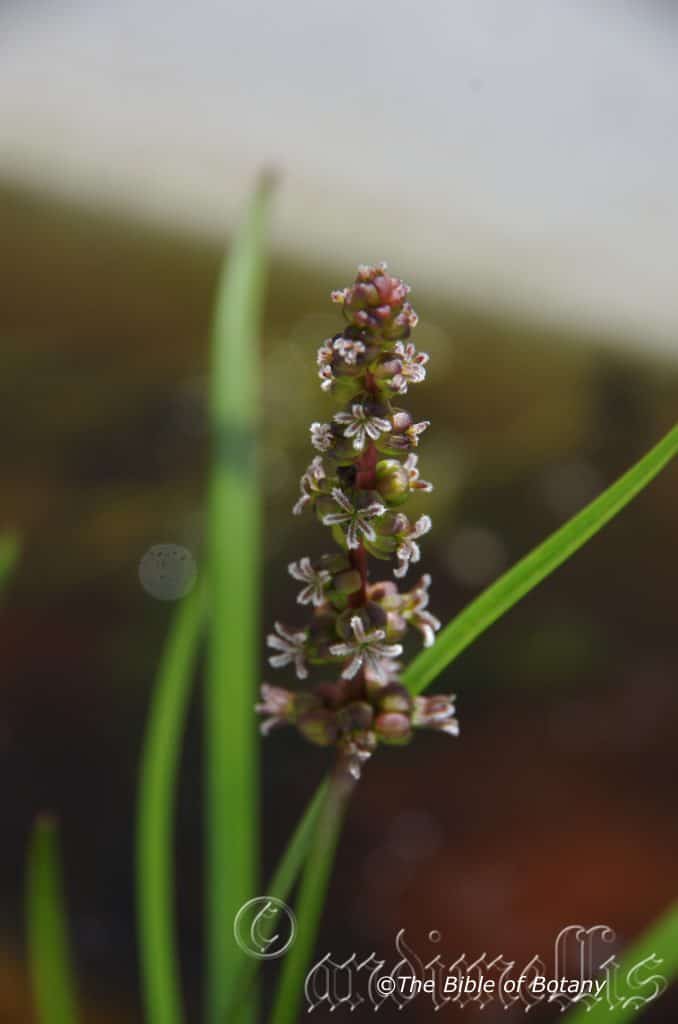
Author’s Garden The Pinnacles NSW
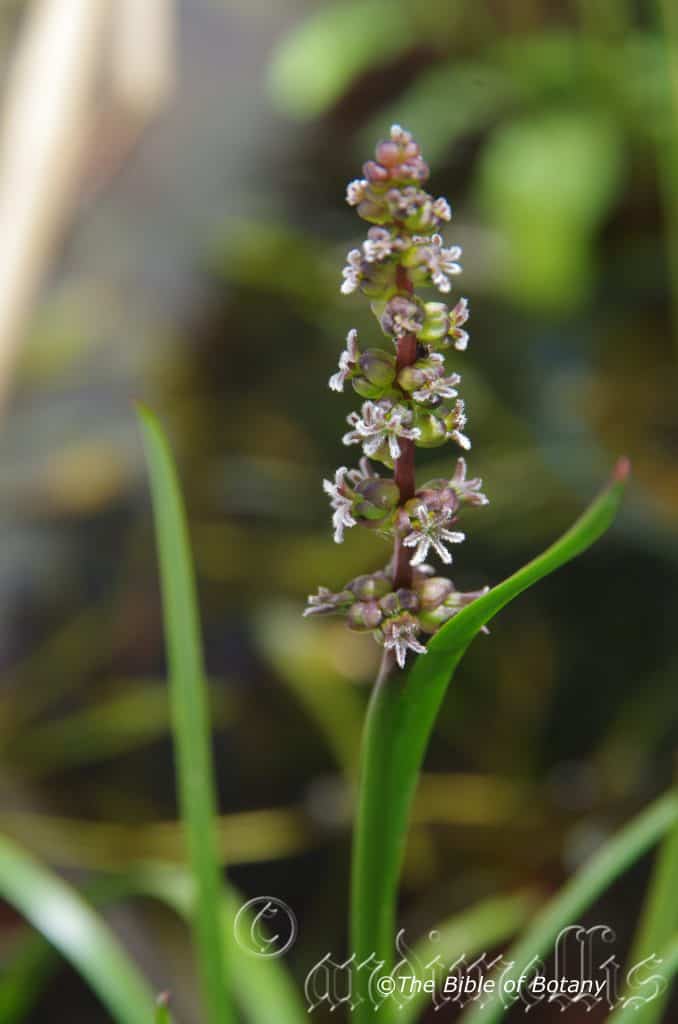
Author’s Garden The Pinnacles NSW
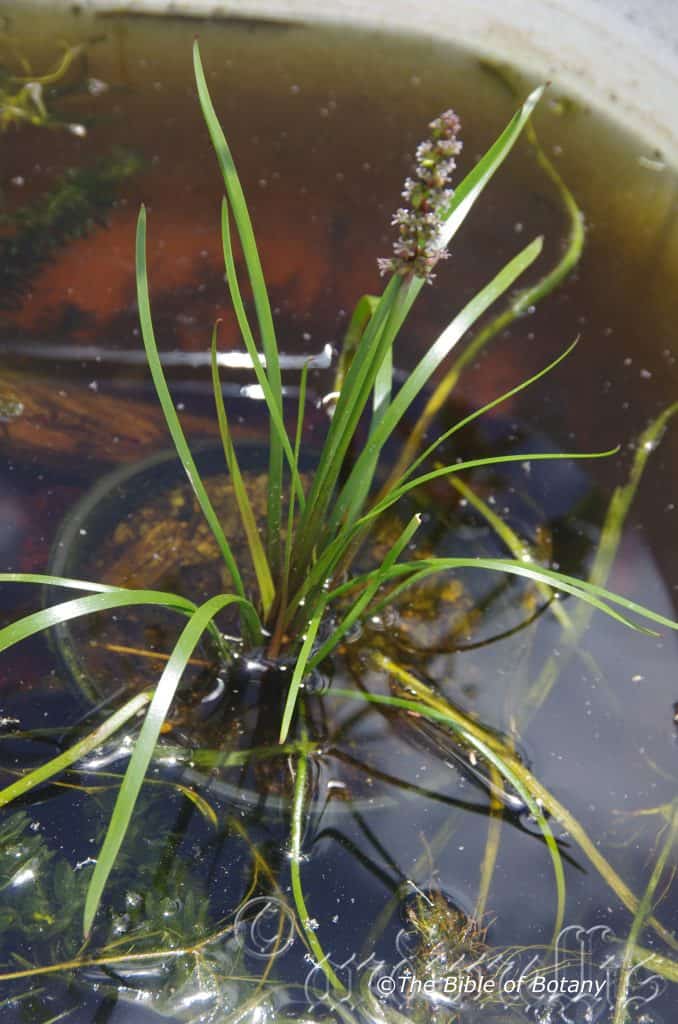
Author’s Garden The Pinnacles NSW
Maundia triglochinoides
Classification:
Division: Charophyta
Class: Equisetopsida
Subclass: Magnoliidae
Superorder: Lilianae
Order: Alsimatales
Family: Maundiaceae
Genus: Is named in honour of Dr. John Maund; 1790-1864 who was an English bookseller and author of botanical and gardening books.
Specie: From Treîs/Tría, which are Ancient Greek or Tri, which is Latin for three, Glochis, which is Ancient Greek for pointed and Eîdos, which is Ancient Greek for alike or similar to. It refers to sepals, which reveal three distinct points prior to the buds blooming.
Sub species:
Common Name:
Distribution:
Maundia triglochinoides is found south from Woodford near Killkivin in south eastern Queensland to Kogarah Swamp in central coastal New South Wales.
https://avh.ala.org.au/occurrences/search?taxa=Maundia+triglochinoides#tab_mapView
Habitat Aspect Climate:
Maundia triglochinoides prefers dappled light to full sun. It grows in shallow still water adjacent to rivers, creeks, billabongs, in low moist depressions or ephemeral pools. The altitude ranges from 7 meters ASL to 131 meters ASL.
The temperatures range from minus 2 degrees in August to 38 degrees in January.
The rainfalls range from lows of 900mm to an average of 2100mm.
Soil Requirements:
Maundia triglochinoides prefers better quality medium clays to heavy clays or light muddy silts to heavy muddy silts. The soils are usually derived from fine alluvial deposits. The soils pH. ranges from 4pH to 6.5pH. It tolerates waterlogged soils. Non saline soils to moderately saline soils are tolerated.
Height & Spread:
Wild Plants: 100mm to 800m by 100mm to 200mm.
Characteristics:
Maundia triglochinoides grows as a perennial with long fleshy white creeping rhizomes which measure 3mm to 5mm in diameter.
The linear leaves emerge in small compact tufts from the water surface and are triangular in cross section. The leaves measure 300mm to 800mm in length by 5mm to 10mm in width. The bases are clasping while the apexes are obtuse-acute. The concolourous laminas are bright lime-green to grass-green, semi glossy and glabrous. The laminas are flat while the margins are entire. The lower lamina and stipes are densely covered in rusty brown hirsute hairs. The upper lamina is mainly glabrous especially on the floating fronds.
The inflorescense is a short raceme born from the base of the leaf cluster. The grass-green peduncles measure 100mm to 200mm in length while the spikes measure in length 20mm to 60mm in length by 15mm to 18mm in diameter. The anthers are white. The flowers appear throughout the year.
The fruits are non fleshy aggregates follicles that have 4 or 6 achenes, or follicles. The fruiting carpels are dehiscen or indehiscent when a follicle.
Wildlife:
Maundia triglochinoides’s wildlife is unknown to the author.
Cultivation:
Maundia triglochinoides is one of Australia’s more unusual ancient rushes. It is suitable for shallow water features in full sun. In cultivation it will grow from 0.5 meters to 0.6 meters by 0.1 meters in diameter.
It is a non-invasive small plants, which does well in shallow fish and frog ponds where the water doesn’t freeze over in winter.
Propagation:
Seeds: The seeds can be sown directly onto a seed raising mix. Only fresh spore should be used. Do not cover the seeds with mix. Place the tray in a warm bright position into a larger container with water and keep the outer container topped up. Cover the inner tray with a sheet of glass or plastic to prevent weed infestation. When the seedlings are 10mm to 20mm tall, prick them out and plant them into 20mm native tubes using a good organic mix. Place the tubes into a container of water where the water has a depth of 40mm to 50mm above the tube rims. They will develop into small plants with floating fronds. Once a few floating fronds have developed from each tube transfer a number of them into larger containers for the pond or plant them directly into their permanent positions.
Fertilize use must take into consideration of the health of the fish and frogs as well as the ferns and must be done very sparingly if at all.
Further Comments from Readers:
Hi reader, it seems you use The Bible of Botany a lot. That’s great as we have great pleasure in bringing it to you! It’s a little awkward for us to ask, but our first aim is to purchase land approximately 1,600 hectares to link several parcels of N.P. into one at The Pinnacles NSW Australia, but we need your help. We’re not salespeople. We’re amateur botanists who have dedicated over 30 years to saving the environment in a practical way. We depend on donations to reach our goal. If you donate just $5, the price of your coffee this Sunday, We can help to keep the planet alive in a real way and continue to bring you regular updates and features on Australian plants all in one Botanical Bible. Any support is greatly appreciated. Thank you.
In the spirit of reconciliation we acknowledge the Bundjalung, Gumbaynggirr and Yaegl and all aboriginal nations throughout Australia and their connections to land, sea and community. We pay our respect to their Elders past, present and future for the pleasures we have gained.
Maytenus bilocularis
Classification:
Division:
Unranked: Eudicots
Order: Celastrales
Family: Celastraceae
Subfamily: Celastriodeae
Genus: From Mayten, which is Latinized from the Spanish Chilean word for the tree found in Chile.
Specie: From Bi/Bis, which is Greek/Latin for two and Loculus, which is Latin for an apartment. It refers to a fruit having two locules or compartments.
Sub species:
Common Name: Orange Bark.
Distribution:
Maytenus bilocularis is found in several disjunct populations south from the Daintree National Park in far north Queensland to near Kempsey on the north coast of New South Wales. I have seen several reports/photos of the plant existing on Cape York Peninsula but have no conclusive evidence that I consider reliable.
https://avh.ala.org.au/occurrences/search?taxa=Maytenus+bilocularis#tab_mapView
Habitat Aspect Climate:
Maytenus bilocularis prefers dappled light to full sun. It grows adjacent to moist rain forests in dry rainforests, moist Eucalyptus forests or gallery forests. The altitude ranges from 30 meters ASL to 850 meters ASL.
The temperatures range from minus 3 degrees in August to 37 degrees in January.
The rainfalls range from lows of 500mm to an average of 2500mm.
Soil Requirements:
Maytenus bilocularis prefers average quality soils sandy loams to medium clays where leaf litter accumulates. The soils are derived from decomposed sandstone, laterites, shale, brown basalts or black basalts. The soils pH. ranges from 6pH to 7pH. It does not tolerate waterlogged soils. Non saline soils to moderately saline soils are tolerated.
Height & Spread:
Wild Plants: 8m to 10m by 3m to 4.5m.
Characteristics:
Maytenus bilocularis’s trunk is pale creamy brown, pale creamy grey or a pale rusty-brown. The branchlets are similar to the trunks colouration but lack the markings caused by lichens and mosses.
Maytenus bilocularis’ alternate slightly asymmetrical leaves are oblong to ovate or obovate and measure 30mm to 100mm in length by 15mm to 35mm in width. It is very variable even on the same plant. The base is cuneata to attenuate while the apex is acuminate to broadly acuminate. The discolourous laminas are deep sea-green semi glossy and glabrous on the upper lamina while the lower lamina is much paler. Immature leaves are pale lime green to pale lime-green with a rusty-brown tinge and glossy. The margins are unevenly armed with rigid spinose teeth which become more crenate near the base. The mid vein is prominent below and distinctly visible from above. The petiole measures 2mm to 5mm in length while.
The inflorescence of Maytenus bilocularis is a short raceme born from the leaf axils. They measure 12mm to 20mm in length by 12mm to 20mm in diameter. The pedicels measures 2mm to 2.5mm in length The 4 or 5 semi-elliptical sepals are cream to pale creamy-green and measure 0.2mm to 0.5mm in length. The 4 or 5 semi-elliptical petals are cream to pale green and measure 1.5mm to 2mm in length by 1.5mm to 2mm in width. The short, stout style measures 2mm to 2.5mm in length and is lime green while the 4 or 5 white stamens measure 1.5 to 2mm in length. The anthers are white. The flowers appear from September to December.
Maytenus bilocularis’s fruit is a small, globose to obovoid glabrous capsule. The capsules measure 5mm to 8mm in length by 4mm to 6.5mm in diameter. The 2 valved, coriaceous capsules are bright yellow to bright orange-yellow. The single or more often 2 black seeds measure 2.5mm to 4mm in length by 2mm to 3.5mm in diameter and are surrounded by a bright orange-yellow to bright yellow aril. The capsules ripen from late March to early August.
Wildlife:
Maytenus bilocularis wildlife is unknown to the author.
Cultivation:
Maytenus bilocularis makes an excellent medium size tree for a park like scene or specimen tree in the garden. It always look green and fresh especially where adequate ground moisture is retained whether it is grown in light shade or full sun. It is very suitable on sandy clay soils to medium clays. It is most suitable for small gardens close to the coast in warm temperate, sub tropical, tropical or even semi-arid gardens. As garden subjects it grows from 5 meters to 7 meters by 3 meters to 5 meters wide when grown in the open. It is cold tolerant to temperatures at least as low as minus 3 degrees once established. It is however very slow growing and even with a good fertilizing program and moisture will grow less than 1 meter a year.
It also look good adjacent to small areas of bush close to paths or the house so their beautiful glossy foliage can be admired frequently. When planted in small groups of 2 or 3 it creates dense shade for other shade loving plants.
It can be used as shade trees in semi protected areas. It is an excellent tree for an addition a dry rainforest garden. When planting the trees in a rainforest try to place them near the edge so the proliferation of flowers and colourful fruits can be fully enjoyed and their natural bushy shape is not interfered with.
It is useful as a backdrop small tree contrasting with smaller finer leaf shrubs that are planted in the foreground. This gives the impression that it likes being the center of attention which they deserve.
The prickly leaf forms make excellent hedge rows if kept trimmed or a tall dense boundary line can be made. Try using them in an informal manner in front of buildings to break up hard lines and to soften structures. This can be done by planting both shrubs and trees together in unequal free flowing curves using height and depth.
It makes an ideal plants for Bonsai collectors as I have seen some very twisted gnarled specimens on rock ledges in pyriformis wild flower reserve.
The leaves can be used in floral arrangements but take note that growth is very slow and recovery is just as slow.
Propagation:
Seeds: Maytenus bilocularis seeds can be sown directly into a seed raising mix. Cover the seeds with 2mm to 3mm of fine weed free mulch and keep moist. Place the tray in a warm sunny position. When the seedlings are 30mm to 50mm tall, prick them out and plant them into 50mm native tubes using a good organic mix.
Once the seedlings reach 150mm to 200mm in height they can be planted out into their permanent position.
Fertilize using seaweed, fish emulsion or organic chicken pellets soaked in water on an alternate basis. Fertilize every two months until the plants are established then twice annually in early September or March to maintain health, vitality and better flowering.
Further Comments from Readers:
Hi reader, it seems you use The Bible of Botany a lot. That’s great as we have great pleasure in bringing it to you! It’s a little awkward for us to ask, but our first aim is to purchase land approximately 1,600 hectares to link several parcels of N.P. into one at The Pinnacles NSW Australia, but we need your help. We’re not salespeople. We’re amateur botanists who have dedicated over 30 years to saving the environment in a practical way. We depend on donations to reach our goal. If you donate just $5, the price of your coffee this Sunday, We can help to keep the planet alive in a real way and continue to bring you regular updates and features on Australian plants all in one Botanical Bible. Any support is greatly appreciated. Thank you.
In the spirit of reconciliation we acknowledge the Bundjalung, Gumbaynggirr and Yaegl and all aboriginal nations throughout Australia and their connections to land, sea and community. We pay our respect to their Elders past, present and future for the pleasures we have gained.
Maytenus sylvestris
Classification:
Unranked: Eudicots
Order: Celastrales
Family: Celastraceae
Subfamily: Celastroideae
Genus: From Mayten, which is Latinized from the Spanish, Chilean word for the tree found in Chile.
Specie: From Sylvāticum, which is Latin for a forest. It refers to growing in, on or beneath trees in a forest.
Sub species:
Common Name: Narrow Leafed Orange Bark.
Distribution:
Maytenus sylvestris is found south from Bauple in southern Queensland to Picton on the south coast of New South Wales.
https://avh.ala.org.au/occurrences/search?taxa=Maytenus+sylvestris#tab_mapView
Habitat Aspect Climate:
Maytenus sylvestris prefers dappled light to full sun. It grows adjacent to moist rain forests, in dry rainforests or moist Eucalyptus forests. The altitude ranges from 30 meters ASL to 950 meters ASL.
The temperatures range from minus 4 degrees in August to 38 degrees in January.
The rainfalls range from lows of 500mm to an average of 1850mm.
Soil Requirements:
Maytenus sylvestris prefers average quality sandy loams to medium clays where leaf litter accumulates. The soils are derived from decomposed sandstone, laterites, shale, brown basalts or black basalts. The soils pH. ranges from 6pH to 7pH. It does not tolerate waterlogged soils. Non saline soils to moderately saline soils are tolerated.
Height & Spread:
Wild Plants: 2.5m to 5m by 2.5m to 3m.
Characteristics:
Maytenus sylvestris trunk is pale creamy brown, pale creamy grey or a pale creamy fawn and glabrous. The branches are pale grey-brown and covered in white lenticels. The branchlets are lime green, while the new shoots are square with 3mm to 3.5mm brown linear stipules.
Maytenus sylvestris has alternate leaves are narrow elliptical to lanceolate or oblanceolate and measure 15mm to 80mm in length by 3mm to 15mm in width. The base is attenuate while the apex is narrow acute, narrow acuminate or narrow mucronate. The concolourous laminas are lime green to grass-green semi glossy and glabrous. Immature leaves and new growth are rusty-brown and glossy. The margins are entire or more often have a sparse row of fine teeth. The mid vein is slightly prominent on both laminas. The petiole measures 1mm to 2mm in length while.
The inflorescence of Maytenus sylvestris is a short raceme, clustered or singularly born from the leaf axils or from the old stipules on the branchlets. They measure 6mm to 7mm in diameter. The pedicels measure 5mm to 10mm long. The 5 semi-elliptical sepals are cream to pale green and measure 1mm to 1.2mm in length by 2mm in width. The 5 oblong petals are cream to pale green and measure 1.6mm to 2mm in length by 1.5mm in width. The short, stout pyramidal lime green style measures 1mm while the stigma divides into 2 flat oblong or broad acuminate lobes. The 5 white stamens are opposite the petals and measure 2mm to 2.2mm in length while the anthers are also white. The flowers appear from October to December.
Maytenus sylvestris’s fruit is a small, globose to obovoidal, glabrous capsule. The capsules measure 4mm to 8mm in length by 3.2mm to 6.5mm in diameter. The 2 valve, coriaceous capsules is bright orange-yellow. The 2 valve capsules contain 1 to 4 black seeds measure 1.5mm to 2mm in diameter and are surrounded by a bright orange–yellow aril. The style is persistent on the fruit. The capsules ripen from late March to early August.
Wildlife:
Maytenus sylvestris is the host tree for many small native orchids like the Tangle Root Orchid, Plectorrhiza tridentata.
Cultivation:
Maytenus sylvestris makes an excellent small narrow tree for a park like scene or specimen tree in the garden. It also makes a beautiful large shrub. They always look green and fresh especially where adequate ground moisture is retained whether it is grown in light shade or full sun. It is very suitable on sandy clay soils to medium clays and poor shale based soils and shale. It is most suitable for small gardens close to the coast in temperate, sub tropical, tropical or even semi-arid gardens. As garden subjects they will grow from 3 meters to 4 meters by 3 meters to 4 meters diameter when grown in the open. It is cold tolerant to temperatures at least as low as minus 5 degrees once established. It is however very slow growing and even with a good fertilizing program and moisture will grow less than 1 meter a year.
They can be used as shade trees in semi protected areas. It is an excellent tree for an addition a dry rainforest garden. When planting the trees in a rainforest try to place them near the edge so the proliferation of flowers can be fully enjoyed and their natural bushy shape is not interfered with.
It is useful as a backdrop small tree contrasting with smaller finer leaf shrubs that are planted in the foreground. This gives the impression that they like being the center of attention which they deserve.
Try using them in an informal or formal manner in front of buildings to break up hard lines and to soften structures. This can be done by planting both shrubs and trees together in unequal free flowing curves using height and depth. If taller trees are required then try using Maytenus bilocularis as the tree and Maytenus silvestris as the shrub. The foliages would also be of great interest and contrast being large and deep green against the finer lemon green and brown new growth.
They would make ideal plants for Bonsai collectors as I have seen some very twisted gnarled specimens on rock ledges and granite outcrops in the Guy Fawkes National Park.
Propagation:
Seeds: Maytenus sylvestris seeds can be sown directly into a seed raising mix. Cover the seeds with 2mm to 3mm of fine weed free mulch and keep moist. Place the tray in a warm sunny position. When the seedlings are 30mm to 50mm tall, prick them out and plant them into 50mm native tubes using a good organic mix.
Once the seedlings reach 150mm to 200mm in height they can be planted out into their permanent position.
Fertilize using seaweed, fish emulsion or organic chicken pellets soaked in water on an alternate basis. Fertilize every two months until the plants are established then twice annually in early September or March to maintain health, vitality and better flowering.
Further Comments from Readers:
Hi reader, it seems you use The Bible of Botany a lot. That’s great as we have great pleasure in bringing it to you! It’s a little awkward for us to ask, but our first aim is to purchase land approximately 1,600 hectares to link several parcels of N.P. into one at The Pinnacles NSW Australia, but we need your help. We’re not salespeople. We’re amateur botanists who have dedicated over 30 years to saving the environment in a practical way. We depend on donations to reach our goal. If you donate just $5, the price of your coffee this Sunday, We can help to keep the planet alive in a real way and continue to bring you regular updates and features on Australian plants all in one Botanical Bible. Any support is greatly appreciated. Thank you.
In the spirit of reconciliation we acknowledge the Bundjalung, Gumbaynggirr and Yaegl and all aboriginal nations throughout Australia and their connections to land, sea and community. We pay our respect to their Elders past, present and future for the pleasures we have gained
Mazus pumilio
Classification:
Unranked: Eudicots
Superorder: Asterids
Order: Lamiales
Family: Phrymaceae
Genus: From Mazos, which is Ancient Greek for a teat or small breast. It refers to structures within the corolla, which appear like small teats.
Specie: From Pumila, which is Latin for small or dwarf. It refers to leaves, flowers and growth habit of plants, which are very small.
Sub species:
Common Name: Swamp Mazus.
Distribution:
Mazus pumilio is found south from the Maroochy River in south eastern coastal Queensland to Lake Bonny on the southern coastal Naracoorte Plain in south eastern South Australia. It is mainly found on and east of the Great Dividing Range.
In Tasmania it is found on King Islands and the Flinders Island group as well as Swan Island. On the mainland it is found from Circular Head in the north east down the west coast to Rheuben Creek. It is also found in the north bounded by Railton to Great Lake in the Central Highlands to Fingal and Ransons Beach then east and south to Catarmaran in the south east corner of the state.
https://avh.ala.org.au/occurrences/search?taxa=Mazus+pumilio#tab_mapView
Habitat Aspect Climate:
Mazus pumilio prefers dappled light to full sun. It grows adjacent to moist rain forests, in dry rainforests or moist Eucalyptus forests. The altitude ranges from 30 meters ASL to 950 meters ASL.
The temperatures range from minus 4 degrees in August to 38 degrees in January.
The rainfalls range from lows of 1mm to an average of 1350mm.
Soil Requirements:
Mazus pumilio prefers to grow on average quality sands, sandy loams or light silty clays. The soils are derived from decomposed granites, old alluvial or old accumulated sands away from the beaches. The soils pH. ranges from 5pH to 6.5pH. It tolerates waterlogged soils and seasonal high water tables. Non saline soils to moderately saline soils are tolerated.
Height & Spread:
Wild Plants: 0.04m to 0.08m by 0.1m to 0.15m to several square meters.
Characteristics:
Mazus pumilio is a low growing perennial herb that forms rosettes connected by rhizomes just below the surface or below a mulch layer.
The rosette leaves are obovate to spathulate and measure 8mm to 55mm in length by 3mm to 18mm in width. The bases are attenuate while the apexes are broad acute. The discolourous soft, laminas are grass-green to deep green often tinged red or maroon, dull and glabrous or sparsely to densely covered in white pulverulent hairs. The laminas are flat or slightly undulating and decurve gently on the apical half while the margins are irregularly sparsely toothed or entire. The mid vein is prominent on the lower lamina while the lateral veins are obscure. The petiole measures 3mm to 30mm in length while.
The inflorescence is a short scapiform raceme born from within the rosette. The grass-green to deep green often tinged red or maroon raceme and pedicels are glabrous or sparsely to densely covered in white pulverulent hairs. The filiform racemes measure 10mm to 140mm in length while the filiform pedicels measure 5mm to 40mm in length. The bracts are absent or caduceous. The elliptical bracteoles measure 3.5mm to 4mm in length. The grass-green to deep green often tinged red or maroon calyxes measure 2.5mm to 5.5mm in length while the 5 triangular to elliptical lobes measure 1mm to 2.5mm in length. The usually pale blue to purple or pale pink or rarely white corolla tube measures 5mm to 8mm in length. The lobes measure 7.5mm to 12mm in length. The palate is usually yellow or at times white. The flowers appear over a long time from September to April.
The fruits are small, ellipsoidal glabrous capsules. The capsules measure 5mm to 7mm in length by 3.2mm to 5mm in diameter. The thick, chartaceous capsule apex is usually slightly exserted from the persistent calyx and lobes.
Wildlife:
Mazus pumilio’s wildlife is unknown to the author.
Cultivation:
Mazus pumilio are an excellent addition to any small bog or heath garden. In cultivation given a little water, fertilized on an annual or biannual basis and sunshine will perform admirably. In cultivation it will grow 40mm to 80mm in height by several square meters or within its confined area. It looks great between stepping stones that are wider spaced and around small fish and frog ponds. Here they give balance in size.
In wet or moisture problem positions in rockeries it can be used as the fill in plant.
To further enhance a very unusual rockery or headland heath scatter plant a few small rushes or tuft grasses and inter plant with Mazus pumilio. Good contrasting grasses would be Isolepis cernua for something sort and fine or for a little larger and bulkier Lomandra lecocephala or for a tall narrow compact rush why not try Juncus usitatus or Juncus kraussii. Do not over plant the rushes or it will look untidy and weedy. Additional colour can be added with Hibbertia linearis, Lechenaultia formosa, Lechenaultia biloba or Scaevola aemula.
For those with an interest in carnivorous plants Mazus pumilio would add interest and help make the scene look more interesting however it could be a little over powering so would be best separated and kept in the background.
Propagation:
Seeds: Mazus pumilio seeds can be sown directly into a seed raising mix. Cover the seeds with 2mm to 3mm of fine weed free mulch and keep moist. Place the tray in a warm sunny position. When the seedlings are 30mm to 50mm tall, prick them out and plant them into 50mm native tubes using a good organic mix.
Once the seedlings reach 150mm to 200mm in height they can be planted out into their permanent position.
Division:
Stoloniferous plants like are very easy to propagate. All that is needed is a little warm weather, a few 125mm pots, some good potting mix and a little elbow grease and the parent material.
Dig around the rosette making sure that there are roots attached. Sever any rhizomes and repot the rosette into the new pot. Place the pot in the shade house beneath 30mm shade for a few weeks and keep moist. The plants can be fertilized as you water them in. Another method that will produce more runners quickly is to take plants that are at the end of a rhizome that has not set any runners or rhizomes itself. These will produce more new plants quicker than older rosettes.
Fertilize using seaweed, fish emulsion or organic chicken pellets soaked in water on an alternate basis. Fertilize every two months until the plants are established then twice annually in early September or March to maintain health, vitality and better flowering.
Further Comments from Readers:
Hi reader, it seems you use The Bible of Botany a lot. That’s great as we have great pleasure in bringing it to you! It’s a little awkward for us to ask, but our first aim is to purchase land approximately 1,600 hectares to link several parcels of N.P. into one at The Pinnacles NSW Australia, but we need your help. We’re not salespeople. We’re amateur botanists who have dedicated over 30 years to saving the environment in a practical way. We depend on donations to reach our goal. If you donate just $5, the price of your coffee this Sunday, We can help to keep the planet alive in a real way and continue to bring you regular updates and features on Australian plants all in one Botanical Bible. Any support is greatly appreciated. Thank you.
In the spirit of reconciliation we acknowledge the Bundjalung, Gumbaynggirr and Yaegl and all aboriginal nations throughout Australia and their connections to land, sea and community. We pay our respect to their Elders past, present and future for the pleasures we have gained.

Mount Cootha Botanical Gardens Qld.

Mount Cootha Botanical Gardens Qld.
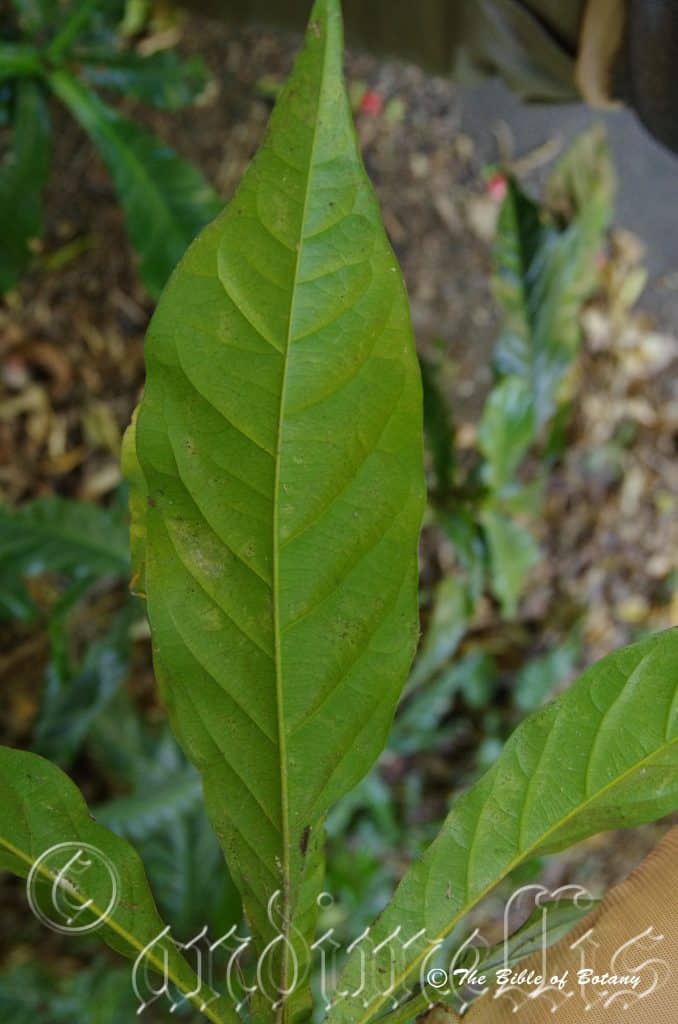
Mount Cootha Botanical Gardens Qld.
Megahertzia amplexicaulis
Classification:
Unranked: Eudicots
Order: Proteales
Family: Proteaceae
Genus: From Mégas, which is Ancient Greek for very large and Hertzia, which maybe from the German Hertz for wave lengths or frequency. It refers to the flowers looking similar to a frequency graph.
Specie: From Amplexus, which is Latin for encircled or embraced, and Kaulos, which is Ancient Greek or Caulus which is Latin for a stem, branch or trunk. It refers to leaves, which clasp the stem.
Sub species:
Common Name:
Distribution:
Megahertzia amplexicaulis is restricted to a small area in the Cedar Bay National Park to Cow Bay in far north Queensland.
https://avh.ala.org.au/occurrences/search?taxa=Megahertzia+amplexicaulis#tab_mapView
Habitat Aspect Climate:
Megahertzia amplexicaulis prefers dappled light to full sun. It grows as an understory small tree in well-developed coastal rainforests especially on the fringes and along creeks or streams within the rain forests. The altitude ranges from 30 meters ASL to 650 meters ASL.
The temperatures range from 12 degrees in August to 38 degrees in January.
The rainfalls range from lows of 2200mm to an average of 3200mm.
Soil Requirements:
Megahertzia amplexicaulis prefers better quality sandy loams, gritty light clays and fatty clays where forest litter covers the ground. The soils are usually derived from decomposed granites where leaf litter covers the ground. The soils pH. ranges from 6pH to 7pH. It does not tolerate waterlogged soils. Non saline soils to moderately saline soils are tolerated.
Height & Spread:
Wild Plants: 12m to 18m by 5m to 10m.
Characteristics:
Megahertzia amplexicaulis grows as a medium tree with pale brown, brownish-fawn and shallowly furrowed or vertically tessellated bark. The branches are pale grey-brown and covered in white lenticels while the branchlets are mid green. The new shoots are reddish-maroon.
Megahertzia amplexicaulis’ alternate leaves are crowded near the apexes. The typical oblanceolate leaves measure 80mm to 250mm in length by 25mm to 90mm in width. The bases are attenuate and strongly clasping while the apexes are broad acuminate to tapering acuminate. The discolourous laminas are mid green to deep green, semi glossy and glabrous on the upper laminas while the lower laminas are much paler grass-green. The laminas are flat to recurve from the midvein to the margins and gently decurve slightly on the apical third. The laminas are convex between the main vein and the lateral veins on the upper surface while the margins are entire and undulating. The mid vein is strongly prominent on both laminas at the base and is slightly prominent at the apex on the lower lamina and is level with the lamina on the upper lamina. The pinnate-arcuate lateral veins are prominent on the lower lamina and form loops well inside the margins and are clearly visible from the upper lamina. The petioles are absent or are very short and swollen at the junction with the branchlets.
The conflorescences of Megahertzia amplexicaulis are cauliferous racemes born solitary from the branches. The mid green to lime green, glossy racemes and pedicels are glabrous. The racemes measure 100mm to 140mm in in length while the pedicels measure 6mm to 7mm long. The individual flowers are usually born on a pedicle that is joined near the base or are paired along the raceme or at times 3 or 4.
The 4 white, glabrous tepals measure 20mm to 25mm in length. The hypogynous glands are fused to form a cupular lobe at the apex which is usually open on one side.
The erect, white style measures 20mm to 25mm in length. The erect narrow conical pollen presenter is lime green. The sessile 2 locular ovary is glabrous. The flowers appear from October to December.
Megahertzia amplexicaulis’s fruits are globose to obovoidal, glabrous follicles. The follicles measure 40mm to 45mm in length by 8mm to 10mm in width. The follicles contain 2 black seeds that measure 2.2mm to 2.6mm in length by 2.2mm to 2.6mm in width and 0.4mm in width. The seeds have a narrow marginal wing.
Wildlife:
Megahertzia amplexicaulis wildlife is unknown to the author.
Cultivation:
Megahertzia amplexicaulis makes an excellent small narrow tree for a park like scene or specimen tree in the garden. It also makes a beautiful large shrub. They always look green and fresh especially where adequate ground moisture is retained whether it is grown in light shade or full sun. It is very suitable on sandy clay soils to medium clays and poor shale based soils and shale. It is most suitable for small gardens close to the coast in temperate, sub tropical, tropical or even semi-arid gardens. As garden subjects they will grow from 12 meters to 16 meters in height by 6 meters to 8 meters in diameter when grown in the open. It is cold tolerant to temperatures at least as low as 0 degrees once established.
They can be used as shade trees in semi protected areas. It is an excellent tree for an addition in a dry rainforest garden. When planting the trees in a rainforest try to place them near the edge so the proliferation of flowers can be fully enjoyed and their natural bushy shape is not interfered with.
It is useful as a backdrop small tree contrasting with smaller finer leaf shrubs that are planted in the foreground. This gives the impression that they like being the center of attention which they deserve.
Try using them in an informal or formal manner in front of buildings to break up hard lines and to soften structures. This can be done by planting both shrubs and trees together in unequal free flowing curves using height and depth. If taller trees are required then try using Maytenus bilocularis as the tree and Maytenus silvestris as the shrub. The foliages would also be of great interest and contrast being large and deep green against the finer lemon green and brown new growth.
They would make ideal plants for Bonsai collectors as I have seen some very twisted gnarled specimens on rock ledges and granite outcrops in the Guy Fawkes National Park.
Propagation:
Seeds: Megahertzia amplexicaulis seeds can be sown directly into a seed raising mix. Cover the seeds with 2mm to 3mm of fine weed free mulch and keep moist. Place the tray in a warm sunny position. When the seedlings are 30mm to 50mm tall, prick them out and plant them into 50mm native tubes using a good organic mix.
Once the seedlings reach 150mm to 200mm in height they can be planted out into their permanent position.
Fertilize using seaweed, fish emulsion or organic chicken pellets soaked in water on an alternate basis. Fertilize every two months until the plants are established then twice annually in early September or March to maintain health, vitality and better flowering.
Further Comments from Readers:
Hi reader, it seems you use The Bible of Botany a lot. That’s great as we have great pleasure in bringing it to you! It’s a little awkward for us to ask, but our first aim is to purchase land approximately 1,600 hectares to link several parcels of N.P. into one at The Pinnacles NSW Australia, but we need your help. We’re not salespeople. We’re amateur botanists who have dedicated over 30 years to saving the environment in a practical way. We depend on donations to reach our goal. If you donate just $5, the price of your coffee this Sunday, We can help to keep the planet alive in a real way and continue to bring you regular updates and features on Australian plants all in one Botanical Bible. Any support is greatly appreciated. Thank you.
In the spirit of reconciliation we acknowledge the Bundjalung, Gumbaynggirr and Yaegl and all aboriginal nations throughout Australia and their connections to land, sea and community. We pay our respect to their Elders past, present and future for the pleasures we have gained.

LBG Lismore NSW
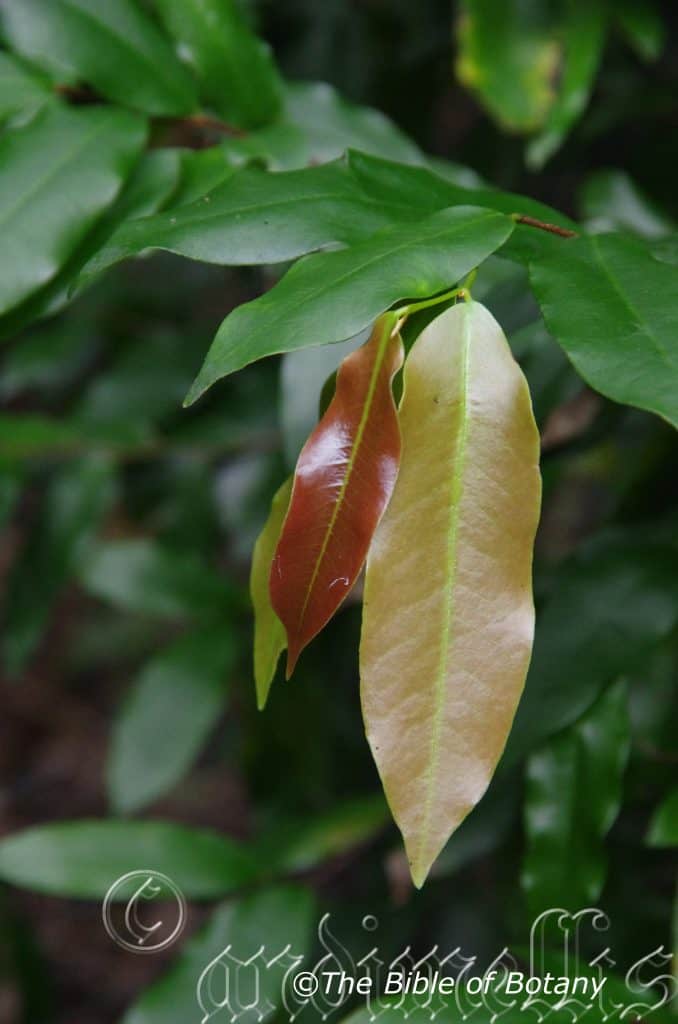
LBG Lismore NSW

LBG Lismore NSW
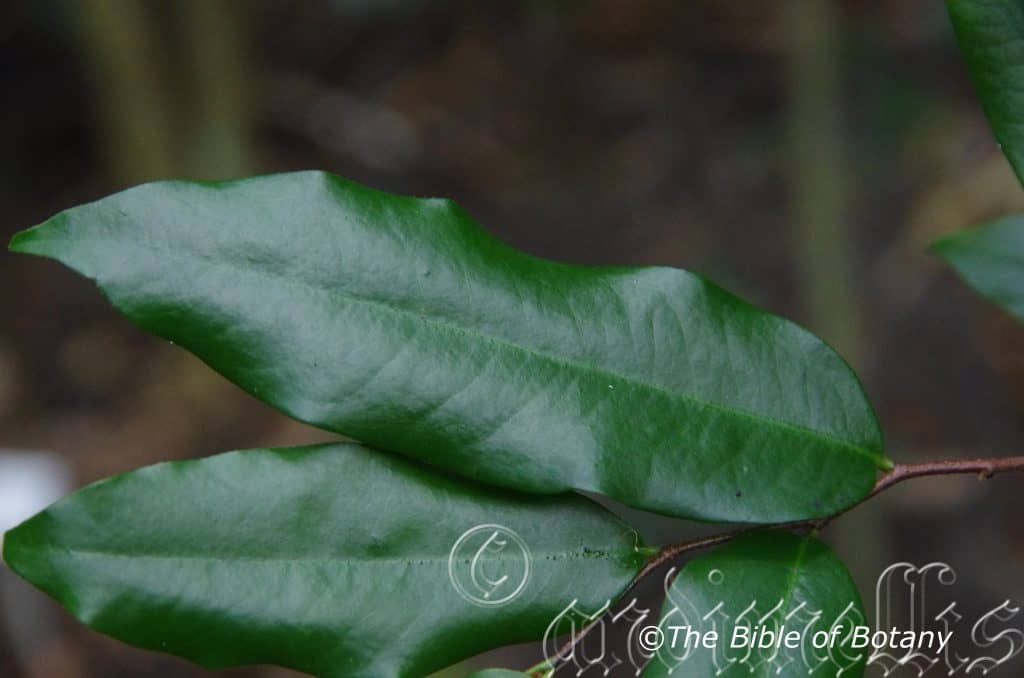
LBG Lismore NSW
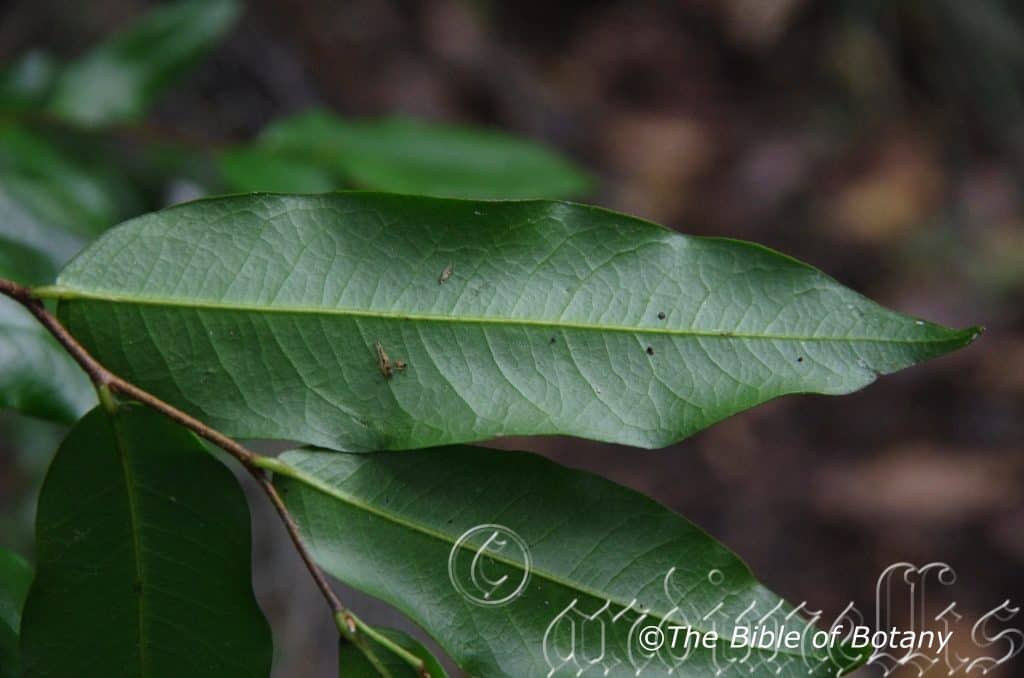
LBG Lismore NSW
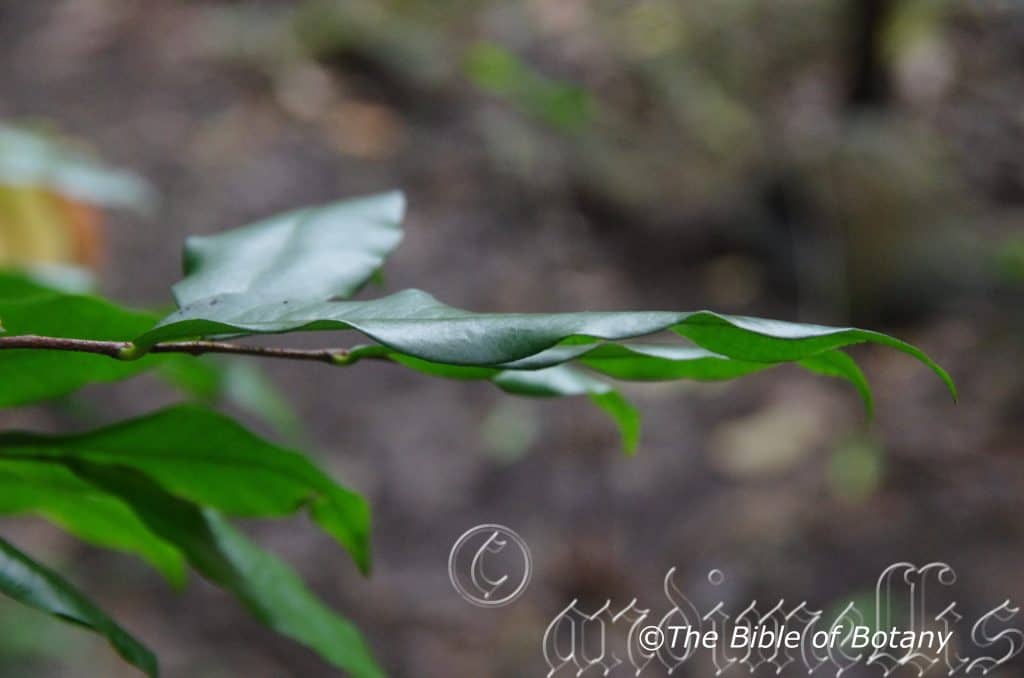
LBG Lismore NSW
Meiogyne stenopetala
Classification:
Class: Magnoliids
Order: Magnoliales
Family: Annonaceae
Genus: From Meíōsis/Meióō, which is Ancient Greek or Meio which is Modern Latin for to lessen (The uncountable, cytology of a cell division of a diploid cell into four haploid cells, which develop to produce gametes) and Gýnos/Gunḗ, which is Ancient Greek or Gynus, which is Latin for a woman. It refers to the female organs namely the ovaries, which in a figure of speech whereby it is made to seem smaller or less important than it actually is.
Specie: From Stenos, which is Ancient Greek for narrow and Pétalon/Pétalos, which is Ancient Greek or Petalum, which is Latin for a thin metallic plate later used for the description of specialised coloured leaves surrounding the bud of a flower – the petals. It refers to the petals, which are rather long and very narrow.
Sub species:
Common Name:
Distribution:
Meiogyne stenopetala is restricted to a small area between Mount Tamborine in south eastern Queensland to North Creek near Ballina in north Eastern coastal New South Wales.
https://avh.ala.org.au/occurrences/search?taxa=Meiogyne+stenopetala#tab_mapView
Habitat Aspect Climate:
Meiogyne stenopetala prefers dappled light to full sun. It grows adjacent to moist rain forests, in dry rainforests or moist Eucalyptus forests. The altitude ranges from 18 meters ASL to 525 meters ASL.
The temperatures range from minus 2 degrees in August to 38 degrees in January.
The rainfalls range from lows of 1000mm to an average of 2050mm.
Soil Requirements:
Meiogyne stenopetala grows quality sandy loams, medium clays or fatty clays prefer to where forest litter covers the ground. The soils are usually derived from decomposed black basalts, brown basalts, metamorphic rocks, shale, or mudstones where leaf litter covers the ground. The soils pH. ranges from 6pH to 7pH. It does not tolerate waterlogged soils. Non saline soils to moderately saline soils are tolerated.
Height & Spread:
Wild Plants: 3m to 5m by 2.5m to 3m.
Characteristics:
Meiogyne stenopetala grows as a large shrub or small tree with pale grey to mid grey, glabrous trunk. The branches are pale grey-brown and glabrous. The new shoots are lime-green.
The alternate leaves are oblong-lanceolate and measure 70mm to 100mm in length by 15mm to 30mm in width. The slightly oblique to oblique bases are rounded while the apexes are bluntly acute. The coriaceous, discolourous laminas are deep grass-green to deep green semi glossy and glabrous on the upper laminas while the lower laminas are paler and dull. The laminas are flat or slightly undulating and decurve gently near the apex while the margins are entire. The mid vein slightly prominent on both laminas while the lateral veins are slightly prominent on the lower lamina. The vein network is strongly reticulated. The petiole measures 2mm to 3mm in length while.
The inflorescences born solitary and cauliforously. They measure 30mm to 50mm in diameter. The pedicels measure 2mm to 5mm in length. The 3 pale green, triangular sepals taper at the narrow acute apex and are sparsely to moderately covered in rusty pulverulent hairs The sepals measure 3mm to 12mm in length. The usually 6 petals or at times to 11 petals linear petals are reddish-orange at the base and merge through to mid yellow at the apex and are sparsely to moderately covered in rusty to rusty-yellow pulverulent hairs. The petals measure 16mm to 26mm in length by 2mm to 3.5mm in mm in width.
The bumpy brown ovaries are covered in short white puberulent hairs. The gynoecium is yellow while the filiform stamens are white. The flowers appear from December to May.
The fruits are narrow obovoidal berries. The berries measure 15mm to 26mm in length by 10mm to 12mm in diameter. There are 3 to 7 individual berries with 1 to 3 seeds radiating out from the central lime-green carpel. The lime-green coriaceous berries turn bright orange-yellow when ripe. The capsules ripen from late March to early August.
Wildlife:
Meiogyne stenopetala’s wildlife is unknown to the author.
Cultivation:
Meiogyne stenopetala makes a small narrow tree for a park like scene or specimen tree in the small garden. It also grows as a medium slender shrub. It is most suitable for small gardens close to the coast in warm temperate, sub tropical, tropical gardens. As garden subjects it will grow from 3 meters to 4 meters by 1.5 meters to 3 meters diameter when grown in the open. It is cold tolerant to temperatures at least as low as minus 2 degrees once established. It is however very slow growing and even with a good fertilizing program and moisture will grow less than 1 meter a year.
It would be suitable as an understory plant in small rainforest gardens.
Propagation:
Seeds: Meiogyne stenopetala seeds can be sown directly into a seed raising mix. Cover the seeds with 2mm to 3mm of fine weed free mulch and keep moist. Place the tray in a warm sunny position. When the seedlings are 30mm to 50mm tall, prick them out and plant them into 50mm native tubes using a good organic mix.
Once the seedlings reach 150mm to 200mm in height they can be planted out into their permanent position.
Fertilize using seaweed, fish emulsion or organic chicken pellets soaked in water on an alternate basis. Fertilize every two months until the plants are established then twice annually in early September or March to maintain health, vitality and better flowering.
Further Comments from Readers:
Hi reader, it seems you use The Bible of Botany a lot. That’s great as we have great pleasure in bringing it to you! It’s a little awkward for us to ask, but our first aim is to purchase land approximately 1,600 hectares to link several parcels of N.P. into one at The Pinnacles NSW Australia, but we need your help. We’re not salespeople. We’re amateur botanists who have dedicated over 30 years to saving the environment in a practical way. We depend on donations to reach our goal. If you donate just $5, the price of your coffee this Sunday, We can help to keep the planet alive in a real way and continue to bring you regular updates and features on Australian plants all in one Botanical Bible. Any support is greatly appreciated. Thank you.
In the spirit of reconciliation we acknowledge the Bundjalung, Gumbaynggirr and Yaegl and all aboriginal nations throughout Australia and their connections to land, sea and community. We pay our respect to their Elders past, present and future for the pleasures we have gained.
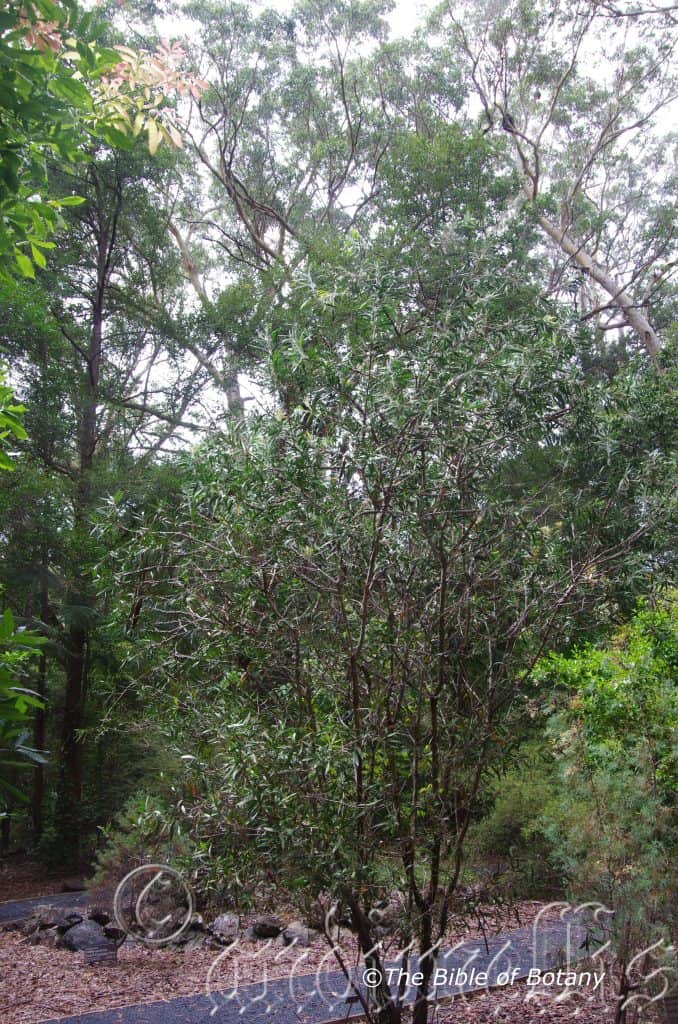
NCBG Coffs Harbour NSW

NCBG Coffs Harbour NSW

NCBG Coffs Harbour NSW

NCBG Coffs Harbour NSW

NCBG Coffs Harbour NSW
Melaleuca acuminata
Classification:
Division: Eudicots
Division: Rosids
Order: Myrtales
Family: Myrtaceae
Subfamily: Myrtoideae
Tribe: Melaleuceae
Genus: From Mélas, which is Ancient Greek for black and Leukós, which is Ancient Greek for white. It refers to plants, which usually have white papery barks that are often charred by fire thus the bark is black and white.
Specie: From Acūmināta, which is Latin for being contracted or concave on the sides before protracting to a sharp point. It refers to apexes on the leaves or phyllodes, which have short sharp points.
Sub species:
Common Name: White Feather Honeymyrtle.
Distribution:
Melaleuca acuminata is wide spread in 2 disjunct populations. The western population are found in the south western corner of Western Australia from the Geraldton Sand Plains eat to the Esperance Coastal Plains.
The south eastern populations are found east from Ceduna in South Australia to the Grampians in western Victoria.
https://avh.ala.org.au/occurrences/search?taxa=Melaleuca+acuminata#tab_mapView
Habitat Aspect Climate:
Melaleuca acuminata prefers full sun to light dappled shade. It grows on sandy slopes, dunes or hills in open Eucalyptus woodlands or mallee scrubs. The altitude ranges from 5 meters ASL to 600 meters ASL.
The temperatures range from minus 2 degree in August to 38 degrees in January.
The rainfalls range from lows of 200mm to an average of 800mm.
Soil Requirements:
Melaleuca acuminata prefers shallow sandy loams to sandy clays. The soils are usually derived from decomposed sandstones or accumulated beach sands. The soils pH. ranges from 5pH to 7pH. It does not tolerate waterlogged soils however the root zone is often cool and kept moist by boulders and surface rocks. Non saline soils to moderately saline soils are tolerated.
Height & Spread:
Wild Plants: 1m to 4m by 1m to 4m.
Characteristics:
Melaleuca acuminata’s rusty-brown bark on the trunk and main stems is tightly packed, rough and scaly. The branchlets are pale creamy fawn to pale creamy pink and glabrous. The plants vary considerably from having an open upright habit to being densely foliaged.
Melaleuca acuminata’s opposite to sub opposite leaves are narrow elliptical to narrow lanceolate or narrow lanceolate to lanceolate and measure 50mm to 100mm in length by 2mm to 4mm in width. The base is cuneate while the apex is acuminate or mucronate. The concolourous laminas are grass-green to sea-green and glabrous. Immature leaves are silvery turning silvery-bronze before turning to the mature leaf colour. The main vein is slightly prominent on the lower lamina and is not visible on the upper lamina. The petioles measure 1mm to 1.5mm in length. The leaves are aromatic when crushed.
The inflorescence of Melaleuca acuminata is a small cluster of 3 to 6 flowers born along the branchlets. The flower terminal shoots grow out before the last of the stamens bloom and have two or three leaves amongst the last few flowers. The orbicular, pale pink petals measure 2mm to 2.2mm in diameter.
The white to cream stamens are the most prominent part of the flowers. The 5 claws are opposite the petals and measure 3mm to 5mm in length. There are 9 to 17 stamens on a claw. The stamens measure 4mm to 6mm in length.
The long, slender, deep creamy yellow style measures 6mm to 8mm in length, while the stigma has 5 locules. The base of the style is surrounded by the nectaries. The filaments measure 24mm to 26mm in length. The arrowroot to strongly honey scented flowers, appear from early September to late November.
Melaleuca acuminata’s fruit is a sessile, broadly globose capsule. The capsules measure 3.5mm to 6mm in length by 3mm to 5mm in diameter. The orifices are enclosed and measure 1mm to 2mm in diameter at the hypanthia. The woody to coriaceous capsule is dull pale grey to dull grey and resinous. The capsules may contain hundreds of seeds and chaff. The seeds are rusty-brown and are longer and thicker than the chaff. The calyx lobes are persistent on the hypanthia.
Wildlife:
Melaleuca acuminata supports native bees, native flies, native beetles and butterflies when in flower. It also supports many small honeyeaters which scurry over the flowers and seek protection amongst the bushy foliage.
Cultivation:
Melaleuca acuminata is a beautiful upright bushy shrub for native gardens. It is suitable on all types of soils from sandy loams to light sandy clays where there is excellent drainage. It is most suitable for small, medium and large inland gardens in warm temperate or semi-arid gardens. As garden subjects they will grow from 3 meters to 3.5 meters tall by 1.5 meter to 4 meters in diameter. It is cold tolerant to temperatures to minus 3 degrees once established but are very slow to establish themselves and will suffer some tip burning and discolouration of the foliage in temperatures below this even when established. It is quite drought tolerant. I have seen well grown shrub with good flowers at only 4 and 5 years of age.
It is very fast growing especially with a good fertilizing program and with a little moisture growing more than 1 meter a year. They will drop some of their foliage when stressed during drought times but recover as soon as good rains fall. To avoid this, give the plants a double dose of our recommended fertilizer following flowering and a good deep soaking in mid-summer if good summer rains are not forthcoming. This will prevent further loss and hold them over for several more months.
They can be regularly tip pruned if a small hedge is required. This can be maintained with regular pruning and planting closer together with spacing of 2 meter. They respond very well to tip pruning, recovering quickly and increasing the number of terminal points for flowers in the following season. Pruning should be done immediately after the last flowers have bloomed trimming them back to just behind the old flowers. If seed is required leave one or two spikes from different sides of the shrub.
It is most suitable for use around sunny swimming pools, courtyards, besides pathways, sunny rockeries, along sandy or sandy clay banks, along drive ways or adjacent to natural bush gardens. Mass plantings of 5 or more plants even in small areas; really do the plants justification especially when it is in flower. If it is placed around a pool, courtyards or other confined spaces then plant them in small groups or scatter plant them for a more informal natural look against walls to help soften them.
When mass or group planting Melaleuca acuminata, use curves and irregular patterns so they can be viewed from different angles around the garden. The flowers are really highlighted against the grass green undulating leaves so place them where it is highly visible.
Using rocks and small boulders can make the pool or any water feature appear like an oasis. The leaves and flowers can make a great start for the larger dry heath setting. Use large old stumps and roots so that they look larger. Select an area of ground and let your hair down and be imaginative. This is the plant that may just change your life. Remember this plant is rather large for this type of garden so be sparingly with all the plants when planting and remember that heaths are flat plains not steep hills so it is best to use a gentle slope or a basin with a small pool at the bottom. A billabong affect is the go, not a waterfall or cascades.
If water is used with this type of garden in semi shade or dappled light I would consider the use of ferns with fine or course deep green fronds to contrast the pale grass green of this Melaleuca. Train it so that it becomes a small tree, this way you can plant right up to the trunk utilizing all the available space for the ferns and other features. Judicious pruning with large rocks and stumps can make an area come alive.
Place 3 or 4 of them off center in a large rockery with other large or finer deep green leaf ground covers, and very small shrubs in the front. Plants with white, lilac, pink or yellow flowers can be used with great contrast.
In a bush garden place them near the edge using the deep green foliages to the rear. This will not only highlight them but give greater depth to the garden.
When mass or group planting Melaleuca acuminata, use curves and irregular patterns in the garden beds so they can be viewed from different angles around the garden. There greatest potential in the garden is in attracting small and medium size honeyeaters and their prolonged flowering season.
Propagation:
Seeds: Melaleuca acuminata seeds can be sown directly into a seed raising mix. Do not cover the seeds. Press them into the mix. Place the tray in a warm sunny position. When the seedlings are 15mm to 20mm tall, prick them out and plant them into 20mm native tubes using a good organic mix.
When the seedlings are 70mm to 90mm tall, prick them out and plant them into 50mm native tubes using a good organic mix or plant them out into their permanent positions.
Once the seedlings reach 150mm to 200mm in height they can be planted out into their permanent position.
Cuttings: Use 80mm to 100mm long half ripened material when growing from cuttings from the present season’s growth. Take them in warmer months of the year. Remove half the leaves from the bottom section being careful not to tear the bark.
1 Prepare the cutting mix by adding one third sharp clean river sand, one third peat and one third perlite. These ingredients are sterilize,
2 Select good material from non diseased plants,
3 Select semi green stems for cuttings. Look for a stem with two or three nodes,
4 Place the cutting on a flat, hard surface, and make a clean cut down one side of the cutting at the base for 10mm with a sharp sterile knife or razor blade. – This scarification of the node will increase the chances of roots emerging from this spot. Now remove all but one or two the leaves, leaving the apex leaves in tact. If the leaves are very large in proportion to the stem, cut off the apical halves.
5 Fill a saucer with water, and place a little medium strength rooting hormone into another container like a milk bottle top. Dip the node end of the cutting into the water and then into the rooting hormone. Tap off any excess hormone,
6 Use a small dipple stick or old pencil to poke a hole into the soilless potting mix. Ensure the hole is slightly larger than the stem diameter and be careful not to wipe the rooting hormone off the cuttings base, place the cuttings in a pattern ensuring the cuttings are not touching each other,
7 I like to place the pots in Plastic bags to help maintain temperature and moisture. Place in a semi shaded place like under 50mm shade cloth.
8 When the cuttings have struck, open the bag to allow air circulation for a few days to a week,
9 Once hardened off remove the cuttings from the bag and allow to further hardening for a few more days,
10 Transplant into a good potting mix to grow on.
Fertilize using seaweed, fish emulsion or organic chicken pellets soaked in water on an alternate basis. Fertilize every two months until the plants are established then twice annually in early September or March to maintain health, vitality and better flowering.
Further Comments from Readers:
Hi reader, it seems you use The Bible of Botany a lot. That’s great as we have great pleasure in bringing it to you! It’s a little awkward for us to ask, but our first aim is to purchase land approximately 1,600 hectares to link several parcels of N.P. into one at The Pinnacles NSW Australia, but we need your help. We’re not salespeople. We’re amateur botanists who have dedicated over 30 years to saving the environment in a practical way. We depend on donations to reach our goal. If you donate just $5, the price of your coffee this Sunday, We can help to keep the planet alive in a real way and continue to bring you regular updates and features on Australian plants all in one Botanical Bible. Any support is greatly appreciated. Thank you.
In the spirit of reconciliation we acknowledge the Bundjalung, Gumbaynggirr and Yaegl and all aboriginal nations throughout Australia and their connections to land, sea and community. We pay our respect to their Elders past, present and future for the pleasures we have gained.
Melaleuca alsophila
Classification:
Division: Eudicots
Division: Rosids
Order: Myrtales
Family: Myrtaceae
Subfamily: Myrtoideae
Tribe: Melaleuceae
Genus: From Mélas, which is Ancient Greek for black and Leukós, which is Ancient Greek for white. It refers to plants, which usually have white papery barks that are often charred by fire thus the bark is black and white.
Specie: From Alsos, which is Ancient Greek for a grove, and Philos, which is Ancient Greek, later –Phila, which is Latin for to loving or to be loved. It refers to the habit of the species, which are often seen growing in grove like formations in the wild.
Sub species:
Common Name: Salt Water Paper Bark.
Distribution:
Melaleuca alsophila is found south from the Kimberley Range to north of Port Headland along the coast and north east to the Ord river.
In the Northern Territory it is found on the Victoria River deltas and Booroloola to the coast on the eastern side.
https://avh.ala.org.au/occurrences/search?taxa=Melaleuca+alsophila#tab_mapView
Habitat Aspect Climate:
Melaleuca alsophila prefers full sun. It grows adjacent to and in saline and brackish swamps, on floodplains, along brackish river estuaries, on coastal flats and along waterways of both fresh and saline water. The altitude ranges from 1 meter ASL to 268 meters ASL.
The temperatures range from 10 degrees in August to 40 degrees in January.
The rainfalls range from lows of 500mm to an average of 1600mm.
Soil Requirements:
Melaleuca alsophila prefers better quality sandy loams to heavy silts including pindan flats. The soils are usually derived from decomposed sandstone, laterites or shale laid down as alluviums below water. The soils pH. ranges from 4.5pH to 7.5pH. It tolerates waterlogged soils and periodic inundation for long periods as creeks rise after heavy rain and flood plains remain submerged for most of the monsoonal wet season. Non saline soils to extremely saline soils are tolerated as are salt laden winds.
Height & Spread:
Wild Plants: 2m to 15m by 4m to 10m.
Characteristics:
Melaleuca alsophila grows as a small to medium tree with cream, pale creamy-fawn thick papery bark. The branches are cream, pale creamy fawn with a tightly wrapped papery bark. The branchlets are creamy white and spongy, while the new shoots are green and covered in white sericeous hairs.
Melaleuca alsophila’s alternate asymmetrical leaves are narrowly elliptical to lanceolate and measure 25mm to 60mm in length by 7mm to 14mm in width. The base is attenuate while the apex is narrowly acute to broadly acute. The concolourous, thick coriaceous laminas are pale grey-green to mid green dull and glabrous. Immature leaves are pale blue-green, dull and covered in white sericeous hairs. The margins are entire. The upper margin is straight while the lower margin is curved. The mid vein is slightly sunken on both laminas while the parallel veins are obscure. The petiole measures 1mm to 3mm in length.
The inflorescences of Melaleuca alsophila are born in small cluster on the previous seasons growth. There are 6 to 20 individual flowers in a cluster. They measure 9mm to 12mm in diameter. The white, cream or yellow stamens are the most prominent part of the flowers. The flowers are born singularly with in each bract. The 5 broad, triangular pink sepals and petals measure 1mm to 1.2mm in length by 2mm to 2.3mm in width.
The white stamens are the most prominent part of the flowers. The 5 claws are opposite the petals. There are 15 to 24 stamens on each claw. The stamens measure 10mm to 12mm in length. The anthers are also cream to pale yellow.
The long, slender, white style measures 12mm to 14mm in length, while the ovary is glabrous. The strongly honey scented flowers appear from March to October.
Melaleuca alsophila’s fruits are small, glabrous cylindrical shaped woody capsules. The 4 valve capsules may contain hundreds of seeds and chaff.
Wildlife:
Melaleuca alsophila supports many native bees, native pollen flies, butterflies and small honeyeaters when in flower.
Cultivation:
Melaleuca alsophila makes an excellent small narrow tree for a park like scene or specimen tree in the garden or large spreading shrub. It is very suitable on all soil types. It is most suitable for small gardens close to the coast in temperate, sub tropical, tropical or even semi-arid gardens provided ample soil moisture is available. As garden subjects they will grow from 4m to 4.5m in height by 2m to 2.5m diameter as a shrub or they will grow from 10m to 12m in height by 5m to 7m in diameter when grown in the open. It is cold tolerant to temperatures at least as low as 5 degrees once established. It is very fast growing especially with a good fertilizing program and moisture will see them grow over a meter a year.
They can be used for light dappled shade. It is an excellent tree for areas that have drainage problems and saline soils. When planting the trees for a forest try to place them near the edge so the proliferation of flowers can be fully enjoyed and their natural bushy shape is not interfered with.
It is useful as a backdrop small tree contrasting with smaller finer leaf shrubs that are planted in the foreground. This gives the impression that they like being the center of attention which they deserve. The bark is a strong character for wanting to plant this tree.
Try using them in an informal manner in front of buildings to break up hard lines and to soften structures. This can be done by planting the trees together with unequal gaps, free flowing curves to accentuate height and depth. If shrubs are required then try using some of the finer leaf leptospermum with pink flowers. The foliages would also be of great interest and contrast being large and deep green against the finer lemon green and brown new growth.
They would make ideal plants for Bonsai collectors as I have seen some very twisted gnarled specimens on rock sites in the Kimberley National Park.
This Melaleuca produces the highest volume of good quality Melaleuca specie oil of all the Melaleuca genus and should be seriously considered as an alternative crop in the west where conditions are satisfactory.
Propagation:
Seeds: Melaleuca alsophila seeds can be sown directly into a seed raising mix. Cover the seeds with 1mm to 2mm of fine weed free mulch and keep moist. Place the tray in a warm sunny position. When the seedlings are 15mm to 20mm tall, prick them out and plant them into 20mm native tubes using a good organic mix.
When the seedlings are 70mm to 90mm tall, prick them out and plant them into 50mm native tubes using a good organic mix or plant them out into their permanent positions.
Once the seedlings reach 150mm to 200mm in height they can be planted out into their permanent position.
Cuttings: Use 100mm to 150mm long half ripened material when growing from cuttings from the present season’s growth. Take them in warmer months of the year. Remove half the leaves from the bottom section being careful not to tear the bark.
1 Prepare the cutting mix by adding one third sharp clean river sand, one third peat and one third perlite. These ingredients are sterilize,
2 Select good material from non diseased plants,
3 Select semi green stems for cuttings. Look for a stem with two or three nodes,
4 Place the cutting on a flat, hard surface, and make a clean cut down one side of the cutting at the base for 10mm with a sharp sterile knife or razor blade. – This scarification of the node will increase the chances of roots emerging from this spot. Now remove all but one or two the leaves, leaving the apex leaves in tact. If the leaves are very large in proportion to the stem, cut off the apical halves.
5 Fill a saucer with water, and place a little medium strength rooting hormone into another container like a milk bottle top. Dip the node end of the cutting into the water and then into the rooting hormone. Tap off any excess hormone,
6 Use a small dipple stick or old pencil to poke a hole into the soilless potting mix. Ensure the hole is slightly larger than the stem diameter and be careful not to wipe the rooting hormone off the cuttings base, place the cuttings in a pattern ensuring the cuttings are not touching each other,
7 I like to place the pots in Plastic bags to help maintain temperature and moisture. Place in a semi shaded place like under 50mm shade cloth.
8 When the cuttings have struck, open the bag to allow air circulation for a few days to a week,
9 Once hardened off remove the cuttings from the bag and allow to further hardening for a few more days,
10 Transplant into a good potting mix to grow on.
Fertilize using seaweed, fish emulsion or organic chicken pellets soaked in water on an alternate basis. Fertilize every two months until the plants are established then twice annually in early September or March to maintain health, vitality and better flowering.
Further Comments from Readers:
Hi reader, it seems you use The Bible of Botany a lot. That’s great as we have great pleasure in bringing it to you! It’s a little awkward for us to ask, but our first aim is to purchase land approximately 1,600 hectares to link several parcels of N.P. into one at The Pinnacles NSW Australia, but we need your help. We’re not salespeople. We’re amateur botanists who have dedicated over 30 years to saving the environment in a practical way. We depend on donations to reach our goal. If you donate just $5, the price of your coffee this Sunday, We can help to keep the planet alive in a real way and continue to bring you regular updates and features on Australian plants all in one Botanical Bible. Any support is greatly appreciated. Thank you.
In the spirit of reconciliation we acknowledge the Bundjalung, Gumbaynggirr and Yaegl and all aboriginal nations throughout Australia and their connections to land, sea and community. We pay our respect to their Elders past, present and future for the pleasures we have gained.

Double Swamp Creek NSW
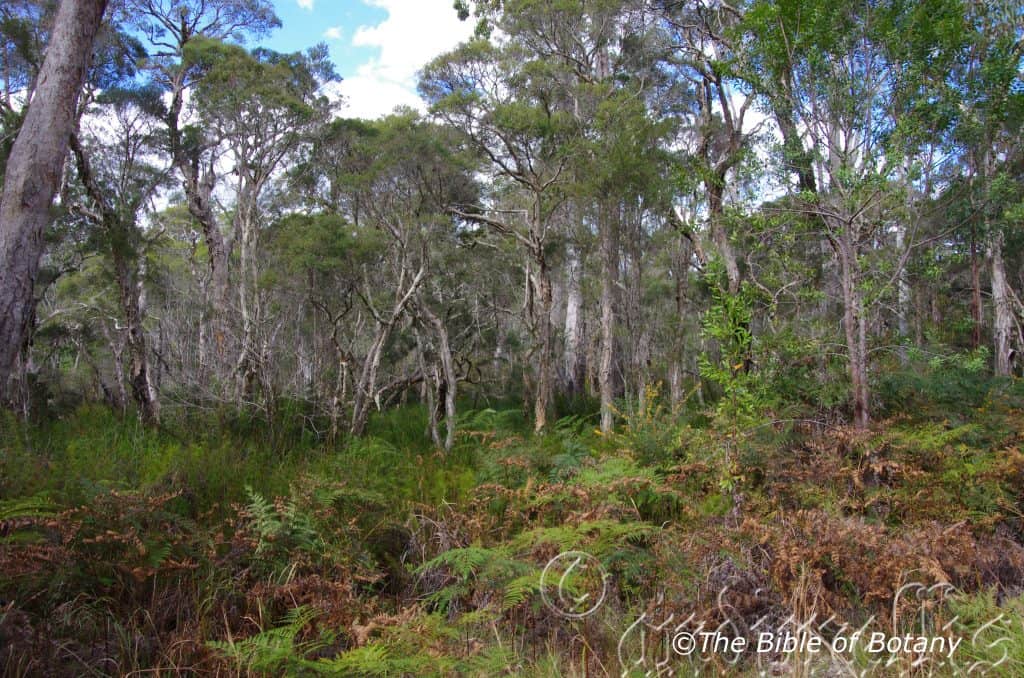
The Pinnacles NSW
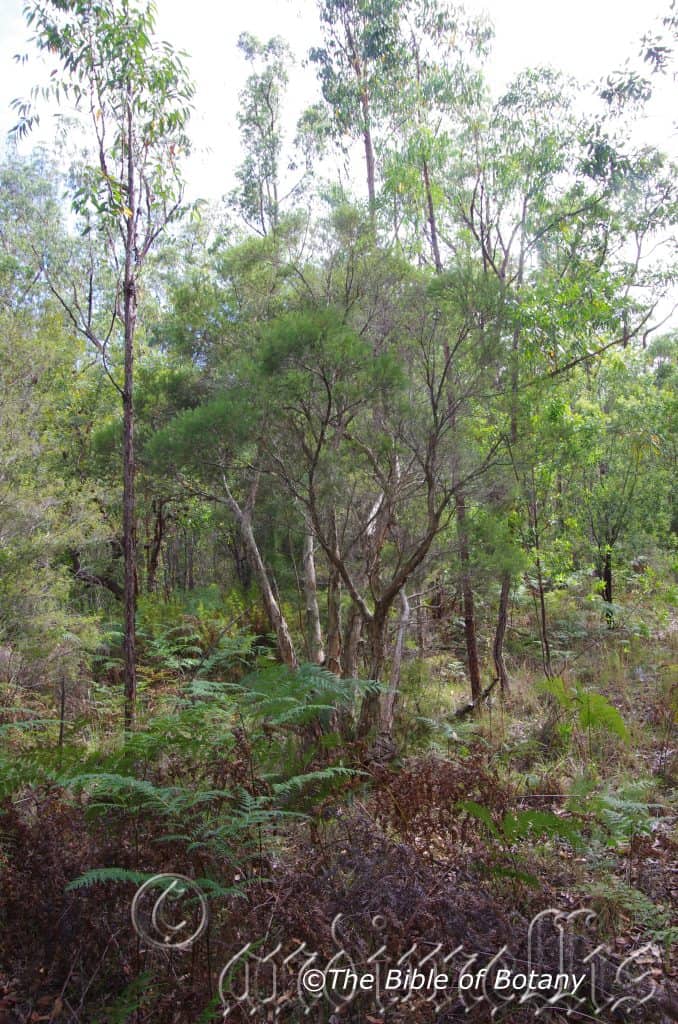
The Pinnacles NSW
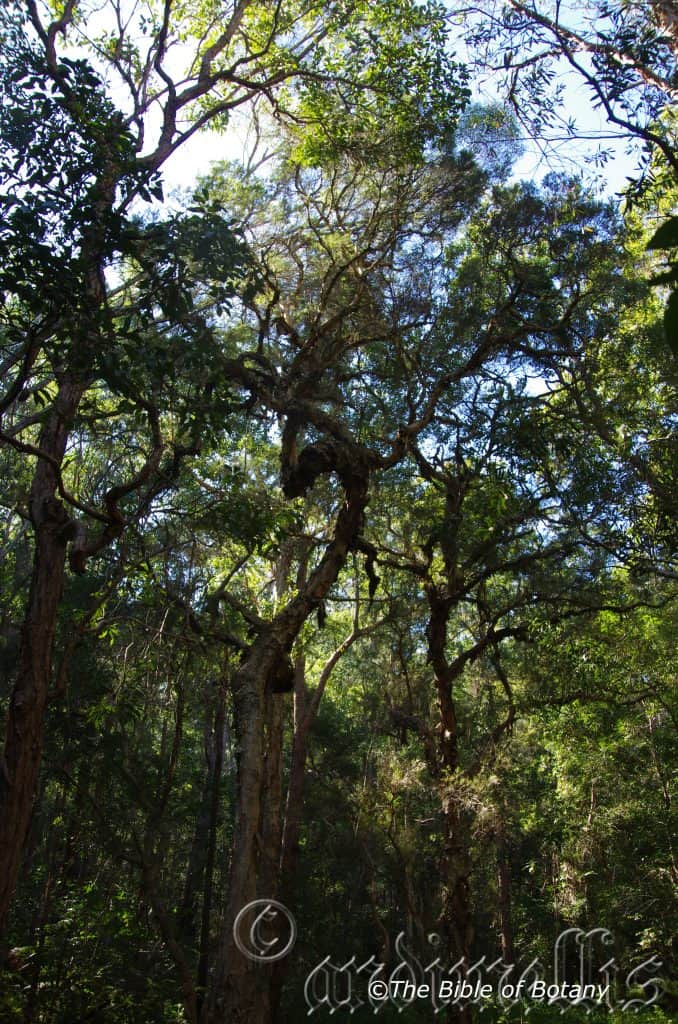
The Pinnacles NSW
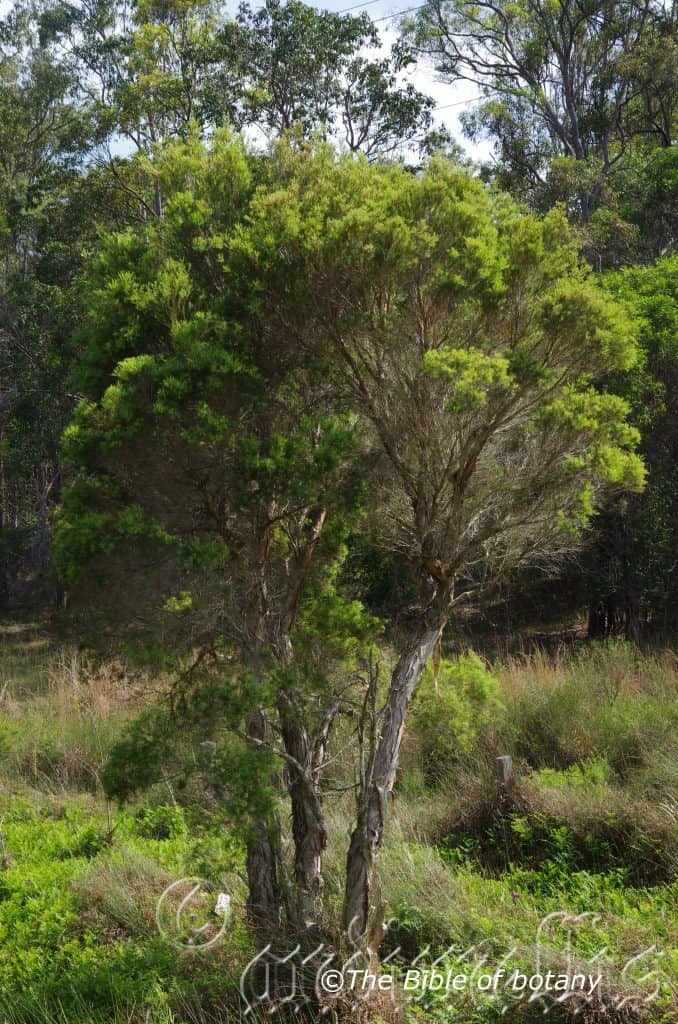
The Pinnacles NSW

The Pinnacles NSW

The Pinnacles NSW
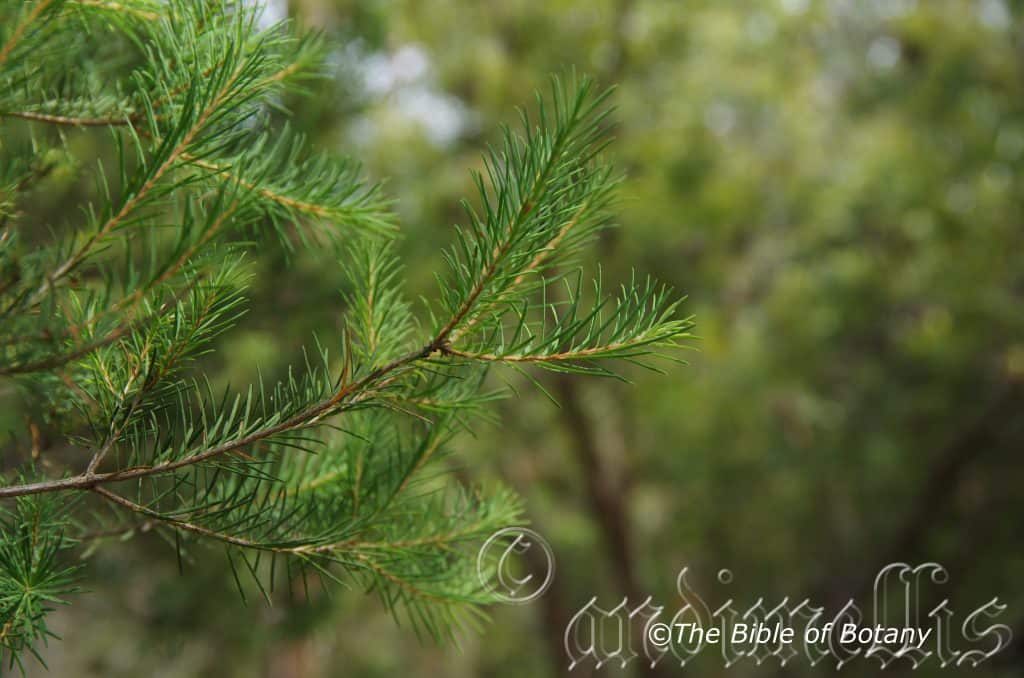
The Pinnacles NSW
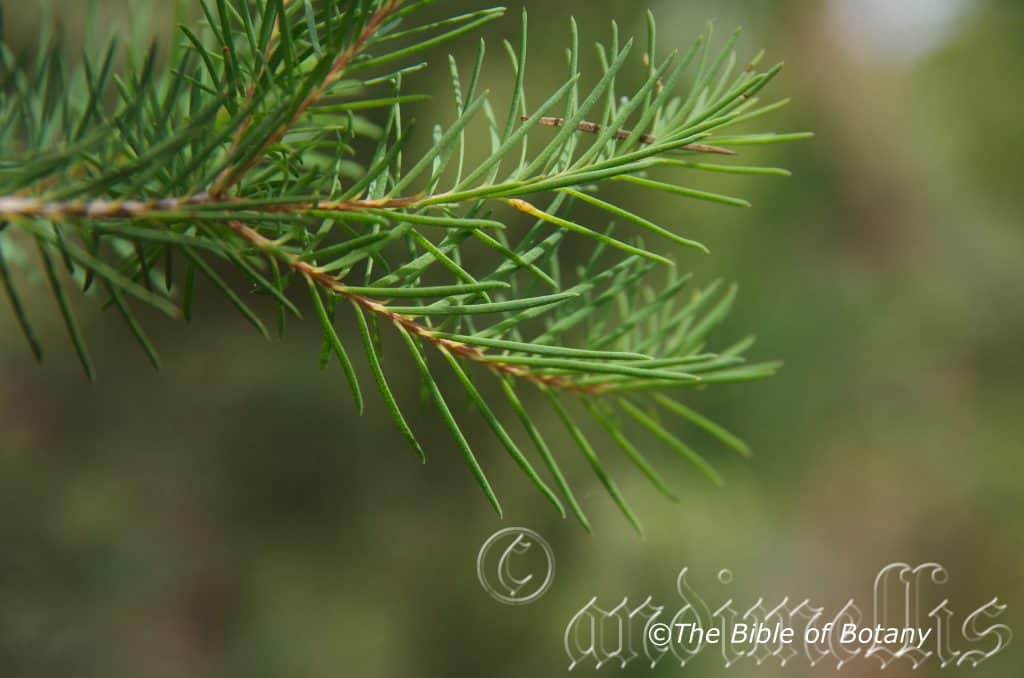
The Pinnacles NSW
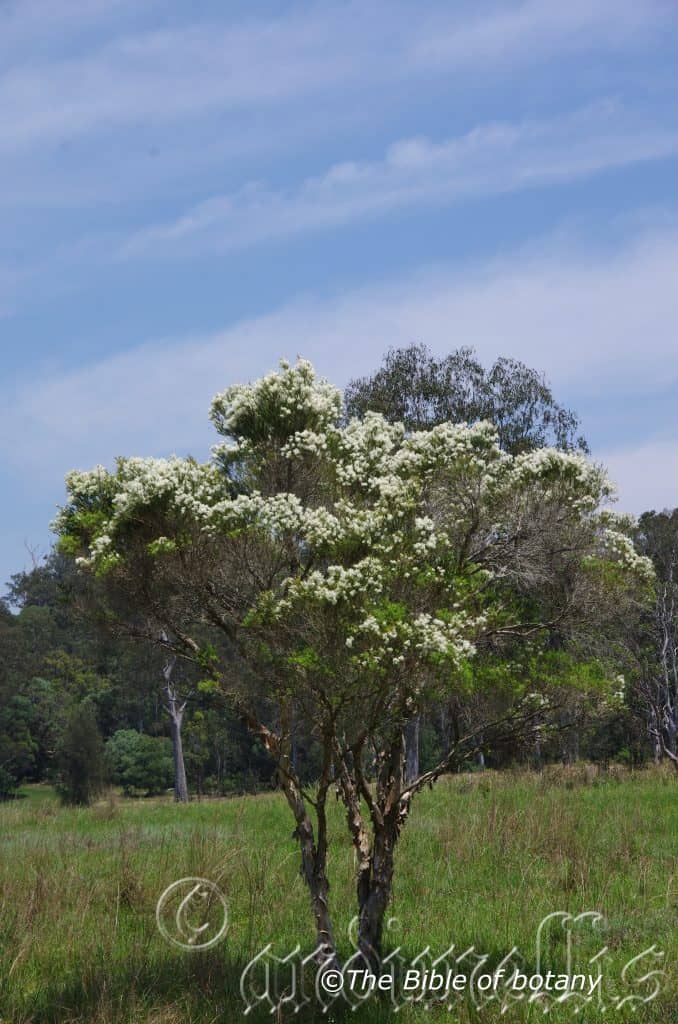
The Pinnacles NSW
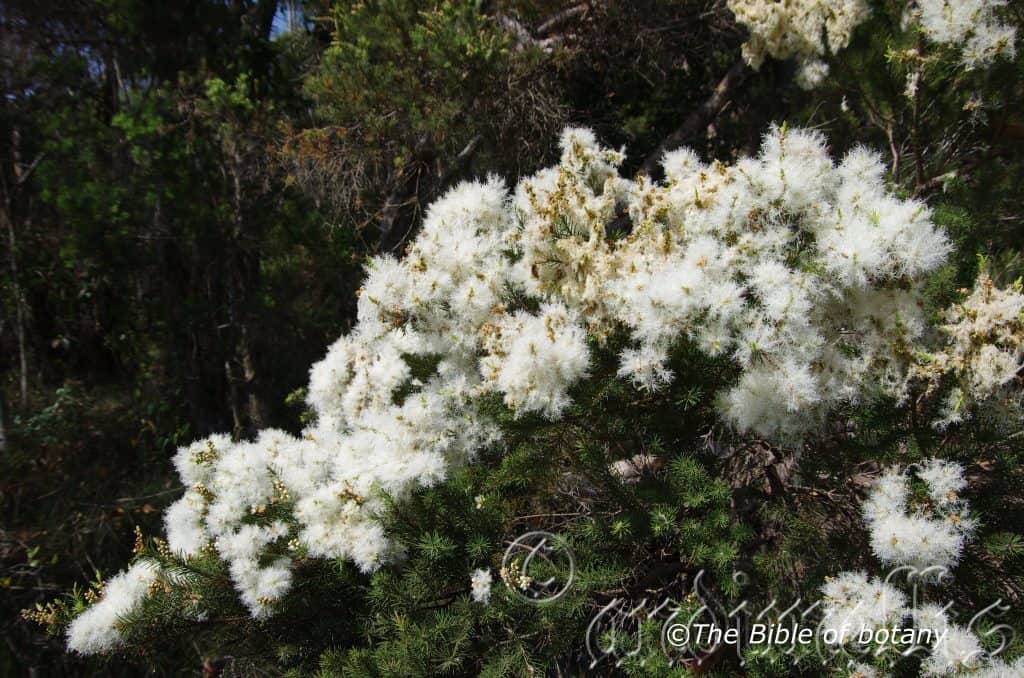
The Pinnacles NSW
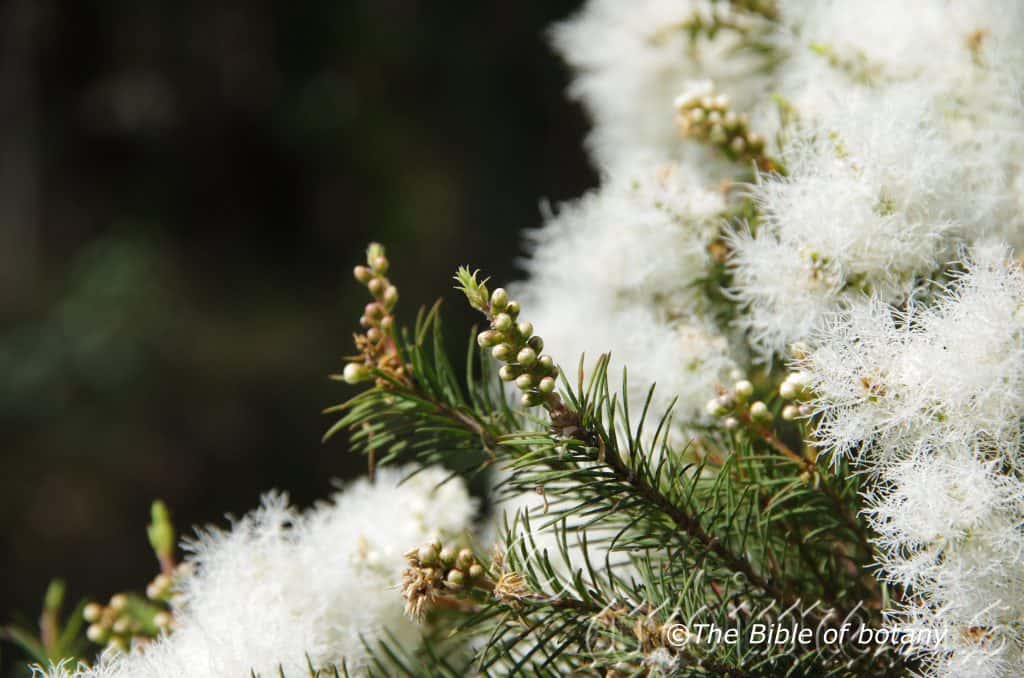
The Pinnacles NSW

The Pinnacles NSW
Melaleuca alternifolia
Classification:
Division: Eudicots
Division: Rosids
Order: Myrtales
Family: Myrtaceae
Subfamily: Myrtoideae
Tribe: Melaleuceae
Genus: From Mélas, which is Ancient Greek for black and Leukós, which is Ancient Greek for white. It refers to plants, which usually have white papery barks that are often charred by fire thus the bark is black and white.
Specie: From Alternanum, which is Latin for alternating or to take in turns, and Folium, which is Latin for foliage. It refers to a leaves, which alternate along the stems.
Sub species:
Common Name: Tea Tree.
Distribution:
Melaleuca alternifolia is found south from Coolangatta in south eastern Queensland to Grafton in north eastern New South Wales. It is found on and east of the Great Dividing Range to the coast.
https://avh.ala.org.au/occurrences/search?taxa=Melaleuca+alternifolia#tab_mapView
Habitat Aspect Climate:
Melaleuca alternifolia prefers full sun. It grows adjacent to and in swamps, on flood plains, along estuaries, on coastal flats and along waterways of both fresh and slightly brackish water. The altitude ranges from 5 meter ASL to 300 meters ASL.
The temperatures range from minus 3 degrees in August to 40 degrees in January.
The rainfalls range from lows of 750mm to an average of 1900mm.
Soil Requirements:
Melaleuca alternifolia prefers to grow on poor to average quality sandy loams to medium clays including pindan soils where leaf litter covers the ground and is mixed with the soils. The soils are derived from decomposed sandstone, shale, sandstones, basalts or alluvial deposits. The soils pH. ranges from 4.5pH to 6pH. It tolerates waterlogged soils. Non saline soils to moderately saline soils are tolerated.
Height & Spread:
Wild Plants: 3m to 7m by 4m to 5m.
Characteristics:
Melaleuca alternifolia grows as a small tree with cream to pale creamy-fawn thick papery bark. The branches are cream, pale creamy fawn with a tightly wrapped papery bark. The branchlets are green, while the new shoots are green and covered in white sericeous hairs.
Melaleuca alternifolia linear leaves are irregularly scattered or in loose whirls along the stems. They measure 12mm to 35mm in length by 1mm to 1.4mm in width. The base is attenuate while the apex is narrowly acute. The laminas are concolourous with the laminas being pale blue-green or grey-green, dull and glabrous. Immature leaves are pale blue-green, dull and glabrous. The mid vein is slightly prominent on the lower lamina. The margins are entire and flat. The petiole measures 1mm to 1.5mm in length.
The inflorescence of Melaleuca alternifolia are multiple spikes born from the terminal shoots. The rachis is puberulent and measures 30mm to 50mm in length. There are 6 to 24 individual flowers on a spike. They measure 15mm to 25mm in diameter. The flowers are born singularly with in each bract. The 5 broad elliptical petals are white and measure 2mm to 3mm in length by 1.5mm in width.
The white stamens are the most prominent part of the flower. The 5 claws measures 6mm to 12mm in length. There are 30 to 60 stamens on each claw. The stamens measure 2mm to 4.5mm in length.
The short, slender, white style measures 3mm to 4mm. The flowers appear from early October to early November.
Melaleuca alternifolia’s fruit is a small, globular, cup shaped capsule. The capsules measure 2mm to 3mm in length by 2mm to 3mm in diameter. The orifice measures 1.5mm to 2.5mm in diameter. The woody capsules are dull pale grey to pale fawn. The capsules may contain hundreds of seeds and chaff. The calyx lobes are not persistent.
Wildlife:
Melaleuca alternifolia supports many native bees, native flies, native beetles and butterflies when in flower.
Cultivation:
Melaleuca alternifolia makes an excellent small narrow leafed paper bark tree for a park like scene or specimen tree in the garden. It is very suitable on all soil types. It is most suitable for small gardens close to the coast in warm temperate, sub tropical or even semi-arid gardens provided ample soil moisture is available. As garden subjects they will grow from 5 meters to 7 meters in height by 4 meters to 5 meters in diameter when grown in the open.
They can be pruned to a shrub to any shape or height however I believe it is much nicer as a small tree where the thick papery bark contrasts beautifully with the dense canopy. It is cold tolerant to temperatures at least as low as minus 3 degrees once established. It is very fast growing especially with a good fertilizing program and with moisture will grow 2 meters in a couple of years.
They can be used for light dappled shade. It is an excellent tree for areas that have drainage problems and slightly saline soils. When planting the trees for a forest try to place them near the edge so the proliferation of flowers can be fully enjoyed and their natural bushy shape is not interfered with.
It is useful as a backdrop small tree contrasting with smaller finer leaf shrubs that are planted in the foreground. This gives the impression that they like being the center of attention which they deserve. The bark is a strong character for wanting to plant this tree.
Try using them in an informal manner. This can be done by planting the trees together with unequal gaps, free flowing curves to accentuate height and depth. If shrubs are required then try using some of the broader leaf Melaleucas with red or pink flowers. The foliages would also be of great interest and contrast being large and deep green against the finer grey green.
They would make ideal plants for Bonsai collectors and for topiary work.
Propagation:
Seeds: Melaleuca alternifolia seeds can be sown directly into a seed raising mix. Cover the seeds with 1mm to 2mm of fine weed free mulch and keep moist. Place the tray in a warm sunny position. When the seedlings are 15mm to 20mm tall, prick them out and plant them into 20mm native tubes using a good organic mix.
When the seedlings are 70mm to 90mm tall, prick them out and plant them into 50mm native tubes using a good organic mix or plant them out into their permanent positions.
Once the seedlings reach 150mm to 200mm in height they can be planted out into their permanent position.
Cuttings: Cuttings must be used when a particularly good flowering form is required. Use 50mm to 70mm long half ripened material when growing from cuttings from the present season’s growth. Take them in mid-autumn or early spring. Remove half the leaves from the bottom section being careful not to tear the bark. Take a 10mm slice off the bark from the bottom of the cutting on one side. Using an appropriate rooting hormone, dip the cutting in and place it in a moist sterile seed raising mix. When the cuttings have obviously struck and have developed good roots treat them as for seedlings.
Fertilize using seaweed, fish emulsion or organic chicken pellets soaked in water on an alternate basis. Fertilize every two months until the plants are established then twice annually in early September or March to maintain health, vitality and better flowering.
Further Comments from Readers:
Hi reader, it seems you use The Bible of Botany a lot. That’s great as we have great pleasure in bringing it to you! It’s a little awkward for us to ask, but our first aim is to purchase land approximately 1,600 hectares to link several parcels of N.P. into one at The Pinnacles NSW Australia, but we need your help. We’re not salespeople. We’re amateur botanists who have dedicated over 30 years to saving the environment in a practical way. We depend on donations to reach our goal. If you donate just $5, the price of your coffee this Sunday, We can help to keep the planet alive in a real way and continue to bring you regular updates and features on Australian plants all in one Botanical Bible. Any support is greatly appreciated. Thank you.
In the spirit of reconciliation we acknowledge the Bundjalung, Gumbaynggirr and Yaegl and all aboriginal nations throughout Australia and their connections to land, sea and community. We pay our respect to their Elders past, present and future for the pleasures we have gained.
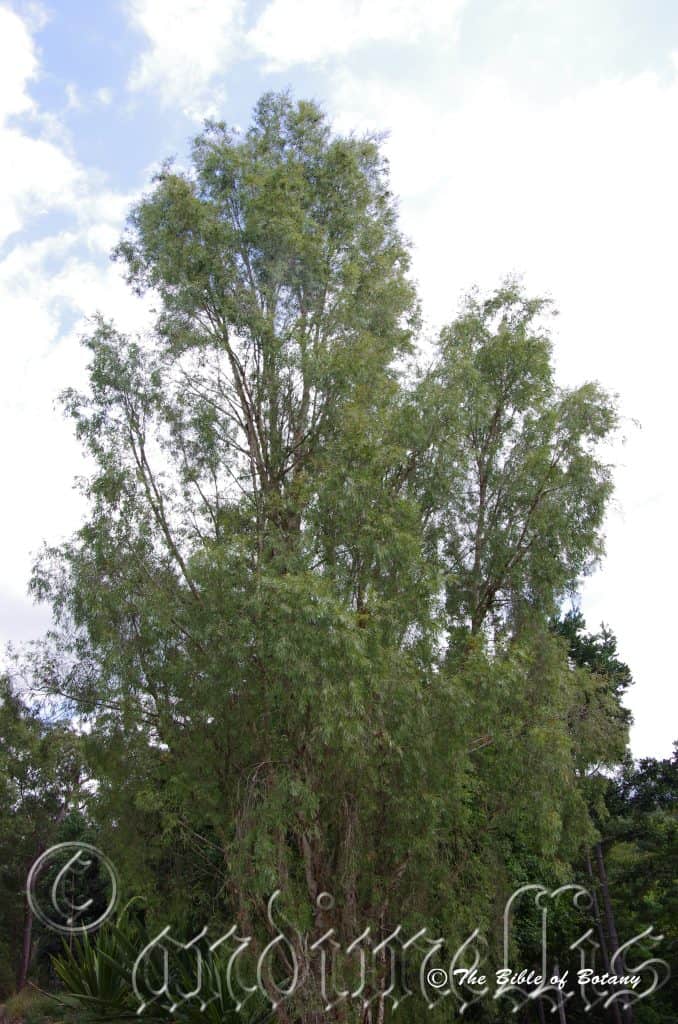
Mount Cootha Botanical Gardens Qld.

Mount Cootha Botanical Gardens Qld.

Mount Cootha Botanical Gardens Qld.
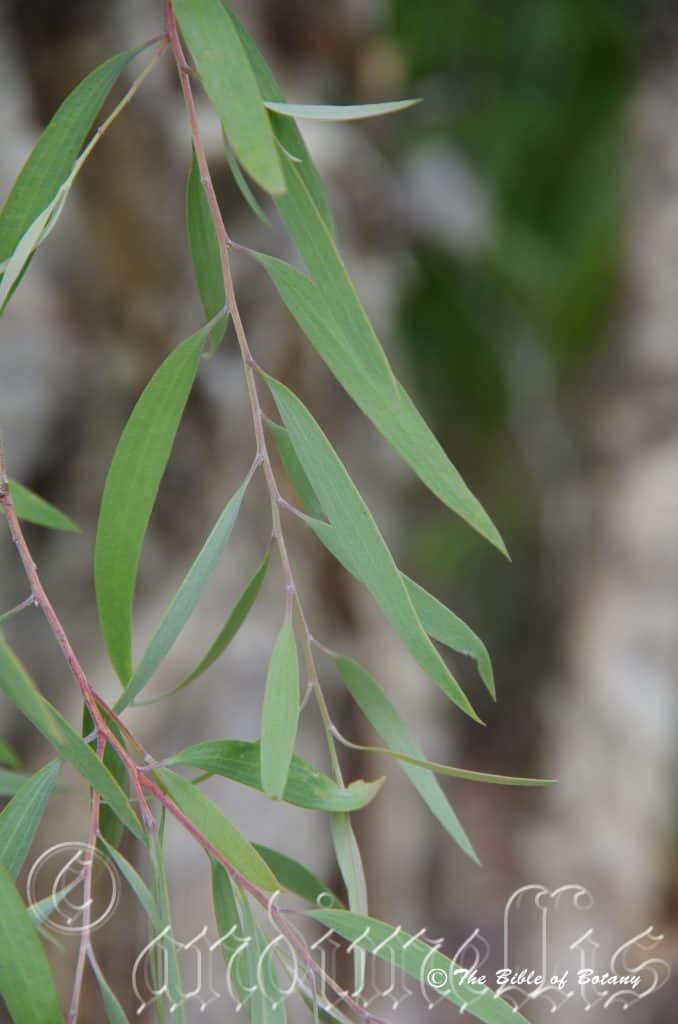
Mount Cootha Botanical Gardens Qld.
Melaleuca argentea
Classification:
Division: Eudicots
Division: Rosids
Order: Myrtales
Family: Myrtaceae
Subfamily: Myrtoideae
Tribe: Melaleuceae
Genus: From Mélas, which is Ancient Greek for black and Leukós, which is Ancient Greek for white. It refers to plants, which usually have white papery barks that are often charred by fire thus the bark is black and white.
Specie: From Aárgillos, which is Greek and later Latin for silver. It refers to structures or organs usually the foliage and stems, which are silvery.
Sub species:
Common Name: Silver Leaf Tea Tree or Silver Paper Bark.
Distribution:
Melaleuca argentea is found in a line north from Sharks Bay in Western Australia around the coastal strips to Townsville in north east Queensland.
https://avh.ala.org.au/occurrences/search?taxa=Melaleuca+argentea#tab_mapView
Habitat:
Melaleuca argentea prefers full sun. It grows adjacent to and in swamps, on flood plains, along estuaries, on coastal flats or along waterways in both fresh and brackish water. The altitude ranges from 5 meter ASL to 400 meters ASL.
The temperatures range from 8 degrees in August to 44 degrees in January.
The rainfalls range from lows of 250mm to an average of 3000mm.
Soil Requirements:
Melaleuca argentea prefers poor to average quality sandy loams, medium gritty clays, light clays or light silts to heavy silts including pindan clays. The soils are usually derived from decomposed sandstone, laterites, shale, sandstones or alluvial river meanders at lower altitudes or river deltas. The soils pH. ranges from 4.5pH to 7.5pH. It tolerates waterlogged soils can stand periodic inundation for long periods as creeks rise after heavy rain and flood plains remain submerged for most of the wet season. Non saline soils to extremely saline soils are tolerated.
Height & Spread:
Wild Plants: 5m to 25m by 6m to 12m.
Characteristics:
Melaleuca argentea trunk is cream, pale creamy fawn thick papery bark. The bark splits as the trunk expands to reveal inner layers and is hard to hard spongy to touch. The branches are cream, pale creamy fawn with a tightly wrapped papery bark. The branchlets are green, while the new shoots are green, red-green burgundy-green. It is densely covered in white sericeous to pannate hairs.
Melaleuca argentea’s alternate leaves are narrow lanceolate to narrow elliptical and measure 70mm to 120mm in length by 8mm to 15mm in width. The leaves hang pendulously from the stems. The asymmetrical base is attenuate on one side and cuneate on the other side of the mid vein while the apex is broadly acuminate. The concolourous laminas are coriaceous and pale blue-green or silvery-green or at times lime green, dull and glabrous. Immature leaves are pale blue-green or silvery-green, dull and densely covered in white caduceous sericeous to pannate hairs. The mid vein and lateral veins are not prominent on either lamina. There are 2 to 4 visible parallel veins either side of the mid vein. The margins are entire, flat and thickened. Oil dots are numerous over the lamina surfaces. The petiole measures 3mm to 10mm in length. The leaves are highly aromatic when crushed.
The inflorescence of Melaleuca argentea are multiple spikes born from the terminal shoots. The rachis is densely covered in silvery-white sericeous to pannate hairs and measure 70mm to 80mm in length. There are 30 to 50 individual flower spikes in the cluster. Individual flowers measure 10mm to 15mm in diameter. The 5 broad elliptical petals are creamy white and measure 2.5mm to 3.8mm in length by 1.5mm to 3mm in width. The long, slender, white, cream or pale yellow style measures 12mm to 22mm in length, while the stigma divides into 4 locules.
The stamens are the most prominent part of the flowers. There are 5 to 7 stamens on each claw. The claws measure 0.5 to 1mm in length while the stamens measure 9mm to 20mm in length. The anthers are white to cream or creamy green and measure 0.6mm to 1mm in length with a gland near the base.
The base of the lime green styles is surrounded by large nectarines and measure 12mm to 22mm in length. The sweet honey scented flowers appear from early July to early November.
Melaleuca argentea’s fruit is a small cylindrical capsule. The capsules measure 3.2mm to 4.5mm in length by 3mm to 4mm in diameter. The enclosed valves measures 1.8mm to 2.5mm in diameter. The coriaceous capsule is dull pale grey to pale fawn. The capsules contain several 1mm long seeds mixed with chaff. The calyx lobes are not persistent.
Wildlife:
Melaleuca argentea supports many native bees, native flies, native beetles and butterflies when in flower. It producers a high quality honey in good quantity so is a very important food source for many insects native bees and nectar eating birds.
Cultivation:
Melaleuca argentea makes an excellent silvery leafed weeping paper bark tree for a park like scene or specimen trees in the garden. It is most suitable for small gardens close to the coast in warm temperate, sub tropical, tropical, monsoonal or even semi-arid gardens provided ample soil moisture is available. As garden subjects they will grow from 10 meters to 15 meters in height by 8 meters to 10 meters in diameter when grown in the open. It is cold tolerant to temperatures at least as low as 2 degrees. It is very fast growing especially with a good fertilizing program and with moisture will grow 2 meters a year.
They can be used for light dappled shade. It is an excellent tree for areas that have drainage problems and slightly saline soils. When planting the trees for a forest try to place them near the edge so the proliferation of honey scented flowers can be fully enjoyed and their natural bushy shape is not interfered with.
It is useful as a backdrop small tree contrasting with smaller finer leaf shrubs that are planted in the foreground. This gives the impression that they like being the center of attention which they deserve. The bark is a strong reason for wanting to plant this tree.
Try using them in an informal or formal manner in front of dark coloured buildings. This will aid in breaking up rigid lines and the weeping foliage and branchlets will soften the structures overall appearance. At the same time they can be used to highlight the contrasts between the two. This can be done by planting the trees together with unequal gaps, free flowing curves to accentuate height and depth. Wider spacing where the building in the background is seen as dappled specks will soften it and where it is planted closer together will give a bolder contrast between the two. If shrubs are required then try using some of the finer leaf Melaleucas or Leptospermums below which have red or pink flowers. The foliages would also be of great interest and contrast being smaller and deep green or bright lime greens against the silver of this Melaleuca.
Avoid planting them adjacent to where cars are regularly parked as they drop a lot of nectar when birds are feeding from the flowers in spring.
Propagation:
Seeds: Melaleuca argentea seeds can be sown directly into a seed raising mix. Cover the seeds with 1mm to 2mm of fine weed free mulch and keep moist. Place the tray in a warm sunny position. When the seedlings are 15mm to 20mm tall, prick them out and plant them into 20mm native tubes using a good organic mix.
When the seedlings are 70mm to 90mm tall, prick them out and plant them into 50mm native tubes using a good organic mix or plant them out into their permanent positions.
Once the seedlings reach 150mm to 200mm in height they can be planted out into their permanent position.
Cuttings: Use 100mm to 150mm long half ripened material when growing from cuttings from the present season’s growth. Take them in warmer months of the year. Remove half the leaves from the bottom section being careful not to tear the bark.
1 Prepare the cutting mix by adding one third sharp clean river sand, one third peat and one third perlite. These ingredients are sterilize,
2 Select good material from non diseased plants,
3 Select semi green stems for cuttings. Look for a stem with two or three nodes,
4 Place the cutting on a flat, hard surface, and make a clean cut down one side of the cutting at the base for 10mm with a sharp sterile knife or razor blade. – This scarification of the node will increase the chances of roots emerging from this spot. Now remove all but one or two the leaves, leaving the apex leaves in tact. If the leaves are very large in proportion to the stem, cut off the apical halves.
5 Fill a saucer with water, and place a little medium strength rooting hormone into another container like a milk bottle top. Dip the node end of the cutting into the water and then into the rooting hormone. Tap off any excess hormone,
6 Use a small dipple stick or old pencil to poke a hole into the soilless potting mix. Ensure the hole is slightly larger than the stem diameter and be careful not to wipe the rooting hormone off the cuttings base, place the cuttings in a pattern ensuring the cuttings are not touching each other,
7 I like to place the pots in Plastic bags to help maintain temperature and moisture. Place in a semi shaded place like under 50mm shade cloth.
8 When the cuttings have struck, open the bag to allow air circulation for a few days to a week,
9 Once hardened off remove the cuttings from the bag and allow to further hardening for a few more days,
10 Transplant into a good potting mix to grow on.
Fertilize using seaweed, fish emulsion or organic chicken pellets soaked in water on an alternate basis. Fertilize every two months until the plants are established then twice annually in early September or March to maintain health, vitality and better flowering.
Further Comments from Readers:
Hi reader, it seems you use The Bible of Botany a lot. That’s great as we have great pleasure in bringing it to you! It’s a little awkward for us to ask, but our first aim is to purchase land approximately 1,600 hectares to link several parcels of N.P. into one at The Pinnacles NSW Australia, but we need your help. We’re not salespeople. We’re amateur botanists who have dedicated over 30 years to saving the environment in a practical way. We depend on donations to reach our goal. If you donate just $5, the price of your coffee this Sunday, We can help to keep the planet alive in a real way and continue to bring you regular updates and features on Australian plants all in one Botanical Bible. Any support is greatly appreciated. Thank you.
In the spirit of reconciliation we acknowledge the Bundjalung, Gumbaynggirr and Yaegl and all aboriginal nations throughout Australia and their connections to land, sea and community. We pay our respect to their Elders past, present and future for the pleasures we have gained.
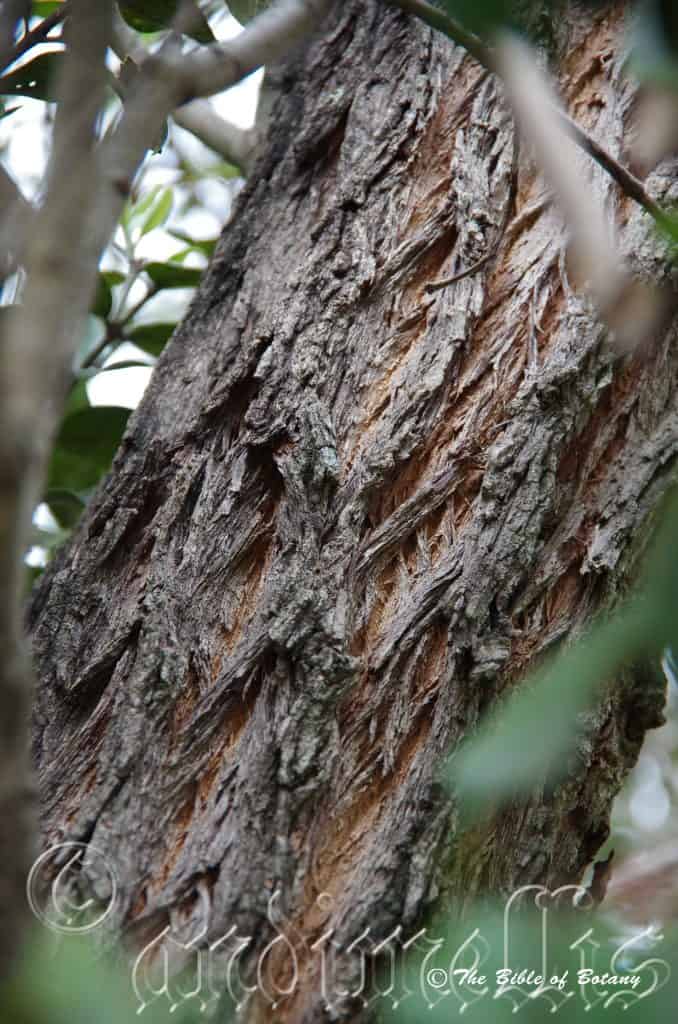
Cooparoo Qld.
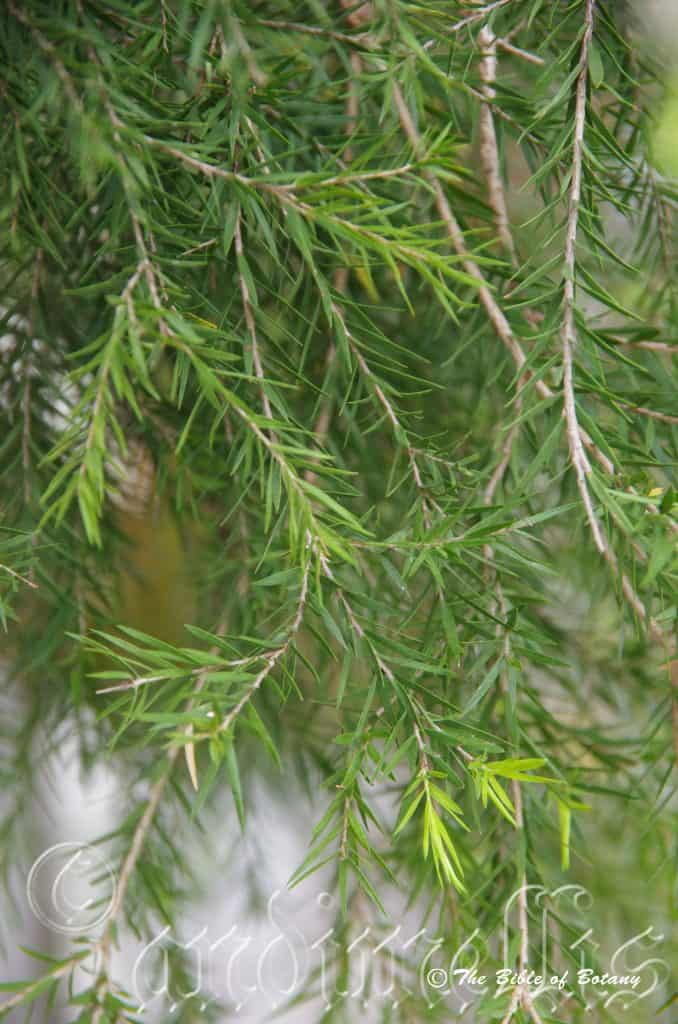
Cooparoo Qld.
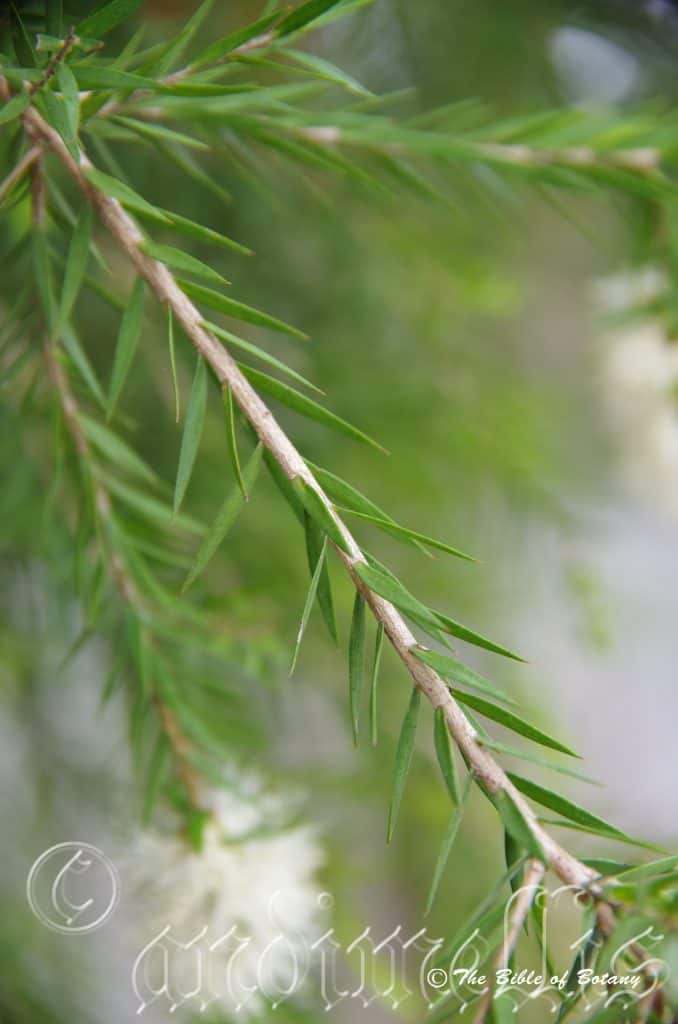
Cooparoo Qld.

Cooparoo Qld.
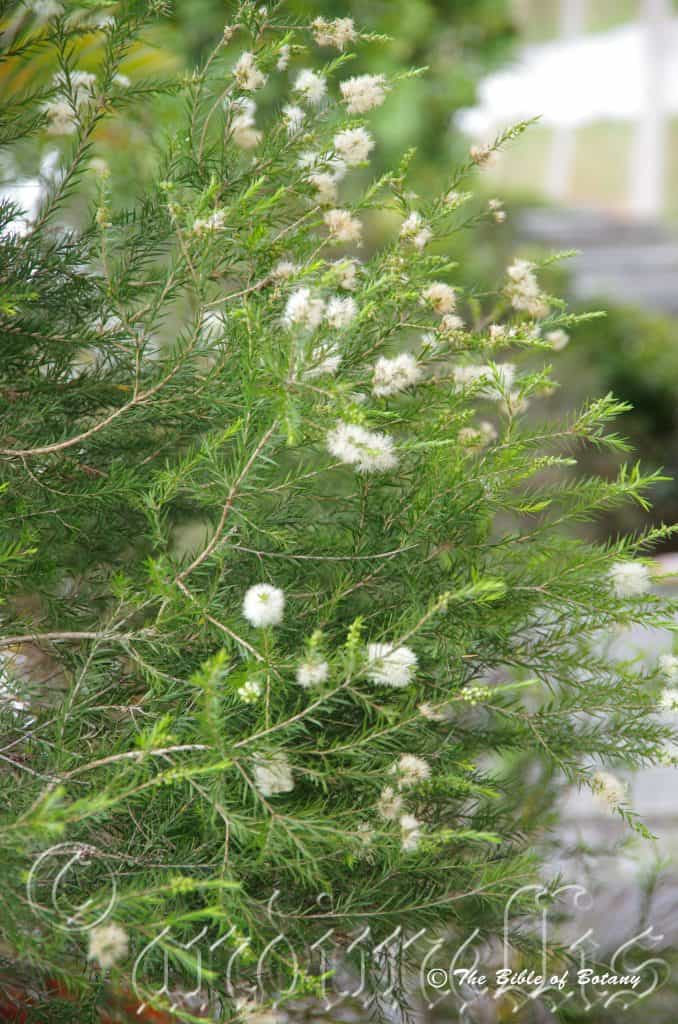
Cooparoo Qld.
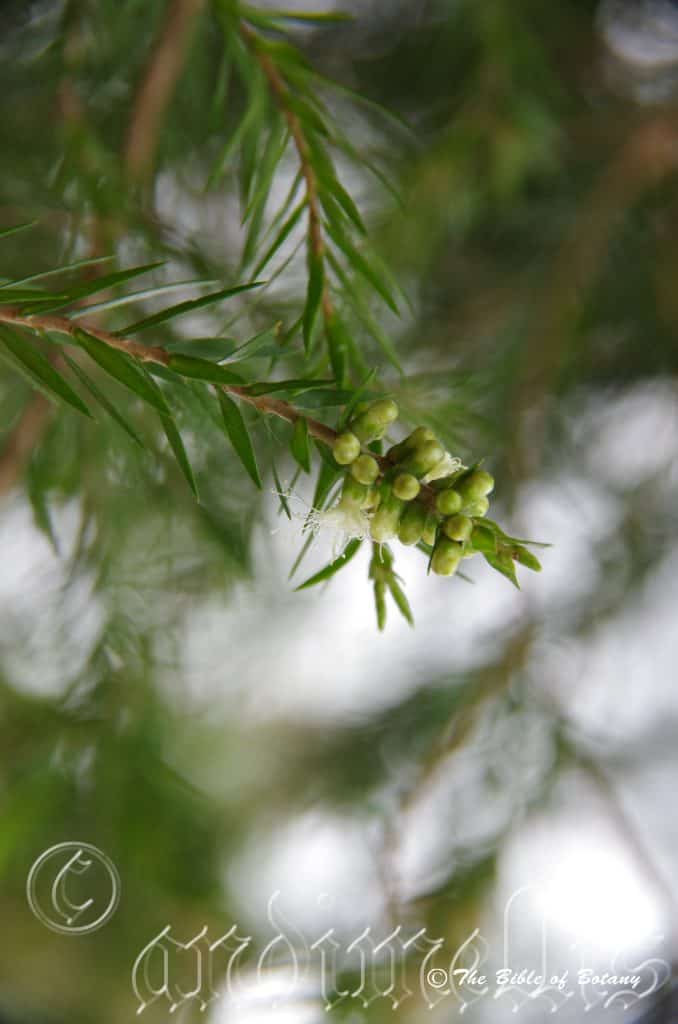
Cooparoo Qld.

Cooparoo Qld.
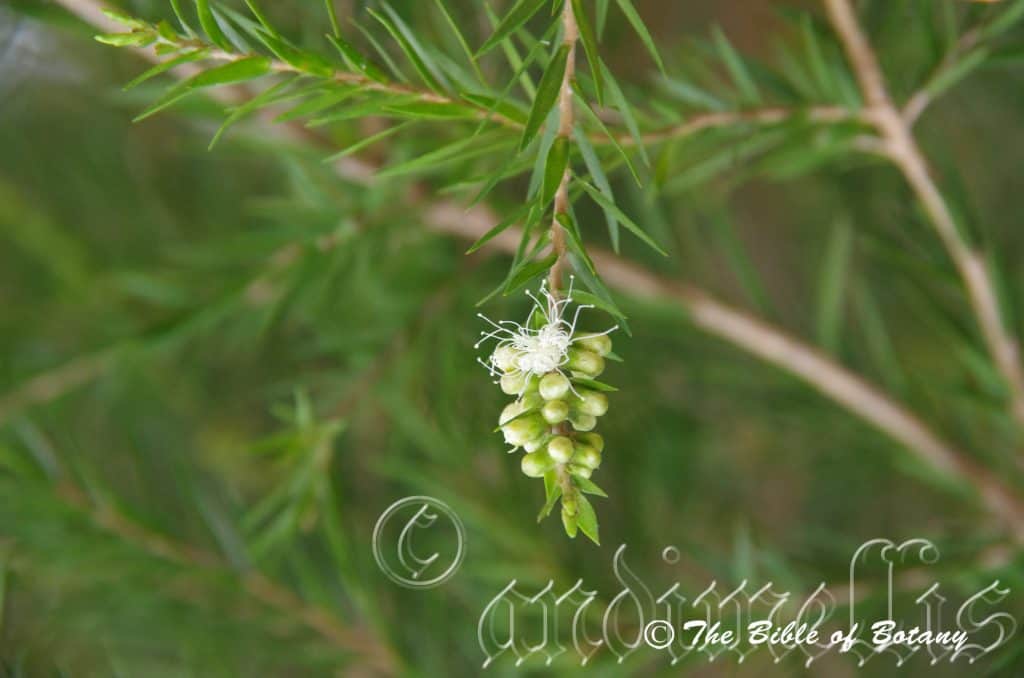
Cooparoo Qld.

Cooparoo Qld.
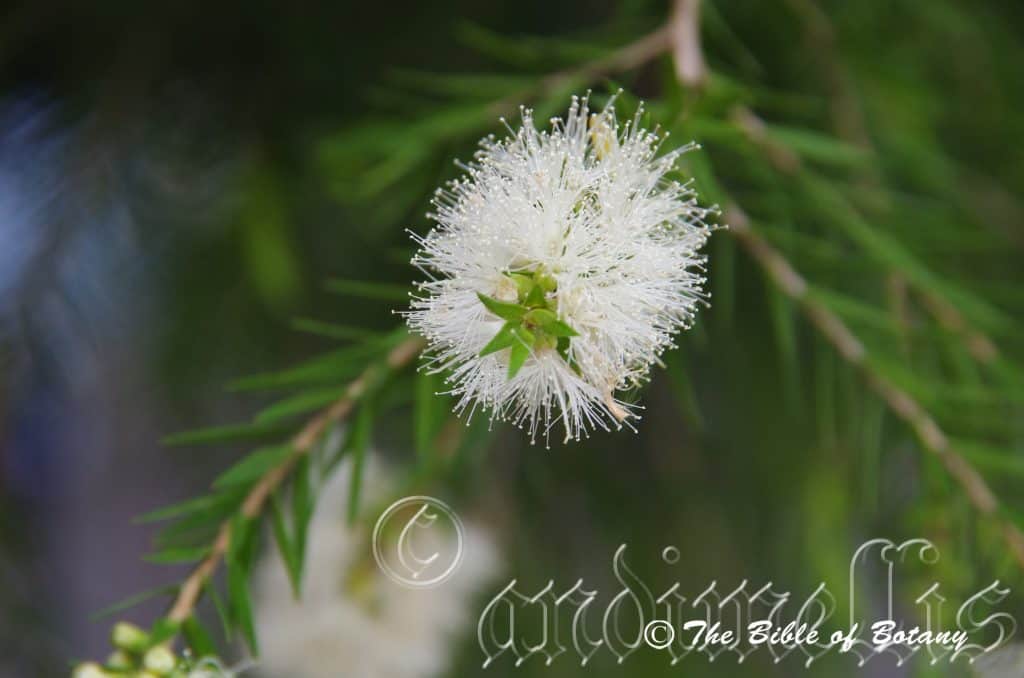
Cooparoo Qld.
Melaleuca armillaris
Classification:
Division: Eudicots
Division: Rosids
Order: Myrtales
Family: Myrtaceae
Subfamily: Myrtoideae
Tribe: Melaleuceae
Genus: From Mélas, which is Ancient Greek for black and Leukós, which is Ancient Greek for white. It refers to plants, which usually have white papery barks that are often charred by fire thus the bark is black and white.
Specie: From Armilla, which is Latin for a bracelet. It refers to flowers, which surround the petiole like a bracelet.
Sub species:
Common Name: Honey Myrtle or Bracelet Honey Myrtle.
Distribution:
Melaleuca armillaris is found in several disjunct populations in southern Australia from the Barwon River in Southern Queensland and Northern New South Wales. It is then found south from Taree on the eastern side of the Great Dividing Range south to Orbost in Victoria.
It is found on the eastern side of Tasmania including the eastern Bass Strait Islands to Wilsons Promontory including Flinders Island.
Two populations are found in South Australia one from Kangaroo Island north to Nuriocpta and the second from Streaky Bay to Cowell and North to near Pureba Conservation Park and Yardeaon Eyre Peninsula. There is a small outlying population on the coast between Millicent and Robe in the south.
https://avh.ala.org.au/occurrences/search?taxa=Melaleuca+armillaris#tab_mapView
Habitat Aspect Climate:
Melaleuca armillaris prefers full sun. It grows adjacent to coastal ranges, on headlands and open plains on heathlands in low depressions where water lies for long periods after rain. The altitude ranges from 5 meter ASL to 300 meters ASL.
The temperatures range from 0 degrees in August to 36 degrees in January.
The rainfalls range from lows of 150mm to an average of 1200mm.
Soil Requirements:
Melaleuca armillaris prefers poor to average quality silty loams to medium clays. The soils are usually derived from decomposed sandstone, laterites, shale, granites. The soils pH. ranges from 6pH to 7pH. It tolerates waterlogged soils and seasonal inundations for extended periods. None saline soils to moderately saline soils are tolerated.
Height & Spread:
Wild Plants: 3m to 5m by 3m to 5m.
Characteristics:
Melaleuca armillaris grows as a large shrub with a rough grey or grey-brown furrowed, hard and corky bark. The branches are pale grey and scabrous. The branchlets are pale grey, while the new shoots are green and glabrous.
Melaleuca armillaris’s alternate leaves are narrowly linear and measure 12mm to 25mm in length by 1mm to 1.4mm in width. The base is attenuate while the apex is recurved and acute. The concolourous laminas are pale grass-green to sea-green, dull and glabrous. Immature leaves are grass-green, dull and glabrous. The margins are entire. The petiole measures 1mm to 2mm in length.
The inflorescence of Melaleuca armillaris are multiple spikes born from the terminal shoots. They grow out before the buds open. The rachis is glabrous to densely covered in white pilose hairs and measures 30mm to 70mm in length. There is one flower on each bract. There are 20 to 50 individual flowers on a spike. They measure 13mm to 17mm in diameter. The flowers are born singularly with in each bract. The 5 ovate petals are creamy white to pale mauve and measure 2mm to 3mm in length by 2mm to 3mm in width.
The stamens are the most prominent part of the flowers. The claws measure 5mm to 6mm in length overall while the 16 to 18 white, cream or pale mauve stamens are opposite the petals on each claw. The filaments measure 8mm to 9mm in length. The anthers are white and measure 0.6mm to 1mm in length.
The long, slender, white style measures 6mm to 8mm in length, while the stigma divides into 4 locules. The base of the style is surrounded by the nectaries. The sweet honey scented flowers appear from late November to early late January.
Melaleuca armillaris’s fruit is a small squat, glabrous cylinder shaped capsule. The capsules often have compressed sides due to being packed tightly along the stem. The capsules measure 2.5mm to 3.5mm in length by 3.5mm to 5mm in diameter. The enclosed orifice measures 1.5mm to 3.5mm across. The woody capsule is dull pale grey. The capsules may contain hundreds of seeds and chaff. The calyx lobes are persistent on the apex of the capsules.
Wildlife:
Melaleuca armillaris supports many native bees, native flies, native beetles and butterflies when in flower. It also supports small honeyeaters which also use the dense foliage as a safe corridor when travelling between plants
Cultivation:
Melaleuca armillaris makes an excellent dense foliage plant in small and medium size gardens. It is very suitable on all soil types. It is most suitable for small gardens close to the coast in temperate, sub tropical or even semi-arid gardens provided ample soil moisture is available. As garden subjects it will grow from 3 meters to 4 meters in height by 3 meters to 4 meters in width when grown in the open.
It can be pruned to a smaller shrub if desired. It is cold tolerant to temperatures at least as low as 4 degrees once established. It is very fast growing especially with a good fertilizing program and with moisture will grow 1.5 meters a year in the early stages. They will drop a lot of the foliage when stressed during drought times. If this does occur then judicial pruning with a double dose of our recommended fertilizer and a good soaking will assist the plants to retain most of their former beauty.
Try using them in an informal or formal manner in front of buildings. This will aid in breaking up rigid lines and soften the structures overall appearance. At the same time they can be used to highlight the contrasts between the two. This can be done by planting them between taller narrow type trees with larger leaves. Plant them together with unequal gaps and free flowing curves to accentuate height and depth. Use wider spacing where the building in the background is seen as dappled specks will soften it and where it is planted closer together will give a bolder contrast between the two. The foliages would also be of great interest and contrast.
It also makes an ideal hedge along wide drive ways and fence lines in depressions where water may lie for long periods before drying out for several months.
It makes an ideal plant for Bonsai collectors. I have seen some very twisted gnarled specimens on rocky ledges along creeks. It is one of the few Melaleucas I have grown and sold for this purpose.
Propagation:
Seeds: Melaleuca armillaris seeds can be sown directly into a seed raising mix. Cover the seeds with 1mm to 2mm of fine weed free mulch and keep moist. Place the tray in a warm sunny position. When the seedlings are 15mm to 20mm tall, prick them out and plant them into 20mm native tubes using a good organic mix.
When the seedlings are 70mm to 90mm tall, prick them out and plant them into 50mm native tubes using a good organic mix or plant them out into their permanent positions.
Once the seedlings reach 150mm to 200mm in height they can be planted out into their permanent position.
Cuttings: Use 100mm to 150mm long half ripened material when growing from cuttings from the present season’s growth. Take them in warmer months of the year. Remove half the leaves from the bottom section being careful not to tear the bark.
1 Prepare the cutting mix by adding one third sharp clean river sand, one third peat and one third perlite. These ingredients are sterilize,
2 Select good material from non diseased plants,
3 Select semi green stems for cuttings. Look for a stem with two or three nodes,
4 Place the cutting on a flat, hard surface, and make a clean cut down one side of the cutting at the base for 10mm with a sharp sterile knife or razor blade. – This scarification of the node will increase the chances of roots emerging from this spot. Now remove all but one or two the leaves, leaving the apex leaves in tact. If the leaves are very large in proportion to the stem, cut off the apical halves.
5 Fill a saucer with water, and place a little medium strength rooting hormone into another container like a milk bottle top. Dip the node end of the cutting into the water and then into the rooting hormone. Tap off any excess hormone,
6 Use a small dipple stick or old pencil to poke a hole into the soilless potting mix. Ensure the hole is slightly larger than the stem diameter and be careful not to wipe the rooting hormone off the cuttings base, place the cuttings in a pattern ensuring the cuttings are not touching each other,
7 I like to place the pots in Plastic bags to help maintain temperature and moisture. Place in a semi shaded place like under 50mm shade cloth.
8 When the cuttings have struck, open the bag to allow air circulation for a few days to a week,
9 Once hardened off remove the cuttings from the bag and allow to further hardening for a few more days,
10 Transplant into a good potting mix to grow on.
Fertilize using seaweed, fish emulsion or organic chicken pellets soaked in water on an alternate basis. Fertilize every two months until the plants are established then twice annually in early September or March to maintain health, vitality and better flowering.
Further Comments from Readers:
Hi reader, it seems you use The Bible of Botany a lot. That’s great as we have great pleasure in bringing it to you! It’s a little awkward for us to ask, but our first aim is to purchase land approximately 1,600 hectares to link several parcels of N.P. into one at The Pinnacles NSW Australia, but we need your help. We’re not salespeople. We’re amateur botanists who have dedicated over 30 years to saving the environment in a practical way. We depend on donations to reach our goal. If you donate just $5, the price of your coffee this Sunday, We can help to keep the planet alive in a real way and continue to bring you regular updates and features on Australian plants all in one Botanical Bible. Any support is greatly appreciated. Thank you.
In the spirit of reconciliation we acknowledge the Bundjalung, Gumbaynggirr and Yaegl and all aboriginal nations throughout Australia and their connections to land, sea and community. We pay our respect to their Elders past, present and future for the pleasures we have gained.

Running Creek Qld.
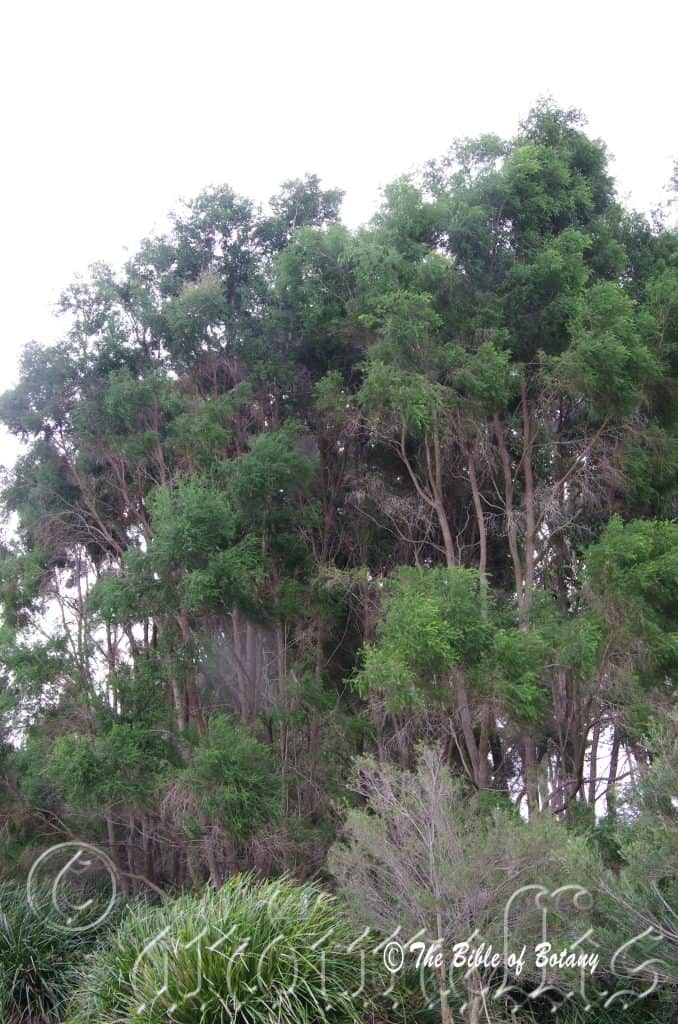
Running Creek Qld.
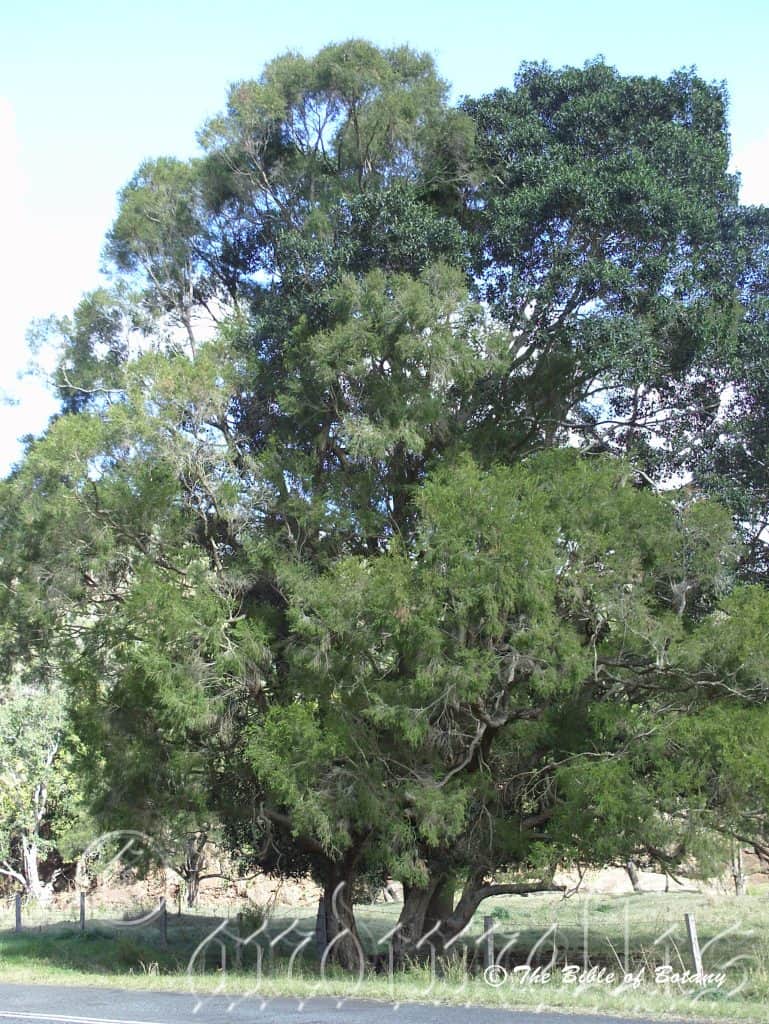
Running Creek Qld.

Sha Ping Ba China

Sha Ping Ba Botanic Gardens Chong Qing China
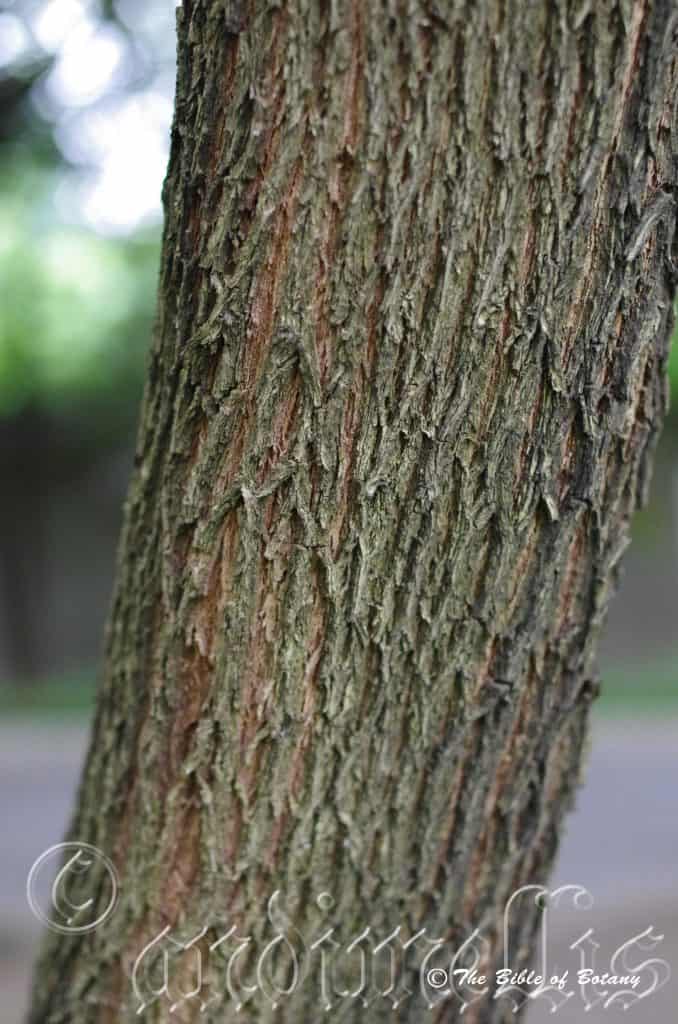
Sha Ping Ba China

Sha Ping Ba Botanic Gardens Chong Qing China
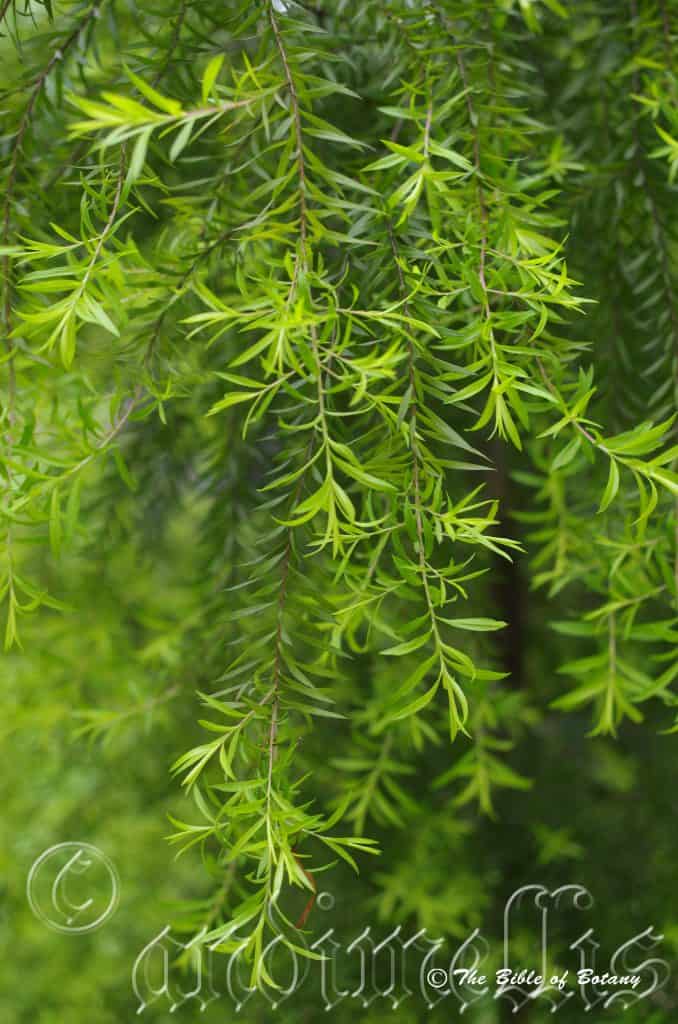
Sha Ping Ba Botanic Gardens Chong Qing China
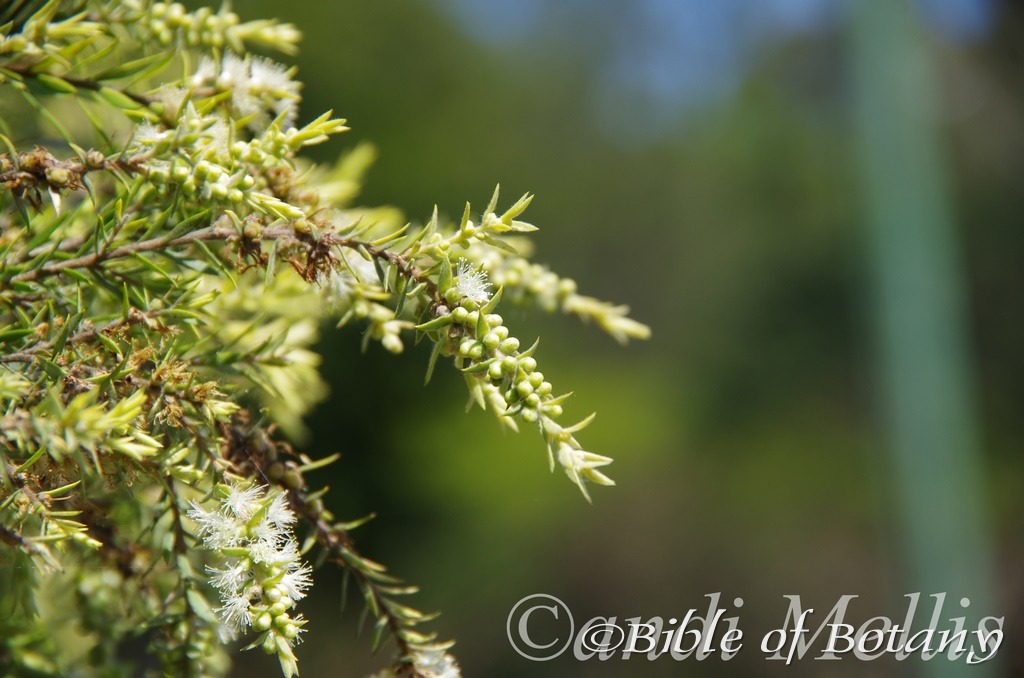
Grange Qld.
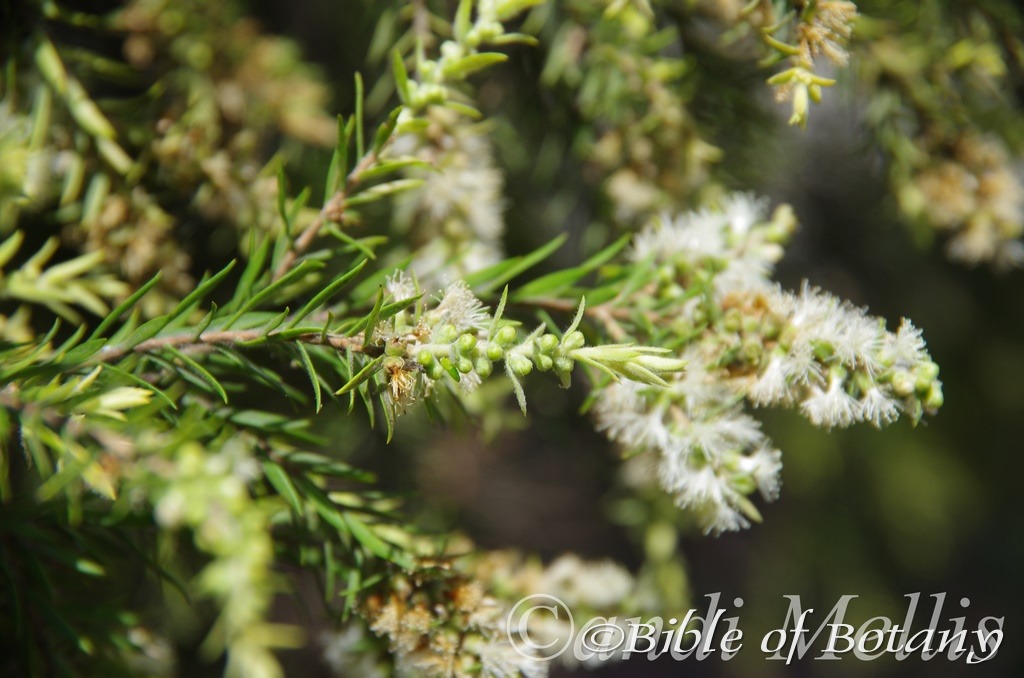
Grange Qld.

Grange Qld.
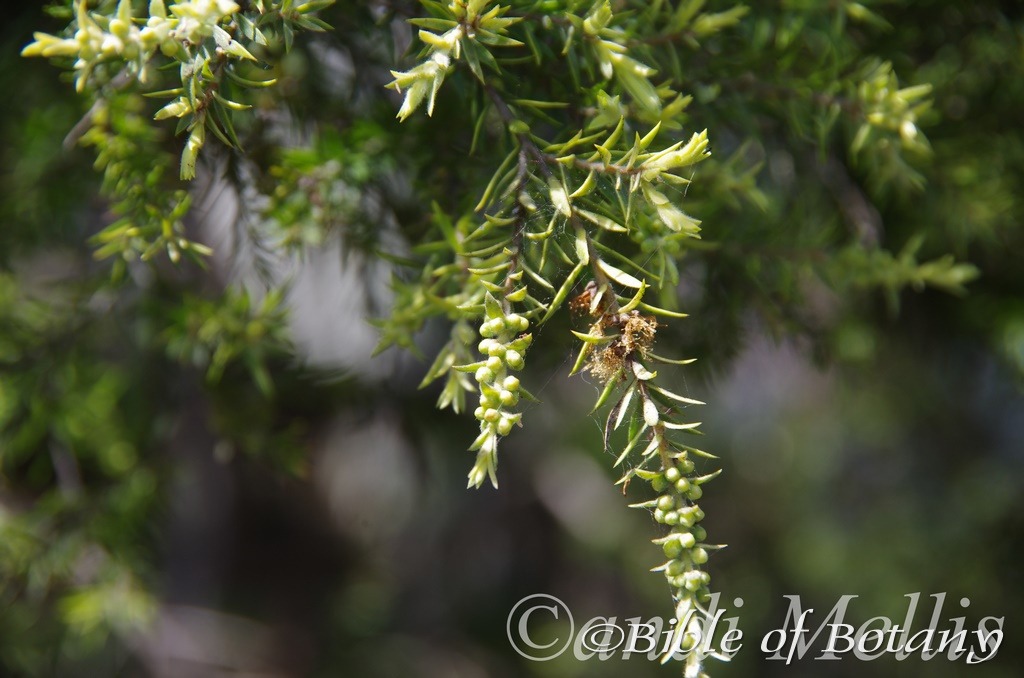
Grange Qld.
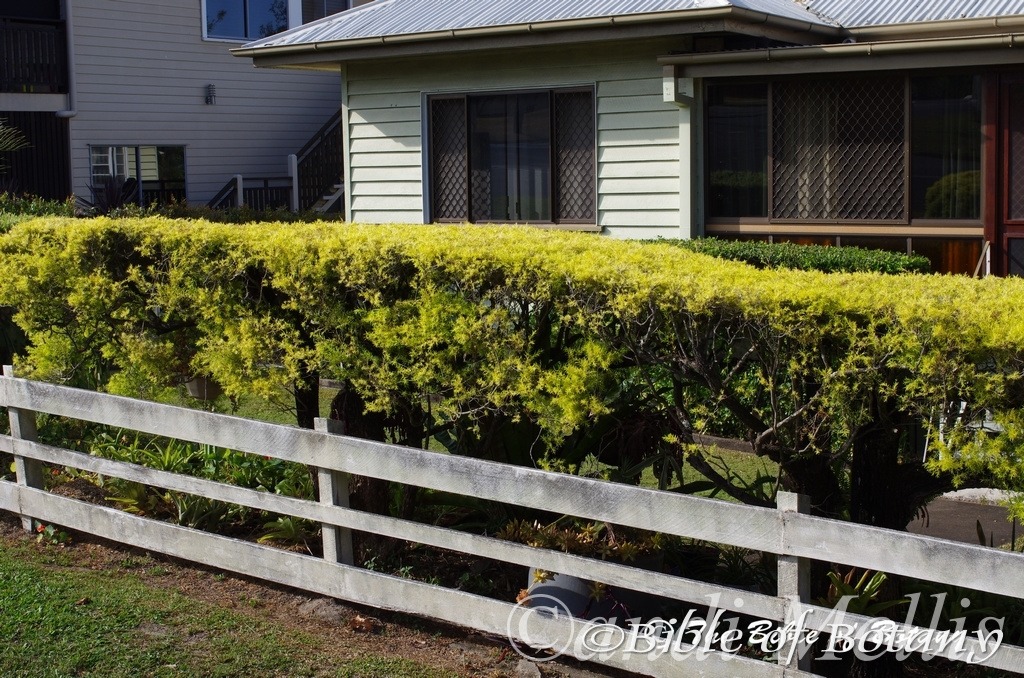
Norman Park Qld.

Sha Ping Ba Botanic Gardens Chong Qing China
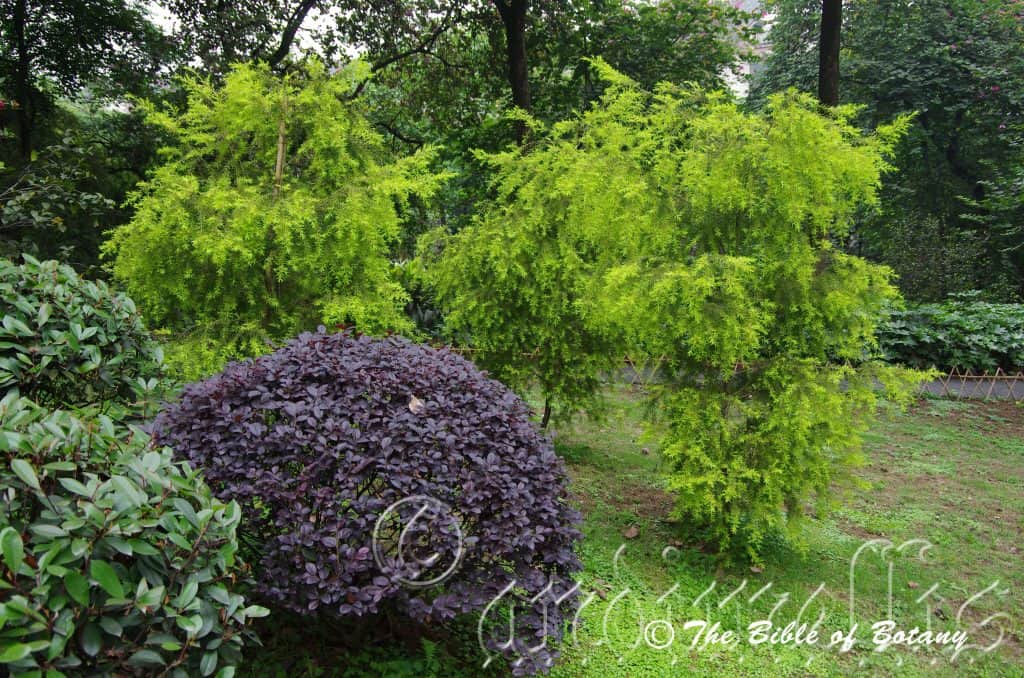
Sha Ping Ba Botanic Gardens Chong Qing China

Mitchleton Qld.
Melaleuca bracteata
Classification:
Division: Eudicots
Division: Rosids
Order: Myrtales
Family: Myrtaceae
Subfamily: Myrtoideae
Tribe: Melaleuceae
Genus: From Mélas, which is Ancient Greek for black and Leukós, which is Ancient Greek for white. It refers to plants, which usually have white papery barks that are often charred by fire thus the bark is black and white.
Specie: From Bractea, which is Latin for a thin plate of shiny metal. It refers to special type of leaves which surround the flower or pedicel and are further from the flower than petals and bracteoles.
Sub species:
Common Name: Black Tea Tree or Golden Tea Tree.
Distribution:
Melaleuca bracteata is a widespread species which is found north of a line from Exmouth in central coastal Western Australia to the Macleay River in north eastern New South Wales
https://avh.ala.org.au/occurrences/search?taxa=Melaleuca+bracteata#tab_mapView
Habitat Aspect Climate:
Melaleuca bracteata prefers full sun. It grows in gorges and along fresh water, watercourses on creeks, streams or river meanders. The altitude ranges from 200 meter ASL to 750 meters ASL.
The temperatures range from minus 2 degrees in August to 42 degrees in January.
The rainfalls range from lows of 150mm to an average of 2800mm. Rainfall is not the most important criteria as they derive most of their moisture from the river beds and creeks that they inhabit.
Soil Requirements:
Melaleuca bracteata prefers poor to better quality sands to sandy loams. The soils are usually derived from decomposed sandstone shale, black basalt, brown basalt or heavier granitic soils. The soils pH. ranges from 6pH to 7pH. It tolerates waterlogged soils and prefers sites that suffer from seasonal inundation and flooding. Non saline soils to moderately saline soils are tolerated.
Height & Spread:
Wild Plants: 6m to 15m by 2m to 12m.
Characteristics:
Melaleuca bracteata grows as a small to medium tree with deep grey or deep grey-brown, hard and longitudinally fissured bark. The branches are deep grey and scabrous. The branchlets are deep grey, while the new shoots are bright grass-green and glabrous or sparsely covered in white caduceus puberulent hairs.
Melaleuca bracteata’s alternate leaves are narrow ovate to ovate and measure 10mm to 28mm in length by 1.5mm to 3mm in width. The base is tapering while the apex is narrowly acute to narrowly acuminate. The concolourous laminas are grass-green or sea-green, dull and glabrous. Immature leaves are lime-green to grass-green, dull and glabrous or sparsely covered in white pubescent hairs. There are 5 to 11 indistinct parallel veins. The margins are entire and flat. The petiole is sessile. The leaves are slightly aromatic when crushed.
The inflorescence of Melaleuca bracteata are multiple spikes born from the terminal shoots or short lateral shoots. They grow out before the flowers open or before they finish blooming. The rachis is covered in white pulverulent hairs and measures 15mm to 35mm in length. The flowers are born singularly or in threes with in each bract. There are 12 to 25 individual flowers on a spike. They measure 8mm to 11mm in diameter. The 5 orbicular petals are creamy white and measure 1.5mm to 2mm in length by 2mm to 2.5mm in width. It is shed prior to the stamens being fully developed.
The stamens are the most prominent part of the flowers. The 5 claws are opposite the petals and measure 3mm to 4mm in length. There are 16 to 25 white stamens on each claw. The filaments measure 7mm to 8mm in length. The anthers are white to pale cream.
The long, slender, white style measures 10mm to 12mm in length, while the stigma divides into 4 locules. The base of the style is surrounded by the nectaries. The sweet honey scented flowers appear from September to early November but may have some flowers late in the seasons when the seasons are favourable.
Melaleuca bracteata’s fruit is a small, glabrous globular shaped capsule. The capsules measure 2.5mm to 3.5mm long by 2mm to 3mm in diameter. The enclosed orifice measures 2mm in diameter. The coriaceous capsule is dull pale grey to deep grey. The capsules contain both seeds and chaff. The seeds are brown, measure 0.6 to 0.8mm in length and look swollen compared to the chaff. The calyx lobes are persistent at the apex of the capsules.
Wildlife:
Melaleuca bracteata supports many native bees, native flies, native beetles and butterflies when in flower. It also supports small honeyeaters which scurry over the flowers and seek protection from the bushy foliage.
Cultivation:
Melaleuca bracteata makes an excellent dense foliage hedge or specimen shrubs in small and medium size gardens. It is suitable on all soil types. It is most suitable for small, medium and large gardens close to the coast, on mountains or inland in temperate, sub tropical, tropical monsoonal or arid gardens.
There are many hybrids on the market with foliages varying from brilliant green to deep yellow. There are tall slim plants to low growing dwarf shrubs or low spreading shrubs. As garden subjects they will grow from 1 meter to 15 meters in height by 2 meters to 10 meters in diameter when grown in the open depending on cultivar selected. It is cold tolerant to temperatures at least as low as minus 2 degrees once established.
It is very fast growing especially with a good fertilizing program and with a little moisture will grow 1 meter a year. They will drop a lot of the foliage when stressed during drought times. If this does occur then judicial pruning with a double dose of our recommended fertilizer and a good soaking will assist the plants to retain most of their former beauty.
It can be used for light dappled shade however the golden yellow forms will lose that lustre and deep colour. It is an excellent trees or shrubs for areas that have drainage problems and slightly saline soils. When planting the trees for a forest try to place them near the edge so the foliage can be fully enjoyed and their natural bushy shape is not interfered with. The deep yellow foliage forms are particularly striking when mixed with broad deep green foliages or scattered in a heath setting where a mosaic pattern is required
Try using them in an informal or formal manner in front of buildings. This will aid in breaking up rigid lines and soften the structures overall appearance. At the same time they can be used to highlight the contrasts between the two. This can be done by planting them between taller narrow type trees with larger leaves. Plant them together with unequal gaps and free flowing curves to accentuate height and depth. Use wider spacing where the building in the background is seen as dappled specks will soften it and where it is planted closer together will give a bolder contrast between the two. The tall golden form is particularly good where the buildings have a dark exterior.
It also makes an ideal hedge along wide drive ways and fence lines in depressions where water may lie for long periods before drying out for several months.
It makes an ideal plant for Bonsai collectors and are easy to work for beginners giving some excellent gnarled shapes at an early age.
Propagation:
Seeds: Melaleuca bracteata seeds can be sown directly into a seed raising mix. Cover the seeds with 1mm to 2mm of fine weed free mulch and keep moist. Place the tray in a warm sunny position. When the seedlings are 15mm to 20mm tall, prick them out and plant them into 20mm native tubes using a good organic mix.
When the seedlings are 70mm to 90mm tall, prick them out and plant them into 50mm native tubes using a good organic mix or plant them out into their permanent positions.
Once the seedlings reach 150mm to 200mm in height they can be planted out into their permanent position.
Cuttings: Cuttings must be used if the golden dwarf or upright forms are wanted. Use 50mm to 60mm long tip cuttings or half ripened material when growing from cuttings from the present season’s growth. Take them in mid-autumn or early spring following the last frosts and immediately after flowering. Remove half the leaves from the bottom section being careful not to tear the bark. Take a 10mm slice off the bark from the bottom of the cutting on one side. Using an appropriate rooting hormone, dip the cutting in and place it in a moist sterile seed raising mix. When the cuttings have obviously struck and have developed good roots treat them the same as you would for seedlings.
Fertilize using Seaweed, fish emulsion or a half strength solution of organic chicken pellets soaked in water on an alternate basis. Fertilize every month until the plants are established then once a year in early spring or late autumn for continual health and vitality.
Further Comments from Readers:
Hi reader, it seems you use The Bible of Botany a lot. That’s great as we have great pleasure in bringing it to you! It’s a little awkward for us to ask, but our first aim is to purchase land approximately 1,600 hectares to link several parcels of N.P. into one at The Pinnacles NSW Australia, but we need your help. We’re not salespeople. We’re amateur botanists who have dedicated over 30 years to saving the environment in a practical way. We depend on donations to reach our goal. If you donate just $5, the price of your coffee this Sunday, We can help to keep the planet alive in a real way and continue to bring you regular updates and features on Australian plants all in one Botanical Bible. Any support is greatly appreciated. Thank you.
In the spirit of reconciliation we acknowledge the Bundjalung, Gumbaynggirr and Yaegl and all aboriginal nations throughout Australia and their connections to land, sea and community. We pay our respect to their Elders past, present and future for the pleasures we have gained.
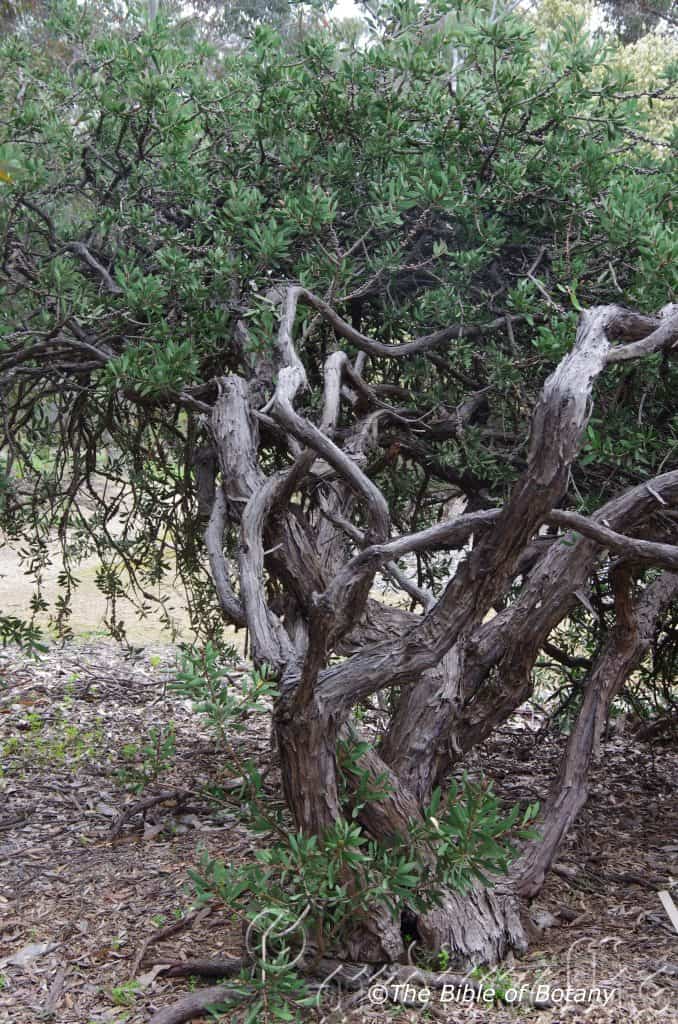
National Botanic Gardens ACT
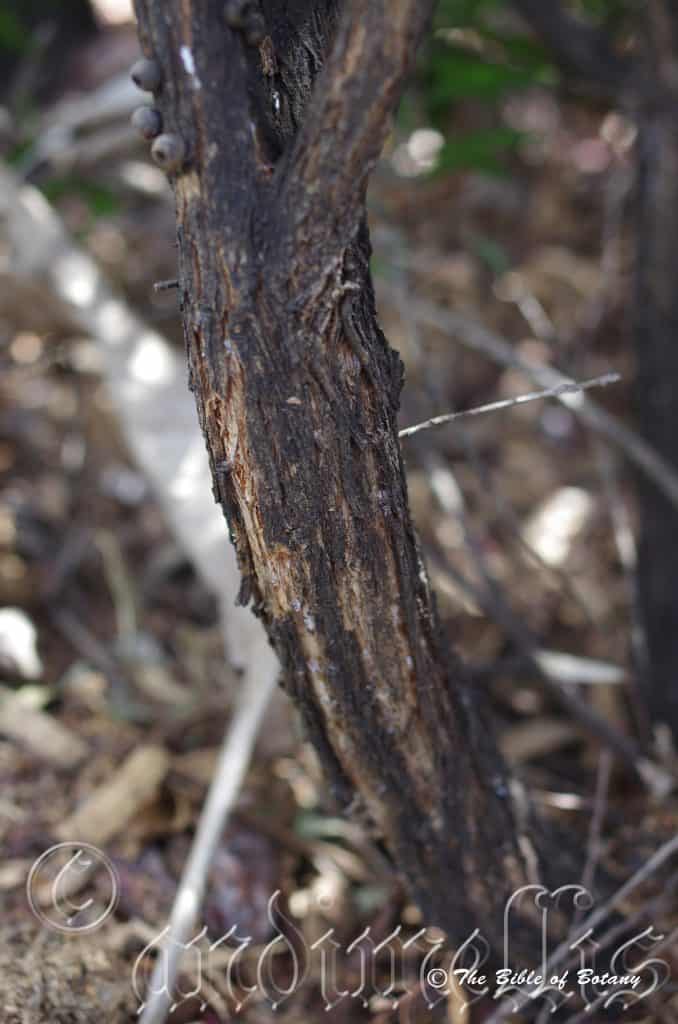
Everton Park Qld.
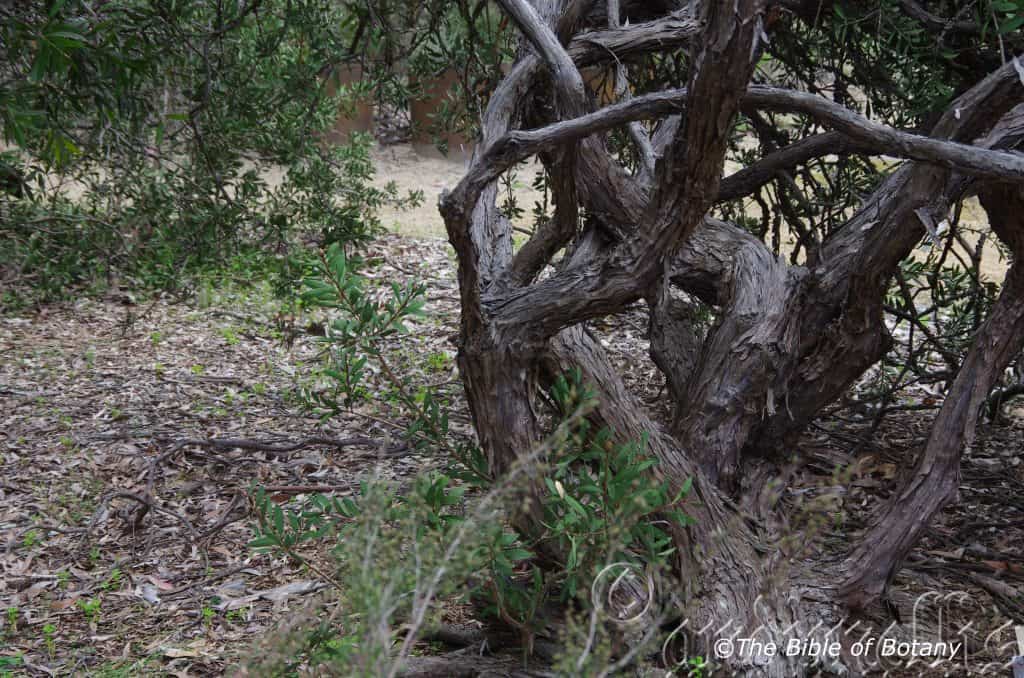
National Botanic Gardens ACT
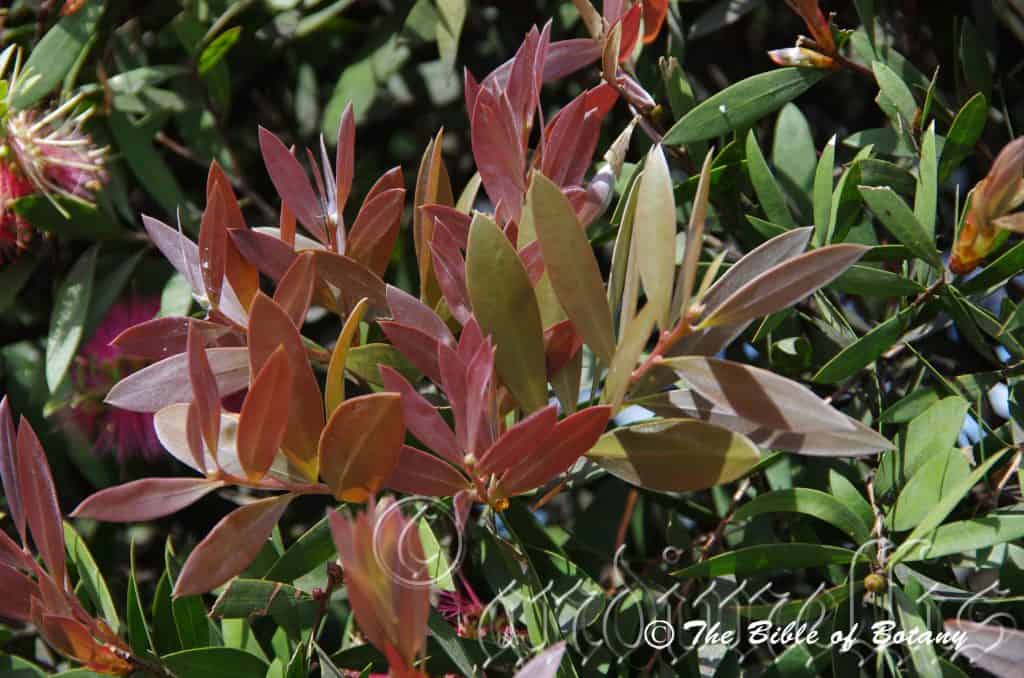
Everton Park Qld.
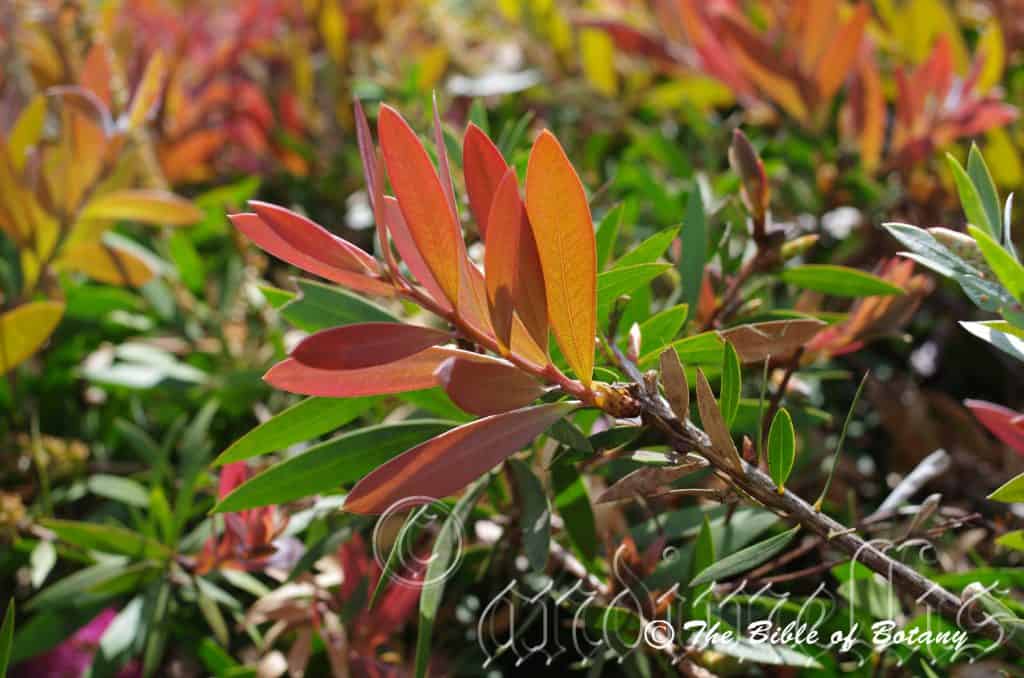
Everton Park Qld.
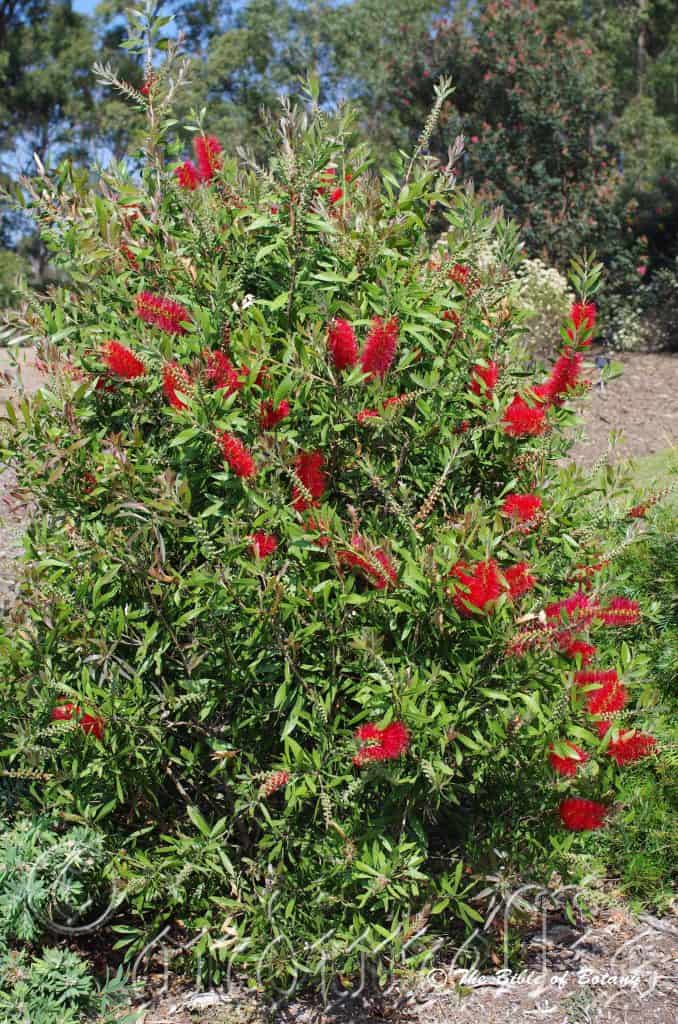
Mount Cootha Botanical Gardens Qld.
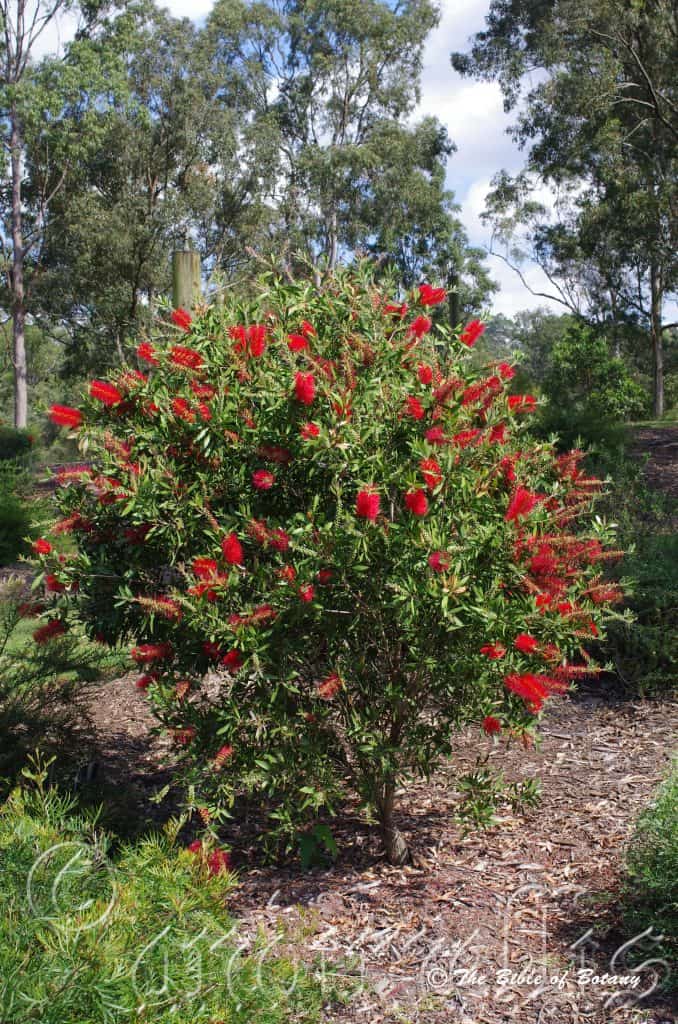
Mount Cootha Botanical Gardens Qld.

Mount Cootha Botanical Gardens Qld.

Kendall NSW
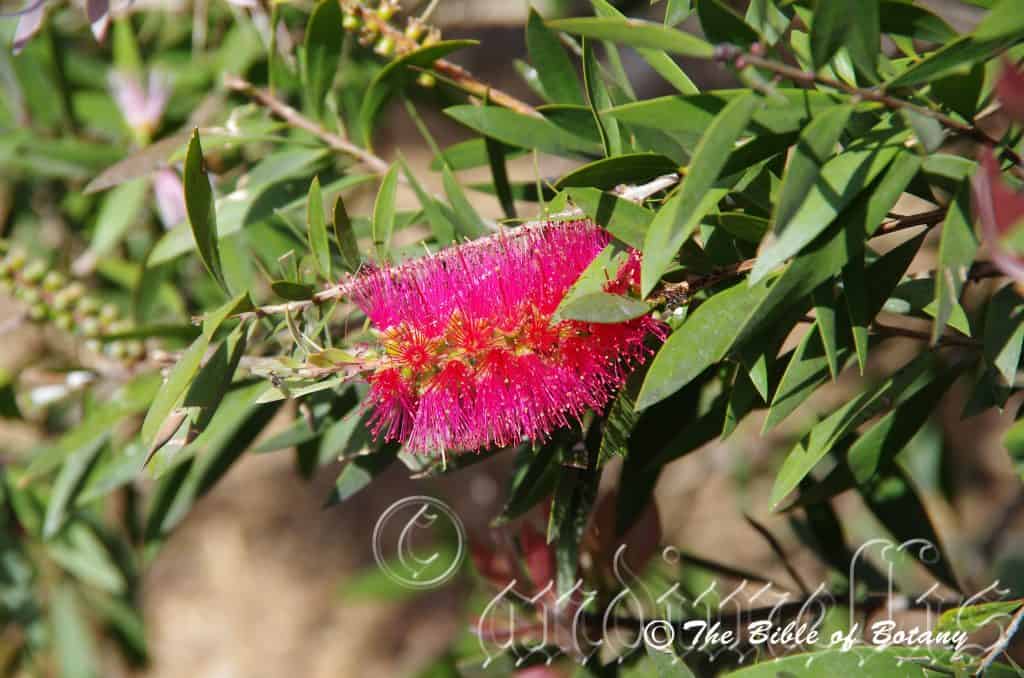
Everton Park Qld.

Mount Cootha Botanical Gardens Qld.
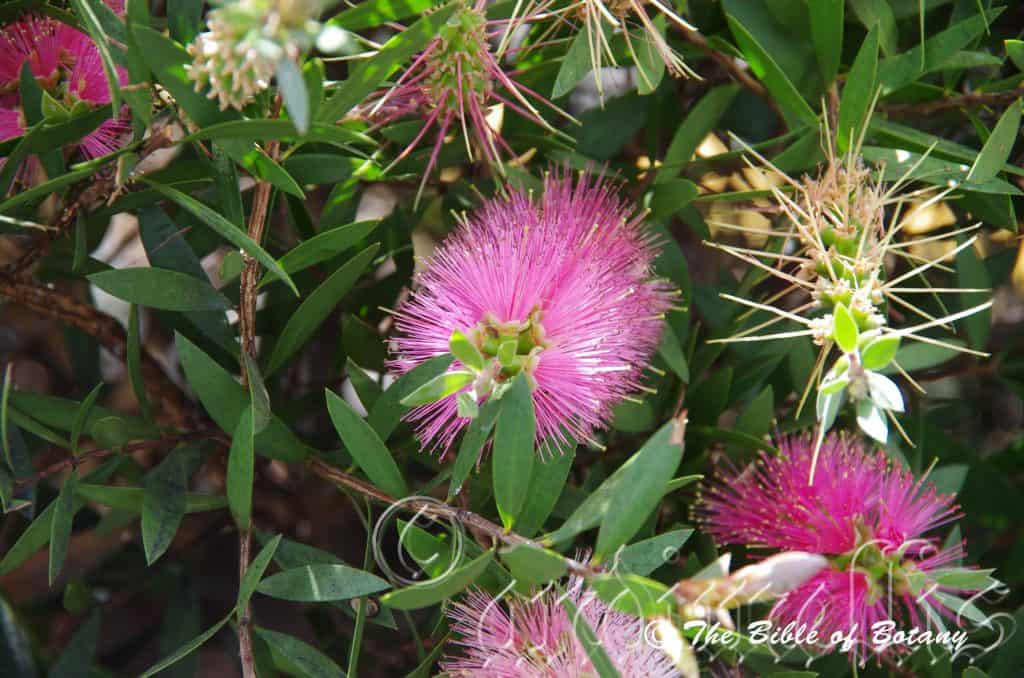
Everton Park Qld.
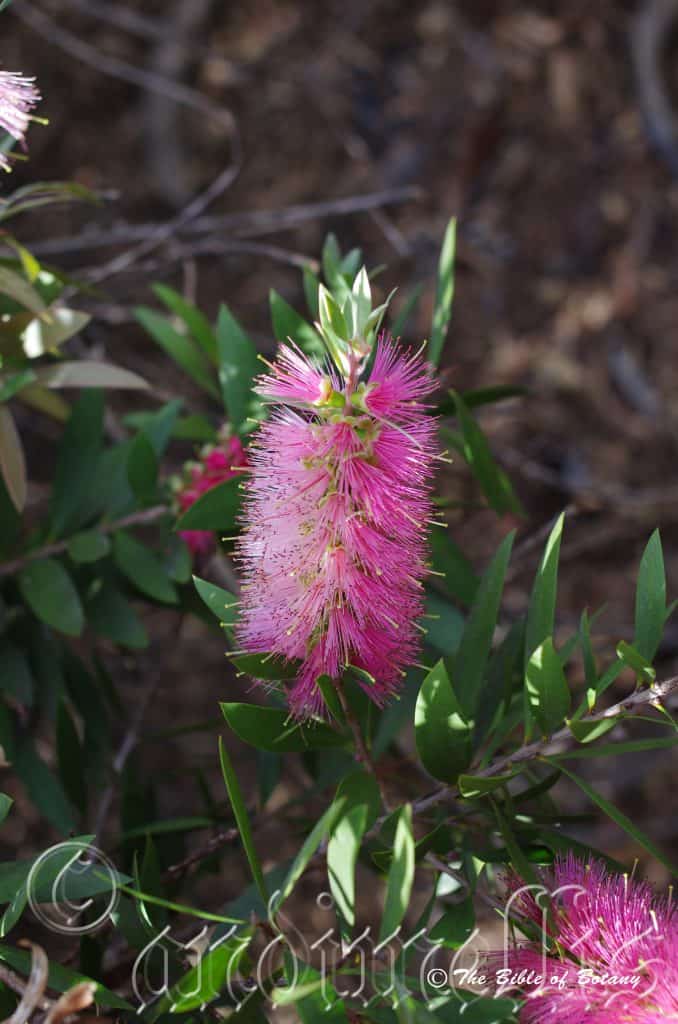
Everton Park Qld.
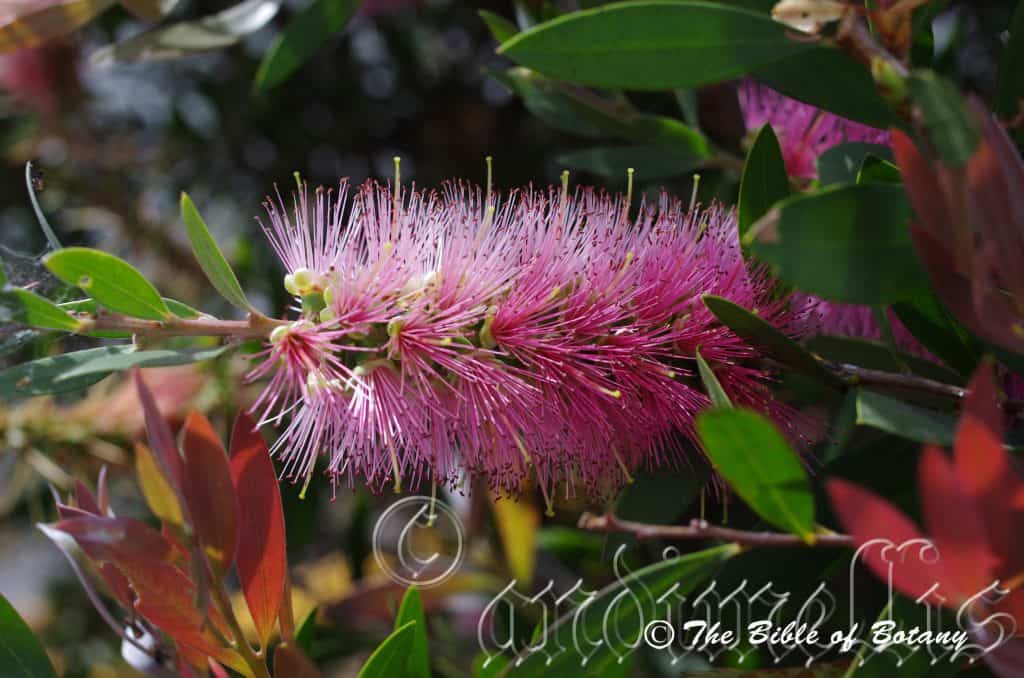
Everton Park Qld.
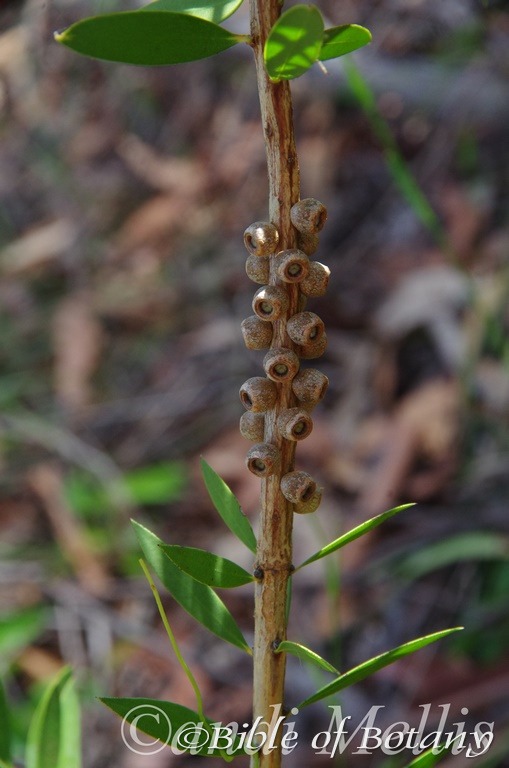
Author’s Garden The Pinnacles NSW
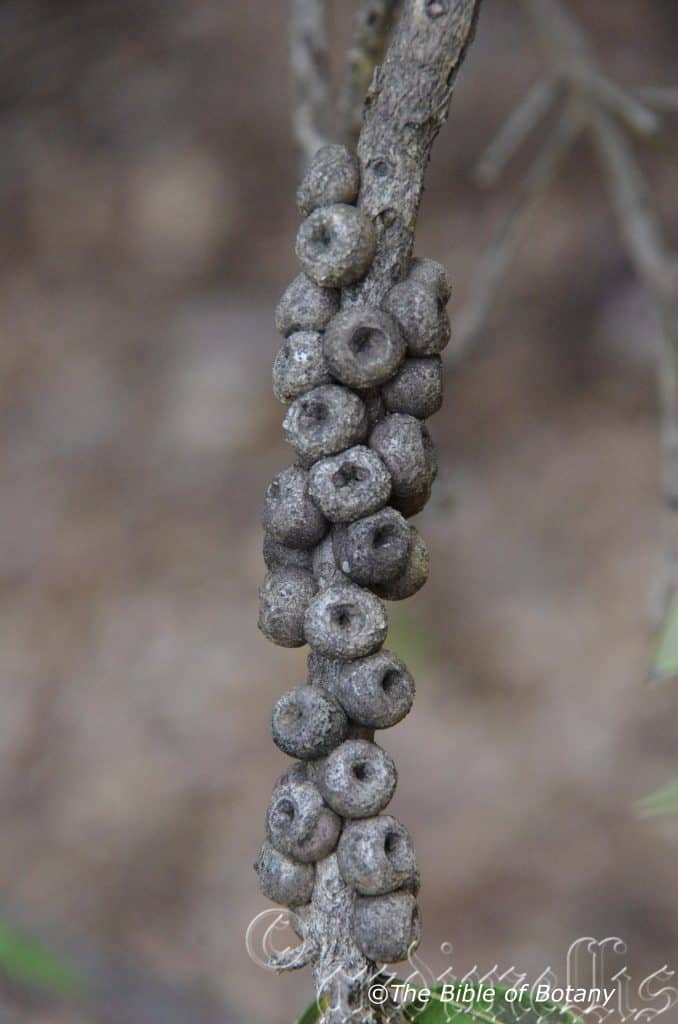
National Botanic Gardens ACT
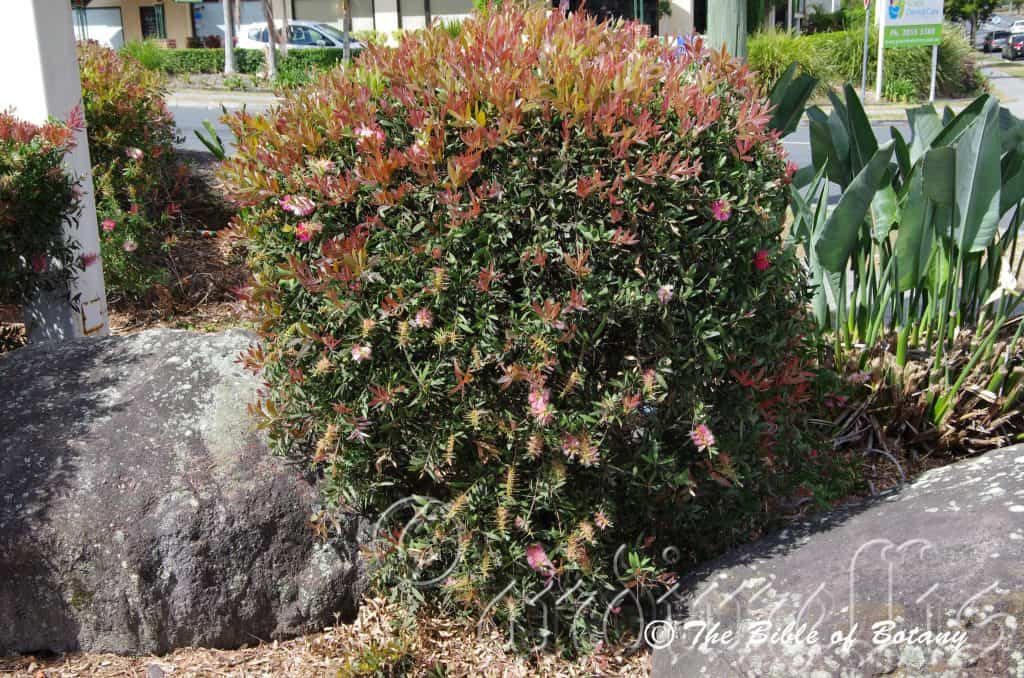
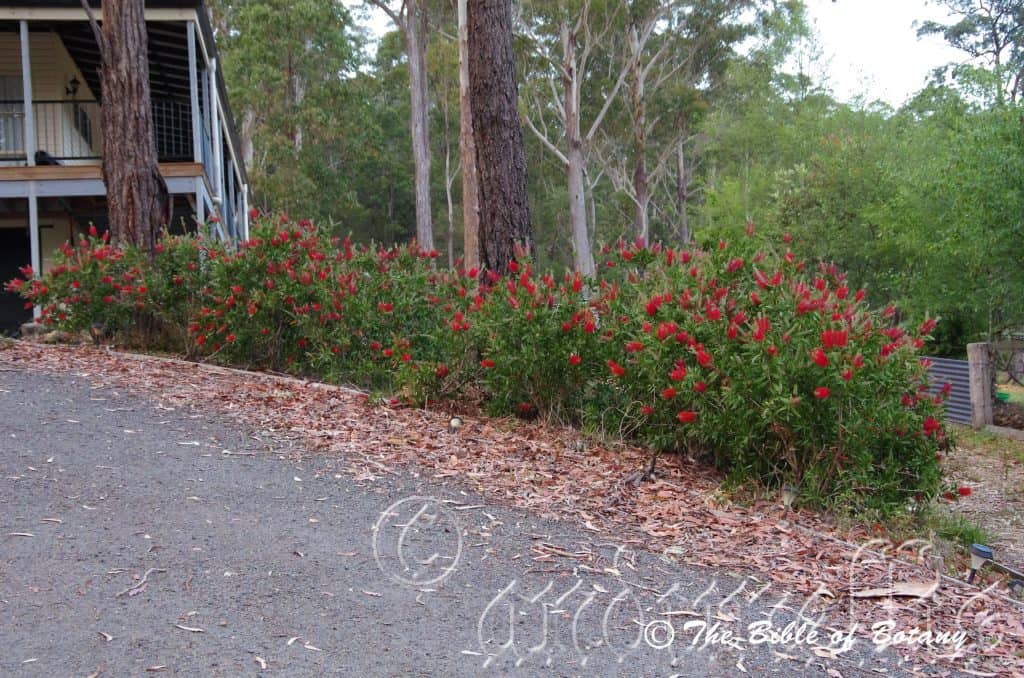
Kendall NSW

Kendall NSW
Melaleuca citrina
Classification:
Division: Eudicots
Division: Rosids
Order: Myrtales
Family: Myrtaceae
Subfamily: Myrtoideae
Tribe: Melaleuceae
Genus: From Mélas, which is Ancient Greek for black and Leukós, which is Ancient Greek for white. It refers to plants, which usually have white papery barks that are often charred by fire thus the bark is black and white.
Specie: From Citrinus, which is old Anglo-French for yellow and later Citrinus, which is Latin for Citrus. It refers to the colour or scent of lemon. (Presently still widely known as Callistemon citrinus.)
Sub species:
Common Name: Lemon Scented Bottlebrush.
Distribution:
Melaleuca citrina is found south from Ingham in far north eastern coastal Queensland to Mornington Peninsula in southern Victoria. It is mainly found on the Western Slopes, on and east of the Great Dividing Range to the coast.
https://avh.ala.org.au/occurrences/search?taxa=Melaleuca+citrina#tab_mapView
Habitat Aspect Climate:
Melaleuca citrina prefers full sun. It grows in gorges and along fresh water, creeks, streams, rivers, in swamps or coastal wallums. The altitude ranges from 20 meter ASL to 750 meters ASL.
The temperatures range from minus 4 degrees in August to 36 degrees in January.
The rainfalls range from lows of 500mm to an average of 1600mm. The rainfall is not the most important factor as they derive most of their moisture from the swamps and rivers that they inhabit.
Soil Requirements:
Melaleuca citrina prefers poor to good quality sandy loams to medium clays or creek, stream or river meander silts. The soils are usually derived from decomposed sandstone, shale, brown basalts, black basalts or alluviums including coastal sandy wallums sands. The soils pH. ranges from 6pH to 7pH. It tolerates waterlogged soils and prefers sites that suffer from seasonal inundation and flooding. Non saline soils to moderately saline soils are tolerated.
Height & Spread:
Wild Plants: 1m to 3m by 1m to 3m.
Characteristics:
Melaleuca citrina grows as a small to medium shrub with grey or deep grey-brown, hard scabrous and slightly fissured bark especially near the base. The branches are grey, scabrous and slightly spongy to the touch. The branchlets are brownish, while the newest shoots are somewhat squarish in cross section, green, soon turning reddish-brown and are glabrous to sparsely covered in fine, white, caducous hairs.
Melaleuca citrina’s alternate leaves are narrow elliptical to oblanceolate and measure 30mm to 70mm in length by 5mm to 8mm in width. The base is cuneate while the apex is short acuminate and pungent. The concolourous laminas are pale blue-green to mid blue-green, dull and glabrous. Immature leaves are pale blue-green to mid blue-green, dull and are covered in white appressed pubescent hairs. The mid vein and lateral veins are conspicuous on both the upper and lower lamina. The margins are entire, flat and slightly thickened. The petiole measures 2mm to 4mm in length. The leaves are highly aromatic to bland when crushed.
The inflorescence of Melaleuca citrina are multiple spikes born from the terminal shoots. The terminal shoots grow out before the flowers finish blooming. The rachis is glabrous or covered in white puberulent hairs and measure 60mm to 110mm in length by 40mm to 70mm in diameter. The flowers are born singularly with in each bract. There are 36 to 60 individual flowers on a spike. They measure 15mm to 20mm in diameter. The hypanthium are glabrous or covered in short white puberulent hairs. The 5 circular petals are pale green and measure 2.5mm to 3.5mm in length by 2.5mm to 4mm in width.
The scarlet red or crimson stamens are the most prominent part of the flowers. The 30 to 40 stamens are free and form a ring around the hypanthia tube. The filaments measure 19mm to 32mm in length. The anthers are a deeper base colour of the filaments and measure 0.8mm to 1mm in length.
The long, slender, scarlet red style measures 11mm to 38mm in length, while the stigma divides into 4 locules. The base of the style is surrounded by the nectaries. The pollen or arrowroot scented flowers appear from November to late December but may have the odd flower late in the seasons when the seasons are favourable.
Melaleuca citrina’s fruits are small, glabrous globular shaped capsule. The capsules measure 5mm to 8mm in length by 4mm to 7mm in diameter. The enclosed orifice measures 2mm to 4mm in diameter. The woody capsule is dull grey to deep grey. The capsules may contain hundreds of seeds and chaff. The seeds are brown, measure 0.6 to 0.8mm in length and look swollen compared to the chaff. The calyx lobes is persistent at the apex of the capsules.
Wildlife:
Melaleuca citrina supports many native bees, native flies, native beetles and butterflies when in flower. It also supports small honeyeaters which scurry over the flowers and seek protection from the bushy foliage. It also supports the larvae of the Paropsisterna beetle genus. These are beautiful small beetles with small almost slug like hairy larvae. The larvae never do much damage as they only ever appear in small numbers.
Cultivation:
Melaleuca citrina makes an excellent small dense foliage hedge or specimen shrubs in small and medium size gardens. It is suitable on all soil types and are most suitable for small, medium and large gardens close to the coast in temperate, sub tropical, tropical or arid gardens. As garden subjects they will grow from 1.5 meters to 2.5 meters in height by 1.5 meters to 2 meters in diameter. It is cold tolerant to temperatures at least as low as minus 3 degrees once established. It is very fast growing especially with a good fertilizing program and with a little moisture will grow 1 meter a year.
Melaleuca citrina has several cultivars on the market in which the flowers vary from white with yellow anthers through to pink, red, crimson, purple with deeper coloured anthers or where the anthers are white, cream or yellow. Six or more planted back from a bend will become a very strong focal point when in flower and gain a lot of attention whether you are coming or going because of the fresh clean look of the foliage even in the driest of times.
It can be regularly tip pruned if a smaller shrub is required. It responds well to pruning recovering quickly and often increasing the number of flowers in the following season. Place them in the mid ground with other large leaf ground covers and very small shrubs in front. To the rear, use fine leaf taller plants. Plants with white or yellow flowers can be used in both the fore ground and background. This will lead the viewer’s eyes directly to the array of reds and purple flowers and rusty tomentose buds and branchlets for a longer period.
Ensure that the whole plant or at least most of it is on display from most sections of the garden as the flowers are a real bonus.
When it is in flower these plants will catch your attention and the viewer will be transfixed on the display rather than watching the path. Plant them with 1 meter to 3 meter centers.
It also makes an ideal hedge along wide drive ways and fence lines in depressions where water may lie for long periods before drying out for several months. When using them as a hedge think of using plants with different coloured flowers to add interest and variation.
It makes an ideal Bonsai plant for beginners as it is easy to work and very hardy.
Propagation:
Seeds: Melaleuca citrina seeds can be sown directly into a seed raising mix. Cover the seeds with 1mm to 2mm of fine weed free mulch and keep moist. Place the tray in a warm sunny position. When the seedlings are 15mm to 20mm tall, prick them out and plant them into 20mm native tubes using a good organic mix.
When the seedlings are 70mm to 90mm tall, prick them out and plant them into 50mm native tubes using a good organic mix or plant them out into their permanent positions.
Once the seedlings reach 150mm to 200mm in height they can be planted out into their permanent position.
Cuttings: Use 100mm to 150mm long half ripened material when growing from cuttings from the present season’s growth. Take them in warmer months of the year. Remove half the leaves from the bottom section being careful not to tear the bark.
1 Prepare the cutting mix by adding one third sharp clean river sand, one third peat and one third perlite. These ingredients are sterilize,
2 Select good material from non diseased plants,
3 Select semi green stems for cuttings. Look for a stem with two or three nodes,
4 Place the cutting on a flat, hard surface, and make a clean cut down one side of the cutting at the base for 10mm with a sharp sterile knife or razor blade. – This scarification of the node will increase the chances of roots emerging from this spot. Now remove all but one or two the leaves, leaving the apex leaves in tact. If the leaves are very large in proportion to the stem, cut off the apical halves.
5 Fill a saucer with water, and place a little medium strength rooting hormone into another container like a milk bottle top. Dip the node end of the cutting into the water and then into the rooting hormone. Tap off any excess hormone,
6 Use a small dipple stick or old pencil to poke a hole into the soilless potting mix. Ensure the hole is slightly larger than the stem diameter and be careful not to wipe the rooting hormone off the cuttings base, place the cuttings in a pattern ensuring the cuttings are not touching each other,
7 I like to place the pots in Plastic bags to help maintain temperature and moisture. Place in a semi shaded place like under 50mm shade cloth.
8 When the cuttings have struck, open the bag to allow air circulation for a few days to a week,
9 Once hardened off remove the cuttings from the bag and allow to further hardening for a few more days,
10 Transplant into a good potting mix to grow on.
Fertilize using seaweed, fish emulsion or organic chicken pellets soaked in water on an alternate basis. Fertilize every two months until the plants are established then twice annually in early September or March to maintain health, vitality and better flowering.
Further Comments from Readers:
Hi reader, it seems you use The Bible of Botany a lot. That’s great as we have great pleasure in bringing it to you! It’s a little awkward for us to ask, but our first aim is to purchase land approximately 1,600 hectares to link several parcels of N.P. into one at The Pinnacles NSW Australia, but we need your help. We’re not salespeople. We’re amateur botanists who have dedicated over 30 years to saving the environment in a practical way. We depend on donations to reach our goal. If you donate just $5, the price of your coffee this Sunday, We can help to keep the planet alive in a real way and continue to bring you regular updates and features on Australian plants all in one Botanical Bible. Any support is greatly appreciated. Thank you.
In the spirit of reconciliation we acknowledge the Bundjalung, Gumbaynggirr and Yaegl and all aboriginal nations throughout Australia and their connections to land, sea and community. We pay our respect to their Elders past, present and future for the pleasures we have gained.
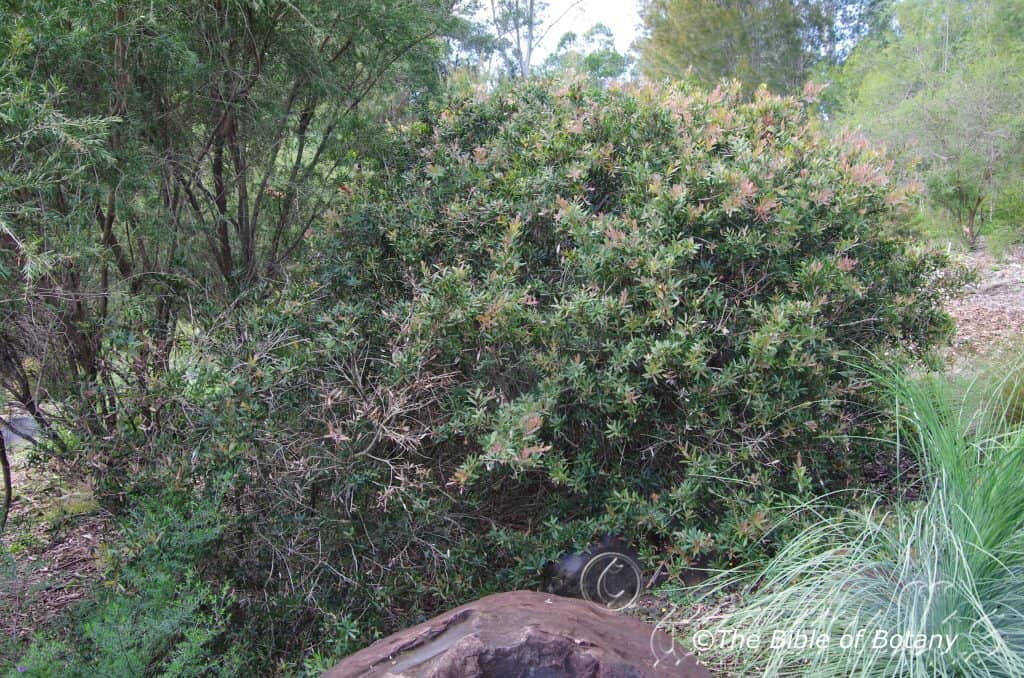
Kendall NSW
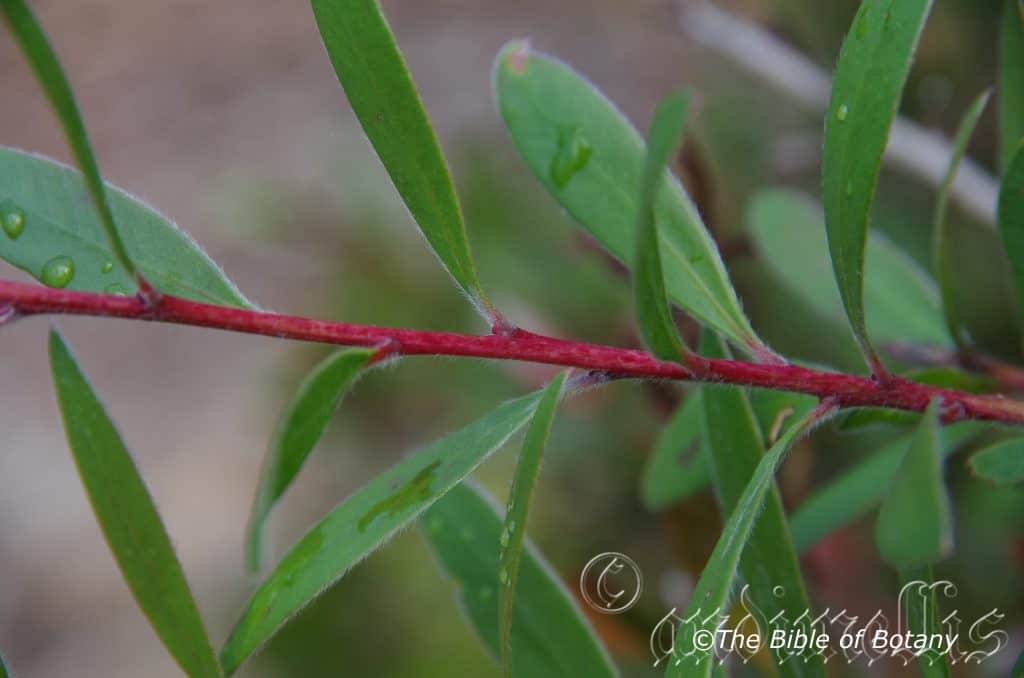
Kendall NSW

Kendall NSW
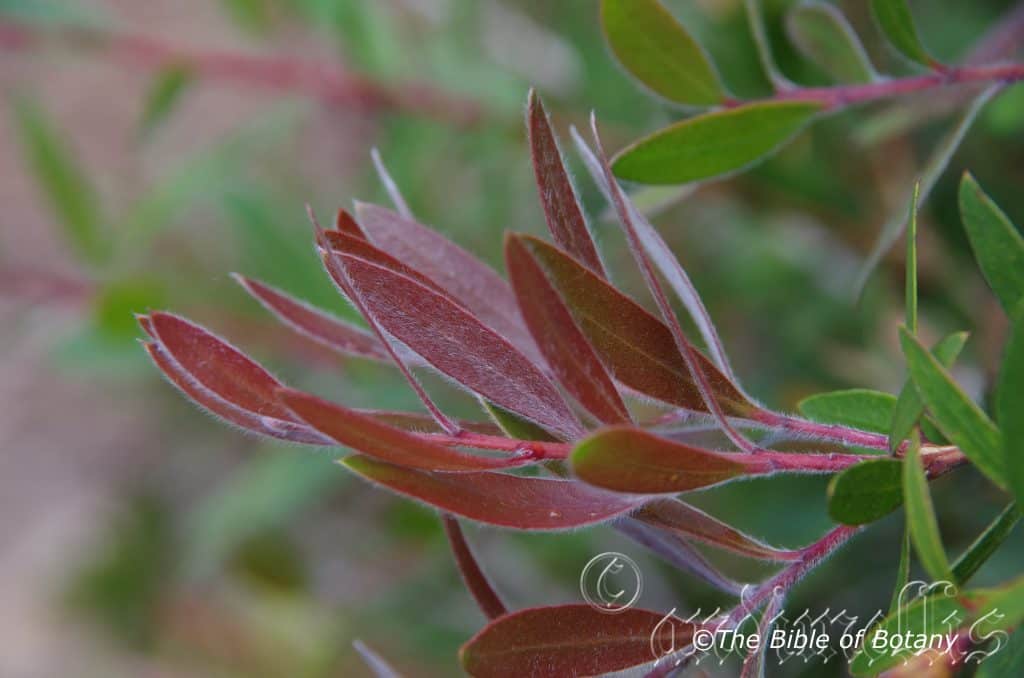
Kendall NSW
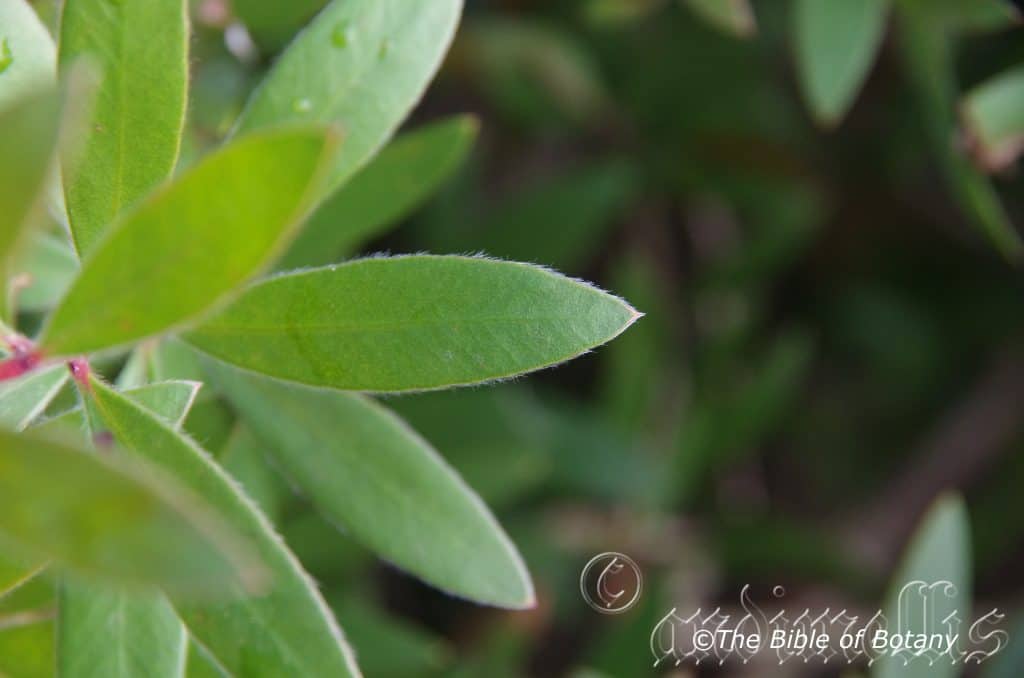
Kendall NSW

Kendall NSW
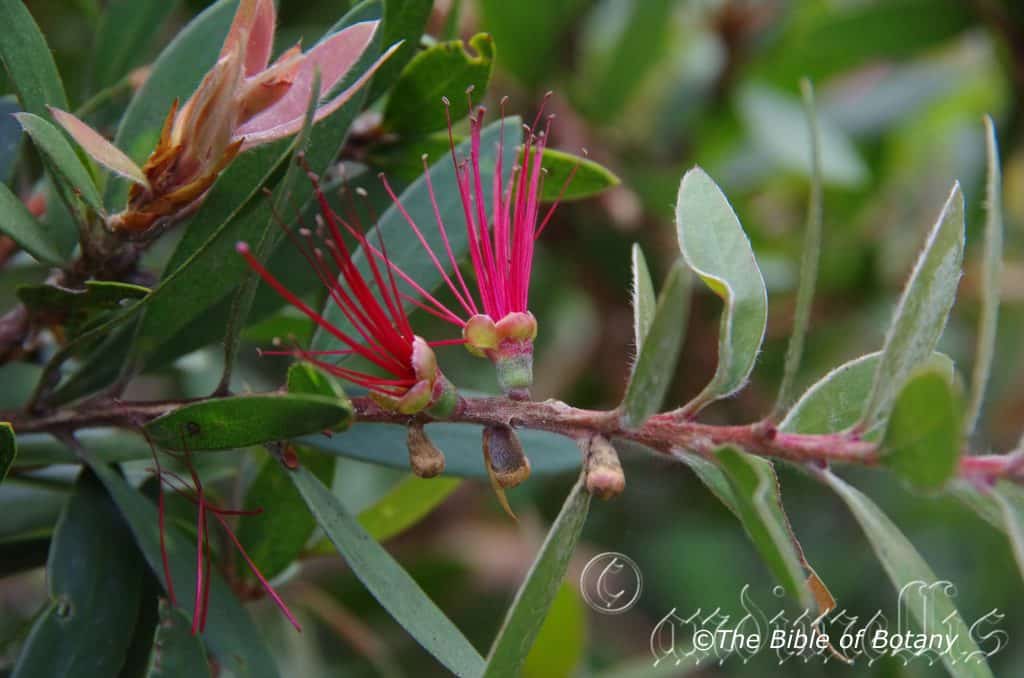
Kendall NSW
Melaleuca comboynensis
Classification:
Division: Eudicots
Division: Rosids
Order: Myrtales
Family: Myrtaceae
Subfamily: Myrtoideae
Tribe: Melaleuceae
Genus: From Mélas, which is Ancient Greek for black and Leukós, which is Ancient Greek for white. It refers to plants, which usually have white papery barks that are often charred by fire thus the bark is black and white.
Specie: From Comboyne, which is Latinized from the local Birpai Aboriginal word for a doe or female kangaroo and Anum/Ensis, which is Latin for to originate from. It refers to plants, which were first discovered on the Comboyne Plateau west of Kendall in central New South Wales. (Presently still widely known as Callistemon comboynensis.)
Sub species:
Common Name: Comboyne Bottle Brush or Cliff Bottle Brush.
Distribution:
Melaleuca comboynensis is found in a few isolated populations south from the Queensland, New South Wales border to Lansdowne to the Comboyne River in New South Wales east and on the Great Dividing Range. It is mainly found on the Great Dividing Range.
https://avh.ala.org.au/occurrences/search?taxa=Melaleuca+comboynensis#tab_mapView
Habitat:
Melaleuca comboynensis prefers full sun. It grows on rocky outcrops and crevices on cliffs, gorges especially in rills. The altitude ranges from 555 meter ASL to 750 meters ASL.
The temperatures range from minus 4 degrees in August to 36 degrees in January.
The rainfalls range from lows of 650mm to an average of 1600mm.
Soil Requirements:
Melaleuca comboynensis prefers coarse sands to medium clays. The soils are usually derived from decomposed sandstones, black basalts or granites. The soils pH. ranges from 4.5pH to 6pH. It tolerates waterlogged soils and prefers sites that suffer from seasonal inundation and flooding. Non saline soils to moderately saline soils are tolerated.
Height & Spread:
Wild Plants: 1m to 2m by 1m to 2m.
Characteristics:
Melaleuca comboynensis grows as a medium spreading shrub with grey to deep grey, hard scabrous, slightly fissured bark near the base. The branches are grey and scabrous. The branchlets are pale grey to deep grey, while the newest shoots are green and densely covered in white pannate hairs.
Melaleuca Comboyensis’s alternate leaves are narrow oblanceolate or rarely narrow elliptical and measure 50mm to 75mm in length by 8mm to 20mm in width at the midway point. The base is tapering while the apex is acute to acute-mucronate with a short pungent tip. The concolourous laminas are pale blue-green to mid blue-green, dull, glabrous and coriaceous. The new growth is pale pink to salmon pink, dull and is densely covered in white pannate hairs. The mid veins are conspicuous from both laminas. The margins are entire. Oil glands are visible on the laminas. The petiole measures 2mm to 5mm in length.
The inflorescence of Melaleuca comboynensis is a single spike born from the terminal shoots. The terminal shoots grow out before the flowers finish blooming and often grow another flower spike 20mm or 30mm further on prior to the complete anthesis of the first flower. The rachis is covered in white pulverulent hairs and measures 60mm to 80mm in length by 60mm to 70mm in diameter. The flowers are born singularly with in each bract. There are 36 to 60 individual flowers on a spike. They measure 10mm to 15mm in diameter. The 5 orbicular petals are pale green to pale pink and measure 0.8mm to 1mm in length by 1mm to 1.2mm in width. It is persistent while the stamens fully develop.
The crimson to deep crimson-purple stamens are the most prominent part of the flowers. The 26 to 36 deep stamens are free around the edge of the hypanthium tube. The filaments measure 25mm to 28mm in length. The anthers are a deeper base colour of the filaments with cream or white pollen and measure 0.8mm to 1mm in length.
The long, slender, deep crimson to deep crimson-purple style measures 28mm to 33mm in length. The white stigma is erect. The base of the style is surrounded by the nectaries. The arrowroot scented flowers appear from March to June but this can be irregular and extend well into late spring or early summer in favourable years.
Melaleuca Comboyensis’s fruit is a small, glabrous cup shaped capsule. The capsules measure 4.5mm to 6.5mm in length by 4.5mm to 7mm in diameter. The enclosed orifice measures 2mm in diameter. The woody capsule is dull grey to deep grey. The capsules may contain hundreds of seeds and chaff. The seeds are deep brown, measure 0.6 to 0.8mm in length and look swollen compared to the chaff.
Wildlife:
Melaleuca comboynensis supports many native bees, native flies, native beetles and butterflies when in flower. It also supports small honeyeaters and the Eastern spinebill which scurry over the flowers and seek protection from the bushy foliage.
Cultivation:
Melaleuca comboynensis makes an excellent medium to large open to dense foliage hedge or specimen shrubs. It is suitable on all soil types and are most suitable for medium and large gardens close to the coast or high in the mountains in warm temperate, sub tropical, tropical or semi-arid gardens. As garden subjects they will grow from 1 meter to 1.5 meters in height by 2.5 meters to 5 meters in diameter. It is cold tolerant to temperatures at least as low as minus 4 degrees once established. It is very fast growing especially with a good fertilizing program and with a little moisture will grow 1 meter a year.
Try using them in an informal or formal manner in front of single story buildings. This will aid in breaking up rigid lines and soften the structures overall appearance. At the same time they can be used to highlight the contrasts between the two. On taller buildings this can be done by planting them between taller narrow type trees with finer leaves. Plant them together with unequal gaps and free flowing curves to accentuate height and depth. The tall golden form of Melaleuca bracteata is particularly good where the buildings have a dark exterior and a strong contrast is required between the plants.
Two planted back from a bend will become a very strong focal point when in flower in smaller bush gardens or more in larger gardens will gain a lot of attention whether you are coming or going because of the fresh clean look of the foliage even in the driest of times.
It can be regularly tip pruned if a smaller shrub is required. They respond well to pruning recovering quickly and often increasing the number of flowers in the following season. Place them in the mid ground with other large leaf ground covers and very small shrubs in front. To the rear, use fine leaf tall narrower growing plants. Plants with white, pink or yellow flowers can be used in both the fore ground and background. This will lead the viewer’s eyes directly to the array of crimson and purple flowers and pink to purple new growth and branchlets for a longer period.
To ensure that the whole plant is on display from most sections of the garden place one plant in the center of a garden bed and surround it with smaller lime green foliage plants with cream, white, lilac or mauve flowers for a really special affect that will catch everyone’s attention.
Plant them with 3 meter to 5 meter centers or scatter them through the bush for patches of crimson over long periods.
It also makes an ideal hedge along wide drive ways and fence lines in depressions or slopes where water may lie for long periods before drying out for several months.
It makes an ideal Bonsai plant for beginners because it is easy to work and very hardy.
Propagation:
Seeds: Melaleuca comboynensis seeds can be sown directly into a seed raising mix. Cover the seeds with 1mm to 2mm of fine weed free mulch and keep moist. Place the tray in a warm sunny position. When the seedlings are 15mm to 20mm tall, prick them out and plant them into 20mm native tubes using a good organic mix.
When the seedlings are 70mm to 90mm tall, prick them out and plant them into 50mm native tubes using a good organic mix or plant them out into their permanent positions.
Once the seedlings reach 150mm to 200mm in height they can be planted out into their permanent position.
Cuttings: Cuttings must be used if flower colour or flowering in the following season is required. Use 50mm to 60mm long tip cuttings or half ripened material when growing from cuttings from the present season’s growth. Take them in mid-autumn or early spring. Remove half the leaves from the bottom section being careful not to tear the bark. Take a 10mm slice off the bark from the bottom of the cutting on one side. Using a medium rooting hormone, dip the cutting in and place it in a moist sterile seed raising mix. When the cuttings have obviously struck and have developed good roots treat them the same as you would for seedlings.
Fertilize using seaweed, fish emulsion or organic chicken pellets soaked in water on an alternate basis. Fertilize every two months until the plants are established then twice annually in early September or March to maintain health, vitality and better flowering.
Further Comments from Readers:
Hi reader, it seems you use The Bible of Botany a lot. That’s great as we have great pleasure in bringing it to you! It’s a little awkward for us to ask, but our first aim is to purchase land approximately 1,600 hectares to link several parcels of N.P. into one at The Pinnacles NSW Australia, but we need your help. We’re not salespeople. We’re amateur botanists who have dedicated over 30 years to saving the environment in a practical way. We depend on donations to reach our goal. If you donate just $5, the price of your coffee this Sunday, We can help to keep the planet alive in a real way and continue to bring you regular updates and features on Australian plants all in one Botanical Bible. Any support is greatly appreciated. Thank you.
In the spirit of reconciliation we acknowledge the Bundjalung, Gumbaynggirr and Yaegl and all aboriginal nations throughout Australia and their connections to land, sea and community. We pay our respect to their Elders past, present and future for the pleasures we have gained.

Clarence River NSW
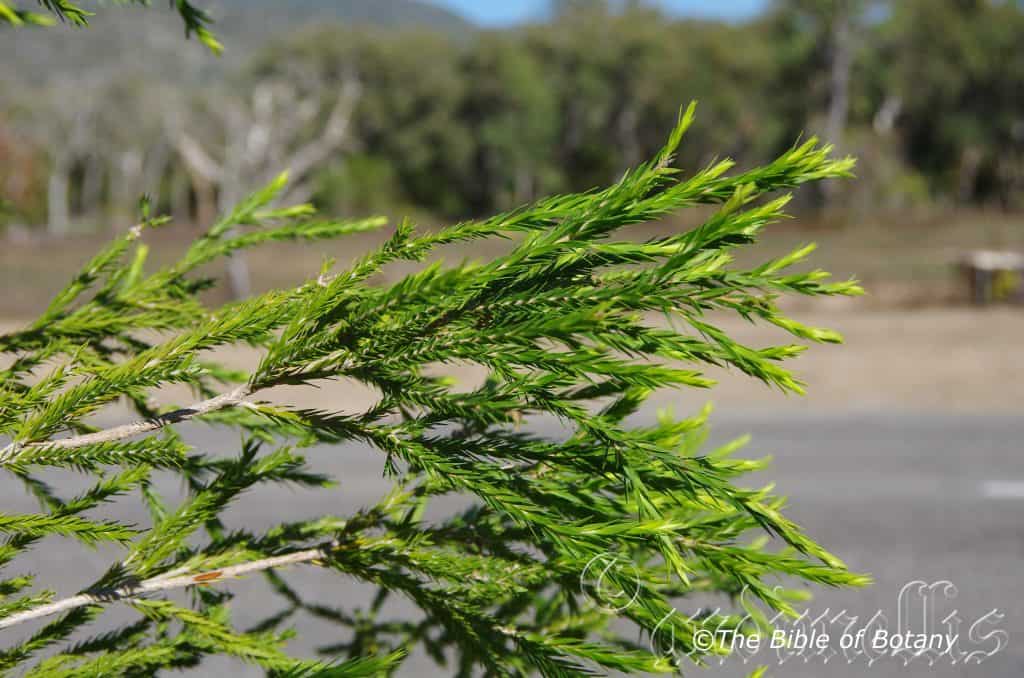
Clarence River NSW
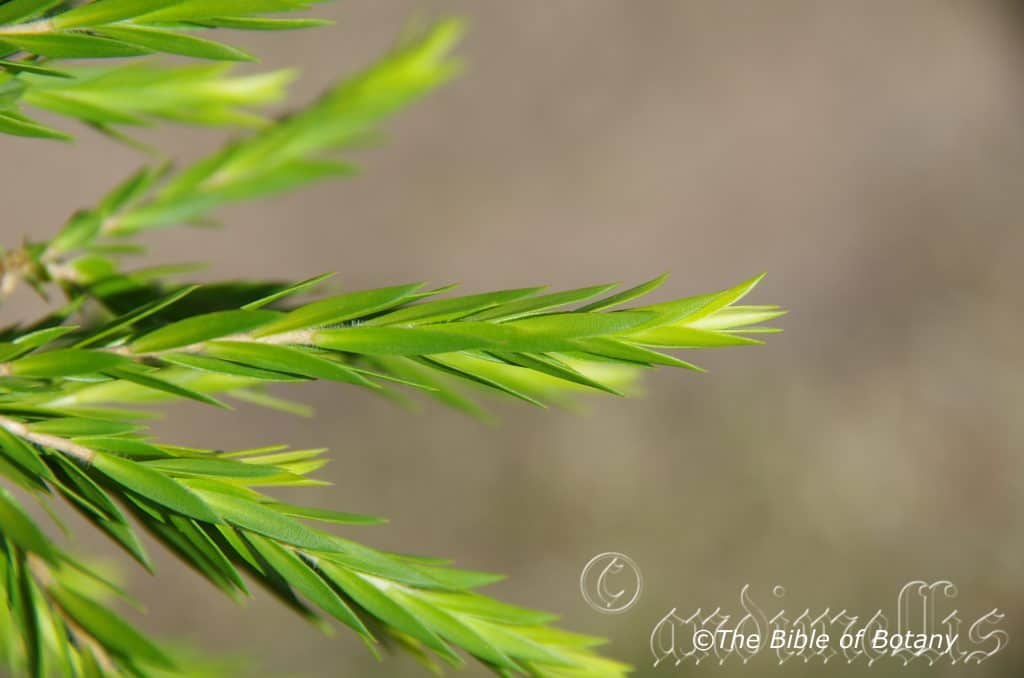
Clarence River NSW
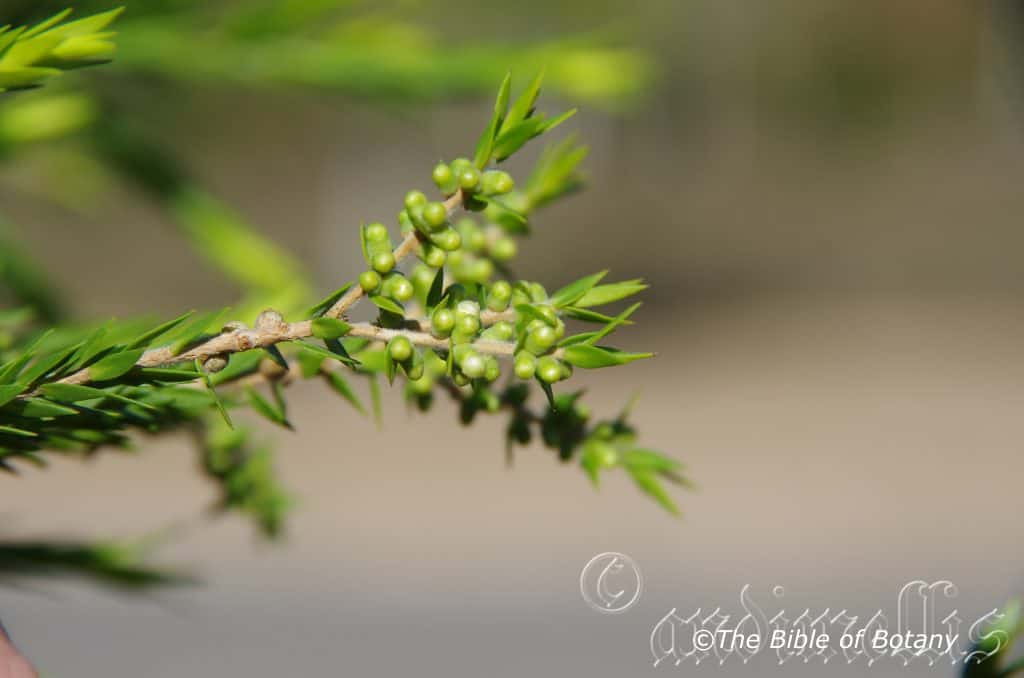
Clarence River NSW
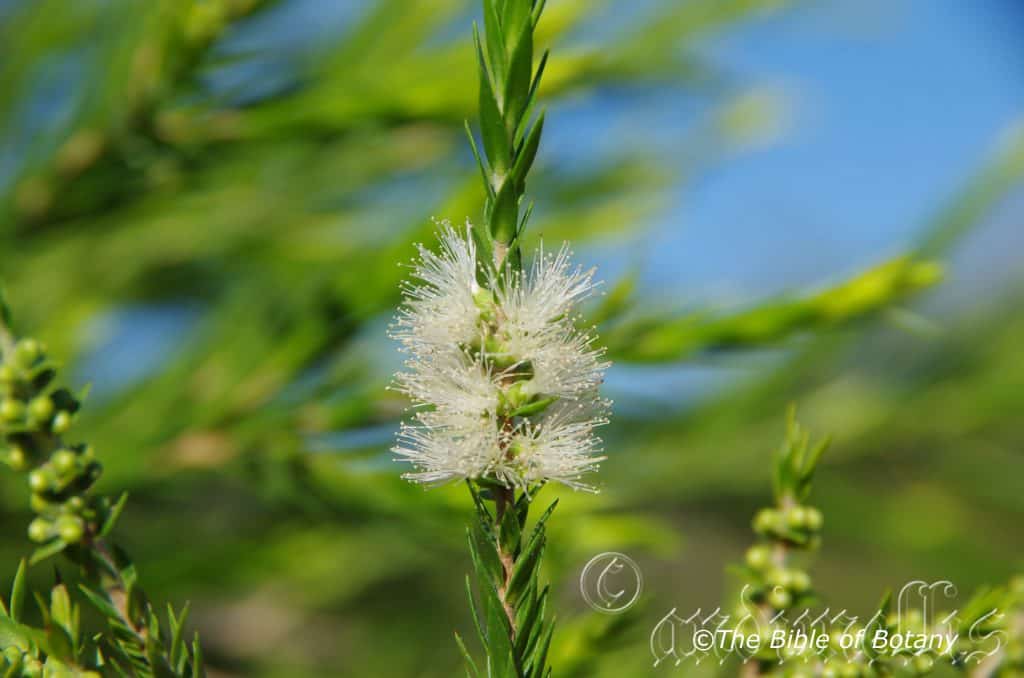
Clarence River NSW
Melaleuca decora
Classification:
Division: Eudicots
Division: Rosids
Order: Myrtales
Family: Myrtaceae
Subfamily: Myrtoideae
Tribe: Melaleuceae
Genus: From Mélas, which is Ancient Greek for black and Leukós, which is Ancient Greek for white. It refers to plants, which usually have white papery barks that are often charred by fire thus the bark is black and white.
Specie: From Decora, which is Latinized from the French word decor to be decorative. It refers to plants, which have an overall decorative appeal.
Sub species:
Common Name:
Distribution:
Melaleuca decora is restricted to 2 disjunct localities west of Rockhampton on the Fitzroy River in central coastal Queensland south to the Tweed River and Woodenbong to Kyogle in north eastern New South Wales skirting the Lamington National Park.
It is also found south from Lake Cathie to Culburra Beach near Shoalhaven in New South Wales. The northern population is found on the Western Slopes and on the Great Dividing Range while the southern population is found on and east the Great Dividing Range to the coast.
https://avh.ala.org.au/occurrences/search?taxa=Melaleuca+decora#tab_mapView
Habitat Aspect Climate:
Melaleuca decora prefers full sun to light dappled shade. It usually grows in swamps coastal wallums or moist woodland heaths. The altitude ranges from 2 meter ASL to 828 meters ASL.
The temperatures range from minus 2 degree in August to 32 degrees in January.
The rainfalls range from lows of 680mm to an average of 2000mm.
Rainfall is not as important as the terrain as the plants are always associated with swamps or marshy ground.
Soil Requirements:
Melaleuca decora prefers poor to better quality sandy loams to medium clays or creek, stream and river meander silts. The soils are usually derived from decomposed fine sandstone shale or at times basalts, alluvial deposits or accumulated peaty beach sands. The soils pH. ranges from 4.5pH to 7pH. It tolerates waterlogged soils and prefers sites that suffer from seasonal inundation and flooding. Non saline soils to extremely saline soils are tolerated as are salt laden winds.
Height & Spread:
Wild Plants: 3m to 7m by 2m to 5m.
Characteristics:
Melaleuca decora’s bark on the trunk and main stems is cream. When the thick fibrous papery bark is exposed the under lying bark is pale creamy yellow to creamy pink with flashes of creamy orange. The thick paper bark peels and splits as the trunk expands giving rise to many different shapes and patterns thus its Latin name resembling decorations. It is corky and spongy to touch. The bark on the branches is cream and peels off regularly throughout the year like the trunk but to a lesser extent again revealing the pale creamy yellow to creamy pink with flashes of creamy orange. The branchlets are white, pale cream to pale grey with the bark being tightly wrapped around the stems from an early age, while the newest shoots are pink to pale red-brown and are glabrous. The branches have an upright habit and the plants vary considerably from having an open habit or densely foliaged as a tree to being very bushy as a shrub. Branches and branchlets are rather rigid.
Melaleuca decora’s alternate linear to narrow elliptical leaves measure 8mm to 18mm in length by 1mm to 3mm in width. The base is cuneate while the apex is acute. The concolourous laminas are deep green to deep sea-green and glabrous. Immature leaves are pale lime-green and glabrous. The main vein and lateral veins are not prominent on either lamina. The petioles measure 1mm to 1.5mm in length. The leaves are not aromatic when crushed.
The inflorescence of Melaleuca decora has multiple spikes born from the terminals. The flower terminal shoots begin to grow out before the last of the stamens bloom. The rachis is covered in short white puberulent hairs and measures 30mm to 90mm long by 20mm to 25mm in diameter. The flowers are born signally or in threes from each bract. There are 8 to 30 individual flowers along the spike in the globular head. They measure 6mm to 8mm in diameter. The 5 broad ovate to broad elliptical petals are red-brown and measure 2mm to 2.5mm in length by 3mm to 3.5mm in width. It is persistent while the stamens fully developed.
The stamens are the most prominent part of the flowers. There are 20 to 40 white stamens are in each of the 5 claws. The claws measure 2mm to 3.5mm in length while the filaments measure 7mm to 8mm in length. The anthers and pollen are white.
The long, slender, white puberulent style measures 7mm to 8mm in length, while the stigma has 5 locules. The base of the style is surrounded by the nectaries. The arrowroot to strongly honey scented flowers, appear from early late November to late early February.
Melaleuca decora’s fruit is a sessile, cupped capsule. The capsules measure 3mm to 3mm in length by 2.5mm to 3mm in diameter. The orifice is only slightly enclosed and measures 1.5mm to 2.5mm in diameter. The coriaceous capsule is dull pale grey to dull grey and resinous. The seeds are rusty-brown and are longer and thicker than the chaff. The calyx lobes are not persistent on the hypanthia.
Wildlife:
Melaleuca decora supports myriads of native bees, native flies, native beetles and butterflies when in flower. It is one of the best Melaleuca species for attracting the many beautiful beneficial insects that coexist in our gardens.
It also supports small honeyeaters which scurry over the flowers and seek protection amongst the bushy foliage.
The shrubs are very popular with the red headed finch as a nesting shrub.
Cultivation:
Melaleuca decora is a beautiful upright bushy shrub for native gardens or a magnificent small tree with spectacular bark which gives dappled light. It is suitable on all types of soils from sandy loams to heavy clays and are most suitable for small, medium and large gardens close to the coast in warm temperate, sub tropical gardens or semi-arid gardens. As garden subjects they will grow from 3.5 meters to 4 meters in height by 2 meter to 3.5 meters wide as a shrub or 6 meters to 8 meters tall by 4 meters to 5 meters in diameter as a small tree when grown in the open. It is cold tolerant to temperatures to minus 3 degrees once established but are very slow to establish themselves and will suffer some tip burning and discolouration of the foliage in temperatures below this even when established. They will commence flowering from an early age even from seed. I have seen well grown shrubs with good flowers at only 4 and 5 years of age.
It is very fast growing especially with a good fertilizing program and with a plenty of moisture growing more than 1 meter a year. To avoid stress and increase flowering if that is possible the following season, give the plants a double dose of our recommended fertilizer following flowering and a good deep soaking mid-way through the dry season if good rains have not fallen or the sub soil becomes dry. This will prevent further stress and hold them over for several more months.
They can be used for light dappled shade when grown as a small tree. It is an excellent tree for areas that have drainage problems on light clay soils to heavy clay soils or on sandy soils where there is a seasonal or long term problems with the water tables coming to the surface or water lies for prolonged periods. When planting the shrubs in a heath scene scatter them using at least one in the foreground so the flowers can be fully enjoyed.
Try using them in an informal or formal manner in front of the house. Placed in from the corner they will breaking up rigid lines and soften the structures overall appearance. At the same time they can be used to highlight the contrasts between the two. On high set homes this can be achieved by planting 1 as a tree with 2 to 5 shrubs like Melaleuca pachyphyllus red flowering forms, Melaleuca pearsonii or Melaleuca pungens mixed together near the base of the trees. Use only small shrubs or the magnificently decorative bark will be lost amongst the foliage of taller shrubs.
Plant them together with unequal gaps and free flowing curves to accentuate height and depth in front of large factories can really bring a park like scenario, peace and serenity to the work place. Use wider spacing where the building in the background is seen as dappled specks will soften it and where it is planted closer together will give a bolder contrast between the two. The dwarf golden form of Melaleuca bracteata is particularly good where the buildings have a dark exterior and a strong contrast is required between the plants for most of the year or Melaleuca citrina can be used where a bold flowering contrast is warranted for many months of the year. The red flowers of citrinus during spring and summer will complement the cream to yellow flowering. Coupled with the thick white to pale grey bark protruding from the large deep green leaves of Melaleuca citrinus will give a strong contrast throughout the year.
For a bush garden start with Melaleuca decora as your tree and use Melaleuca pachyphyllus red flowering forms, Melaleuca pearsonii or Melaleuca pungens or other small red flowering with large leaves as the understory for a larger style wallum heath setting. These four plants will give a great contrast in colour and leaf shape. Scatter plant the area with other prostrate and vertical leaf plants in between to cover the ground in a mass of contrasting foliages. The flower colours will not be important and will be a fantastic bonus to be enjoyed for years to come.
A minimum of 200 square meters would be required for a wallum setting. Bog gardens can be made with a minimum of 6 square meters plus the area for a pond. A large area with sandy clay to medium clay base can be used. If the soil is heavy clay then add some course sand to the whole area and turn it over to a depth of 300mm. The sand may sound like an expensive additive but will be worth it in the long term. Now taper the sides up so that the edges are about 100mm to 150mm above the center section. Ensure that there is a drainage point on the lower side of the plain so that when the water fills up it will flow out and away along the natural drainage line. Doing this will act like a natural wallum where water will collect in times of rain below the surface to a depth of 100mm to 150mm. Similar to a what occurs naturally in a small shallow dam. This will save water and watering. Mulches can be used safely on the surface.
If a pond is wanted they can be made inexpensively by preforming the earth below from a shallow 150mm to 400mm in depth with your desired shape.
Now pack the earth down on the bottom and the sides. Make sure there are no sharp objects like stones or sticks poking through. Place good quality thick black plastic down along the bottom and up the sides making sure that the plastic sits flat and up the sides over hanging the top by at least 300mm.lay a second and if necessary a third sheet over the top in the same manner. Place a pipe at the low spot so that rain water will drain out into your bog garden or wallum. Make sure that the pipe is above the level of the wallum ground and it is large enough to drain the water.
5 square meters needs a 32mm water pipe.
12 square meters will need a 50mm water pipe.
50 square meter pond will need 100mm pipe.
Fill the pond with water.
Place rocks around the edge on the black plastic.
Plant the trees and shrubs.
Cover the surrounding ground with your favourite mulch.
It can be regularly tip pruned if a tall hedge is required. This can be maintained with regular pruning in the early years and planting closer together with spacing of 2.5 meters. It respond very well to tip pruning, recovering quickly and increasing the number of terminal points for flowers in the following season.
Place 3 or 4 of them off center of a large rockery with other large or finer leaf ground covers and very small shrubs in the front. Plants with white or yellow flowers can be used where the pink flowering forms are used. Use pink, red or purple flowers in fore ground and background. This will lead the viewer’s eyes directly to the array of vivid pink and purple flowers and the beautiful deep pink to salmon coloured leaves on the new growth and the pendulous branchlets for a longer period.
Ensure that the whole plant is on display from most sections of the garden as the bark is both very attractive.
When mass or group planting Melaleuca decora, use curves and irregular patterns in the garden beds so they can be viewed from different angles around the garden. There greatest potential in the garden is in attracting small and medium size honeyeaters and their prolonged flowering season.
Propagation:
Seeds: Melaleuca decora seeds can be sown directly into a seed raising mix. Do not cover the seeds. Press them into the mix. Place the tray in a warm sunny position. When the seedlings are 15mm to 20mm tall, prick them out and plant them into 20mm native tubes using a good organic mix.
When the seedlings are 70mm to 90mm tall, prick them out and plant them into 50mm native tubes using a good organic mix or plant them out into their permanent positions.
Once the seedlings reach 150mm to 200mm in height they can be planted out into their permanent position.
Cuttings: Use 100mm to 150mm long half ripened material when growing from cuttings from the present season’s growth. Take them in warmer months of the year. Remove half the leaves from the bottom section being careful not to tear the bark.
1 Prepare the cutting mix by adding one third sharp clean river sand, one third peat and one third perlite. These ingredients are sterilize,
2 Select good material from non diseased plants,
3 Select semi green stems for cuttings. Look for a stem with two or three nodes,
4 Place the cutting on a flat, hard surface, and make a clean cut down one side of the cutting at the base for 10mm with a sharp sterile knife or razor blade. – This scarification of the node will increase the chances of roots emerging from this spot. Now remove all but one or two the leaves, leaving the apex leaves in tact. If the leaves are very large in proportion to the stem, cut off the apical halves.
5 Fill a saucer with water, and place a little medium strength rooting hormone into another container like a milk bottle top. Dip the node end of the cutting into the water and then into the rooting hormone. Tap off any excess hormone,
6 Use a small dipple stick or old pencil to poke a hole into the soilless potting mix. Ensure the hole is slightly larger than the stem diameter and be careful not to wipe the rooting hormone off the cuttings base, place the cuttings in a pattern ensuring the cuttings are not touching each other,
7 I like to place the pots in Plastic bags to help maintain temperature and moisture. Place in a semi shaded place like under 50mm shade cloth.
8 When the cuttings have struck, open the bag to allow air circulation for a few days to a week,
9 Once hardened off remove the cuttings from the bag and allow to further hardening for a few more days,
10 Transplant into a good potting mix to grow on.
Fertilize using seaweed, fish emulsion or organic chicken pellets soaked in water on an alternate basis. Fertilize every two months until the plants are established then twice annually in early September or March to maintain health, vitality and better flowering.
Further Comments from Readers:
Hi reader, it seems you use The Bible of Botany a lot. That’s great as we have great pleasure in bringing it to you! It’s a little awkward for us to ask, but our first aim is to purchase land approximately 1,600 hectares to link several parcels of N.P. into one at The Pinnacles NSW Australia, but we need your help. We’re not salespeople. We’re amateur botanists who have dedicated over 30 years to saving the environment in a practical way. We depend on donations to reach our goal. If you donate just $5, the price of your coffee this Sunday, We can help to keep the planet alive in a real way and continue to bring you regular updates and features on Australian plants all in one Botanical Bible. Any support is greatly appreciated. Thank you.
In the spirit of reconciliation we acknowledge the Bundjalung, Gumbaynggirr and Yaegl and all aboriginal nations throughout Australia and their connections to land, sea and community. We pay our respect to their Elders past, present and future for the pleasures we have gained.